Teaching Reflections: Year 5 (2016-2017)
This blog post contains Amazon affiliate links. As an Amazon Associate, I earn a small commission from qualifying purchases.

August 9, 2016 – Cabinet Organizing
Today turned into a pretty productive day.
I read Smith and Stein’s 5 Practices for Orchestrating Productive Mathematics Discussions while waiting to have the alternator changed on our car.

According to my Amazon account, I actually purchased this book back in May of 2014! It’s so sad that I’m just not getting around to reading it because it was an excellent and convicting read. This book ties in so well with my favorite read of the summer, Designing Groupwork .
Designing Groupwork covers what makes a great task and how to set up groups in a productive manner. 5 Practices, on the other hand, addresses how to carry out a task in the math classroom from start to finish. I’m definitely guilty of not fully thinking through a task before I use it in my classroom. This book opened my eyes to the many opportunities I squander when I don’t pre-plan exactly what I want my students to get out of a lesson and how I will get them there through their own mathematical discussions. I know I’ll definitely be pulling it out as a reference as I start to plan group tasks for throughout the upcoming year.
After getting our car back, Shaun and I did some back-to-school shopping. I needed to pick up some new scissors for my classroom from Dollar Tree. And, of course, we couldn’t leave Dollar Tree with *just* scissors.
We spent most of the afternoon at school in our respective classrooms. Though, I did rope Shaun into helping me tame the mess of cords by my desk. I wish we’d taken before and after pictures. It was BAD.
One task I did today was to label all of the tubs in my storage cabinet. I’ve done this before, but I’ve changed what was in the tubs a million times since then. Only about half of the tubs were still labeled, and I wasn’t even sure I still had that color of paper I had used for the labels. I decided a new classroom meant it was time to go through and reorganize each tub and label it properly. I chose to make my new labels out of plain white copy paper to make it easier to add more labels in the future without having to worry about matching up the colors.
Here’s my lovely black cabinet rocking Sentence Starter posters and Pythagorean Triple posters. I think I’m going to finally have to break down and reprint my 11, 60, 61 triple. The laminator decided to curl it up, and I’ve been trying to live with it. I think it’s finally getting to me, though.
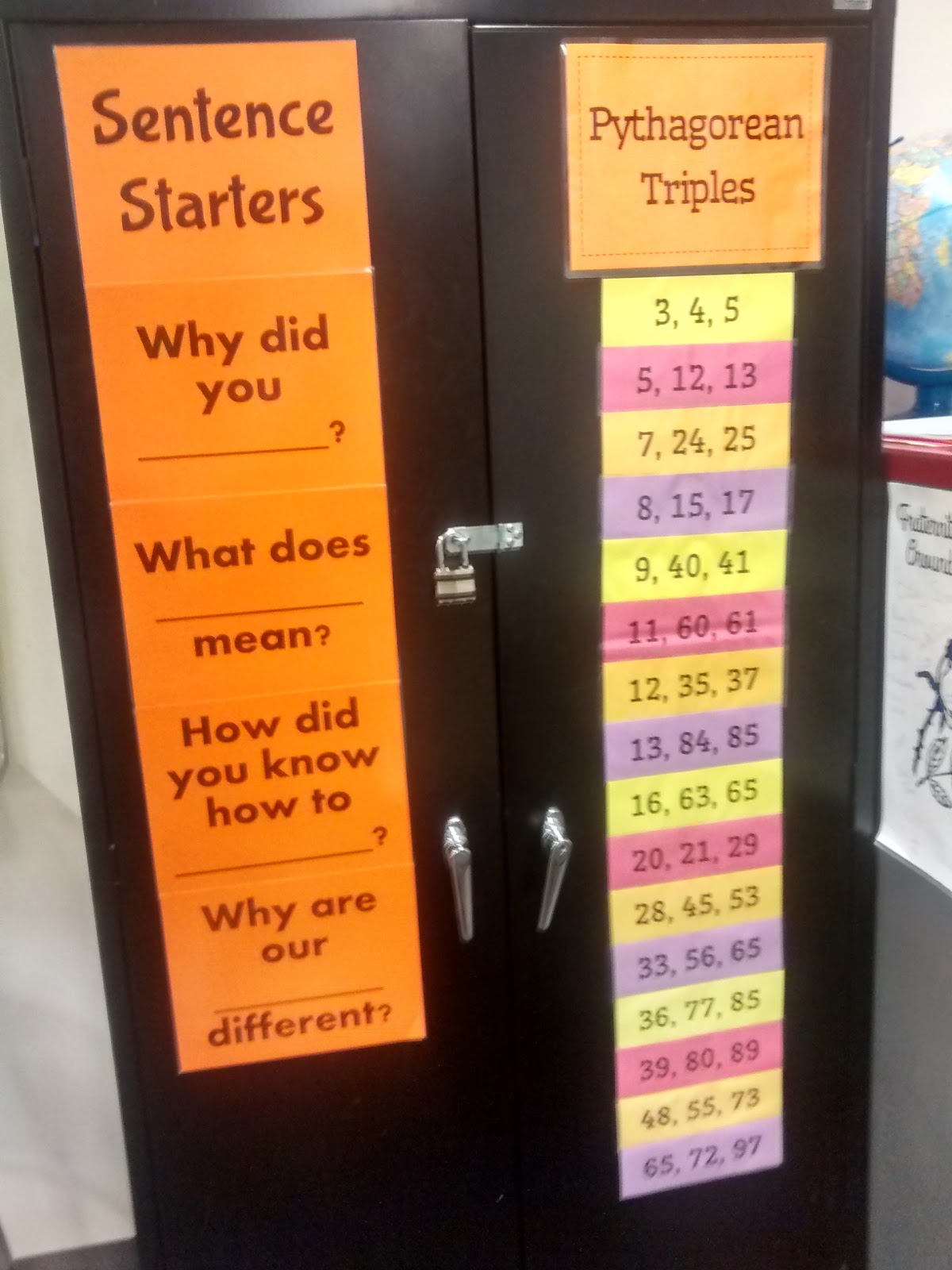
Here’s how my labels ended up looking:
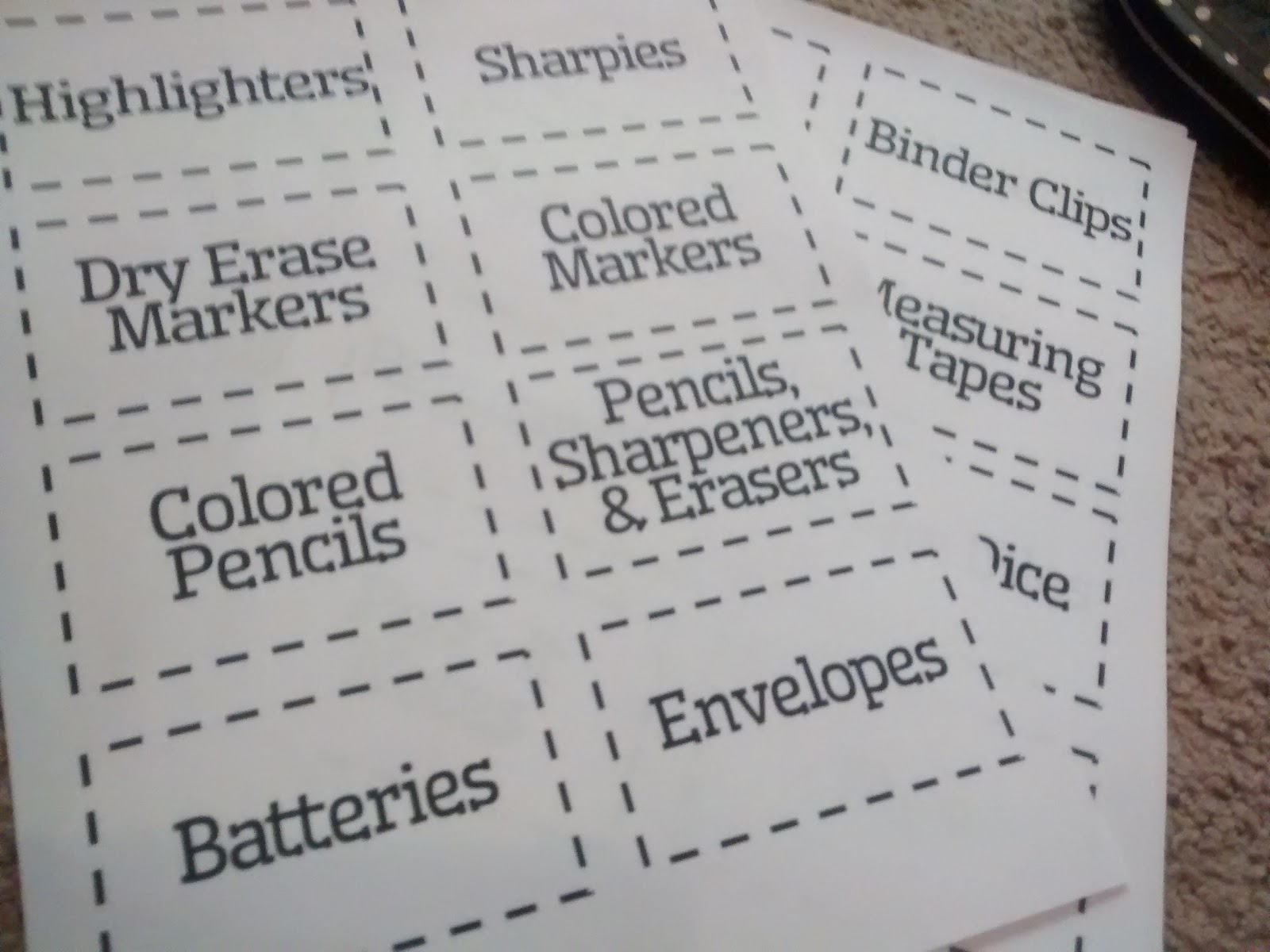
The font is “Wellfleet.” I’m using it for pretty much everything at the moment .
I laminated each page and just cut around each dashed rectangle to make a quick and easy label. I could have trimmed them a bit to make them more uniform, but I decided it wasn’t worth the effort.
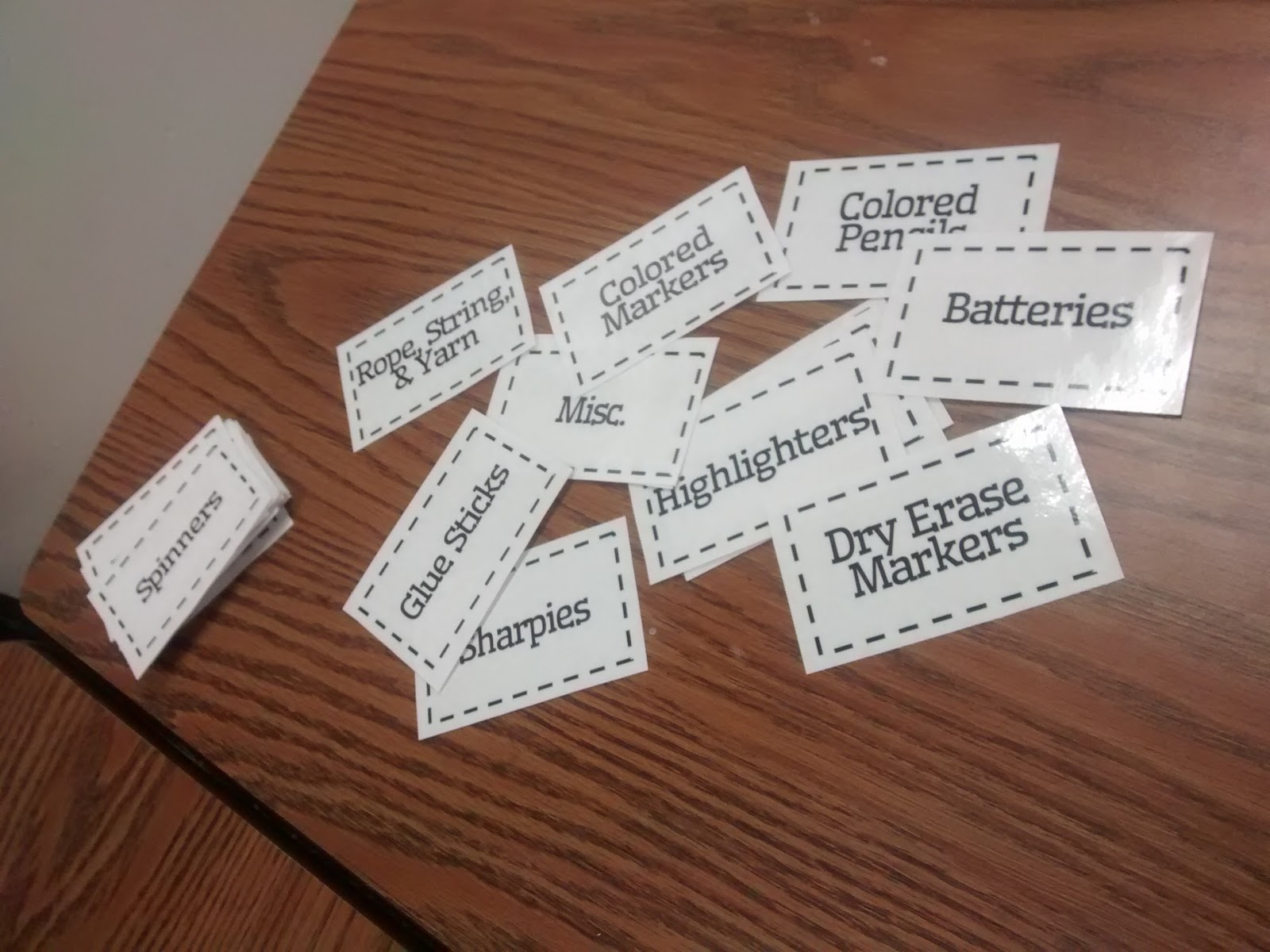
And, here’s the finished product:

Seeing all the boxes with matching labels makes my heart so happy. <3
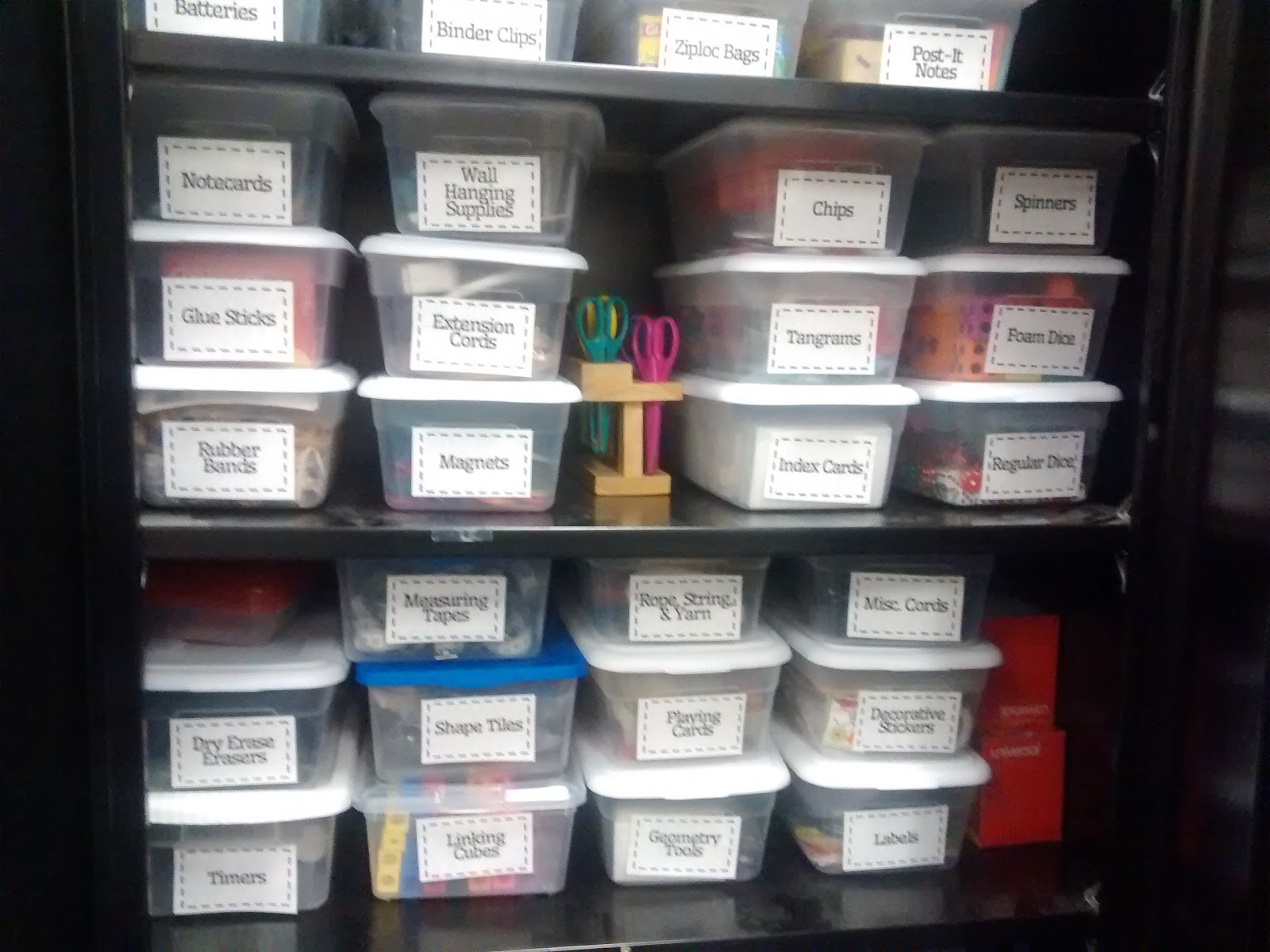
Now I just have to decide if I want to print another set of labels and label the back of the tubs, too. In the past, I’ve had issues with not being able to find something because the tub got put back in the cabinet backwards by a student. (At least, I’m blaming it on a student. It could have been me that put it in backwards, too.)
August 10, 2016 – 20 Things You May Not Know About Me
I really had trouble coming up with something to blog about today. If it wasn’t for the #MTBoSBlaugust challenge, I probably wouldn’t have blogged. I did some work in my classroom yesterday, but I didn’t take pictures. Otherwise, I would have definitely had some progress pictures to blog about.

As I’ve been reading through other Blaugust posts, I’ve quite enjoyed reading the 20 Facts About Me posts from other participants. Thus, I decided to do my own. Except, I’ve done a 30 facts post before. I was still “Ms. Hagan” when I wrote that post. Since I’ve shared general facts about me before, I wanted to take this a step farther and try to share facts that you probably don’t know about me. Unless of course you’re related to me or married to me. If that is the case, don’t be surprised if you’re not surprised. Here we go!
1. I hate water chestnuts. The crunch they have gets to me every single time.
2. Whenever I used to lay on the bottom bunk of a bunk bed as a kid, I would lay as close to the edge as possible so I would be able to roll out of the bed if the top bunk came crashing down. It’s a good thing I was the older sister and got to always sleep on the top bunk.
3. I didn’t start wearing glasses until the eighth grade. My sister needed glasses, so my mom took me to get my eyes checked too. I cried and pleaded that my eye sight was perfectly fine. She ignored my pleading and booked an appointment anyway. It turns out that having a headache every day after school was a sign my eye sight was not perfect.
4. I can never remember what side of the car my fuel tank is on. Thank goodness for the arrow on the dashboard that reminds me every time I go to fill up my car.
5. I read very quickly. In the fourth grade, I had a substitute teacher who didn’t know this about me. She thought I was lying when I said I had already finished reading our story about Jackie Robinson. So, she made me read it over and over and over until all of the other students finished. There’s also the fact that I read the entire 5 Practices book yesterday morning.
6. Once I accidentally poured lemonade on my cereal instead of milk. Nowadays, I prefer toast or pastries for breakfast.
7. Adding to my previous comment about loving pastries: Cinnamon rolls are my absolute favorite. There have been years where I asked for cinnamon rolls for my birthday instead of a birthday cake.
8. When I was in kindergarten, my friend misspelled her name on a worksheet one day. The teacher corrected it in red ink. The next day, I intentionally misspelled my name so that the teacher would write on my paper, too. She didn’t even notice.
9. When I spent last summer in Australia, I tried a bunch of new foods. I didn’t care much for vegemite, but I did fall in love with crumpets. They’re like an english muffin but so much better. I’ve missed them so much that Shaun had crumpets shipped in from Canada this past Valentine’s Day.
10. I decided I wanted to be a teacher when I was in elementary school. I even started a list on a sheet of notebook paper of all the favorite elements of each of my teachers’ classes so I could steal them when I had a classroom of my own. Since I chose to teach high school math, I sadly haven’t been able to use a single one of those ideas.
11. I wish I’d paid more attention to how to cook things growing up. I made lots of cookies, cakes, and brownies as a teenager, but I never really learned how to cook actual meals. I still have to google things like how to hardboil eggs and how to make mashed potatoes.
12. Shaun tells me I’m continually getting more adventurous in the kitchen. I’ve been making stuff without even looking at a recipe. This is a big leap for me!
13. Apparently I don’t know how to cook for the appropriate season, though. Even though it’s been sweltering in Oklahoma, I’ve been cooking lots of vegetarian chili and corn bread this summer. Corn bread is definitely one of my faves, and I’ve been taking advantage of the fact that I have another human to cook for. Cooking corn bread for one never really seemed worth it…
14. It always trips me up when someone asks me what my favorite movie is. I can’t tell you that, but I can tell you which movies I’ve watched over and over and over. How to Lose a Guy in 10 Days. Sweet Home Alabama. Top Gun. Double Jeopardy. Weird combination, I know.
15. I wish I was the type of person that made my bed every day. I installed an app called “Habits” this summer to help me with that habit and others. The bed making hasn’t been going that well. But, I haven’t missed a day of flossing since I started tracking it.
16. I only recently learned that you’re not supposed to wash your can opener every time you use it. I’ve been washing my can opener regularly, and it kept getting worse and worse and worse about opening cans. Finally, I splurged on a new can opener. The instructions said to not submerge it in water but to just wipe it down after using if necessary. Oops!
17. I’m terrible at organizing my computer files. I have a tendency to save everything to my desktop and tell myself I’ll organize it later. Later usually doesn’t come for a very long time. I’ve had up to 400 files saved to my desktop before. It kinda stresses my husband out.
18. My favorite store to shop at is Tuesday Morning. I always spend ages on the crafty/office supply aisle. I also always have to check out the toy aisle to see if there are any cool board games or card games. You can usually pick up games there for under $4. I’ve bought card games for as cheap as $0.99.
19. I love keeping a budget. Do I need a budget? Probably not. My parents are super-savers, and they raised me to be one, too. I also married another saver. I’m blessed to have enough of a cushion in the bank that I don’t need to track every penny I spend. But, I still love to do so. Since April, I’ve been using EveryDollar.com to keep a budget, and it’s been so much fun. At the beginning of the month, I fill in my expected income and expenses. Then as the month progresses, I insert expenses into the various categories. If I end up spending more in one category than I planned, I have to reduce the budget in another category. Updating the budget is one of my favorite tasks of the day. Does that make me weird?
20. I love painting my toenails, but I hate painting my fingernails. First off, when I try to paint the fingers on my right hand with my left hand, it looks like I’ve been involved in some sort of gruesome crime. Then, there’s the fact that the first time the polish chips I want to take all the polish off. So, I just stick with painting my toes.
I’m not entirely sure what you’re supposed to take away from this blog post, but it was fun to write. I hope you found it to be an enjoyable read. I know I always love getting a peek into someone’s life that you don’t normally get to see.
August 19, 2016 – Meet The Teacher Night = DONE!
Well, I survived the first day of professional development and meet the teacher night. We had a much higher turn-out level than normal, but most of that can be attributed to the fact that we’ll be in a new building this year. Our district has combined our middle school and high school into a 7-12 building to save money. This means that no one knew where any of their classes were. And, there were no room numbers printed on the schedules. It was pretty crazy.
I was able to get my room looking pretty decent. It’s been a work in progress for months. I’ll do a post later with close-up photographs of everything, but here’s what it looked like tonight for students and parents.
My back wall of cabinets. This is my first classroom EVER that has cabinets. I’m in LOVE.

View from my Desk:
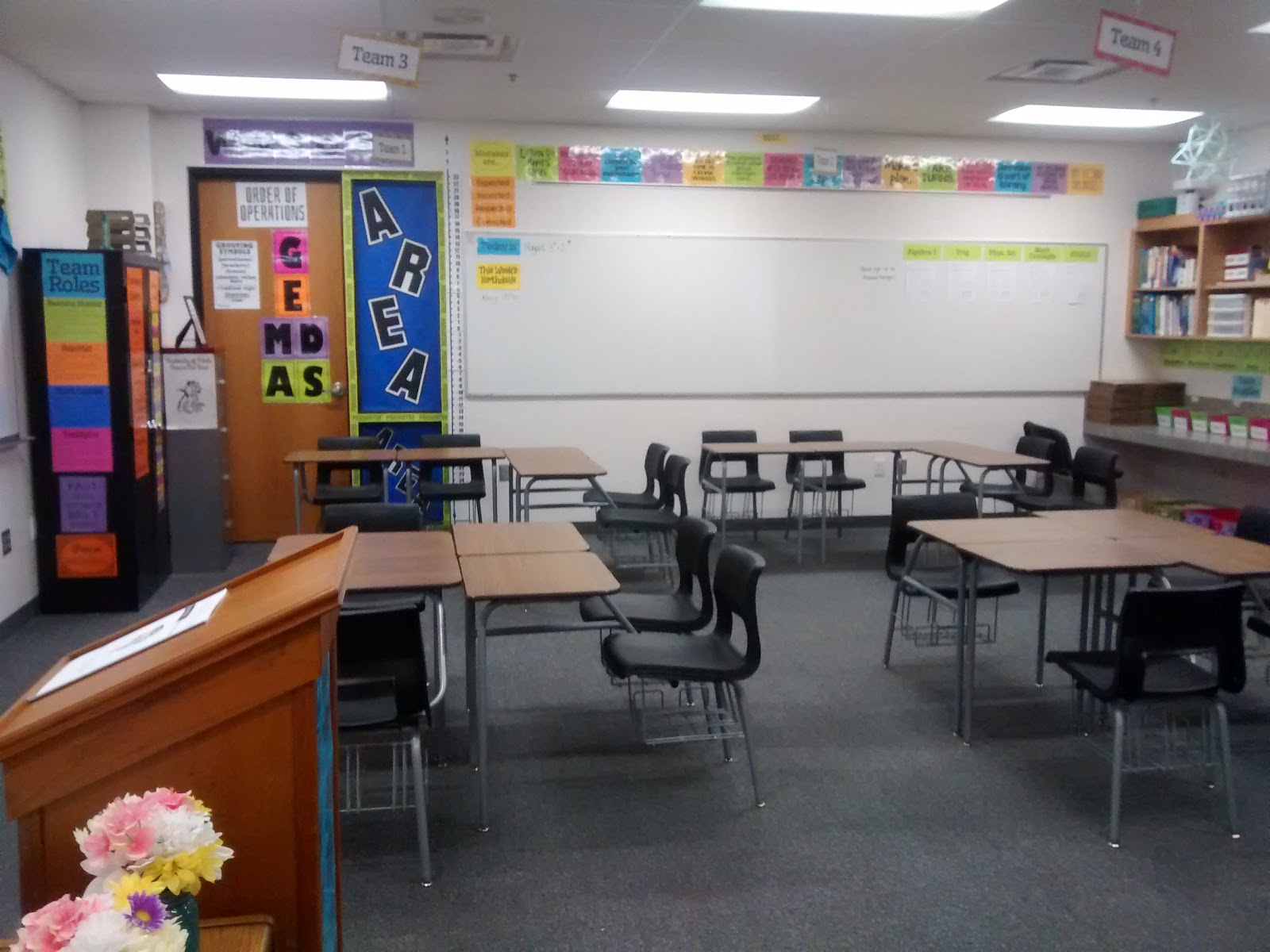
View from Door:
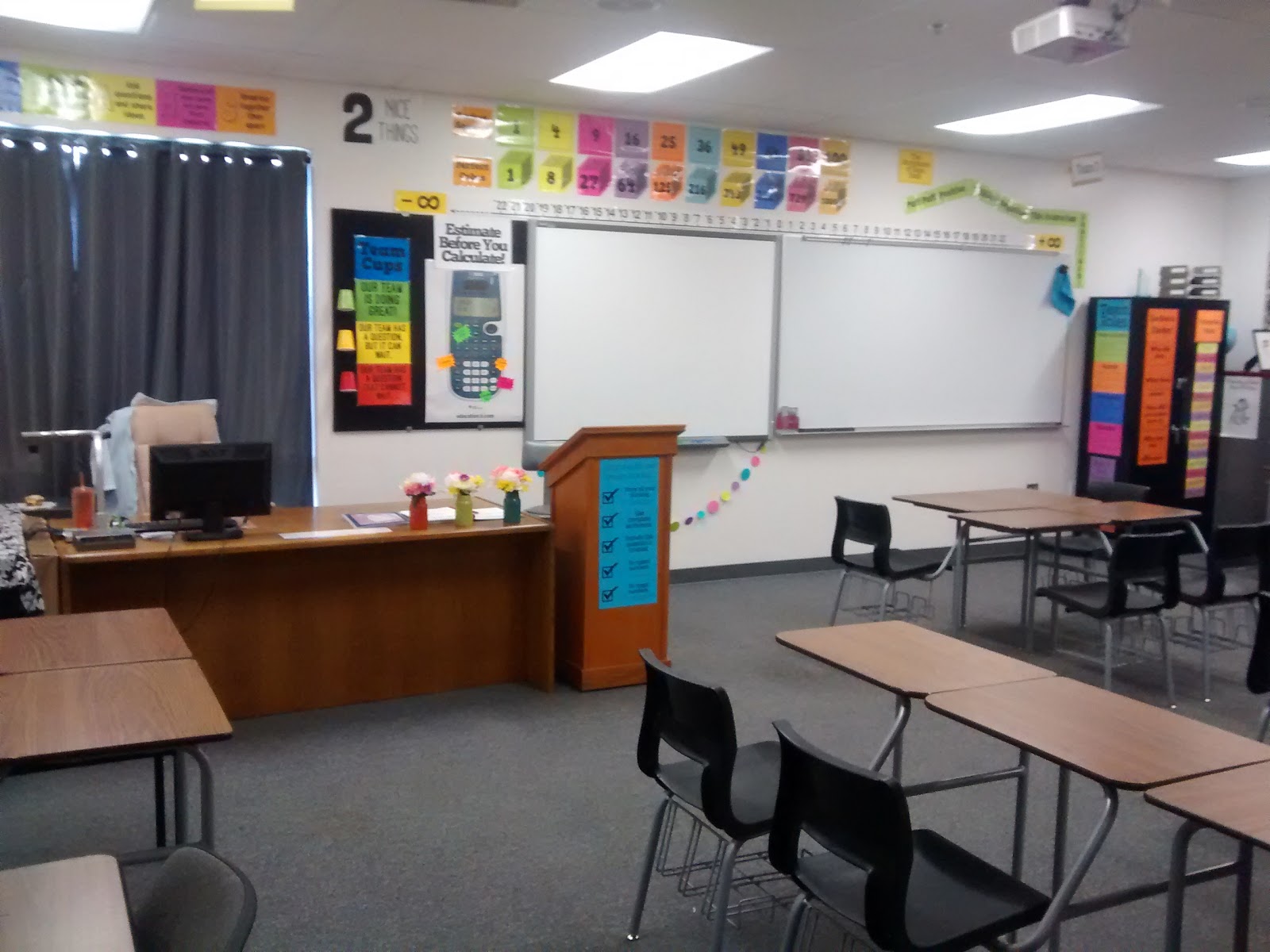
East Wall:
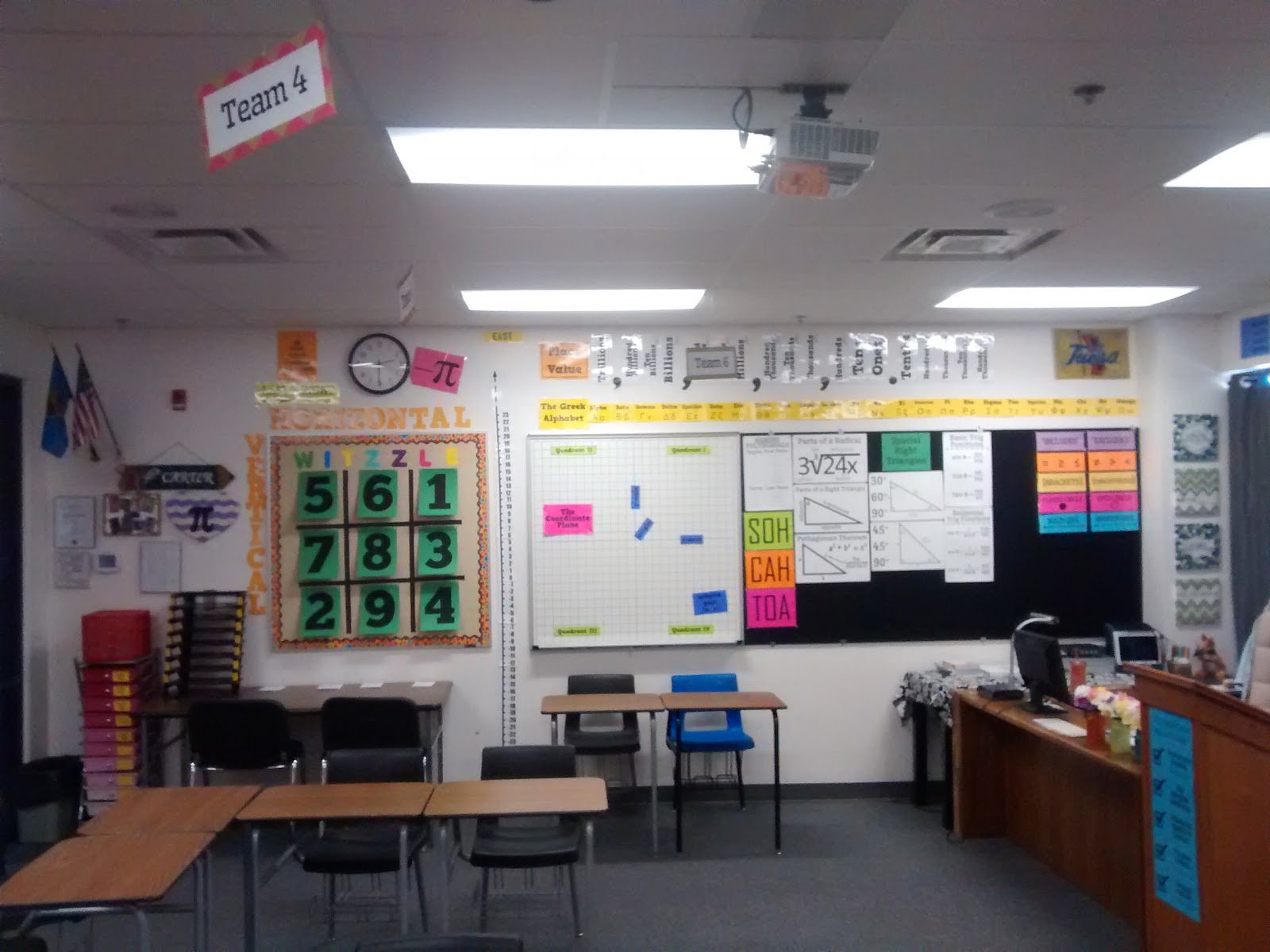
Angled View from Door:
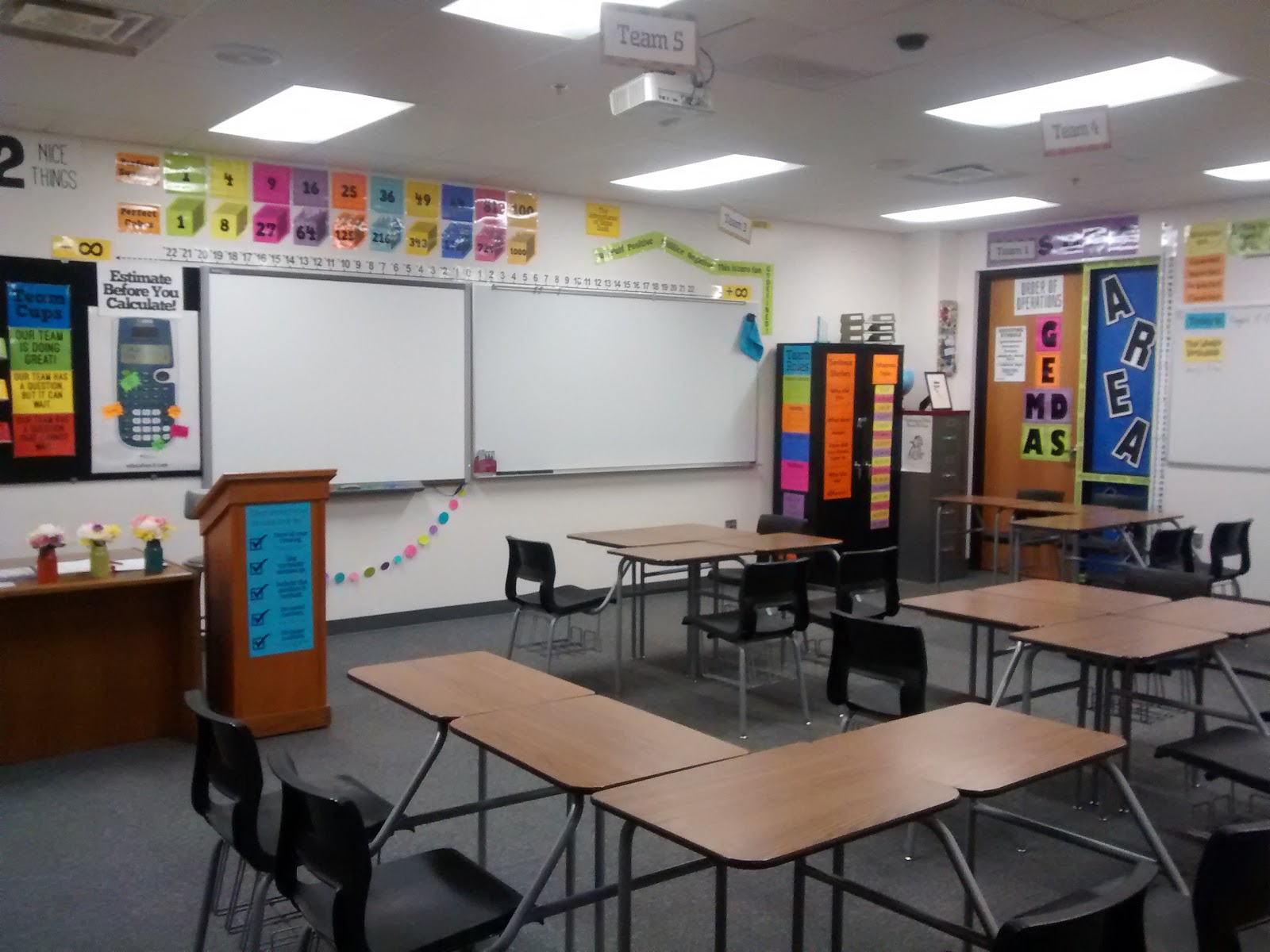
Students haven’t set in them yet, but I’m really liking my desk set up this year. We’ll see how they go on Monday.
More importantly, do you see that space between the groups? I’ve NEVER had that before.
In my old classroom, the desks were incredibly cramped.
See? !? Here’s a pic of the groups in my old classroom:
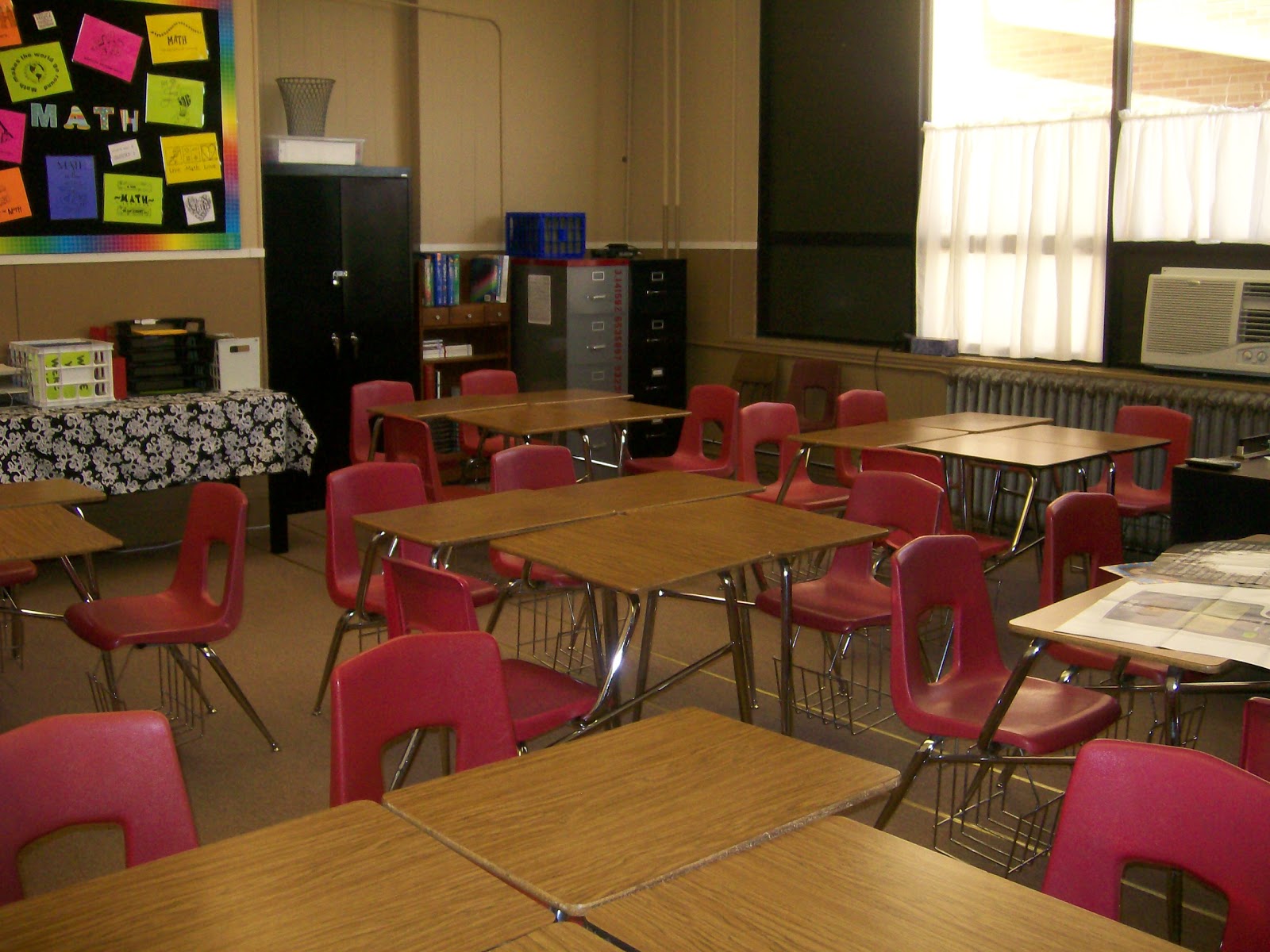
My rosters show that I’m going to have some pretty large classes. Now, these aren’t large classes as far as most of you are concerned. But, I only have 22 desks in my room. So, when 20 are filled, that’s a large class for me. I’m used to average class sizes of probably around 13 or 14.
Tomorrow’s our last PD day before kids start on Monday. Having kids come in and out of my room helped to make the fact that school is starting soon actually sinking in. It also reminded me of how much I have missed interacting with my students. I’ve enjoyed my break, but I’m ready to get back to teaching some math. And physical science. That part is going to be an adventure.
My school had one of our science teachers (from a department of two) retire at the end of last year. Due to budget problems, a new science teacher was not hired. As a result, I have to teach a section of physical science. Looking at the standards, at least half of them mention math. So, I think we’ll be okay. People are going to be so confused when they start seeing physical science foldables on Math = Love…
I’m ready to start Year 5!
August 23, 2016 – Day 1: Done!
Well, Day 1 of Year 5 is in the books. I haven’t spent this long on my feet in a while, so I’m definitely feeling exhausted.
The first task I set my students (minus my trig students whom I’ve all taught before) was to make a name tent to set on their desk. I have SO many freshmen this year which means SO many new names to learn!
Next, I gave my students their first quiz of the year. This caused some major groans!
After three minutes, I went through set of slides to reveal the answers. I gave the student in each class period who got the most questions correct a certificate and a piece of candy.
Then, I turned the tables and had them write a quiz about themselves for me to take.
The kids, of course, complained that they had to give me choices for their questions when I didn’t give them any questions. I explained that they had to take ONE quiz about me. Tonight, I was going to have to take SEVENTY OR EIGHTY quizzes. I deserve multiple choice. 😉
Next, we talked about what supplies they would need. I gave out quarter sheets of paper with a supplies list.
I intentionally chose not to discuss the syllabus today. I wanted to keep my students active and engaged instead of having them sit and listen to me going on and on and on.
Our main task for the day was Sara VanDerWerf’s 1-100 Activity. If you haven’t read her blog post about this activity, stop everything else and do it now. I decided to do this activity on the first day because it really emphasizes and starts a discussion with students about what makes group work effective. Tomorrow, we’ll start delving into more of the nitty-gritty of group work by working through Broken Circles and Rainbow Logic from Elizabeth Cohen’s Designing Groupwork: Strategies for the Heterogeneous Classroom.
This meant I was able to introduce group work on Day 1, and I’ll introduce group work roles tomorrow on Day 2.

I’ve never seen my students as engaged as they were during this activity. It was like magic!

This activity is most definitely a keeper. I can’t recommend it enough! The kids were super-engaged, and they didn’t want to stop. We did the 1-100 activity twice with a one minute break in between to discuss strategies in our groups.
After the 1-100 activity, I asked students to share what this activity demonstrated about effective groupwork, and they actually had responses. This is the type of question I’m used to asking and getting dead silence in return.
With some of my classes, this activity took us to the end of the class period. With others, we still had 10-15 minutes left over. Most of this difference between classes can be attributed to widely varying class sizes.
With my classes that finished early, I introduced them to the game of Petals Around the Rose.
So far, I’ve only had one student this year earn the honor of joining the Fraternity of Petals Around the Rose. Members get this card:

Students also sign their name to my Petals Around the Rose poster that hangs in my classroom.
With my stats class, they had already done Petals Around the Rose last year, so I decided to have them play Left Center Right instead.

I actually had more students than the chips in the tube allow to play, so I used colored bingo chips in lieu of the chips in the tube. We sat in the floor in a giant circle and played for a good 10 or 15 minutes. I thought my students (juniors and seniors) might think it was a lame game, but they got really into it. They even asked if we could play again some time. This game is actually more stats-related than trig-related, but it was a fun community-building game for my small class.
As for my physical science class, I had to plan an entirely different lesson for Day 1 since almost all of my physical science students are also enrolled in one of my math classes.
We started the “Survival in the Desert” activity from Kagan’s Cooperative Learning book.
Sadly, we didn’t get to finish the activity. I blame that mostly on the fact that my entire class was pulled out for an assembly during the middle of class.
I liked this activity, but I had to rewrite it since the original version mentioned both cigarettes and alcohol. I can’t have my students going home after the first day of school and saying that they learned about vodka in physical science class.
Today was also the first day of my school district’s out of the door by four policy. The principal came over the intercom at 4 p.m. and instructed us to go home. It’s part of my district’s plan for saving money this year. I’ve never been a leave school early person, so this is going to be quite an adjustment for me.
Shaun and I did take advantage of the fact that we got out of school at a reasonable time by coming home and going for walk around the neighborhood while we talked about our days. It’s part of our attempt to fit more exercise into our daily routines.
I’m sure there’s more that I could write about today, but it’s getting late. And, I’m first-day-of-school exhausted.
August 24, 2016 – Broken Circles and Rainbow Logic Group Work Reflections
Today, I had grand plans to go over the syllabus, complete Broken Circles, and complete Rainbow Logic in one fifty minute class period. In two of my math classes, we did the syllabus, Broken Circles, and PART of Rainbow Logic. In my other three math classes, we only did the syllabus and Broken Circles. Oh, and I also gave students back the quizzes they wrote for me yesterday to have them graded.
This question broke my heart. You’ll notice that I chose to write my own answer in.
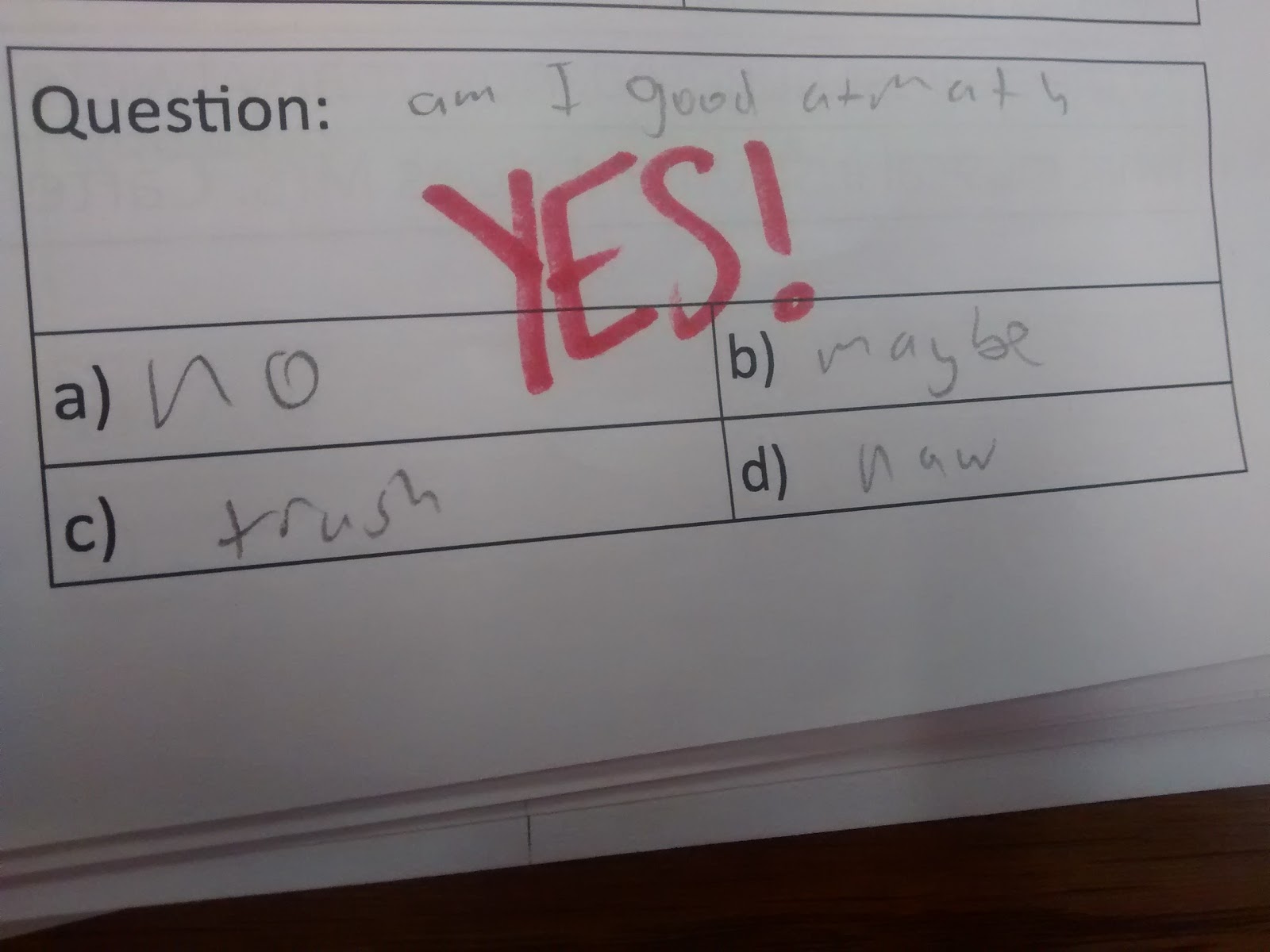
(If you haven’t read the Broken Circles and Rainbow Logic posts, read them first! Otherwise, you’ll probably be super confused!)
After talking through our syllabus, I introduced my students to the four group work roles we’ll be using this year. Silly me thought that I could just go over the four group roles, hand my students the Broken Circles task card, and set them to work.
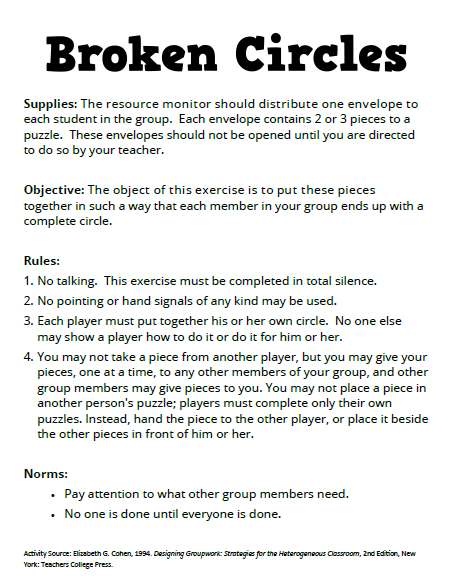
Let’s just say I ONLY made this mistake 1st period. With each subsequent run-through of the activity, I found that how I was introducing/setting up the activity with my students was becoming much more effective. The “No talking” and “No pointing or hand signals of any kind” rules were SUPER hard for my students to follow. This really wasn’t a surprise, though. There was much frustration among the students. Kids would call me over and tell me that I must have cut the circles wrong because the activity was impossible. I assured them that the activity worked and pointed to the other groups that had already finished. The students who received the “A” pieces did have a lot of trouble giving up their pieces to the other students. Some groups were working for multiple minutes before the “A” person gave up any of their pieces. They did all eventually figure it out, though. (Full disclosure: one group was really struggling. Eventually, I had to let that group start talking.) After blogging/tweeting about this activity, I had a lot of people try it and out let me know how long the activity took on twitter. They all advised me that small groups (especially groups of three) could finish the activity in as little as 2 minutes. I arranged all of my students in groups of 4, 5, or 6 to keep them engaged for a bit longer. I never timed my students, but I would guess it took groups 4-8 minutes to finish. Then, I had them complete the reflection sheet as a group. Here’s some pics of Broken Circles in action:
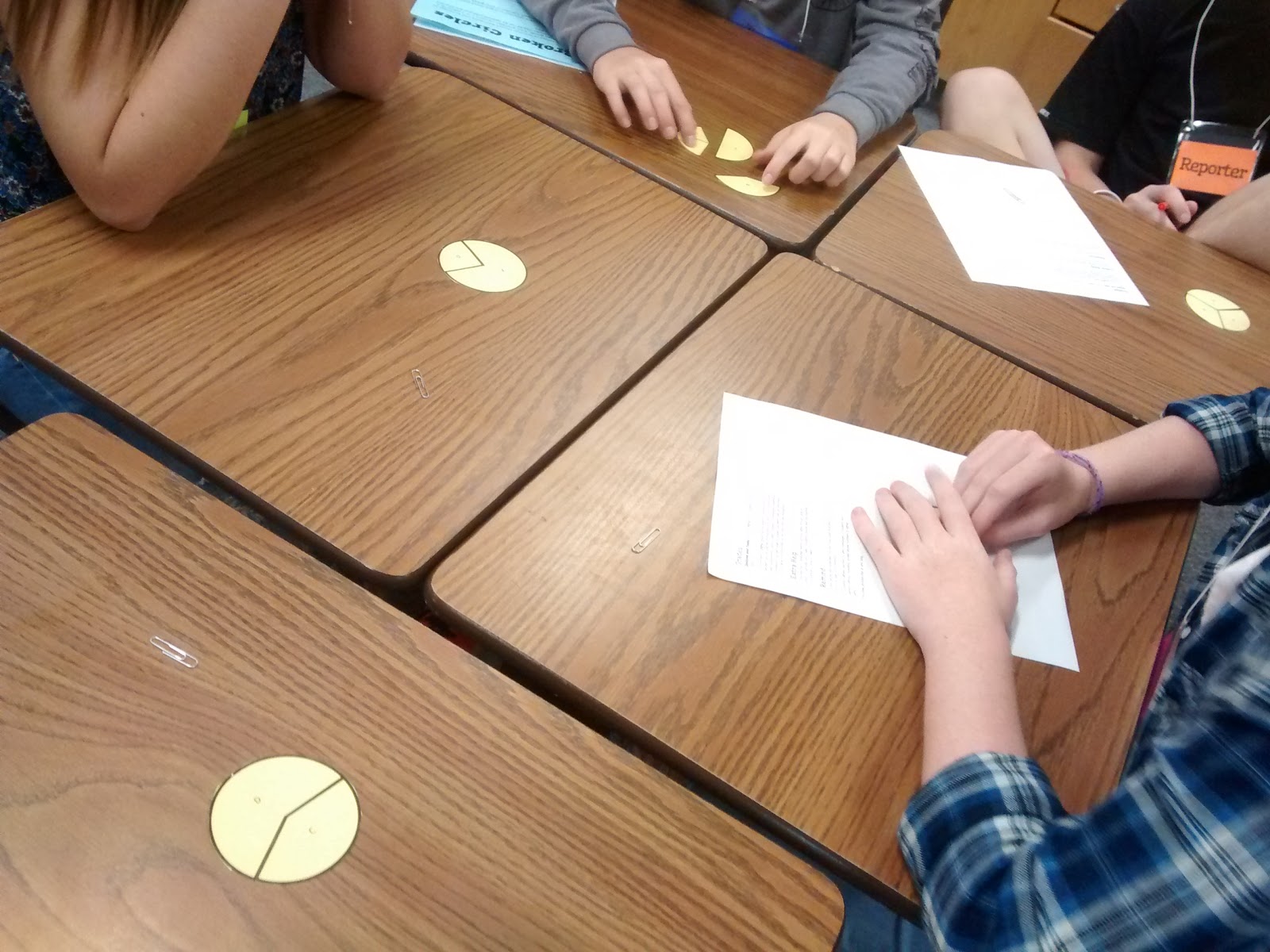
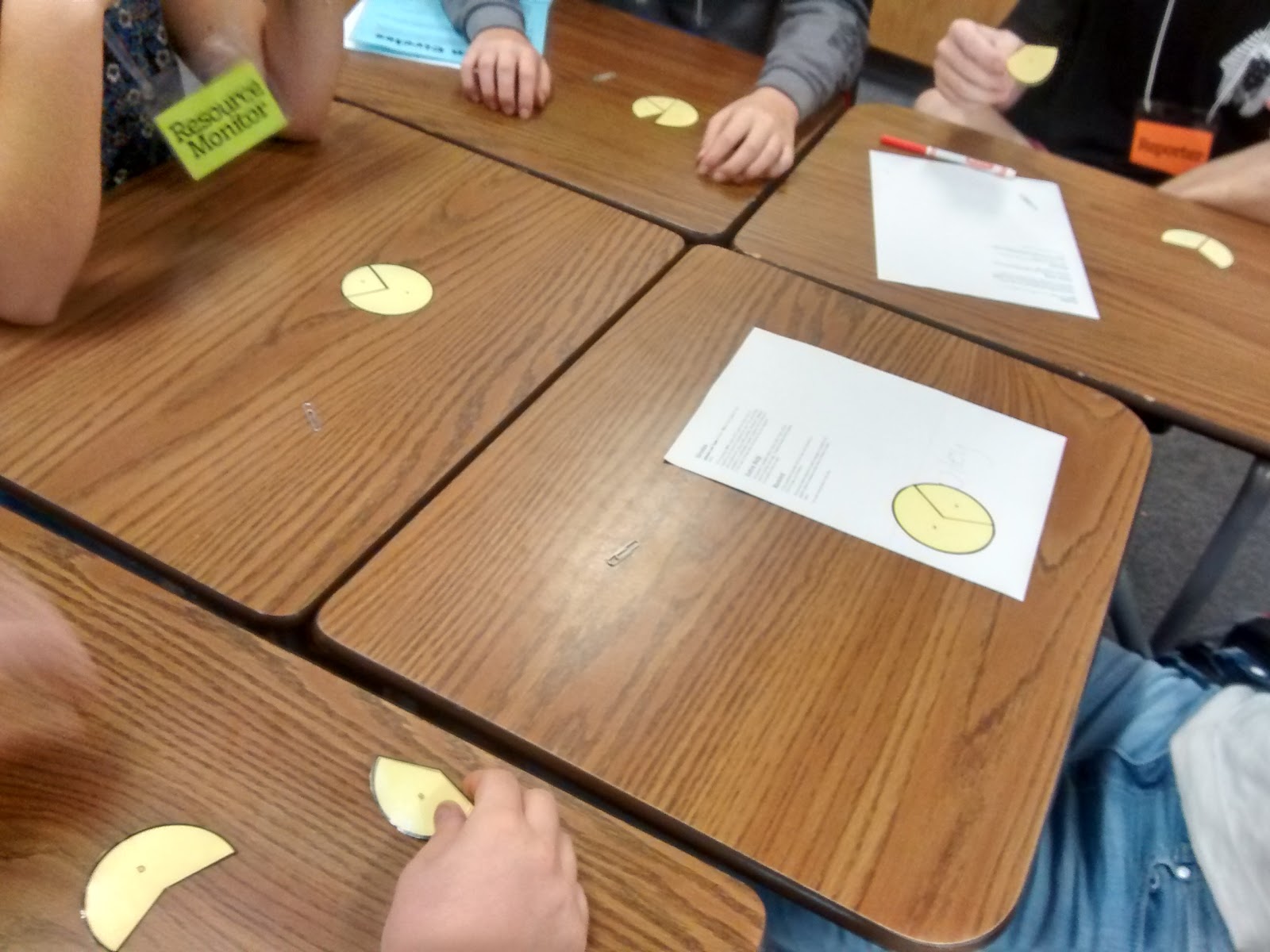
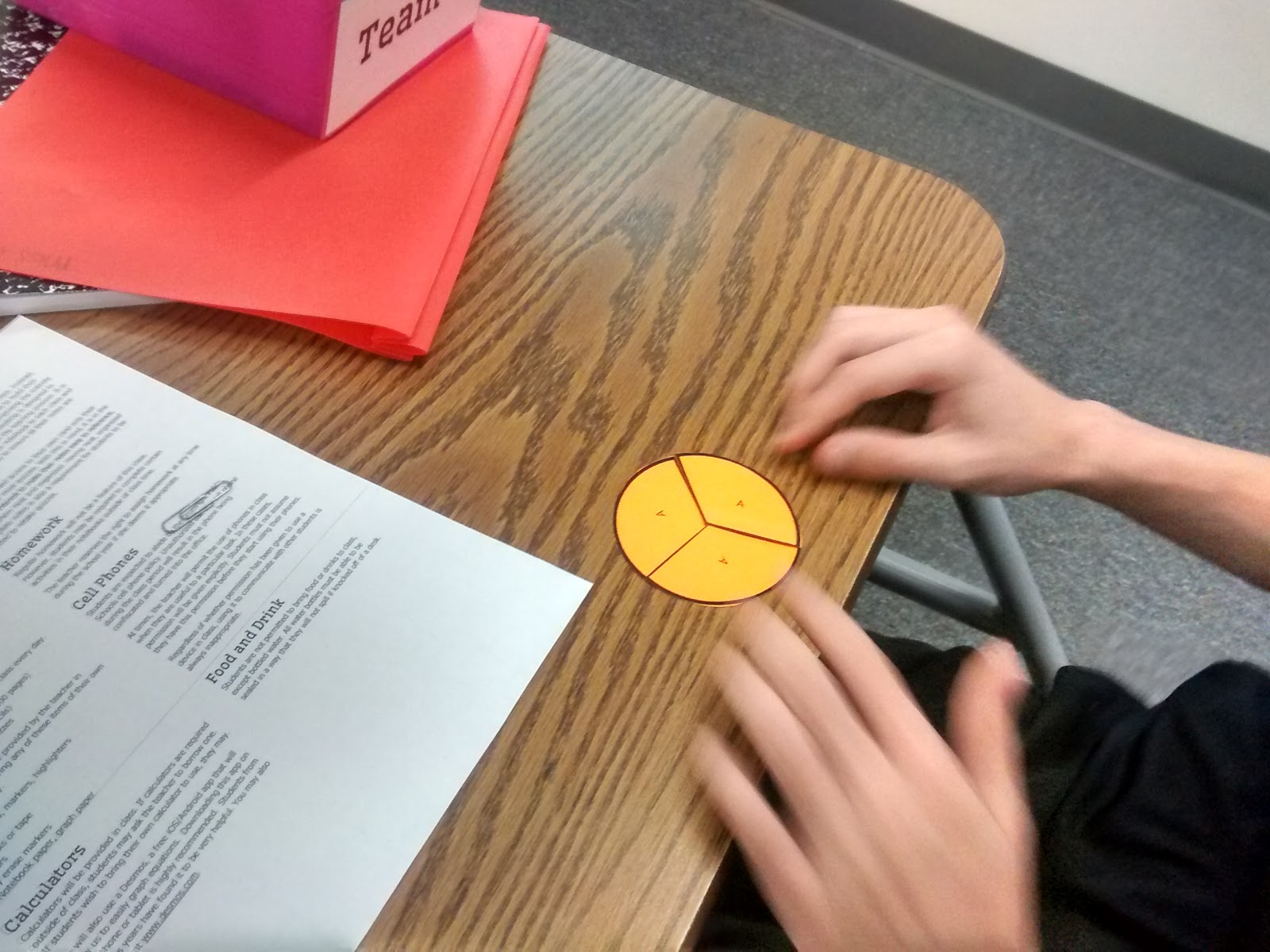
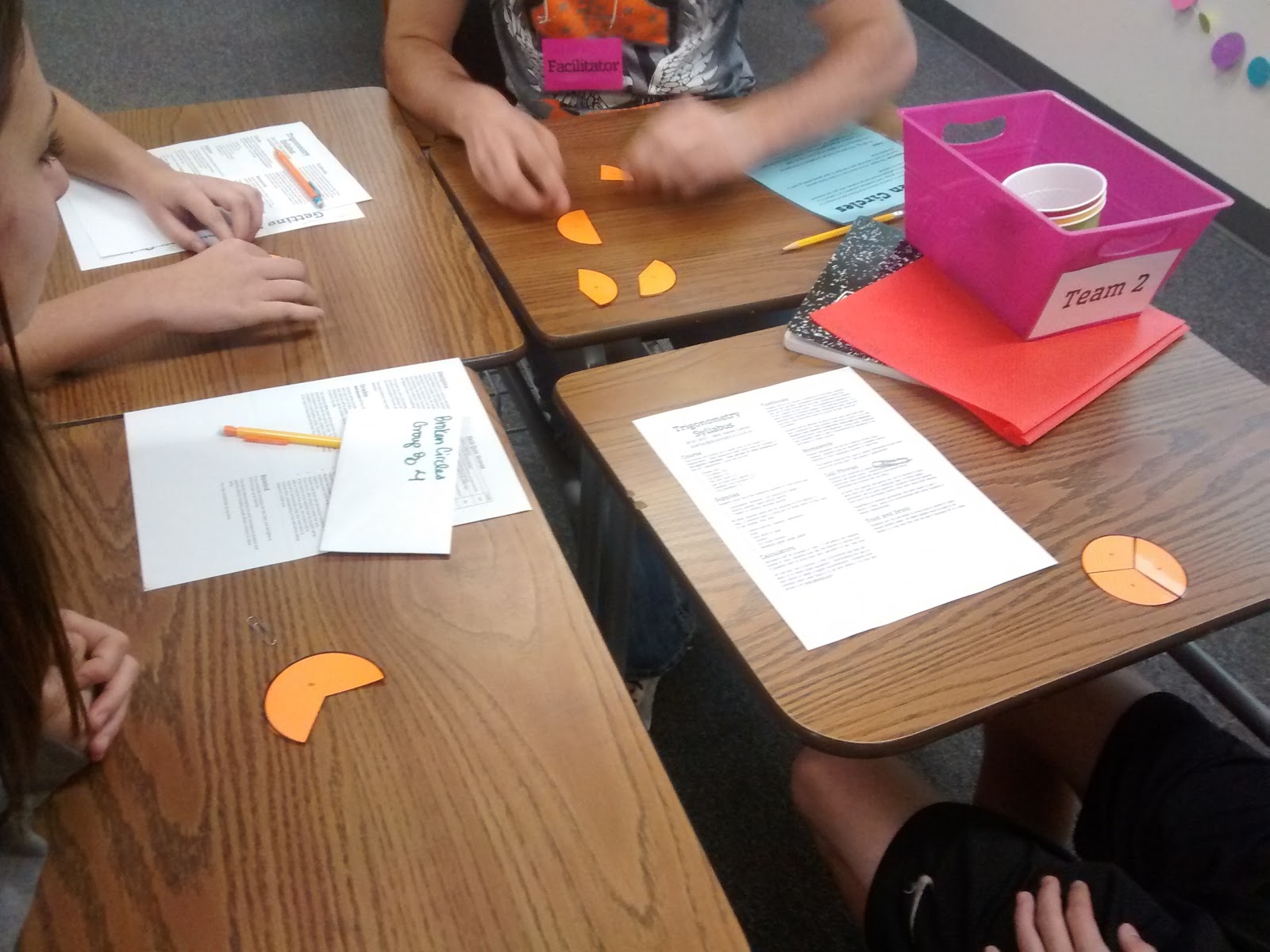
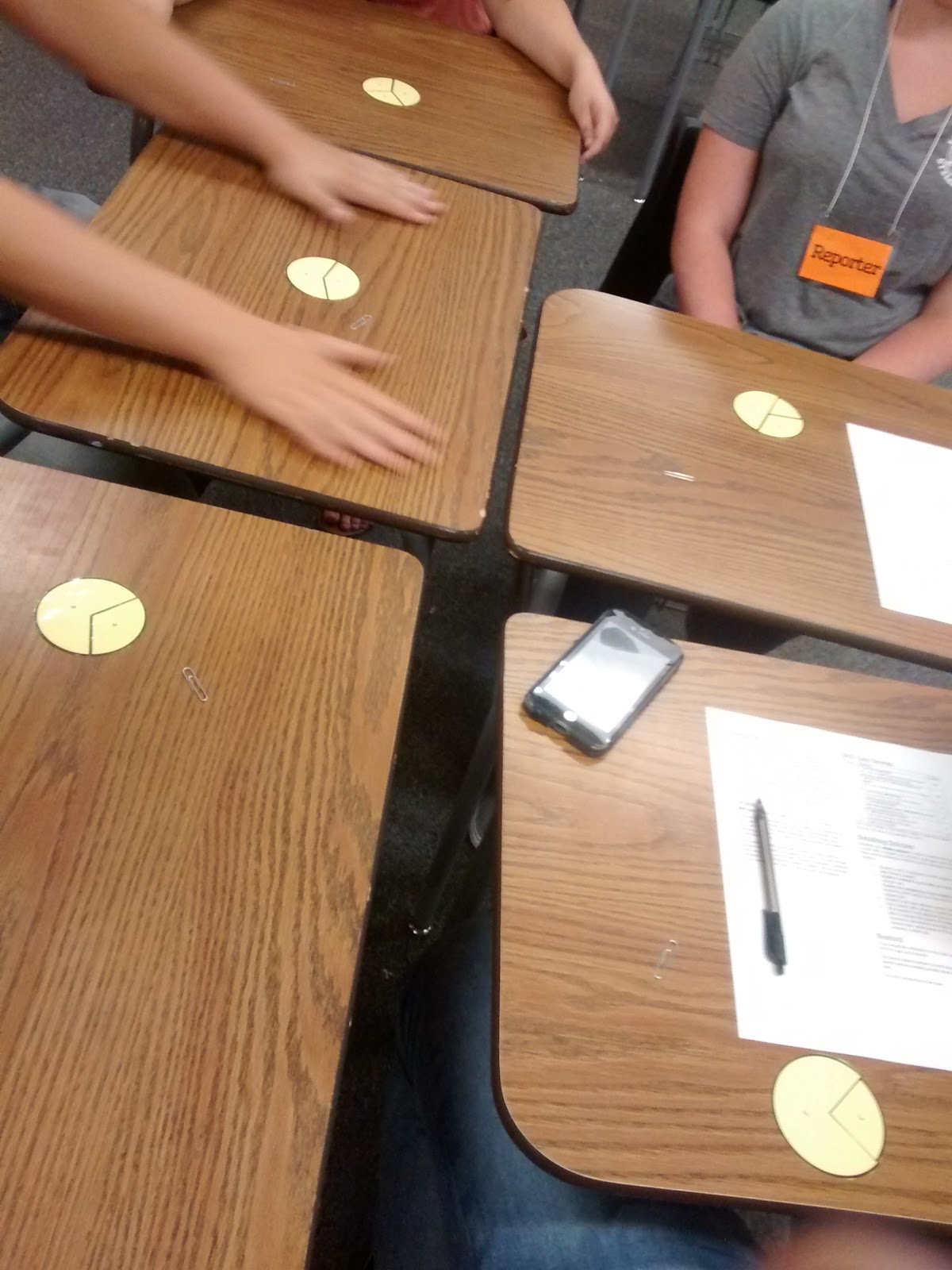
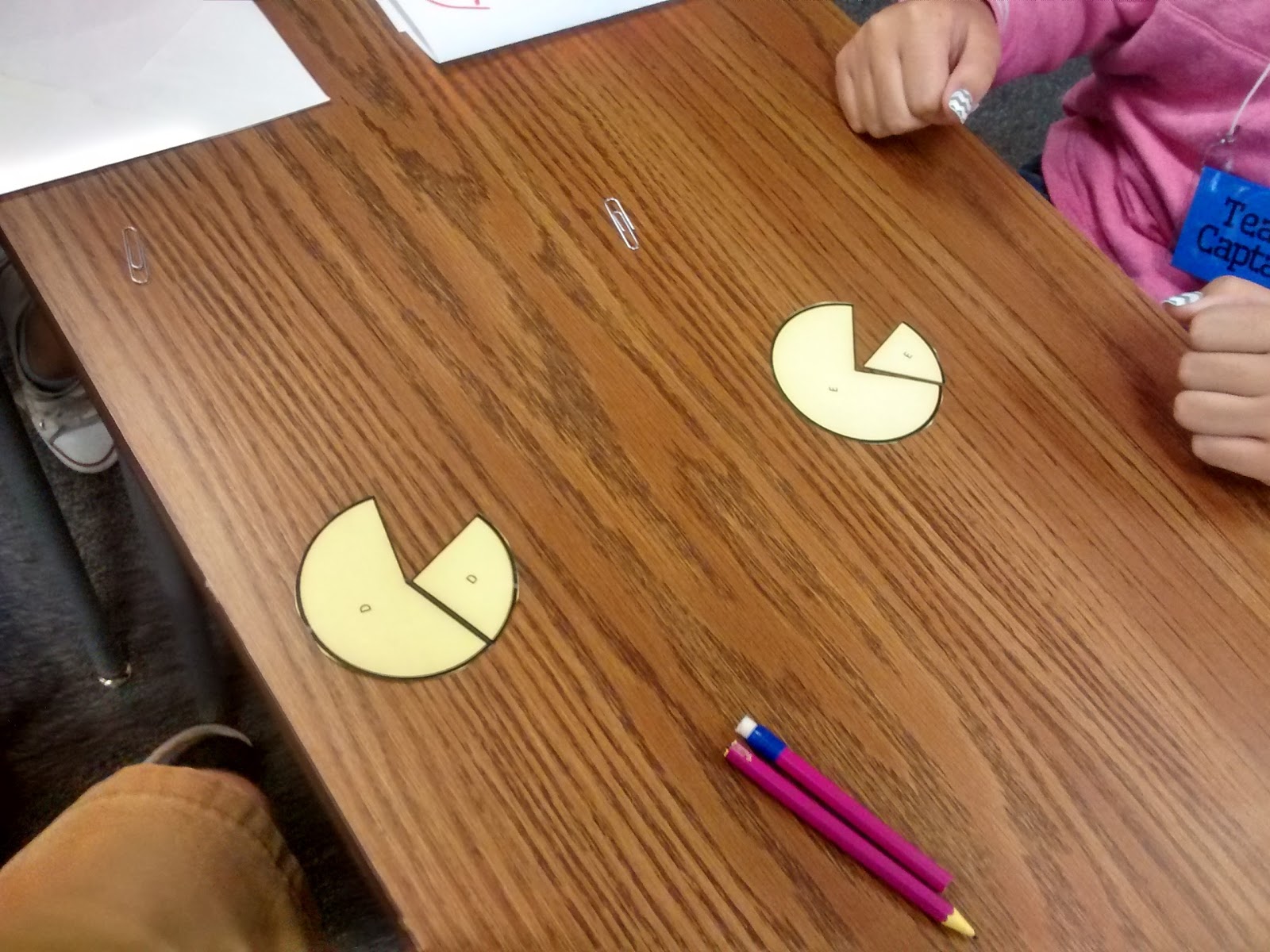

It was so fun to watch the groups celebrate together after finishing their circles. Since they were still in “no talking” mode, almost all of the groups raised up their hands in celebration.
After working through Broken Circles, I found that they adjusted to Rainbow Logic a bit better. I think it could have gone even better if we hadn’t been so rushed for time today. One group really impressed me with how well they were playing their roles during the Rainbow Logic activity.
I borrowed dividers from my neighbor teacher to help the grid keeper hide their designs.
The one thing that my students really struggled with was figuring out the rules of the game just from reading the game’s rules. Thinking about how it went after school, I was reminded that board games are not as prevalent with most students these days. I can remember spending a good fifteen or thirty minutes trying to figure out how to play a new board game by reading the rules with my sister as a kid. My students have grown up with apps and computer games that walk you through a tutorial level. (I realize this is a generalization that doesn’t apply to all students!)
As groups worked to figure out the color placements, I challenged them to see if they could figure out the solutions in smaller and smaller numbers of questions. One group in my trig class really impressed me by figuring out the pattern of the entire grid in only TWO questions! My freshmen didn’t have as great of discussions as my trig students, but I think that comes with age and maturity. My trig students were really good at discussing their questions and making sure it was a group question. My freshmen still need a lot of work on that. One student would just blurt out a question, and the group would go along with it. Just shows me another thing we need to work on!
I ended up really, really, really loving this activity. I think it’s a definite keeper!
Here’s some action pics:

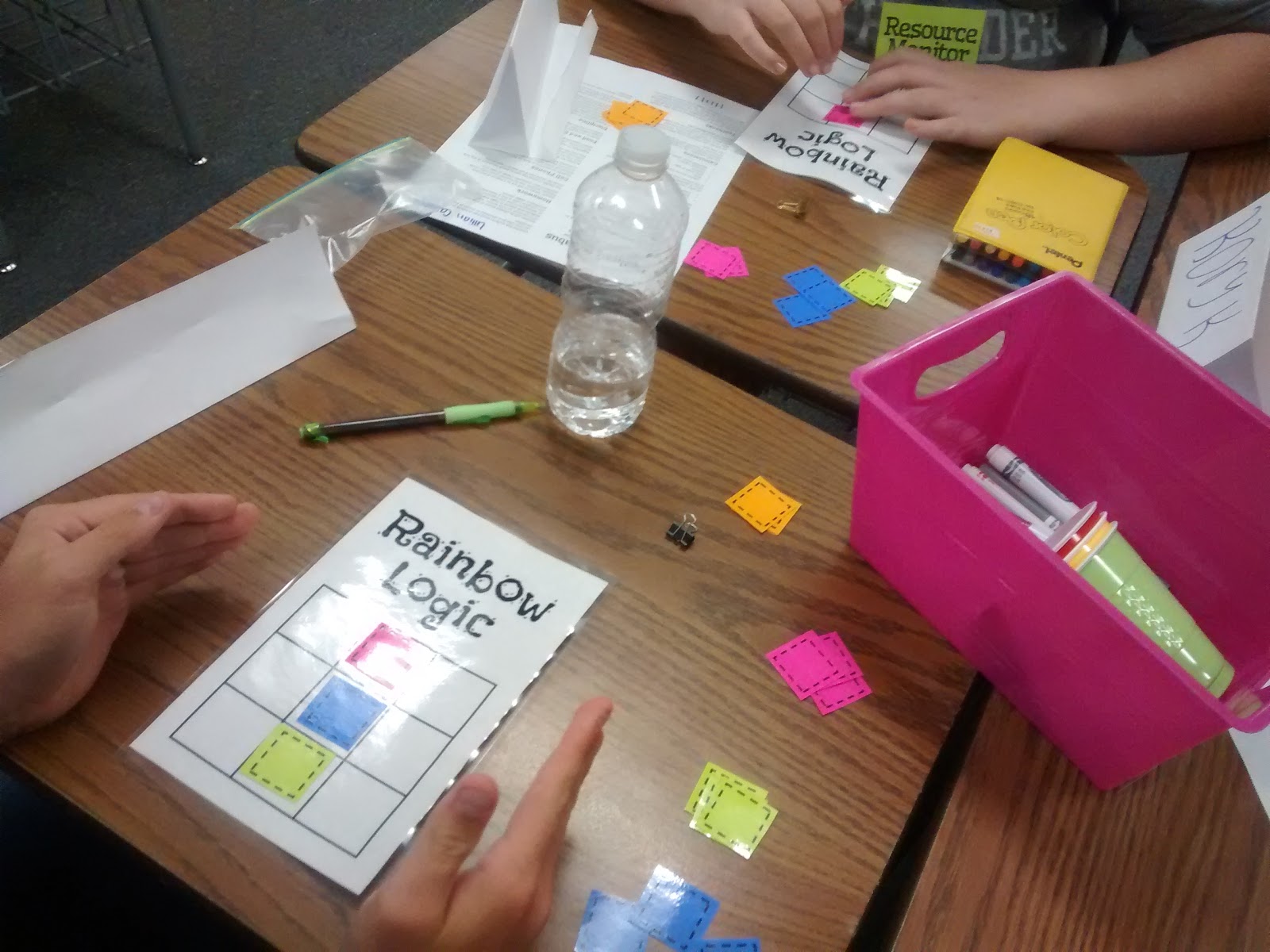
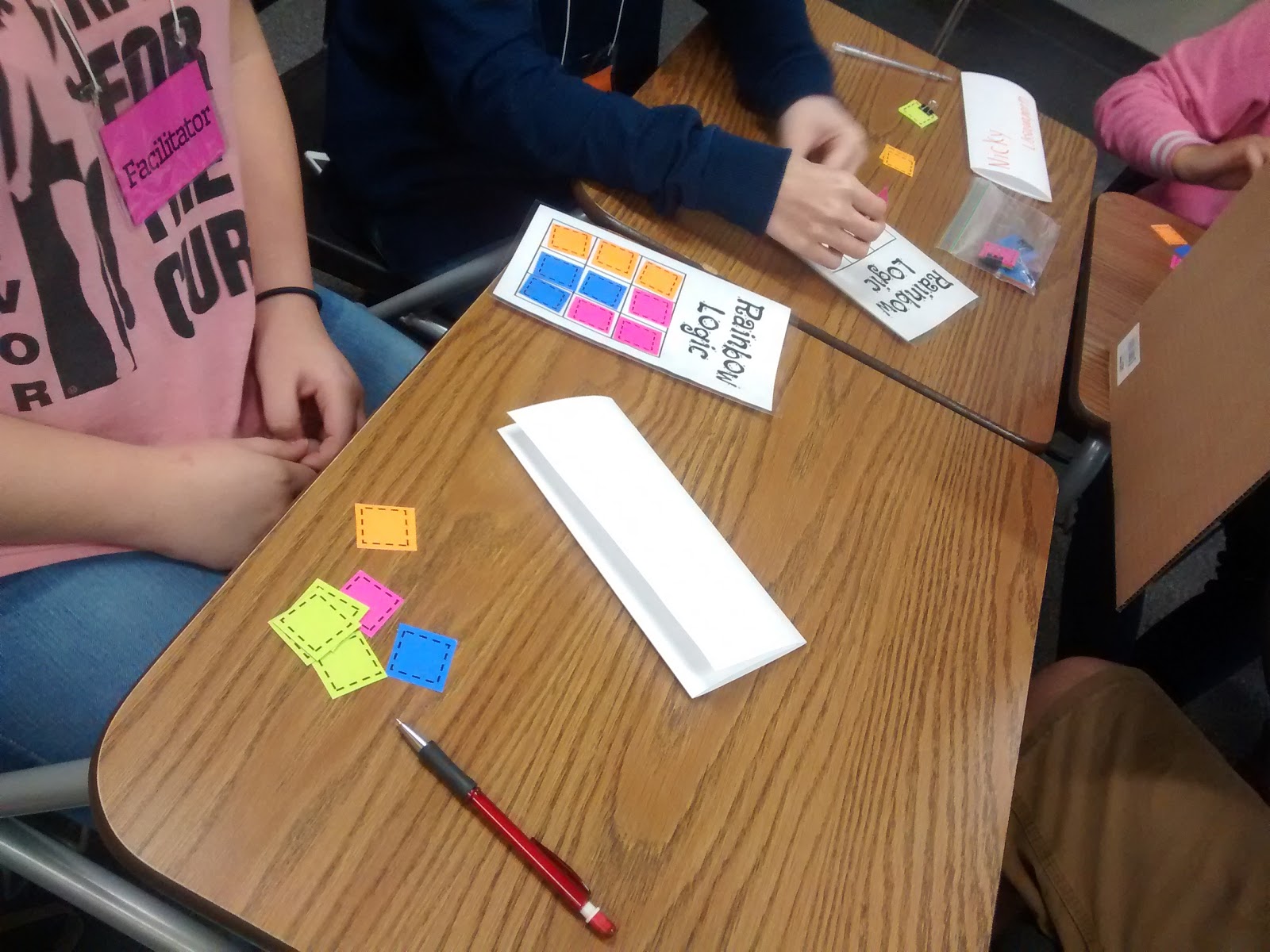
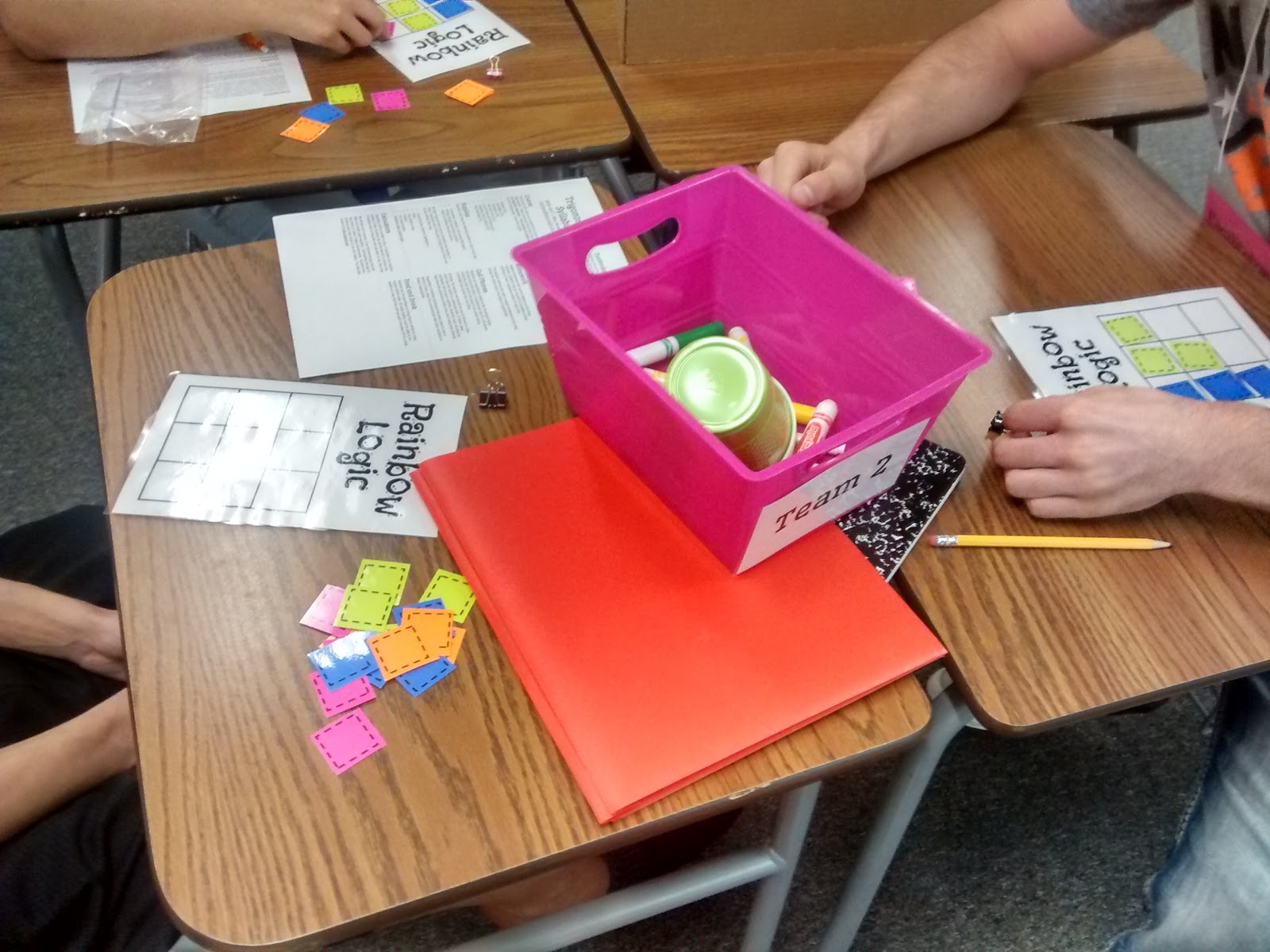
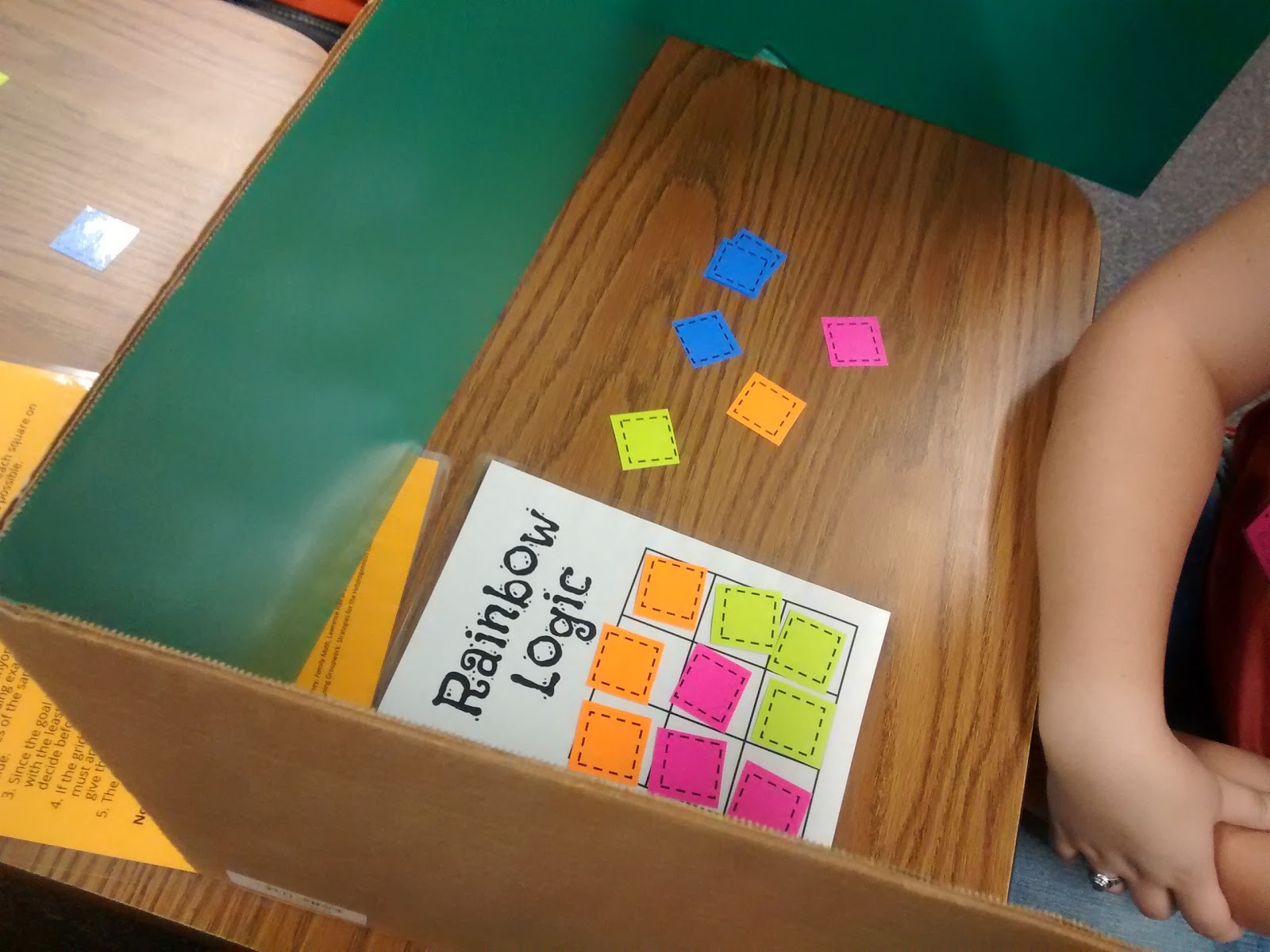
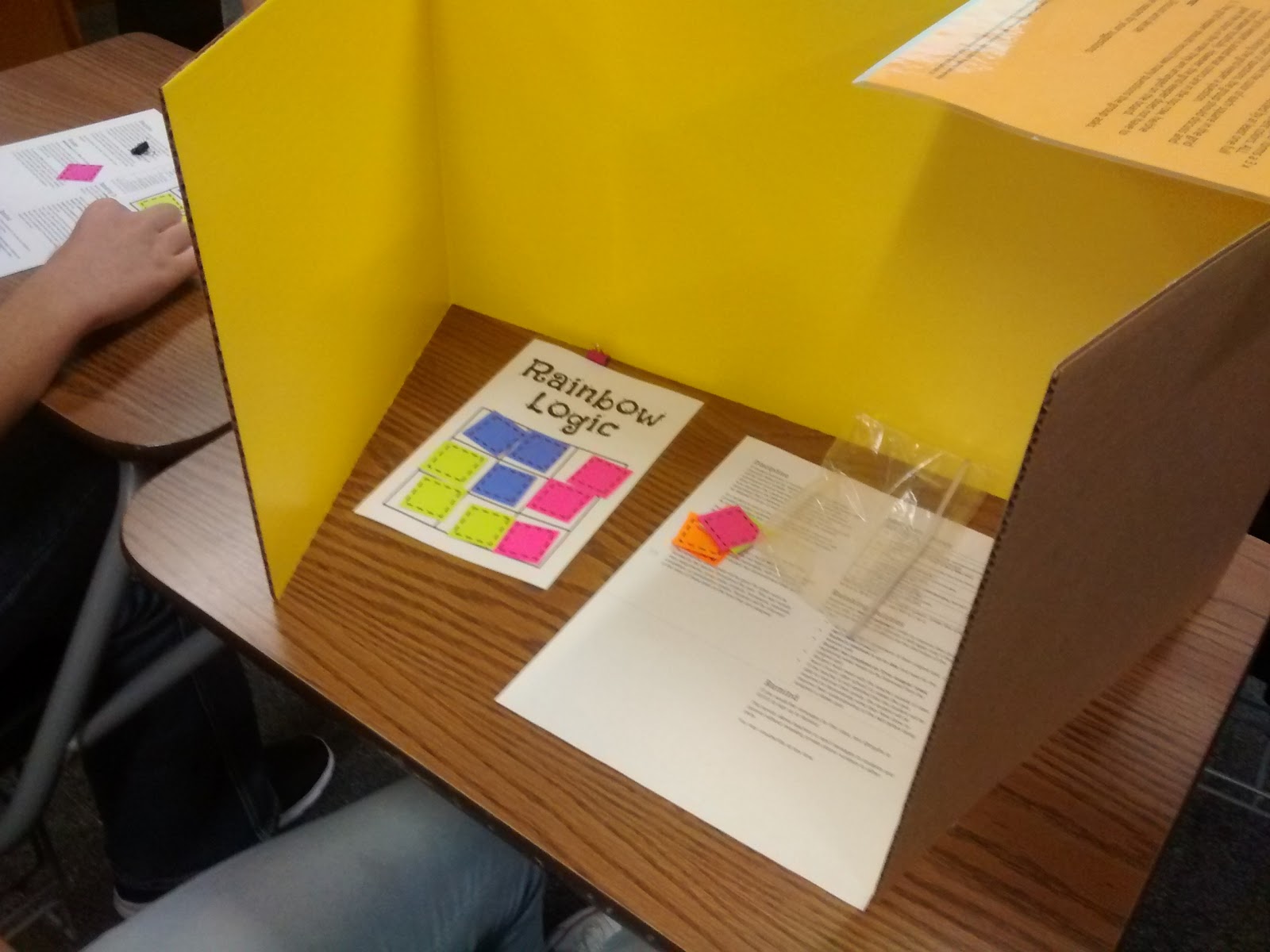
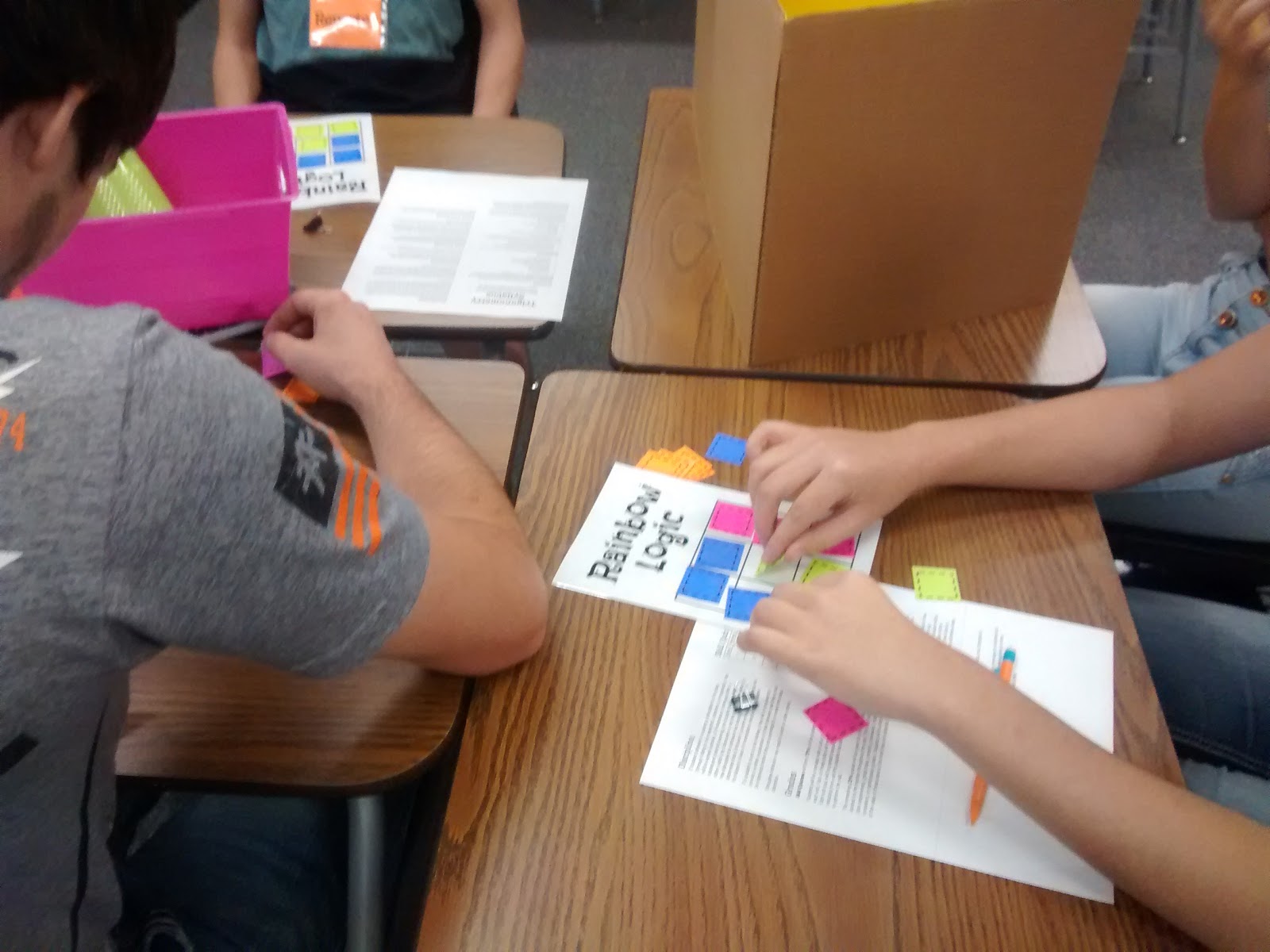
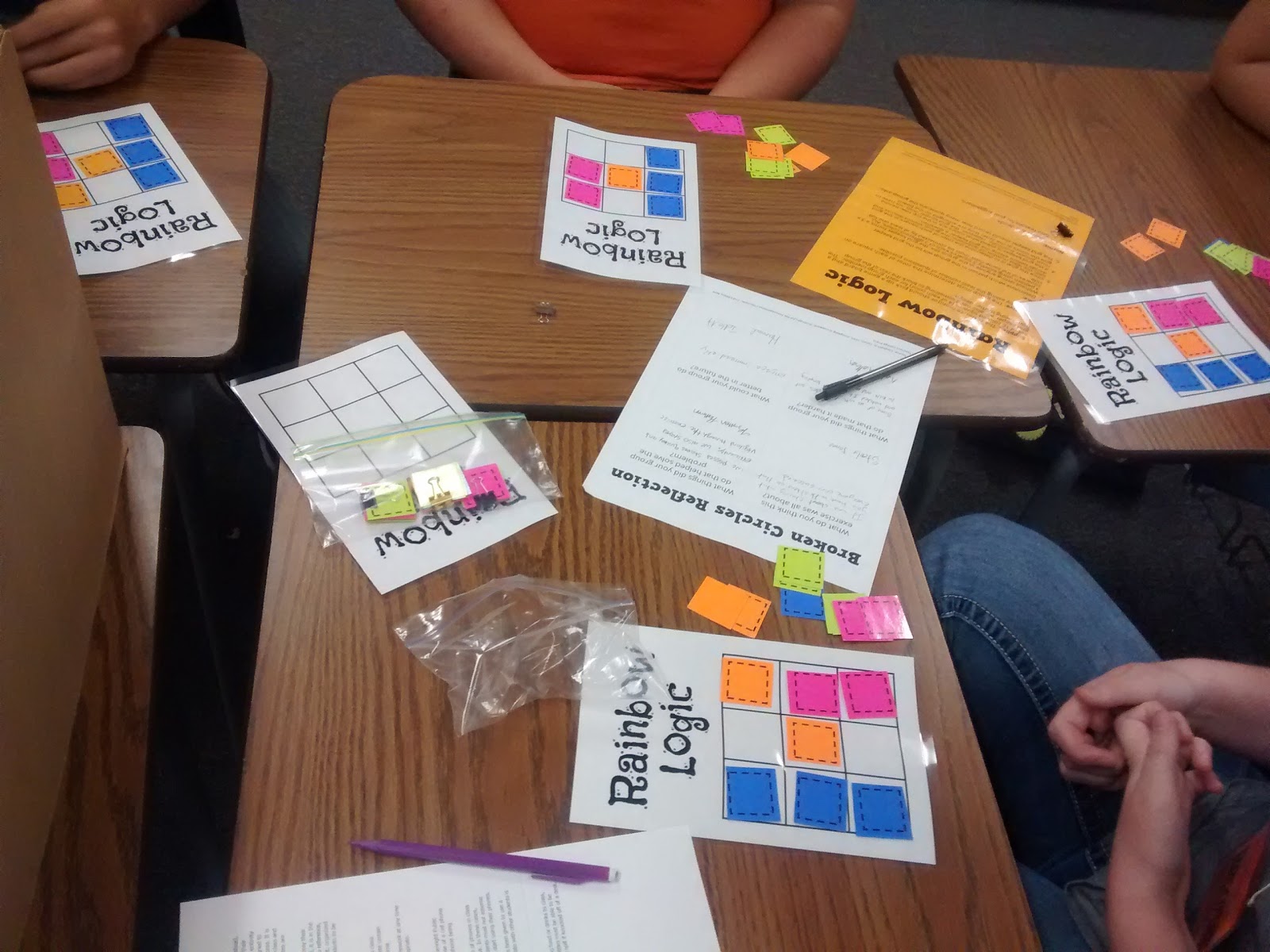
I definitely have gotten through near as many activities as I thought we would so far. Everything just takes twice as long as I think it will. I guess it’s better to overplan than underplan. 🙂
August 25, 2016 – Day Three: Rainbows, Rules, Cubes, and Llamas
I’m not entirely sure what to blog about. After a long, trying day of teaching and a forty-minute walk around the neighborhood, I don’t exactly have the energy to recap everything we did today at school.
All of my classes are in different places at the moment which both makes things very exciting and super complicated. When each class comes in, I have to have them remind me exactly what we did the previous day. One good thing that results from this is it means I’ve been able to use almost all of the group work activities I prepped this summer. My students just each got introduced to a different subset of those activities.
So, I guess here’s a quick overview of what went down today.
* Some classes completed Rainbow Logic. I’m realizing just how much practice with logic they need. I challenged them to figure out the grid in as few questions as possible. SO many of the groups took this to mean “Ask two questions and guess where things go after that.” Then, they would brag about solving the puzzle in only two questions. Yeah, if you ask two questions and then every group member “guesses” a different solution, one of you will probably guess it correctly. Of course, they insisted that they weren’t guessing. We need to work a lot on making informed decisions this year. Whenever group work hasn’t gone as planned this year, I keep reminding myself that the activities aren’t magic. But, they are revealing so many areas in which we need to work this year. And I guess that’s exactly what I’m going for during these first few days of school.
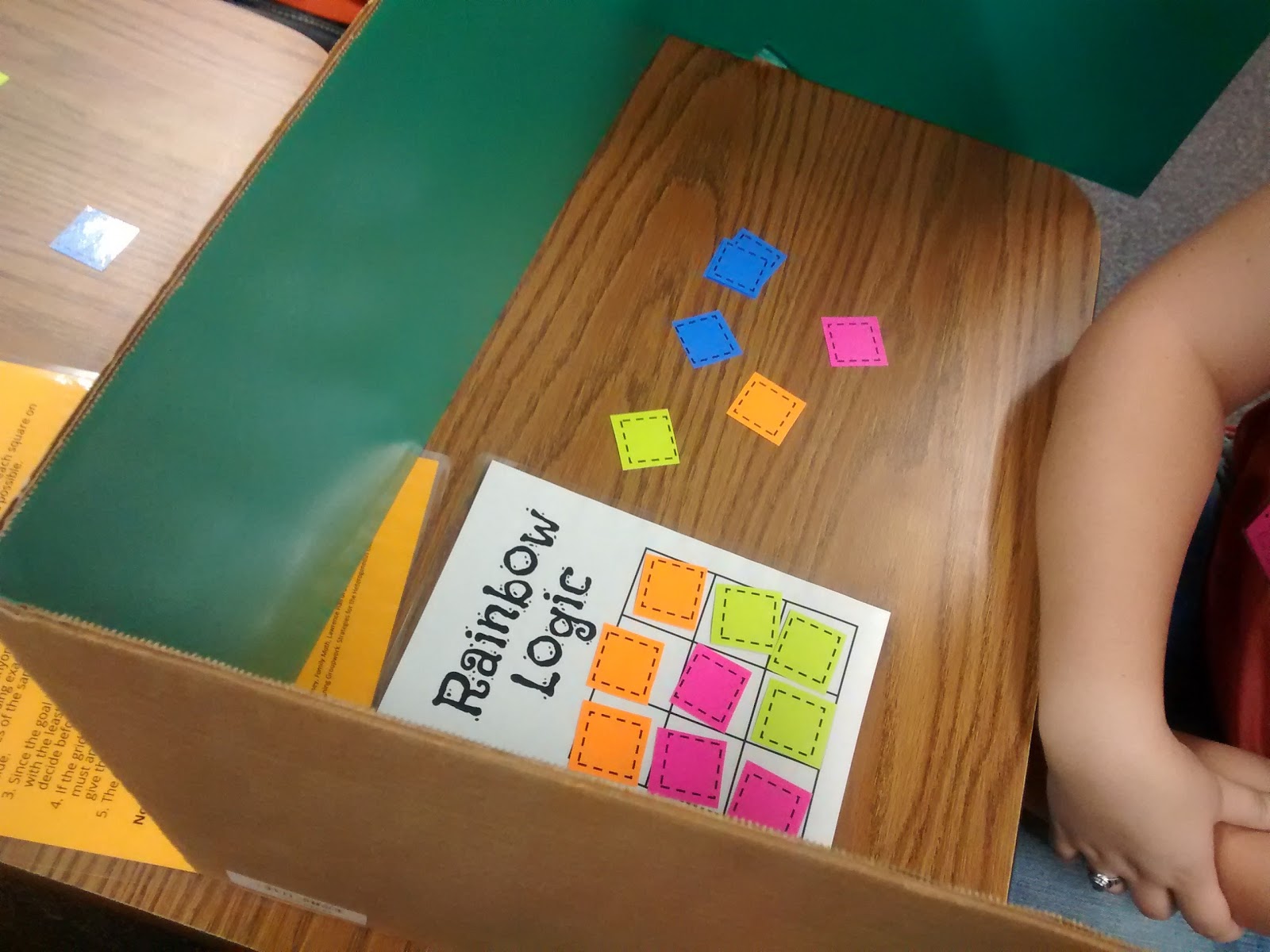
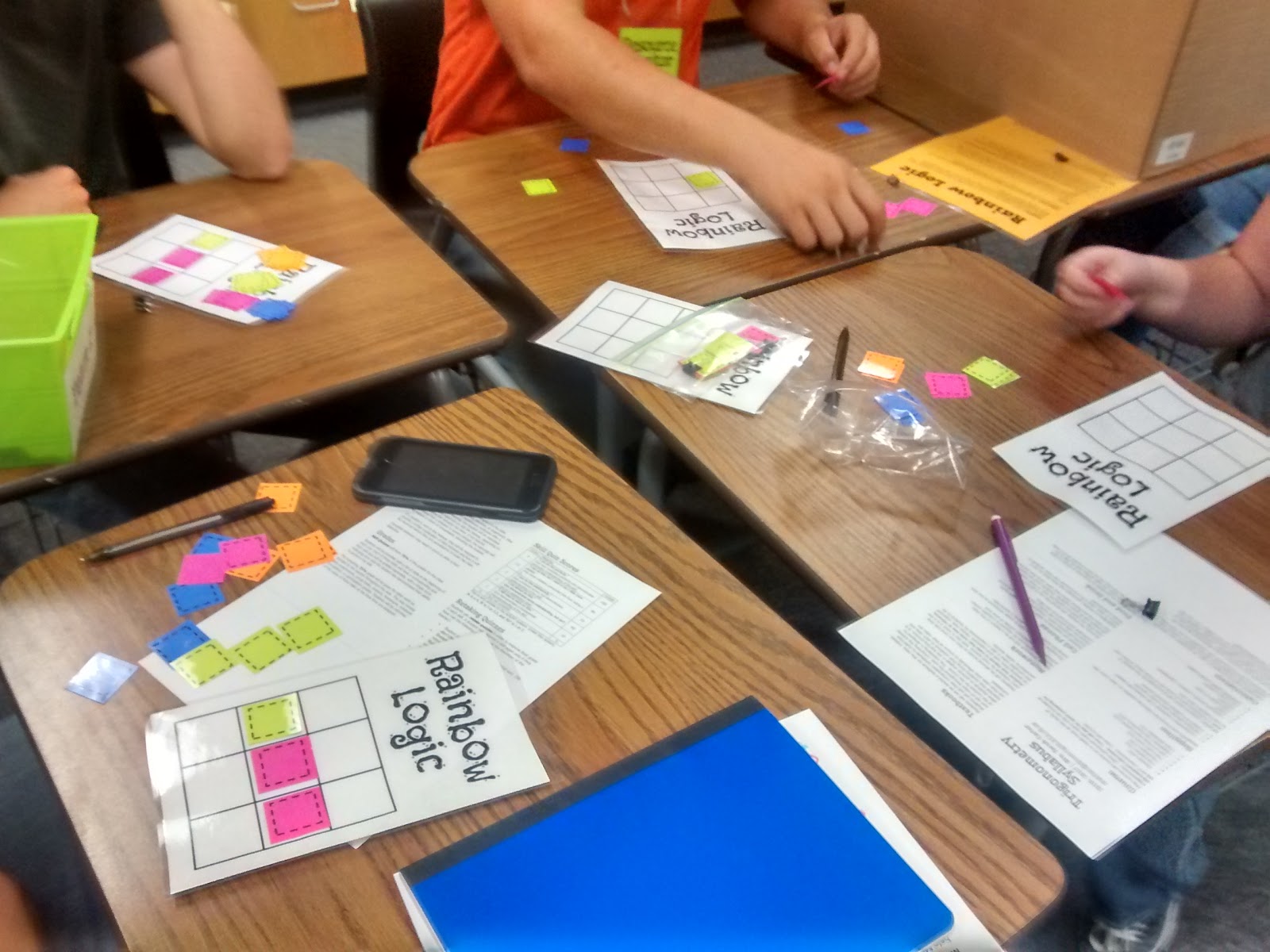
* My trig students completed the Lonesome Llama project from IMP. This took waaaaaaaaaaaayyyyyyyyy longer than I thought it would. One group figured it out in 32 minutes with one wrong solution along the way. My other group also worked for about 30 minutes, but they were only able to present me with 3 different solutions. The one problem that plagued this group was that they didn’t notice some of the cards had octagons while others had hexagons. After doing it with juniors/seniors, I’m too scared to do it with my freshmen. This activity did keep this group super engaged. And, I got to eavesdrop on a lot of student communicating and plan making/revising.


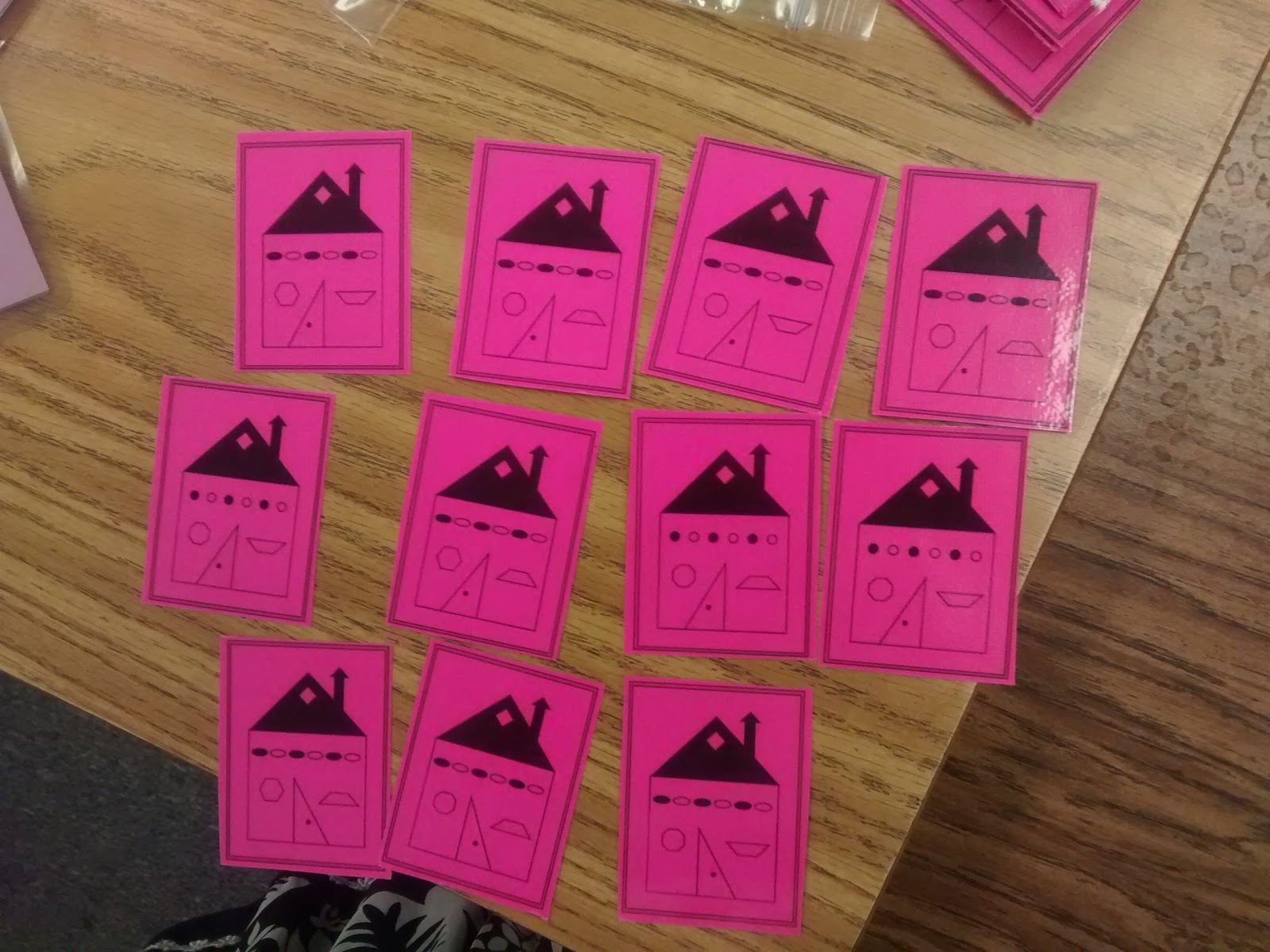
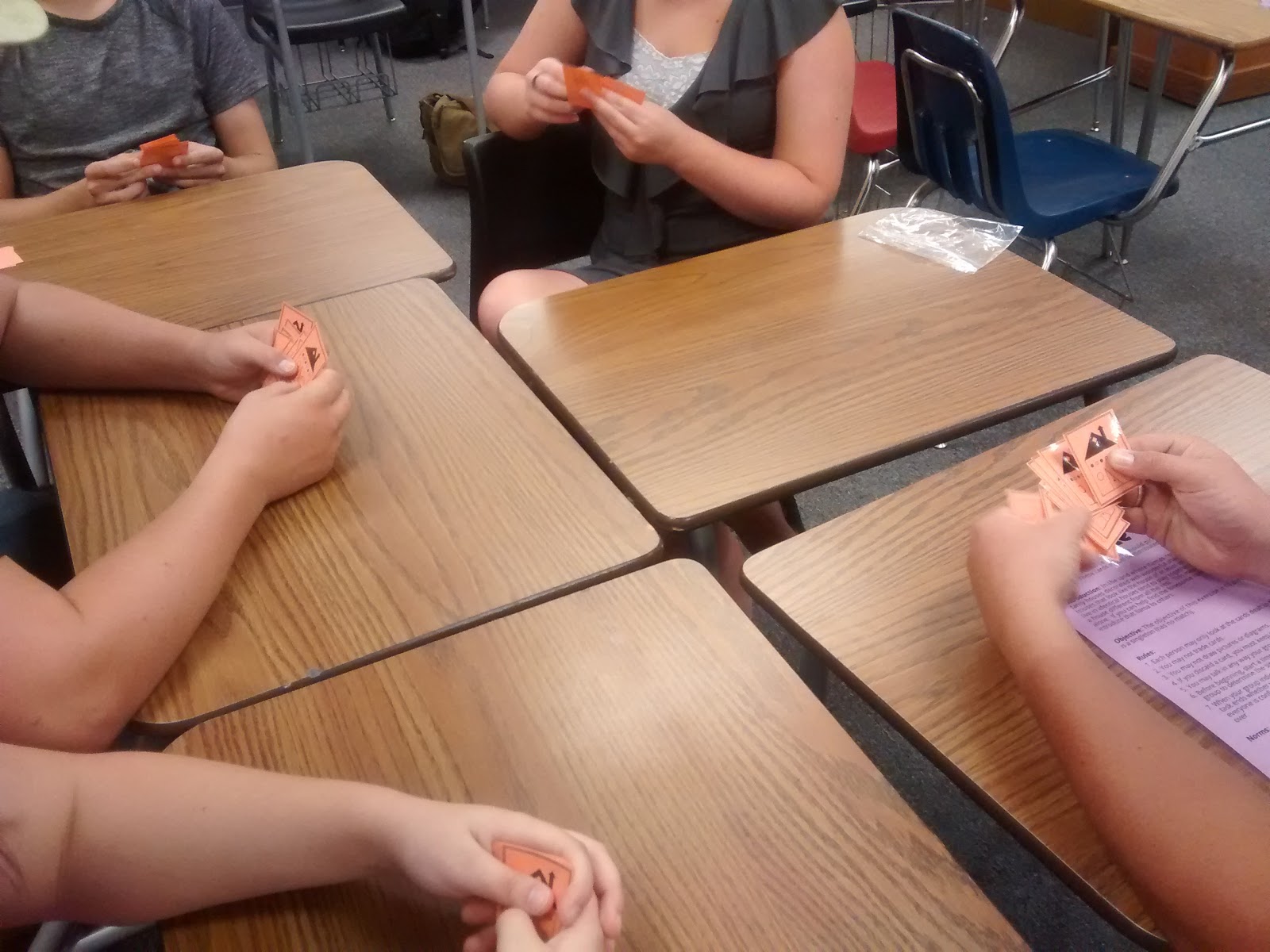
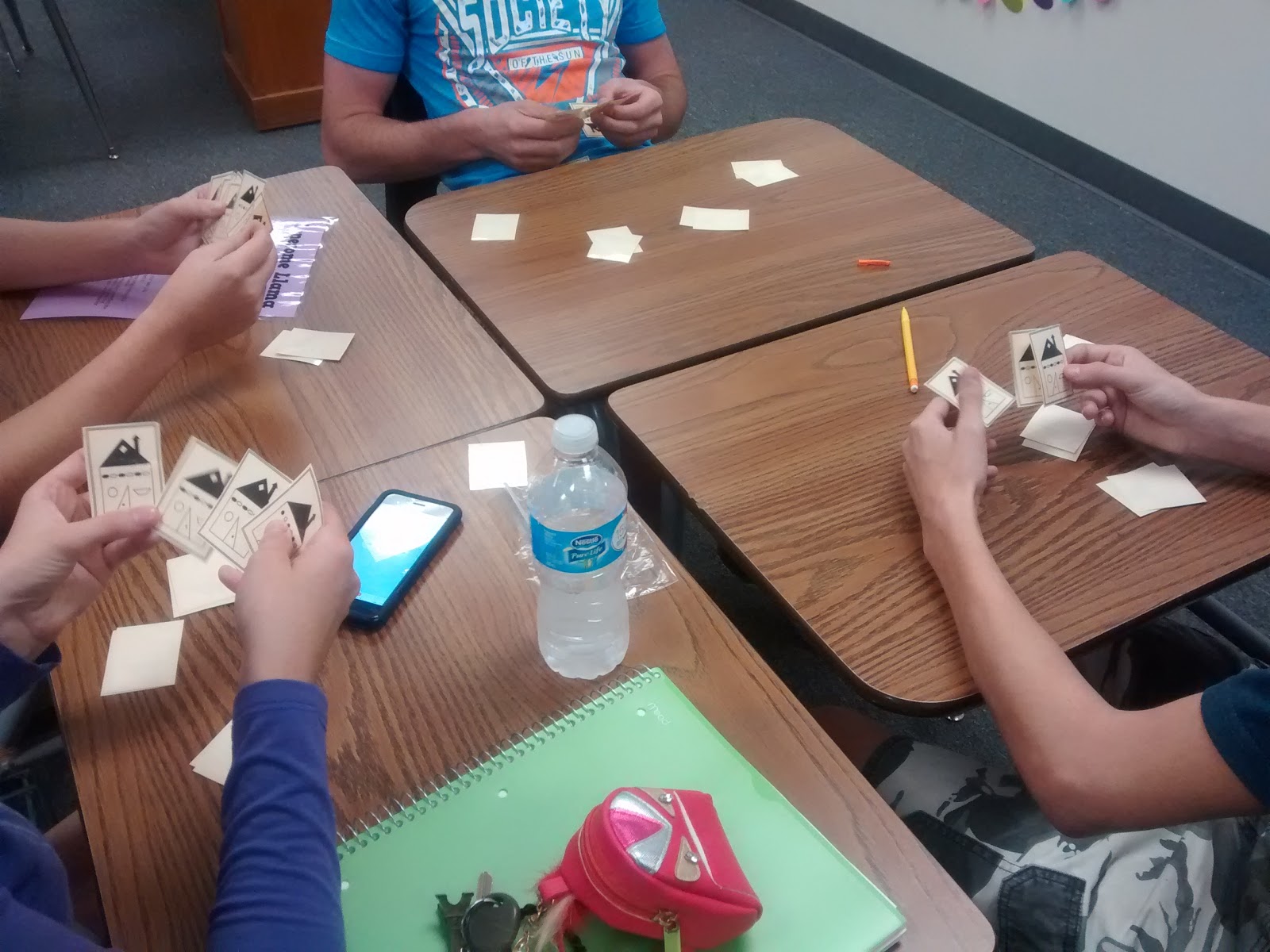
I told myself this was going to be a short post, but it’s turning pretty long. I guess I like to talk about teaching! 😉
* Another of my classes played Guess My Rule. Again, I realized just how much practice my students need with logical thinking. Instead of trying out different cards and making sure their rule was absolutely correct, they were just blurting out a million rules and hoping one of them would stick. I wish I could police this better, but there is only one of me and so many groups of them.
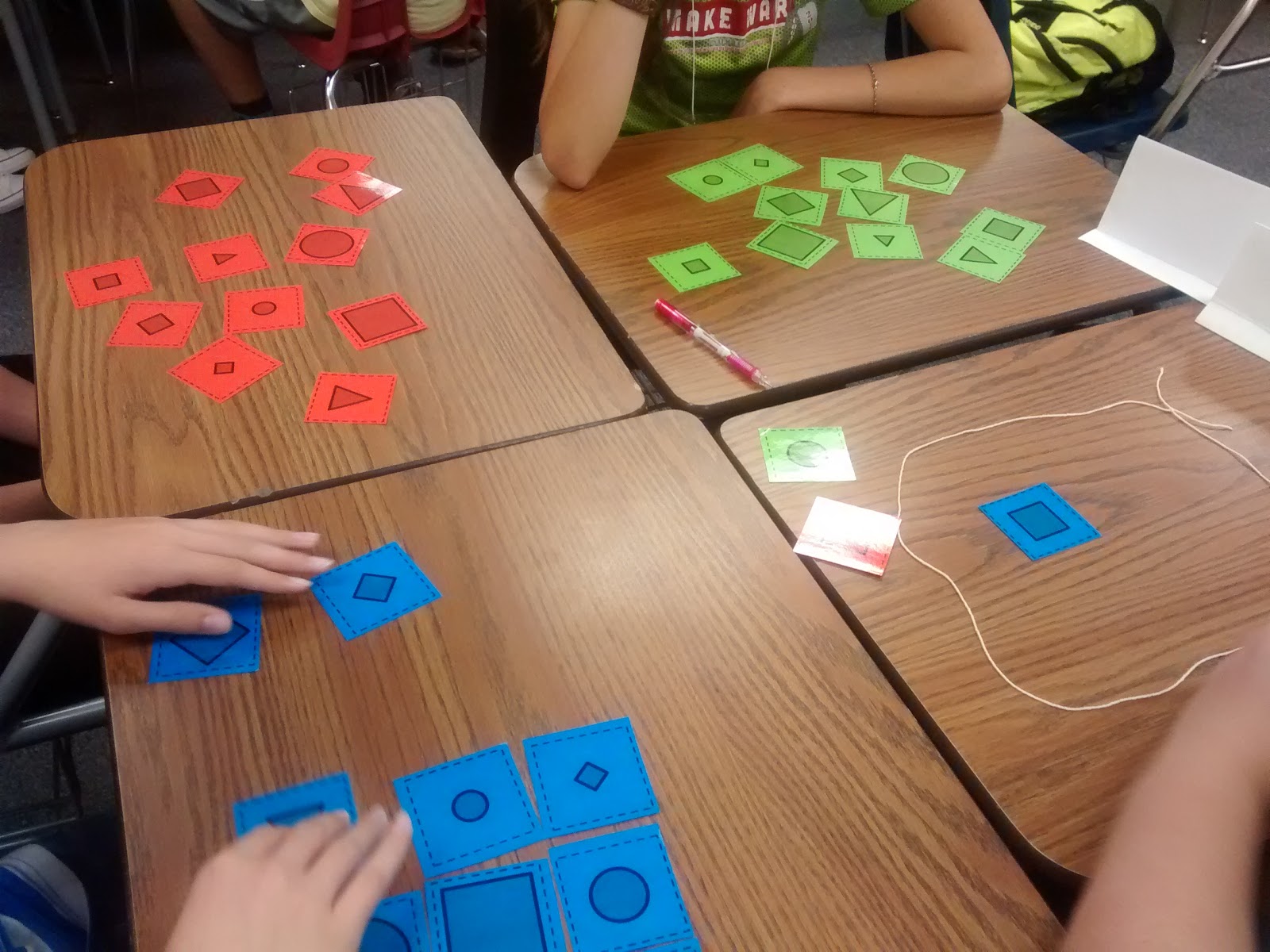
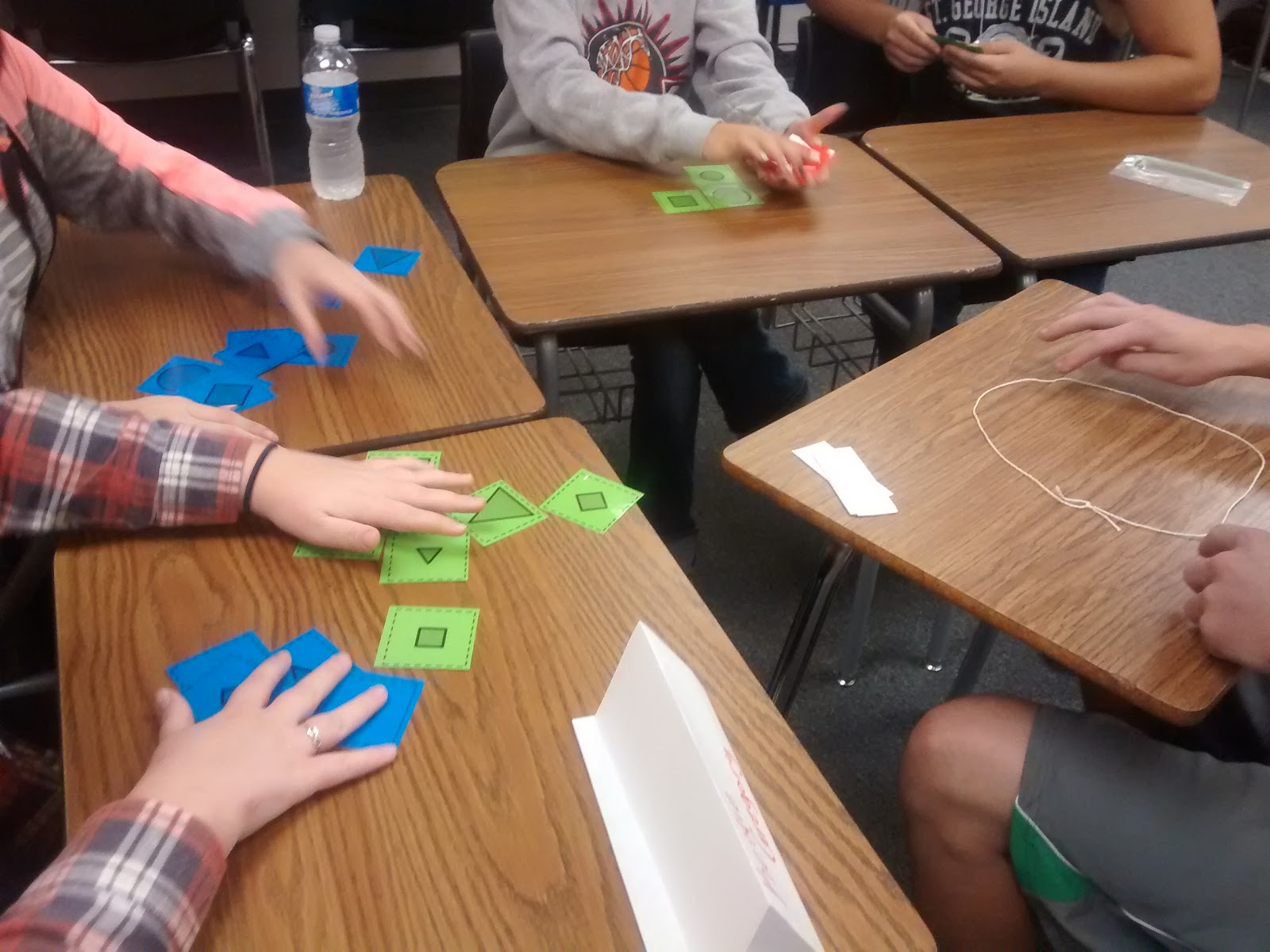
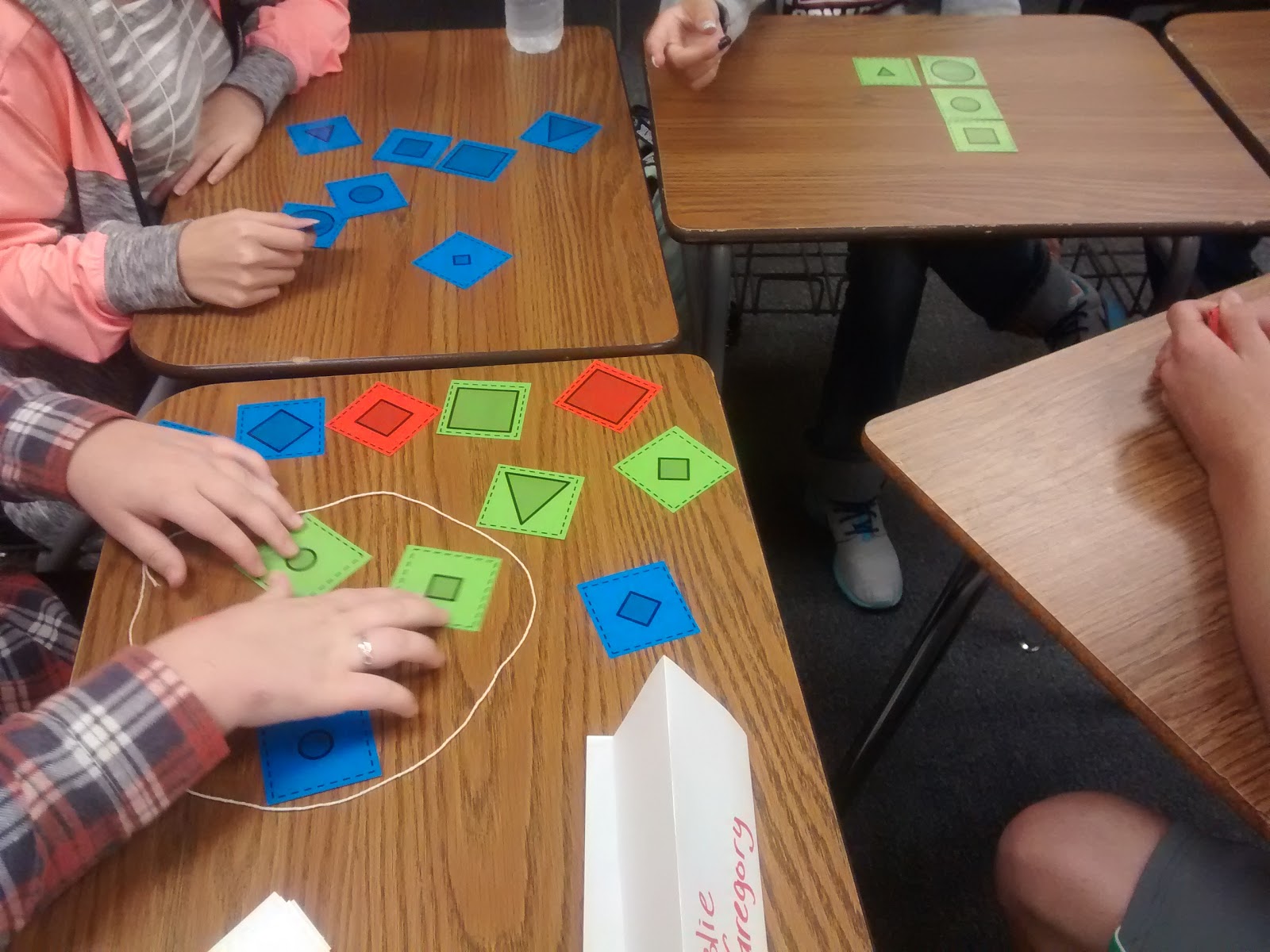

* Guess My Rule only took about half the class period, so we worked on Build It for the last half.
I learned about Build It from Stanford’s website. The activity is from the book Get It Together: Math Problems for Groups Grades 4-12.

Here’s the task card I gave my students:
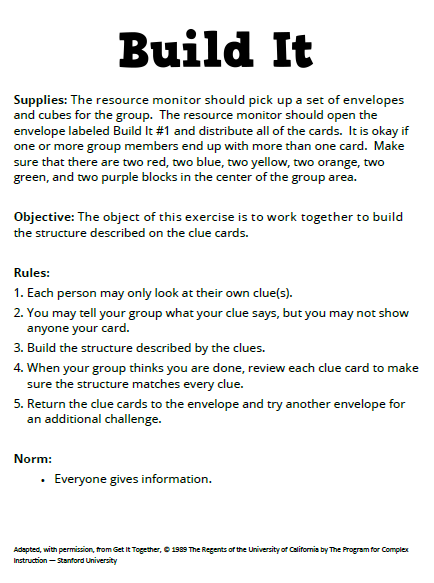
Each student was given one or two cards. Without showing their cards to their teammates, they had to use their linking cubes to build the prescribed object.
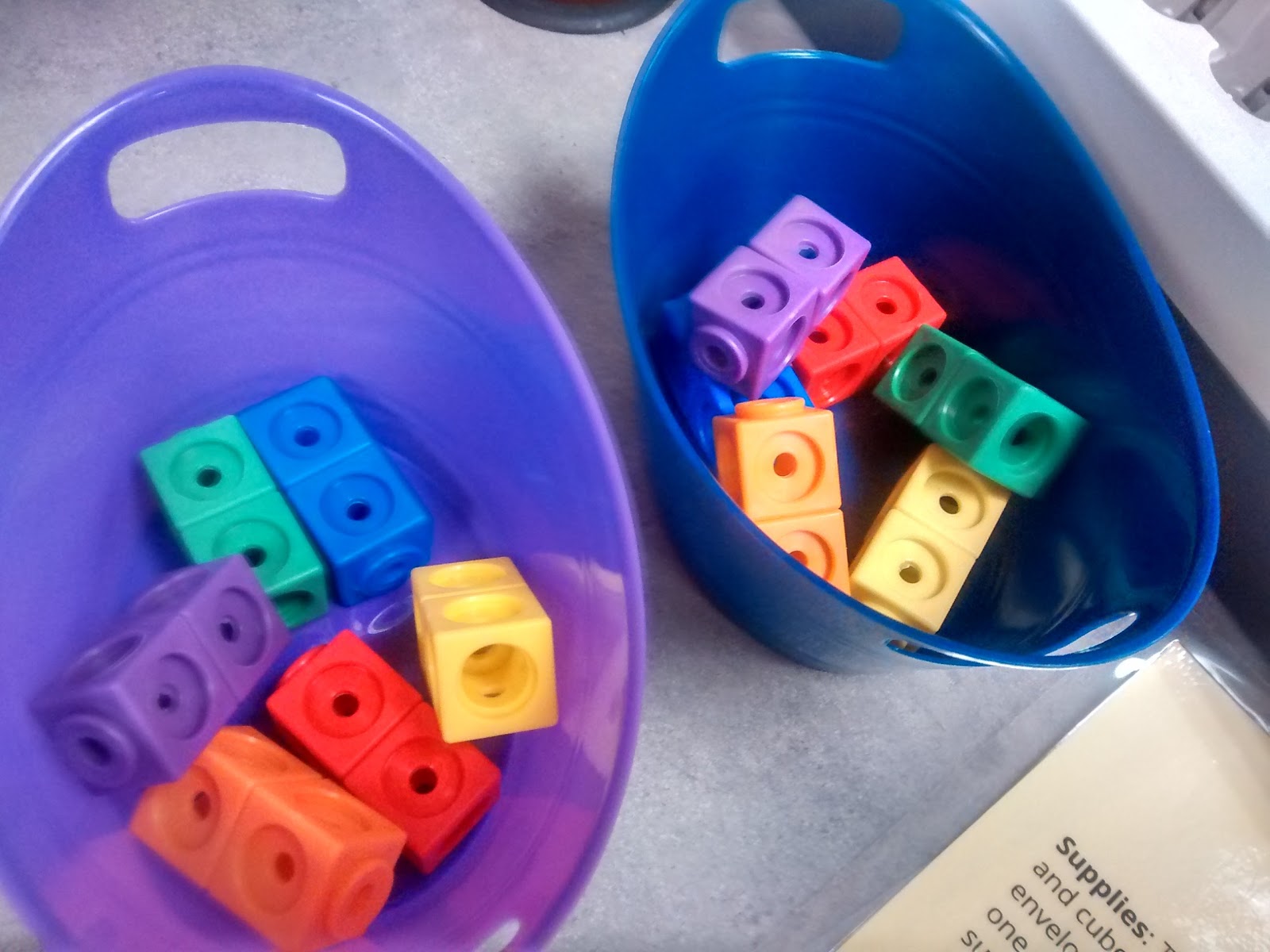
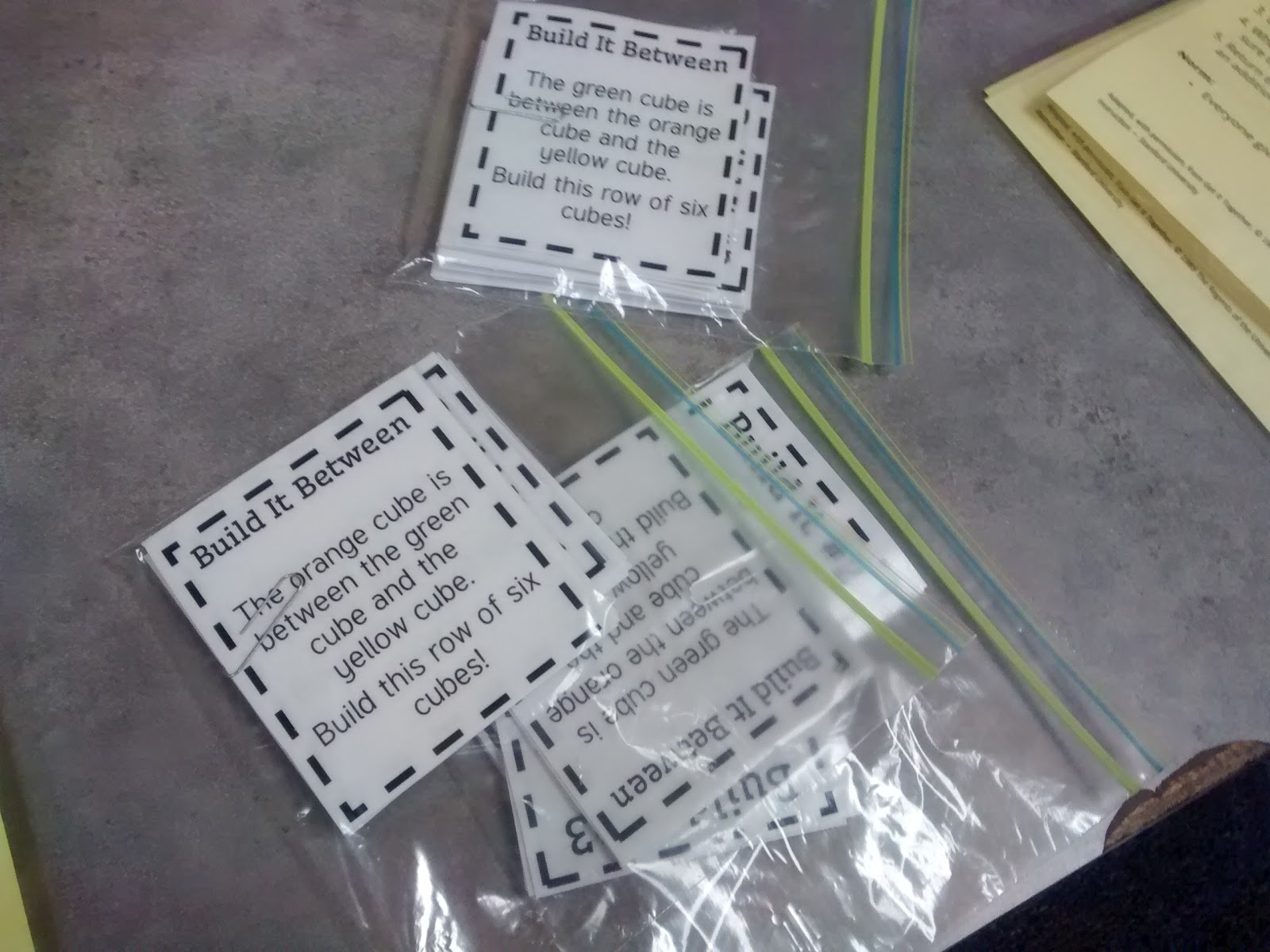
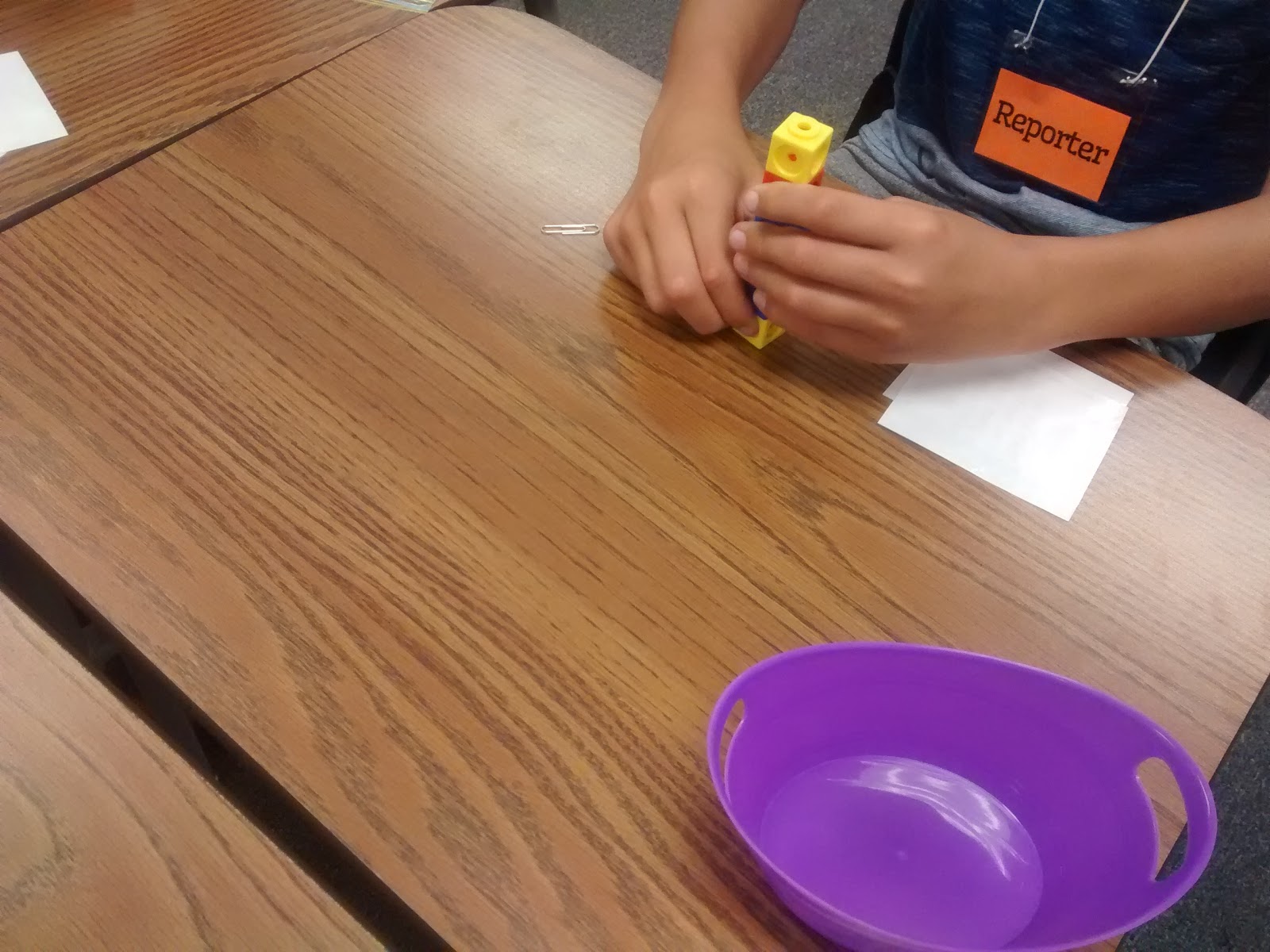
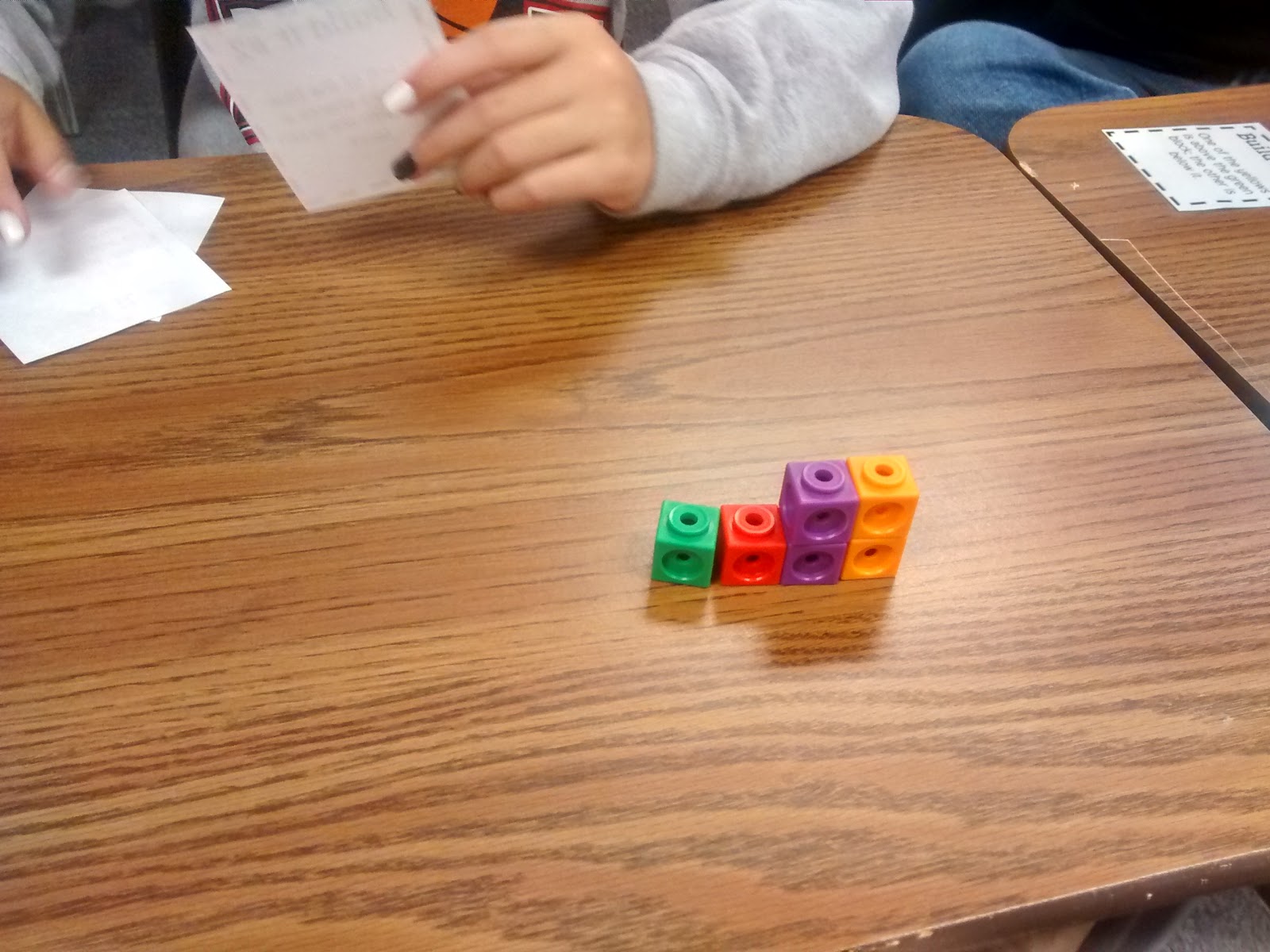
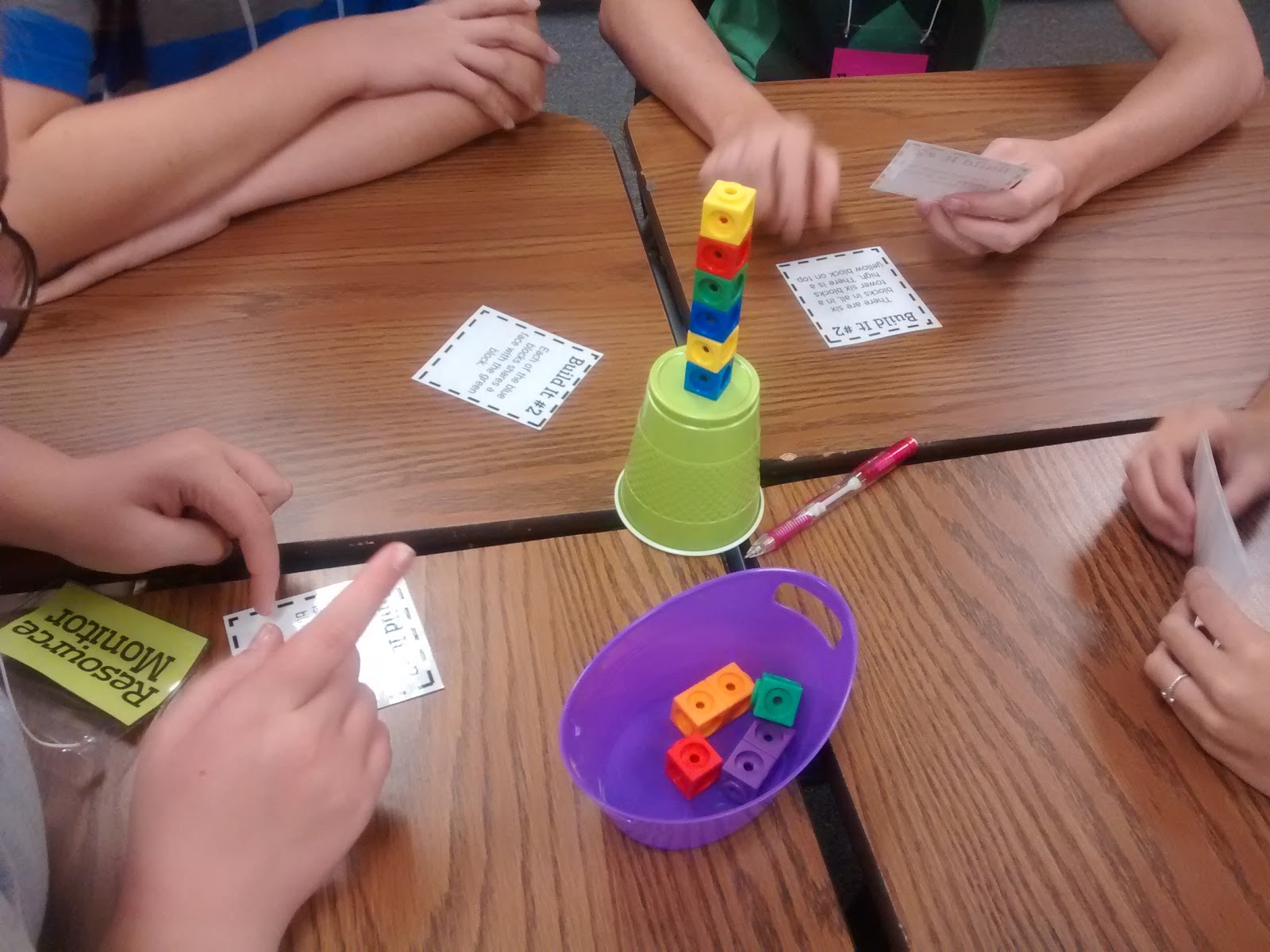
My students struggled with this activity at first, but as the activity continued they definitely got into it. They were so excited when they figured out each puzzle. I’d definitely like to do more activities like this!
* I had the “five minutes left and not enough time to do the next activity” scenario happen a few times today. With one class, I challenged them to “Count to Ten” as a class. No talking allowed other than saying numbers. If two people (or more!) say the same number at the same time, the class has to start over again at 1. My first period was really struggling with this until a student yelled out that they should raise their hands before they said a number. This helped them complete the activity, but they weren’t supposed to talk. So, it kind of defeated the purpose of the activity.
* The other time filler activity I utilized today was Julie Morgan’s Thirteen game. The kids really enjoyed this activity, and they begged to play again. It’s a definite keeper! There are also a bunch of other great ideas in the same post! This is only what went on in my math classes. Physical science is another story. We didn’t finish, so I can get away with blogging about it tomorrow!
August 26, 2016 – Board Games, Numeracy, Document Cameras, and Traffic Lights
Quick post today because it’s late and I’m exhausted from a full day of teaching and an evening at the Tulsa Math Teachers’ Circle. We had an ice cream social tonight with board games. So fun!
Here’s a pic of Shaun and me that someone posted to our facebook group:

We’re obviously focusing super hard on figuring out how our game worked. The game we were playing was called Love Letter. It took us a few minutes to wrap our heads around, but I ended up really enjoying it. With only two people playing, the rounds went rather quickly. I’d definitely play it again.

The real reason I started writing this blog post was to tell you about the exciting packages I got in the mail today. A lovely blog reader sent me a book to read!

Building my students’ numeracy skills is a major goal of mine, so I’m really looking forward to diving into Pam Harris’ Building Powerful Numeracy for Middle School and High School Students book. I’ve heard it recommended over and over and over in the MTBoS!
I also received a document camera from Ipevo. I’ve had a document camera since I started teaching, but it has recently stopped working. It wouldn’t even power on! Due to the school’s budget cuts, I knew that it probably stood no chance of getting repaired or replaced any time soon. Remember: I’m teaching at the school that forces all the teachers to leave by 4 p.m. to conserve electricity costs!
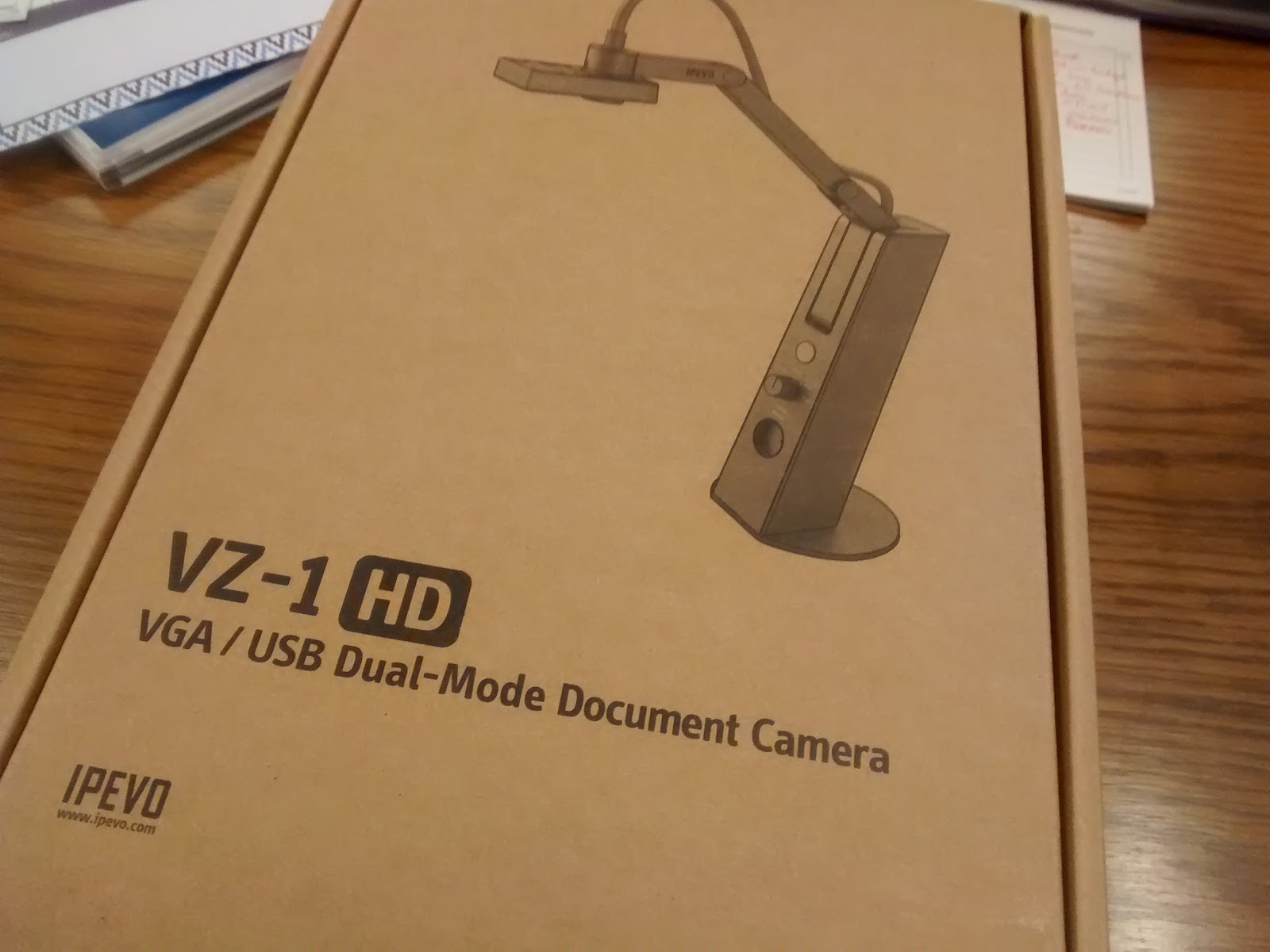
I remembered hearing a few years ago that Ipevo had a program where they gave teachers free document cameras. It’s actually called the Ipevo Wishpool. This month, August, just happened to be another document camera giveaway. They give away different products during different months. (It’s still August, so if you need a document camera for your classroom you could still win one!) You do have to write a short essay explaining why you need it and how you will use it. This month’s gift is a VZ-1 HD VGA/USB Dual-Mode Document Camera. It was super easy to set up. I love that it takes up so much less desk space than my old SMART Technologies document camera!
Not everyone wins. Shaun requested one from Ipevo the day after I did, and my wish was granted and his wasn’t. 🙁 But, I think it’s definitely worth a try if you think you could use one in your classroom! Mine came in the mail today, and I already have it set up. I used it to demonstrate to my students how to play the Traffic Lights game from Nrich that Julie Morgan blogged about.

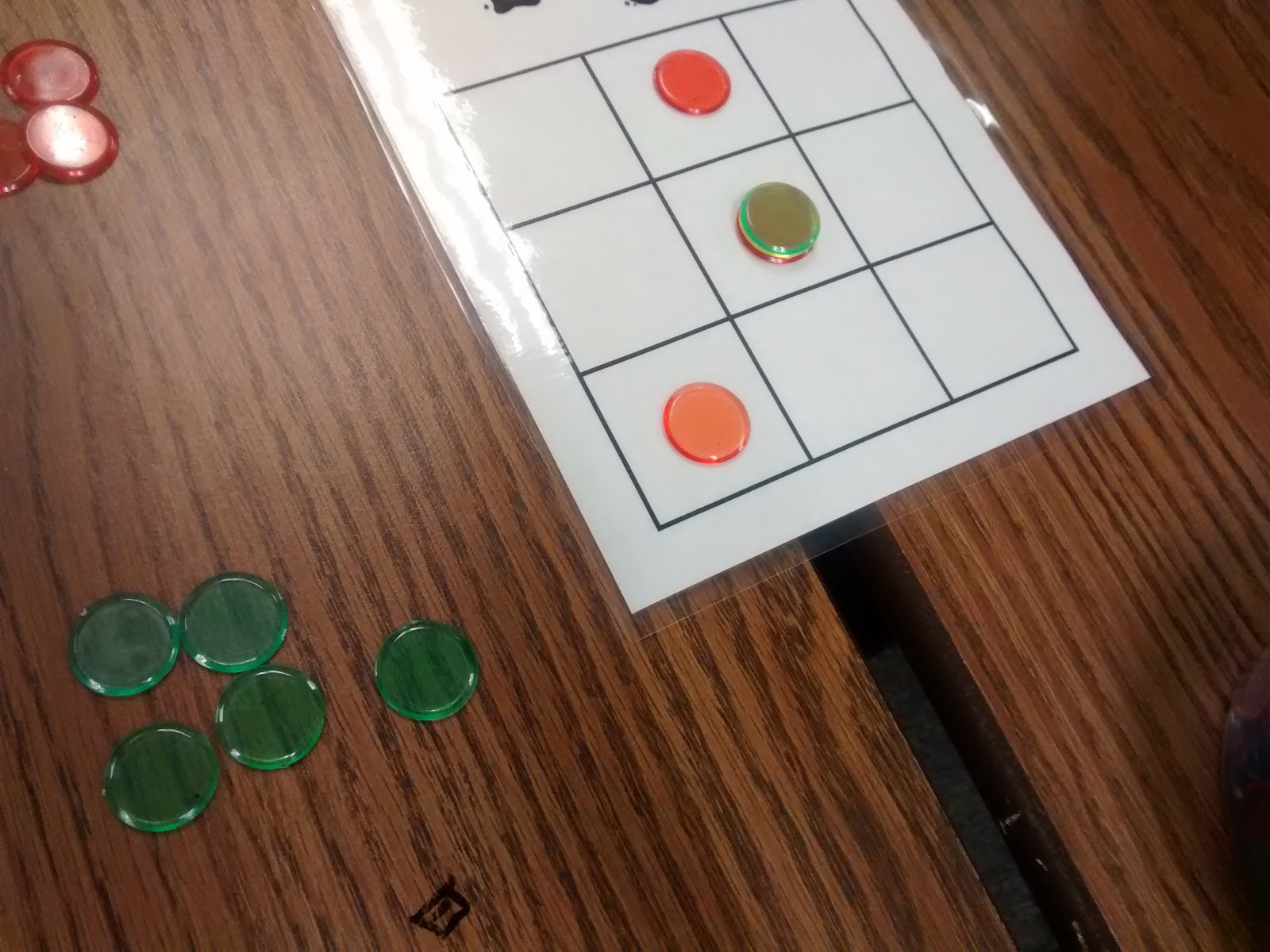
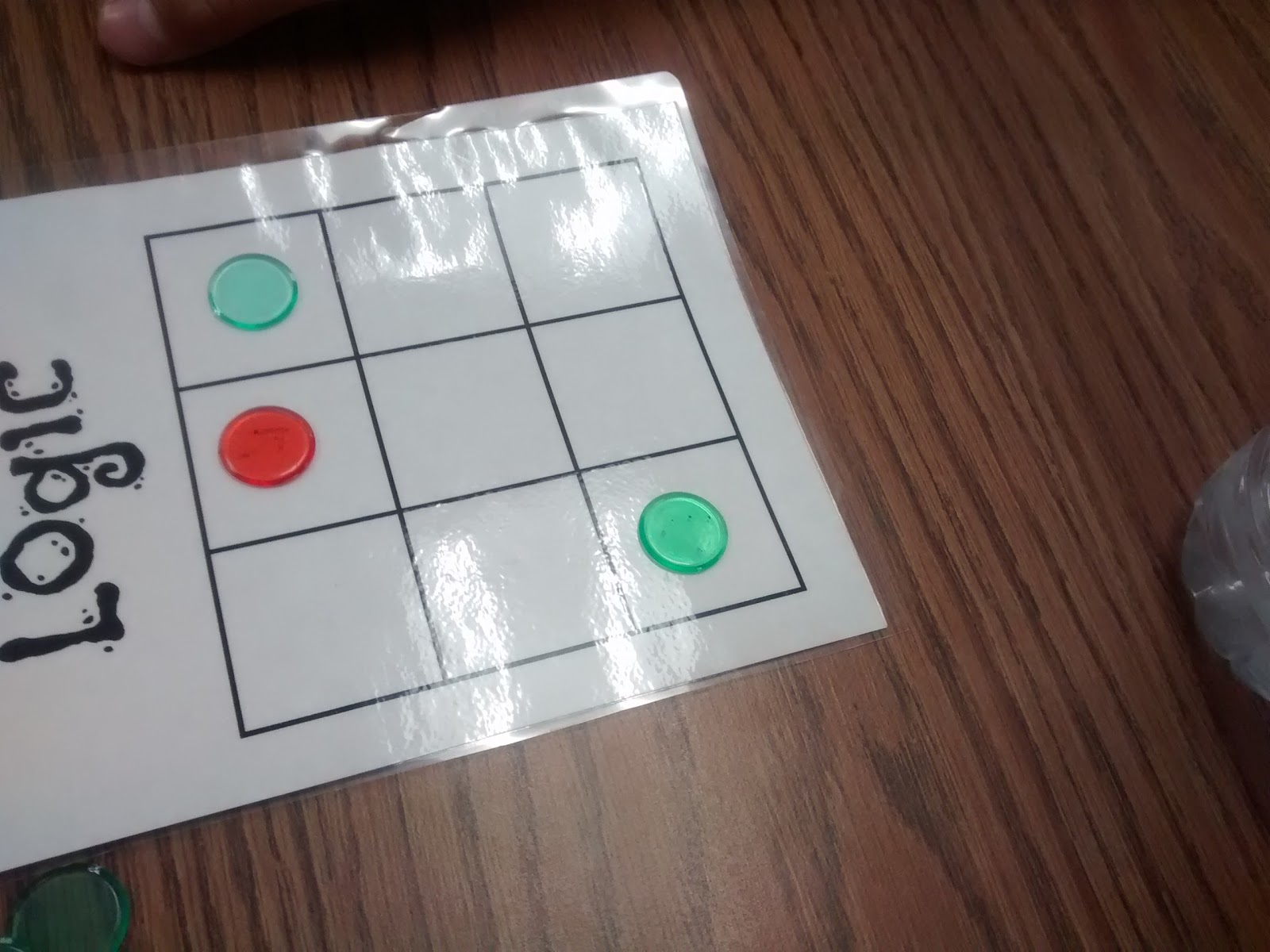
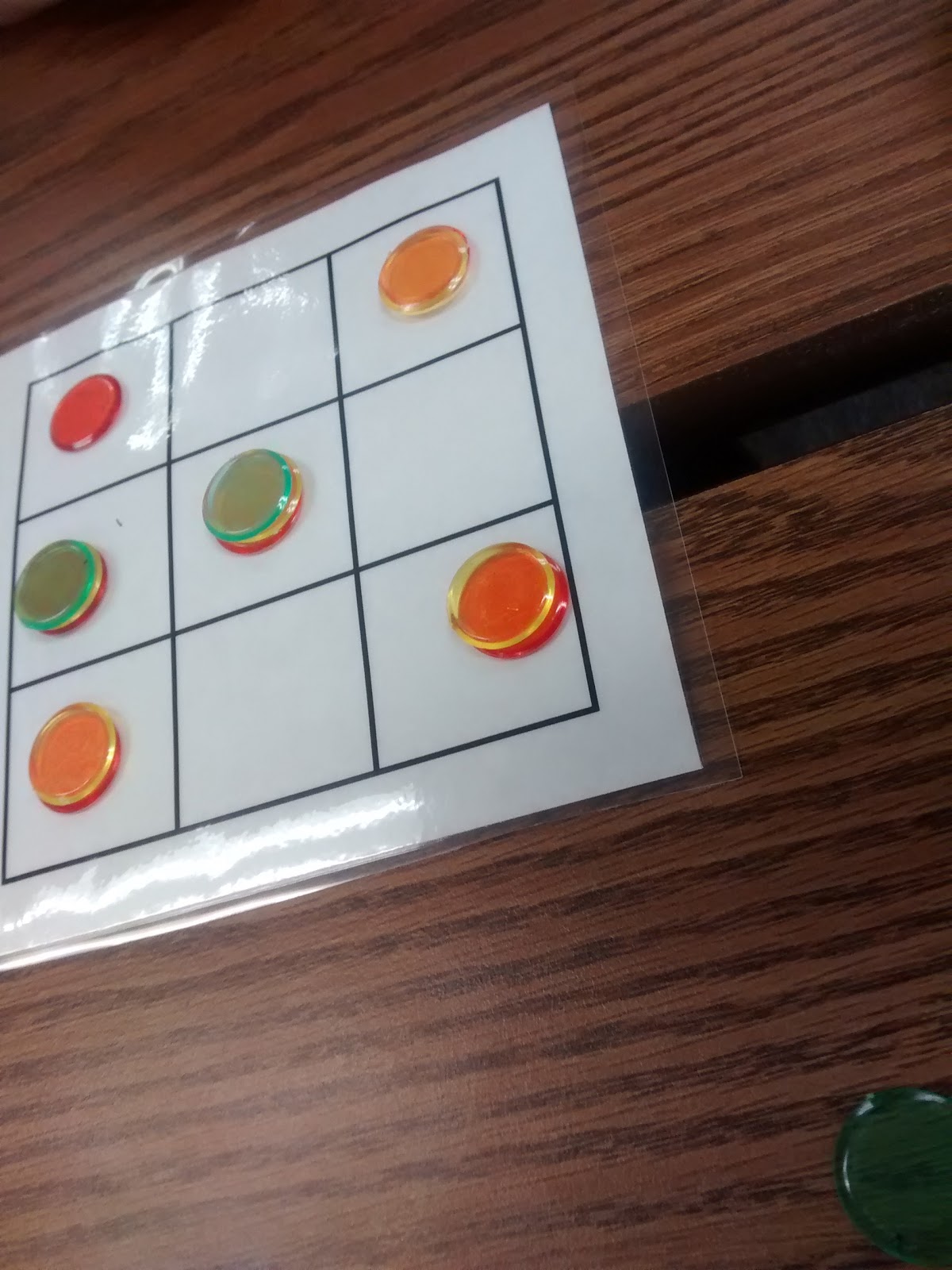
I had my students reuse the boards for Rainbow Logic for this activity. But, I think I’ll make up a dedicated set of boards for this activity in the future that has the rules printed on them!
My Math Concepts students (students not yet ready for Algebra 1) really struggled with understanding the rules of the Traffic Lights game. But, my trig students got really, really into it. We ended up setting up a quick bracket and having a Traffic Lights tournament!
August 31, 2016 – Number Talks and Numeracy Skills
This has been an exciting week because I started number talks for the first time.
This summer, I read Making Number Talks Matter after hearing it recommended over and over and over by the #MTBoS.

The book definitely lived up to all of the hype! I read the entire book in two days. It was just that good! Before I decided to jump in and buy the book, I watched several awesome youtube videos about number talks. I’d recommend this video by Sherry Parrish and this video by Jo Boaler. I also highly recommend this blog post by Sara VanDerWerf.
I’d heard a lot about number talks, but I always dismissed them as something I didn’t have time for. When I found out this summer that I would be teaching a math concepts class (a class for 9th graders not yet ready for Algebra 1), I was excited because I knew I would finally have time to try out number talks.
As I started to read the Making Number Talks Matter book, I began to realize that I need to do these in all of my classes. One thing I especially love about this book is it’s written for teachers of grades 4-10. So, it shows how these seemingly elementary math concepts apply directly to the high school math classroom. Plus, my students need serious work with these “seemingly elementary math concepts.” I’ve decided to make mental math my big focus of 2016-2017. And, number talks are how I’m going to provide my students with practice.
The authors of Making Number Talks Matter suggest starting with dot talks when you first introduce number talks because it’s a problem that all students can participate in. I wasn’t sure how my students would take to the dot talks, but they have been LOVING them! It’s been eye-opening for me to see the different ways my students see things. And, kids are begging to share with the class how they saw the problem. I’m trying to keep them short (5-7 minutes), but I know it is time well spent! It’s also a good sign when they’re sad that they only get to do one each day!
I have pictures of all our dot talks so far, but they’re on my school computer. So, you’ll just have to take my word that my students are doing an awesome job! 😉 We’ll be doing two more dot talks this week. On Fridays, we’ll be doing a 5-minute Numeracy Ninja test. Numeracy Ninjas is an awesome free UK numeracy building resource. I know that timed tests are controversial, but I want my students to be able to see that their mental math skills are building as the year progresses. I want them to see number talks as useful and productive conversations.
Here are our Numeracy Ninja books for the first 10 weeks of the year:

I printed them in booklet form on letter sized paper, folded them in half, and stapled them on the folded edge. Next week, I think we’ll jump into subtraction problems first. I’ll be sure to report back with how it’s going! I’m so excited that I’m actually doing something about my students’ numeracy skills this year instead of just complaining about their lack of numeracy skills.
September 5, 2016 – Math = Love In Print!
Quick post today about something I’ve been meaning to blog about since this spring! In my defense, a lot has happened since then…
I am proud to announce that I was featured in the Spring 2016 issue of the University of Tulsa’s College of Engineering and Natural Sciences Magazine. When I was featured on NPR, it naturally caught the eye of my alma mater.
They contacted me to see about sending a writer/photographer to my classroom, and I agreed!
Here’s the issue I was featured in:

My picture even made it in the table of contents!

And, here’s my story. It was definitely cool seeing myself in print for the first time!

You can read the full text on TU’s website.
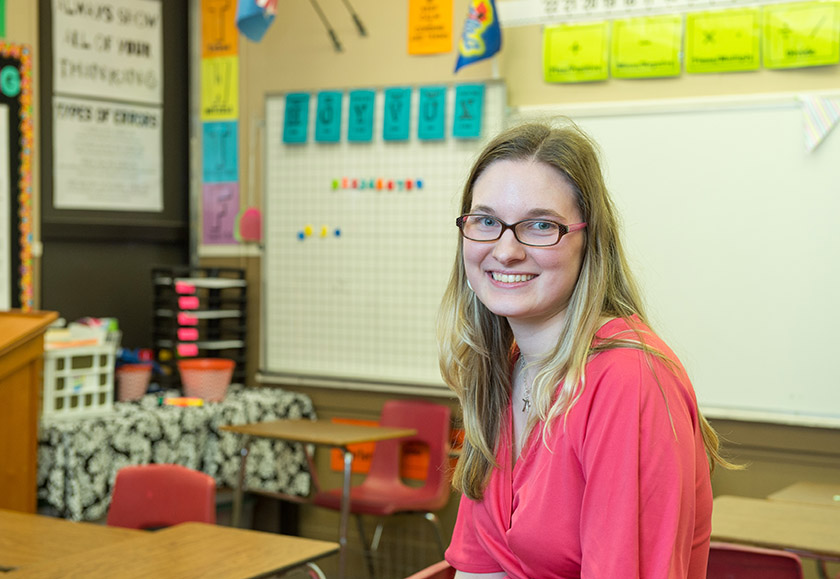
Oh, and don’t freak out, but I decided to change my twitter profile pic for the first time in over 2 1/2 years. I usually hate photos of myself, but I loved how this photo by the TU photographer turned out!
September 16, 2016 – Things Teenagers Say Volume 41
A new school year means a room full of new teenagers to say crazy, off-the-wall things. Almost all of my students are freshmen this year, so I feel like that’s even adding to the usual level of craziness I’ve become accustomed to!
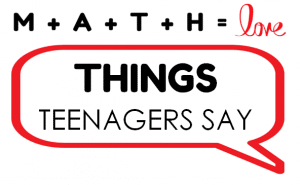
—
This class is like Pinterest!
—
Never get between a man and his glue stick!
—
She thinks it’s creepy because she’s never seen my forehead.
—
So, you’re saying I could get places faster if I just skipped?
—
What a student says when he’s not happy with the prize you gave him:
You could have just robbed a jewelry store and gave us diamonds.
—
Please do not fall. I’ll cry!
—
Man! Your cabinet makes you look like a sneaker head!
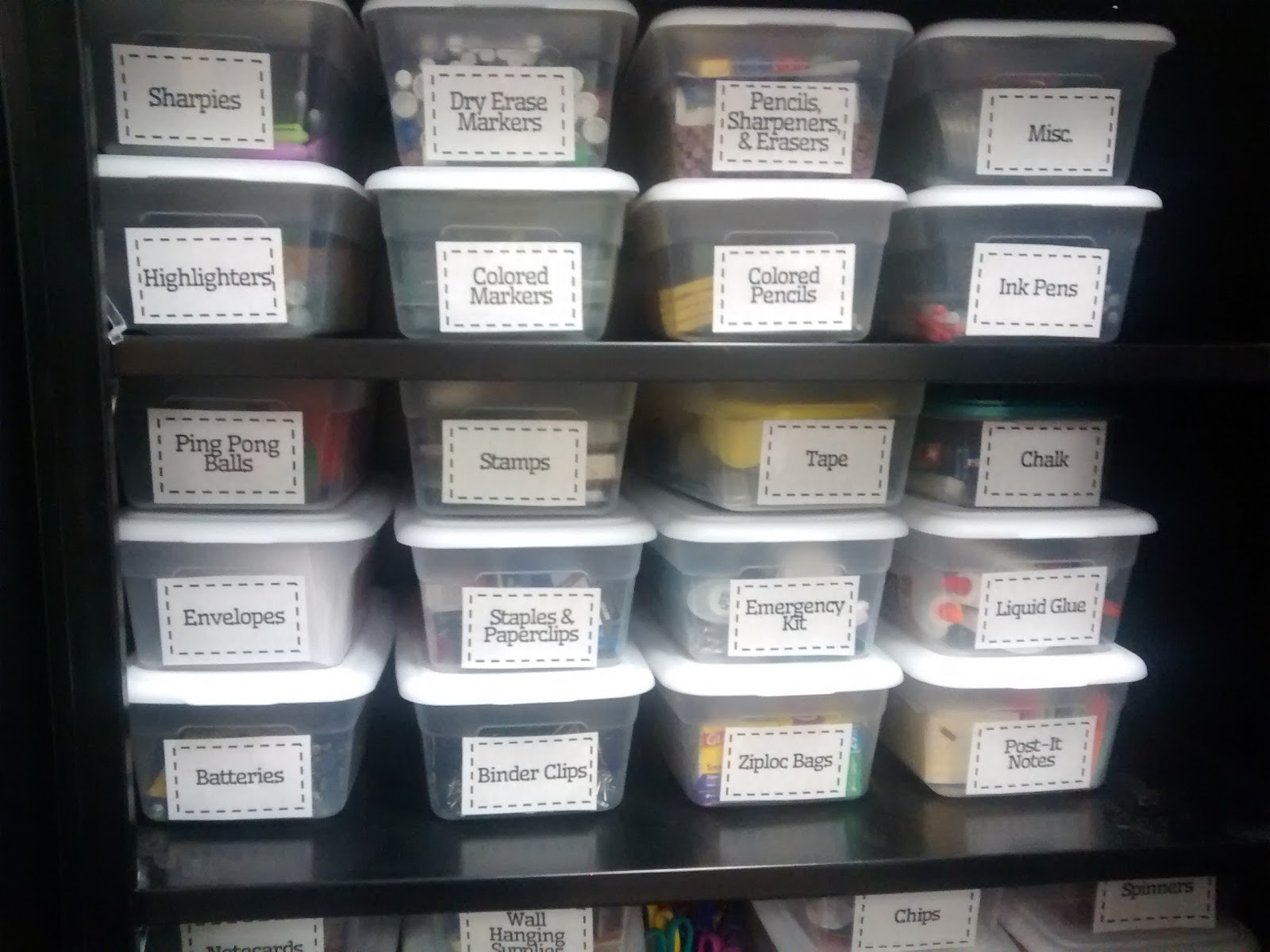
—
Student 1: I already have my prom dress. It’s white and gold.
Student 2: You mean black and blue?
Student 1: I hate you!
—
Student 1: Your mom can make some bomb pancakes!
Student 2: I know. I live there.
—
I glue like a 3rd grader.
—
You call your car Petunia?!? Mine is Myrtle!
—
You’ll learn pretty fast there’s no time to sleep in this class!
—
Google has all the answers. I’m dating Google. I’m going to name my kid Google.
—
That flood we had yesterday was like an inch away from biblical.
—
Student 1: Why are you wearing Jerusalem shoes?
Rest of Class: [Weird, Confused Looks]
Student 1: Jesus was born in Jerusalem, you idiot!
—
Upon realizing that I made four different versions of the quiz:
You are smart! You made each one of these different!
—
Are you trying to kill me? Because if you are, you’re doing a terrible job of it.
—
Fried chicken wants to be mediocre, but it can’t.
September 21, 2016 – Drawing Lines
I’m trying a new strategy this year. It’s not something new; it’s actually something many other teachers are already doing in their classrooms. But, this is my first time trying this.
We’ve been practicing applying the distributive property and combining like terms in Algebra 1. I want my students to realize that they can only combine like terms if they are on the same side of the equal sign or inequality symbol. This is a mistake I’ve seen students make over and over and over in the past few years.
Here’s some notes I typed up for my students to glue in their interactive notebooks:
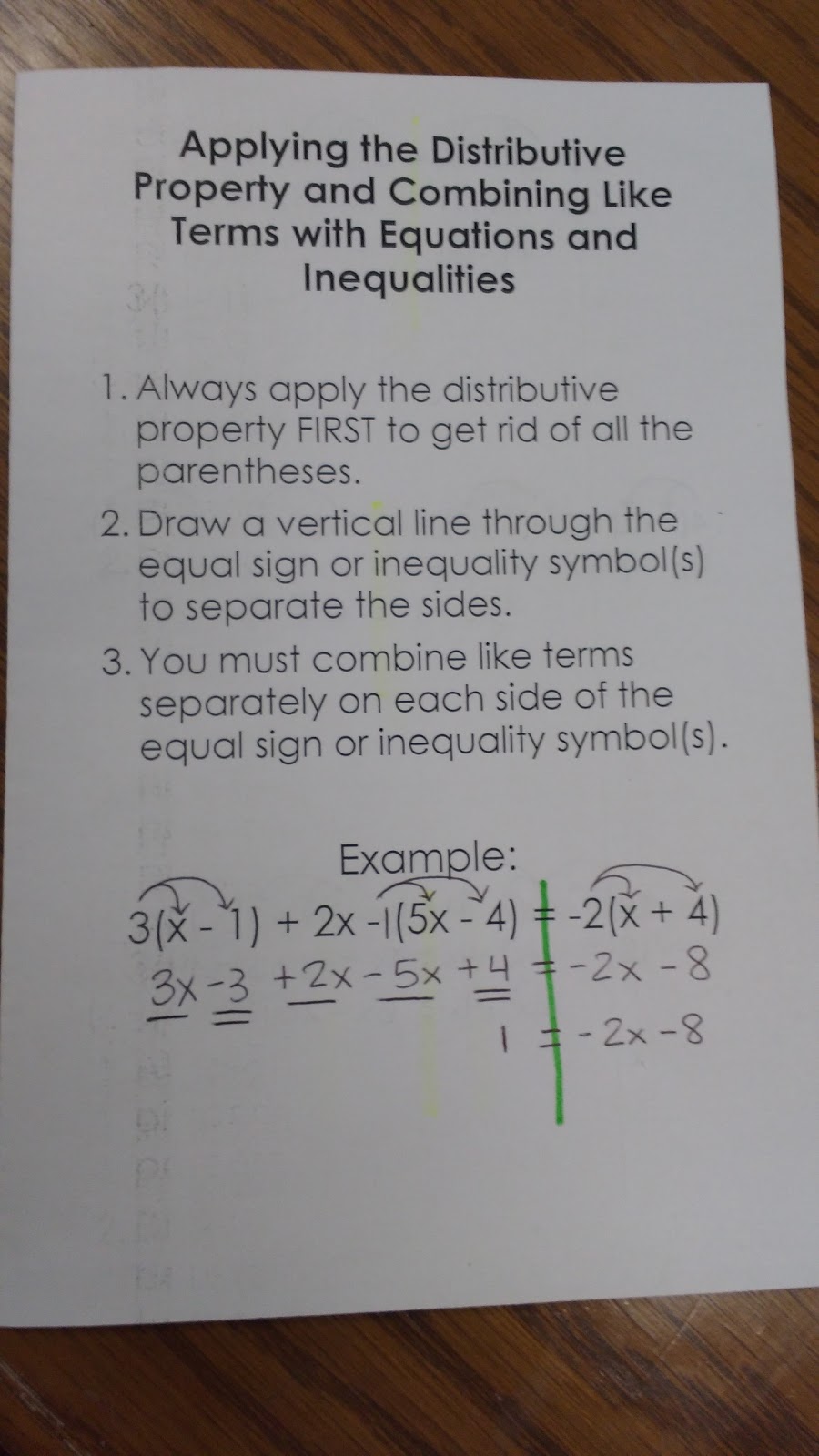
From the comments I received on Twitter when I posted this for #Teach180, it seems like once we start solving equations that this strategy will make students’ work easier to check. That makes me super excited!
October 2, 2016 – Measuring Mass and a Personal Epiphany about Density
My physical science students are currently working on our measurement skill. We’re practicing measuring length, mass, temperature, and volume. I haven’t decided whether I want to include density in this section as well since it is derived from mass and volume or not. The problem with teaching a science class for the first time (without any training as a science teacher) is that I just don’t know what order I should be teaching anything in. I’m definitely learning right along with my students.
(If you haven’t been following along with my teaching journey, I’m a high school math teacher who is having to teach a science class this year because of budget cuts. My school used to have two teachers for each core subject. Our advanced science teacher retired at the end of this past year, and the school district chose not to rehire that position. This means our lower-level science teacher is having to teach all of the biology and zoology classes. The middle school science teacher and I are both picking up a section of physical science to make things work. I am viewing teaching this class as an adventure, and it’s definitely proving to be one!)
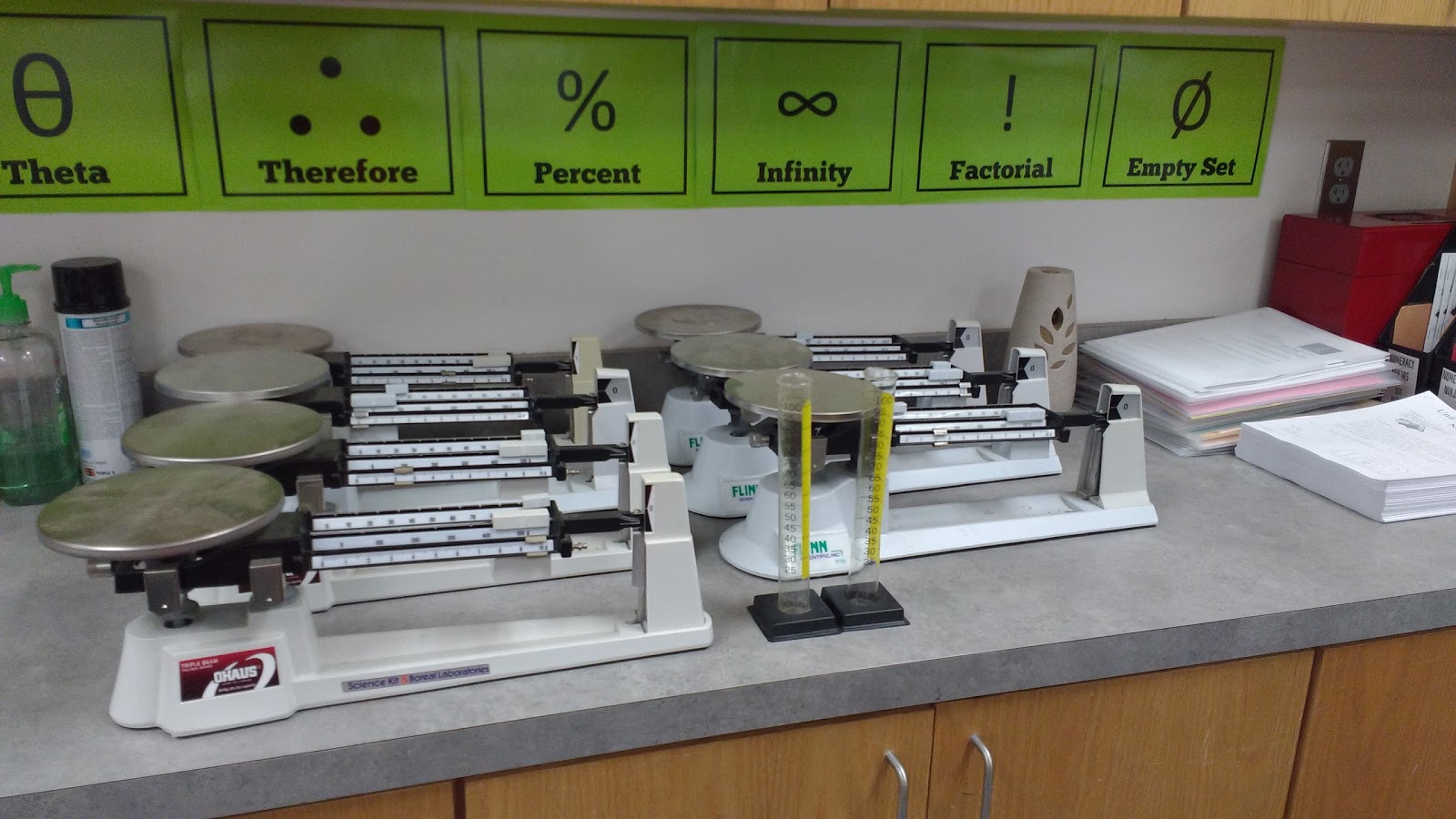
This year, we combined our high school and middle school into one building due to budget cuts. This means that the science lab at the old high school is still full of lab materials. There were a bunch of triple beam balances in the old lab, so I brought six over to my classroom.
When I was a kid, my parents had a triple beam balance that they used at work. So, I’ve used one before, but it’s been a VERY long time! I had an interesting time teaching myself to calibrate the balance. Let’s just say I was twisting the knob the wrong way for way longer than I’d like to admit.
On the car ride to school on the day of our introduction to measuring mass lesson, I started thinking about what I remembered about density from high school. I was a straight-A student in high school. I always excelled in science classes. I excelled in all of my classes. But, I didn’t excel because I had a great conceptual understanding of the concepts. Instead, I was great at memorizing things for the test and forgetting them soon afterwards.
I remember memorizing that the density of water was 1. I also remember memorizing that objects with a density greater than 1 will sink and objects with a density less than 1 will float. Add in the formula for density, density = mass/volume, and you have a list of everything I remember about density from high school.
Back to my car ride. I started to think about what it meant for water to have a density of 1. 1 what? I’m always getting on to my math students for not putting units on their answers. But, here I am talking about the density of water and not even remembering the units. I started thinking through this the way I hoped my students would. The unit for mass is grams. The unit for volume is mL. So, the units for density must be g/mL.
Then, I had an epiphany. This must mean that if I have 500 mL of water it should have a mass of 500 grams. If I have 200 mL of water it will have a mass of 200 grams. This is the type of thing that’s probably obvious to everyone reading this blog, but it wasn’t obvious to me. Now that I’ve discovered it for myself, I don’t see how I never figured this out before.
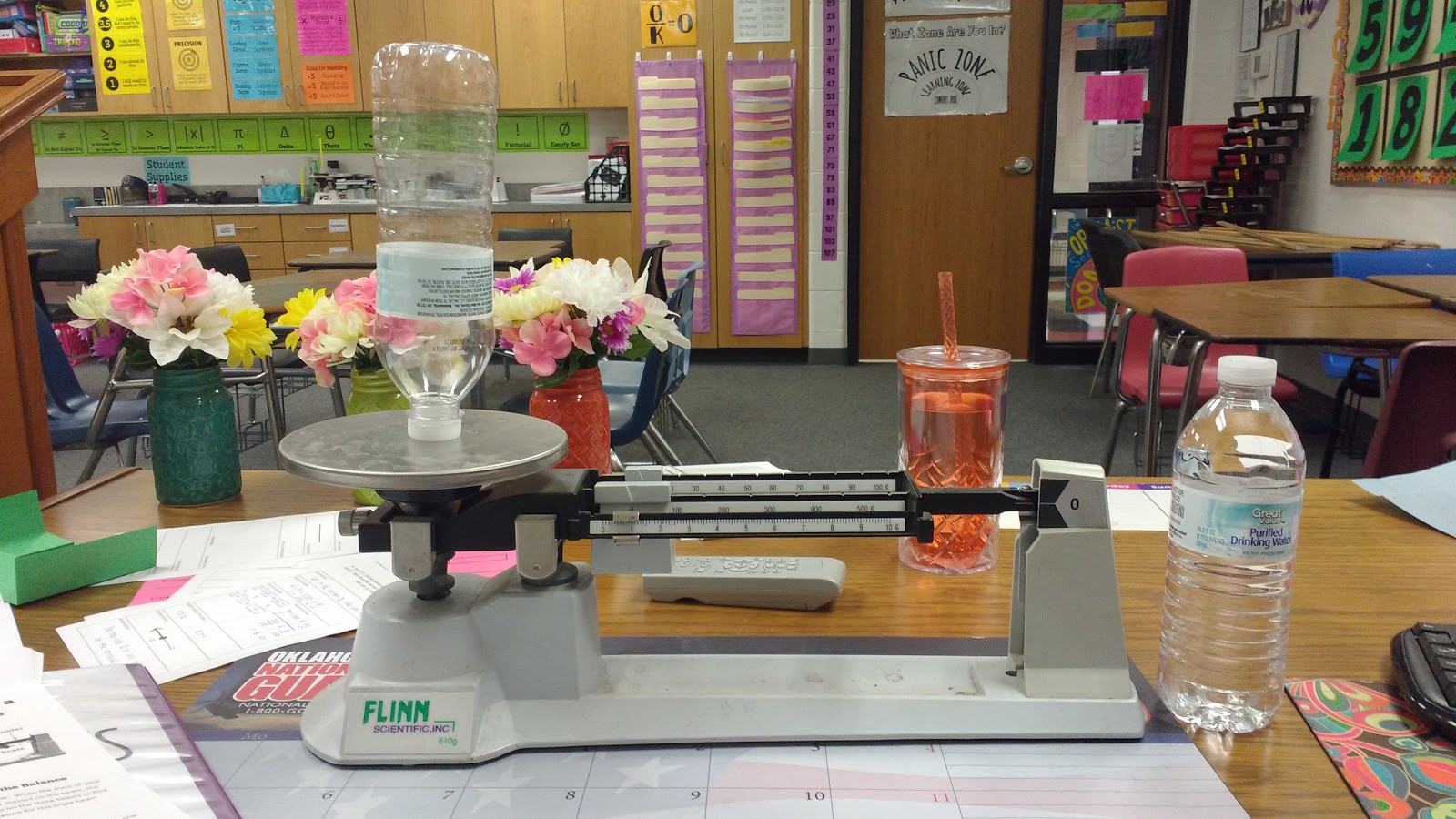
Once I got to school, I quickly grabbed a triple beam balance, a full water bottle, and an empty water bottle. I found the mass of the full water bottle and the mass of the empty water bottle. And, sure enough, the mass of the water was almost identical to the number of mL in the bottle. (My husband had already warned me that they wouldn’t match exactly because the density of water is 1 g/mL only at a specific temperature.) This was such an exciting moment for me. Density makes sense now!
I was SO excited about my morning discovery that I had to tweet about it!
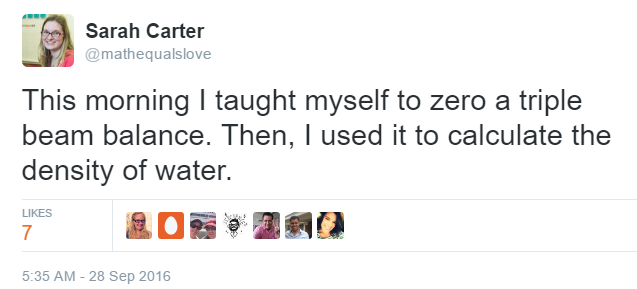
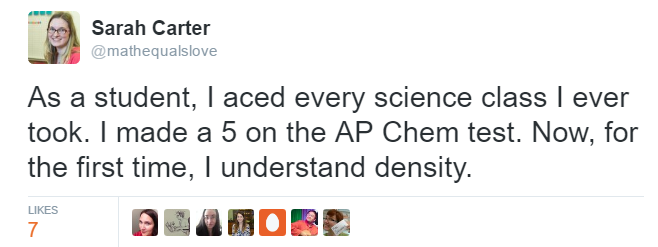
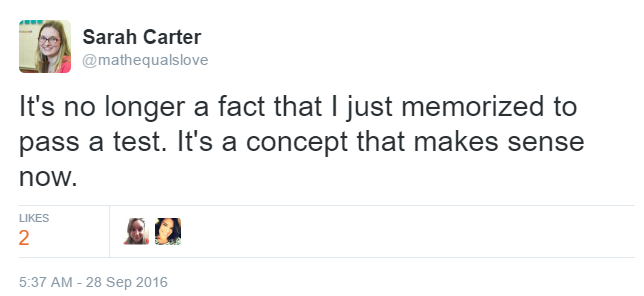
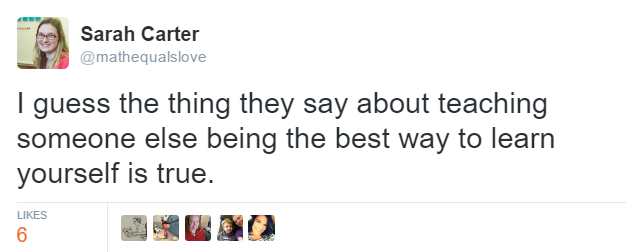
I gave my students a list of things to measure the mass of. These are all things that could easily be found around my classroom!
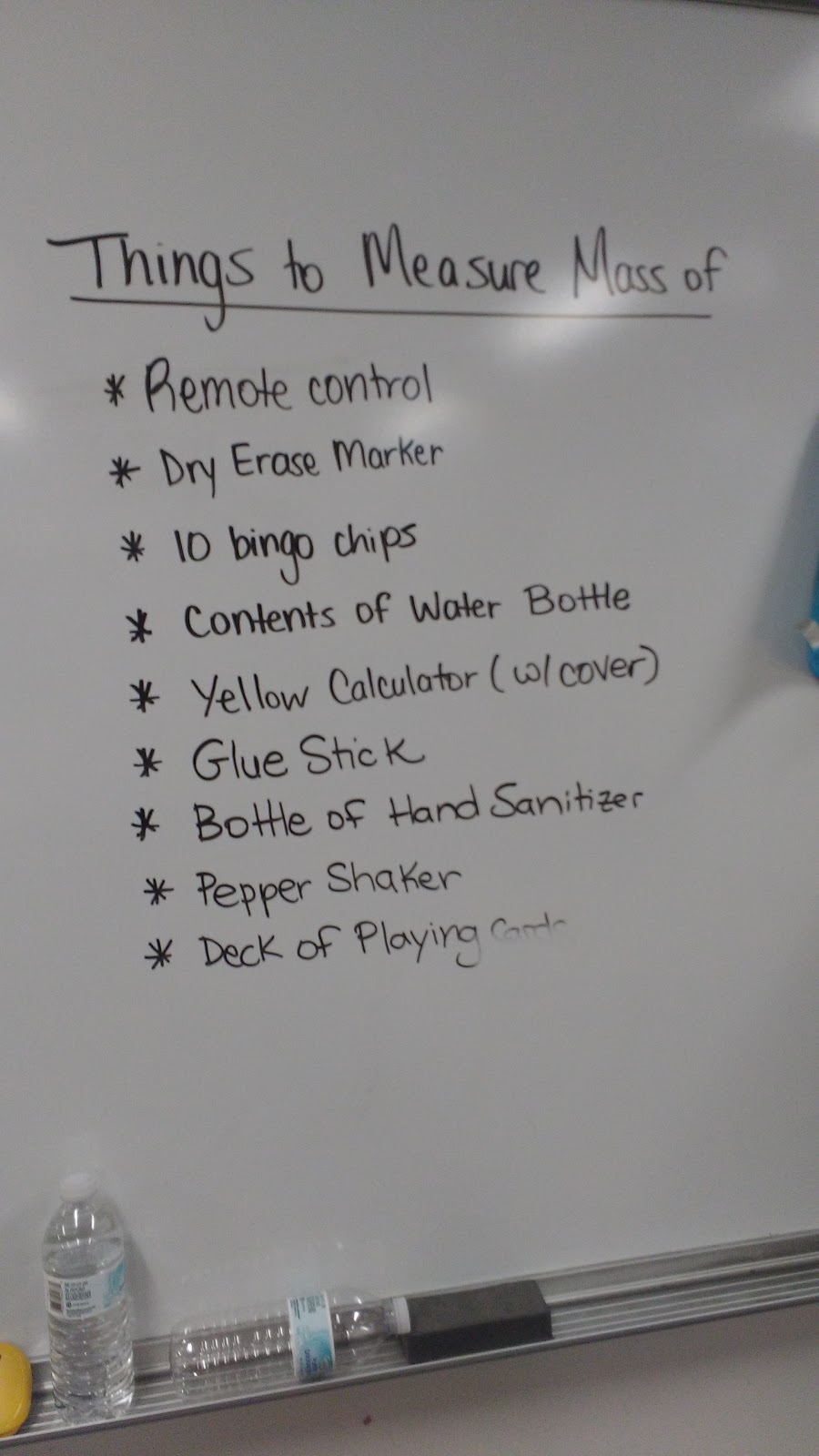
Contents of Water Bottle. (Hint: Empty water bottle and full water bottle!)
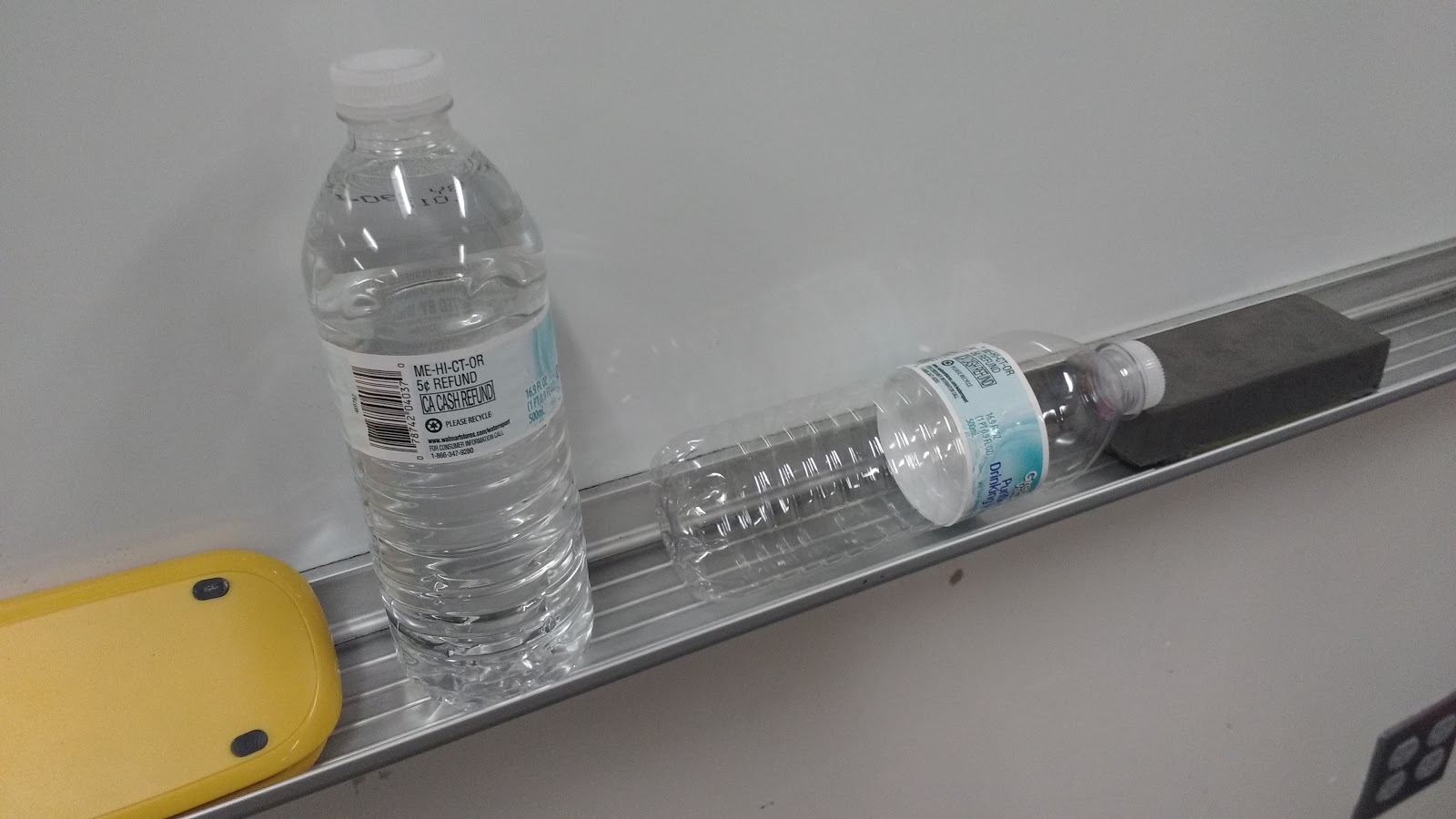
Dry Erase Marker and Calculator
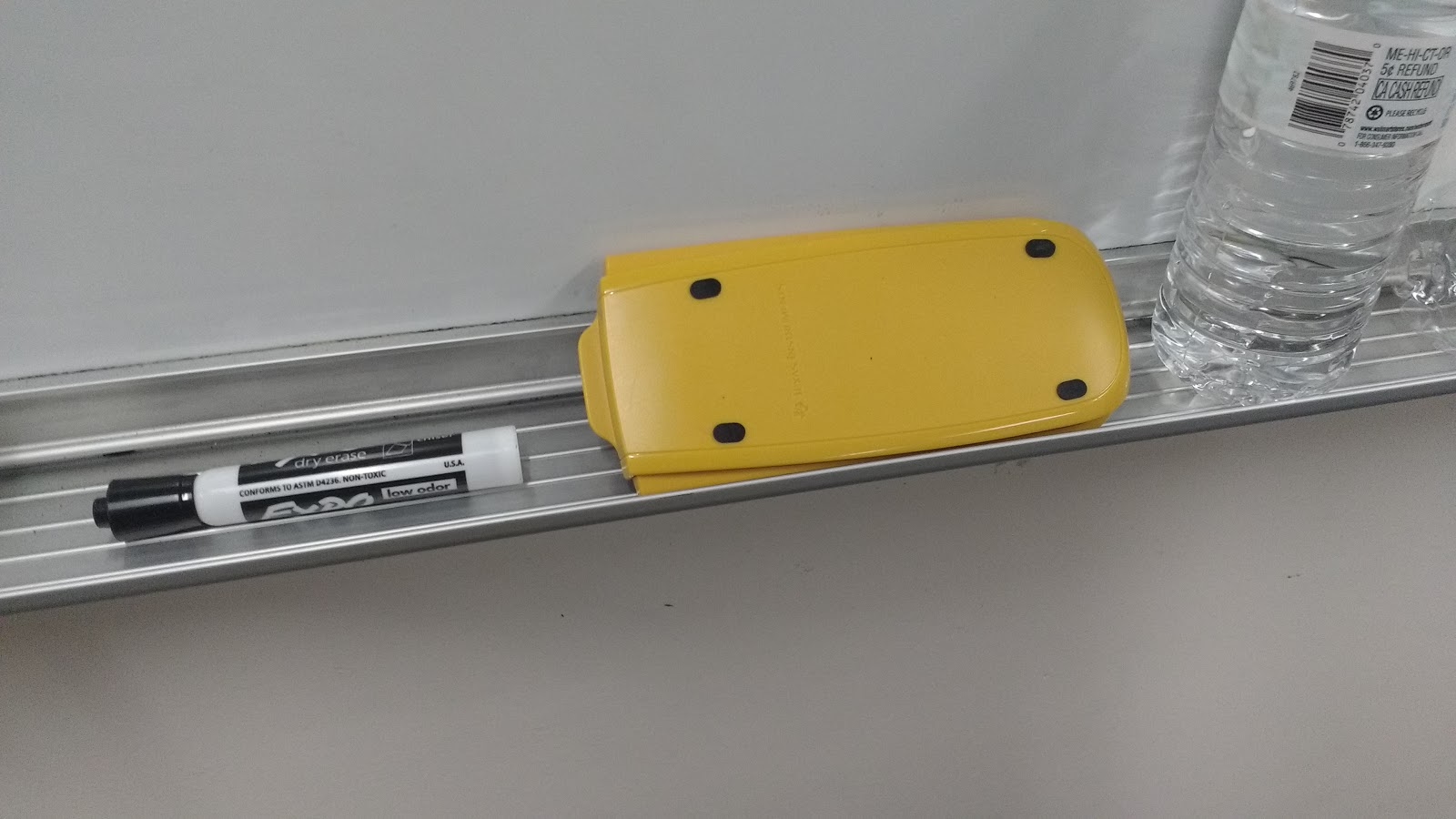
Ten Bingo Chips
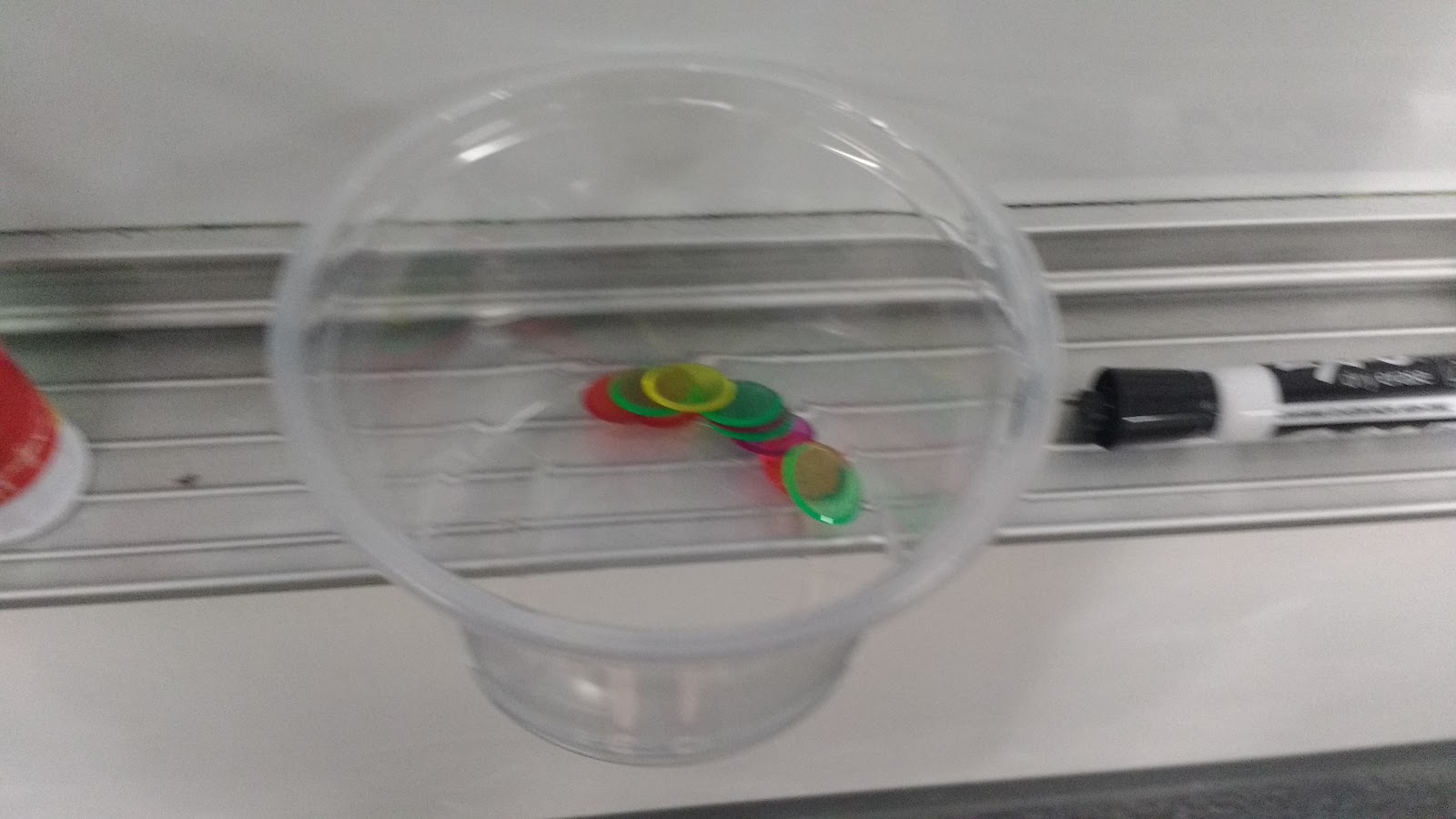
Bottle of Hand Sanitizer and Glue Stick
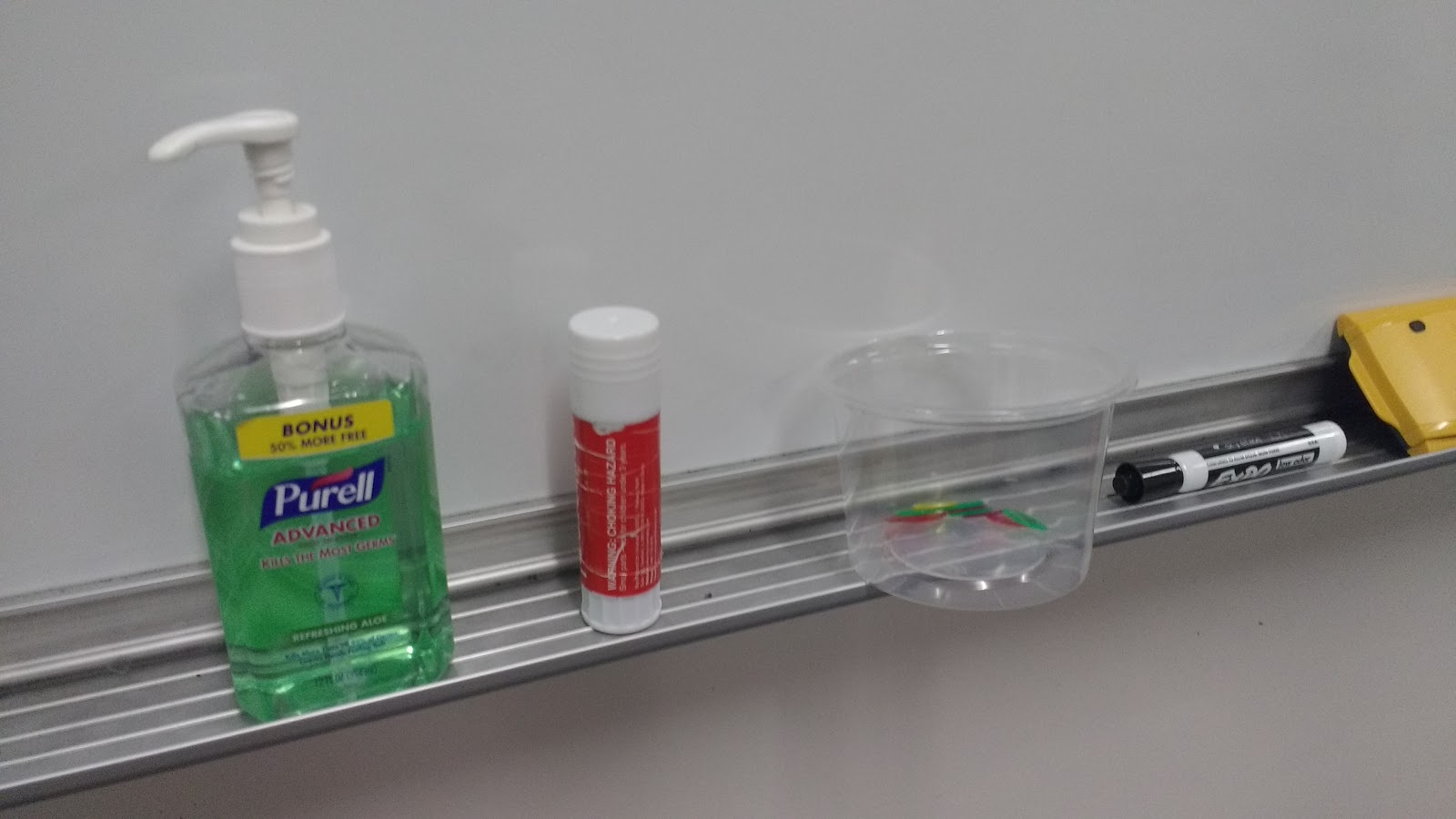
Remote Control, Deck of Playing Cards, and Pepper Shaker. I originally planned to have my students measure the mass of the salt shaker, but one of my former students wrote an inappropriate message on it in sharpie…
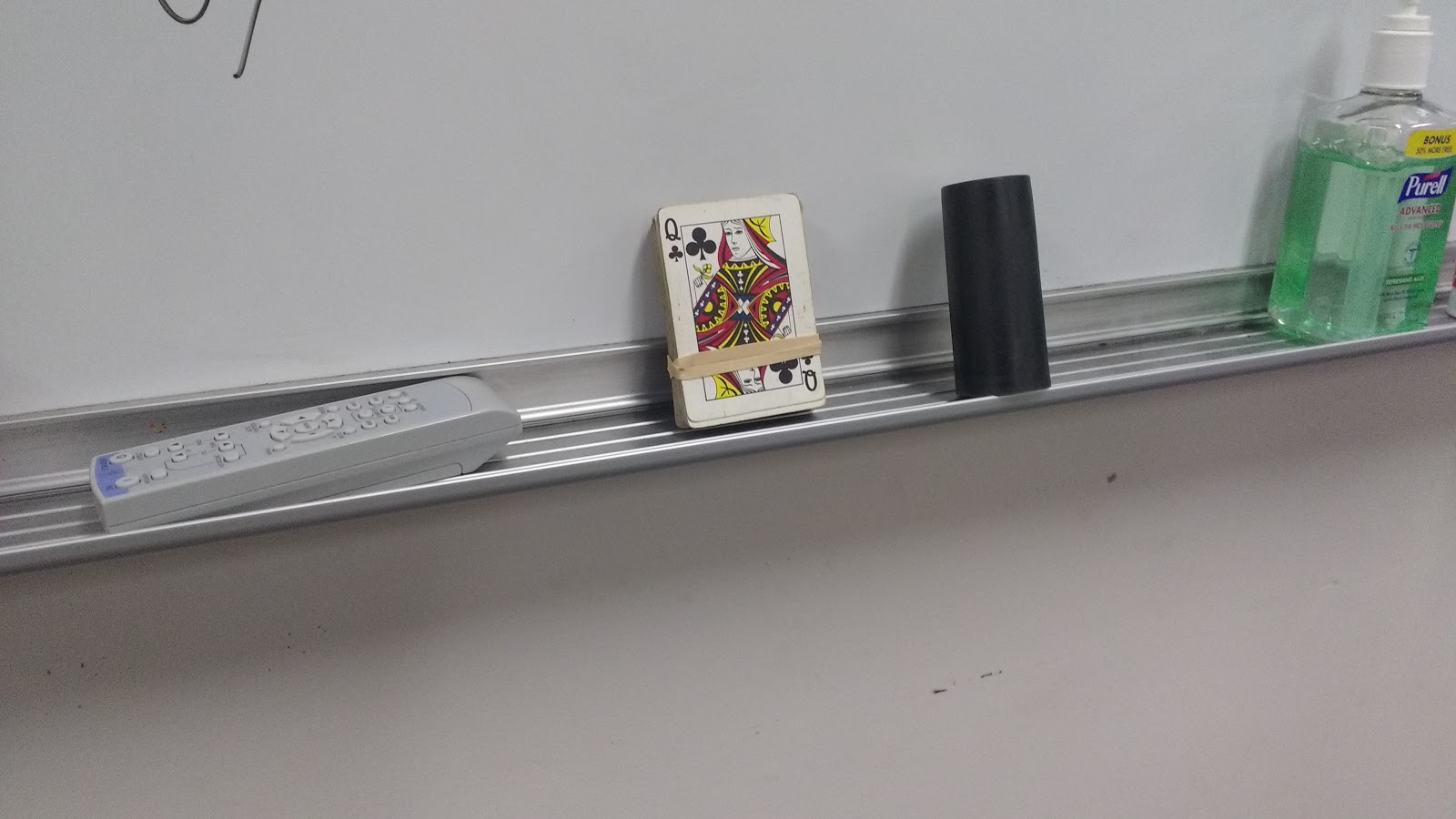
My kids definitely got a kick out of using the triple beam balances. They were a bit frustrated with the calibration process, but I think it was good for them to experience that. I’ve even spotted some of my physical science kids showing my algebra students how to use the scales!
Here’s some pics of my students in action:

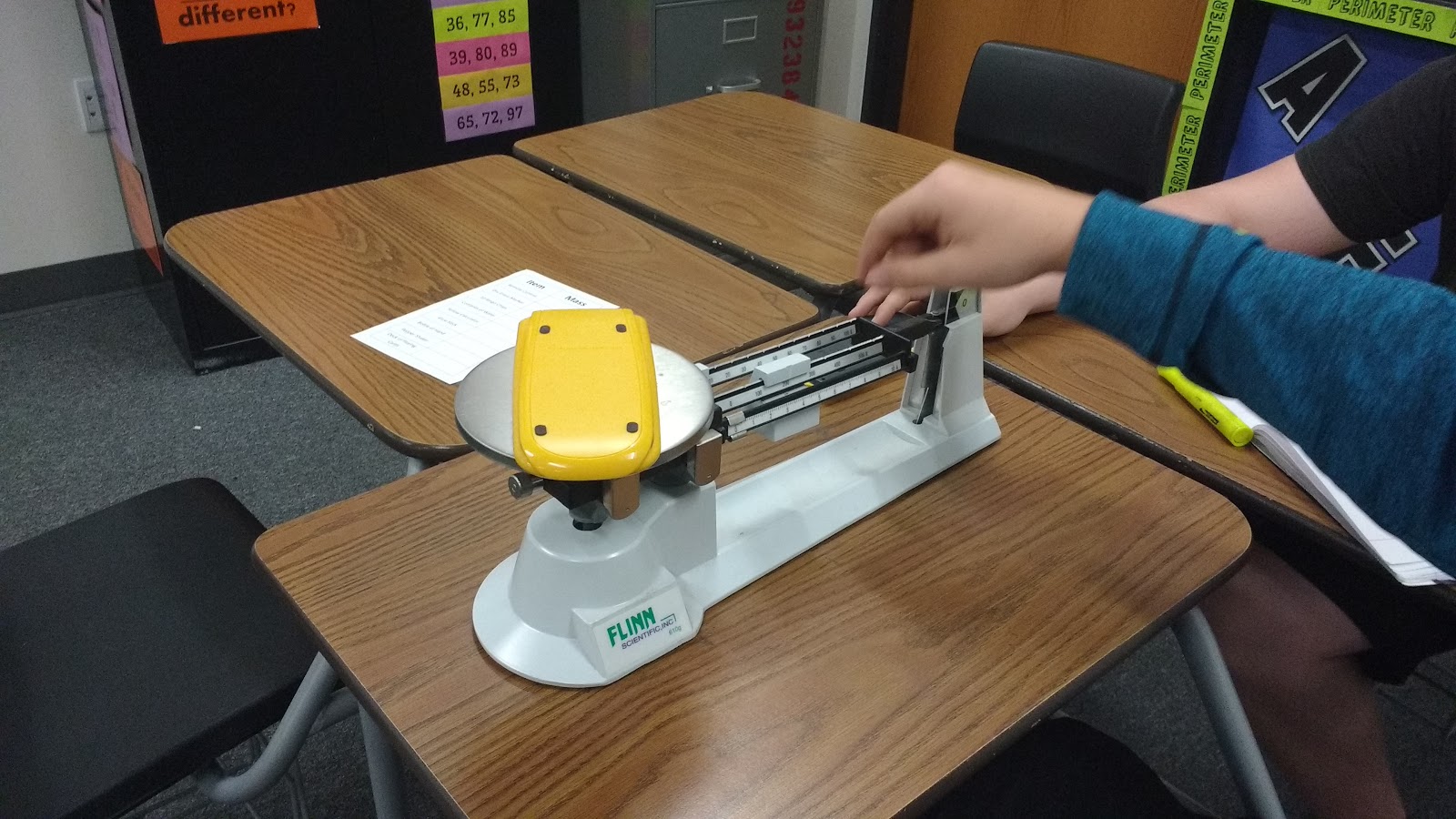
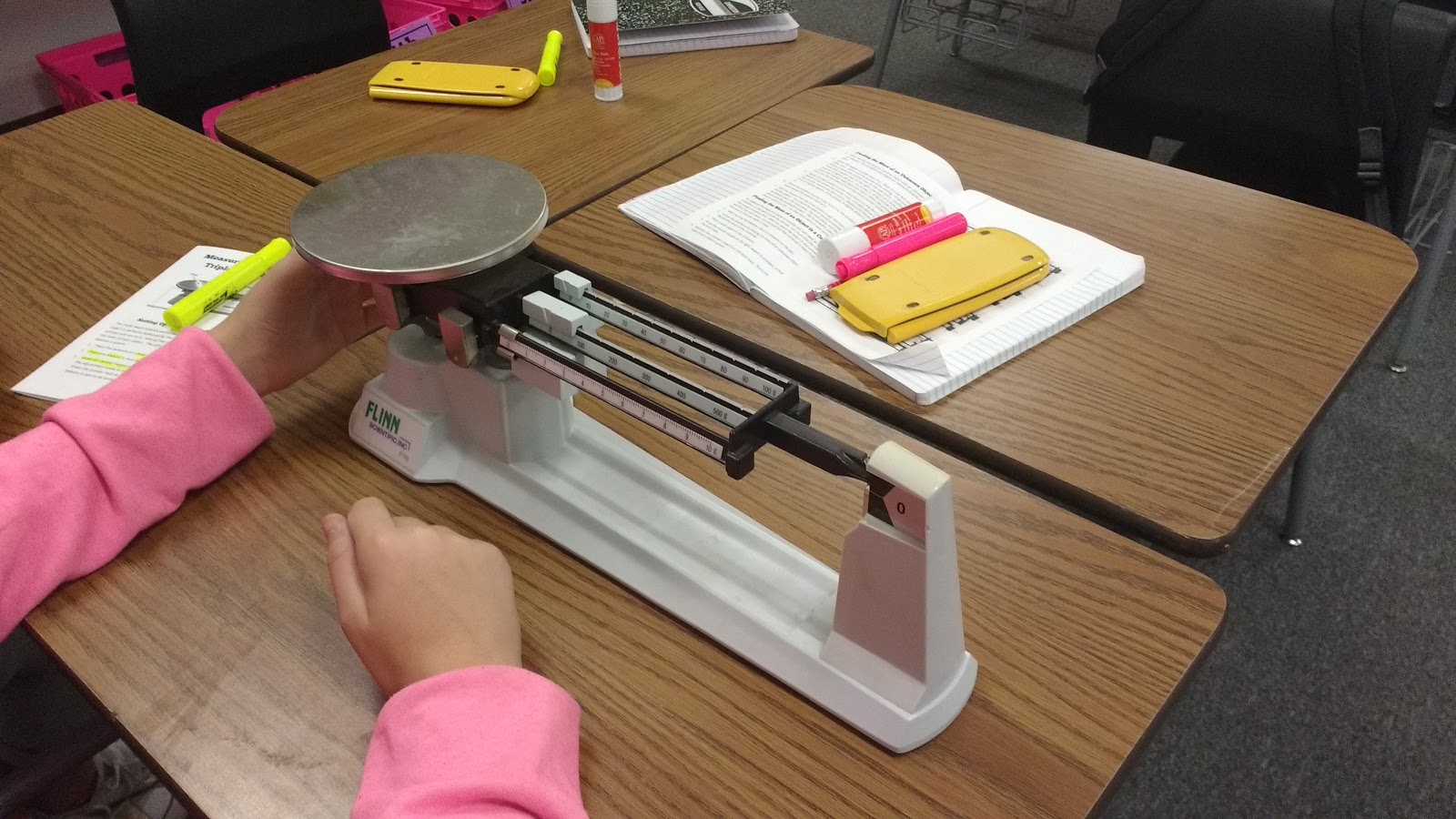
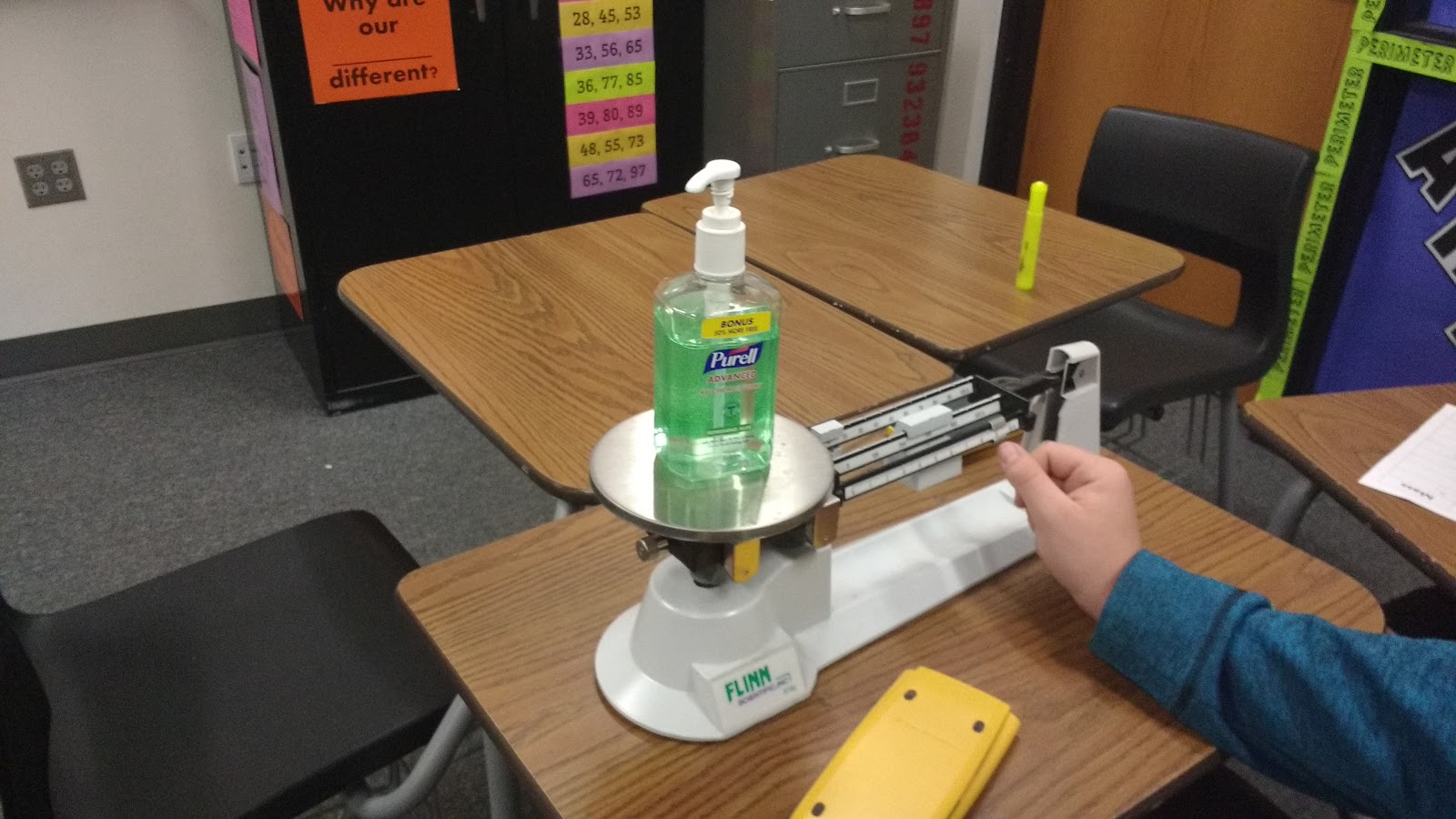
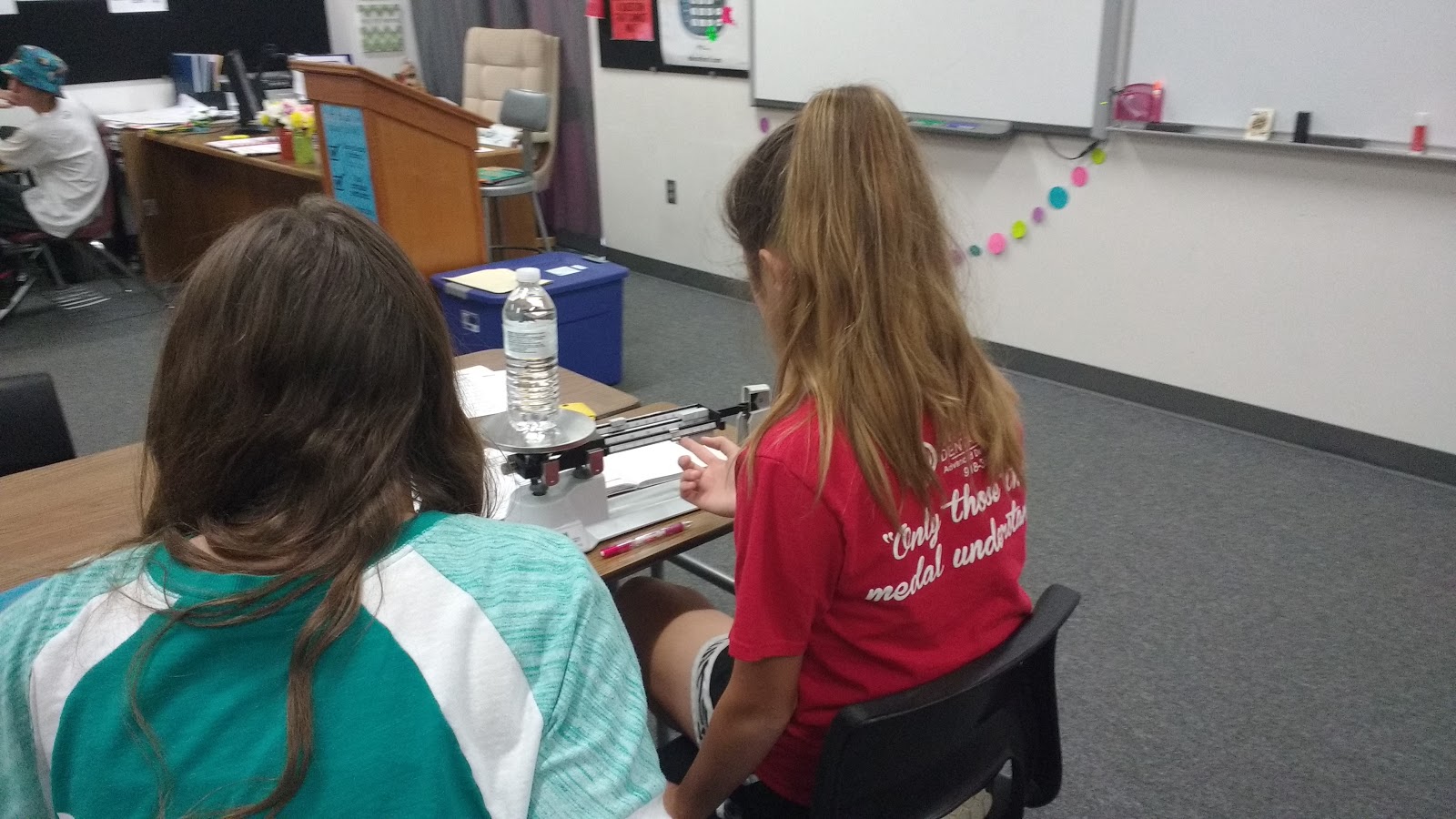
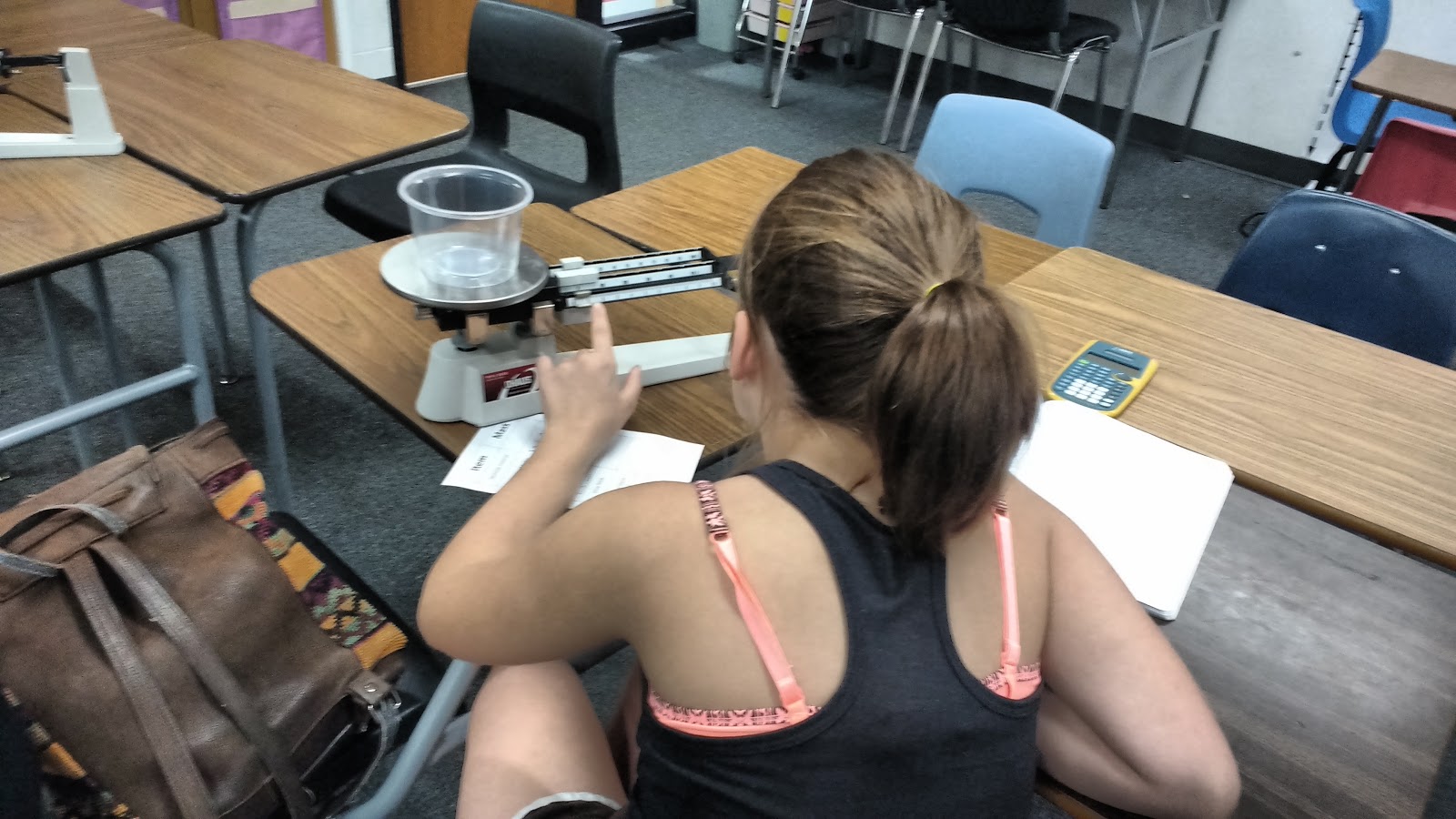
October 4, 2016 – Teacher of Awesome Poster
On my podium, I hung a poster which reads “Ms. Hagan. Teacher of Awesome. (And by “Awesome” I mean “Math.”)
The saying for this poster was inspired by a poster I saw shared on Pinterest.
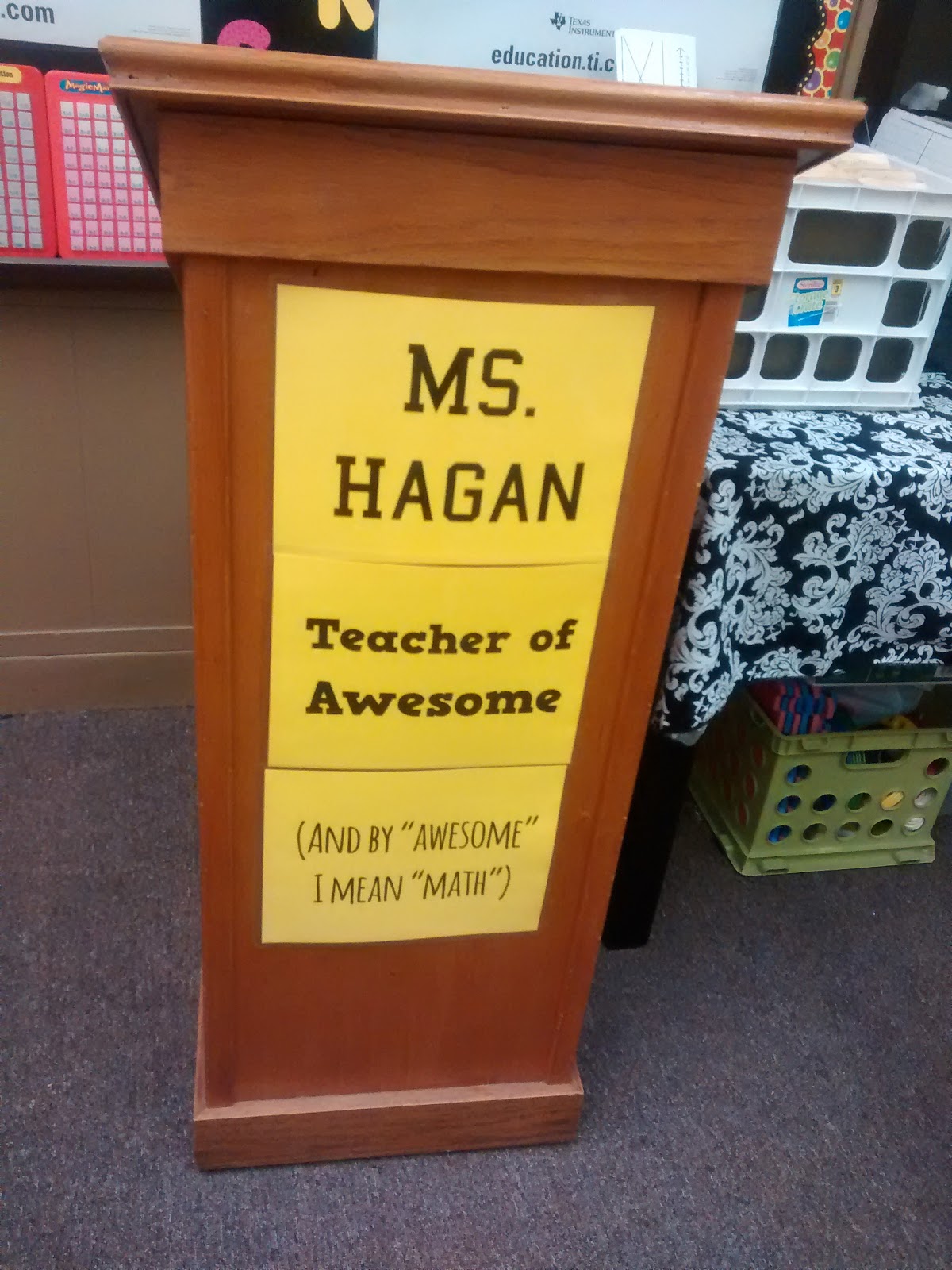
You’ll obviously need to update the file to reflect your own name!
Another year, I printed the posters on several different colors of paper. I thought it added a bit of “pop” to my room.
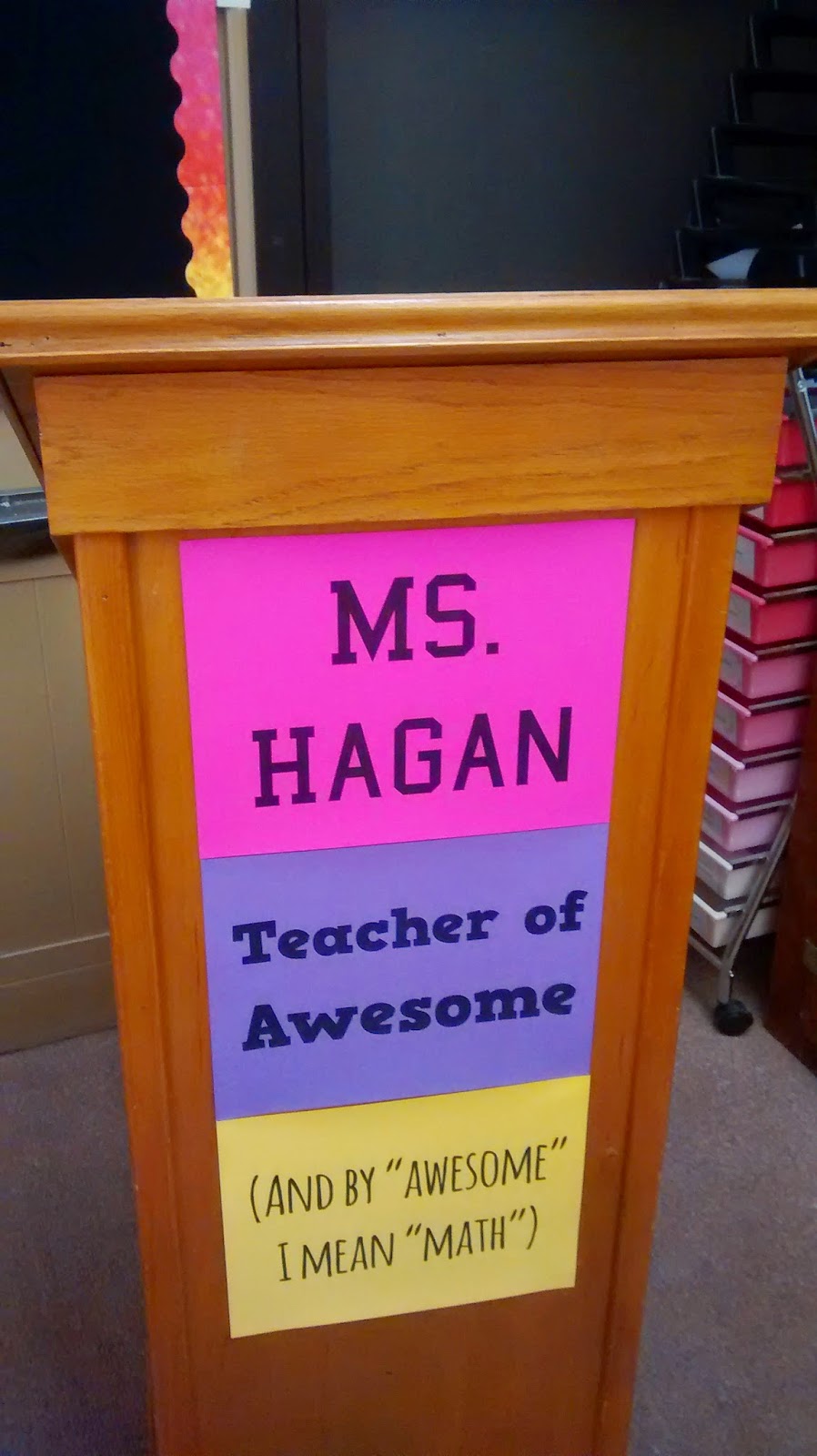
Teacher of Awesome Poster
October 6, 2016 – First Ever Science Workshop
A few weeks ago, I gave up one of my Saturdays to attend a science teaching workshop. This is not something I ever thought I would do, but life has a way of surprising you that way. I’m a math teacher teaching a physical science class this year, and you could definitely say I am not in my element. I want to feel more comfortable teaching science, so I decided a hands-on workshop was the way to go! There was also the nice little bonus of a $50 stipend and $1100 of free science supplies! The workshop was run by OERB. If you’re a teacher in Oklahoma and you haven’t been to an OERB workshop, you need to sign up!
There were only five people (including me) attending the workshop, so we all got to interact with each other a lot. We did four different labs and received the supplies to do all of these labs with our students. Some of them are more suitable to physical science than others, but I can always use lab materials for unrelated labs, too!
One big takeaway from attending my first science workshop: the way I act at a math workshop and a science workshop are very different. At a math workshop, I spend a lot of time taking notes about how I want to modify ideas for my own classroom. At this science workshop, I spent most of my time asking questions about how the presenter used these activities in her classroom. I can’t even begin to think about modifying activities yet because I just don’t have enough experience teaching science YET.
For our first lab, we designed an experiment to determine the impact of elevation on flow rate. We used plastic tubing and an aquarium pump to set up our scenario. We moved the beaker to different heights on the ring stand to change our elevation.
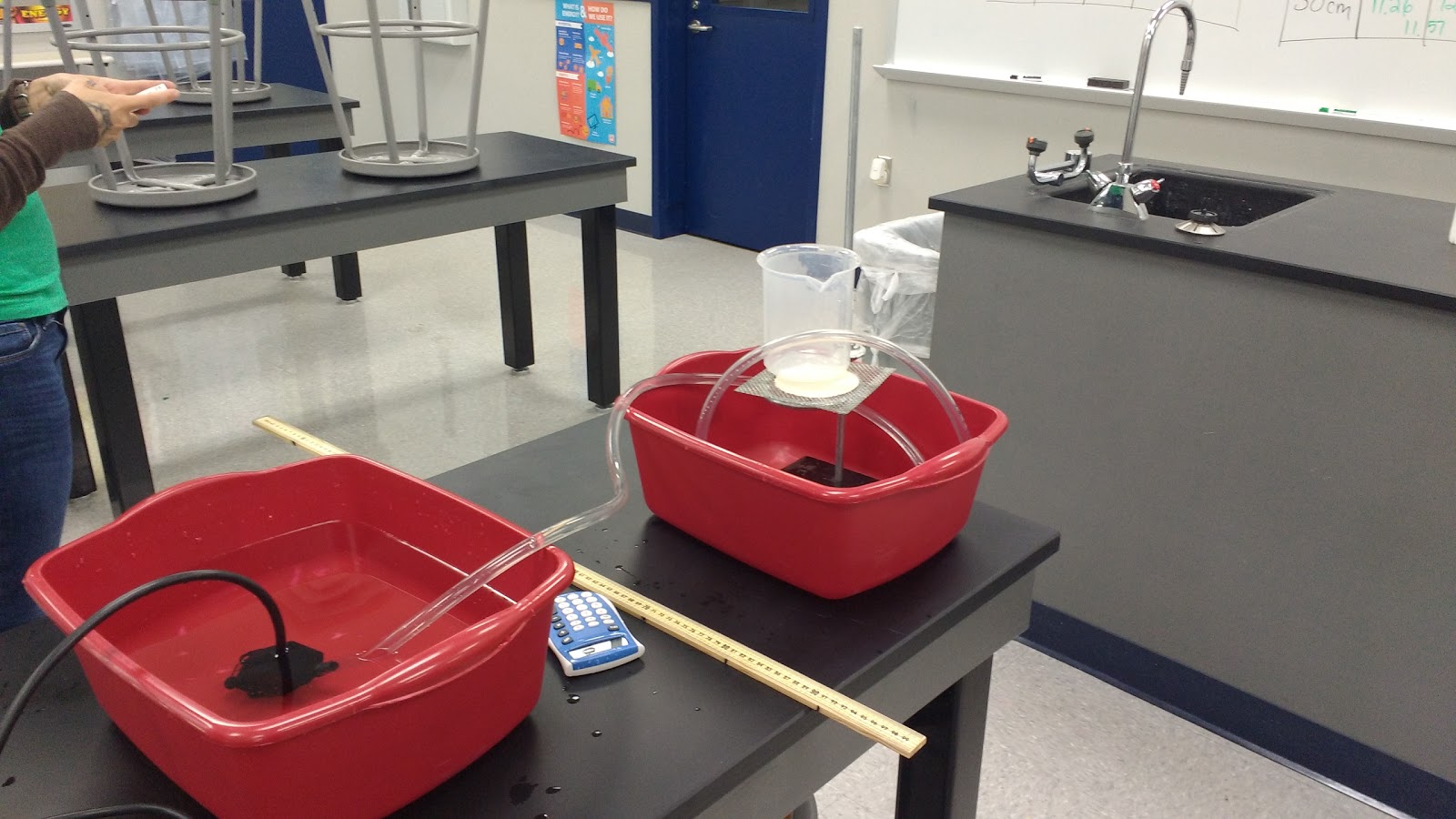
Each group calculated the flow rate for the different elevations. This is intended to be an inquiry lab where students are given the materials and asked to come up with their own hypothesis and experiment.
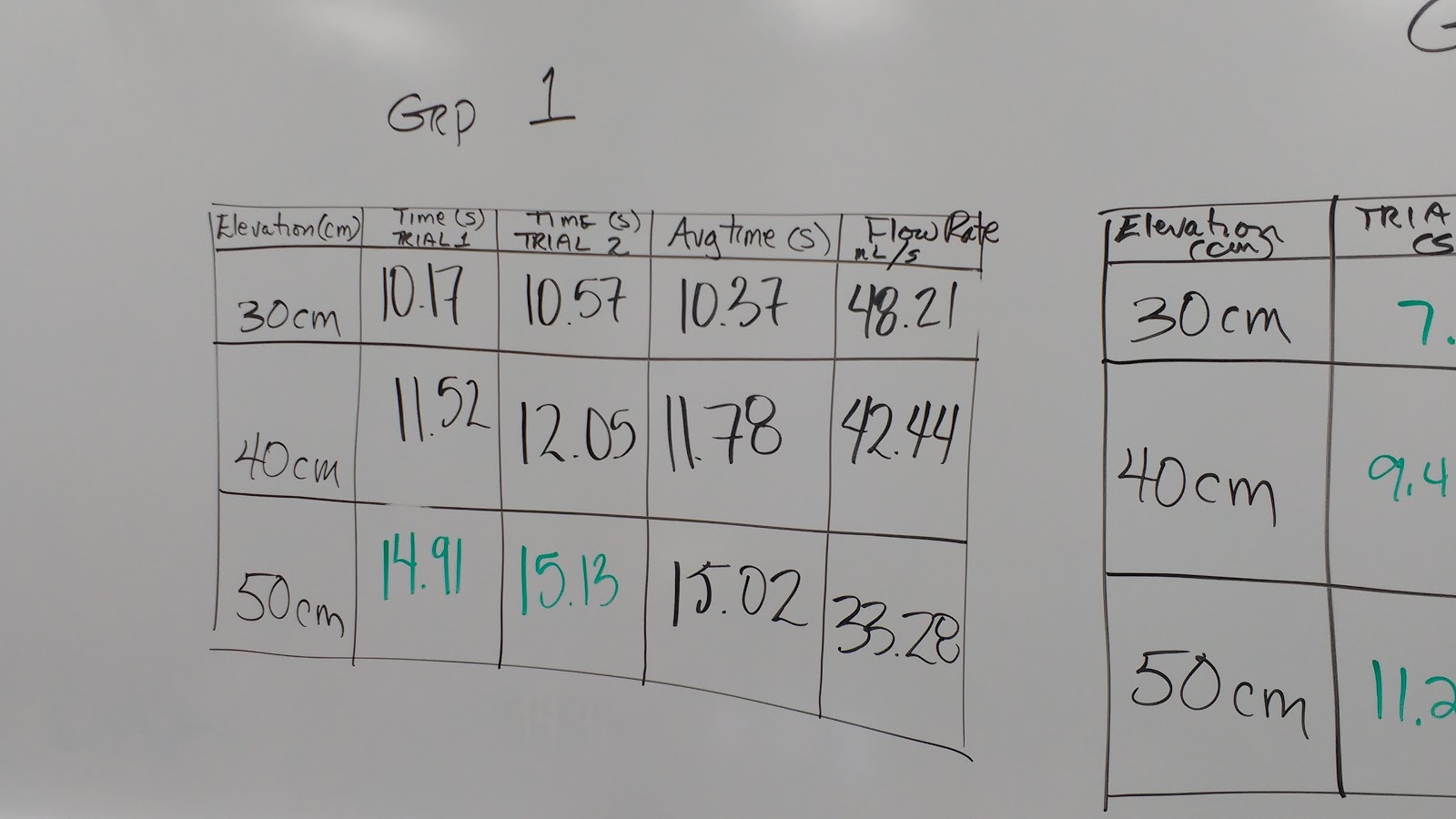
Our two groups got different results, but we both noticed the same trend.

We were also given supplies to let students investigate the impact of diameter and pipe length on flow rate.
For our next lab, we got to break out pieces to model hydrocarbons. Here’s the link to the hydrocarbon modeling kit we used from Mega Molecules.
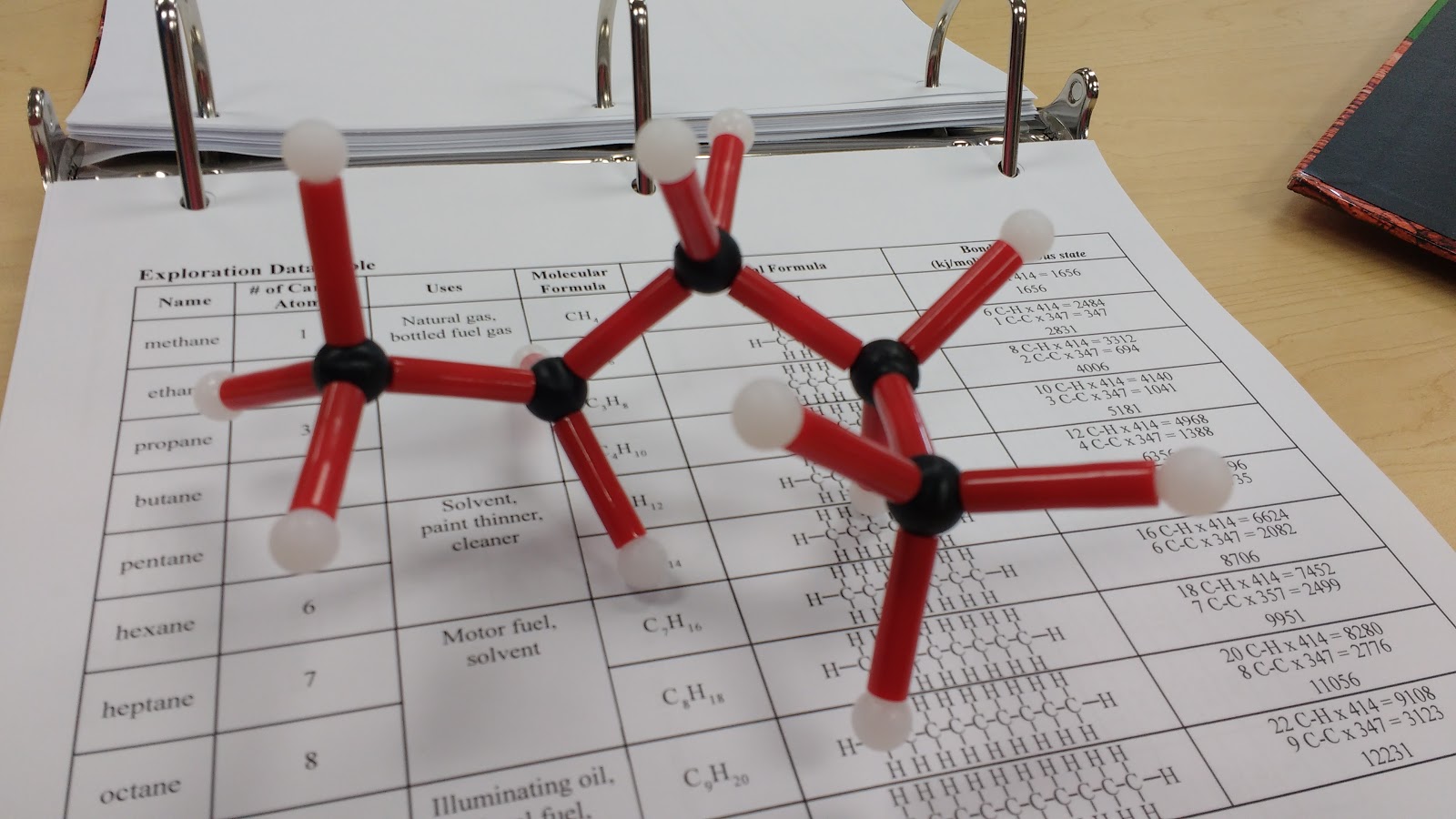
I was assigned to build a hydrocarbon with 5 carbons on it. Looking at the chart we were given, I could read that my hydrocarbon contain 12 hydrogen atoms. At first, I wasn’t sure how this was going to work out. Each carbon atom has four connectors. Five carbon atoms times four connectors equals twenty hydrogen carbons. Or so I thought BEFORE I started building. Once I started connecting them I realized that each carbon was cable of four bonds, but only three of those bonds could be used for hydrogen atoms because one of the bonds was needed to connect it to the other carbon atoms. It was amazing to see how the manipulative made this so much easier to see.
For our third lab, we worked to perform a distillation of grape flavored soda.

I took a lot of these photos so I can remember what the set-up is supposed to look like if I ever do this lab with my students.
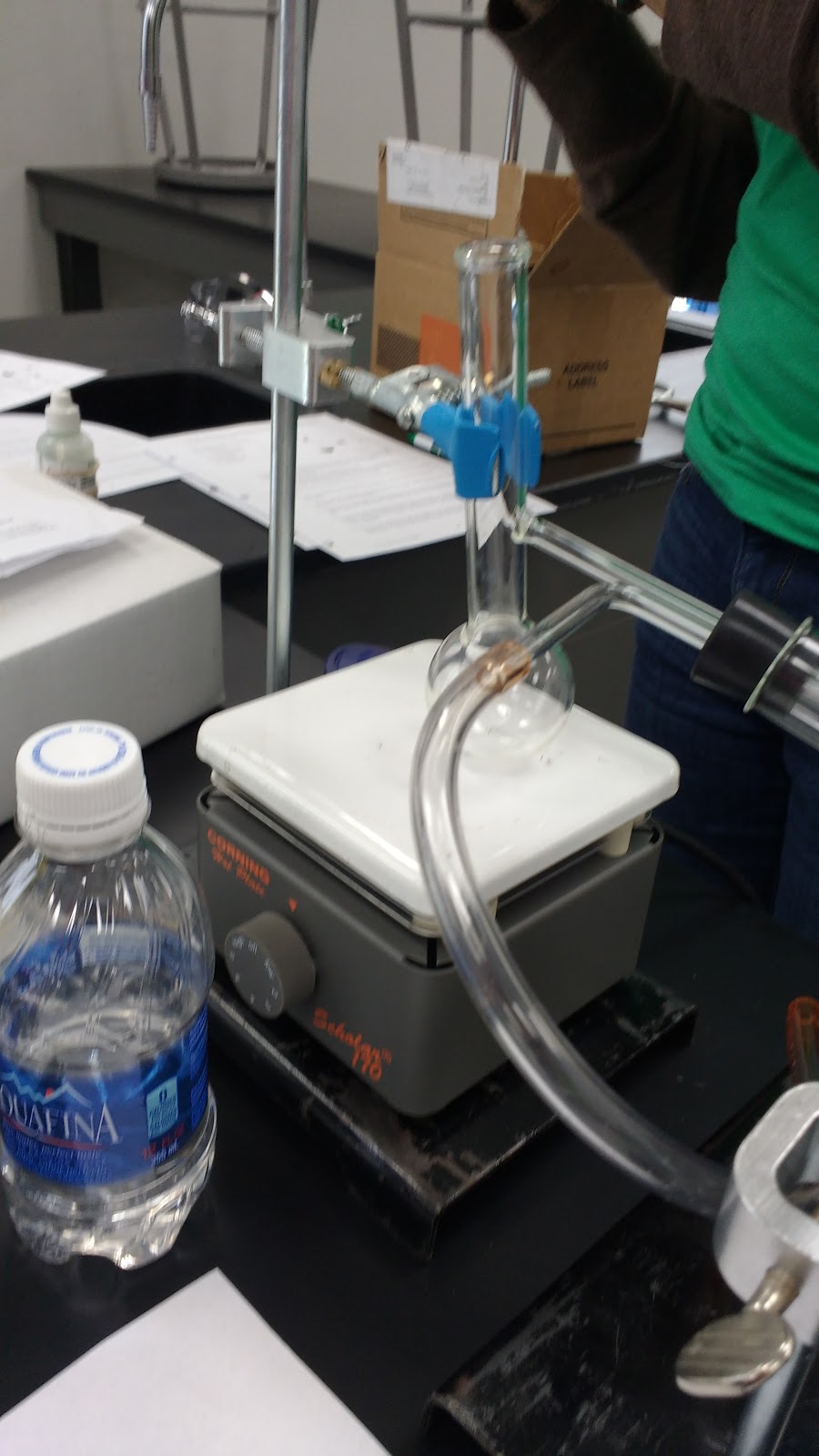

I was quite intrigued by the fact that blowing air into a straw placed in water that contained universal indicator fluid will cause the color to change since carbon dioxide and water react to form carbonic acid.
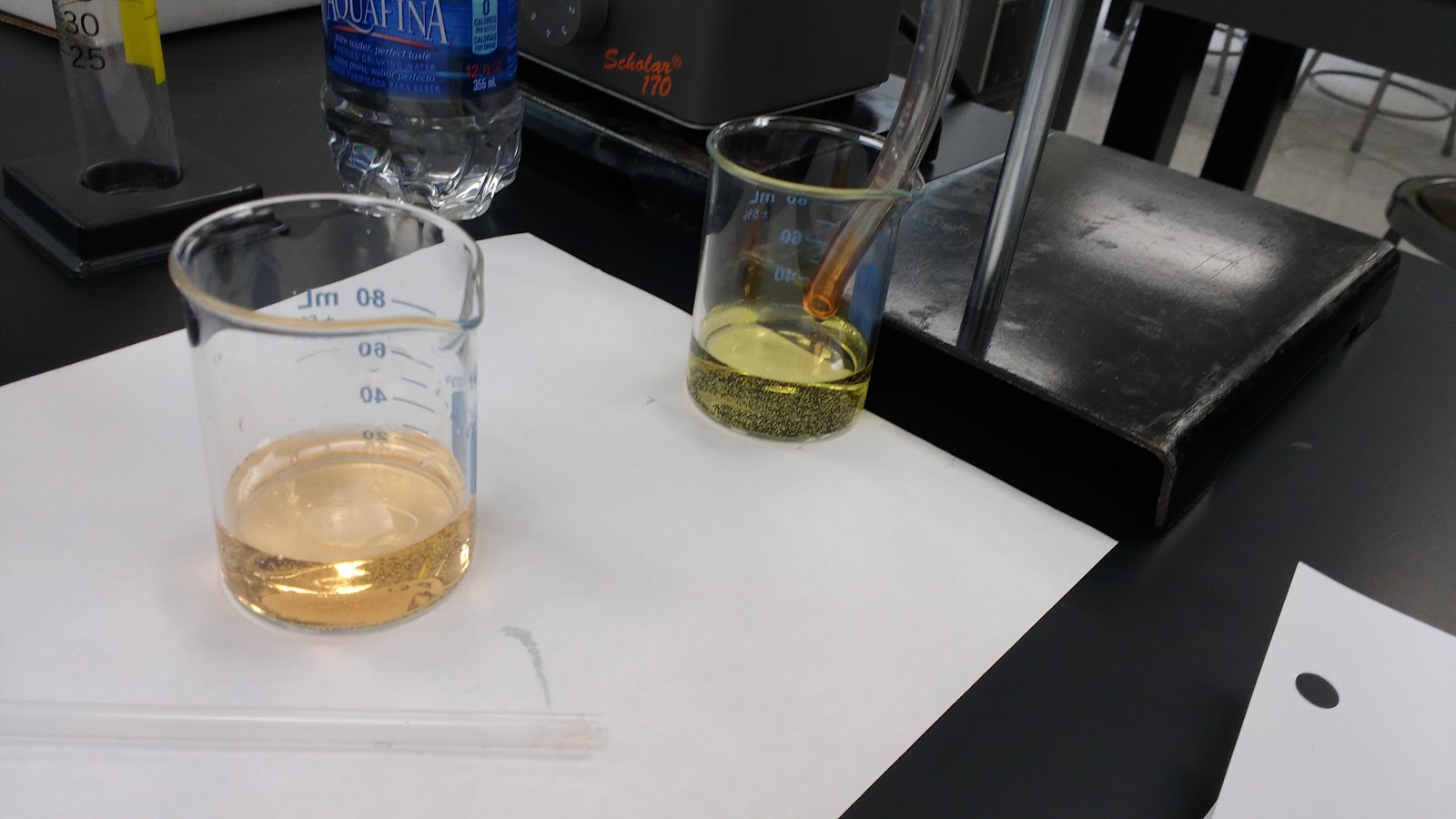
In my group, my job was to hold the plastic tubing in the beaker.
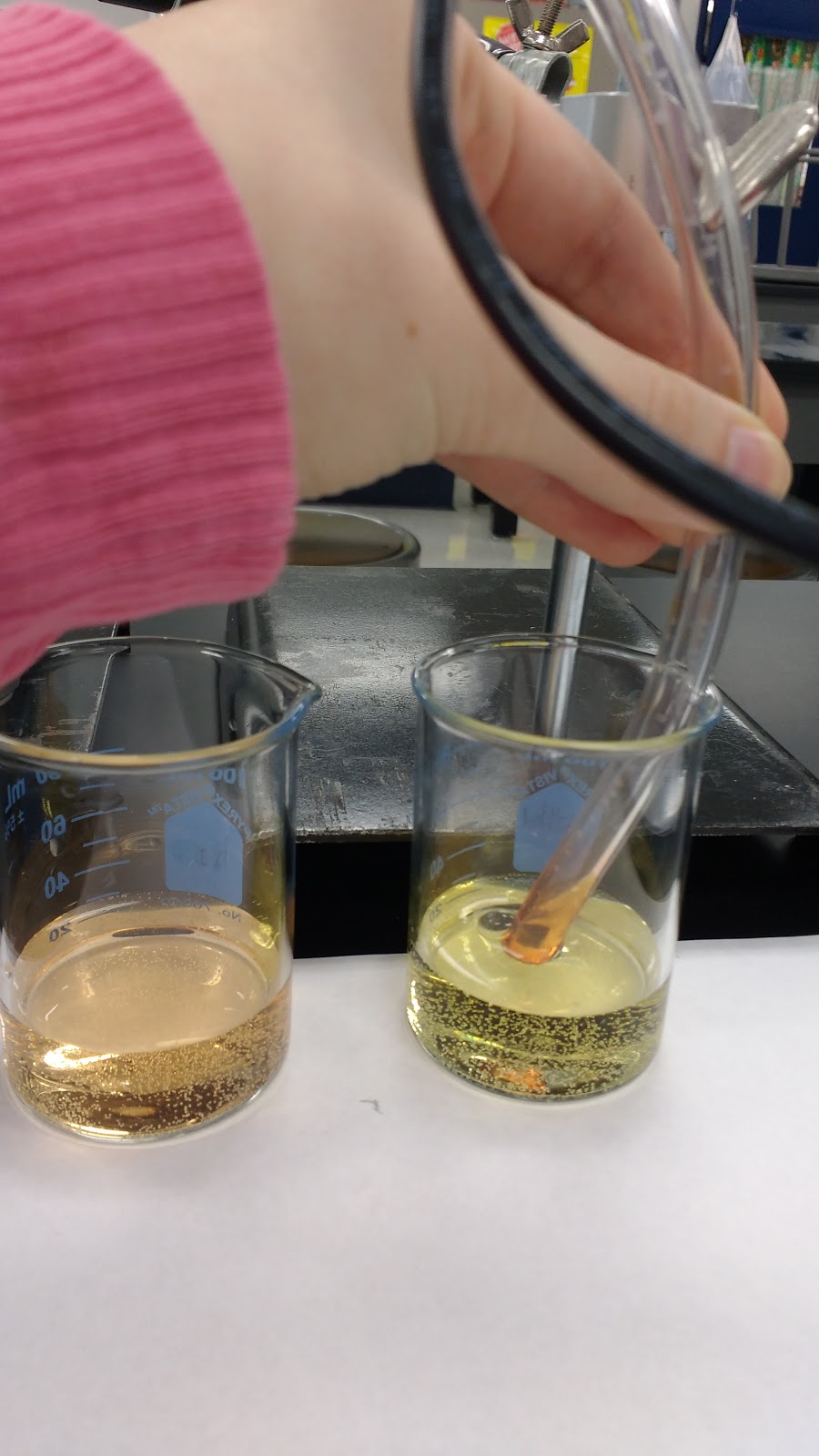
Here’s the beaker after the color change 🙂
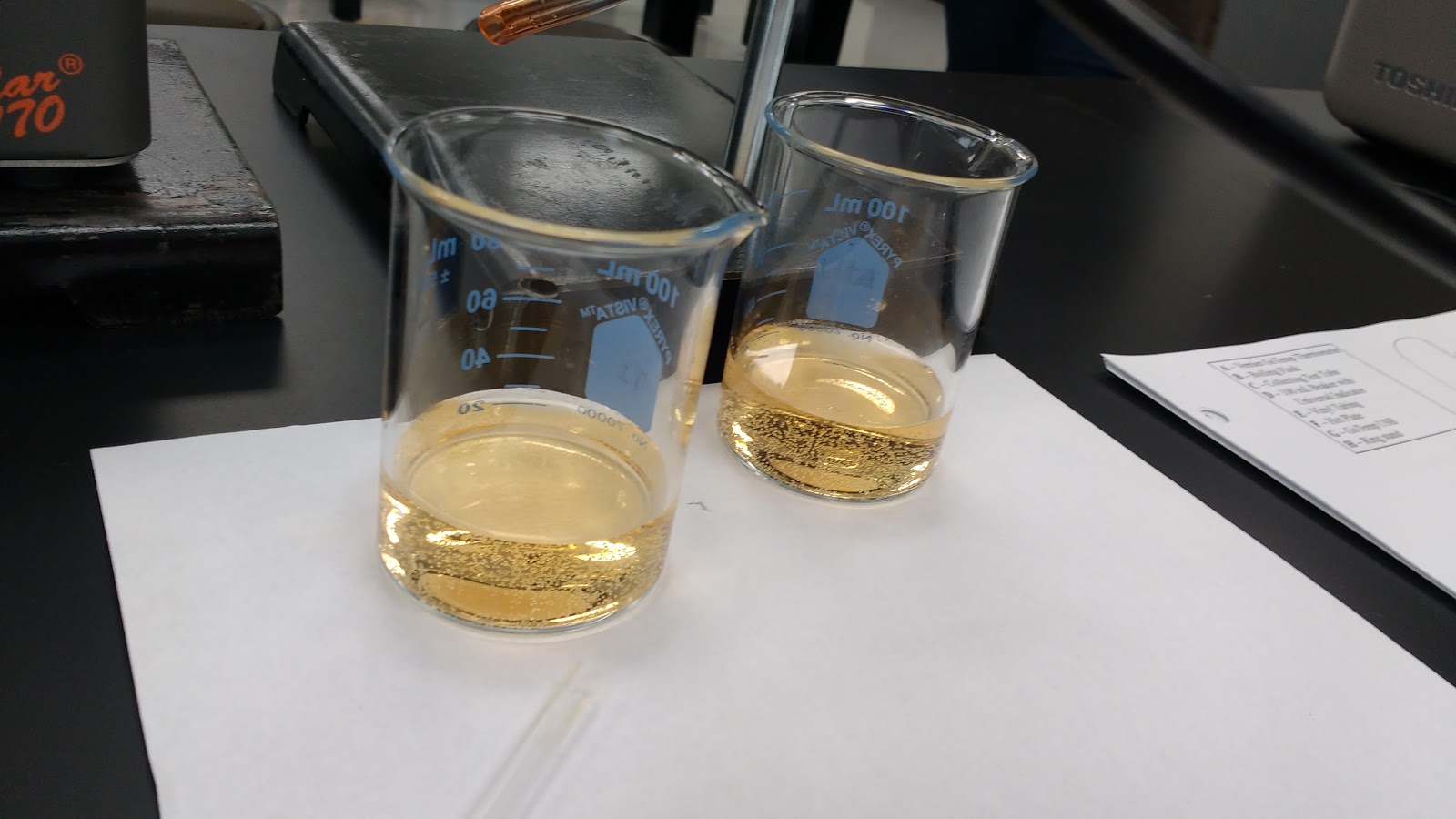
We used a Vernier Go Temp probe to collect our temperature data.
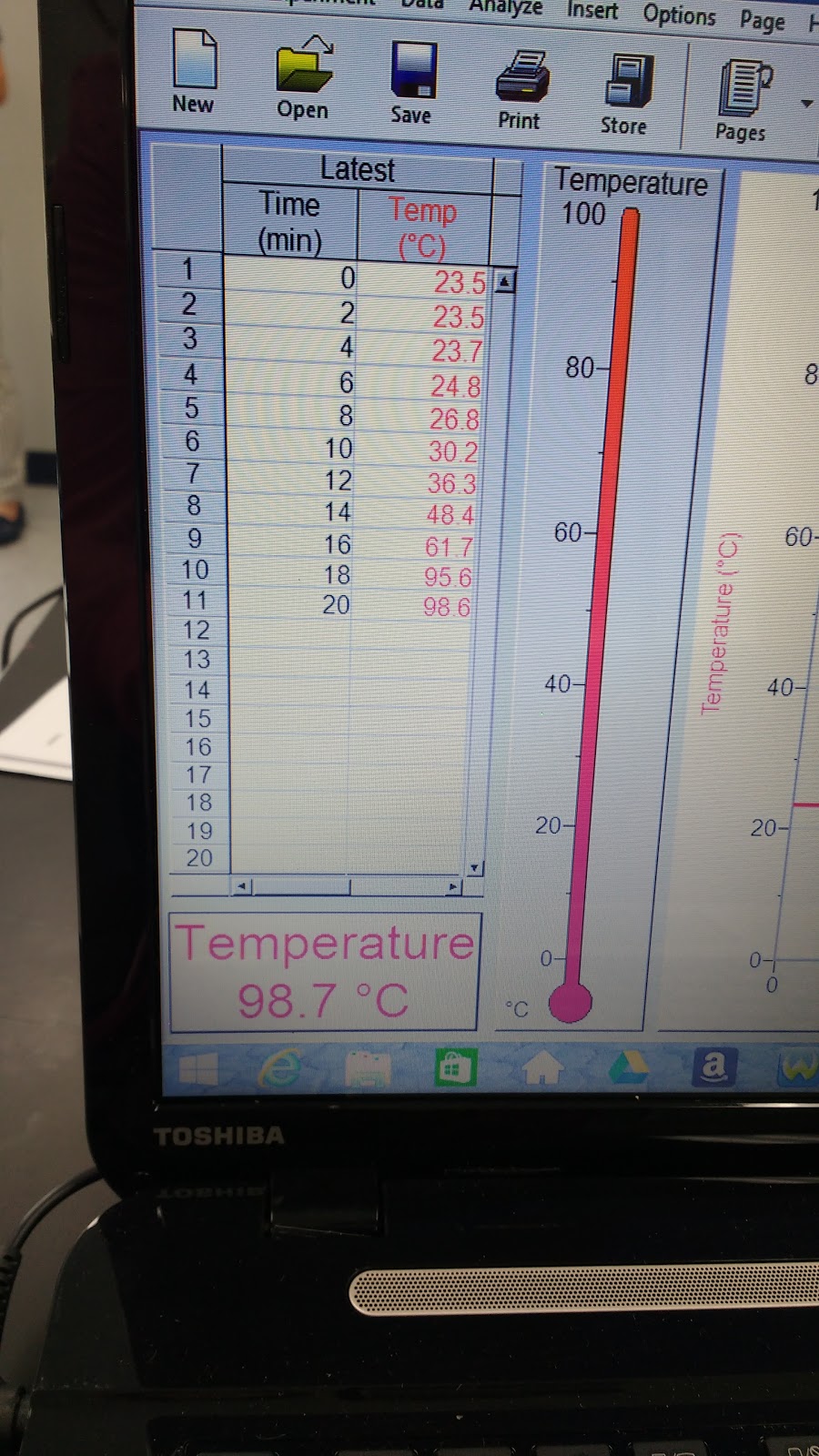
It was very cool to be able to see the temperature level off as the distillation proceeded.
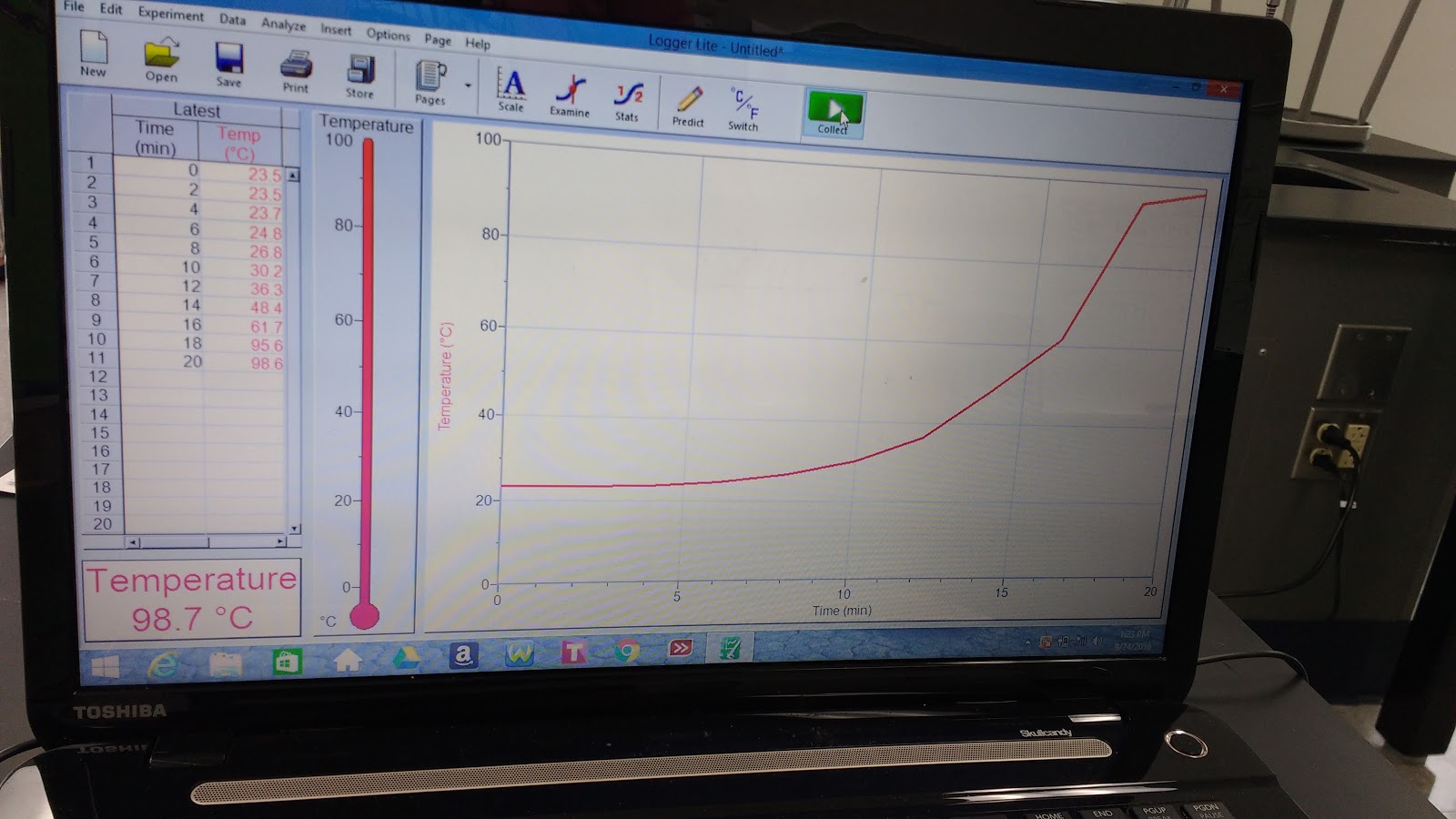
For our last lab, we mixed oil and water in a bottle and proceeded to try and separate them once again.
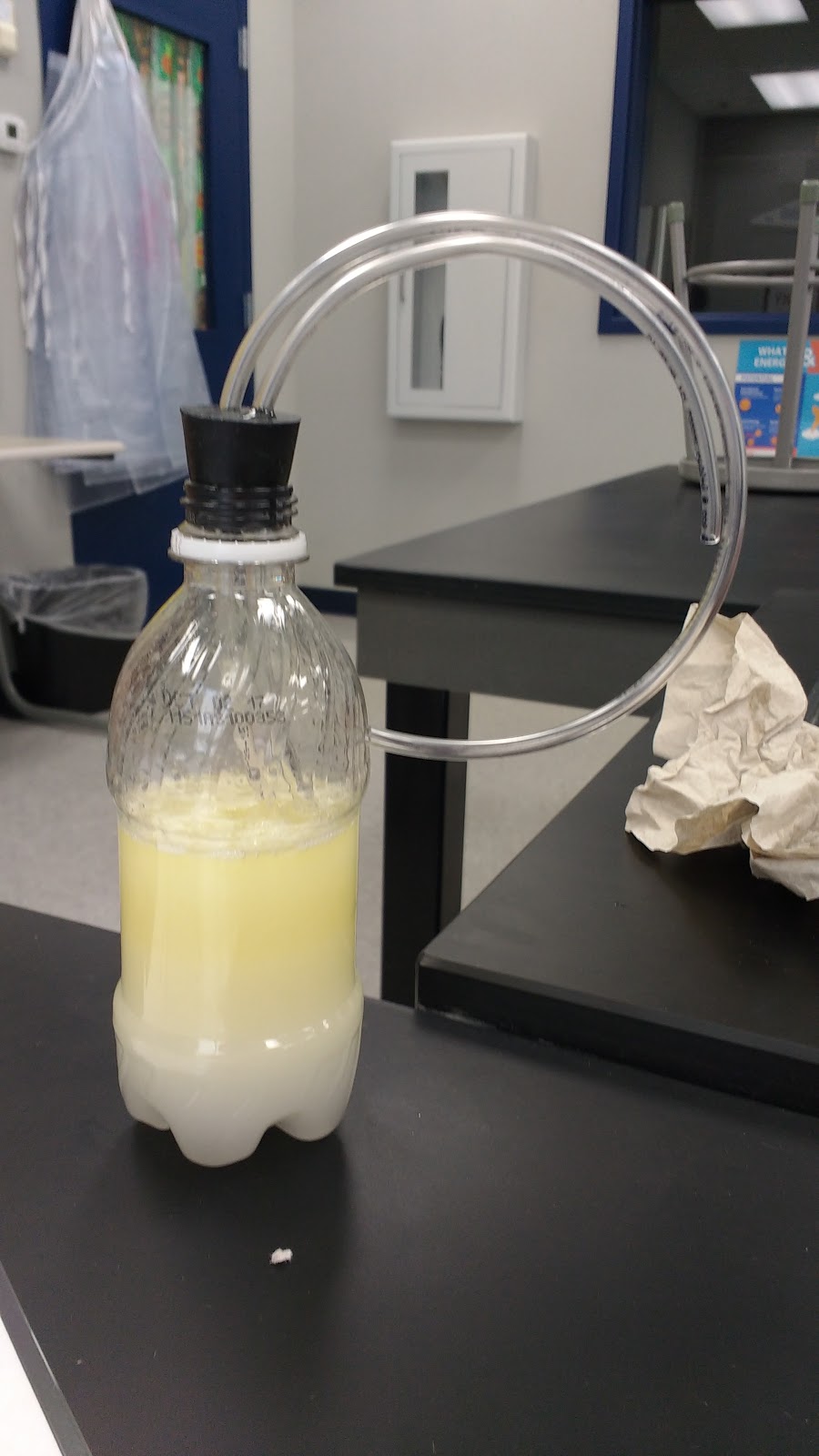
We first tried to separate the water and oil by injecting more water.
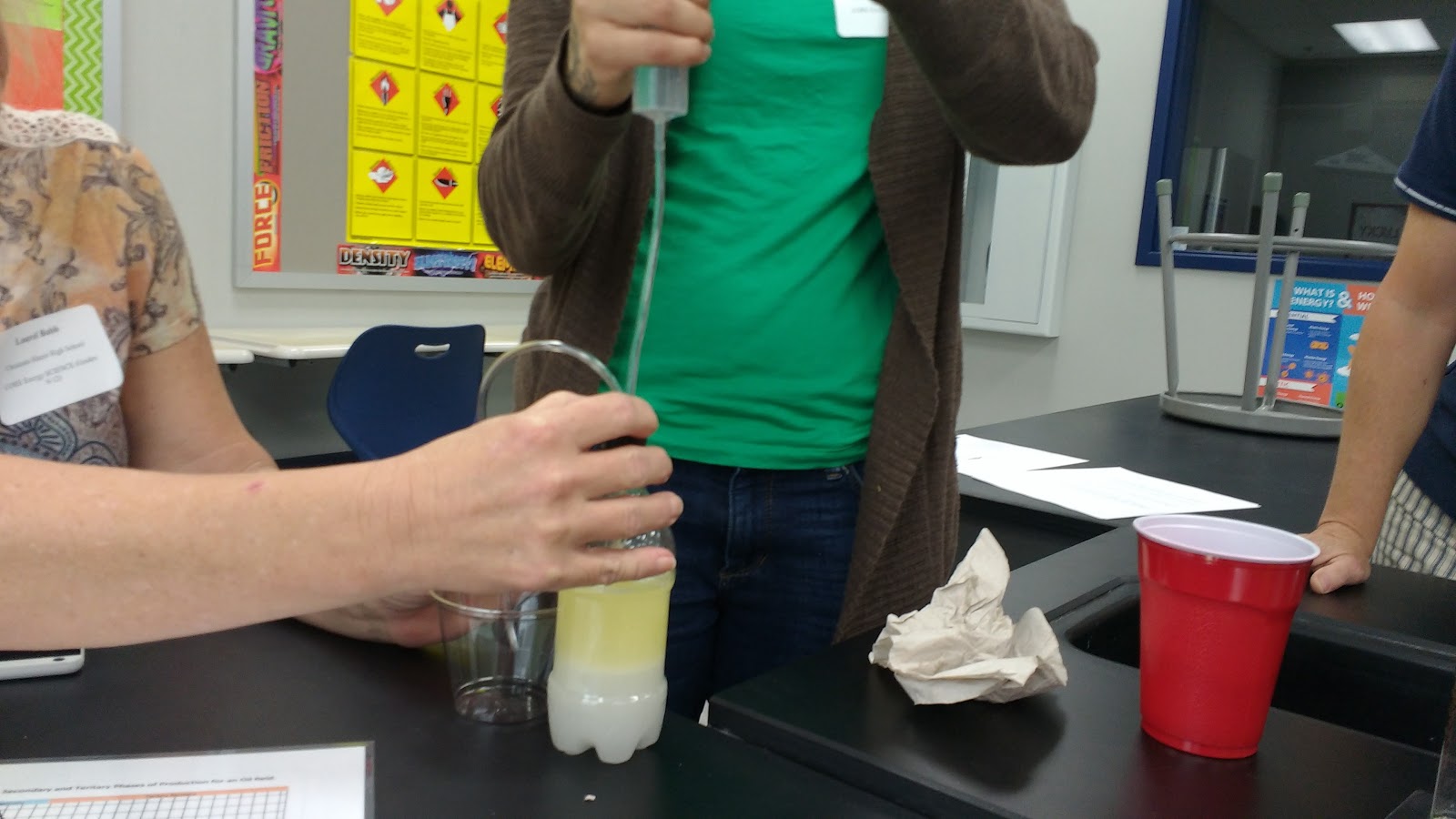
It worked!
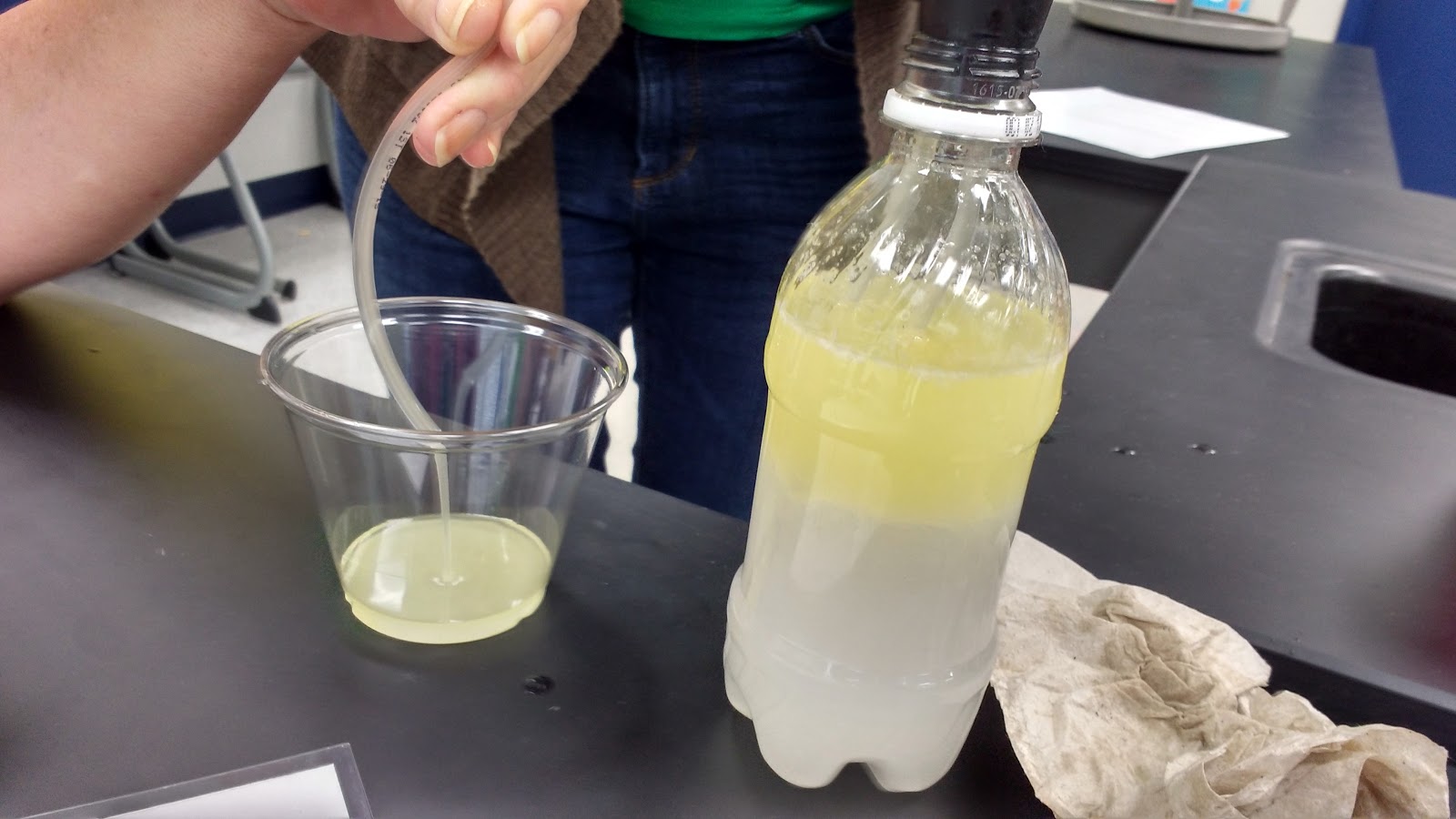
Then, we used yeast to do the same thing.
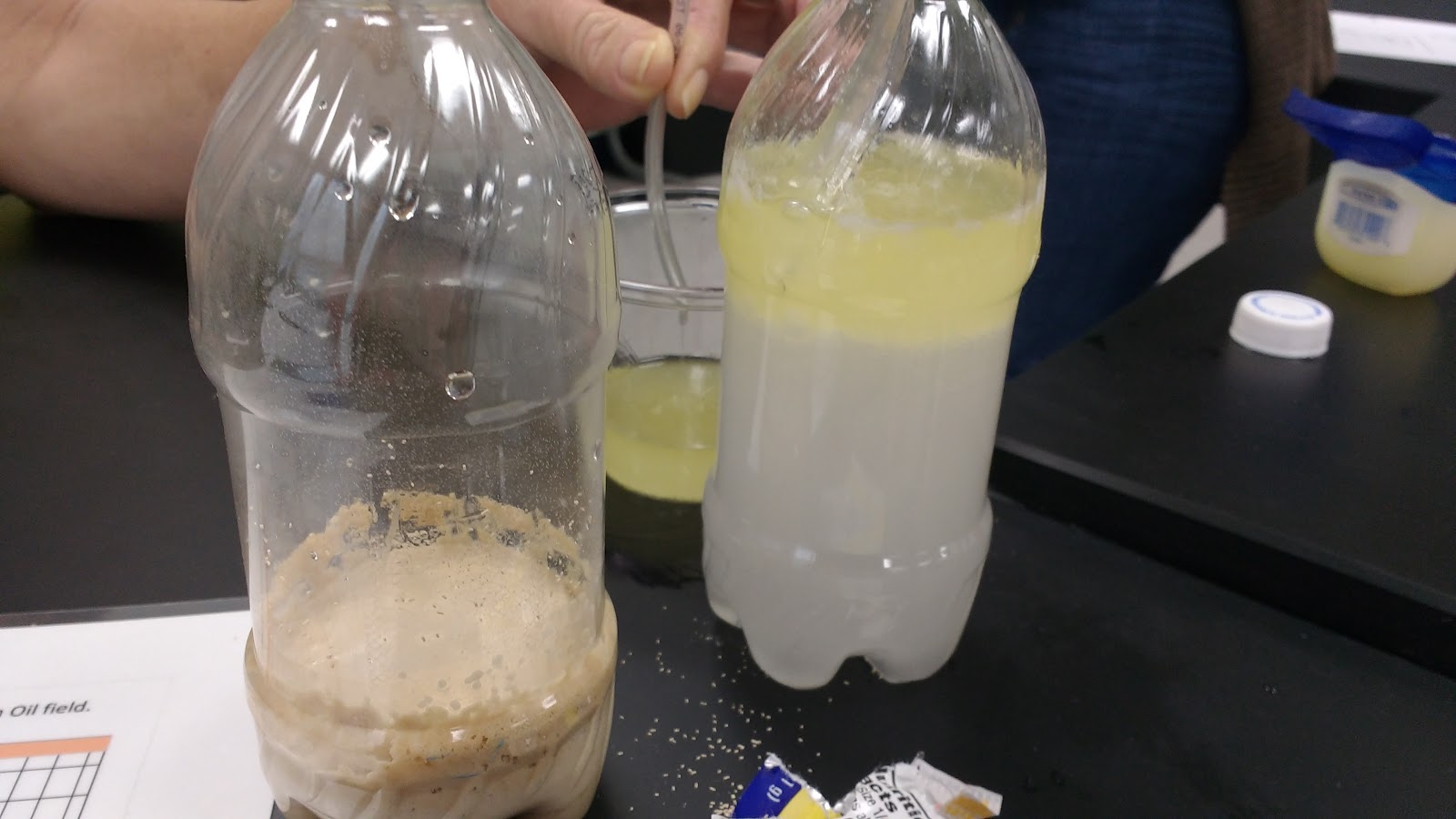
I left the workshop feeling more confident about teaching science, so it was definitely worth it!
My husband was quite surprised when I came home with two GIANT tubs of supplies. We were given enough supplies to do all of the labs with our students. We got enough to do three set-ups of each lab.
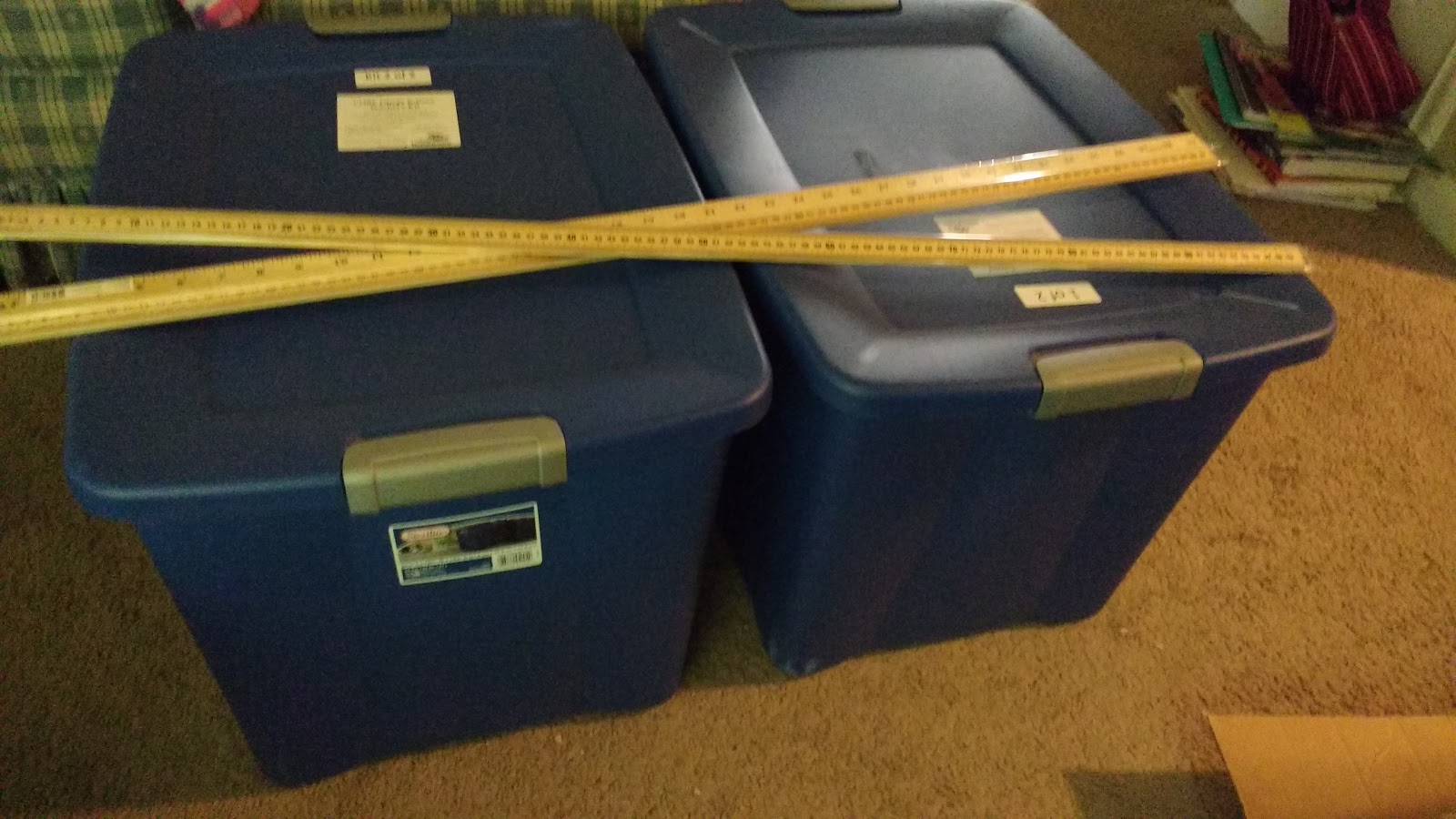
Here’s the list of what I received:
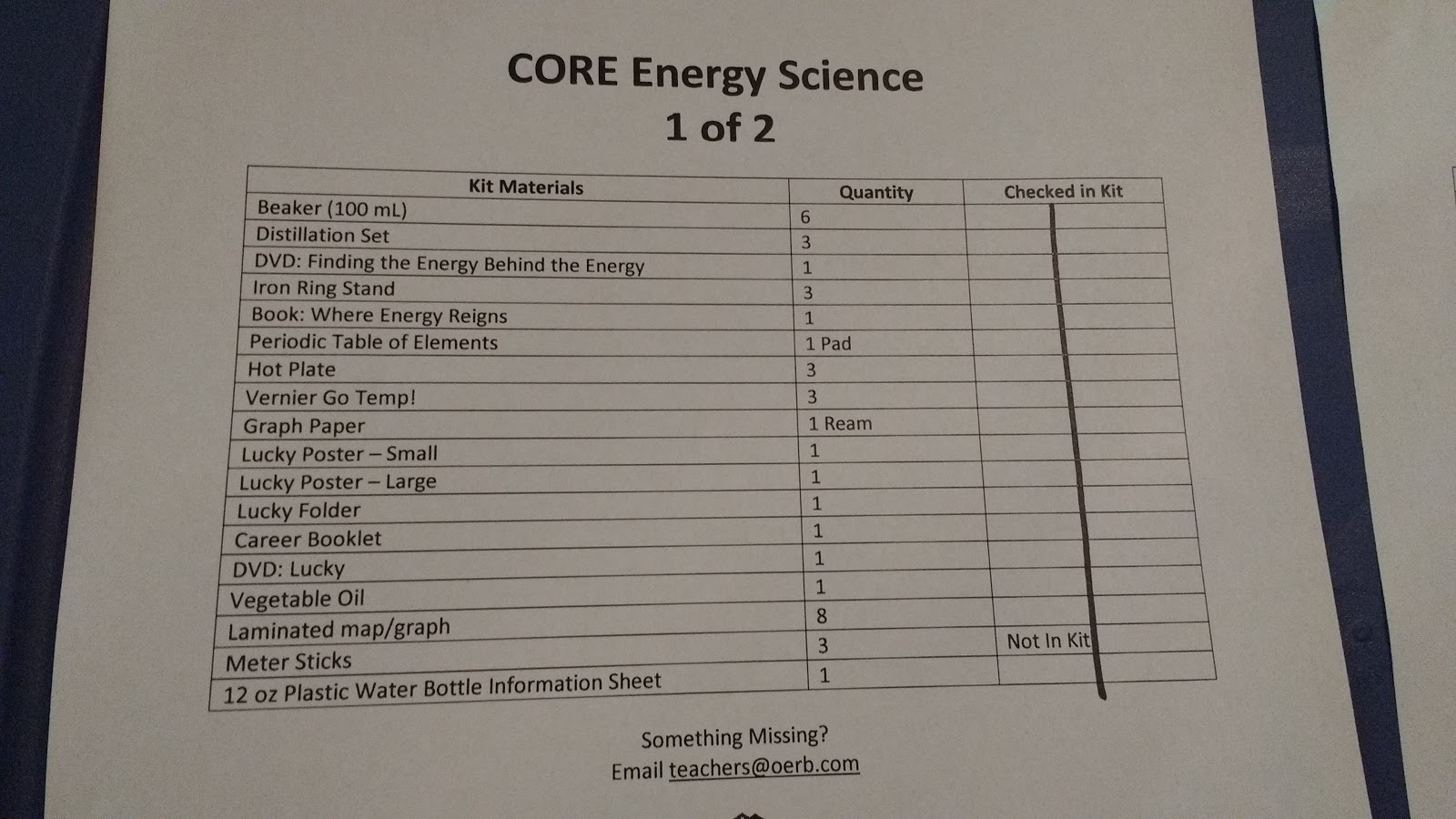
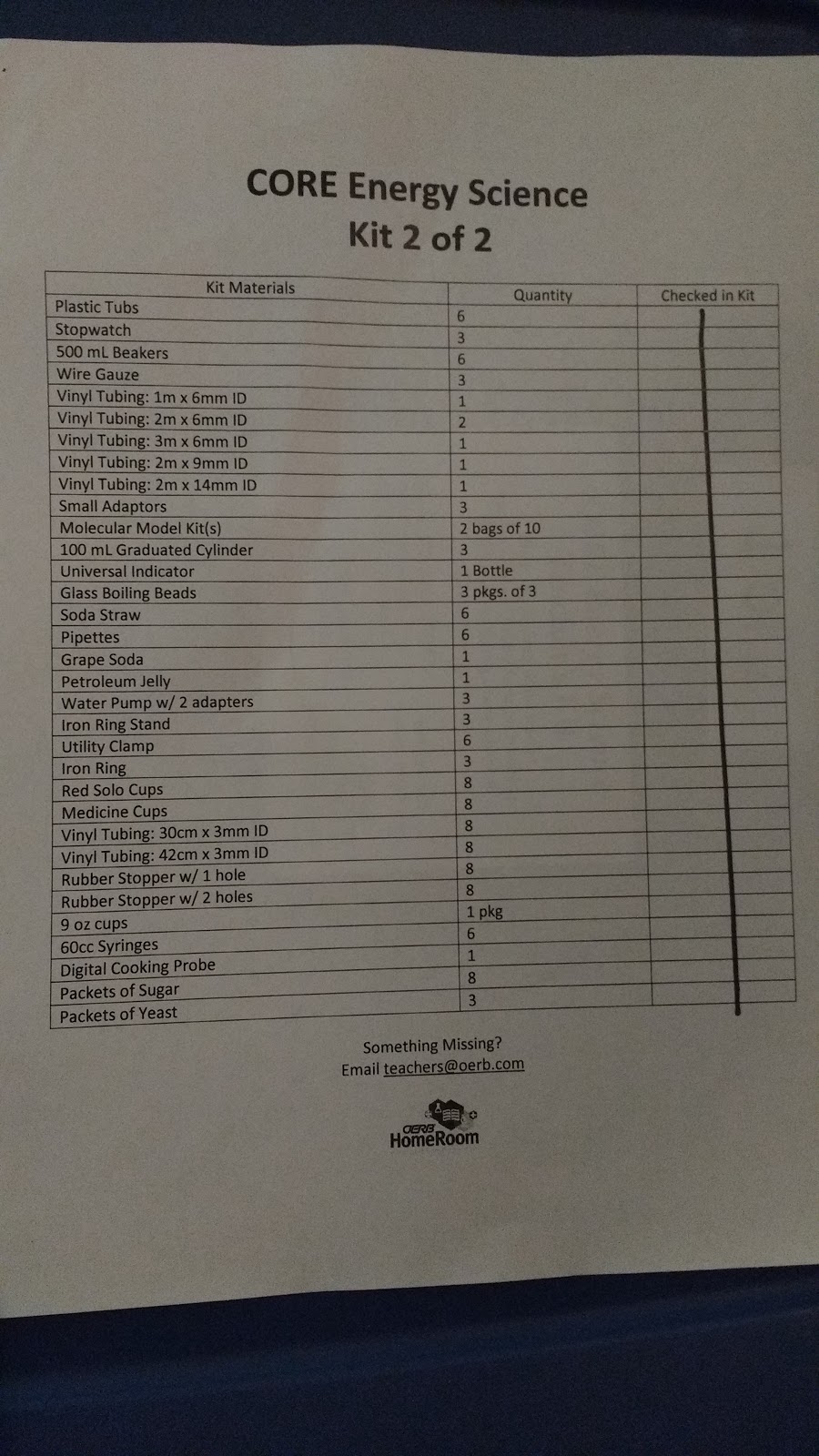
I’ve designated one of the cabinets in my classroom as my science cabinet.
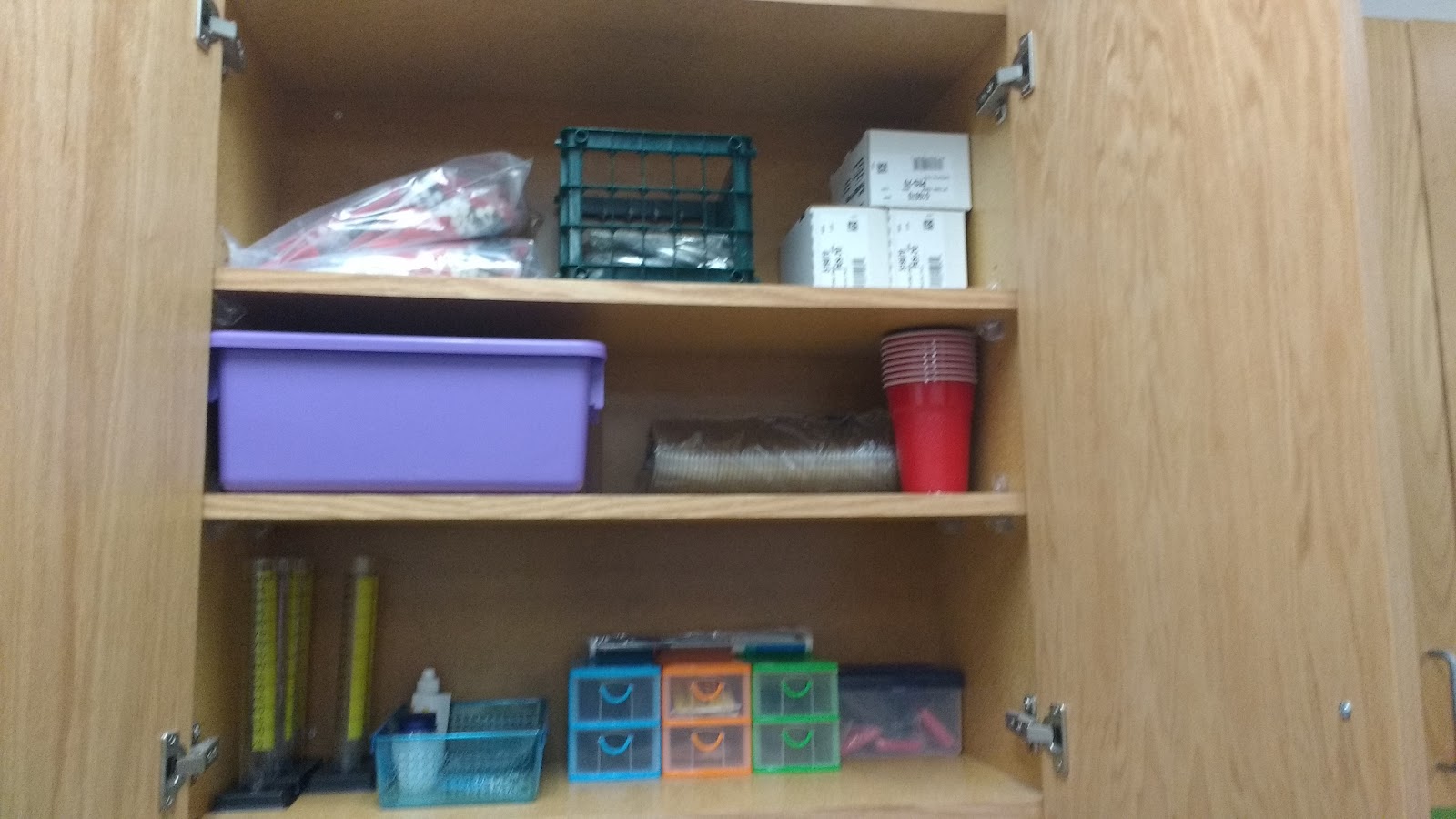
Graduated Cylinders:
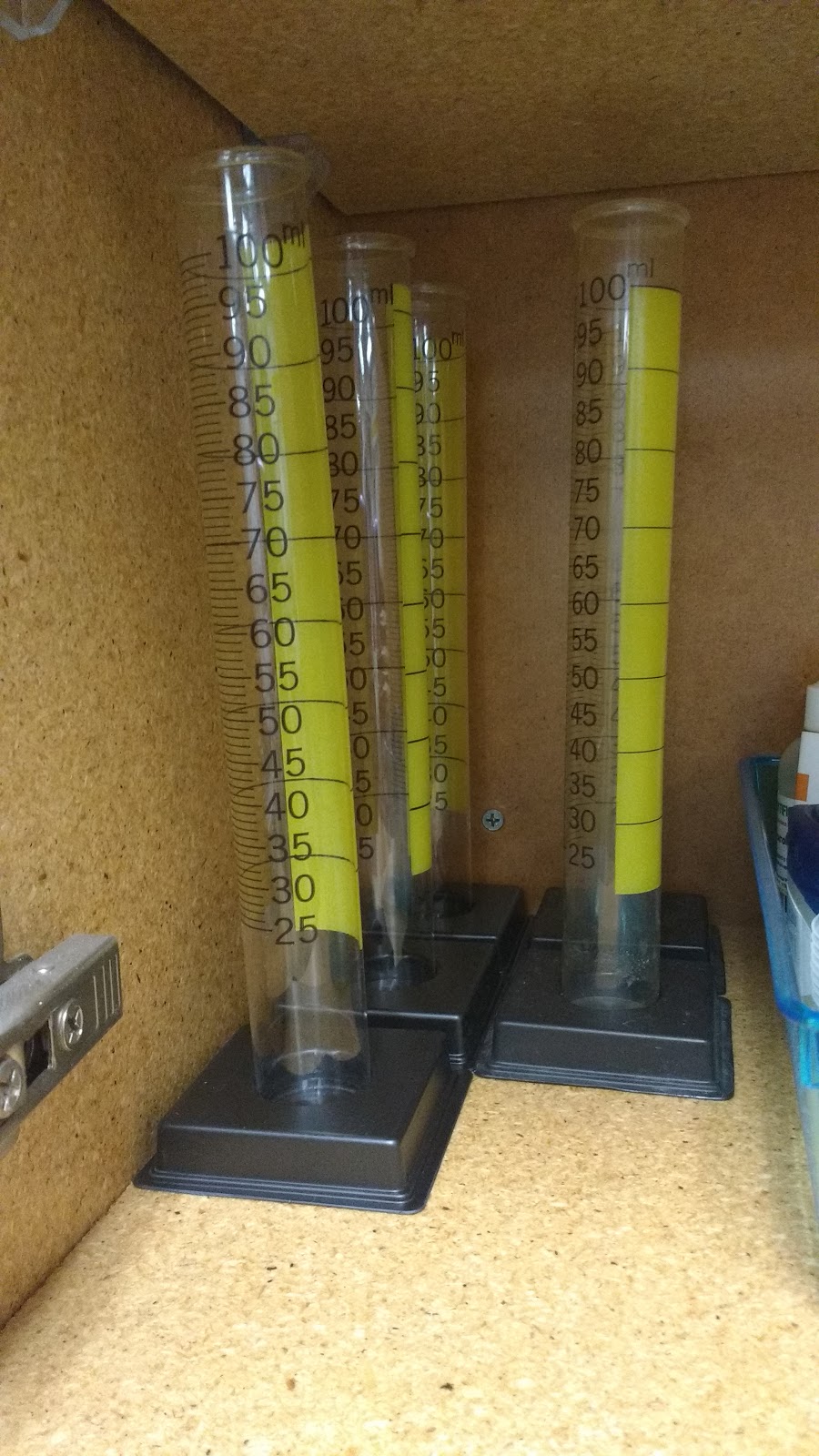
Medicine Cups, Vaseline, Universal Indicator Fluid, and Glass Boiling Beads:
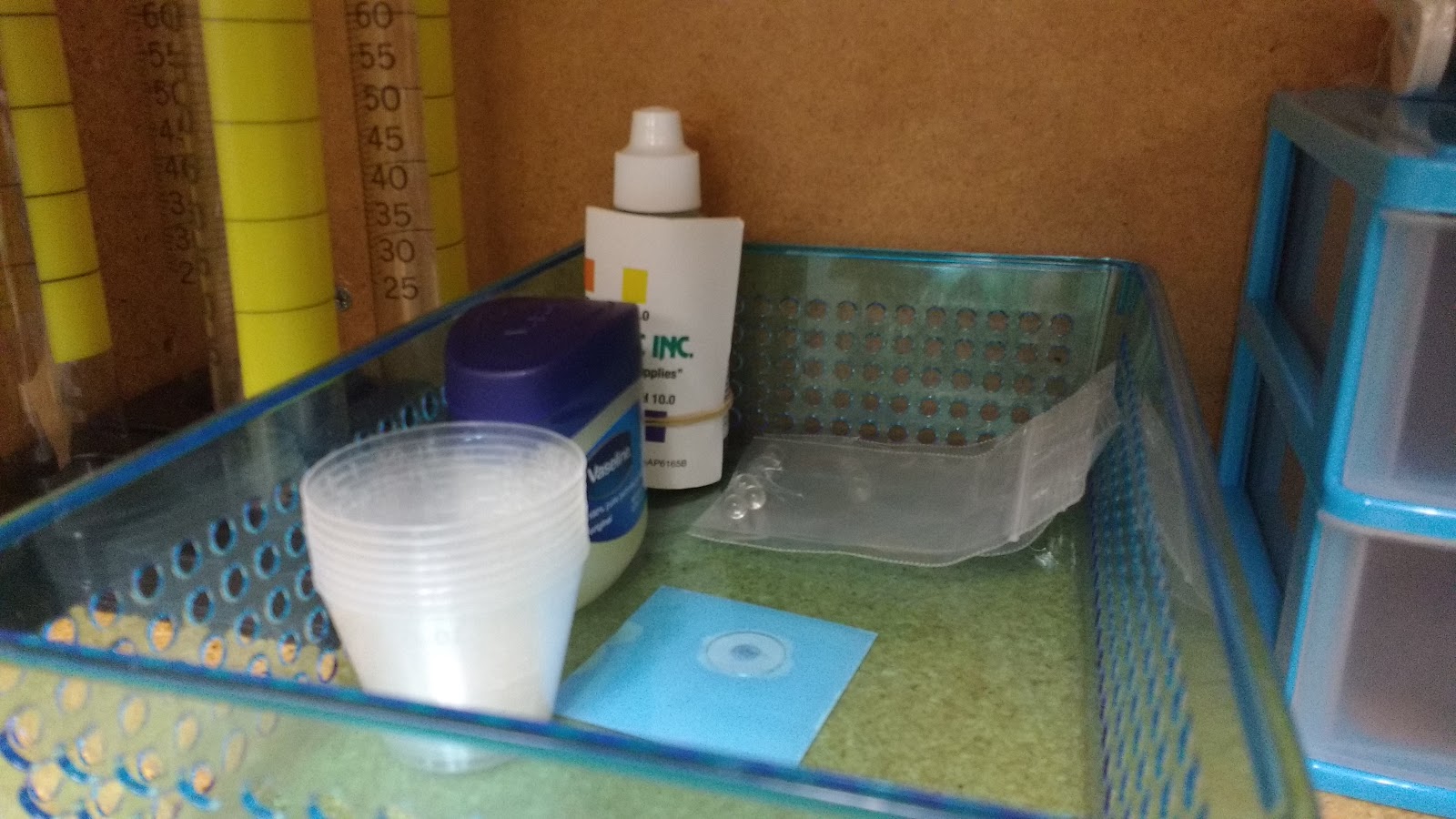
Last year, I bought these mini drawers at Dollar Tree. They are working perfectly to hold all the small items I received. On top of the drawers is the digital thermometer I received.
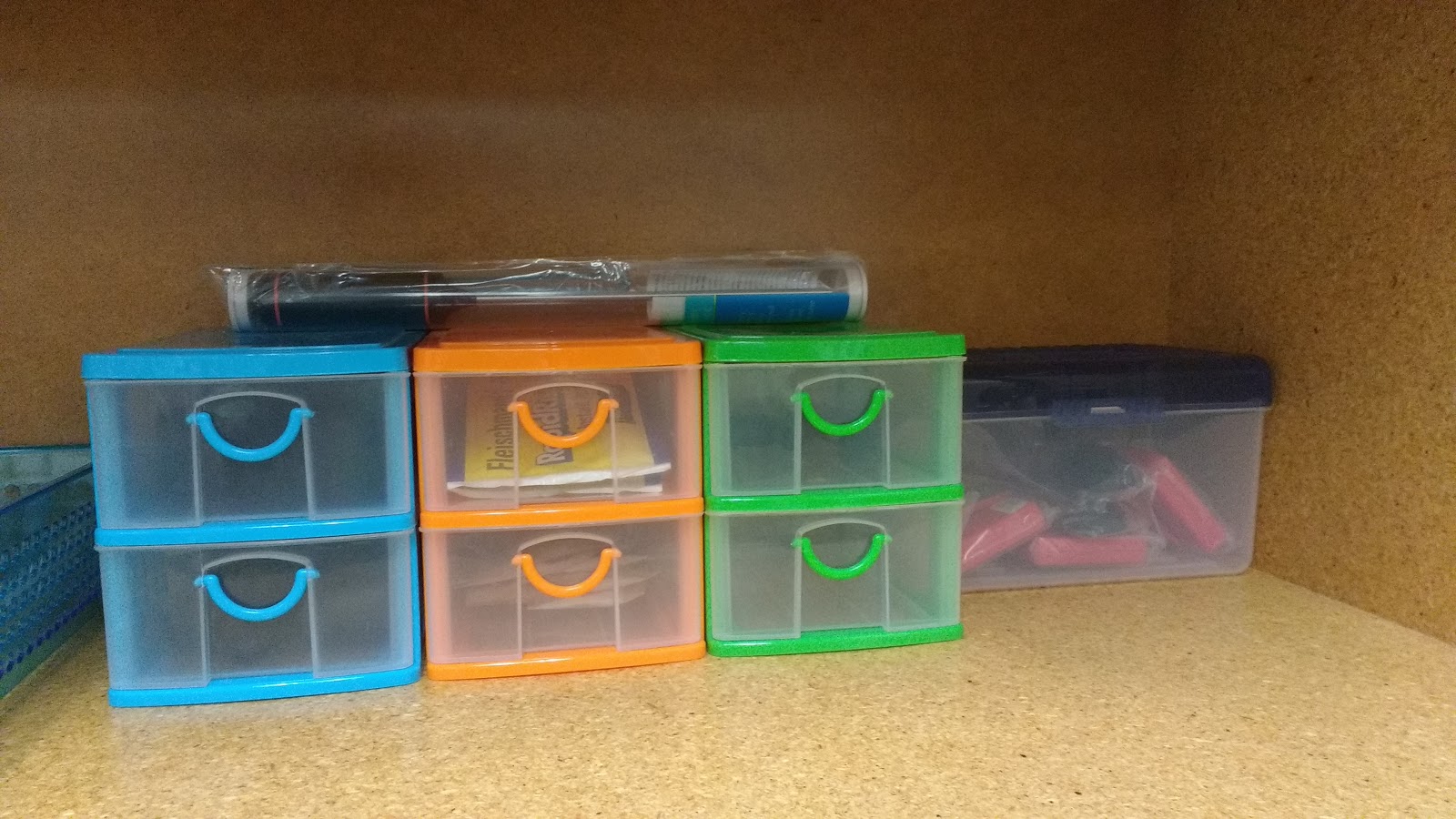
The blue set of mini drawers has one-hole and two-hole stoppers.

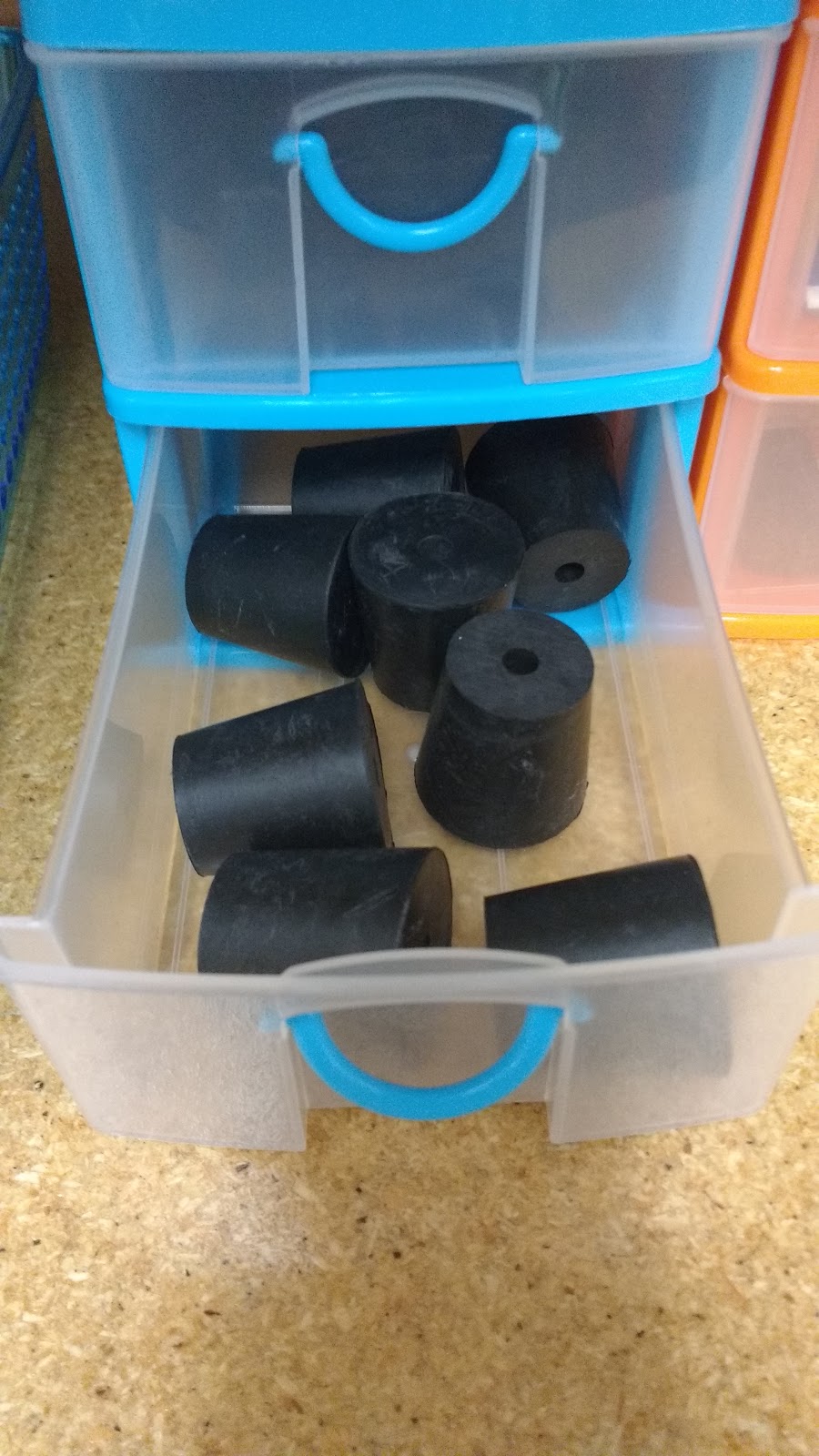
The orange mini-drawers have yeast and sugar in them.
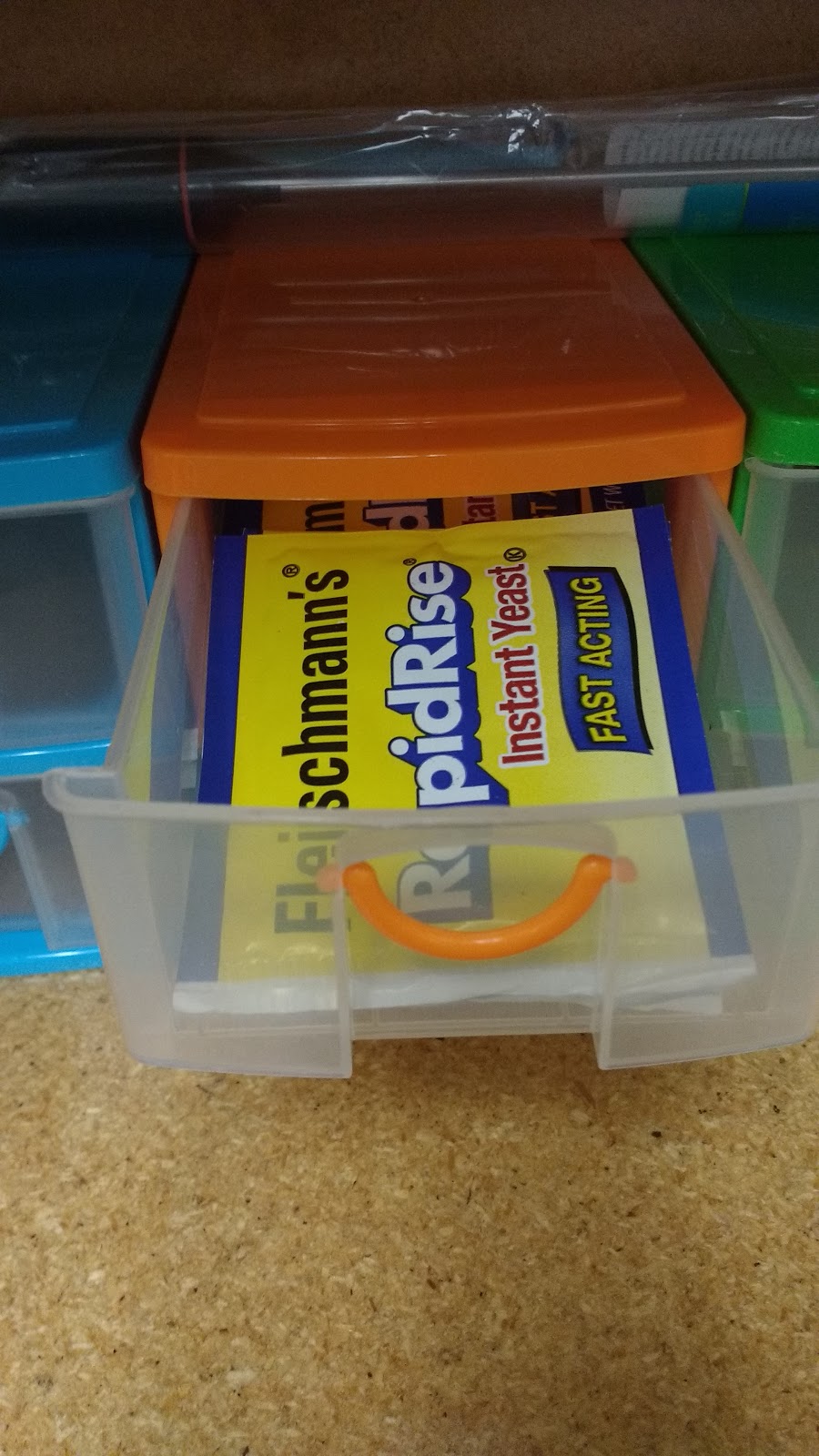
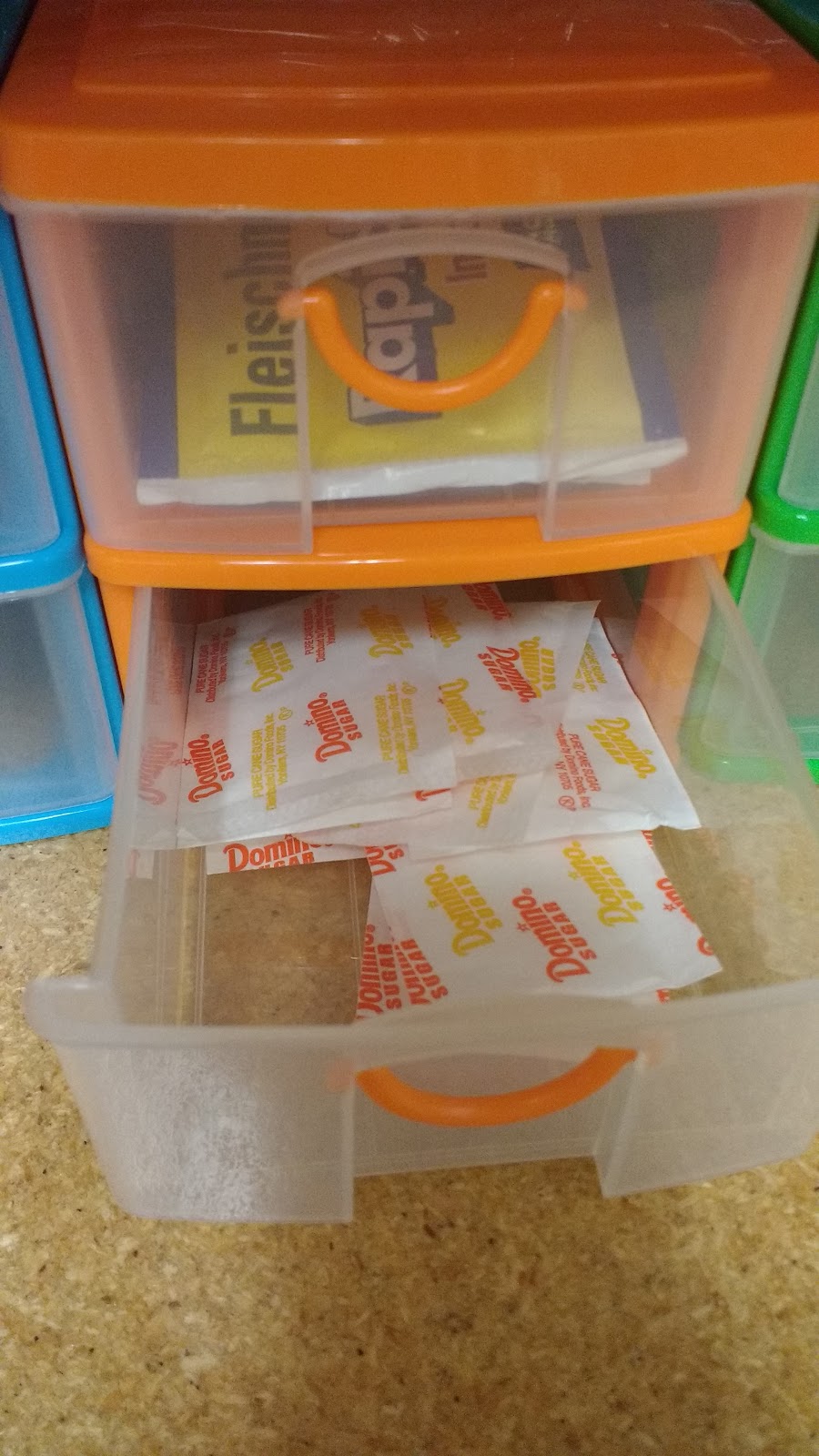
So far, the green mini-drawers only have adapters in them.
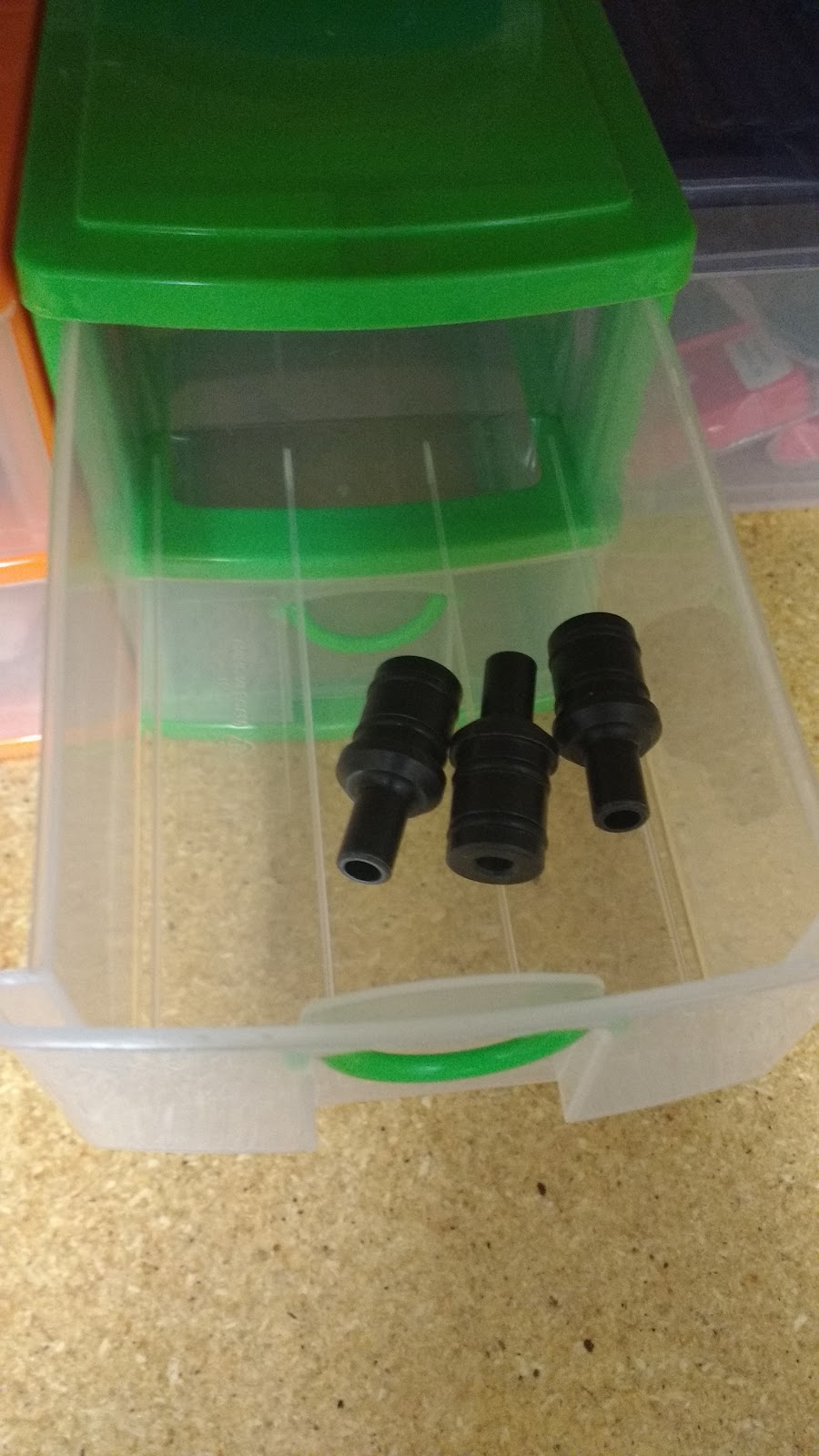
I’m pretty excited these MyChron timers. I usually have my students use their phones as a timer, but sometimes that’s a bit too much of a distraction for them. 😉
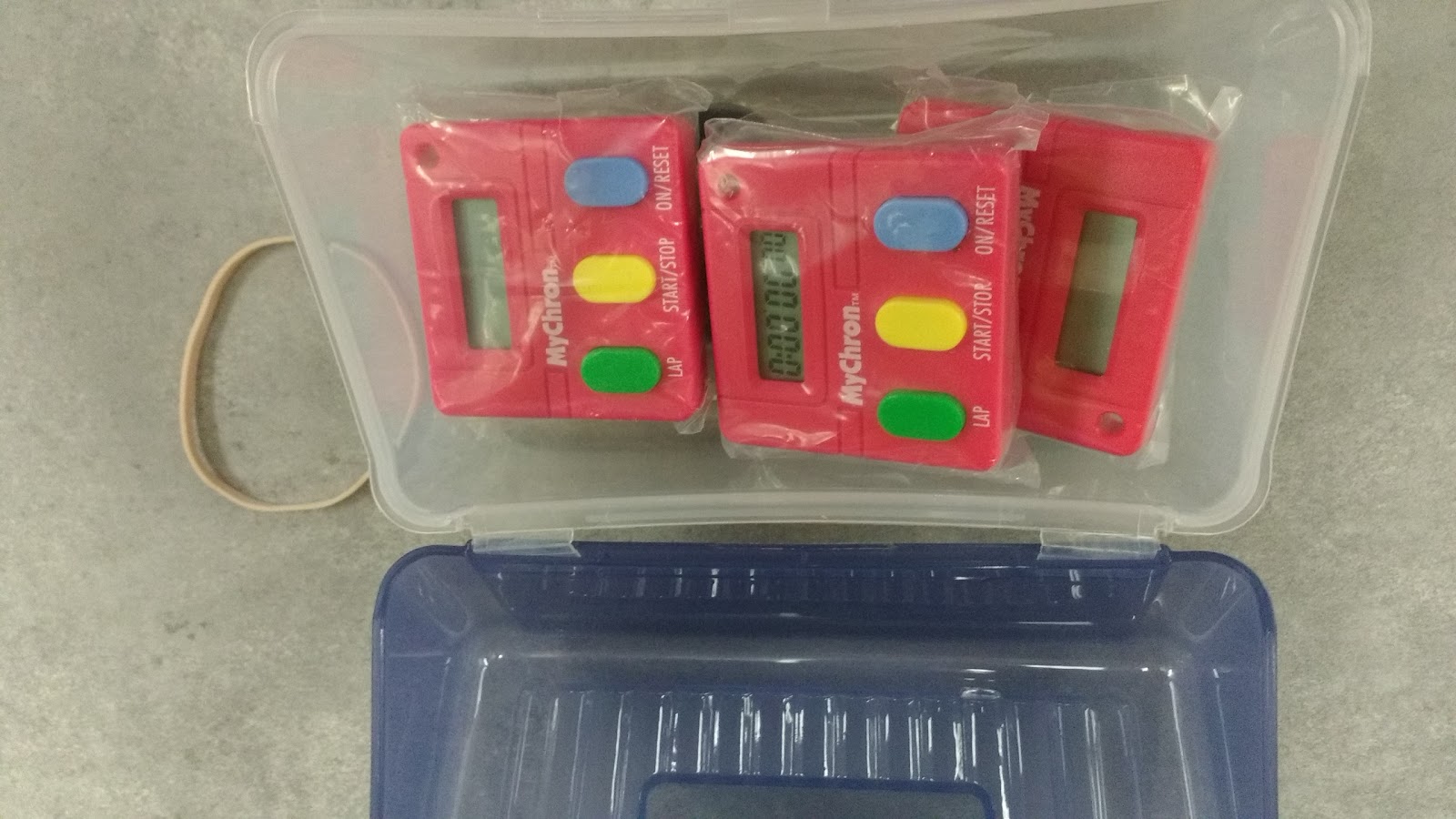
These syringes are for the oil/water separation lab.
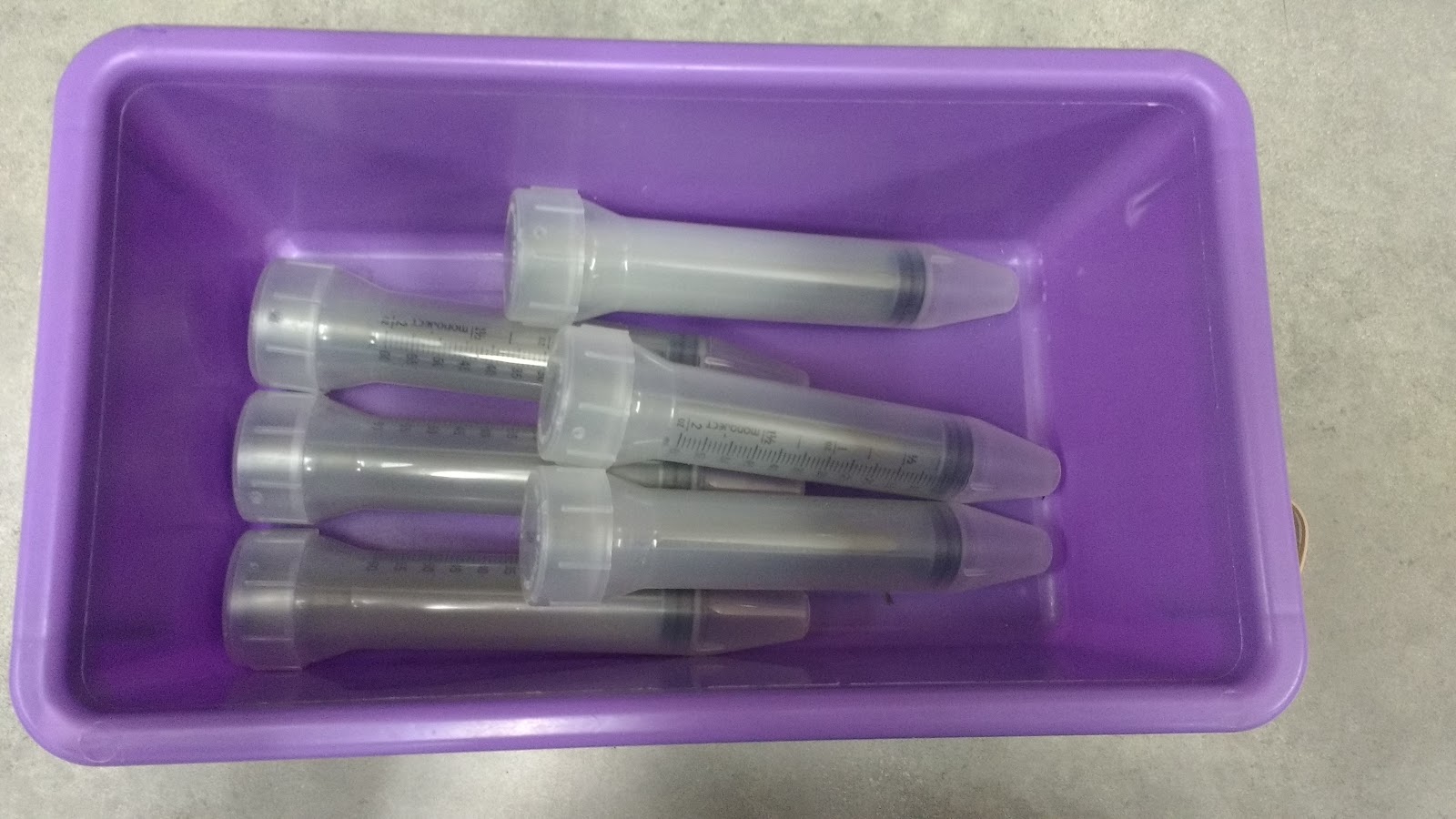
These plastic beakers have already come in handy in my classroom. When they are in my cabinet, they are holding pipettes, straws, and Grape Fanta.
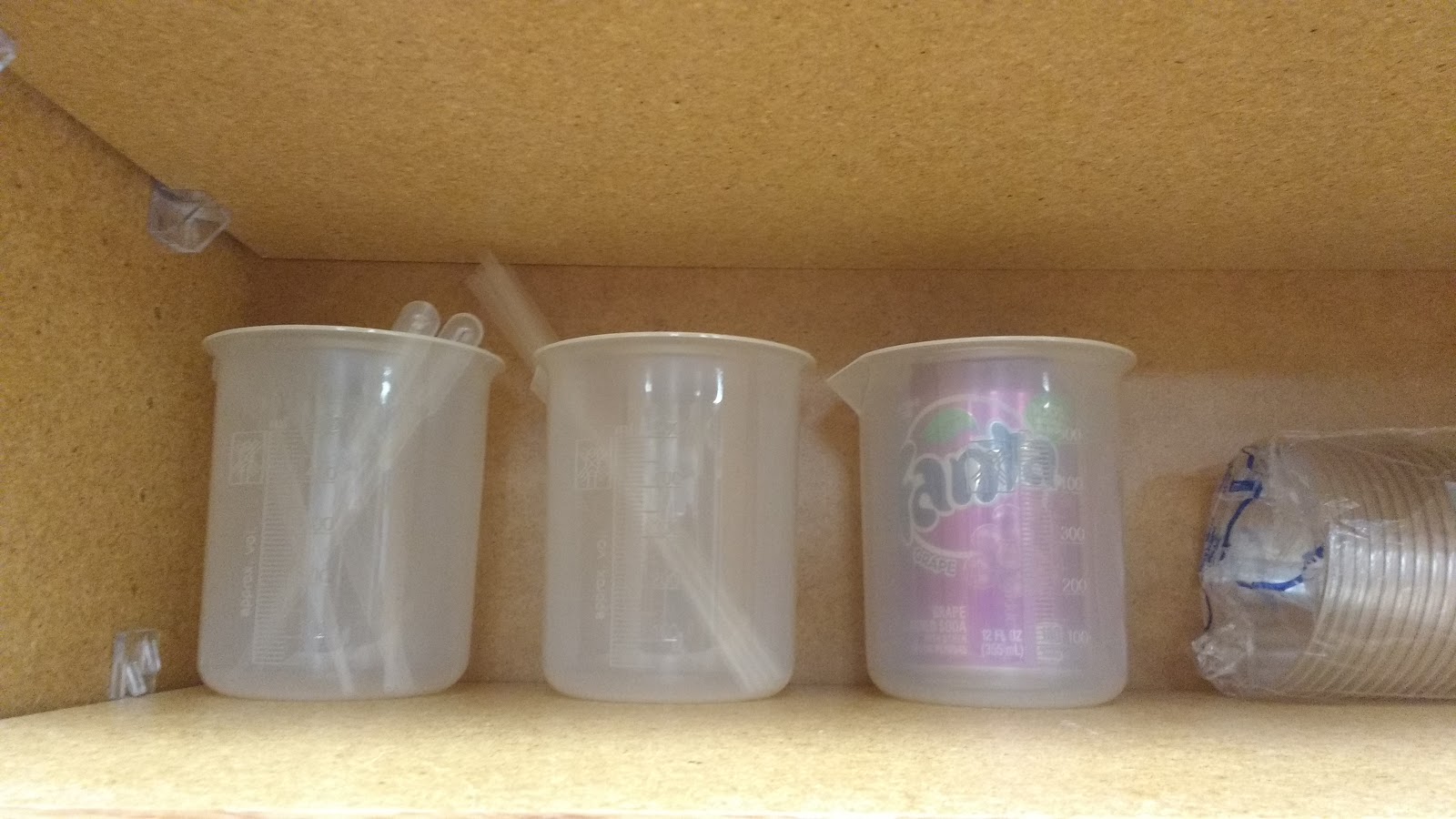
These cups will also come in handy for numerous activities throughout the year!
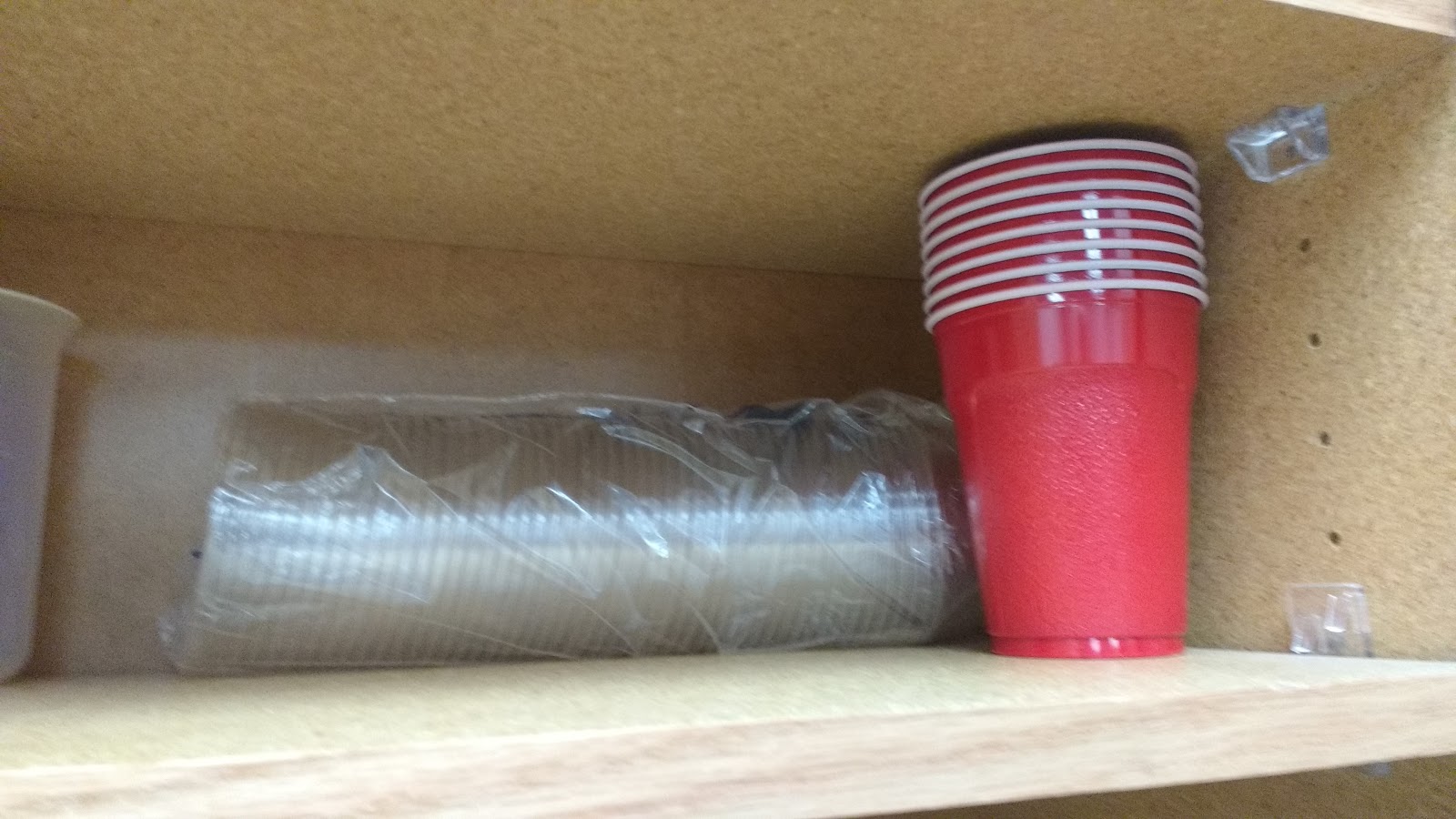
Here are the hydrocarbon modeling kits I showed earlier.
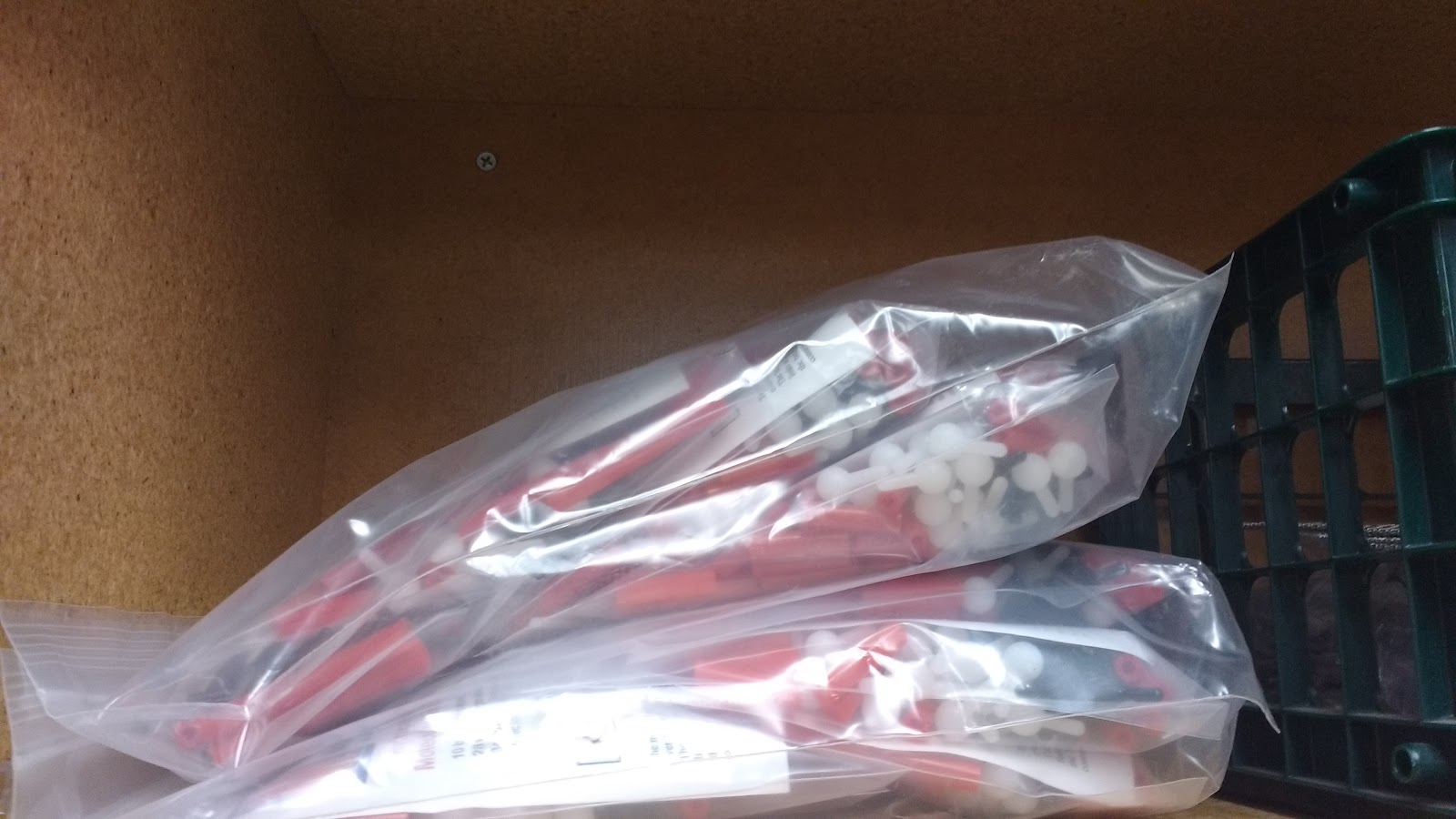
Rings and clamps and wire mesh for ring stands:

Fountain pumps:

Plastic tubs. I’m so thankful for these because they will allow me to do labs in my non-science lab!
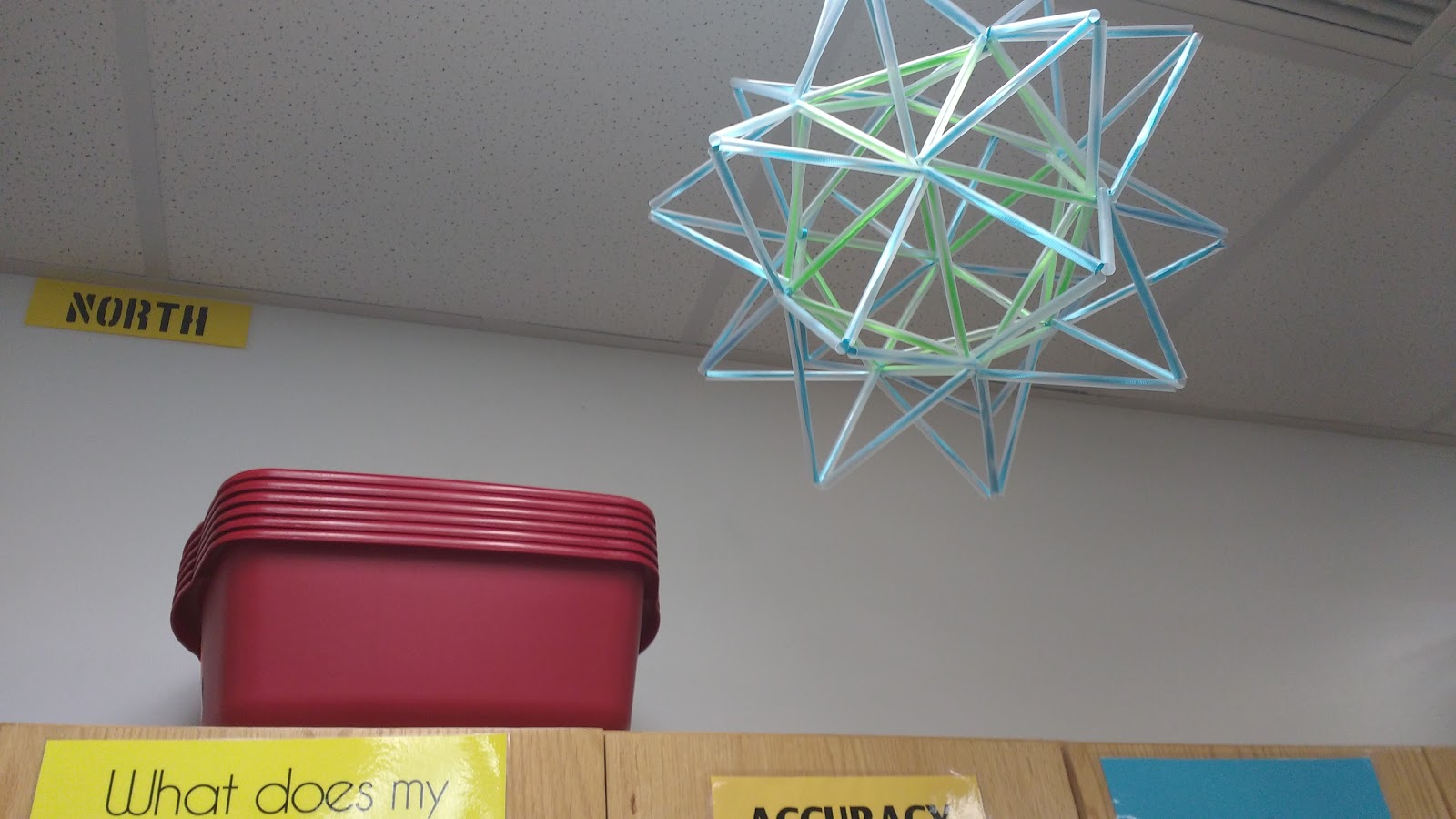
Ring stands:
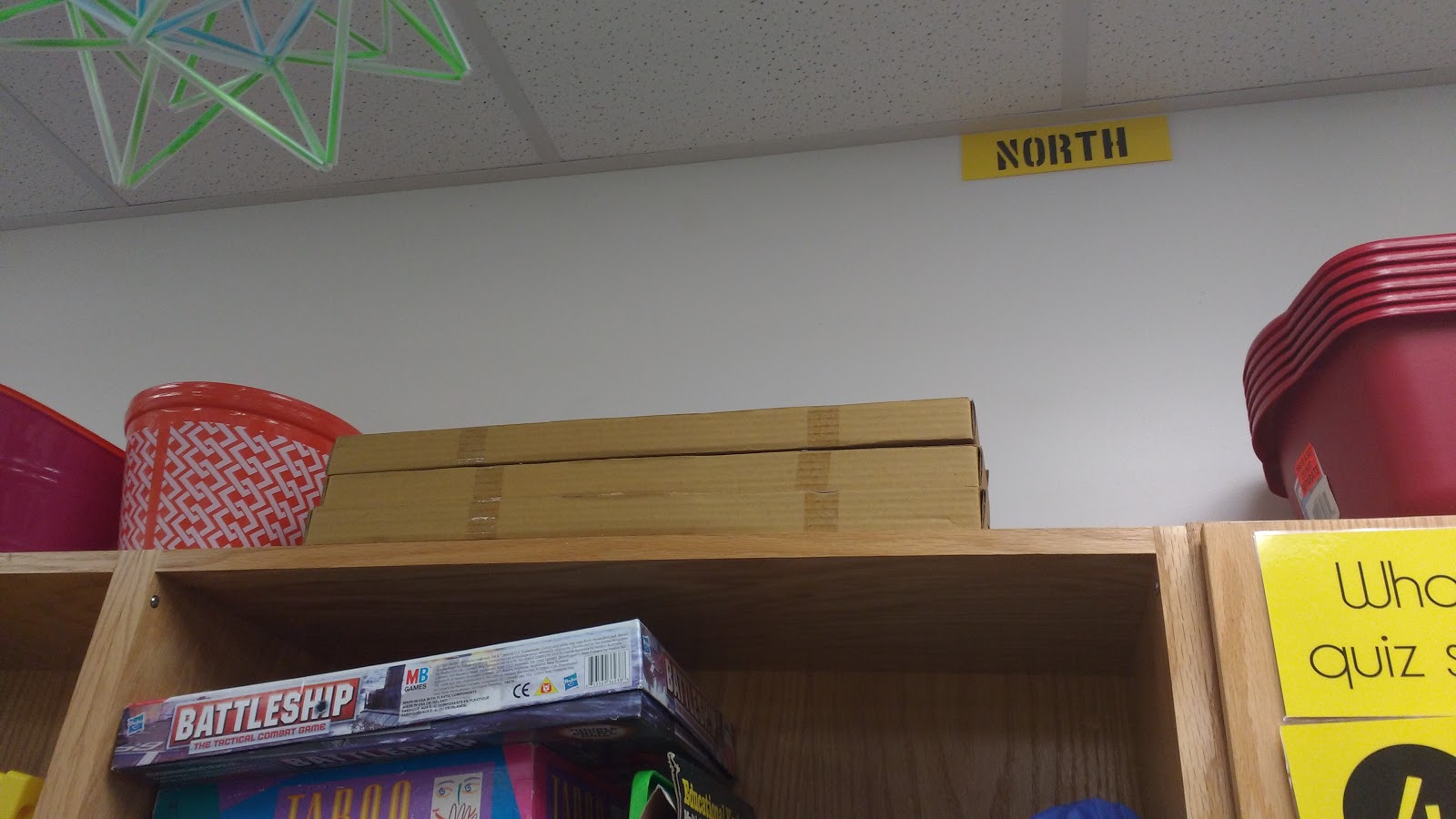
I also received a set of 100 mL glass beakers.
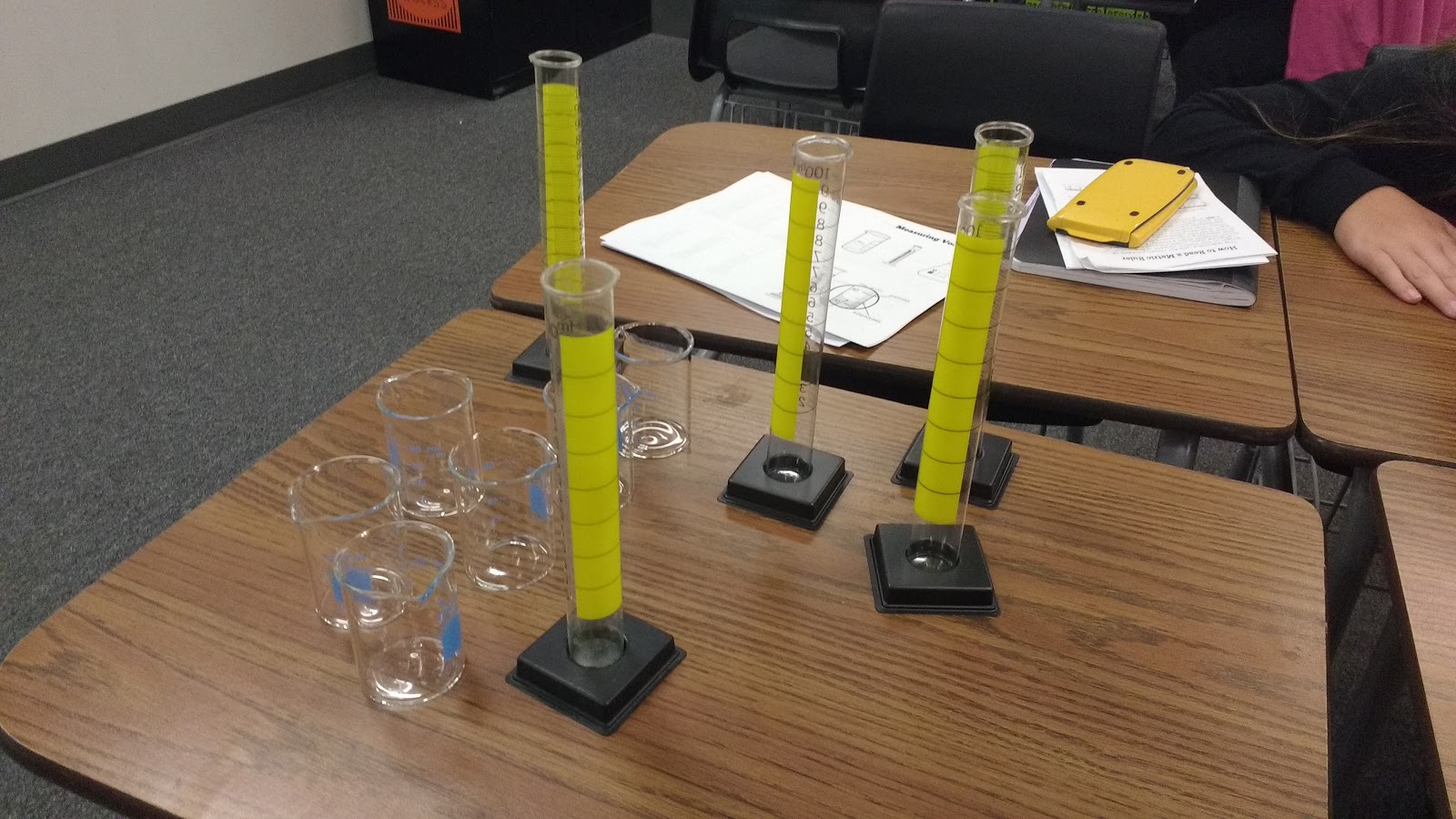
Not shown in these pictures are the distillation kits, graph paper, periodic tables, tubing, and hot plates I received. I’m starting to think I’m going to need TWO science cabinets!
The more experience I gain with teaching science, the more I realize why science teachers have labs to store all of their stuff!
Thank you, OERB!
November 2, 2016 – Volume 42 Things Teenagers Say
My students tell me that it’s been TOO long since I posted a Things Teenagers Say post. So, here it is!

—
I can’t wait to be a teacher so I can go to teacher luncheons!
—
I have a pancreas. I just thought I’d say that.
—
My notebook is ruined. That means my life is ruined. I’m going to drop out of school.
—
PJs are a uniform for bedtime.
—
You are a panda bear, not a marching student.
—
I would call that equation my cousin. Wink Wink
—
When I get a girlfriend, I’m going to have lots of affairs.
—
If I ever go to Canada, I’m going to say “B” when they say “Eh.”
—
If you have to think about a roast, it’s not a roast.
—
It’s troubling having two of me. (Said by a twin)
—
Headstone plus headstone equals Shaquille O’Neal’s acting career.
—
My cousin’s boyfriend broke up with her. Now, it’s my time to slither in.
December 20, 2016 – Verruca Value
So, what’s your verruca value? Have no clue what that is? Don’t worry. I didn’t know what it meant until the other day, either.

First, I have to give a huge shout-out to Julie Morgan for introducing me to the Transum website. (Check out her awesome blog post with 5 excellent resources you should make yourself familiar with!) This awesome website has a different starter (think bellringer!) that you can use for math class for every single day of the year!
After clicking on random starters to see what I could find, I stumbled upon this starter and used it the very same day!
We started by having a friendly class competition to see whose first name had the largest Verruca Value. In the class I tried this with, we have a foreign exchange student from Thailand. We learned that the five letter name we’ve been calling her all semester is actually a shortened form of her name. So, she wowed us all by spelling out her entire name. She also won the contest by a landslide.
Next, students were begging to figure out the “Verruca Values” of their last names. I promised that we could figure those out AFTER our algebra lesson. At the end of our lesson, we calculated the “Verruca Values” of our last names. Our foreign exchange student won again!
One student was able to come up with a word with a Verruca Value of 24! And, in the end, our foreign exchange student’s last name had a Verruca Value of 24, too!
This would be the perfect introduction to a lesson on prime vs. composite numbers. I’m also thinking I could pull it out when we do correlation. Length of name vs. Verruca value.
I highly recommend that you spend some time checking out the Transum website. I think you’ll be as pleasantly surprised as I was!
December 29, 2016 – Ways I’m Staying More Organized This Year
Every school year, I tell myself that “This is the year I’m going to finally get organized.” And, then I fail and find myself saying the exact same thing again the next year. I’m not sure what’s different about this year, but I’m finally feeling semi-organized. I am teaching in a different school which means a new classroom. If you haven’t been following along, my district decided to combine our middle school and high school into a single building, so I still have my exact same job. I’m just doing that job in a different building. Having a new classroom has made it a bit easier to think about new organization systems.
So, here’s what I’m doing differently this year.
Answer Key Book
In the past, I’ve kept my answer keys in a pile. A messy, disorganized pile. Whenever I went to grade something, I would have to dig through the pile and *hope* I would be able to find the answer key. This was not ideal, but I guess I had myself convinced that it wasn’t too bad.
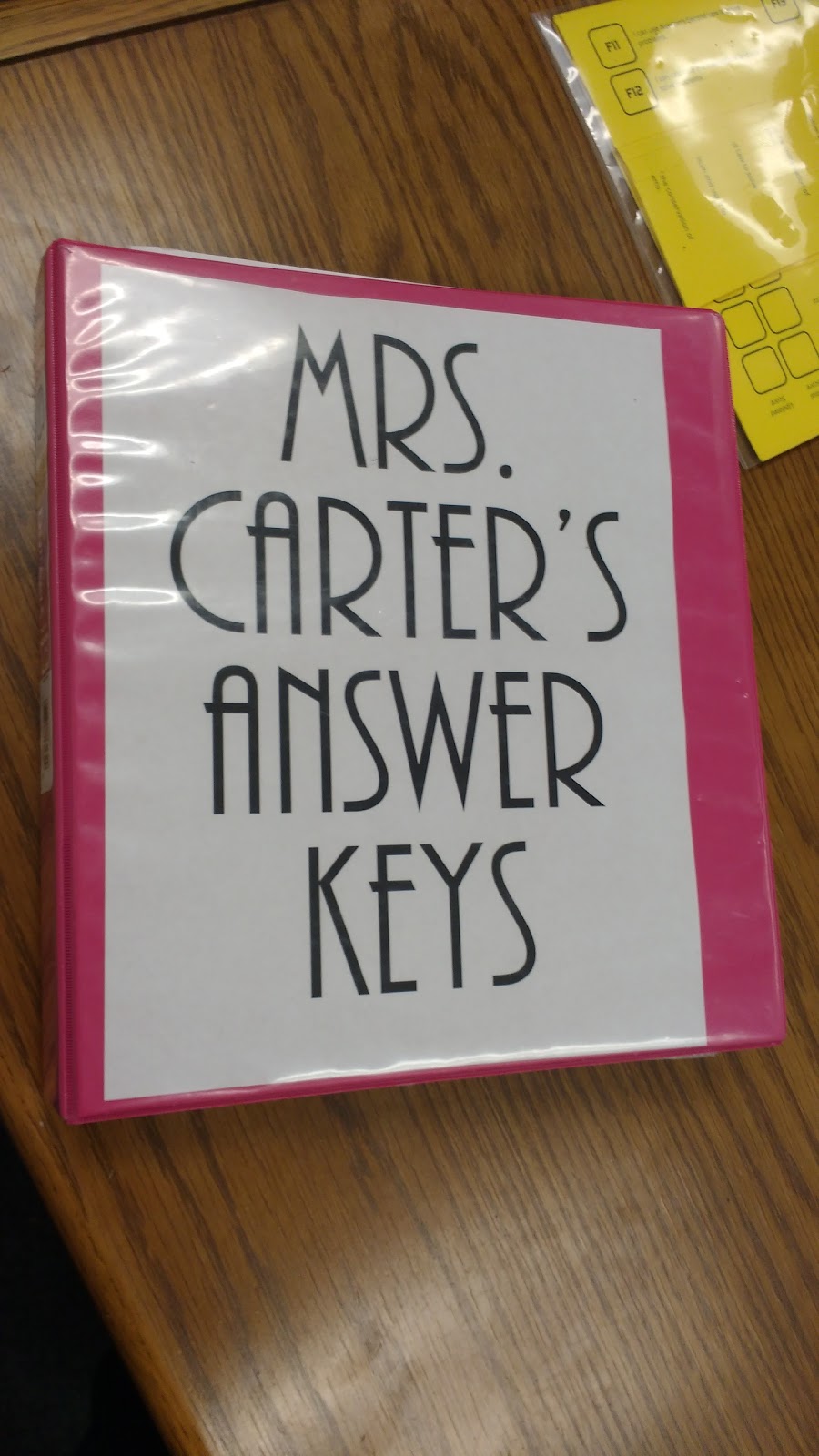
This year, in a moment of insanity, I decided I was going to write four versions of each quiz. My main motivation for doing this was that there is a cheating epidemic going on at my school. For the past few years, I’ve known that there were certain students who were cheating their way through my classes, but I never was able to catch them in the act. Having students in groups of four meant that four versions of each quiz was a natural thing to do. Since I do SBG and allow retakes, having different versions means that I can easily give a student a retake without having to write new questions off of the top of my head which is how I’ve always done SBG in the past. So, writing four versions of each quiz actually helps solve two problems.
It created a new problem, though. Soooooooooooo many answer keys. I took a binder I had bought previously for another organization project that I failed at and some sheet protectors from my “I’m going to save a copy of every activity I ever do” days. And, I made myself a life-changing answer key book.
There are post-it notes to separate my quizzes for each different prep.
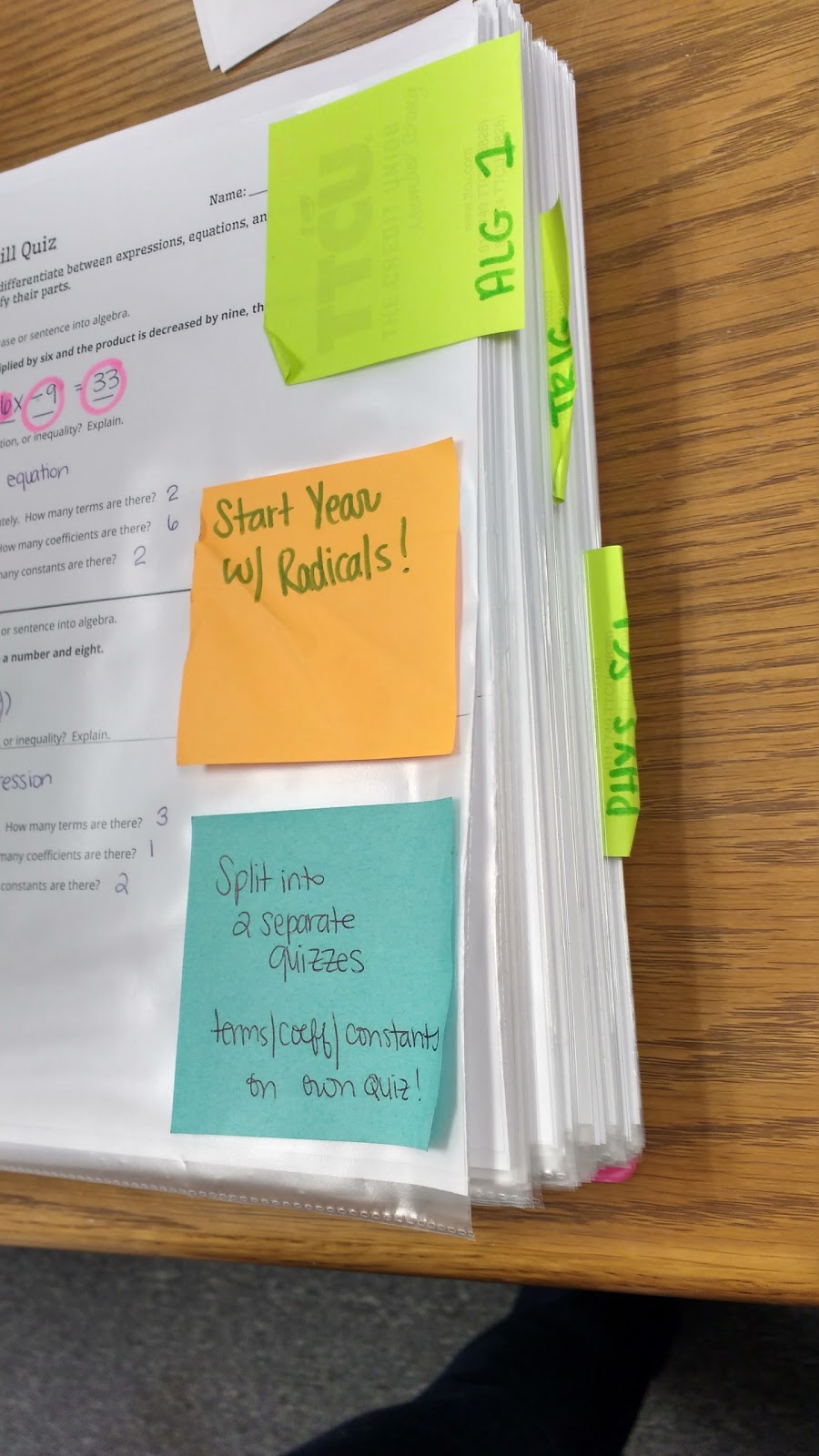
You’ll also see that I use post-it notes to write myself notes for how to do things differently next year. The quizzes are in chronological order, so it’s super easy to find old quizzes when grading retakes. It also helps that each quiz has a code on the top left corner. The quiz in the photo below is MS1A. That means it’s Version A of the 1st quiz of the MS (Mathematics of Science) Unit.
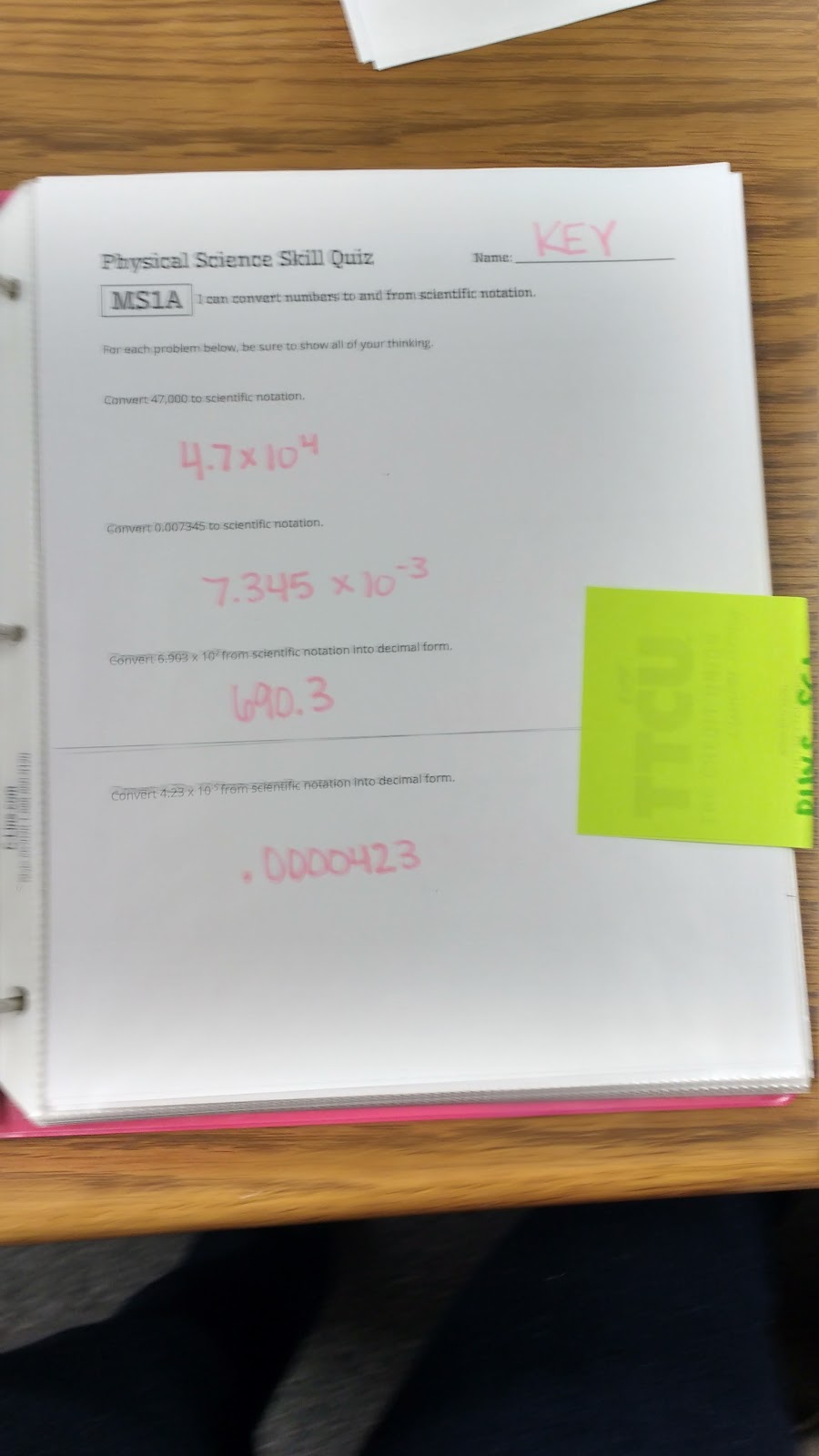
This binder lives in a special place in my desk where it is out of sight of students. It saves me so much time when grading, and I know I could never go back to my old system of keeping my answer keys in a pile.
Extra Copies Organization
I’m using these two filetastics that I picked up on clearance at Mardel to organize my extra copies of interactive notebook pages. I’ve done something similar in the past with hanging files in a crate, but I found that my students would take the folders out and leave them on the table instead of putting them back up. That hasn’t been a problem with this new system!
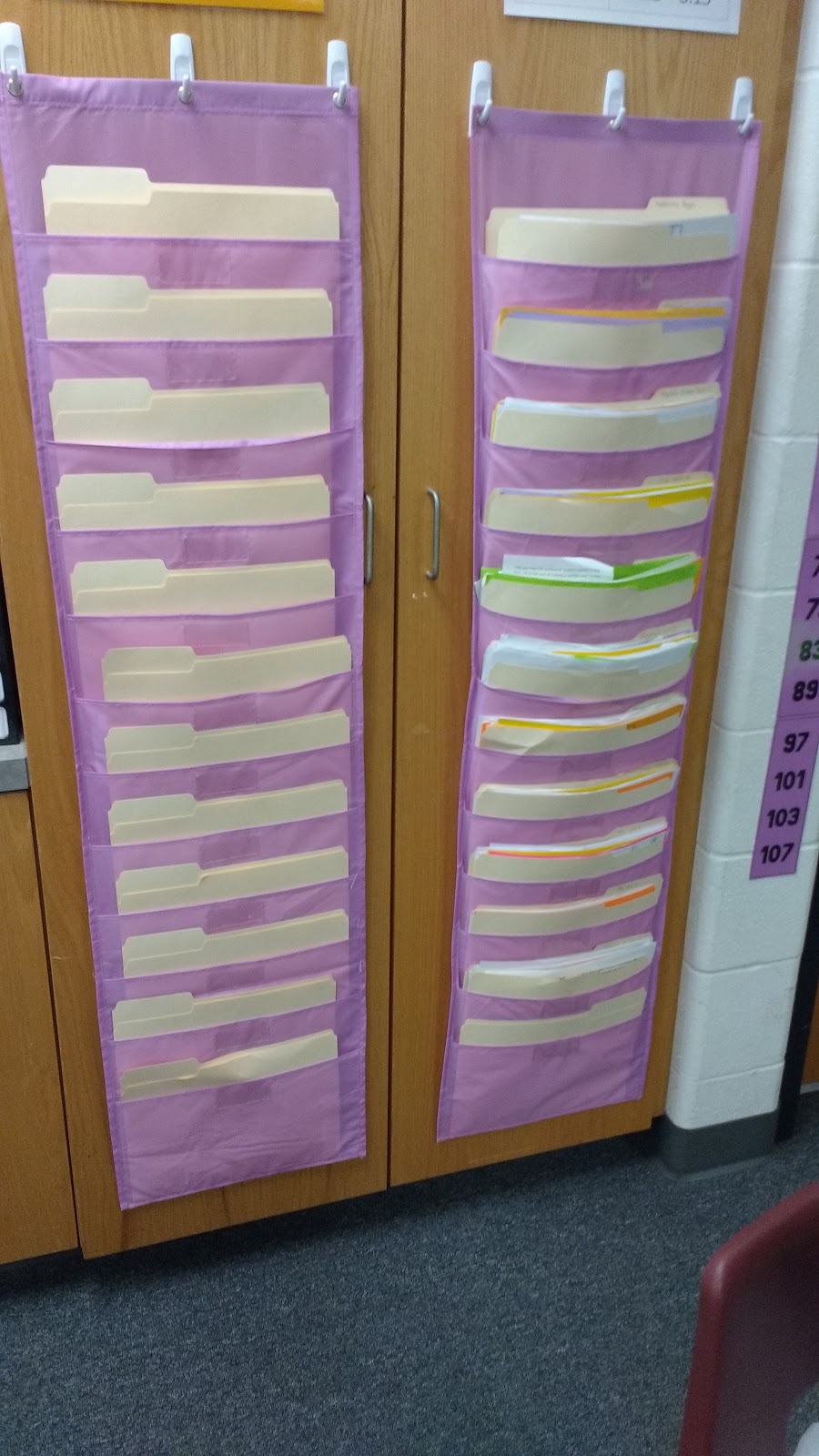
Each file is labeled with the name of a class and the unit.
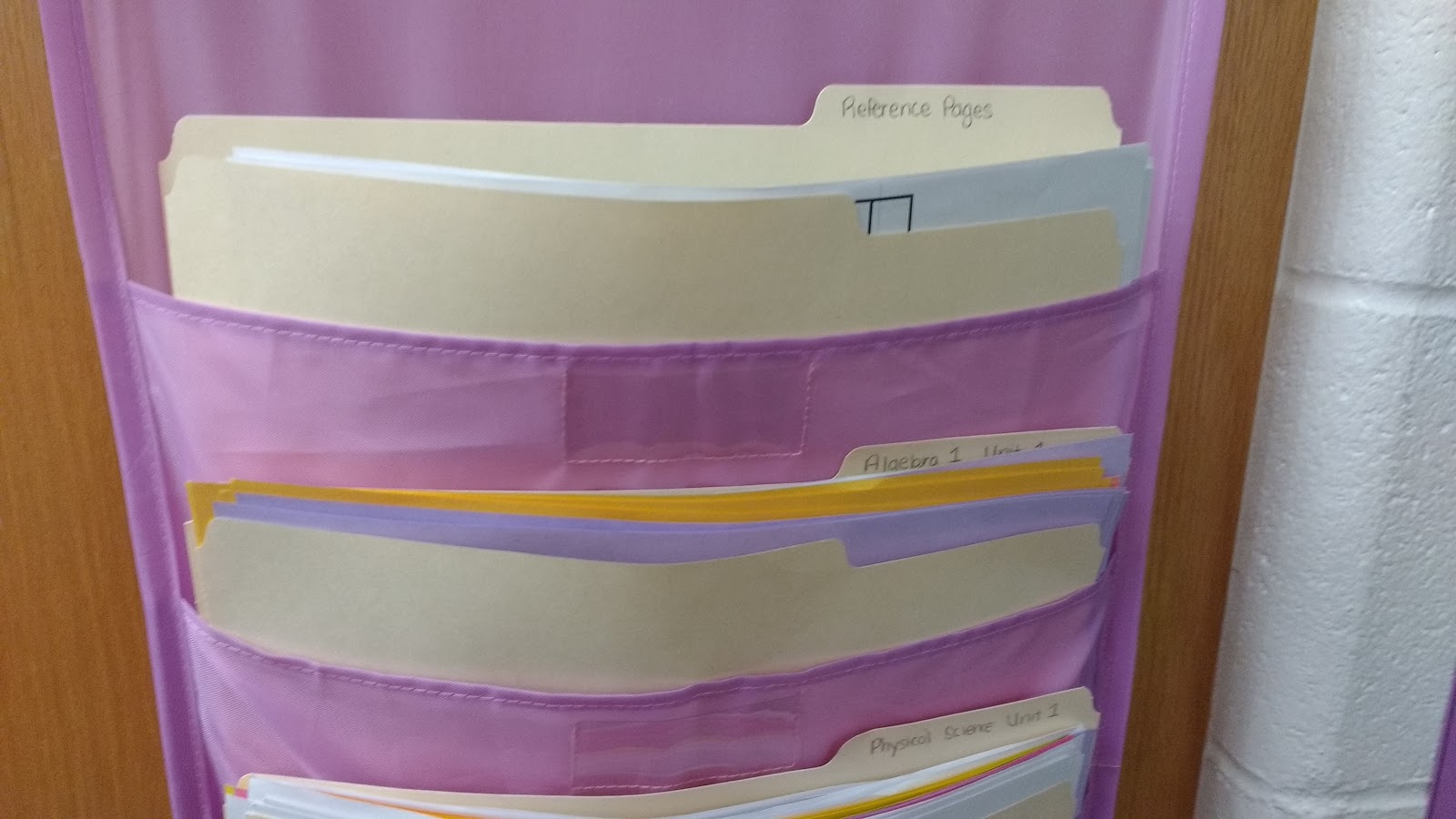
Whenever students are absent, I can point them to the folders at the back of the room. I tell them to take a look at a neighbor’s notebook to figure out what they are missing.
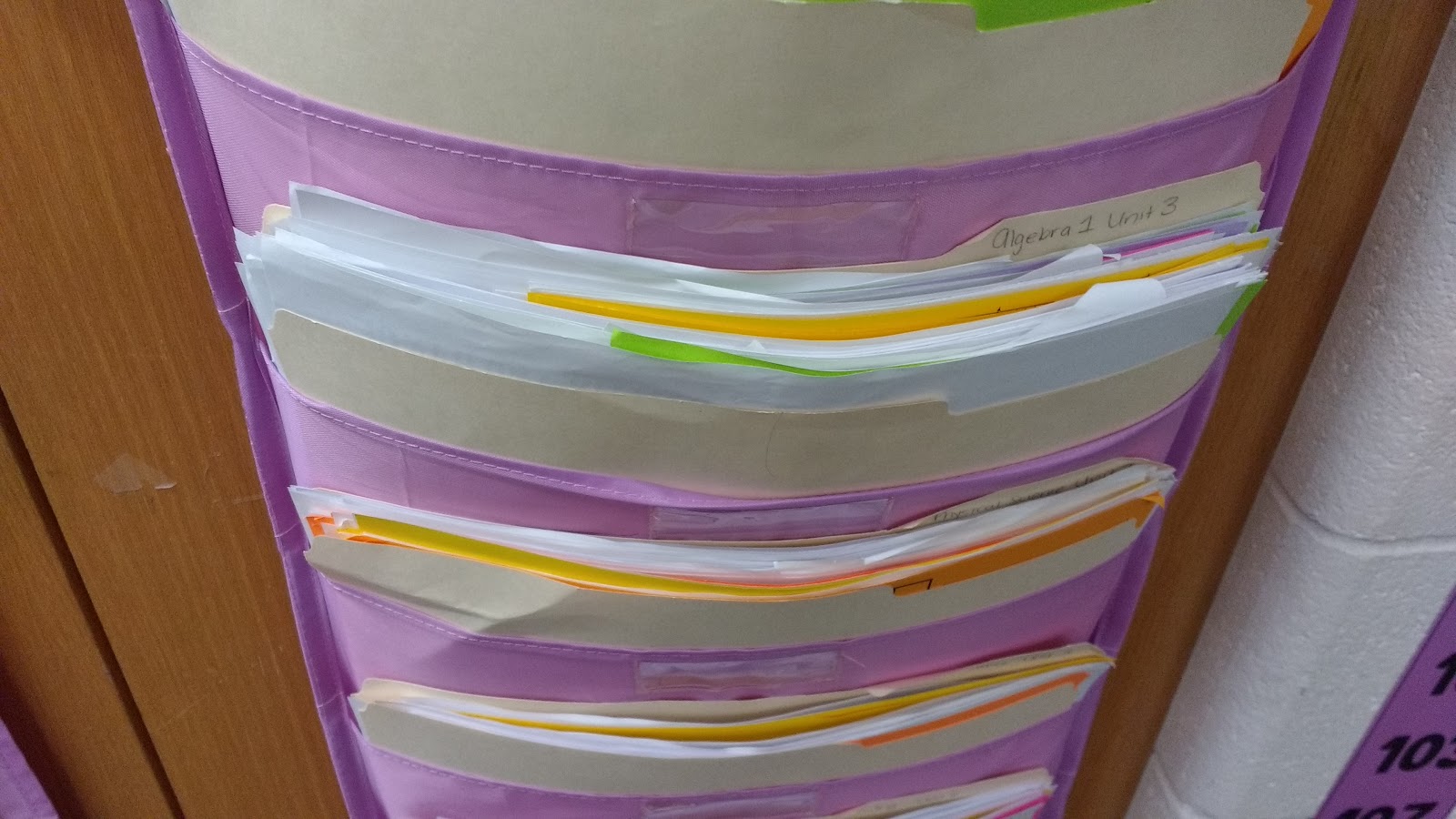
This has worked pretty well this year. Students sometimes get papers out and put them back in the wrong folder, but I don’t get too worked up about it because I never have to get papers out of the files myself.
I’m not totally sure what to call these plastic-y bits of goodness that keep my desk so much more organized during the school day. Pendaflex calls them “Project Pockets.” Avery calls them “Plastic Sleeves. These plastic pockets are only closed on two sides. This allows you to easily slide a stack of papers between the two layers of plastic.
I learned about the existence of this organizational tool from my husband. We originally ordered a few packages for him, and he kindly let me borrow a few to test them out. Soon, I was ordering more packages because I needed them for my classroom, too!
Here’s a picture of part of my collection of these sleeves. The ones on the left are thicker and much more durable. They are Pendaflex brand. The ones on the right are quite thin, but they do the exact same job. They are Avery brand. When I go to order more, I will probably splurge on the thicker ones, but the cheap ones really do just as well.
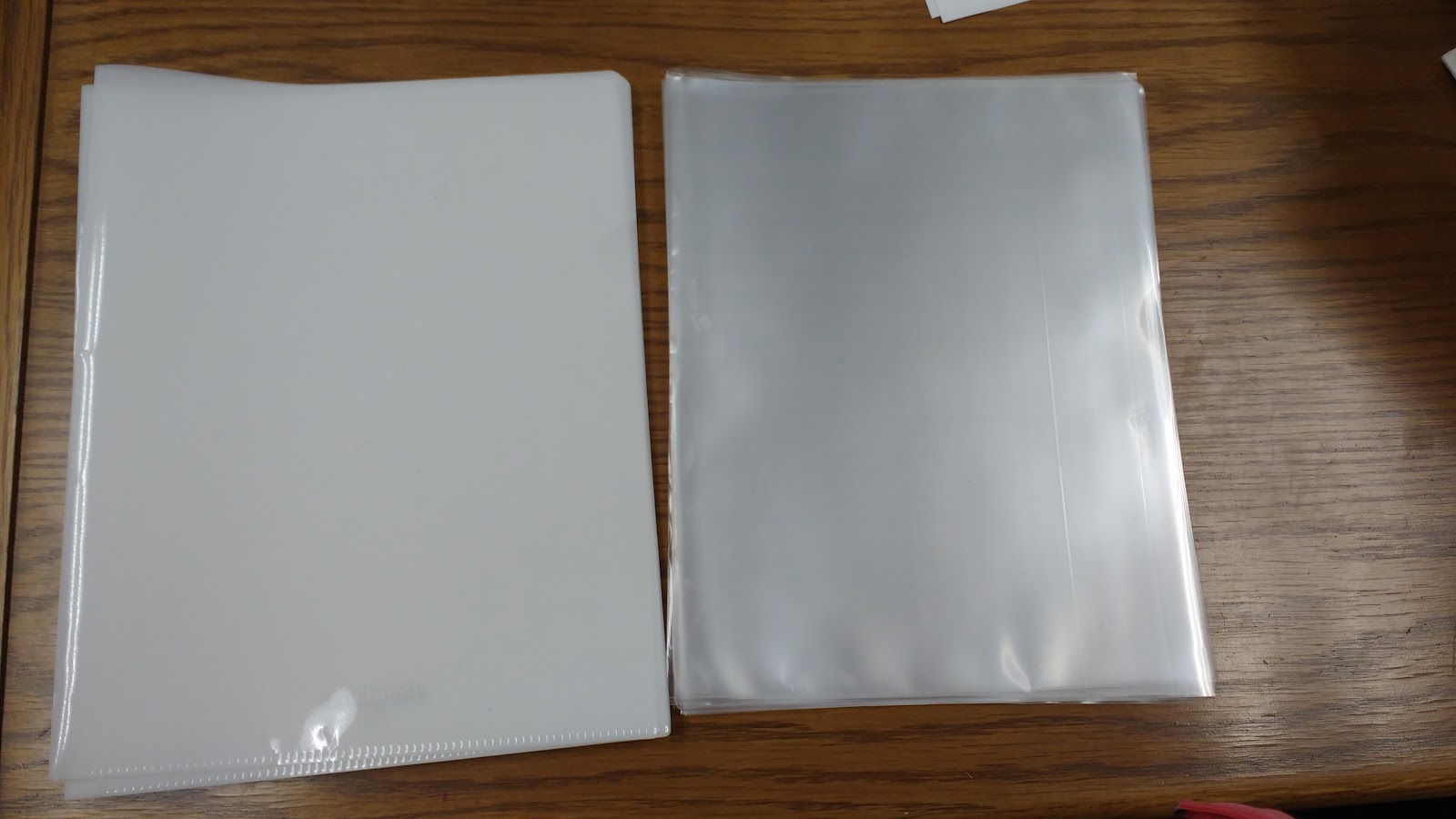
These awesome plastic sleeves make every trek to the copy machine with me. As each set of copies finishes, the copies are slid in a plastic pocket. This means I can easily stack all of my copies without having to try and alternate the orientation of each stack of papers. You probably already know that alternating each stack works fine until you need to take out a middle layer!
I would take a picture of these in action, but it’s Christmas Break. This means that the only thing currently setting in a plastic sleeve on my desk is a set of dividers for our next unit in physical science.
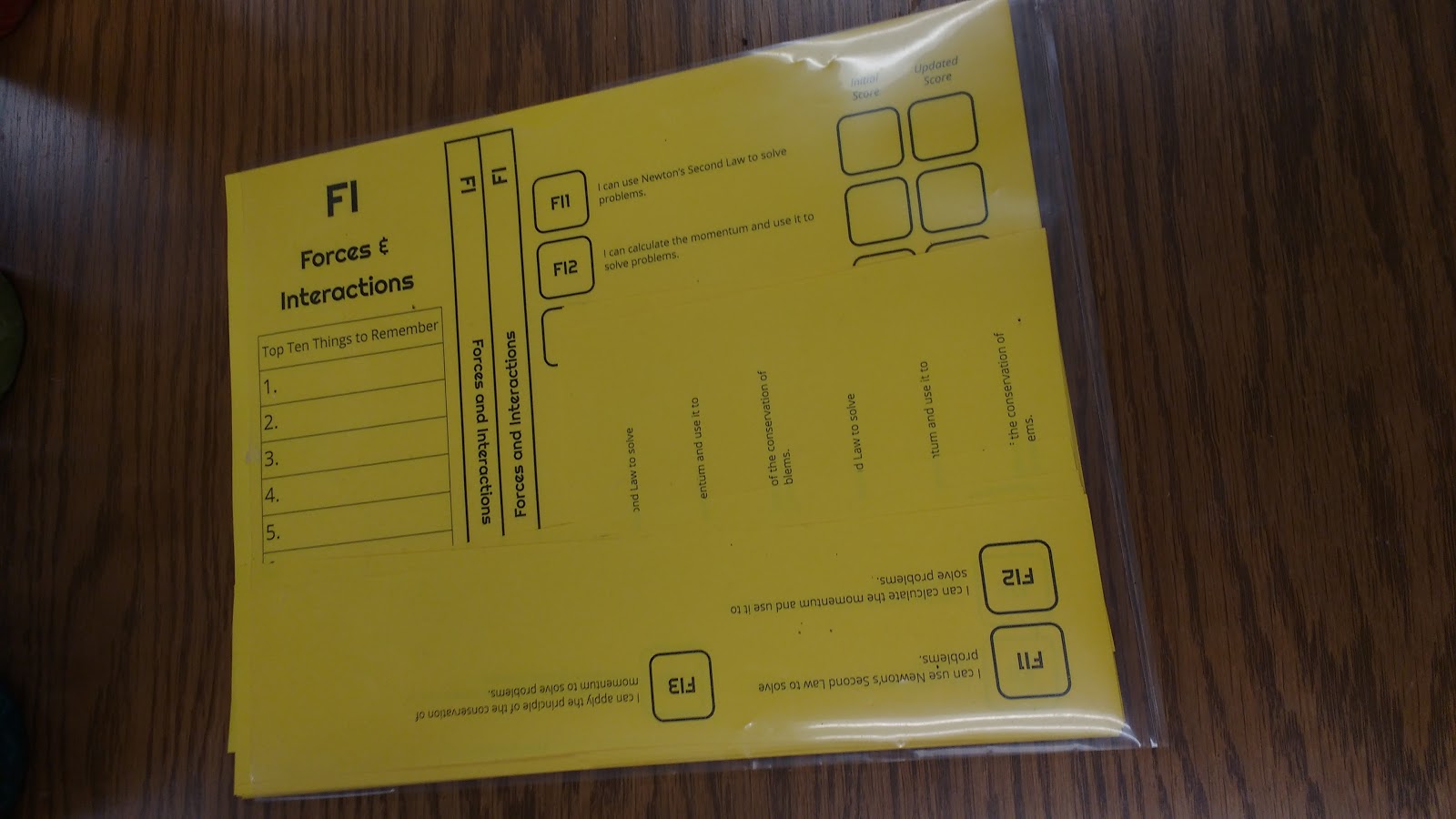
I have one corner of my desk that is designated for my stack of copies. Each set of copies is in a different plastic pocket which means I can easily flip through all of my copies for the day/week. At the end of the day, I take the extras from each pocket and put them in my hanging file folder at the back of the classroom.
I don’t think I’ve done the best job of explaining how life-changing these plastic pockets have been. My desk has always been a mess of piles. It’s still a mess, and there are still piles. But, I spend much less time each day searching for that missing stack of copies.
Plastic Pockets
The plastic storage pockets I talked about above were made for temporarily storing documents. I use them for organizing the copies I am going to use on a given day. The plastic storage pockets I’m going to talk about now are made for long-term storage.
They are 9″ x 12″ and have velcro closures. They were manufactured by Post-It, and I bought them on clearance. I did some searching, and you can still buy them online. But, they want like $10 each for them. These pockets are awesome, but they are not worth that much!!!
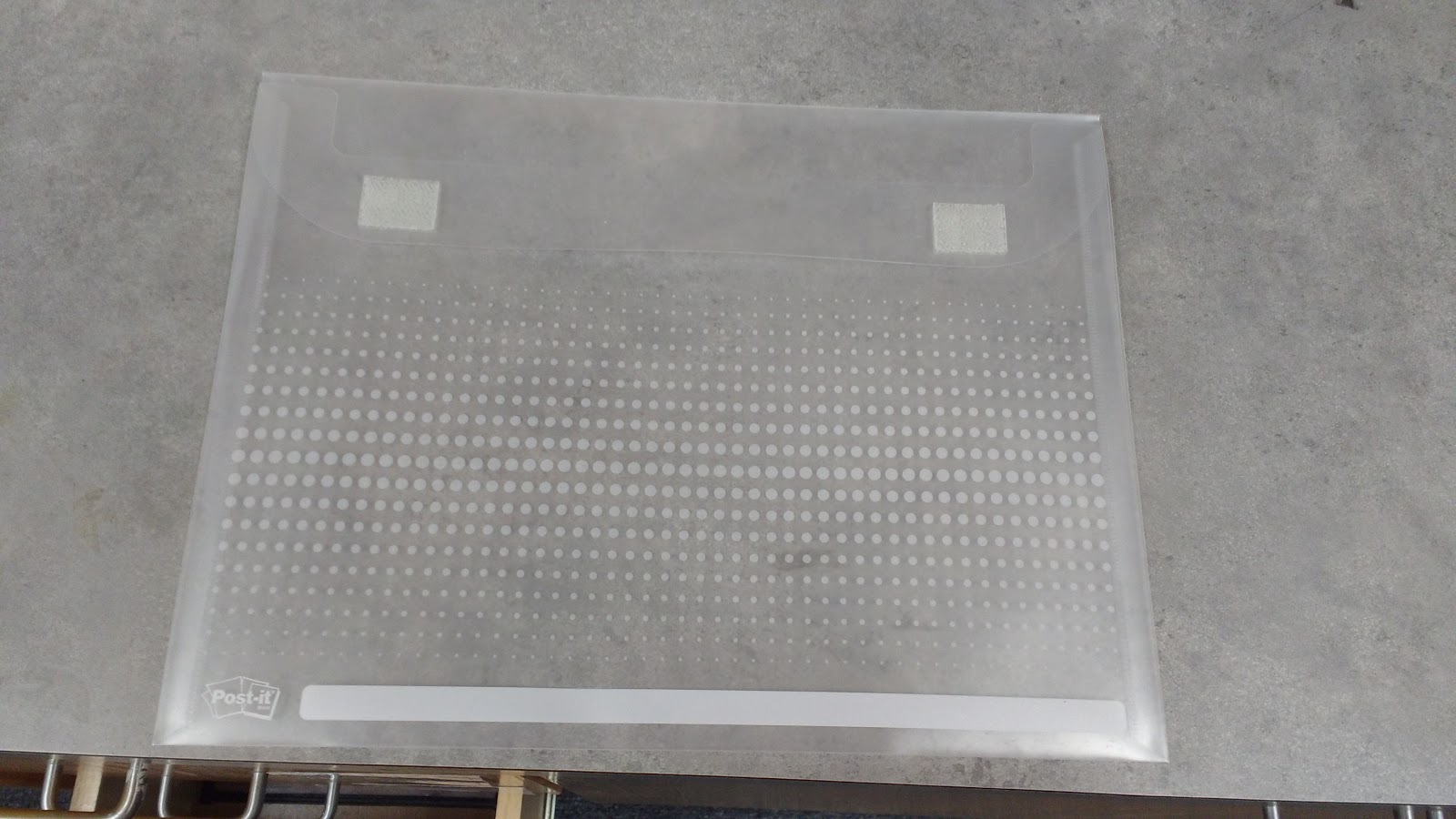
I use these to store all of activities that I create. Just before Christmas break, I labeled and alphabetized all of my activities from the first semester in my filing cabinet. Now I can actually find stuff!
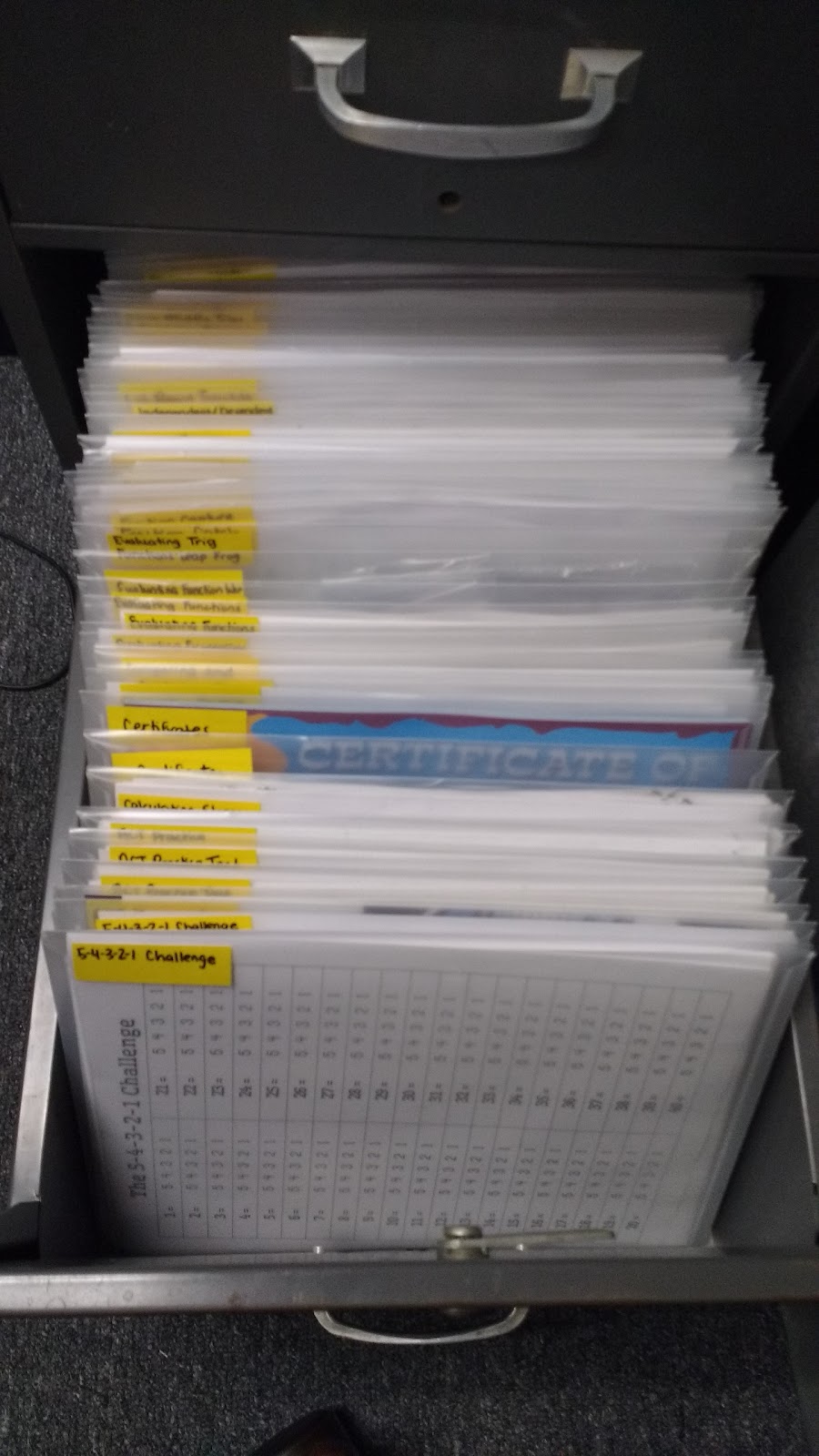
I love that I can see what is in each pocket without having to take it out of the filing cabinet!
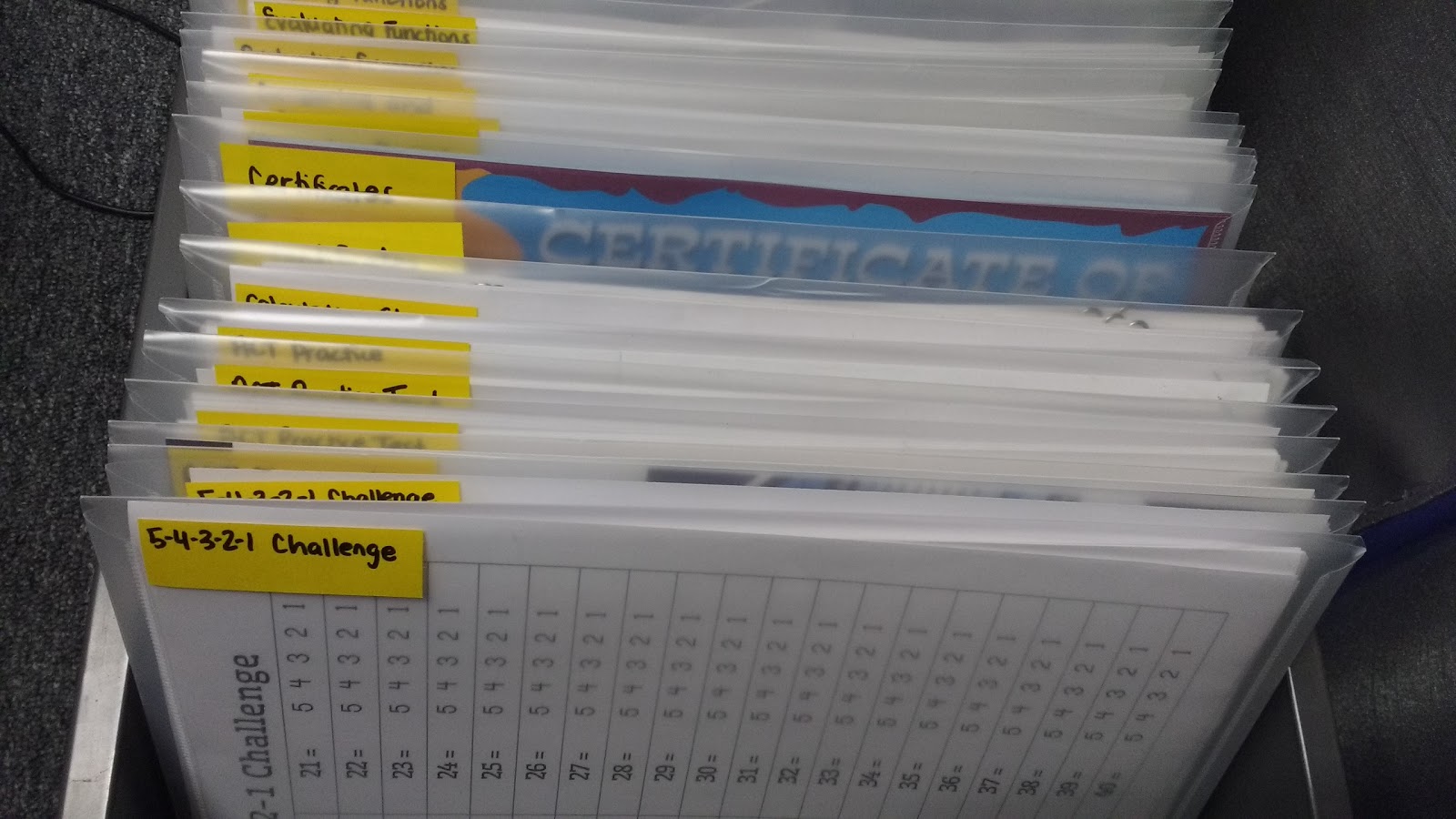
Graded Paper and Interactive Notebook Organization
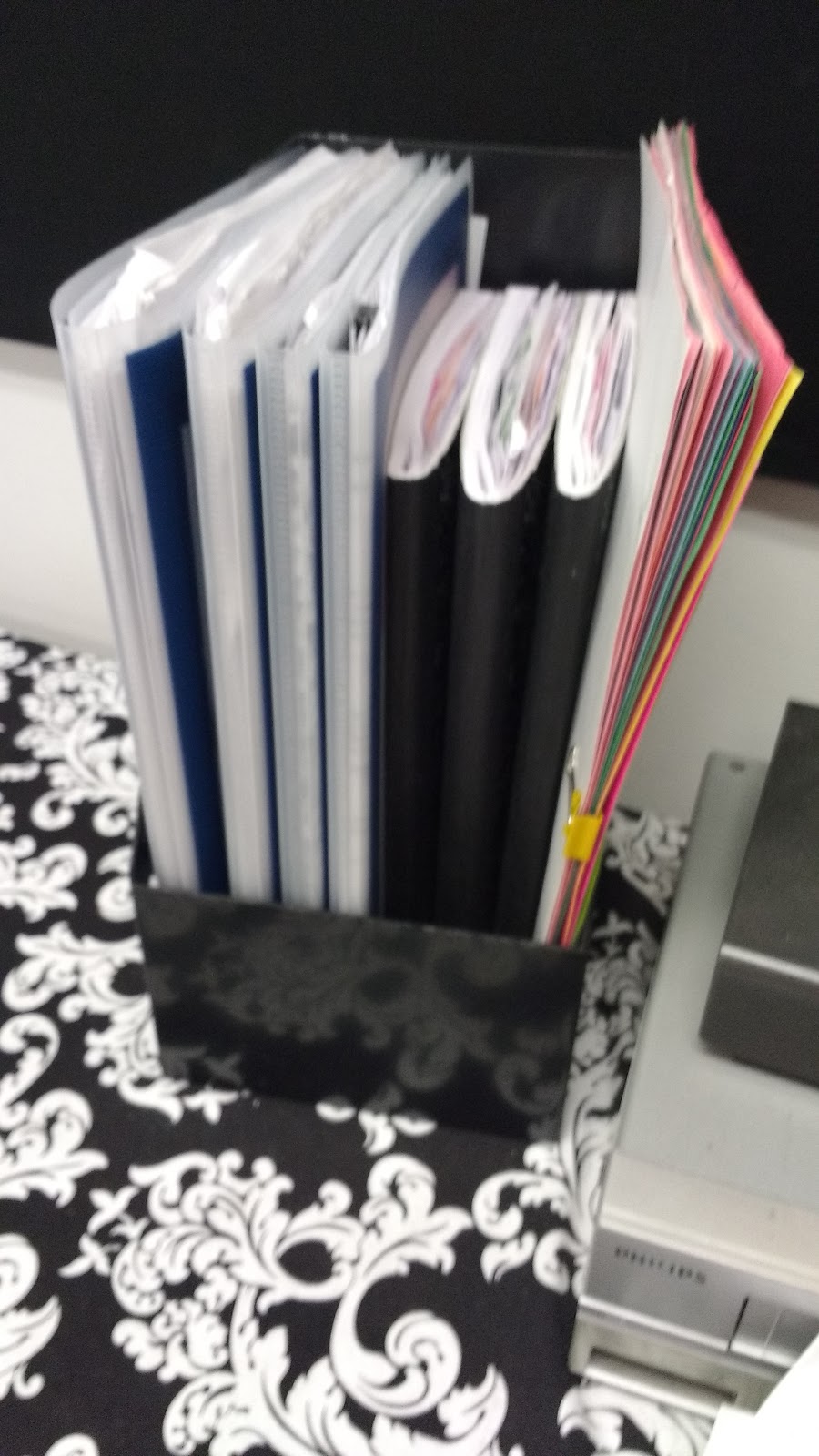
I have a magazine holder that sits by my desk. It is responsible for holding two important things: graded papers to be passed back to students and my copies of our interactive notebooks. I’m learning more and more how important it is for everything to have a “home” in my classroom. For each different class I teach, I have a pocket notebook to keep the graded papers I need to hand back to my students.
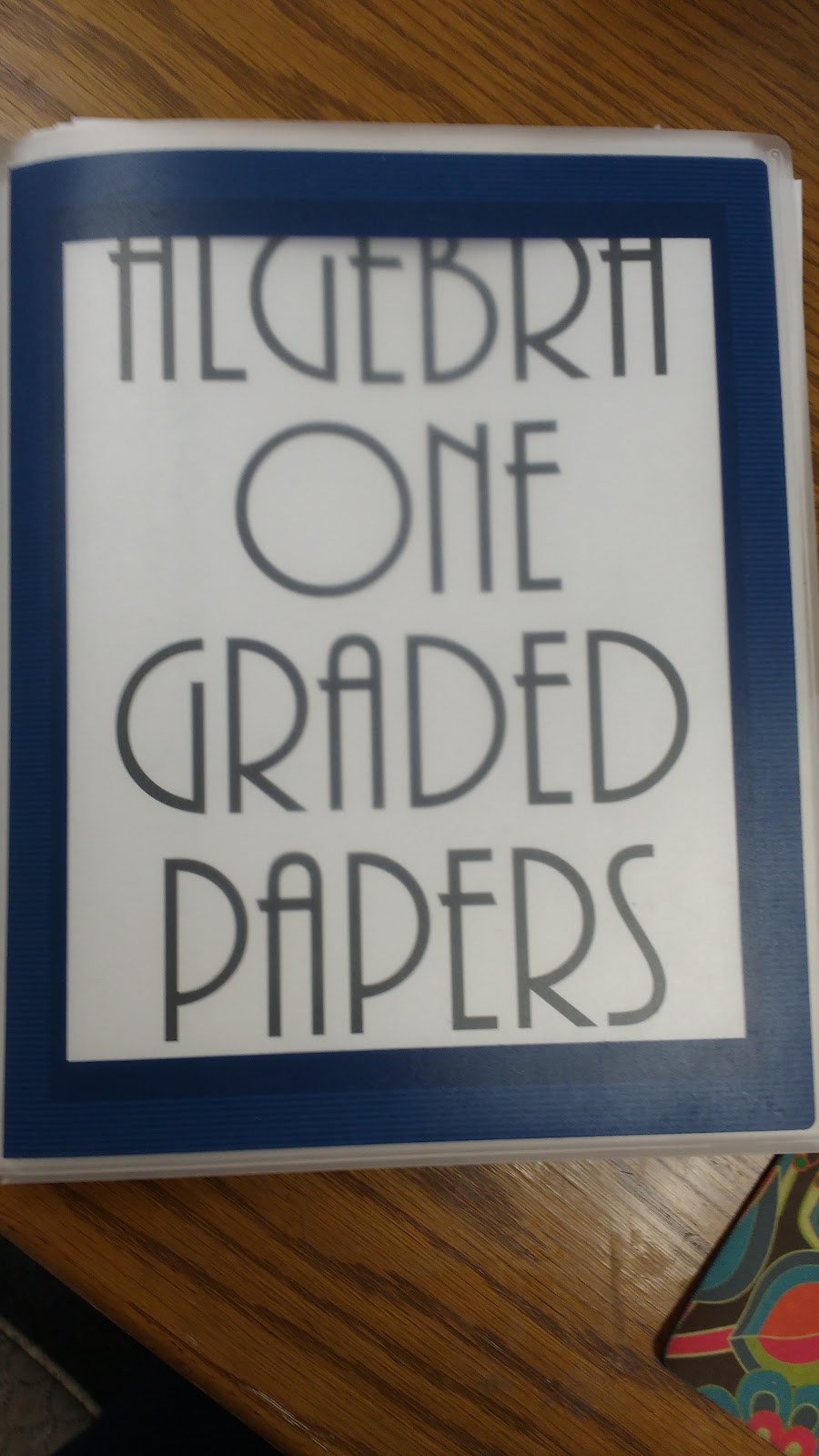
The inside contains six pockets. I use a different pocket for each period of that prep.
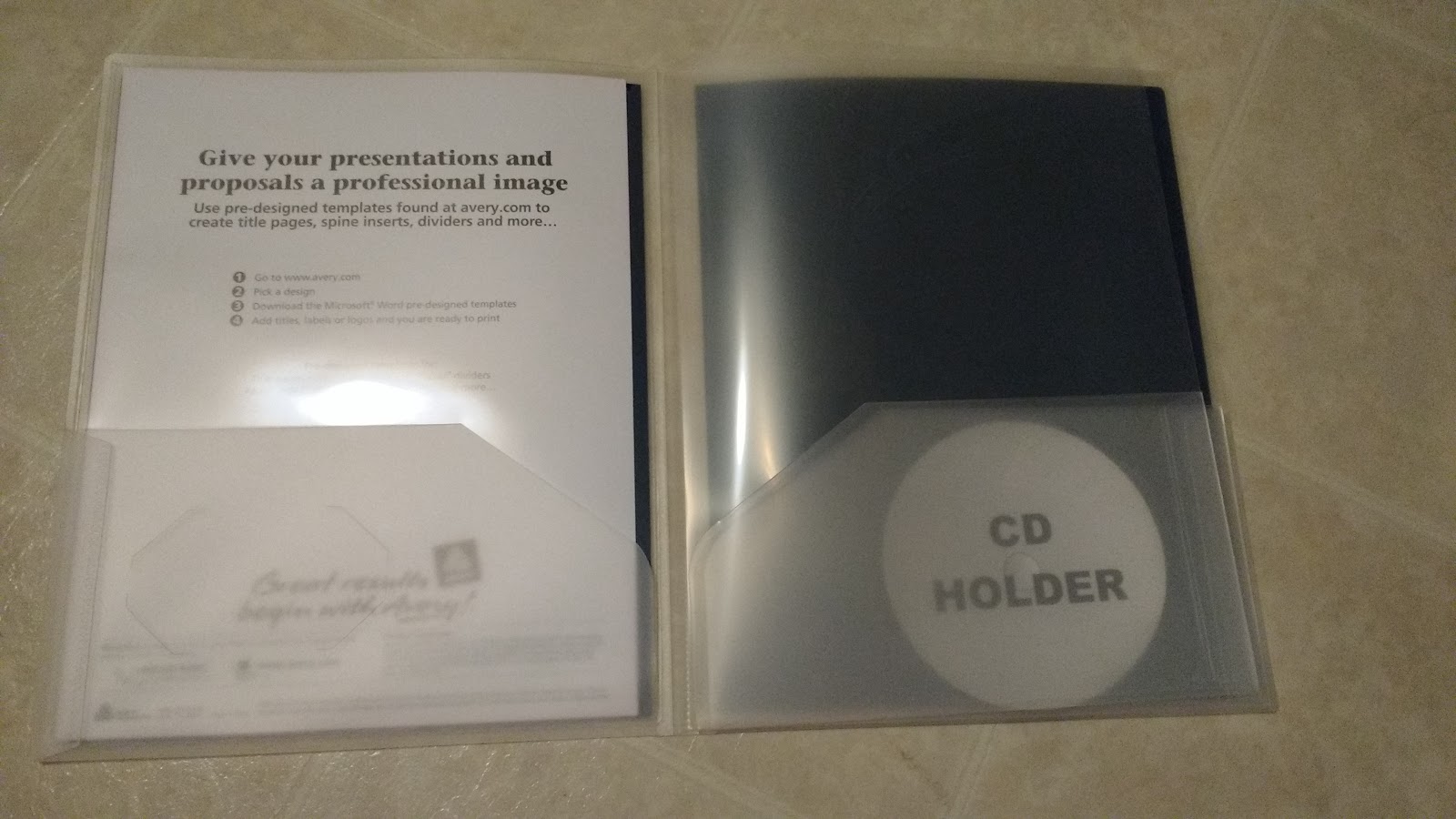
This pocket notebook is made by Avery. They call it a Flexi-View Six-Pocket Organizer.
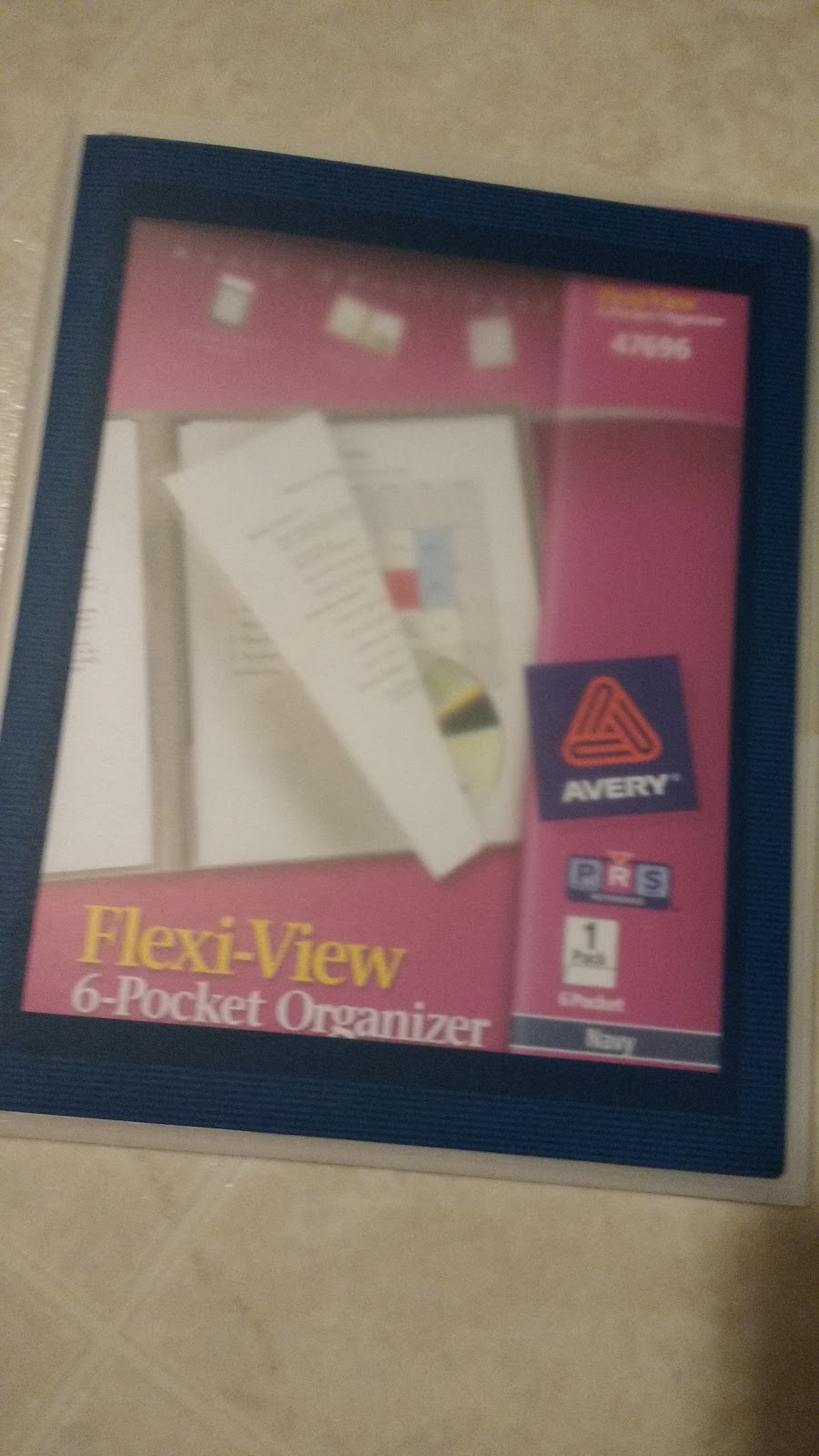
Technically, I guess I could get away with just using one of these since I teach six periods a day and each organizer has six pockets. But, I’d worry that it might get a bit too full with all of my classes in one. Of course, this might be because I’m not always the best at passing back all my papers in a timely manner…
Quiz Organization My new desk in my classroom has a drawer that is made to hold hanging files. This is huge win on the organization front! I have designated this drawer to hold my quizzes for SBG retakes. Remember, I write four versions for each quiz to make retakes as easy as possible on myself. Here is my drawer of quizzes:
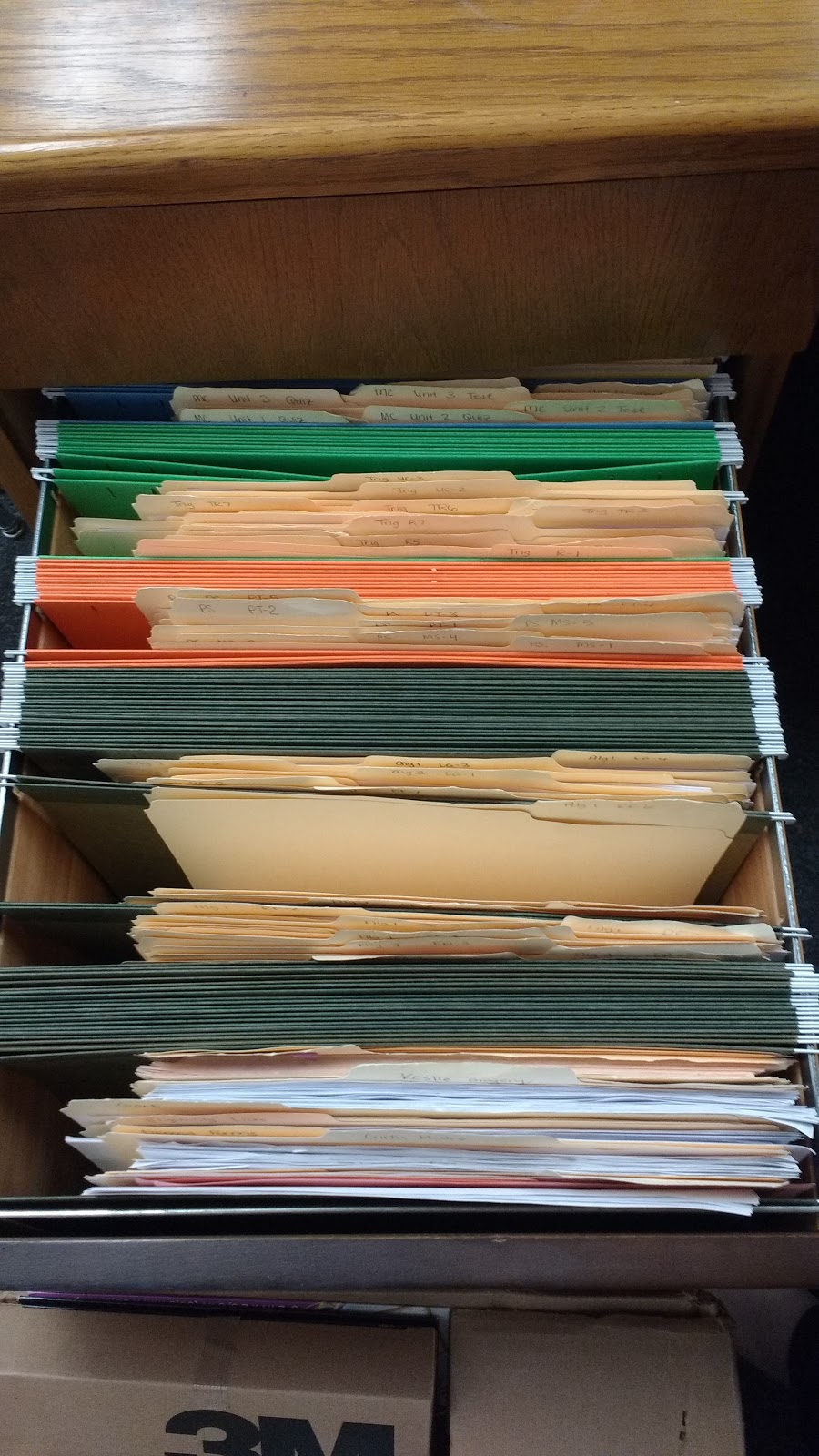
The files at the front of the drawer are not actually quizzes. They are file folders with documents that need to be easily accessible. I keep these files in alphabetical order. Behind there, you will notice four “clumps” of folders. These are the quizzes for each of my four preps. Each quiz gets its own folder. They are kept in the drawer in order with the “code” for each quiz written on the folder. This makes it super-easy to find quiz RF-6 when a student asks to retake it.

In the past, I would have a drawer that I kept all of my “extra” quizzes in. Students would have to dig through it to look for a quiz they had missed. It was a HUGE mess. And, I would often end up re-printing quizzes because it was just too hard to find something when I went to look for it. This new system has been a life-saver. I can always find quizzes when a student needs one! So, I realize none of these ideas are revolutionary, but they are working for me! And, hopefully I’ve inspired you to get your classroom more organized, too!
December 31, 2016 – 2016’s Most Popular Posts
This blog post will be my 183rd of 2016. That’s a decrease in posting from my 199 posts in 2015 and my 214 posts in 2014. I guess that’s what happens when you decide to get married and finish grad school all in the same year. Yesterday, I read Jo Morgan’s recap of her ten most popular blog posts from 2016. This made me curious as to which of my posts from this year have been viewed the most.
So, thanks to the help of Excel for helping me rank my blog posts from this year, here are my top ten blog posts of 2016 according to pageviews.
1. Growth Mindset Mistakes Poster
Given how many posters I have created and blogged about, I guess it shouldn’t come as a huge surprise that a poster I created is my most popular blog post of 2016. This poster was inspired by a quote from Jo Boaler.
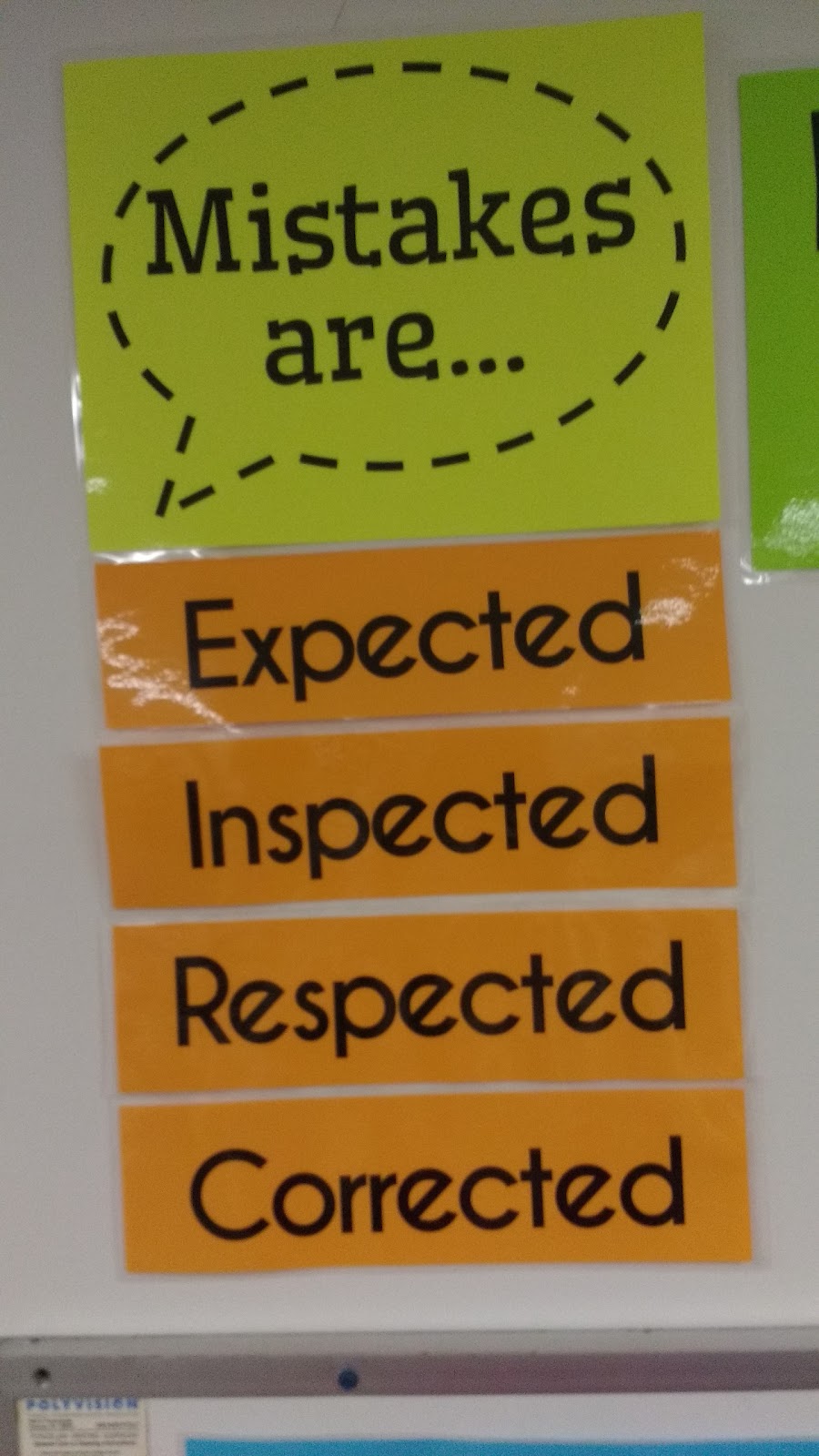
2. Interactive Notebook Dividers 2.0 Unit dividers are one of the best changes I have made to my interactive notebooks in the last couple of years. This year, my husband helped me update last year’s divider template to make a new and improved one.
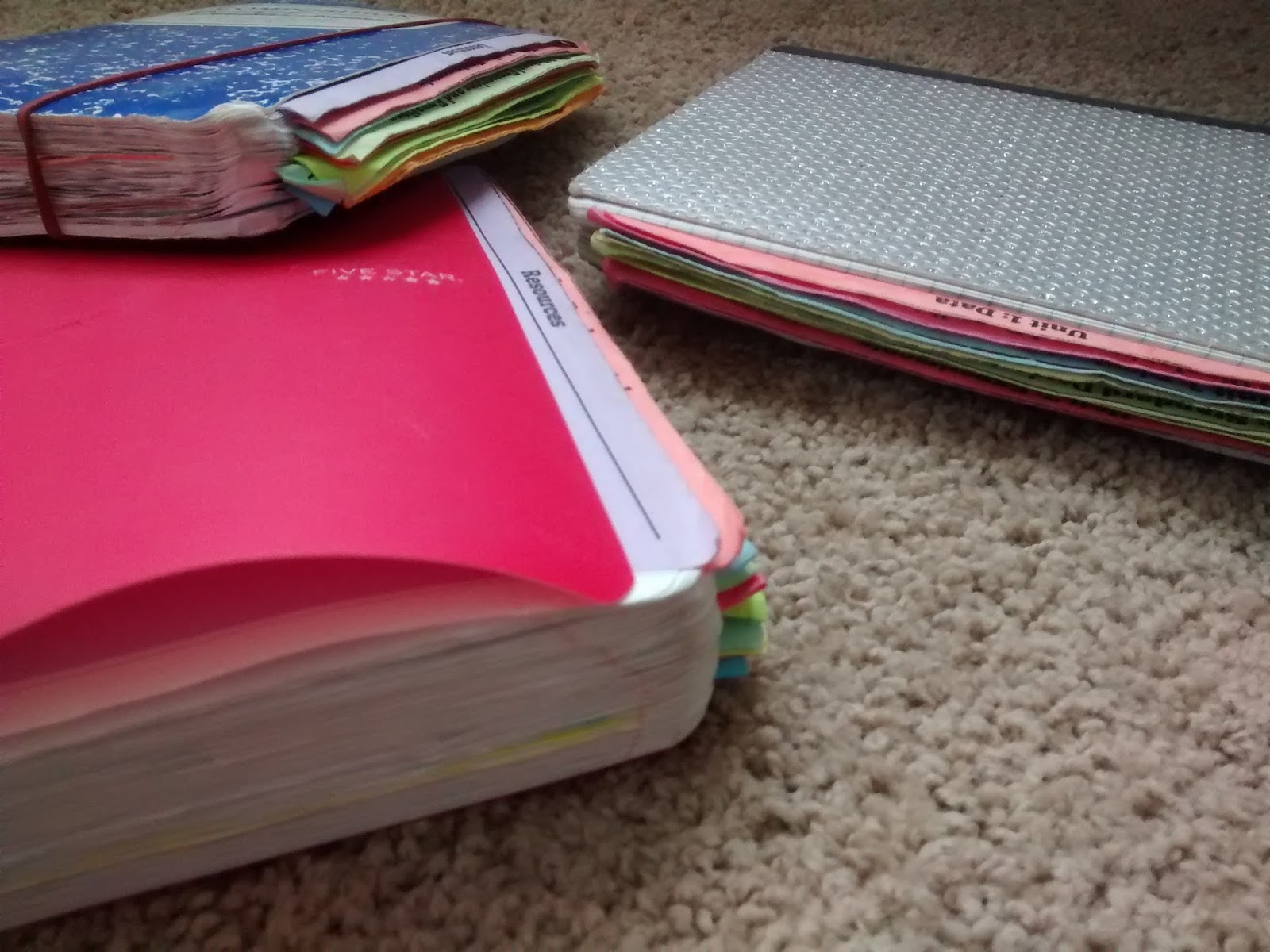
3. Free Printable Math-y Welcome Banner This poster was inspired by some badges created by the ever-inspiring Sara VanDerWerf. It is one of my favorite pieces of my classroom decor this year! It was so fun to see so many of my twitter and blog friends hang it up in their own classrooms.

4. Free Exit Ticket Templates I wrote this post at the beginning of the summer when I was full of ideas for the upcoming school year. Sadly, I have yet to implement these in my own classroom. 🙁
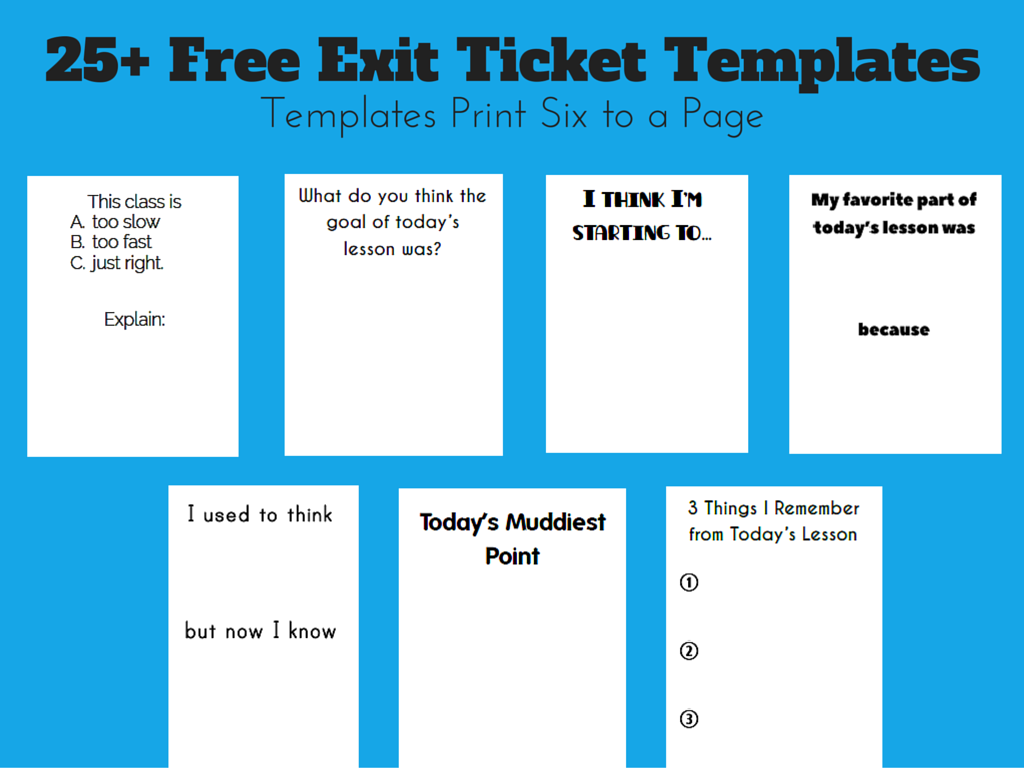
5. Quadratic Formula Templates
This next template, on the other hand, was classroom-tested and student-approved! My Algebra 2 students have always had struggles figuring out exactly how to plug values into the quadratic formula. So, I made this template to use with our dry erase pockets to help them set up their problems. It was a HUGE hit!
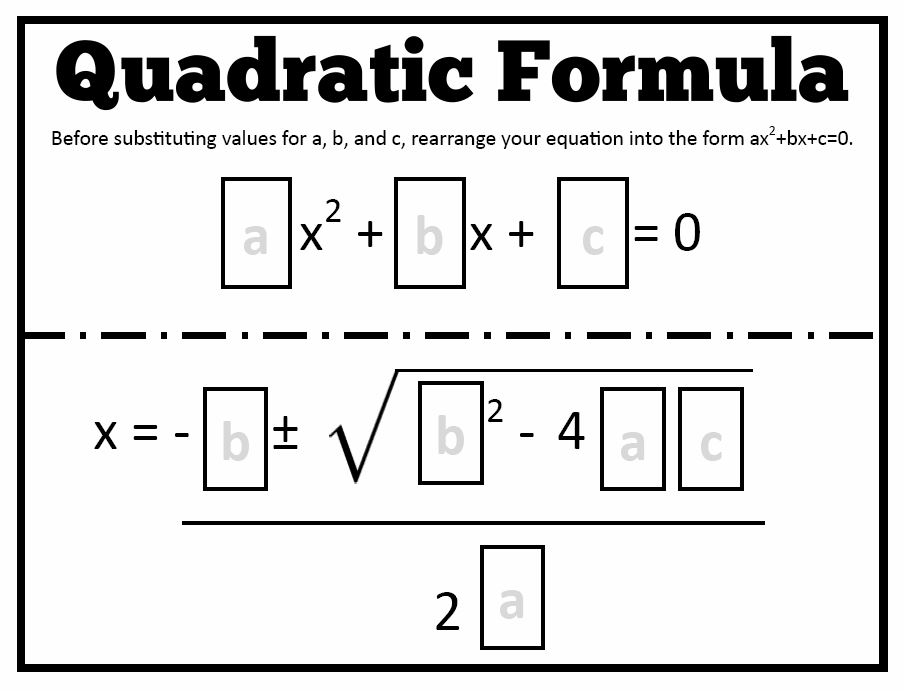
6. Broken Circles
This summer, I read Elizabeth Cohen’s Designing Groupwork, and I went a bit crazy creating printable resources to go along with the activities she suggests. I ended up using the Broken Circles activity during the first week of school, and it was AWESOME!
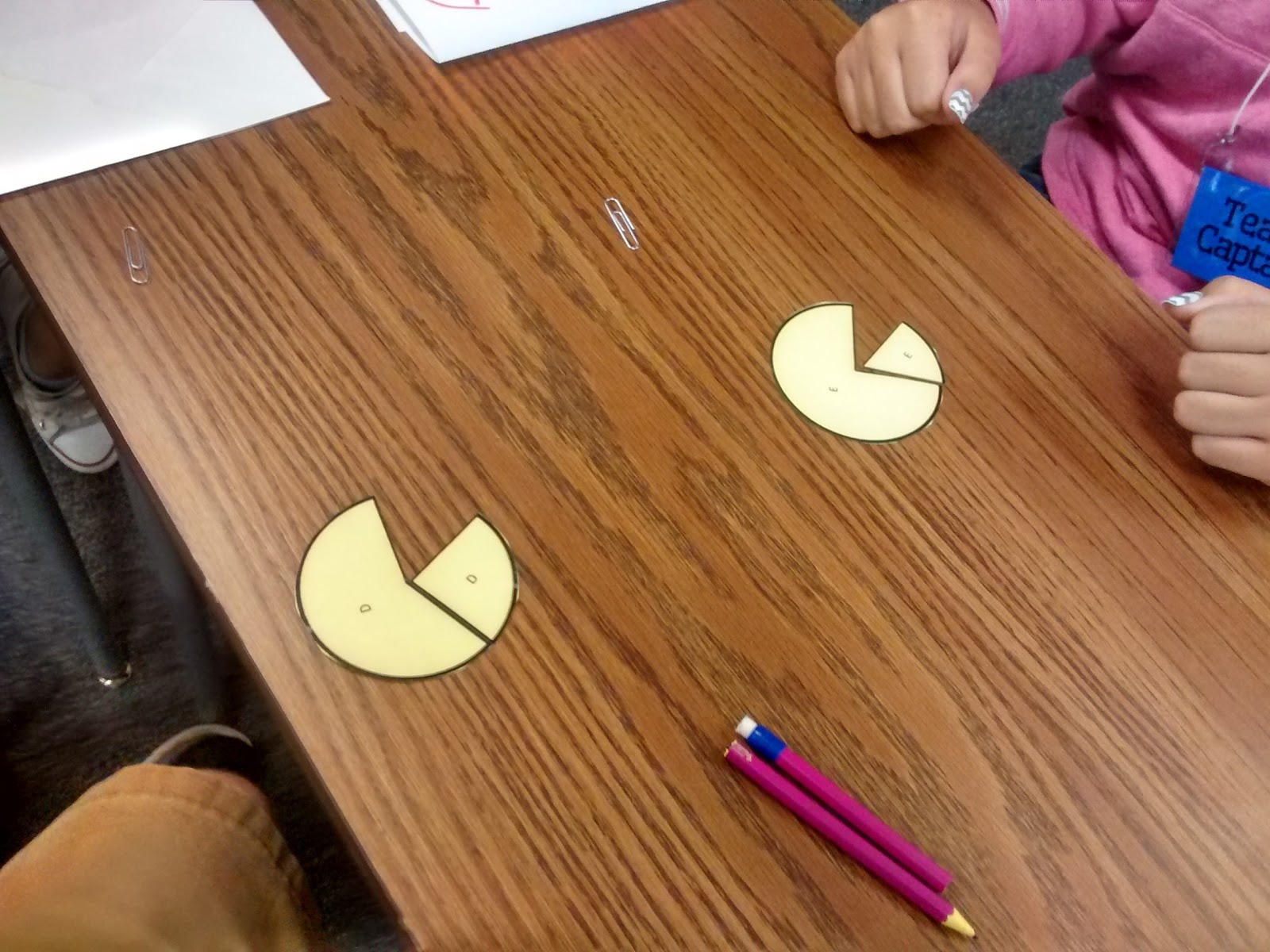
7. Combining Like Terms Interactive Notebook Page
Even though I teach high school, I love using cut and paste activities in my math classroom. I believe that being able to manipulate pieces as you are learning leads to an increase in understanding. I especially believe this is true when it comes to combining like terms. Here’s one of my favorite INB pages of the year!

8. Translating Expressions, Equations, and Inequalities Interactive Notebook Pages
This post contains more evidence of my love of cutting and pasting in math class! It also contains a nifty fold-out I created for my students to help them translate between words and algebraic notation.
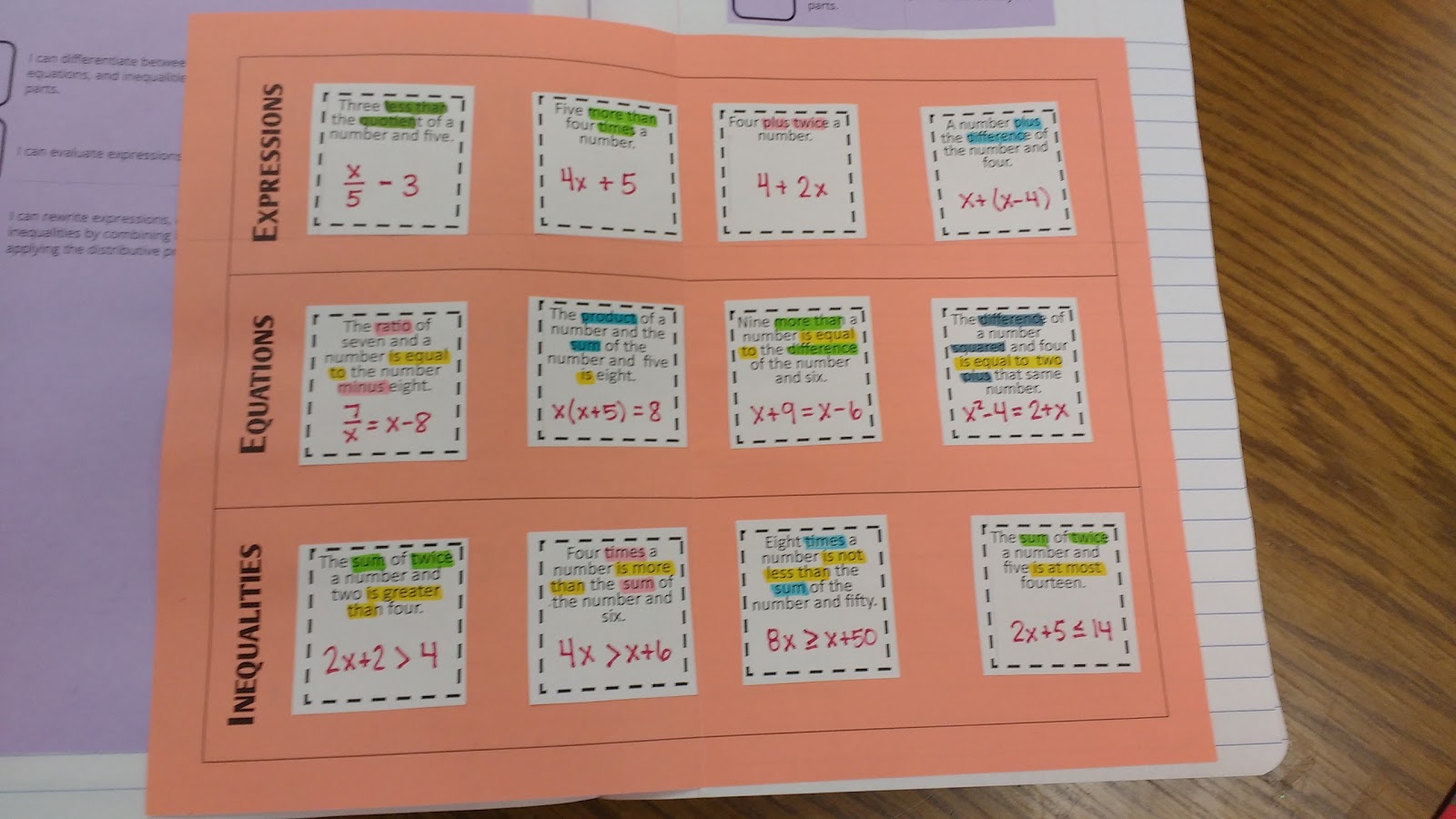
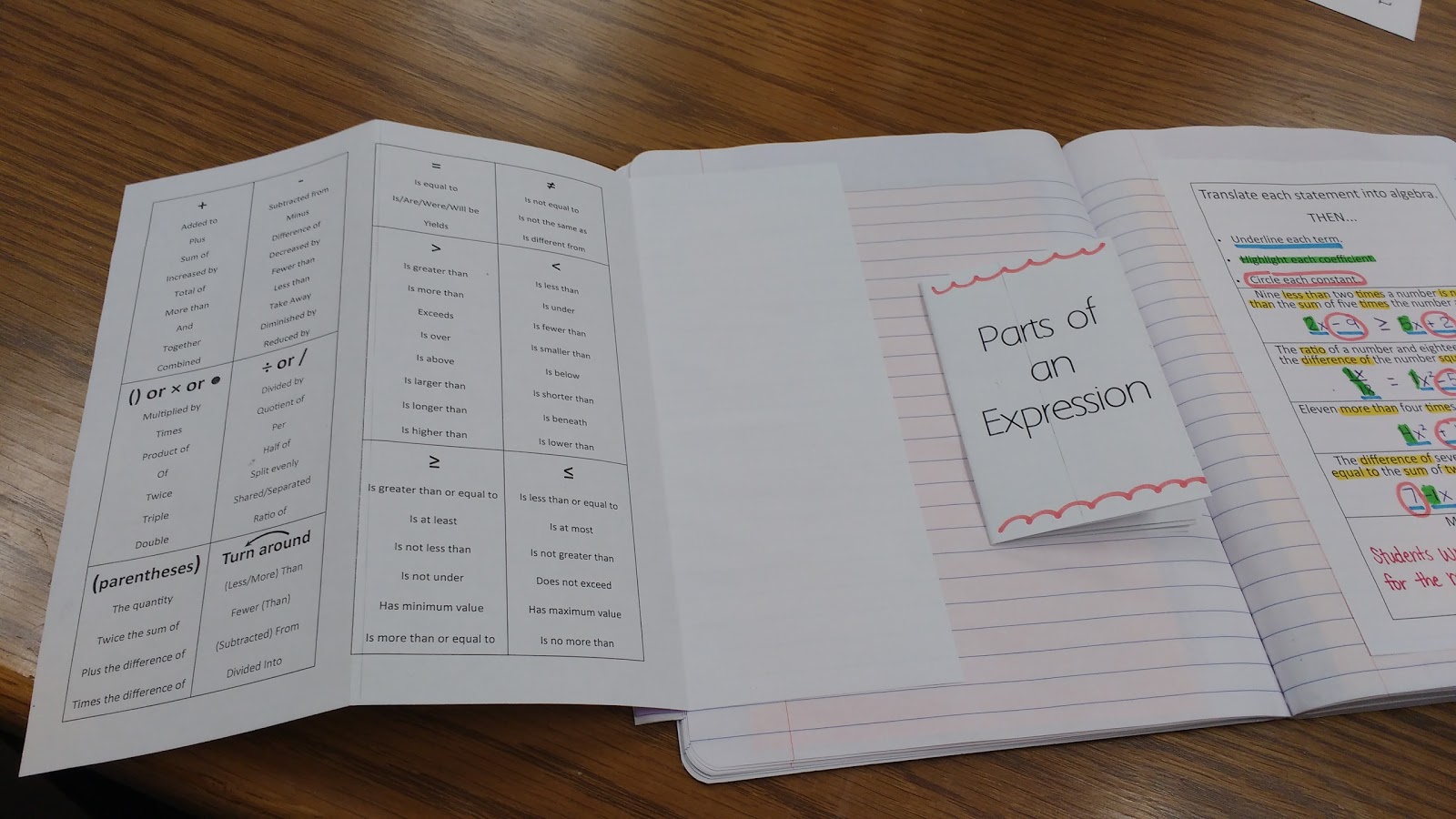
9. Algebra 1 SBG Skills List – Aligned to New Oklahoma Academic Standards
I wrote this list of SBG skills as the beginning of this past summer. It was my first attempt at wrapping my head around Oklahoma’s new math standards. After attending several workshops during the later part of the summer, I changed my mind about how I wanted to arrange/word many of these skills. I continue editing my skills list as the year progresses. Maybe at the end of this school year, I will do a comparison post where I look at the original skills list I wrote and the skills list I actually ended up using.

10. Zukei Puzzles for Practicing Geometric Vocabulary
I’m a bit surprised that this post made the top 10 because I only published it on December 17th. This summer, I discovered a set of awesome mathematical logic puzzles created by Naoki Inaba. The only problem was that all of the puzzles were in Japanese. To make these more usable, I used the Snipping Tool and Google Translate to create an English version of his Zukei puzzles. This post was also notable because it finally compelled Dan Meyer to leave a comment on my blog. Achievement unlocked! He did say that the title of my post completely undersells the puzzle, so I guess you should check it out!
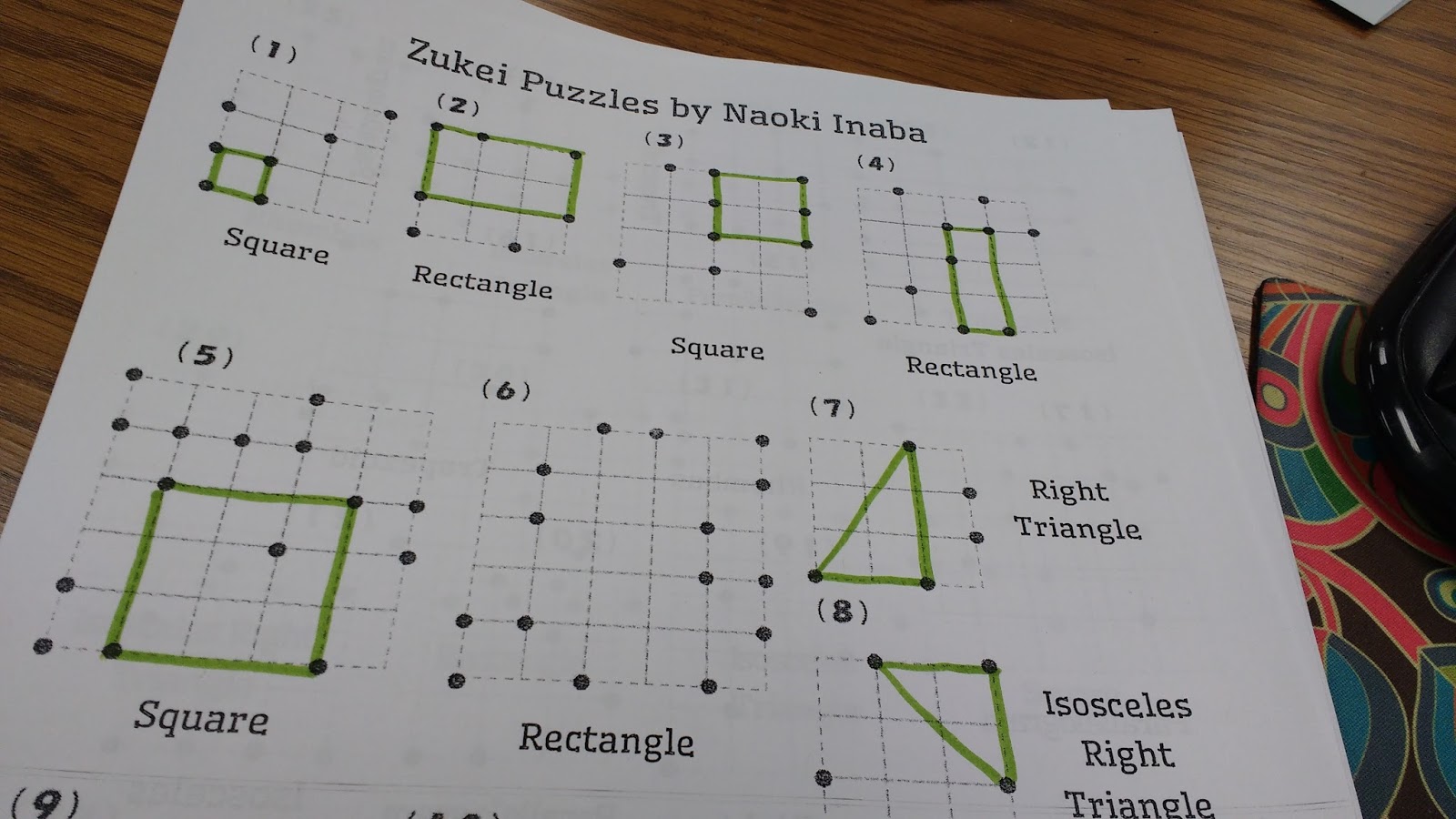
My take-away from compiling this list is that people like posts that include printable files. Every single one of these posts included a file I created.
January 3, 2017 – Books of 2016
I started this blog post a few days ago, but I got distracted. Reading Meg Craig’s Year in Books 2016 post was inspiration to finish this. I didn’t read as much as I would have liked this year. To be honest, the first half of this year consisted of very little reading. Instead, it consisted of wedding planning, a wedding, a honeymoon, and frantic work to complete my capstone project for my master’s degree. Once all that craziness was over, I finally made some time to read!
So, here’s what I read in no particular order.
Make It Stick by Peter C. Brown, Henry L. Roedinger, and Mark A. McDaniel

I have read SO many amazing things about this book. And, I have to say that it did NOT disappoint. This book focuses on how the way we think we learn best does not align with how research has shown we actually learn best. The book is packed full of summaries of research studies that I found incredibly interesting. As I was reading the book, I found myself continually sharing anecdotes from the research studies with my husband and coworkers. This book has provided much food for thought regarding ways I need to restructure my classroom. I rely too much on massed practice, but this book has inspired me to look for opportunities in my classroom to help students understand the science behind how we actually learn best.
Making Number Talks Matter by Cathy Humphreys and Ruth Parker

This book is a game changer! I read the entire book over the course of only two days because it was just sooooooo good. I learned so much about how I think through math problems by reading this book. As I’ve implemented number talks in my classroom this year, this book has been by my side every step of the way. It is chock full of example problems to use with your students to emphasize just about every mental math strategy you could think of. I had several “Woah! I’ve never thought of it like that before!” moments while reading this book. If you’re interested in improving your students’ numeracy skills and conceptual understanding of basic mathematical operations, this is a MUST read!
5 Practices for Orchestrating Productive Mathematics Discussions by Margaret Smith and Mary Kay Stein

In grad school, I read several articles by Smith and Stein, so it was awesome to read one of their books! This was an eye-opening book for me because it showed me just how much power I can have in classroom discussions if I take the time to plan and set up my task properly. It was the perfect accompaniment to another one of my favorite reads of the year: Designing Groupwork by Elizabeth Cohen.
Designing Groupwork by Elizabeth Cohen

Groupwork. It’s always been that thing I wanted to implement in my math classroom but always avoided because it was just too difficult – or impossible – to get right. This book completely changed my view of groupwork. And, I used what I learned from it to totally transform how I approached my first week of school. I was inspired by the book to create printable versions of many of the activities suggested by Cohen. On my blog, you can find Broken Circles, Rainbow Logic, and Guess My Rule. I also created Groupwork Norms Posters and Group Role Name Badges and Posters. I seriously can’t say enough good things about this book!
Made to Stick: Why Some Ideas Survive and Others Die by Chip Heath and Dan Heath
This book has a very similar title to the first book I wrote about, Make It Stick. This book is similar in that it focuses on why some ideas (or concepts to be learned) catch on and stick and why others are quickly forgotten. The authors have written a 13-page extension that is posted for free on their website that helps teachers apply the concepts to their classroom. It is titled Teaching That Sticks. If you are a fan of Malcolm Gladwell’s writing style, this book will be right up your alley!
The Tipping Point by Malcolm Gladwell
David and Goliath by Malcolm Gladwell


I started The Tipping Point several years ago, but I got distracted and it ended up sitting on my shelf. This summer, I listened to the audio book version, and I really enjoyed it. I love the way that Malcolm Gladwell blends together historical accounts, scientific research, and anecdotal evidence in a captivating and inspiring story line. After finishing that book, I looked at what other Malcolm Gladwell books my library had. This led to listening to the audio version of David and Goliath. I loved reading these inspiring stories about people overcoming great odds to do great things. I learned a lot about dyslexia through reading Gladwell this summer, and I was able to have an awesome conversation with a new student this year when she confided in me that she had dyslexia. That wouldn’t have happened without learning from my reading!
The Life-Changing Magic of Tidying Up by Marie Kondo

I really enjoyed this read, but I have to admit it was quite extreme. And, I can’t say that it actually changed my tidying habits. I did enjoy seeing what all the hype was about.
Drive: The Surprising Truth About What Motivates Us by Daniel Pink
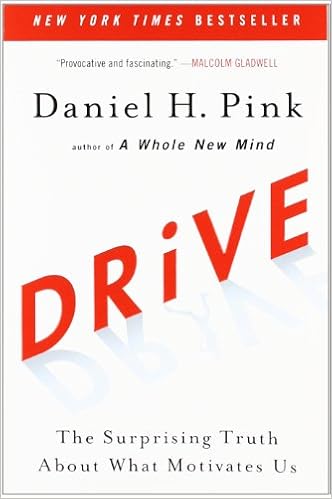
This was another audiobook that my husband and I listened to this summer. I enjoyed that there were quite a few education-specific examples throughout the book. It was a quick listen that I really enjoyed.
32 Third Graders and One Class Bunny: Life Lessons from Teaching by Phillip Done

This was a FUN read. I love that this book captured so many of the emotions that are involved in teaching. Some chapters made me laugh. Others made me tear up. All of the chapters made me thankful that I teach high school and not elementary school. And, because this post is getting long, I’ll just list the fiction books I read this year without individual commentary. They were all enjoyable reads!
The Sky is Everywhere by Jandy Nelson
Be Frank With Me by Julia Claiborne Johnson
The Rosie Project: A Novel by Graeme Simsion
Mr. Penumbra’s 24-Hour Book Store by Robin Sloan
January 14, 2017 – The Joy of Set Book Review
Princeton University Press contacted me back in October to see if I would be interested in receiving a review copy of an upcoming release in exchange for a review on my blog. When I saw that it was a math-y read, I accepted. They sent me a copy of The Joy of SET.
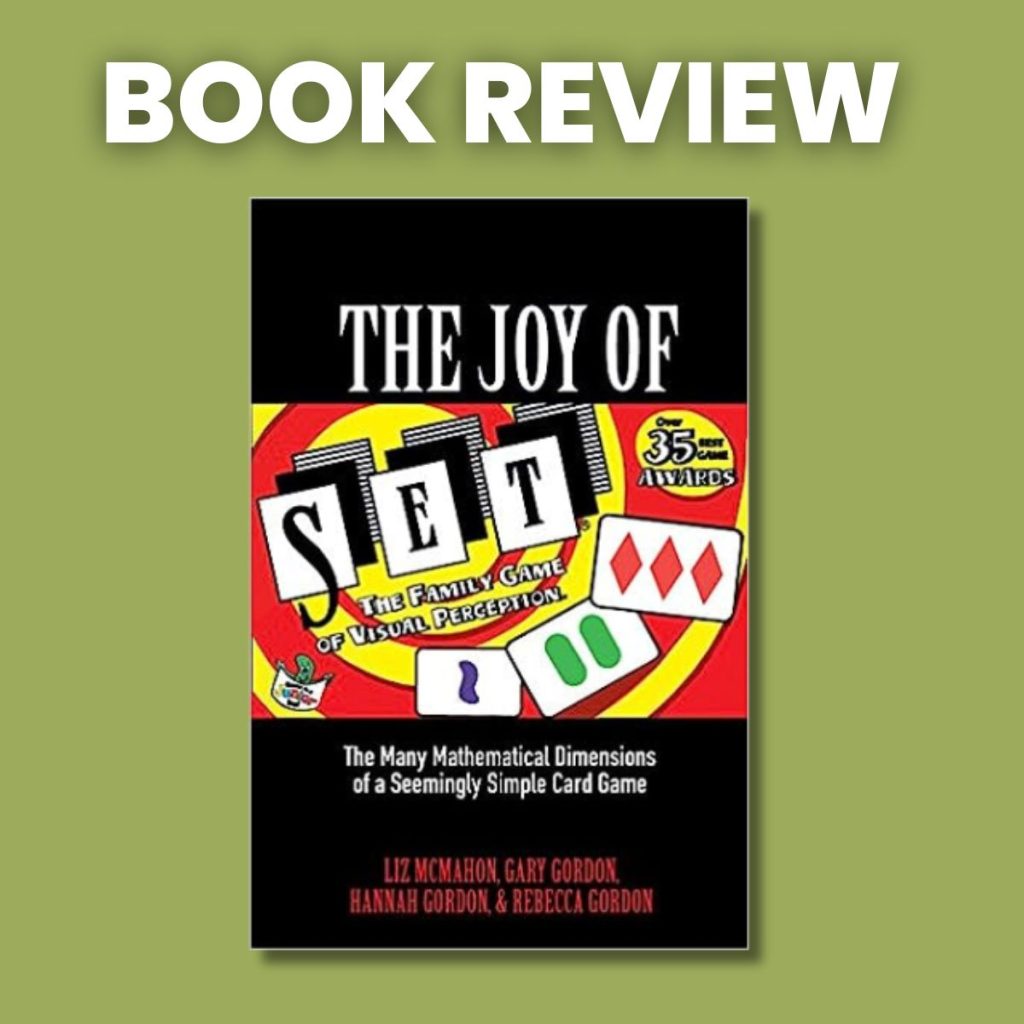
It arrived at the beginning of November, and I meant to read it but the end of the semester is always pure craziness. It doesn’t help that I’m teaching 4 different preps this year when I’m accustomed to always having 3. One extra class to prep for does make a big difference! I promised myself I would make time to read it and review it over Christmas break, but I ended up battling strep throat and a minor cold over break. January has treated me with another cold (this time much more severe!), but I’m finally on the mend and feeling better. I’m currently in the midst of a four-day weekend thanks to ice and Martin Luther King, Jr Day, so I’m finally making time to read this amazing book.
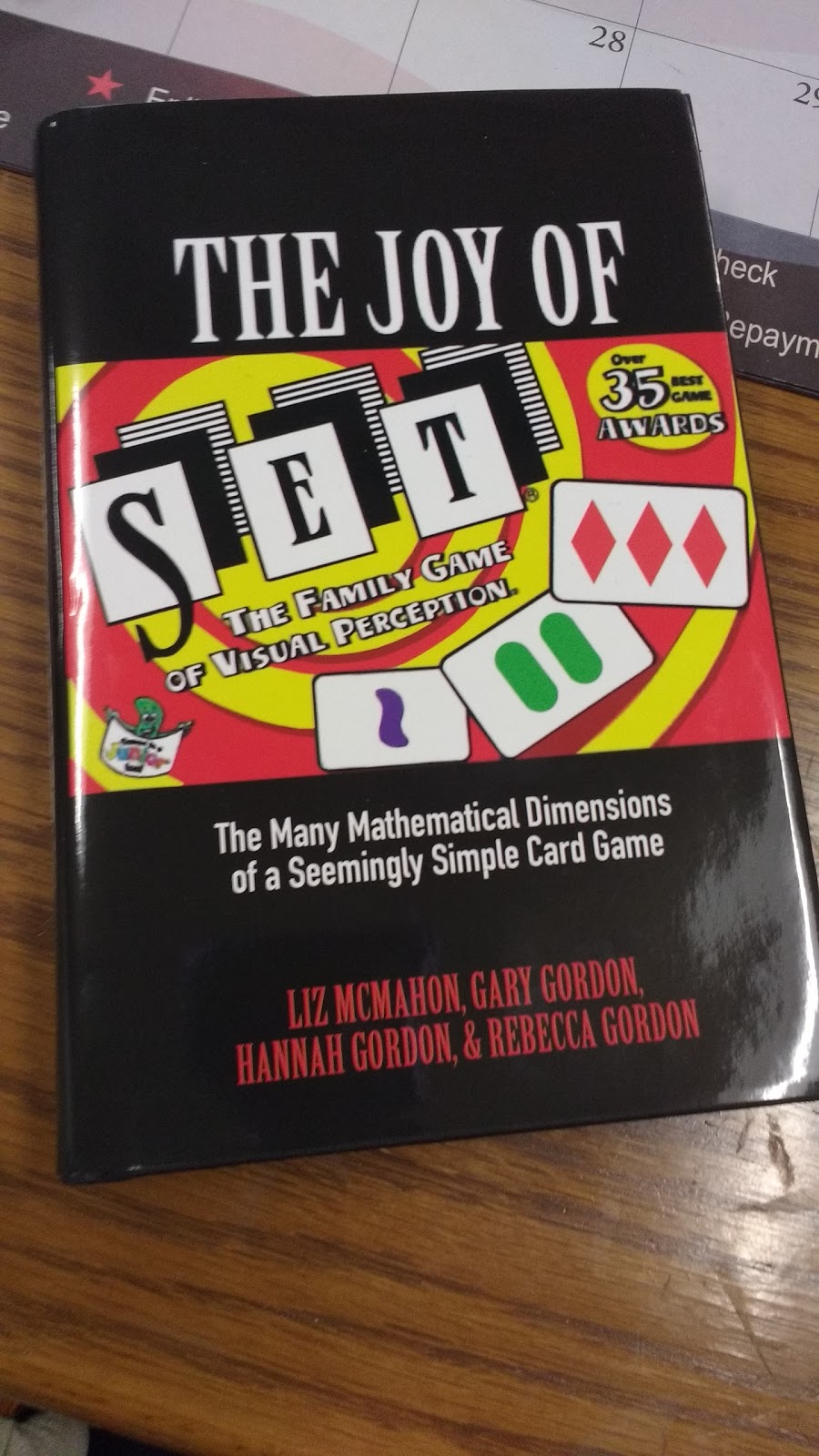
First off, I LOVE the game of SET. At my house, you will find the original SET game. I received this game for free for attending a SET session at my local math teachers’ circle.
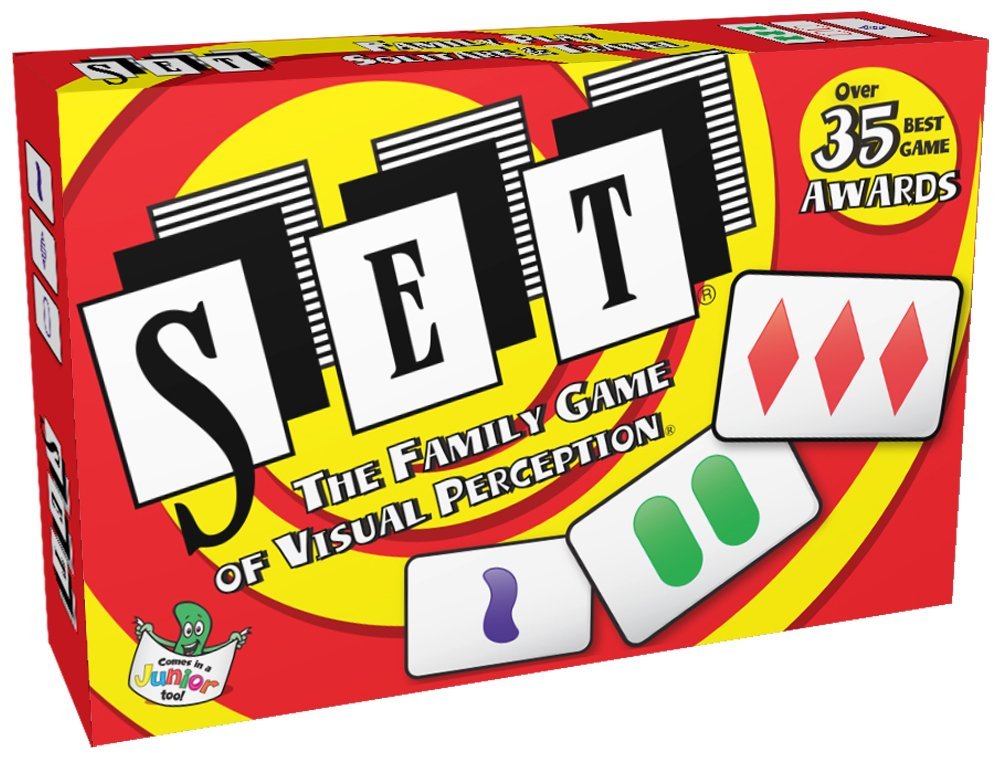
You will also find the mini round version of SET . The original SET game has 81 cards that come in solid, striped, and empty shapes. The mini round version has only 27 cards which are all solid.
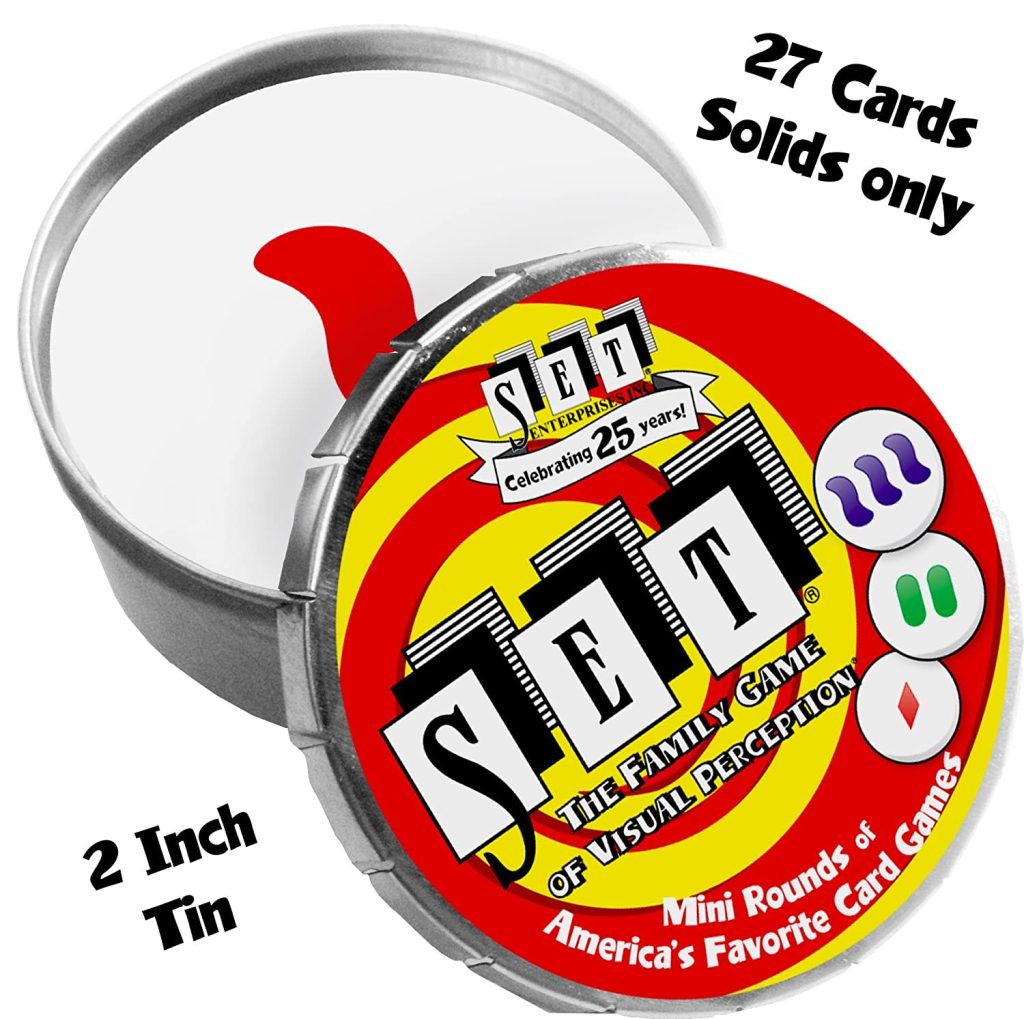
I also own SET Dice.
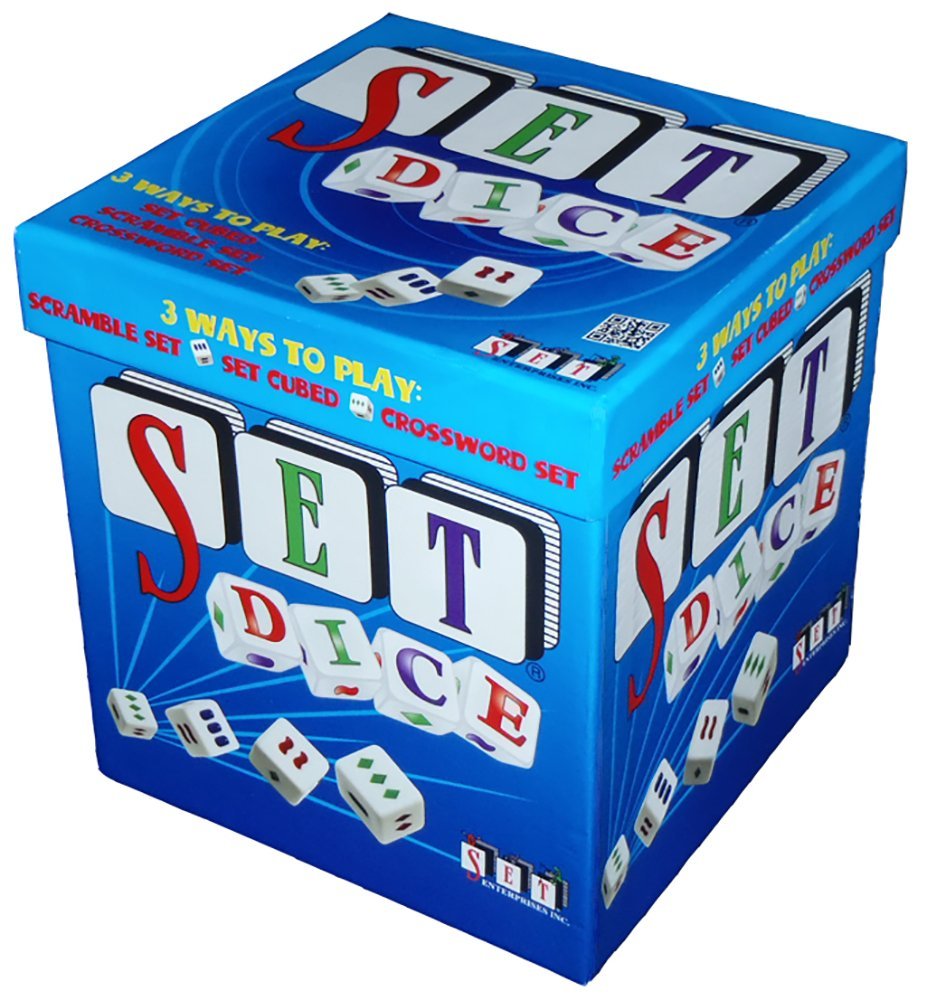
If you are not familiar with SET, it is a card game that can be played alone or with a group that relies on pattern recognition. Here’s the basic rules courtesy of the SET company.
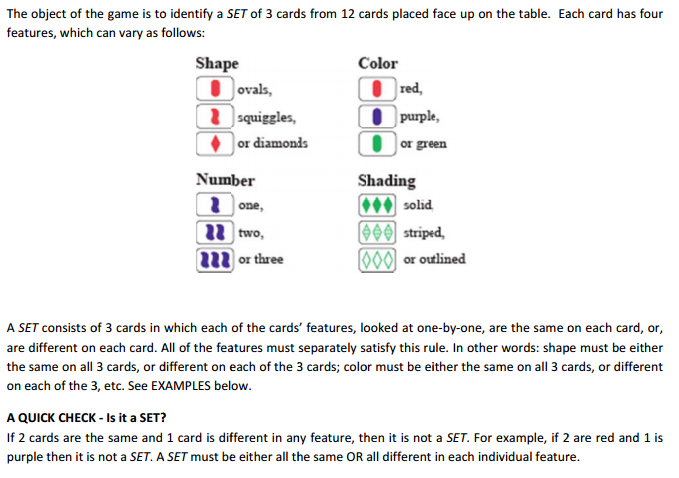
Though I now love the game of SET, this has not always been so. I remember reading blog posts mentioning SET for years. The SET website has a daily SET game on their website that I attempted one day. I could not figure it out for the life of me which made me feel like maybe I wasn’t really cut out to be a math teacher!
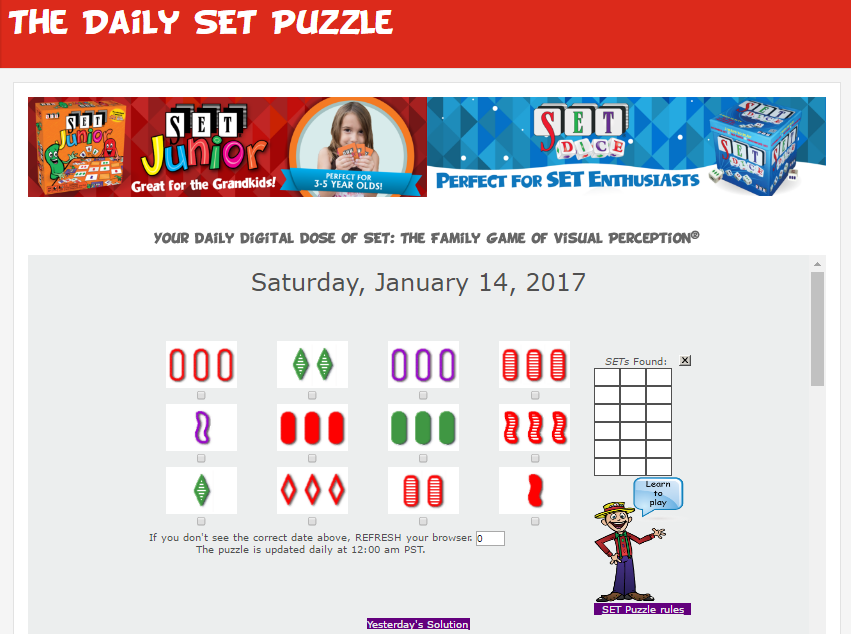
Thankfully, when I went to the SET session at Math Teachers’ Circle, I was seated with a few ladies who already knew how to play the game. They were SUPER patient with me and let me make mistakes and learn from them. Once I figured out the rules for the game, I realized it was actually FUN!
I was eager to share the game with my students once I knew how it worked! In my own classroom, I have found this animated, interactive tutorial super effective for introducing students to the game.
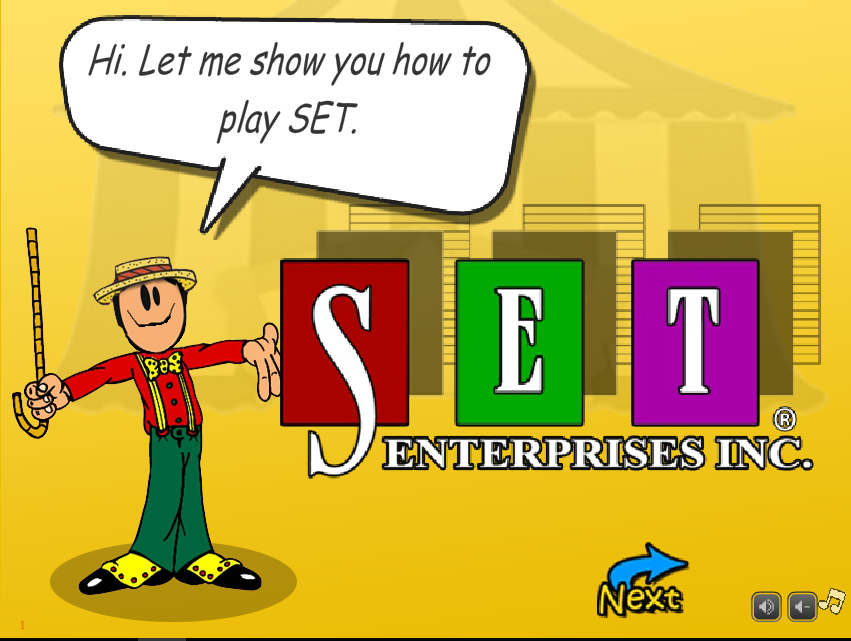
I have had some students become super obsessed with the SET game! One year, I had a student beg to take a deck home over the weekend so she could play with her mom.
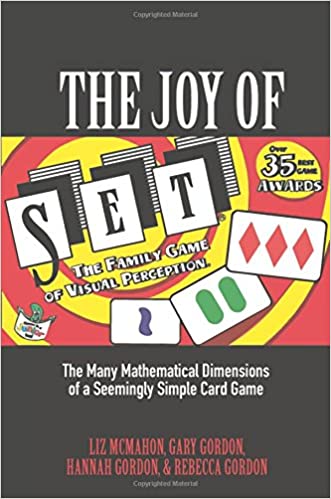
What I love about The Joy of SET book is that it is written in such a way that it can be read and enjoyed by both SET enthusiasts and someone that has never played SET before. The beginning chapters of the book teach you how to play the game in a step-by-step manner. I absolute love the writing style of this book. When I first flipped through the book, I saw lots of math that was reminiscent of my undergraduate math textbooks. My husband (also a math teacher) flipped through the book as well, and he was surprised to mention of topics he hadn’t thought about since uni. However, when I started reading from the BEGINNING, I realized it doesn’t read like a textbook at all.
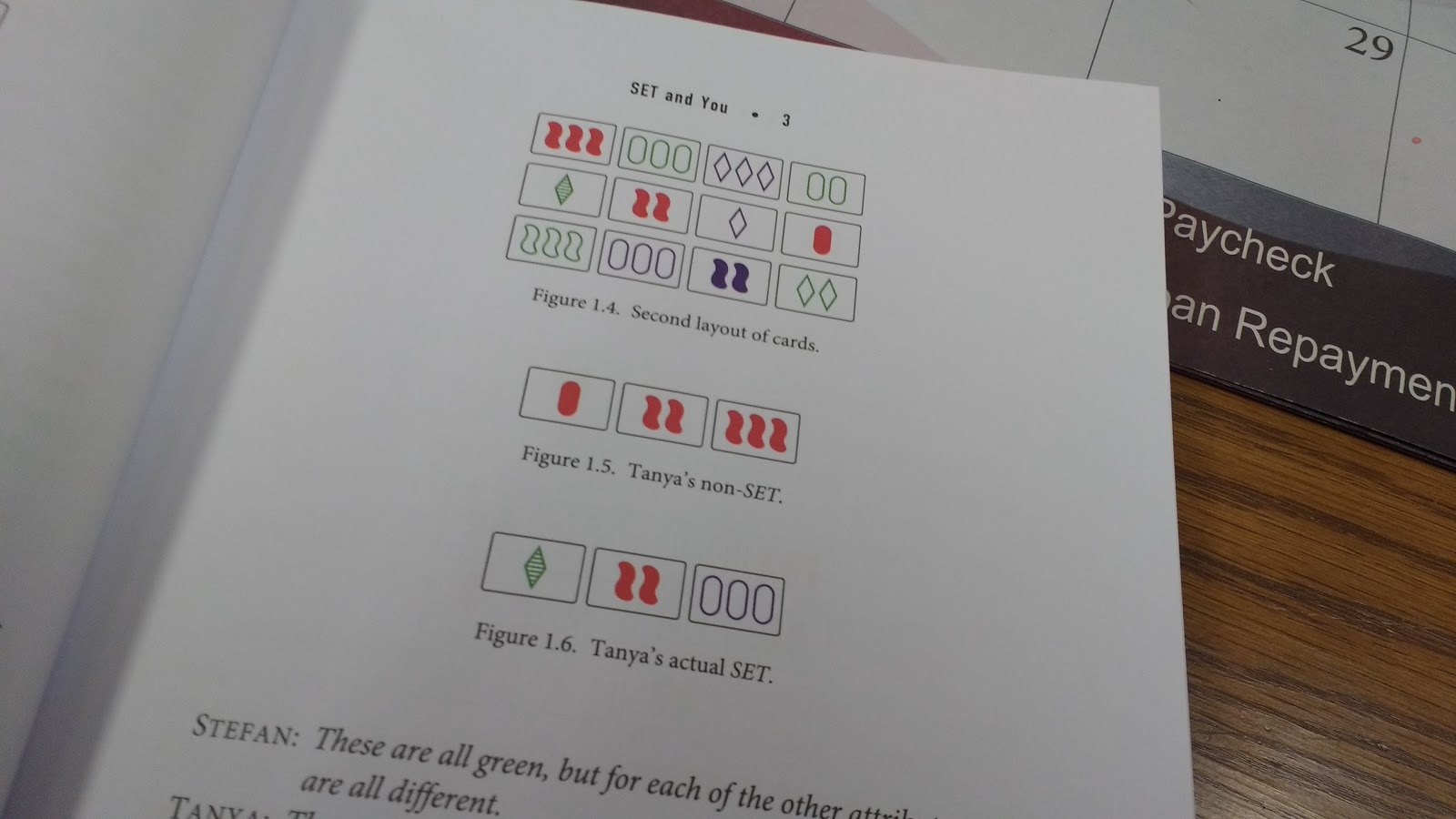
The book is chock full of colored illustrations, fun conversations between fictional characters (whose names conveniently begin with S, E, and T!), and the most amusing footnotes I’ve ever came across in a book! As I was reading the book, I kept making my husband pause his youtube video he was watching to read him footnote after footnotes. Luckily, they were funny enough to make him chuckle, so he didn’t get too aggravated at me for interrupting his videos.
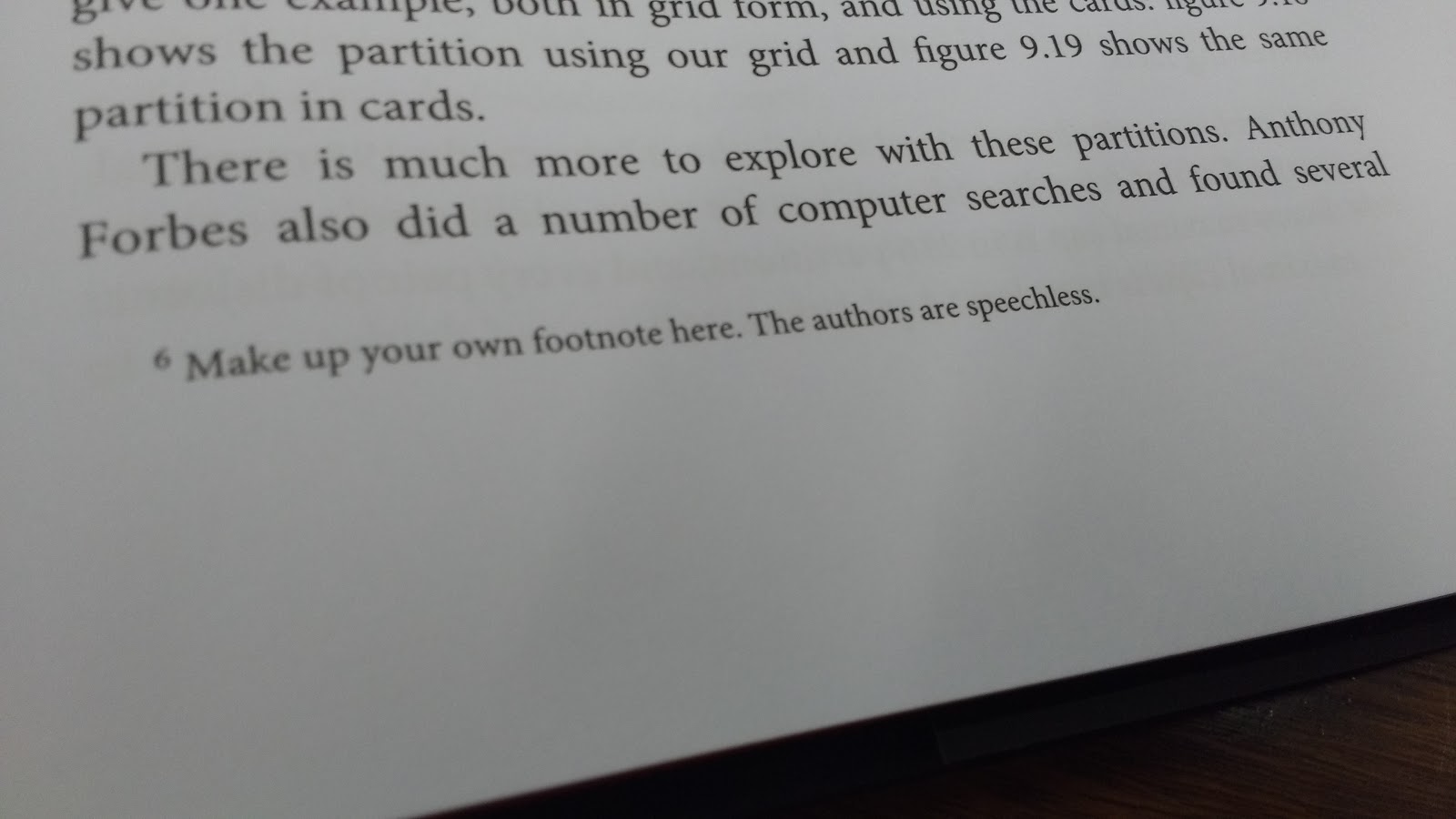
I could tell by how this book was written that the authors have a passion for math and teaching.
Here’s an example of this passion from the preface:
“Another important goal we have is for people to realize that mathematics is everywhere, and if you look for it, you’ll find that mathematics can help you understand the world. Mathematics, fundamentally, is about patterns, and patterns are all around us. Nearly everyone can do math, just as nearly everyone can read and write. We hope that, in actively reading this book, you will confidently consider yourself a “math person,” regardless of your mathematical background.”
The book is written in two parts. The first half of the book is intended to be accessible to ANYONE with an interest in the game. You don’t need a math degree to understand any of the concepts. In fact, I found myself making notes about how the authors explained some basic math concepts so I can use the same explanations with my high school students. The second half of the book is written in a way that it should still be accessible to anyone, but those with an advanced math background will certainly get more from the reading. This second half of the book is full of the messy math problems that caught my eye when I first flipped through the book.
Another thing I loved about reading this book is that it encourages exploration. The authors want you to read a few pages then put down the book and play a game of SET to experience what you’ve been reading about. The book asks questions and encourages you to ask your own questions.
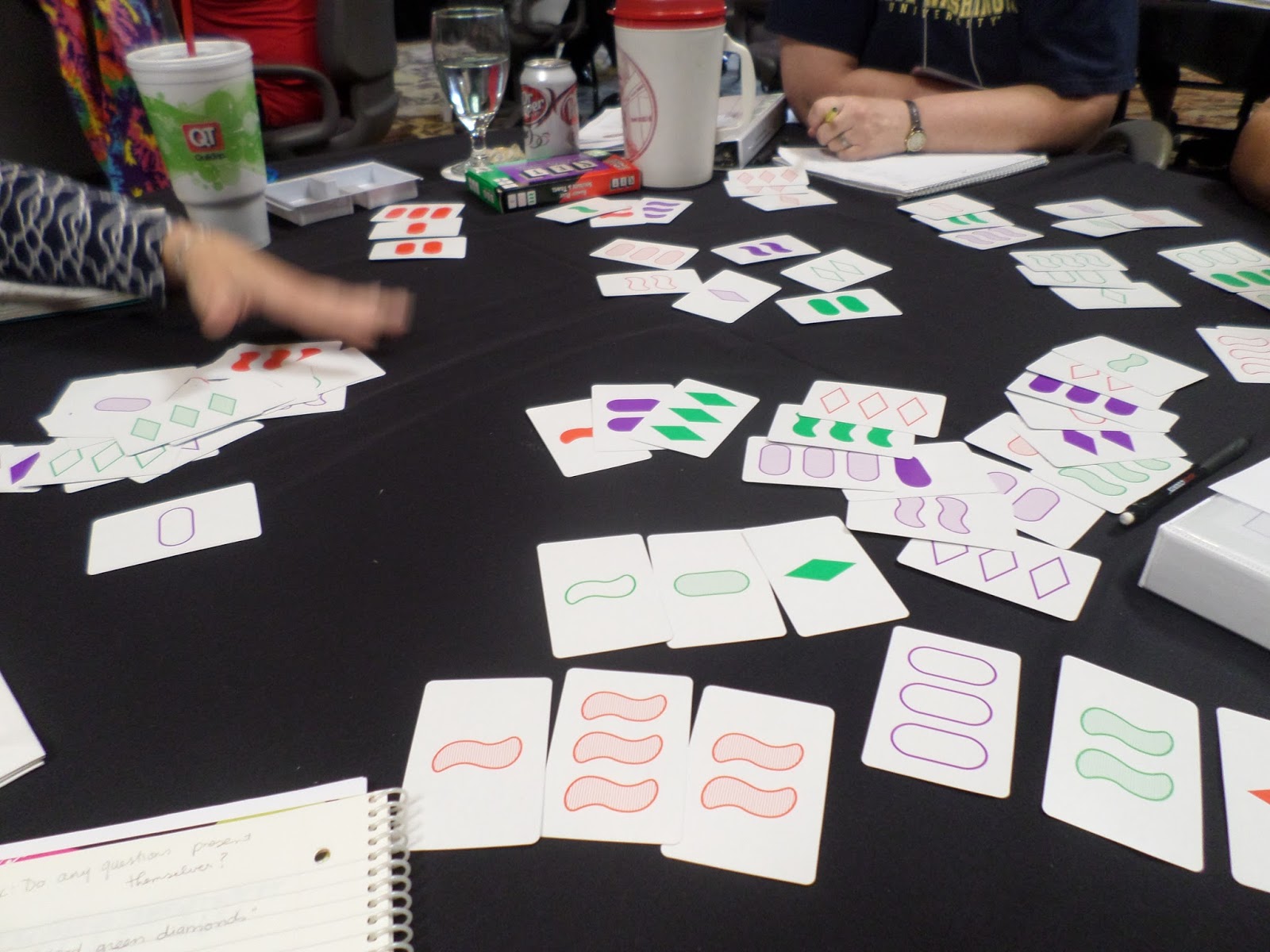
Even though I’ve played SET quite a bit and attended two presentations on SET, I still found myself learning so much while reading this book. For example, here’s a fact I was super-shocked by. At the beginning of the game of SET, shuffle the deck. Pull out one card at random and put it away without looking at it. Play the rest of the game as normal. When you have found as many sets as possible, look at the remaining cards. You will be able to tell exactly which card you pulled out at the beginning. How crazy is that?!?!? I still haven’t wrapped my mind around that one yet. I intentionally haven’t read the solution in the book because I want to figure it out myself. When I showed this puzzle to my husband, he was able to figure out how to do it in less than a minute. This is just crazy to me!
I also learned about the history of the game of SET by reading this book. Did you know that SET was invented in 1974 by Marsha Falco? Marsha was a population geneticist who was studying epilepsy in German shepherd dogs. She made a card with symbols for each dog to represent its various genes. Looking at these cards inspired her to make a card game that involved the same pattern recognition. Isn’t that awesome?
It was super-fun to revisit the idea of points, lines, and planes in the game of SET which I hadn’t though about since 2014’s Math Teachers’ Circle Summer Immersion Workshop.
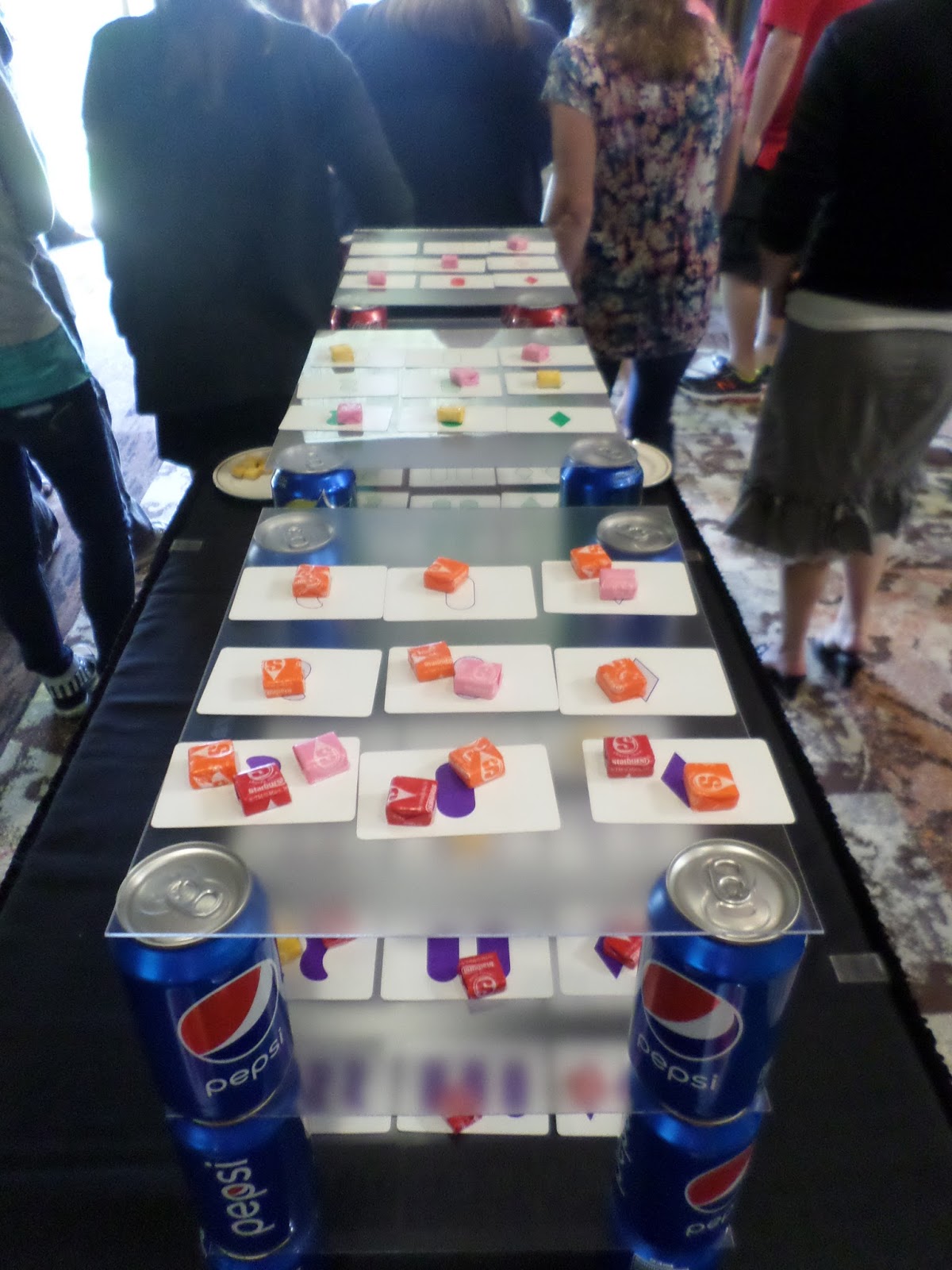
As you read through the book, you are encouraged to think through solutions on your own before the authors provide their own solutions. When I was reading a section on modular arithmetic, the authors warned me to “avert [my] eyes” until I figured out the problem on my own. If it wasn’t for this warning, I likely would have kept reading. Because of the warning, I found a solution on my own, and I was shocked at how different my solution was from the one in the text. I got the exact same answer, but I got there in a completely different way. I wouldn’t have been able to have that experience if I had just kept reading.
I look forward to trying out the exercises and projects provided at the end of each chapter. Really and truly, there is enough math in this book to keep you busy for a lifetime!
The title of this book is “The Joy of SET,” and I have to say that this book is truly a “joy” to read and work through. I’ve learned so much already, and I look forward to learning more as I tackle the challenges this book provides.
Here are a few categories of people who I would recommend this book to:
- Lovers of the SET Game
- Math teachers who miss the rigors of college-level math who would like to revisit concepts they may not have though about in quite a while
- Math teachers who would love to increase their problem solving skills and math knowledge by working through interesting math problems
I definitely recommend this book. If you would like to preview the book before you purchase it, Amazon has quite a big chunk of The Joy of SET book available to flip through on their website!

A special thank you to Princeton University Press for sending me a free copy of this book to review! All of the opinions in this post are my own.
January 15, 2017 – 2016 Year in Review
I had planned to start this blog post with a short blurb about how this is something I do every single year. But, I just went back to read last year’s “year in review” post, and I apparently didn’t write it. Oops… I guess this is something I do *almost* every year.
At the end of 2016, I read soooooooo many tweets and facebook posts about how 2016 was the worst year ever. But, for me, it was the best year ever.
January
January began “down under.” I traveled to Australia last December to spend Christmas with my then-fiance. During that trip, we journeyed to Sydney for Shaun’s K-1 visa interview. This was a really big deal because if this interview didn’t go well, we wouldn’t be able to get married according to our plan. Thankfully, we had all the right paperwork, and we were approved!
We said a teary goodbye on January 2nd, and I set out to fly from Adelaide to Melbourne to LA to Dallas to Tulsa. When I landed in LA, there was a problem with the cargo hold on our A380. It would not open which meant we could not get out our luggage to make the trek through customs. When the problem was finally solved and I had made it through customs, I had missed my flight from LA to Dallas. After waiting in line for 2+ hours to get on another flight, I was told that they would have to put me up in a hotel in LA since the next flight out was such a long wait. This began my first and only experience of California. I walked out of the airport to catch a bus to the hotel, but I quickly became overwhelmed and burst into tears. At this point, I was ready to go back in the airport and just wait it out there. Eventually, I got over my fear of the the crazy LA traffic and found the bus. I went to my hotel room to take a shower and have a nap. Then, I had pizza and took a bus back to the airport. I ended up having to fly from LA to Atlanta, then I flew from Atlanta to Tulsa.
It was a mess getting back home, and I have no desire to ever go back to LA. My parents picked me up at the airport and brought me my car so I could drive home. Within a few hours of getting home, my legs started hurting like crazy. I was convinced that I must have developed a blood clot from all of my flying. The flight from Melbourne to LA is almost 15 hours alone all by itself. My parents took me to the doctor. Luckily, I didn’t have a blood clot, but I did have both a sinus infection and pneumonia.
My students participated in the 2016 Challenge (updated 2017 Challenge posted here).
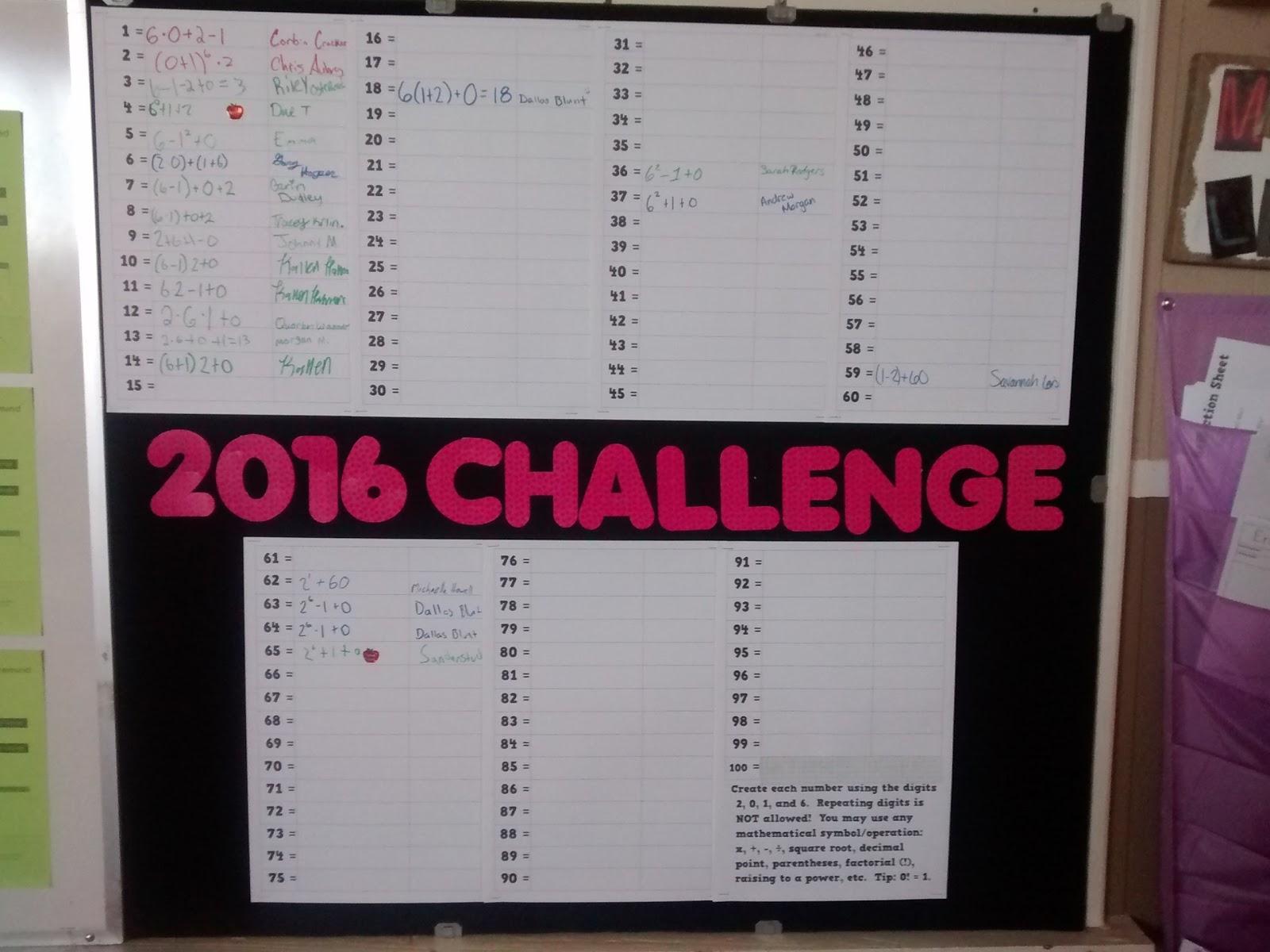
I also continued the annual tradition of Universal Letter Writing Week.
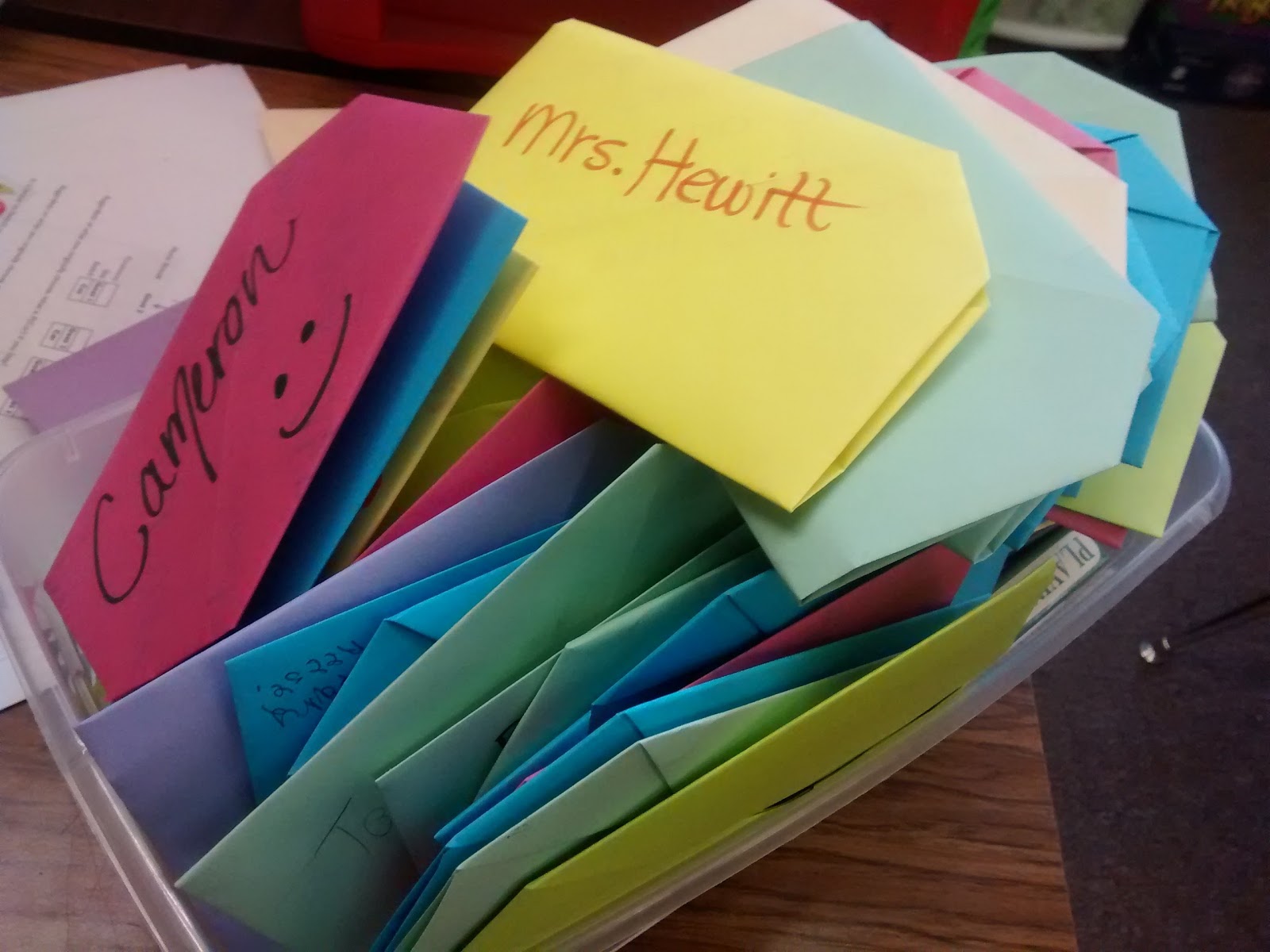
February
The most notable happening of February was that Shaun moved to America!
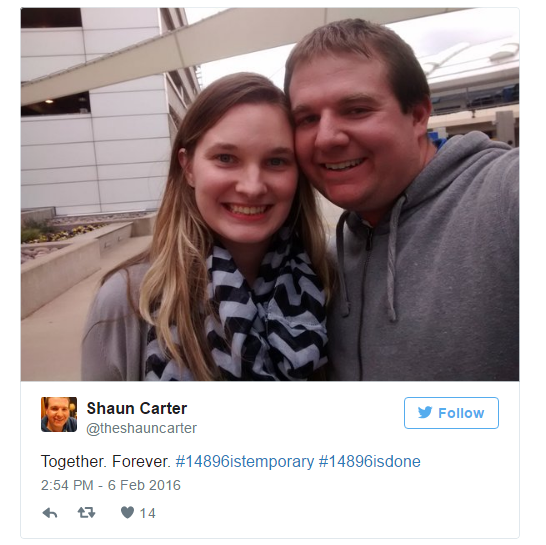
This meant that we had about a month to prepare for our March 12th wedding. Thus, February consisted of buying wedding rings, a wedding cake, wedding flowers, supplies to make wedding programs, and a zillion other things.
March
Shaun’s family flew to America at the beginning of March. They were a huge help with lots of last minute wedding prep. I ended up taking off school the week before Spring Break in order to get everything ready for our wedding which was the Saturday before Spring Break.
And, here’s the reason why 2016 was the best year ever!
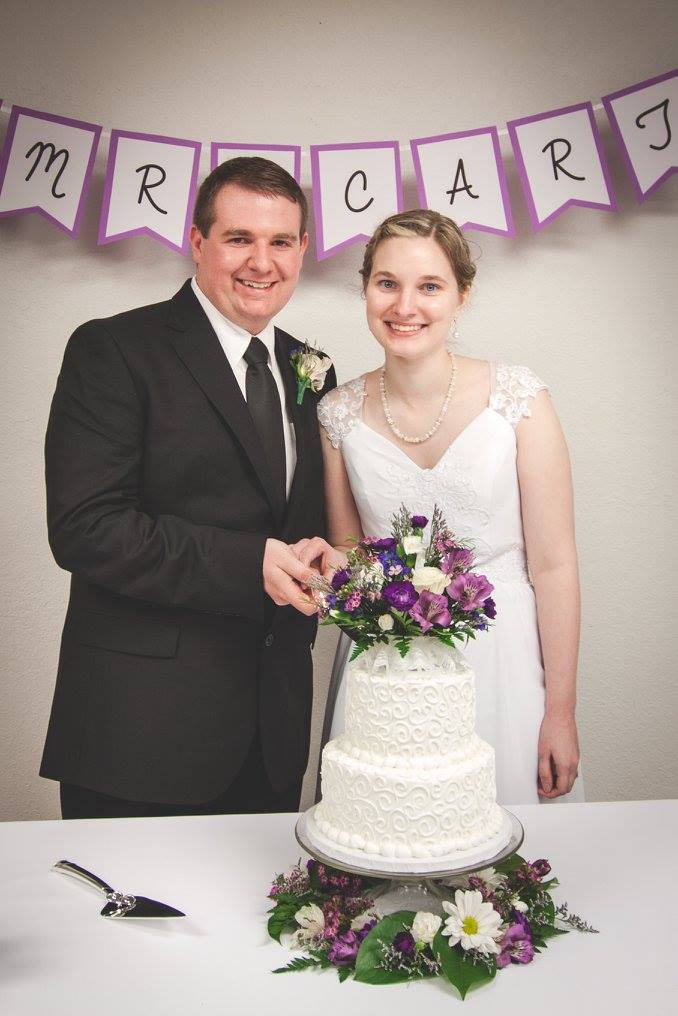
My necklace featured the digits of pi, and it was made by the lovely Katherine. I took a huge risk and ordered my wedding dress from Amazon. I ended up LOVING it!
After the wedding, we had a mini honeymoon in Bricktown. We had a lot of paperwork to get done on Spring Break before I had to had to head back to school, so we decided it made since to take a mini honeymoon right after our wedding and a longer trip during the summer.
I came back to school as Mrs. Carter. This was a hard adjustment for my students.
For Easter, I tried my hand at making an Australian favorite: Hot Cross Buns. I had never eaten one before, but I ended up LOVING them.
Another thing that happened in March was that Shaun and I had our minds blown by James Tanton and his exploding dots.
April
April was consumed by grad school. I had to finish my literature review for my action research project and start my last class for my master’s. My students were busy taking end-of-instruction exams.
May
In May, I finished both my 4th year of teaching and my master’s program. Shaun and I made the trek to Arlington, Texas so I could walk across the stage and receive my diploma. Since I did my master’s program entirely online, I wanted to do something in person to make it seem more “real.”
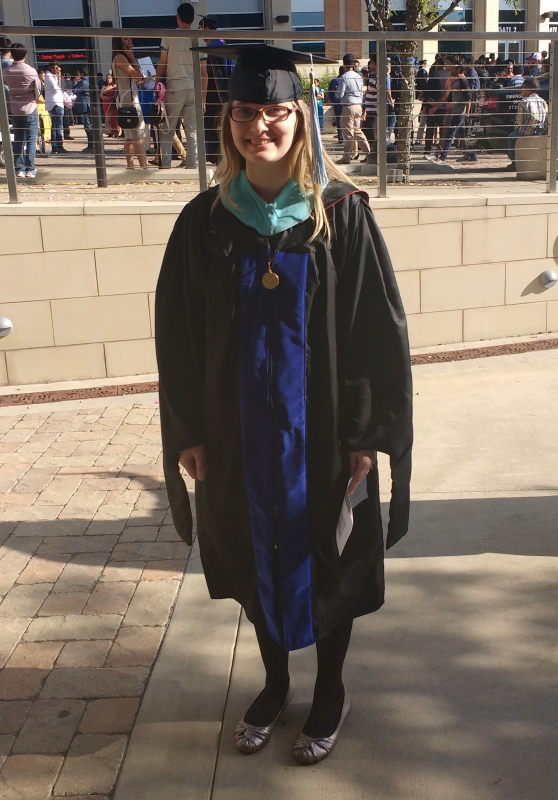
We took time to do a tiny bit of sight-seeing on our way back home which was nice.

After school was out, more excitement happened. Shaun was offered a job working at Drumright. It was such a relief for us to be done with the job hunt! And, this meant we would be working at the SAME school!
I designed my own teacher planner for the new school year using the Arc System from Staples.
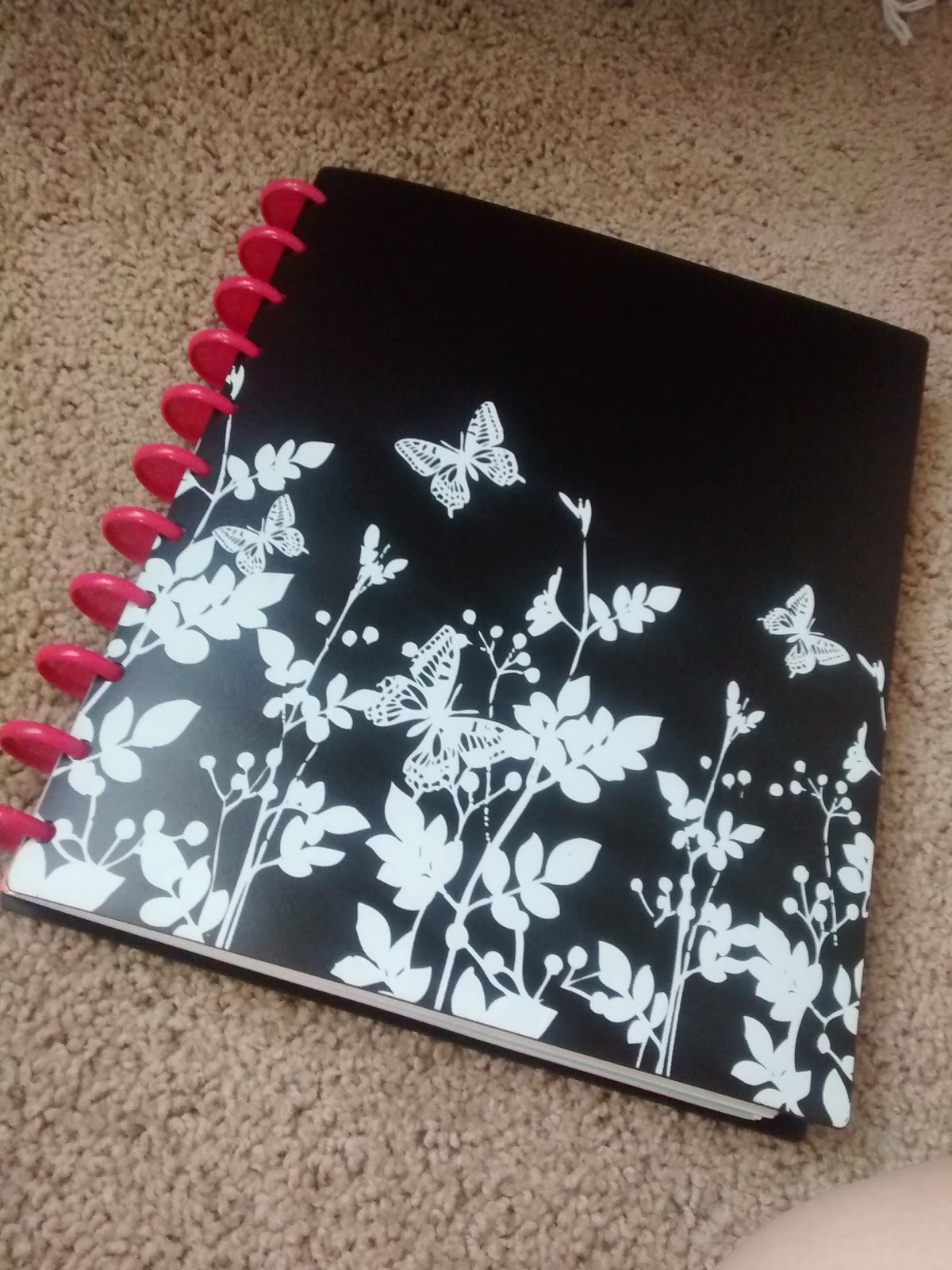
Shaun and I also volunteered at a golf tournament for our local education foundation. Our job was to verify if anyone got a hole-in-one at a certain hole.
June
In June, we took a road trip that we dubbed our “summer honeymoon.” We spent time in Missouri and Arkansas.

Shaun got to have his first-ever theme park experience at Silver Dollar City. I even convinced him to get on a roller coaster or two!

We spent a lot of time hiking and swimming. It really was a great vacation!

My diploma came in the mail which was super exciting!
Shaun and I attended two workshops in June. We spent three days at the Math Teachers’ Circle Summer Immersion Workshop.
We also attended the OCTM Summer Workshop. I blogged summaries of almost all of the sessions we attended.
At the beginning of June, we celebrated Shaun’s 29th birthday with the best chocolate cake. We skipped the icing, and instead I made homemade whipped cream to go between the layers. Yum!
Shaun’s family got him a bread machine for his birthday. We have used this bread machine SO much this year! I love being able to put in the ingredients at night, set the timer, and wake up to fresh bread in the morning.
July
Shaun and I attended an OERB Workshop in July so he could receive three free graphing calculators for his classroom. I roped him into helping me make stellated icosahedrons to hang up in my new classroom.
We also made two life changing purchases.
The previous tenants in my classroom had a habit of stapling stuff to the wall. There were hundreds of staples that would need to be pulled out. I had remembered some #MTBoSers talk about the magic of flat staple removers a few years back. I ordered two off of Amazon (one for me and one for the husband), and we were SO happy with ourselves.

If you spend any time at all pulling staples out of walls or bulletin boards, you must buy one now! It is magnetic, so the staples you pull out stick to it. It is truly magic!
We also bought an Amazon Basics Shredder. It makes going through our junk mail so much easier.
We also finally got around to putting together our guest book from our wedding in July. Guests at our wedding were invited to write a message or draw a picture for us on pieces of card stock (cut to 8″ squares) to be put in our guestbook album. It ended up turning out super cute!
August
In August, I started my 5th year of teaching. Our district had to combine our middle school and high school into a single building due to huge budget issues at the state level. This meant I had to decorate a brand-new classroom! Check out the pictures of all of my new classroom decorations.
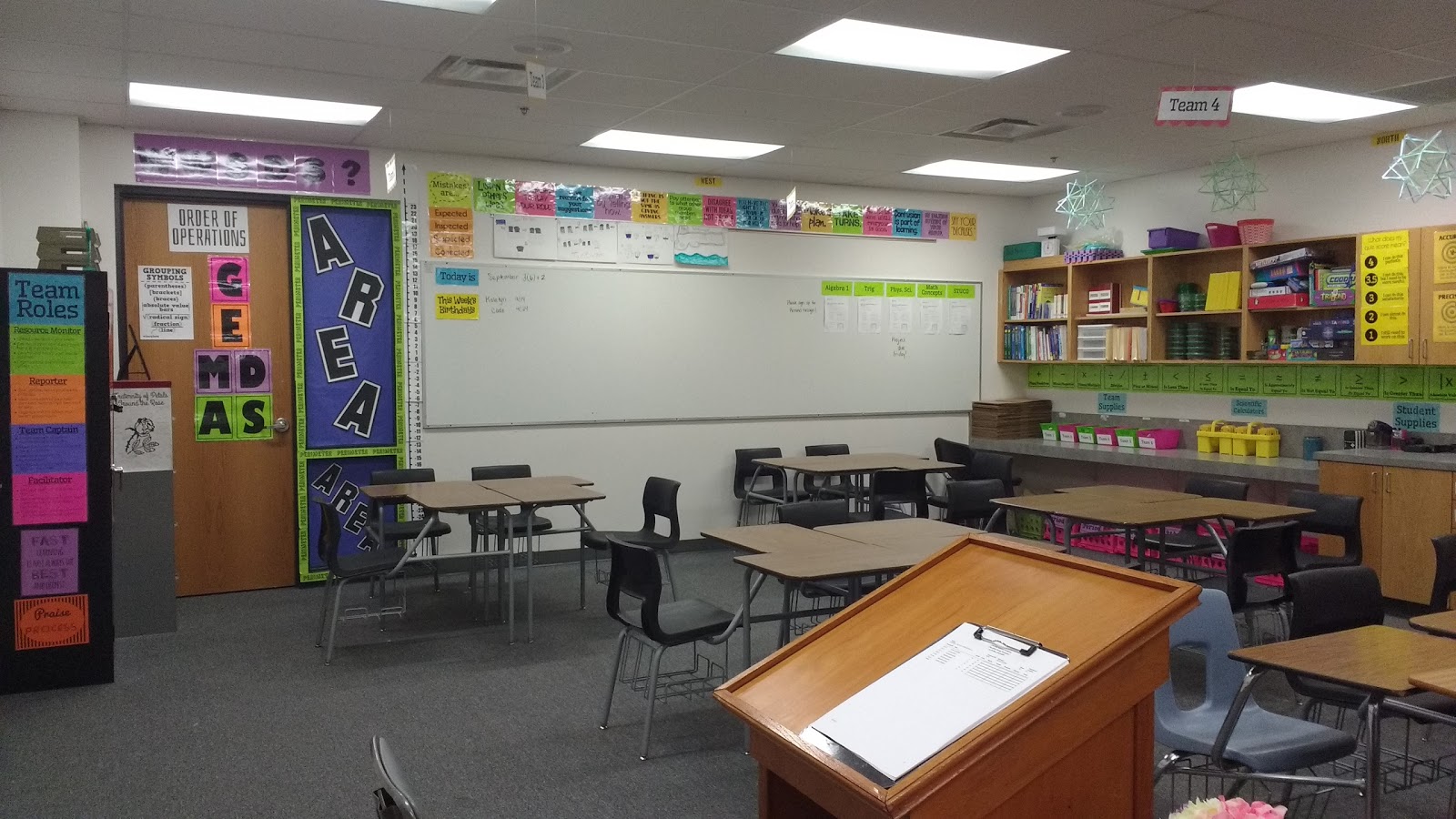
I won a free document camera from Ipevo.
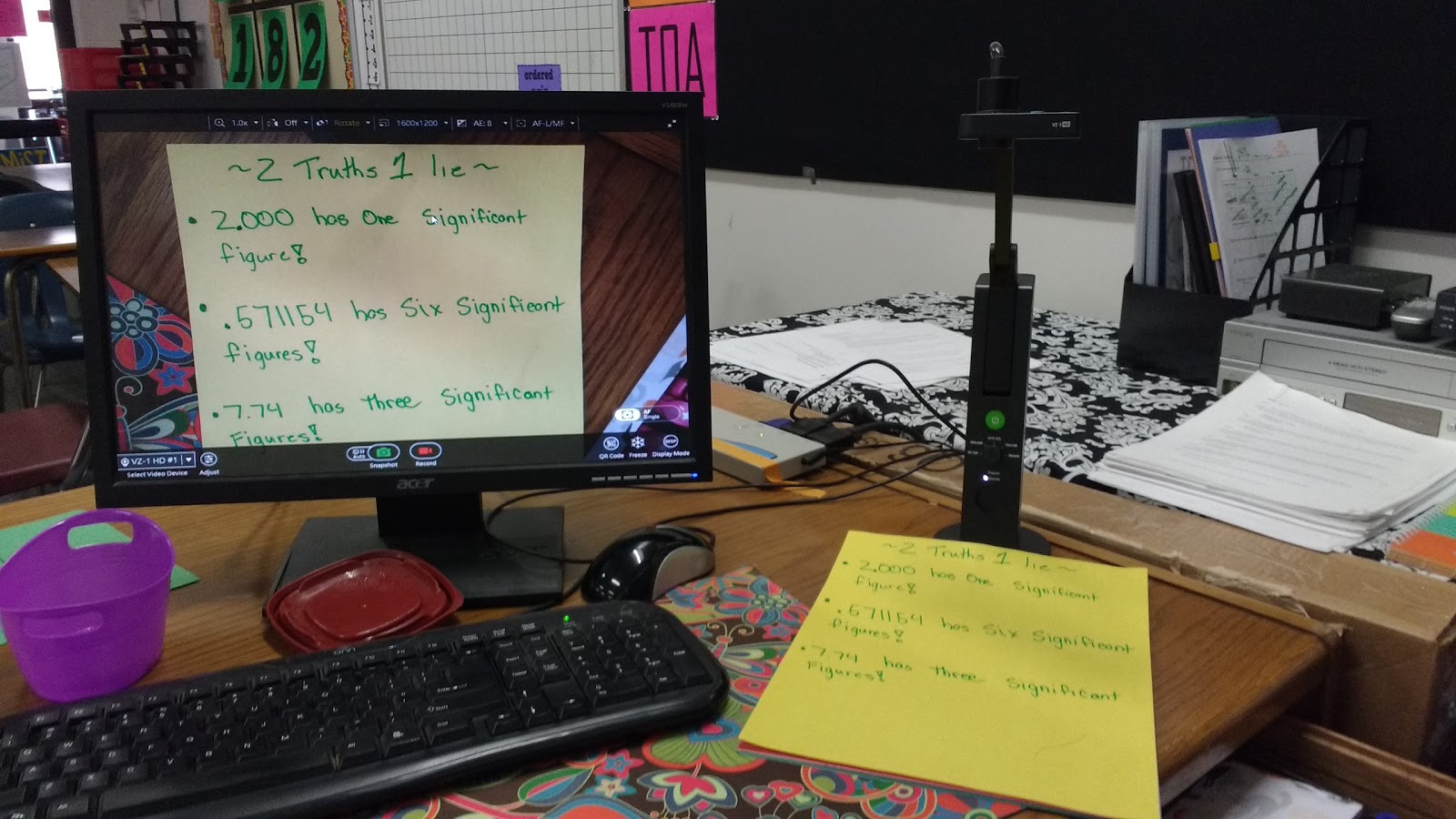
I was making so many new activities for my classroom that I decided to order a second laminator to keep at home.
After so many years of playing Witzzle with my students, I finally found a used copy on ebay to buy.
Shaun and I kept up our trend of making adult purchases. In August, we bought electric toothbrushes and a laser printer to replace the inkjet printer I’d been using since I started college.
September
In September, I attended another OERB Workshop. This was a science workshop, however, because I am now teaching a physical science class. This was never in my plans, but we had a science teacher last year retire who was not replaced due to budget cuts. I got loads of free science supplies for my classroom!
ThinkFun sent me a set of MathDice to use with my students.
Shaun started playing the guitar at church which has helped us get more involved. The other exciting thing that happened was I got a new phone. I wasn’t planning on getting a new phone, but I accidentally dunked my old phone in a glass of water. 🙁
October
Thankfully, October brought with it a 3-day break known as Fall Break. I became a bit obsessed with the Great British Bake Off. I started watching the original first season on YouTube. I tried out some of the recipes including a Victoria Sponge and a Cobb Loaf.
I got part of my grant stuff in the mail. I ordered giant, group-sized dry erase boards and hundreds of markers.
My SmartBoard projector died. The school ordered a replacement bulb, but after it was installed the projector would not stay on for more than 30 seconds. So, I spent almost two months of the school year without a projector. This was TOUGH.
I introduced my students to the 5-4-3-2-1 Challenge.
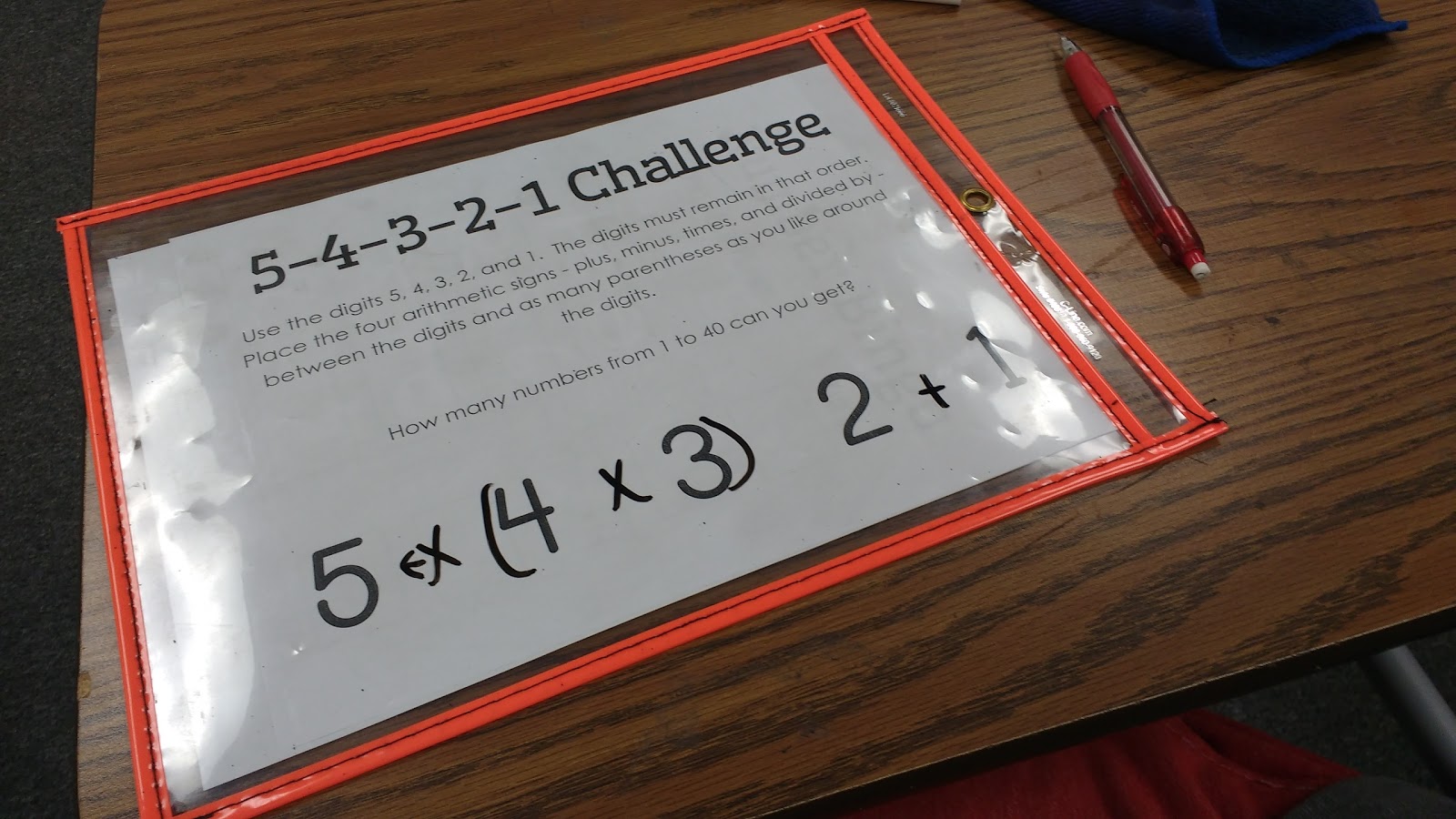
ThinkFun sent me some games to test out in my classroom and write reviews of. I reviewed both Shape Logic and Brick Logic.
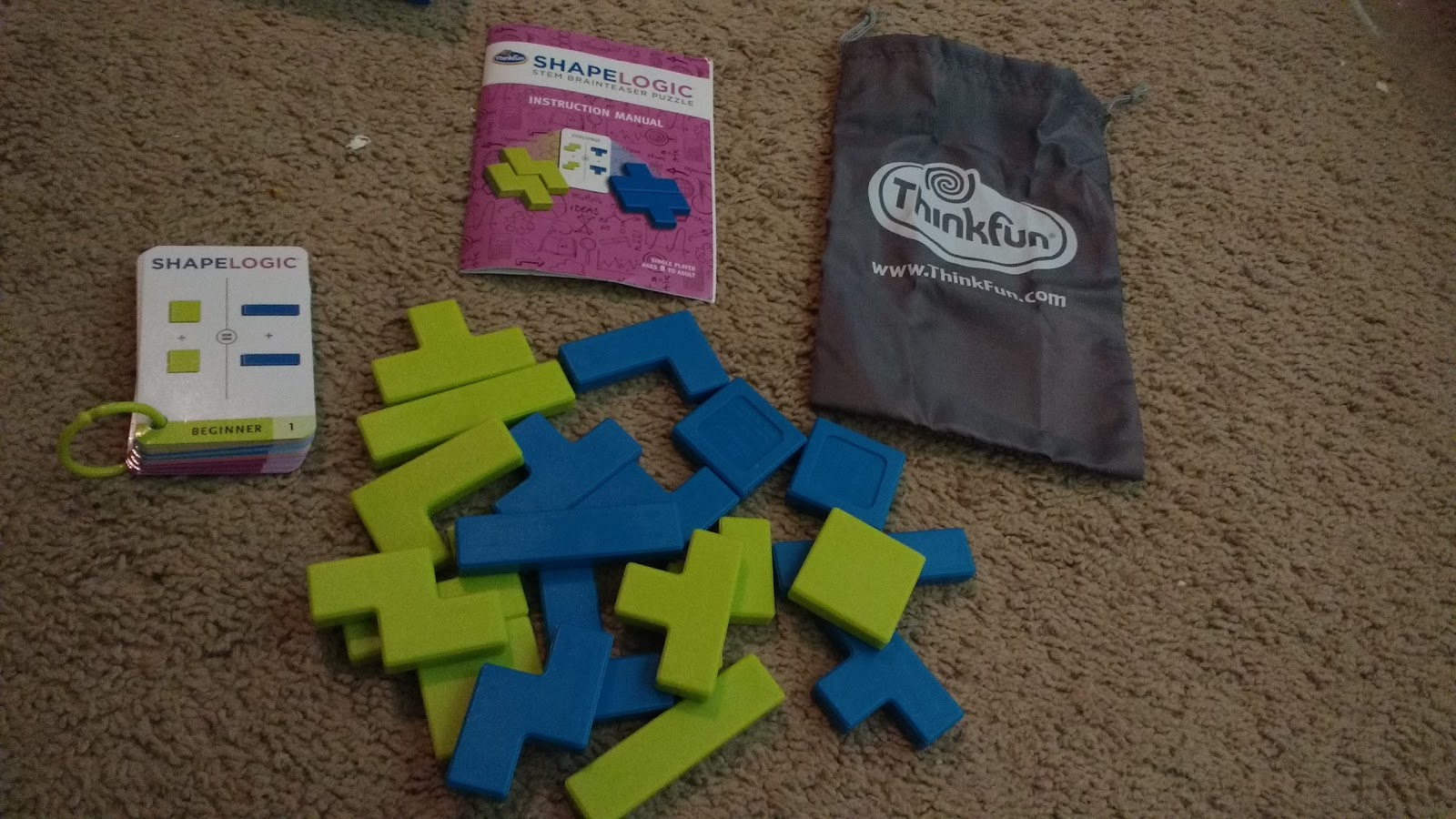
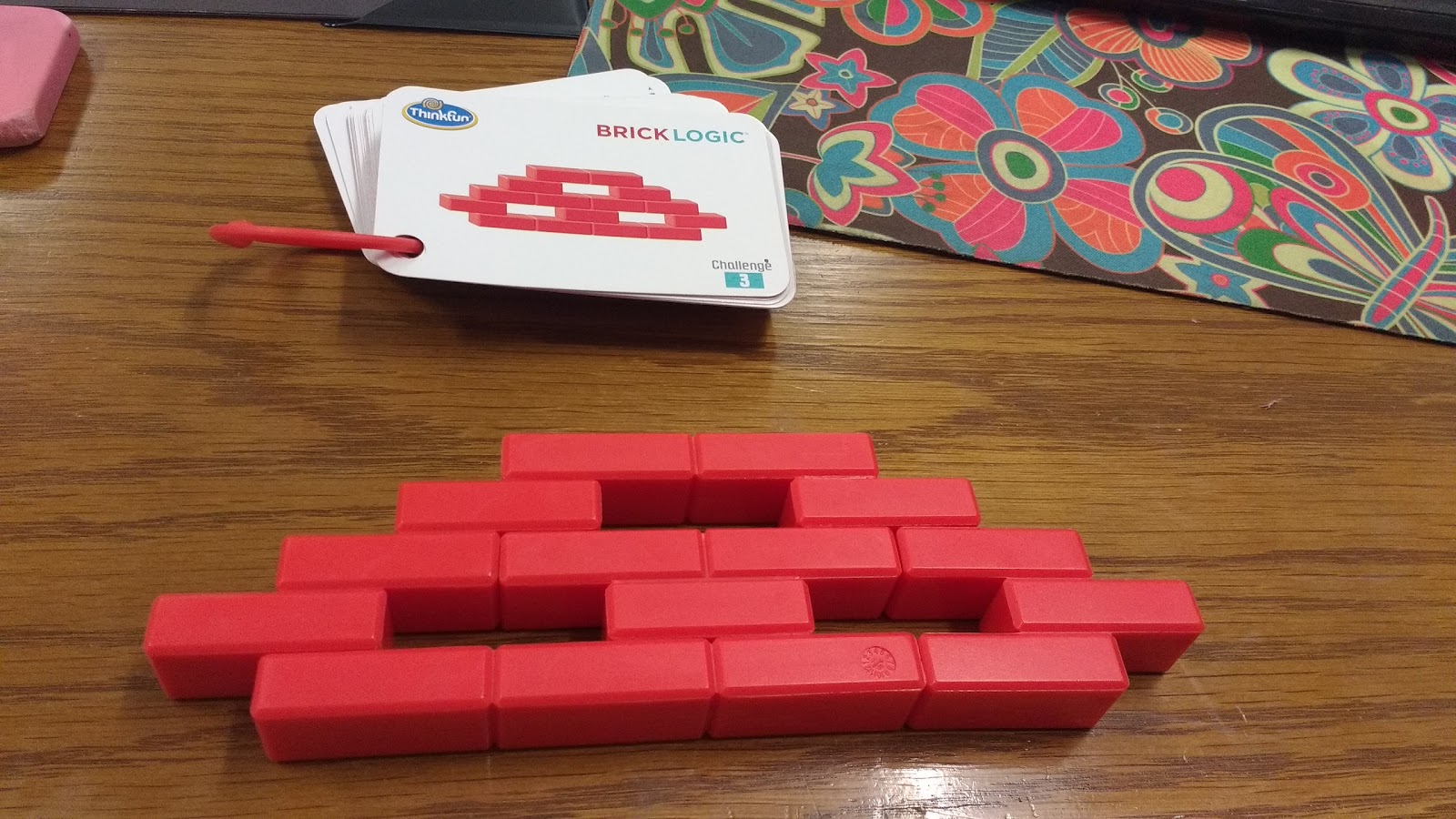
Probably the biggest thing that happened in October was that Shaun and I bought a new (to us) car! When Shaun moved here, we were waiting on him to get his green card and driver’s license straightened out before we bought a second car. Then, when he got a job at the same school as me, it became much less of a priority on our to-do list. Over Fall Break, we finally decided to make it happen.
We ended up buying a 2015 Toyota Corolla from Hertz. It was a former rental car, and we are completely happy with it! It’s the newest car either of us have ever owned. And, we’re kind of in love with the reversing camera.
November
I celebrated my 27th birthday in November. We celebrated by trying a new to us restaurant: Pie Five. We also went to downtown Stillwater for some yummy gelato. I got lots of new kitchen gear for my birthday which made me super happy.
We celebrated Thanksgiving with my family. This was Shaun’s first ever Thanksgiving. We ate waaaaaaaaaaaayyyyyyyy too much! It was surprisingly warm for November, so Shaun taught my family how to play bocce.
I continued my baking obsession by baking myself a birthday cake and making crescent rolls.
The rest of my grant materials (science and measurement supplies) arrived!
December
My physical science students grew “Chemistrees.”
As my students were working on semester tests, I worked on organizing my classroom and sorting all the activities I had created during the first semester of the year.

Almost as soon as Christmas Break had began, I came down with Strep Throat. This was definitely not fun. Antibiotics took care of my sore throat pretty quickly, but I was plagued with a mild cold over Christmas. 🙁 We celebrated Shaun’s first American Christmas with my family. We got lots of games for Christmas which kept us super occupied. Our favorites have been Mobi, 3 Up 3 Down, Don’t Take My Word, and Tic Stac Toe.
My parents got Shaun a disc bocce set for Christmas. Lucky for us, the discs are in the colors of America and Australia!
Shaun asked for a cricket bat for Christmas. We bought PVC pipe at Lowe’s so he could make his own cricket stumps. It was warm enough one day in December for us to play an afternoon of backyard cricket. I’m definitely still learning how this whole cricket thing works.
For Christmas, I asked for an exercise bike. I haven’t used it very much yet due to battling what seems like illness after illness after illness.
We had my parents and sister over to our house for New Year’s Eve. We made pizza for lunch and pavlova for dessert. We spent the afternoon playing games and watching the Great British Bake Off.
I realize now why Australians make pavlova in the summer! It was super hard to find fresh fruit to decorate with in the middle of winter.
And, that was just some of what happened in 2016. It turns out that doing life with your best friend/husband is pretty amazing.
January 26, 2017 – Things Teenagers Say Volume 43
It feels like it’s been FOREVER since my last things teenagers say. So, I guess we should remedy that. Hope you’re having a happy Thursday!

—
Student 1: Will I get my phone back at the end of the hour?
Student 2: She’s eating a banana, so obviously not.
—
Did you know that in an alternate universe that might actually make sense?
—
Mrs. Carter, you may think someone took my notes for me, but my handwriting is just on point today.
—
Student: Are your husband’s legs still dark from the summer?
Me: Ummm…I’m just going to walk away now and pretend you didn’t just ask that.
—
Don’t ever bite into soap!
—
Dude! She’s never brushed her teeth with deodorant before!
—
I write my 2’s like an adult now.
—
I want to skip school in my closet.
—
You have a mom, too?!?
—
Why does spaghetti smell like puke when you go to wash the pan out?
—
I love sneezing.
—
I locked him in my trunk one time.
—
I don’t smell like cigarettes. I smell like laundry detergent.
—
Guys, I almost didn’t wear a hat this morning. I woke up and looked in the mirror. My hair looked like a rooster. It looked like a good rooster!
—
Student 1: You don’t like peanut rolls?!?
Student 2: No, I said I don’t like funerals!
—
You know what’s fun? Not being single.
—
Do you remember how you didn’t like the word “gizzards” in the fourth grade?
—
Student 1: Can we listen to the Hamilton soundtrack?
Student 2: We’re reading Hamilton in English class!
Student 1: Really?
Student 3: No, we’re reading HAMLET.
—
I have a box of playing cards in my room to use for stats experiments and various activities.
Do you want to play 120,000 card pick up?
—
Did you know that if you add five years to your age it will tell you how old you will be in five years?
—
Student 1: My Christmas tree weighs over 300 pounds.
Student 2: There’s no way that your tree weighs as much as a semi truck.
—
After sending a student to borrow graphing calculators from my husband’s classroom:
He really is Australian!
—
When you wear fancy slacks that zip up the back instead of the front…
Are your pants on backwards?
—
Jesus loves you. But, he doesn’t love you anymore because you kicked my friend out of lunch detention.
—
They are bottle flipping, but my religion is against that. Can you please tell them to stop?
—
Student: Is it possible for a Mexican student to fail Spanish class?
Me: I don’t know. We speak English. Do any of our students fail English class?
—
You need to tell Mr. Carter to step up his game. His room is not as colorful as yours.
—
They have Subway in Australia? I didn’t even think they had towns there.
—
So if you’re blind and eat carrots, do you get your eyesight back?
—
Me: Stop burping.
Student: What? This isn’t a free country?
Me: It’s not a free country when you’re in lunch detention.
Student: That’s not what the Bible says!
—
Student 1: They are going to deport Trump.
Student 2: That could happen. He’s Swedish.
Student 1: He is pretty sweet.
—
Student: My hand is cramping. I’m going to have arthritis because of you!
Me: That’s why we completed our notebook over the course of the entire semester. You’re trying to do it all in one day. Of course, your hand hurts!
January 31, 2017 – Filing Cabinet
I’ve spent a lot of time lately organizing my activities in individual pockets that I store in a filing cabinet by my desk.

So, I’ve decided to start a new blog series where I share with you a peek into my filing cabinet. Each volume of this series will include 4-6 activities from my filing cabinet. I’ll either share with you the files I created or share where I found the resource online.
I hope you’ll enjoy this peek into what goes on in my classroom! As of now, my plan is to share the activities in alphabetical order. That means you’re stuck with my number-based activities today. 🙂
1-100 Challenge from Sara VanDerWerf
This year, I tried Sara VanDerWerf’s 1-100 Challenge for the first time on the first day of school. It was a huge hit! My students were SUPER-engaged, and it was a great springboard to discuss what groupwork should look like. You can learn more about this post at Sara’s awesome blog.
Here’s the general gist. Students are given a sheet of numbers that *appear* to be randomly arranged. The first student in the group must color 1. The second student must color 2. Students continue going around the group coloring the appropriate numbers. They can help their teammates find their numbers, but they may not color the numbers for them. If students are in groups of 4, a colorful pattern will soon emerge if they are paying attention!

1-4-5 Square Challenge I found this square puzzle on a puzzle site. I created a printable version using Publisher. Then, I printed and laminated them to make a class set.

I give my students three square puzzle challenges.
Challenge 1: Make a Square Using Exactly 1 Piece
Challenge 2: Make a Square Using Exactly 4 Pieces
Challenge 3: Make a Square Using Exactly 5 Pieces (No overlapping!)
My students usually have no problem doing Challenge 1 and 2. Challenge 3 turns out to be a real challenge. And, I usually only have 1 or 2 students figure it out. Whenever I use these with my students, I usually have to set a timer to let them know when we will stop. Otherwise, they will want to keep going, and we’ll never get to our lesson!
24 Game
I love the 24 Game, so I was super excited when I found a PDF version with printable cards on the website of Minneapolis Public Schools. The goal of the game is to make the number 24 from the four given numbers. You may add, subtract, multiply, or divide the four numbers. Parentheses may also be used.
You can purchase different types of 24 Games from Amazon. Last month, my husband and I played a couple of rounds of Double Digits against each other, and some of the problems were super-tricky even for us math teachers! This is a great activity to use to reinforce the order of operations.

Here’s the free printable version I found online:
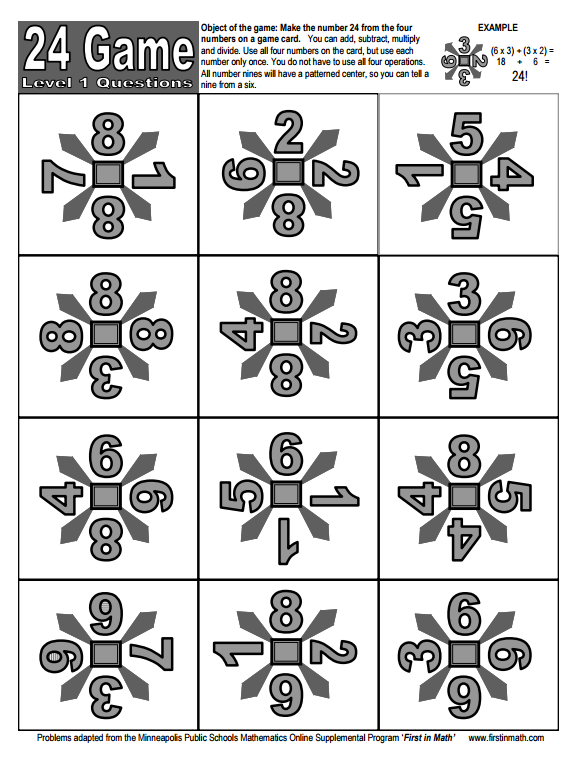
5-4-3-2-1 Challenge
This 5-4-3-2-1 challenge was inspired by a puzzle posted by Will Shortz on NPR’s website. The goal of the problem is to use the digits 5, 4, 3, 2, and 1 (in that order) to create as many numbers between 1 and 40 as possible. You can add, subtract, multiply, and divide the numbers.
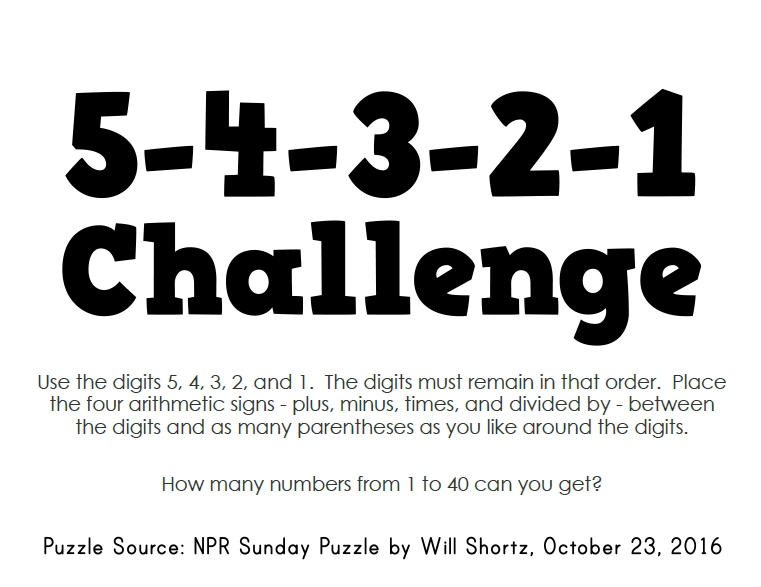
I created some recording sheets for my students to use to attempt the puzzle. This is another great puzzle to practice using the order of operations.
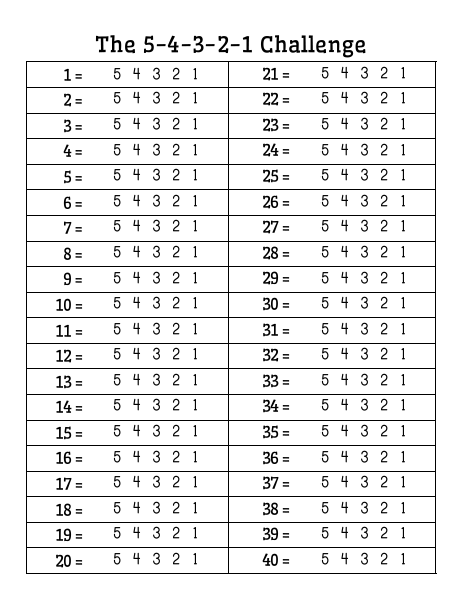
I also made a poster-sized version for a full-class activity.

My students really enjoyed the challenge. I used it with both my lowest math class (9th graders not yet ready for Algebra 1) and my highest math class (trig).
Hope you’ve enjoyed this peek at some of the activities in my filing cabinet!
February 12, 2017 – Things Teenagers Say Volume 44
It doesn’t seem like it’s been that long since I posted Volume 43 of Things Teenagers Say! I guess that just means my students have been on a roll lately…

—
You’re a math teacher. You shouldn’t be talking about alliteration!
—
Did you know that mom spelled backwards is mom?
—
I know how to play this game. I’m like a geek at Battleship!
—
I like your one earring. I don’t care how you lost the other one, so don’t tell me the story.
—
You glittered all over my bag!
—
Student 1: She’s bullying me with money.
Me: What?!?
Student 2: I won’t give him a dollar
—
Guys! Use your inside heads!
—
I’m so particular about my shoe laces.
—
Yesterday, you were dressed like a banana. Today, you’re dressed like an unpeeled banana.
—
Student 1: My marker is going out.
Student 2: Hey, at least you finally got someone to go out with you.
—
Student 1: I have a hair in my sock.
Student 2: I have a foot in my sock.
—
Student 1: I HATE Chinese food.
Student 2: And, Chinese food HATES you!
—
I’m going to file a bullying report on you for not wearing socks.
—
My future plans are to marry a rich old man and die young in my 30’s.
—
Heroin is bad for your health. Cocaine isn’t as bad for your health.
—
I have more chins than friends.
—
A student describing their dream:
You were dead because you got into a polygamist husband fight.
—
Student 1: What happened to your sister?
Student 2: All I know is that she did SOMETHING to her knee, and they are going to have to do SOMETHING to her knee.
—
Student 1: What does your bracelet say?
Student 2: Ecuador.
Student 3: Isn’t Ecuador the place where they build floors?
—
Mr. Carter should wear a suit covered in Christmas lights to prom since he is the light of your life.
—
Student: I just noticed that lifeguard is misspelled in this problem.
Me: Oops.
Student: Yeah, it’s life G – U – A – R – D.
Me: That’s how you spell lifeguard.
Student: Is it? My friend used to be a lifeguard, and he always told me it was spelled G – A – U – R – D.
—
Student: Would you ever date a communist?
Me: Given that I’m married, no I would not date a communist.
Student: What if Mr. Carter wasn’t in the picture?
—
Student 1: There’s a peculiar stain on the carpet in the back of your classroom. I wish to know what happened.
Student 2: That’s where she killed…
Student 1: …George Clooney. I know.
Student 3: George Clooney is dead?!?
February 15, 2017 – Create Your Own Momentum Problem
After my physical science students finished with their momentum quiz, I gave them the task of creating their own momentum problem. They had to pick a subject for their problem and determine an appropriate mass and velocity.
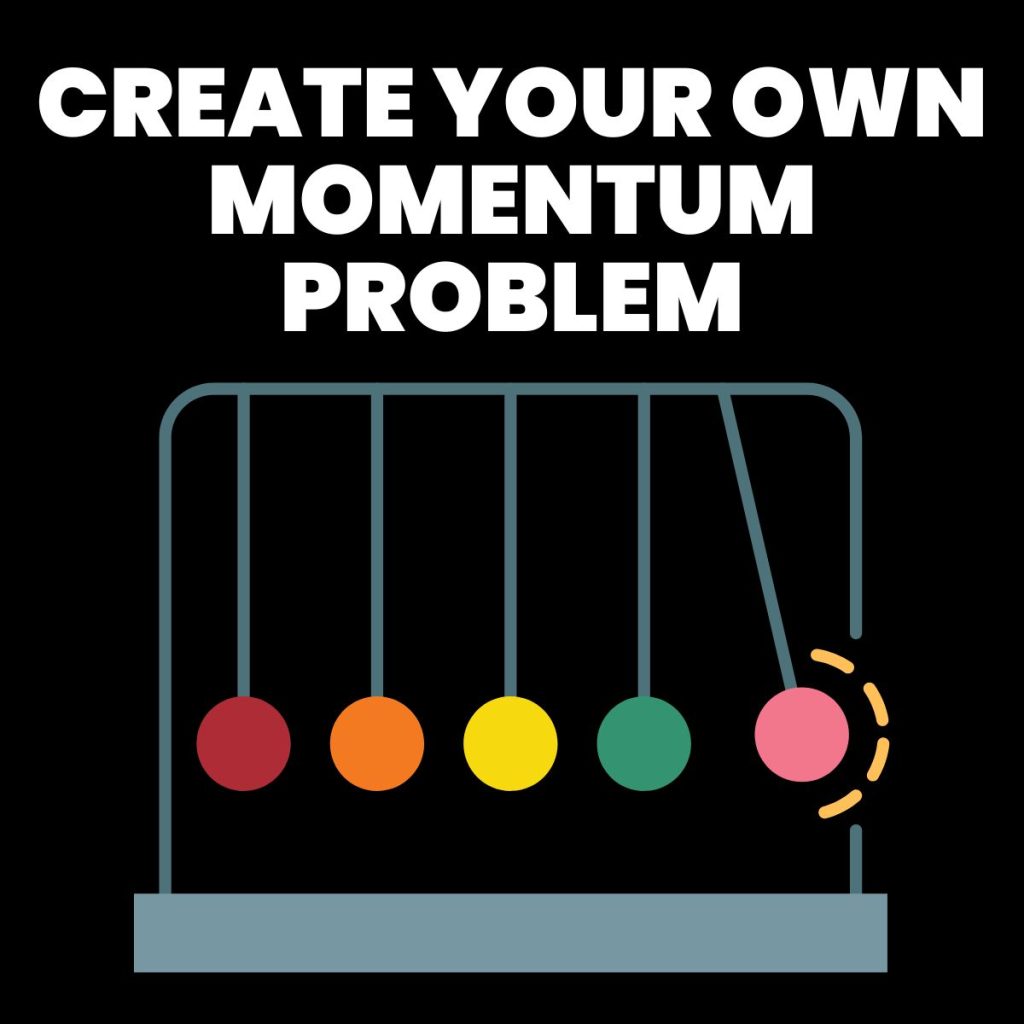
Some students converted pounds to kilograms to find the mass. Others just did a google search to find the mass they were looking for. Some estimated velocities, and others googled for a velocity as well.
I gave my students the choice of writing a problem that required solving for momentum, mass, or velocity. Most of my students took the easy route and wrote a problem asking the reader to solve for momentum. In retrospect, I would require students to write a multi-step problem with one step involving solving for momentum, one step for mass, and one step for velocity.
Students were also asked to write up a solution to their problem on notebook paper and attach it to the problem.
Here is what my students came up with:
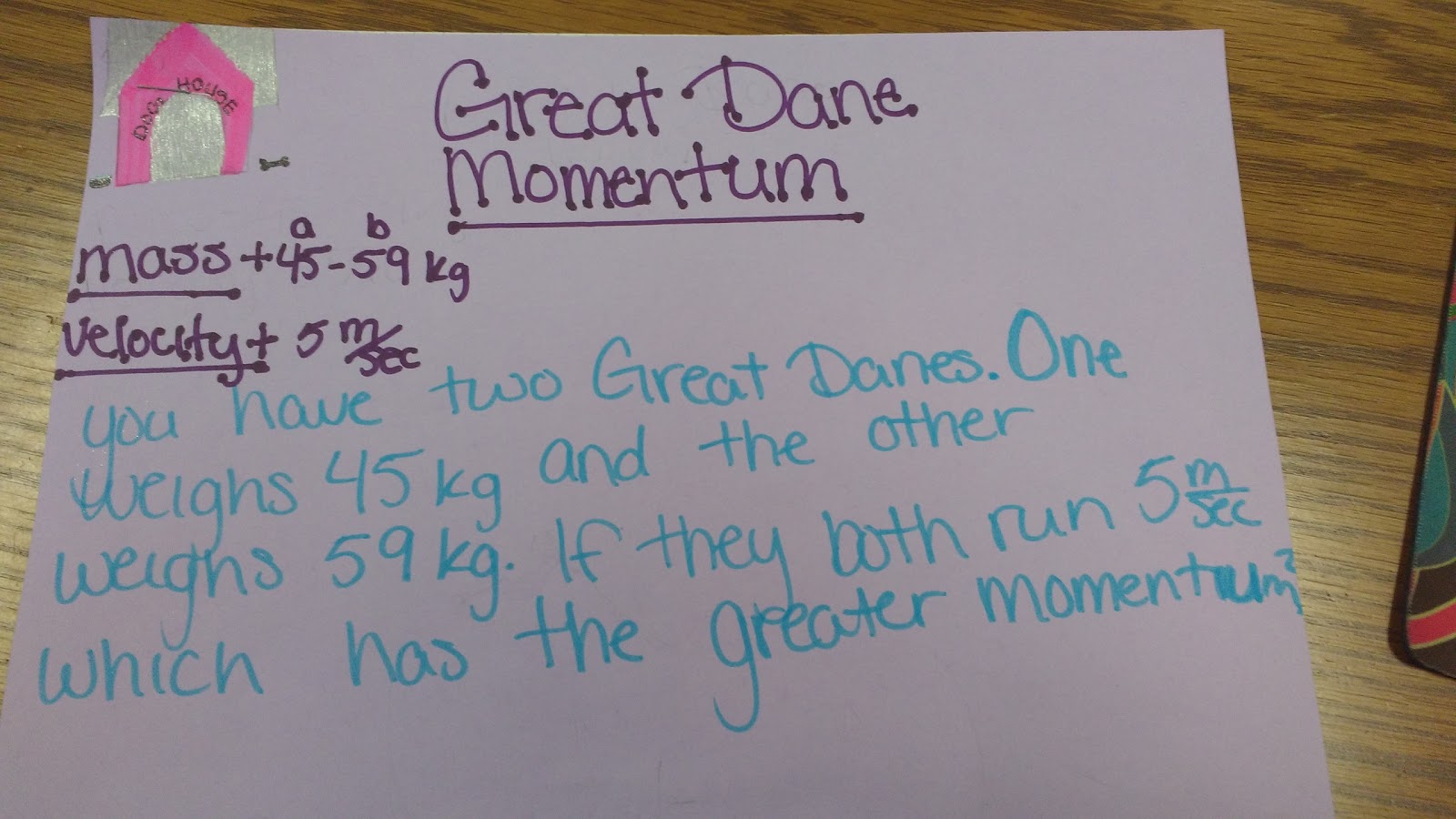
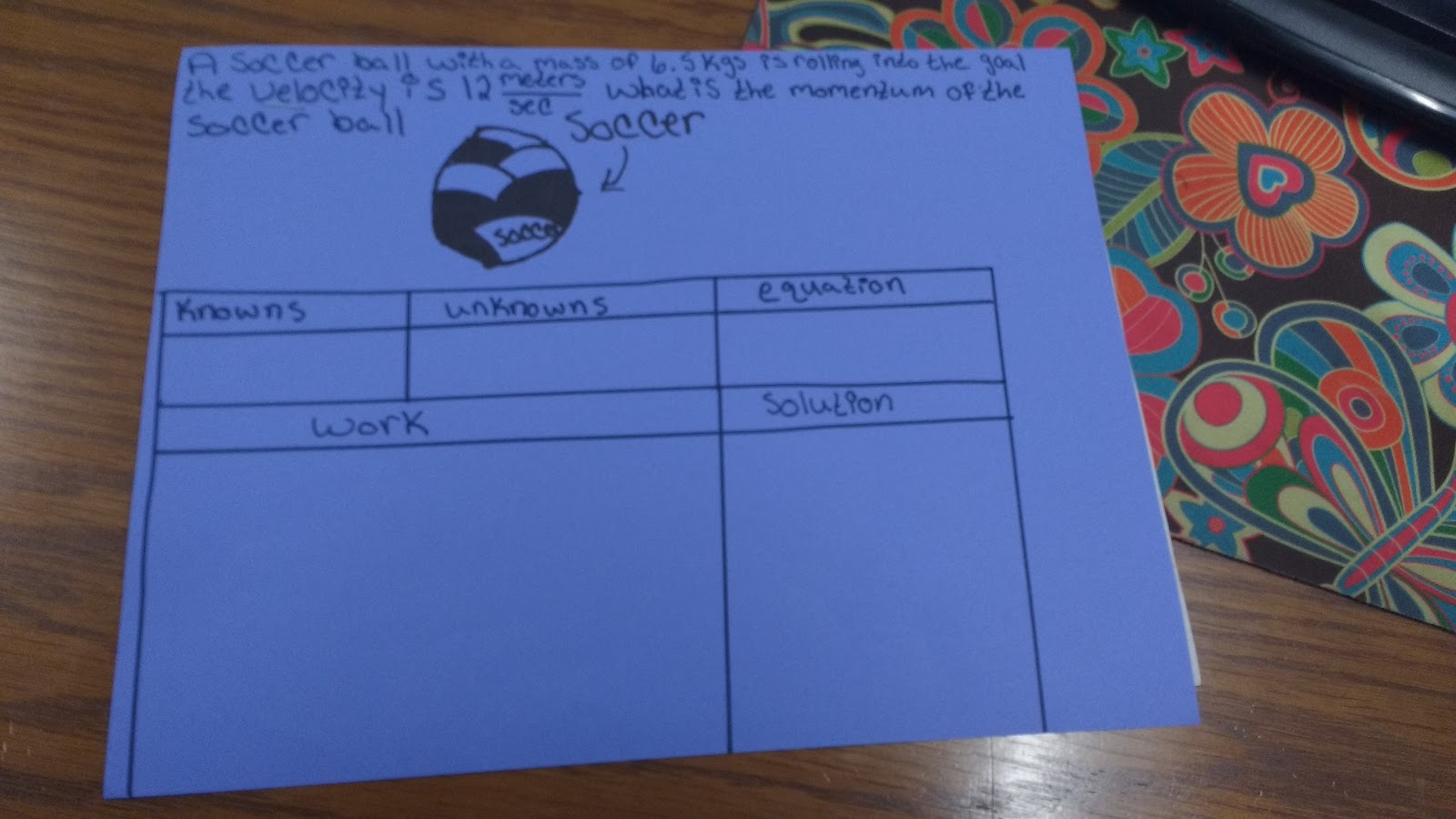

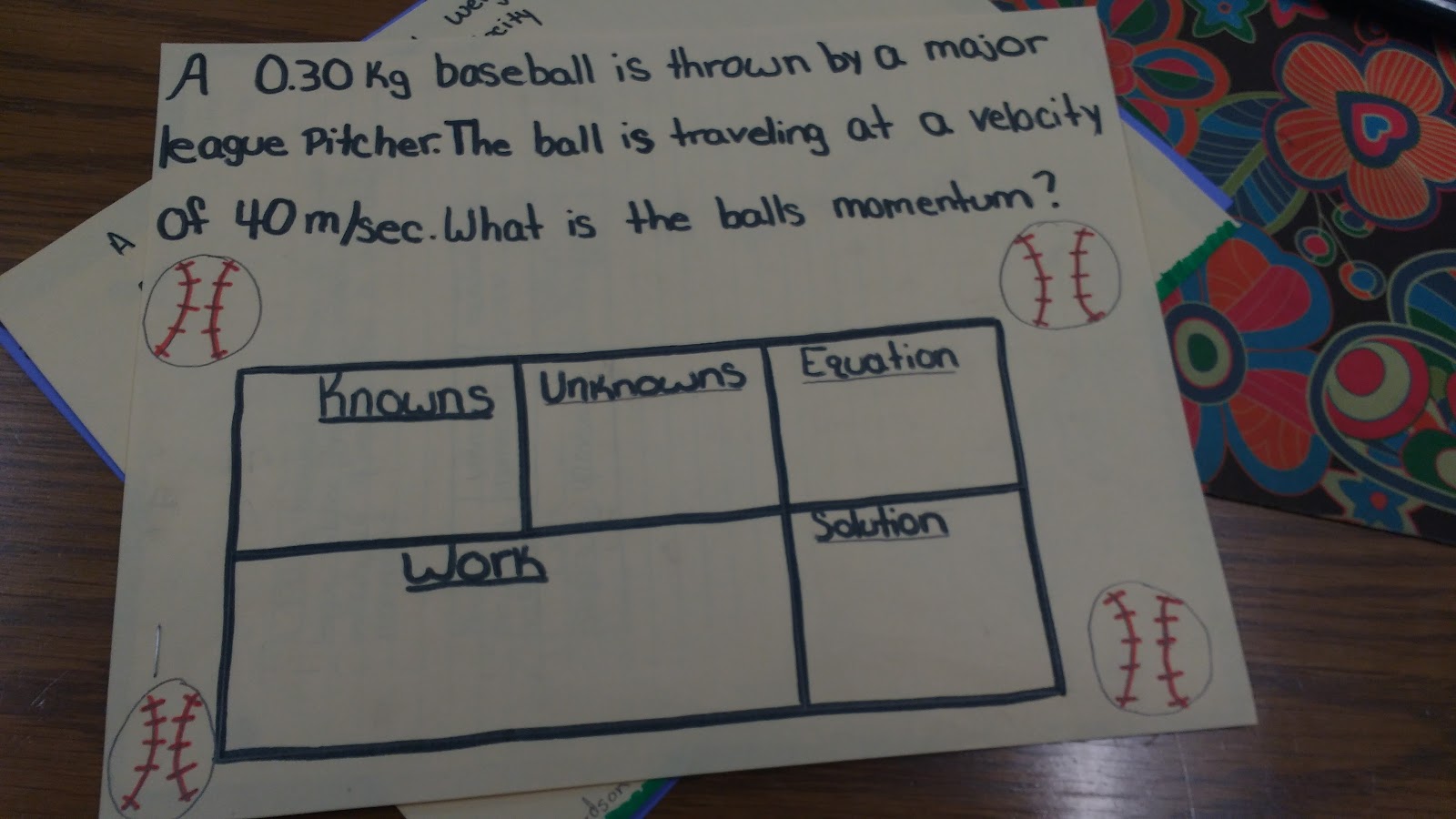
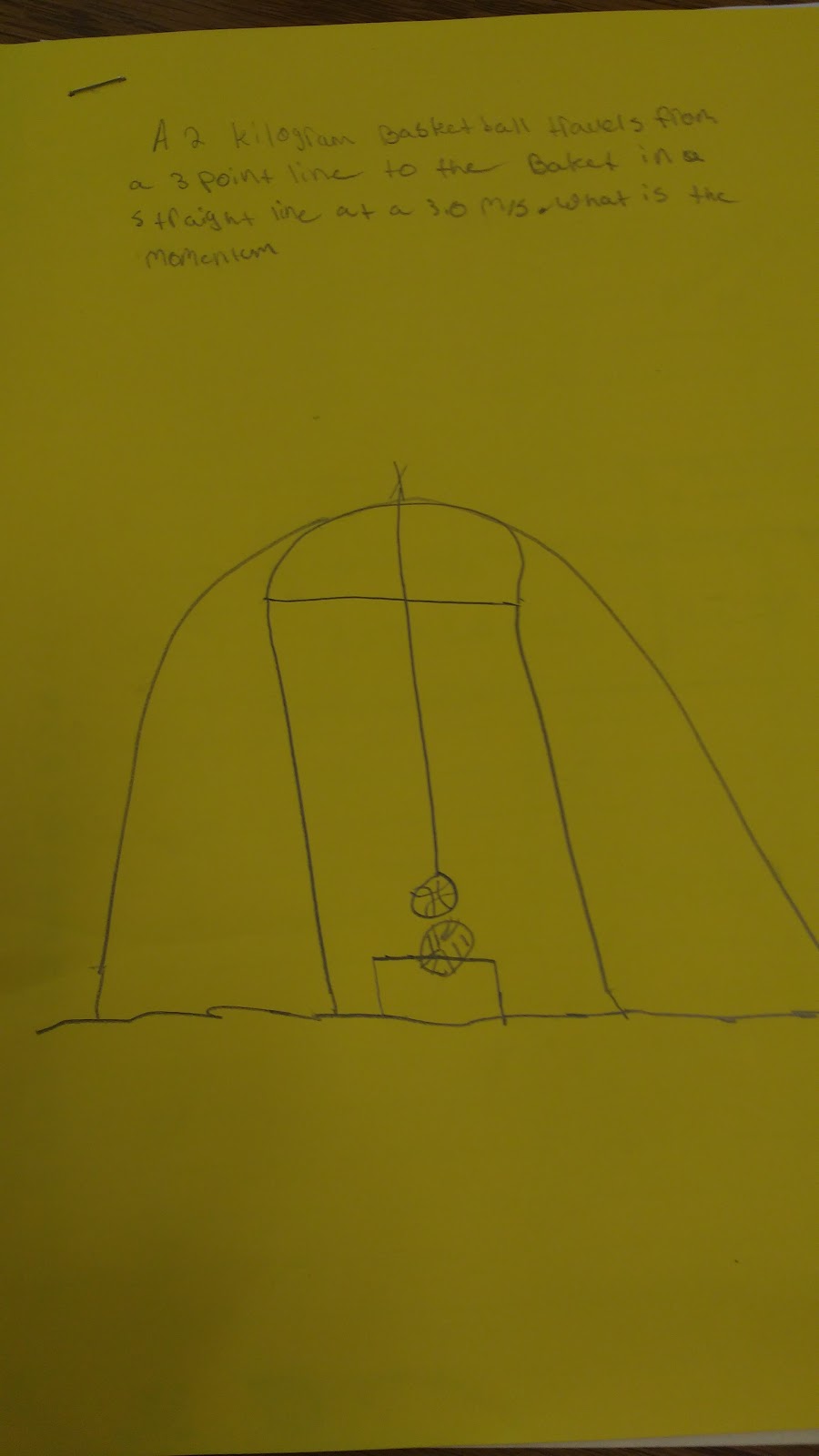

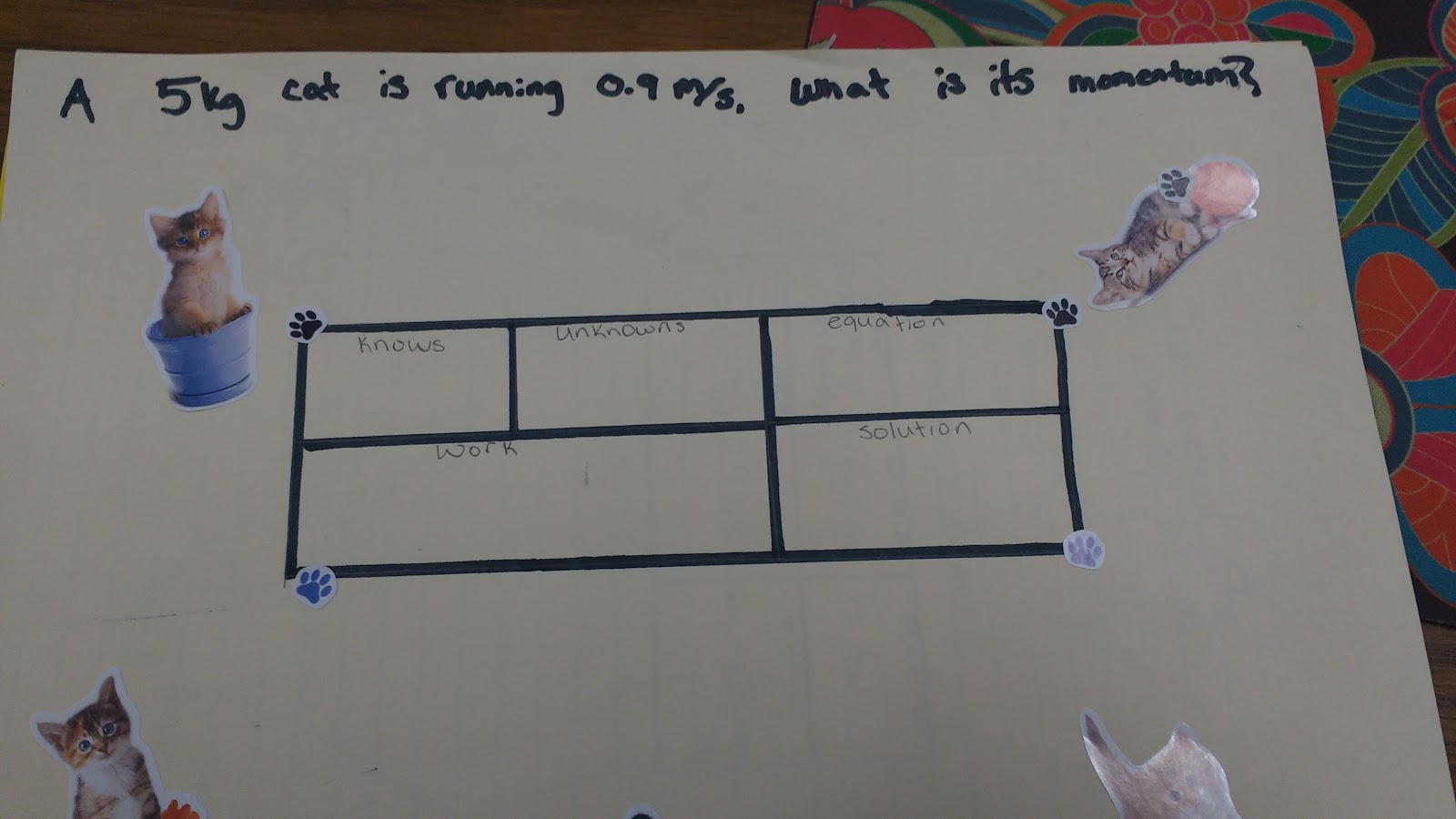
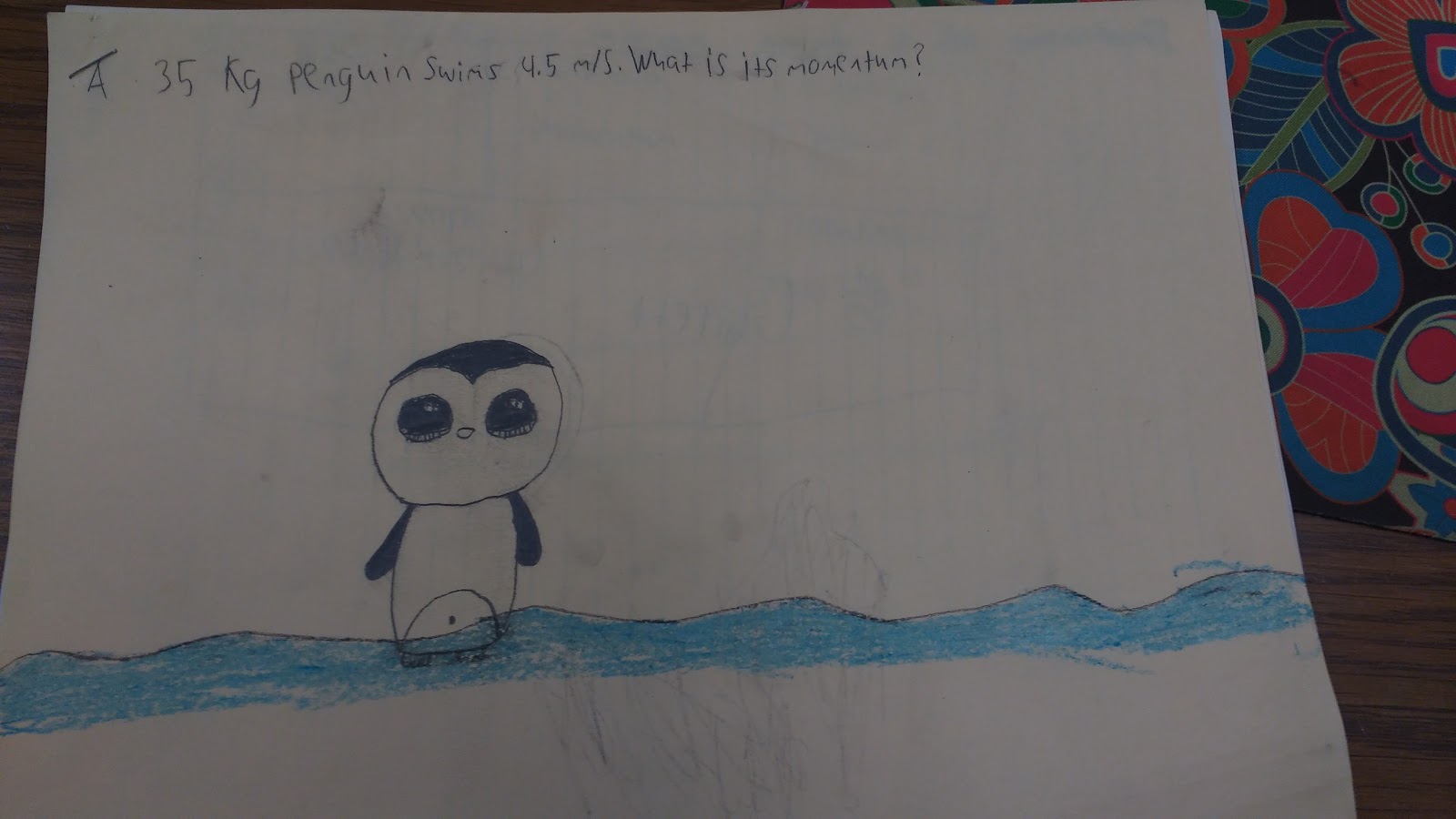
I look forward to improving this activity in the future if I continue teaching physical science. I’m taking my chemistry certification test on President’s Day, so I’ll hopefully be actually certified to teach physical science!
February 16, 2017 – Egg Drop Gallery Walk
Teaching a science class this year has me doing more projects than I’ve probably ever done in all my previous years as a math teacher. Setting up projects in an effective way has been a definite learning curve.

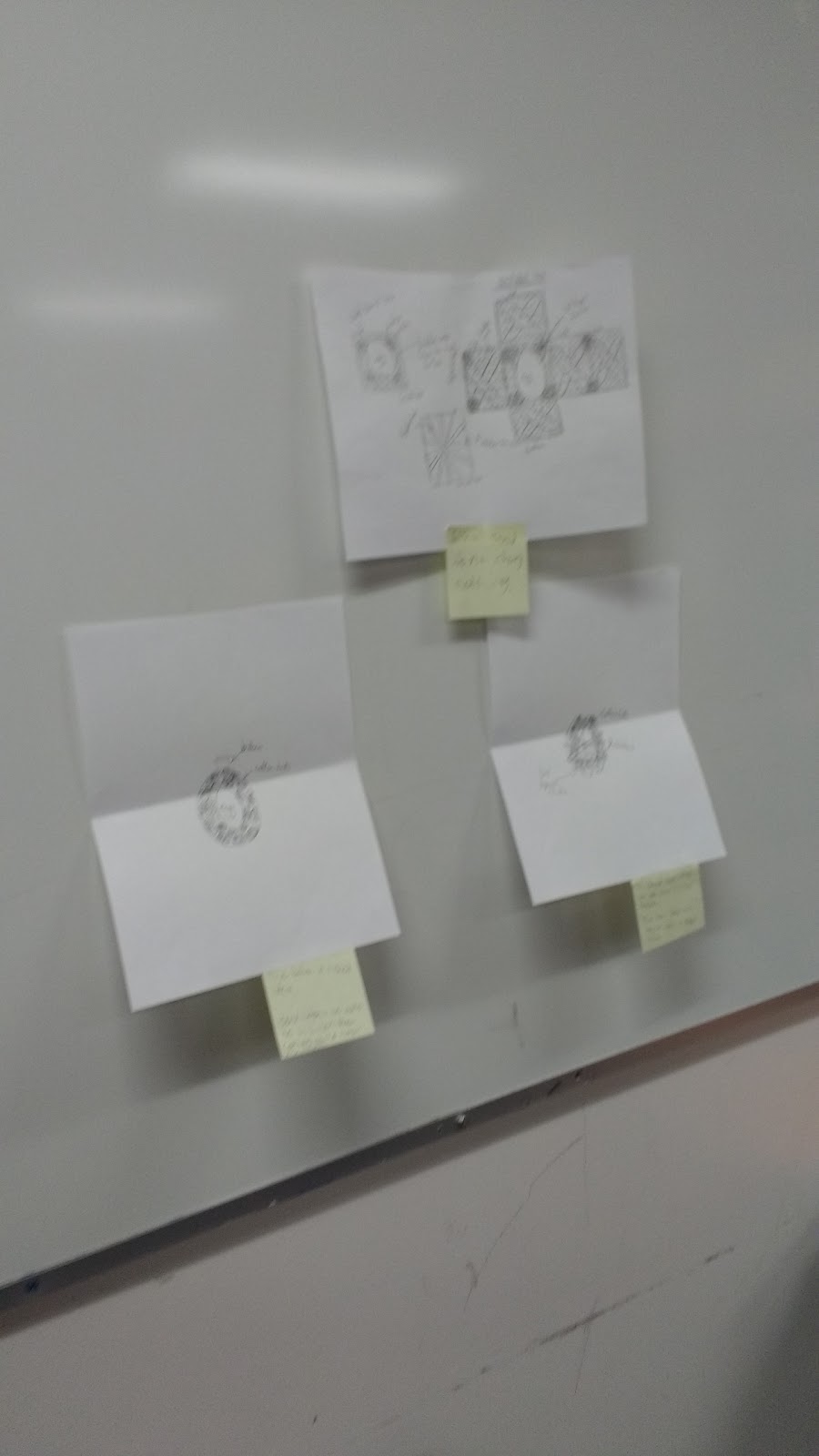
This week, my students have been working on designing egg drop devices. I had students break into pairs and brainstorm three possible designs given a list of allowed materials and project constraints. They had to draw a picture of each design and label all of the components.
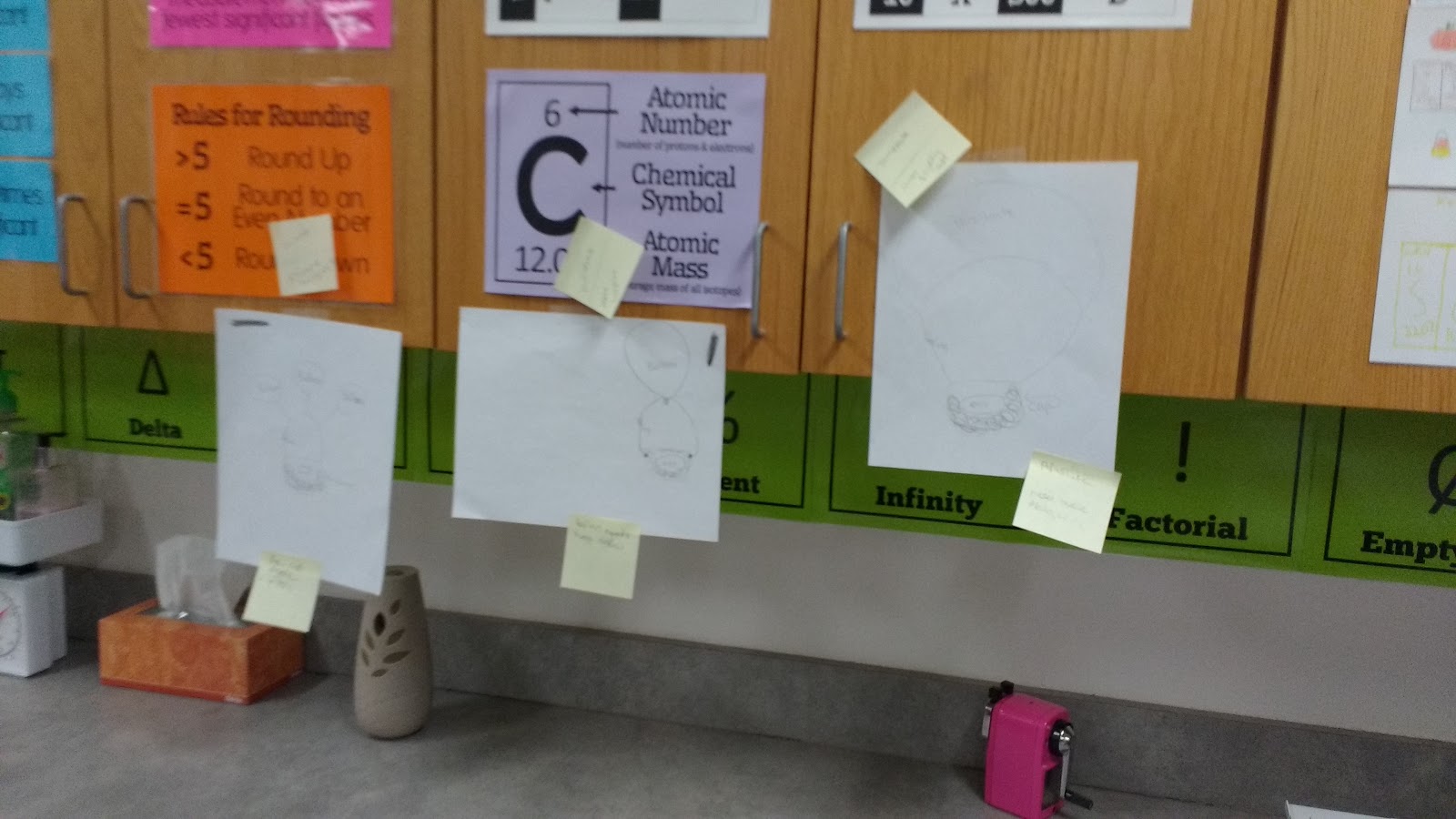
The next day, I posted these designs around the room. Each pair of students was given a pad of sticky notes to use to comment on each design. Students had to share an aspect of the design they liked and a suggestion for improving each design. This was my first time ever implementing a gallery walk in my classroom.
I bought a bulk pack of sticky notes a few years ago, and they come in super-handy for an activity like this!
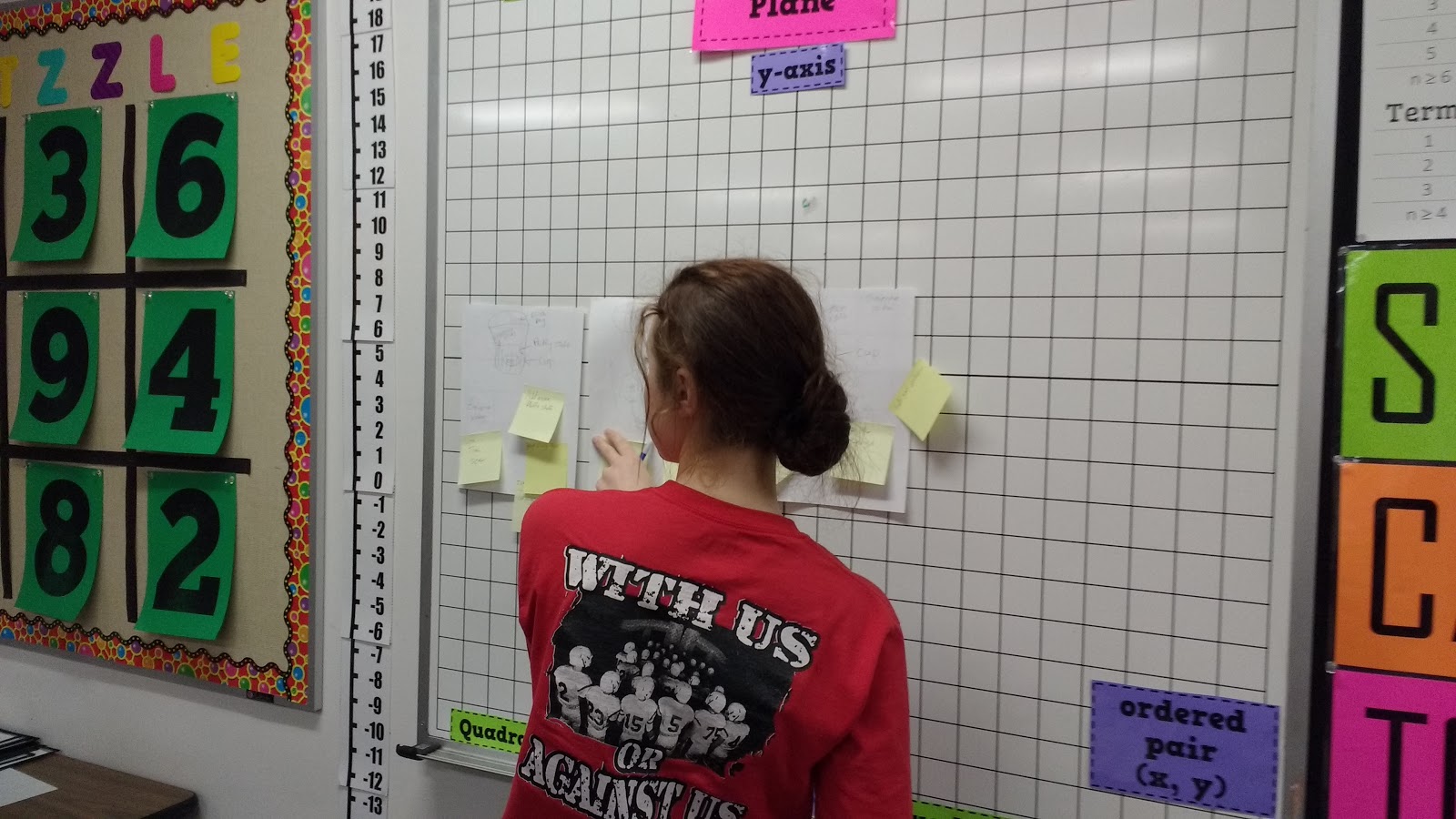
This ended up working really well. Students were giving thoughtful suggestions to help the other groups improve their designs.
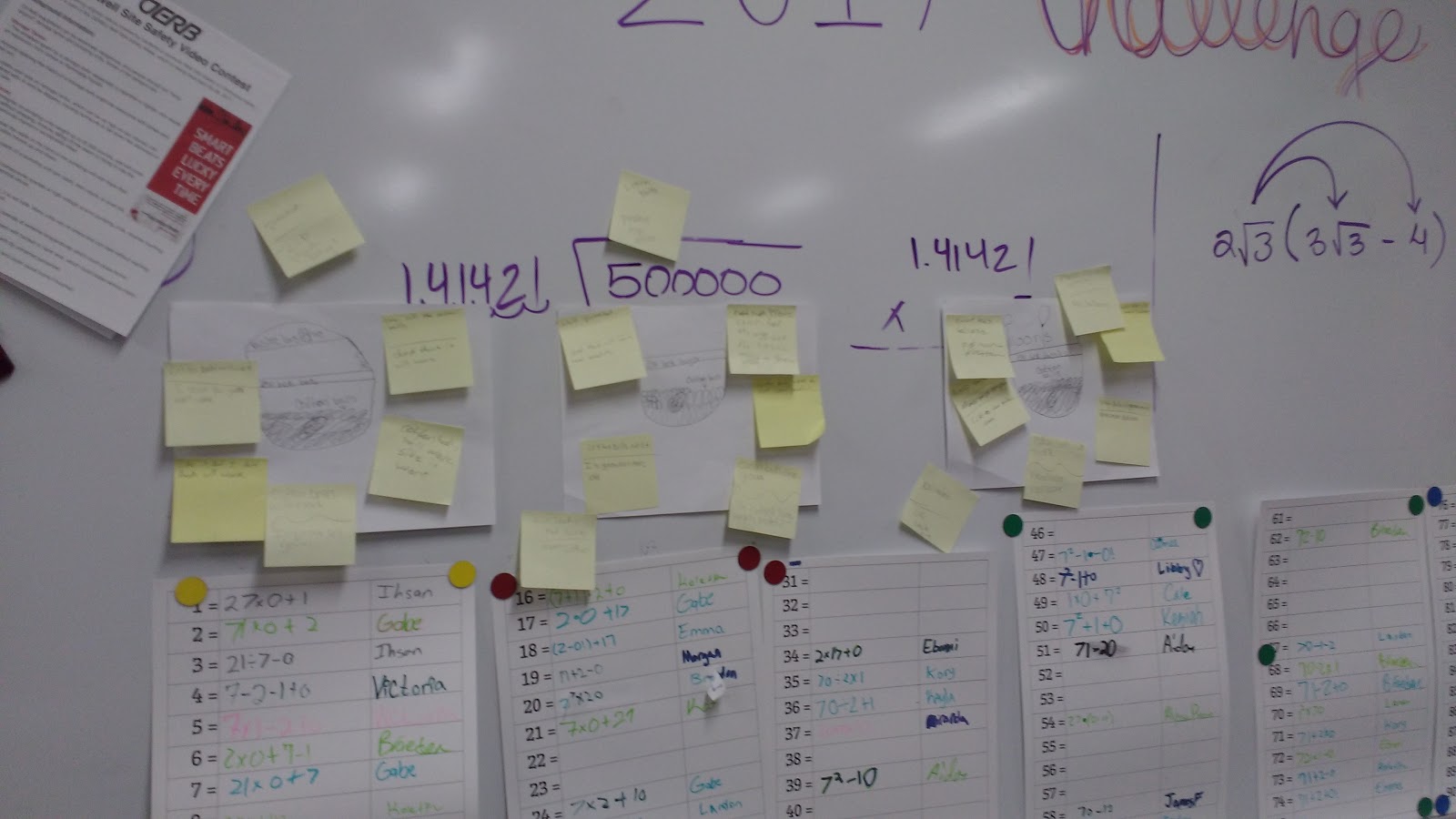
Some groups were hesitant to participate because they thought this would lead to the other groups stealing their ideas.

10 minutes after launching this activity, I had an idea that I really wish I had had 10 minutes BEFORE launching the activity. Since each group had made three designs, I wish I had told the groups to rank the designs from 1 to 3 on their sticky notes in addition to giving written feedback.

When students were done rotating, they got their designs off the wall and read the feedback from their peers.

Each pair had to decide which design they would be building from the three potential designs they had come up with. Then, students had to finalize their plans for the design.
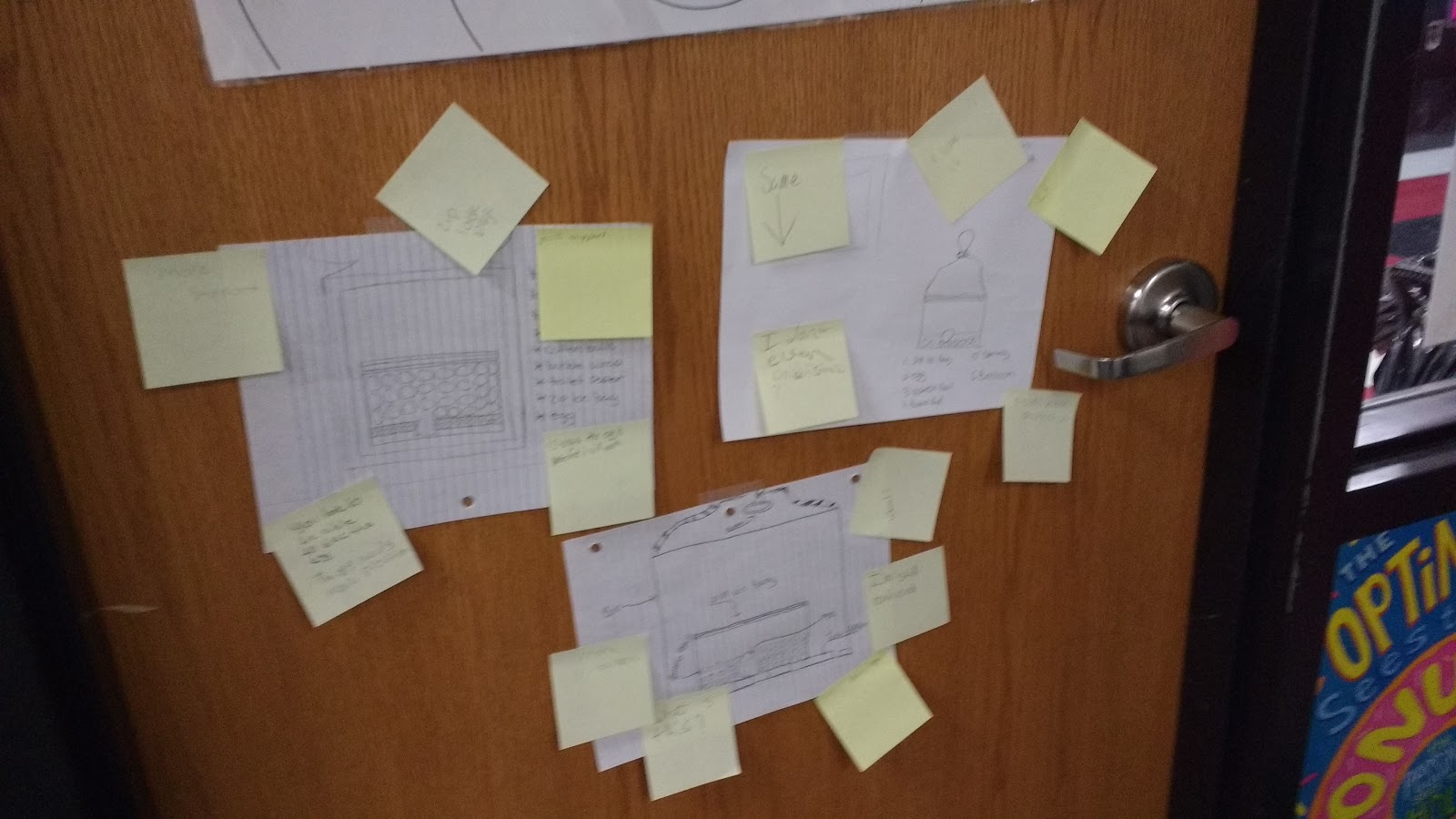
I asked each student pair to write a paragraph describing their final design. Then, they had to describe how they had used the feedback from other groups to refine their designs.
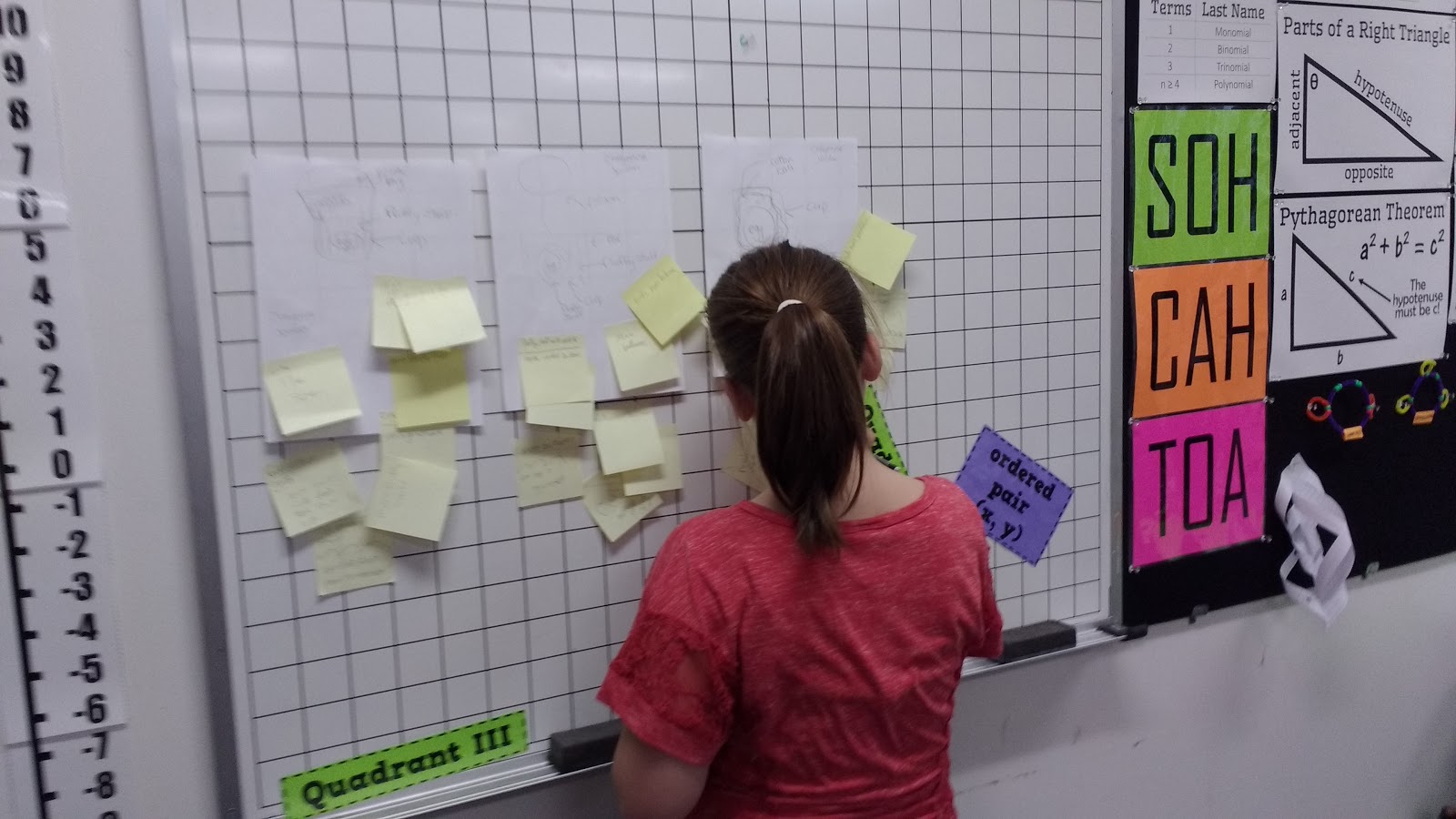
I hope I structured this project in such a way to make my students think critically about their designs. I guess we’ll see how the egg drop goes tomorrow!
February 20, 2017 – Lock-Down
I started this blog post on Friday, but exhaustion won over finishing this post. Friday started out as a normal school day. First hour, my Algebra 1 students took a quiz over dividing radicals. Then, we started one of my favorite units of the year: polynomials.
Second hour, we had our much anticipated egg drop. It didn’t go exactly as planned, but we made it work. It turns out that if you don’t drop the eggs on concrete that ALL of the eggs survive. Lesson learned!
Third hour, my math concepts students began to work on divisibility rules. This was going kinda well. The kids were getting a bit frustrated, but I’m not sure if it was the divisibility rules causing the trouble or the worksheet I had chosen.
Then, everything changed when a student brought something to my desk to ask what it was. She had found it laying on the floor under the table. It was a bullet. Or, at least I thought it was a bullet. A few of my other students gathered around my desk, and we each took turns looking at it trying to figure out if it was really a bullet.
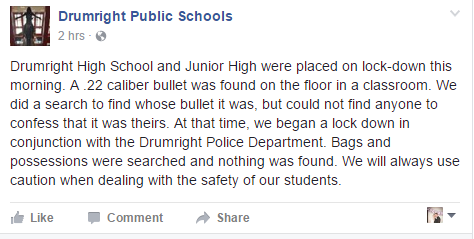
Once I was 99% sure it was a bullet, I left my classroom in search of the principal. As I was walking out the door of my classroom, one of my kids started to freak that his fingerprints were now on the bullet. He begged me to wipe off his fingerprints before I turned it in.
I found my principal after a bit of searching, and he confirmed that it was a .22 caliber bullet. This was third hour, and my room had been vacuumed during seventh period the previous day. This meant that the bullet must belong to one of the students in my first hour or second hour.
After questioning each student in my first two classes of the day, the principal announced that if the owner of the bullet did not come forward that we would have to go on lock-down and get the police involved.
Nobody came forward, so we did end up going on lock-down. Students were not allowed to leave the classroom they were in until the lock-down was over. This is the type of thing they don’t teach you to deal with in college. How do you comfort students when they are expressing their fears that there could be a school shooting?
We remained on lock-down while the police went from room to room searching each each students’ bag and pockets. This meant that our middle school students missed their lunch period. Our high school students missed the first half or so of their lunch period. Students were given an extended lunch period which ended up throwing off our class right after lunch.
I am thankful that my school took this event seriously. They put our safety before everything else,
I’m especially thankful for this three day weekend to recover from the exhaustion of a day spent on lock-down. It’s an experience I hope I never have to go through again.
March 4, 2017 – Energy Flow Diagrams
My physical science students are currently studying the different types of energy. One of their in-class assignments was to draw an energy flow diagram for a specific scenario.

This mini-project was sort of thrown together at the last moment, so it has the potential to be so much better. It’s definitely on my list of “projects to flesh out” for next year’s physical science class. Of course, I’m not even sure if I am teaching physical science next year. I’m still waiting to hear if I passed my chemistry certification test that I took on President’s Day.
Here is what my students came up with.
Gun shooting a bullet:
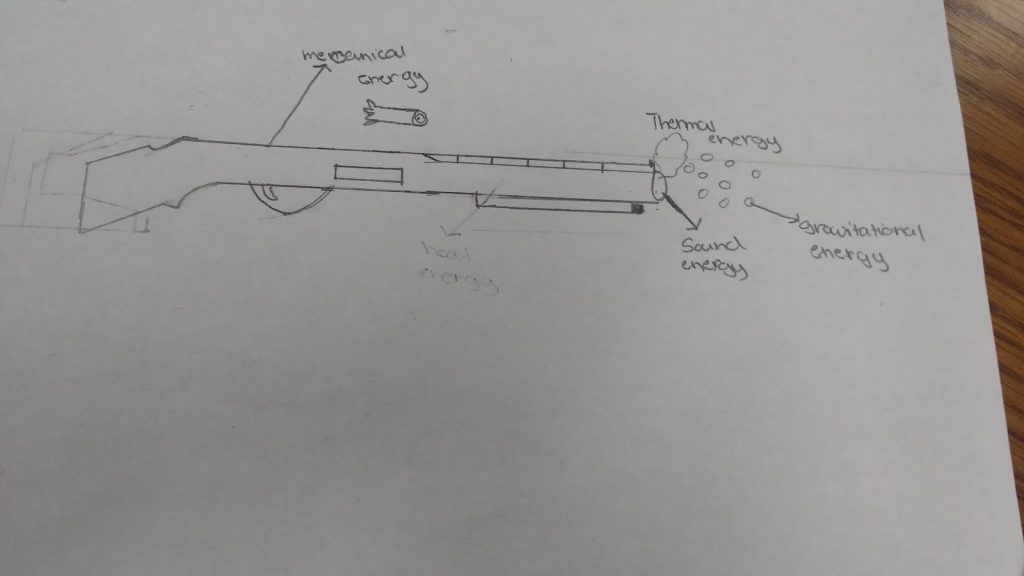
Match being struck:

Television:
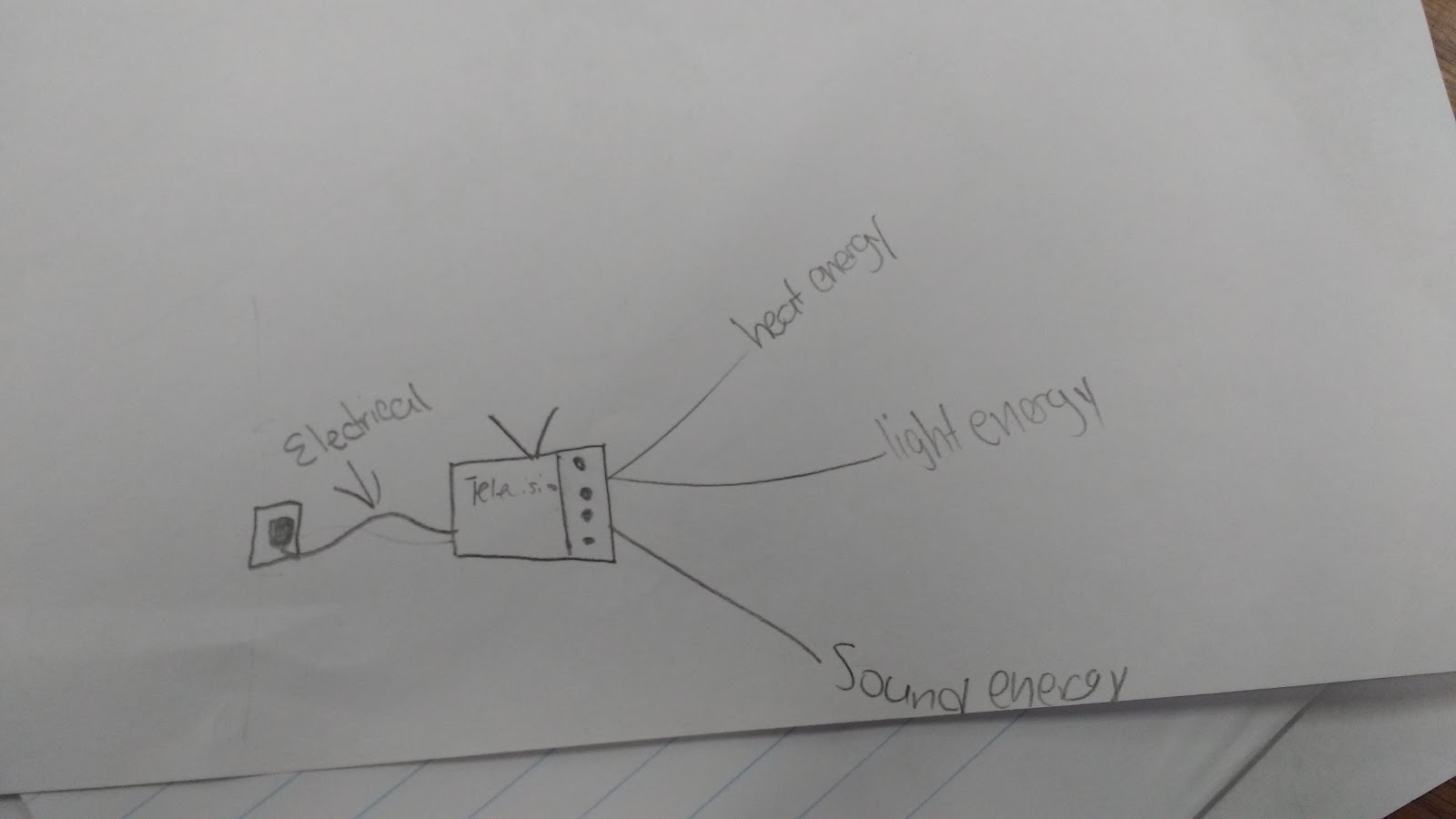
Shooting a Basketball:
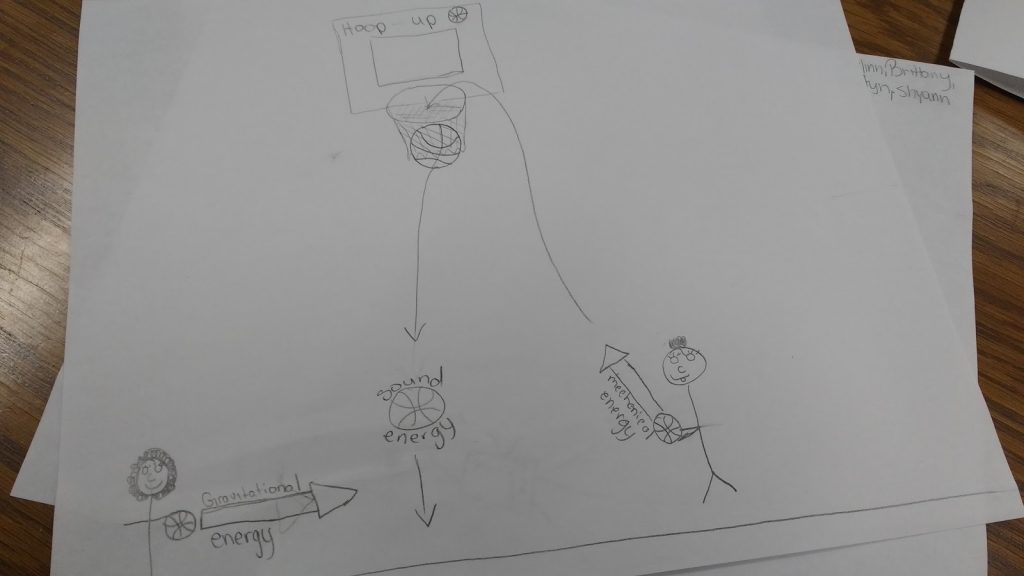
Laptop Computer:
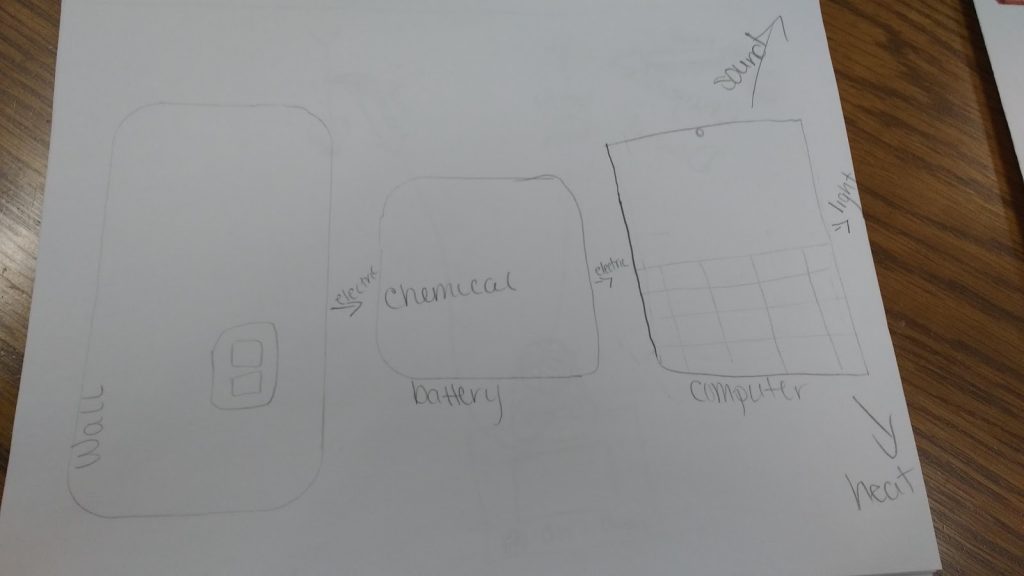
Electric knife slicing bread:
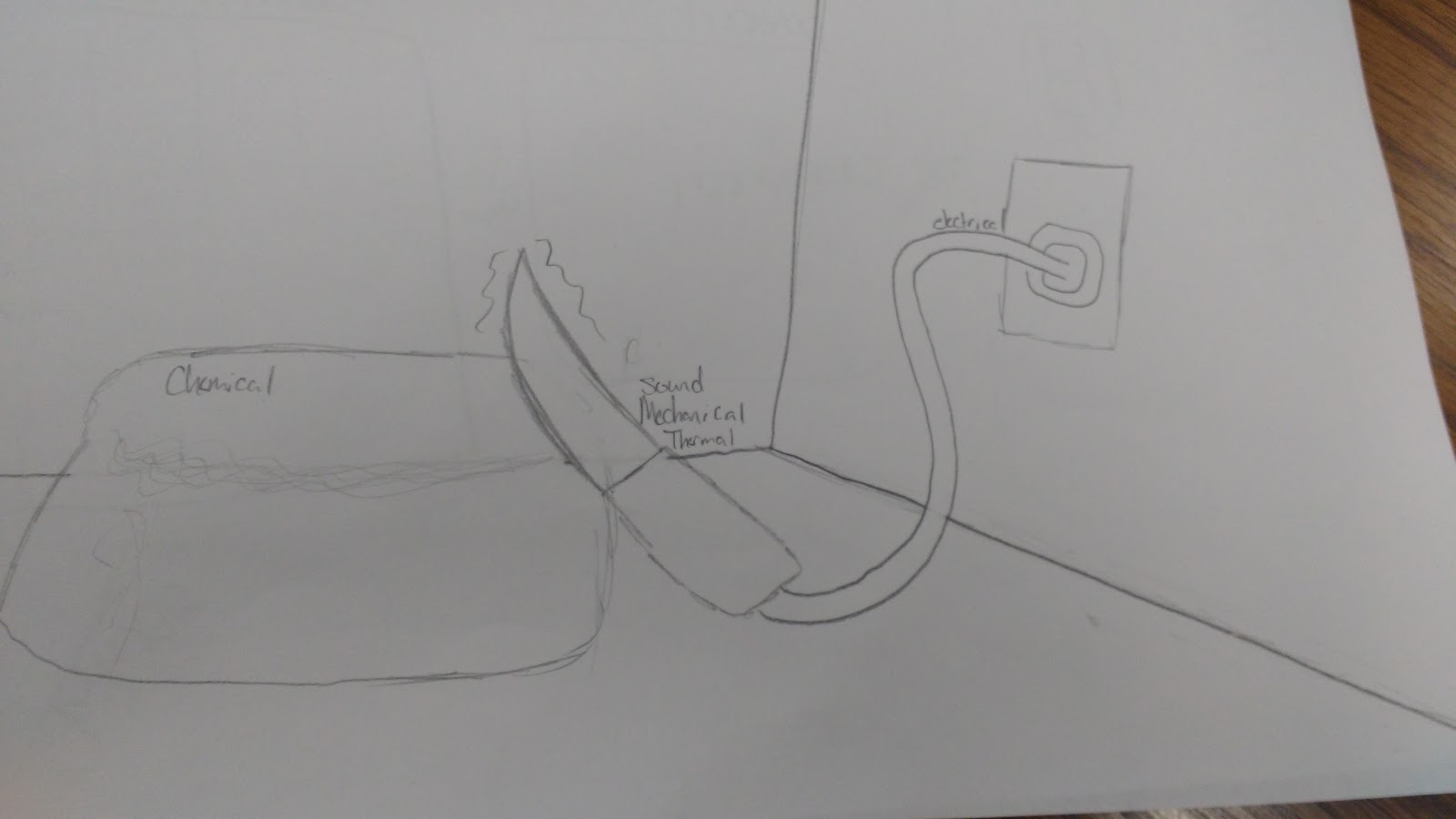
March 6, 2017 – Kicking Off Sequences in Algebra 1
My Algebra 1 students have just started their unit on sequences. This is my first time teaching sequences in Algebra 1 because it used to be in the old Algebra 2 standards. For the past four years, I have taught sequences and series in Algebra 2, but I feel like I need to take a different approach with my Algebra 1 students since we’re only doing sequences. We kicked off the section with a set of definitions and examples.
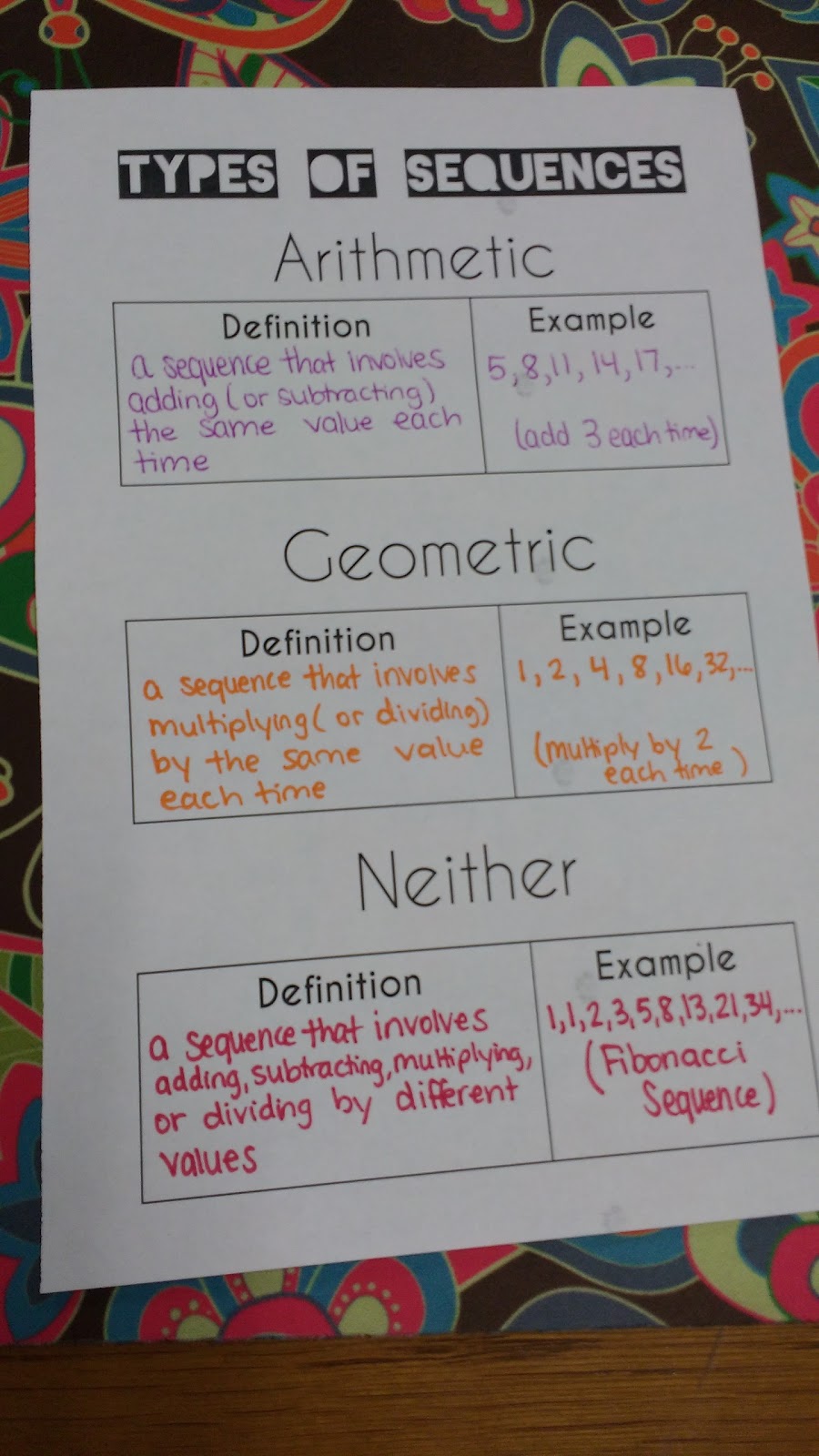
I took this as an opportunity to introduce my students to the Fibonacci sequence for the first time. We talked about the Fibonacci sequence on Friday. On Saturday, I was walking through the Science Museum of Oklahoma, and I saw the Fibonacci sequence in a display.
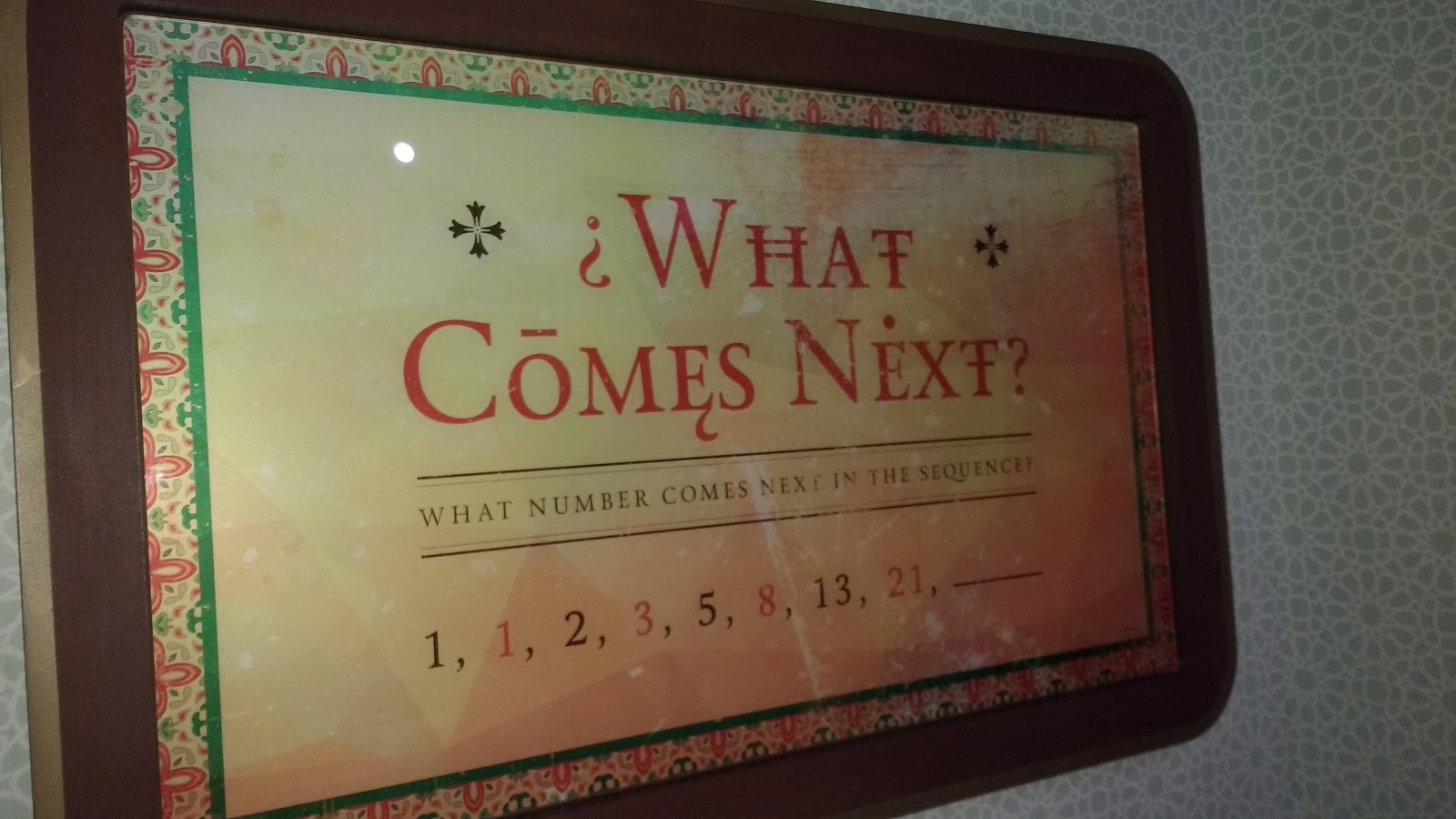
I took a picture to show my students because I’m not sure that they believed me when I told them how famous the sequence is.
Next, I gave my students 21 sequences. Students had to find the next term in each sequence. Then, they had to classify the sequence as arithmetic, geometric, or neither.

I was looking through the resources available from MathsPad, and I found this puzzle in their sequences section (subscription required for this specific resource). This puzzle has students find the next two terms in a sequence and classify the sequence as arithmetic, geometric, or Fibonacci. It was fun to have the Fibonacci Sequences in this puzzle since the practice sheet I made didn’t have any Fibonacci sequences.
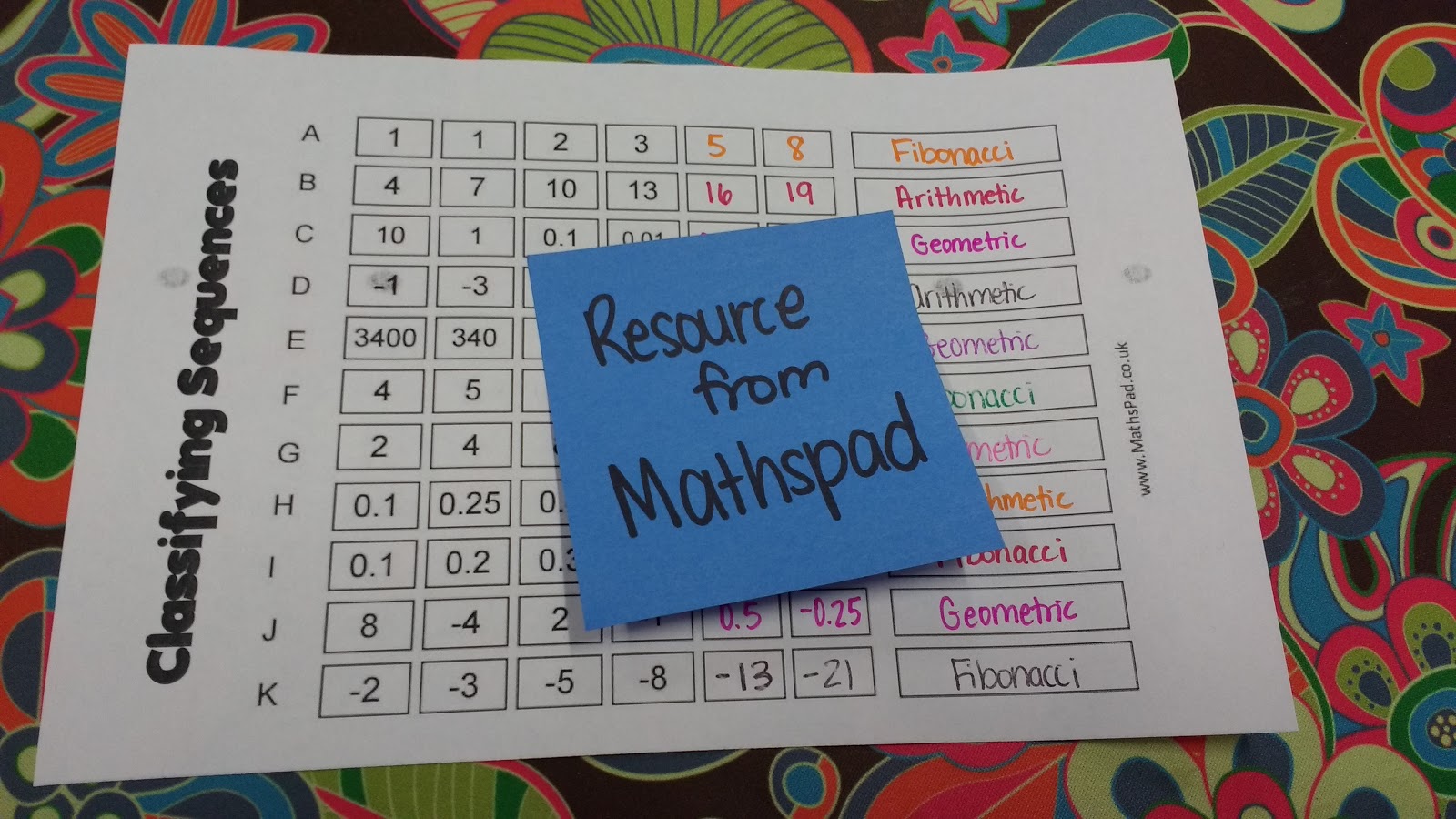
March 7, 2017 – Visiting the Science Museum of Oklahoma
Last weekend, I had a chance to visit the Science Museum of Oklahoma in Oklahoma City. I was attending a Steve Spangler Science Workshop (super awesome, by the way!), and we were given time at lunch and after the workshop to explore the museum. I remember visiting the museum as a kid when it was known as the “Omniplex.”
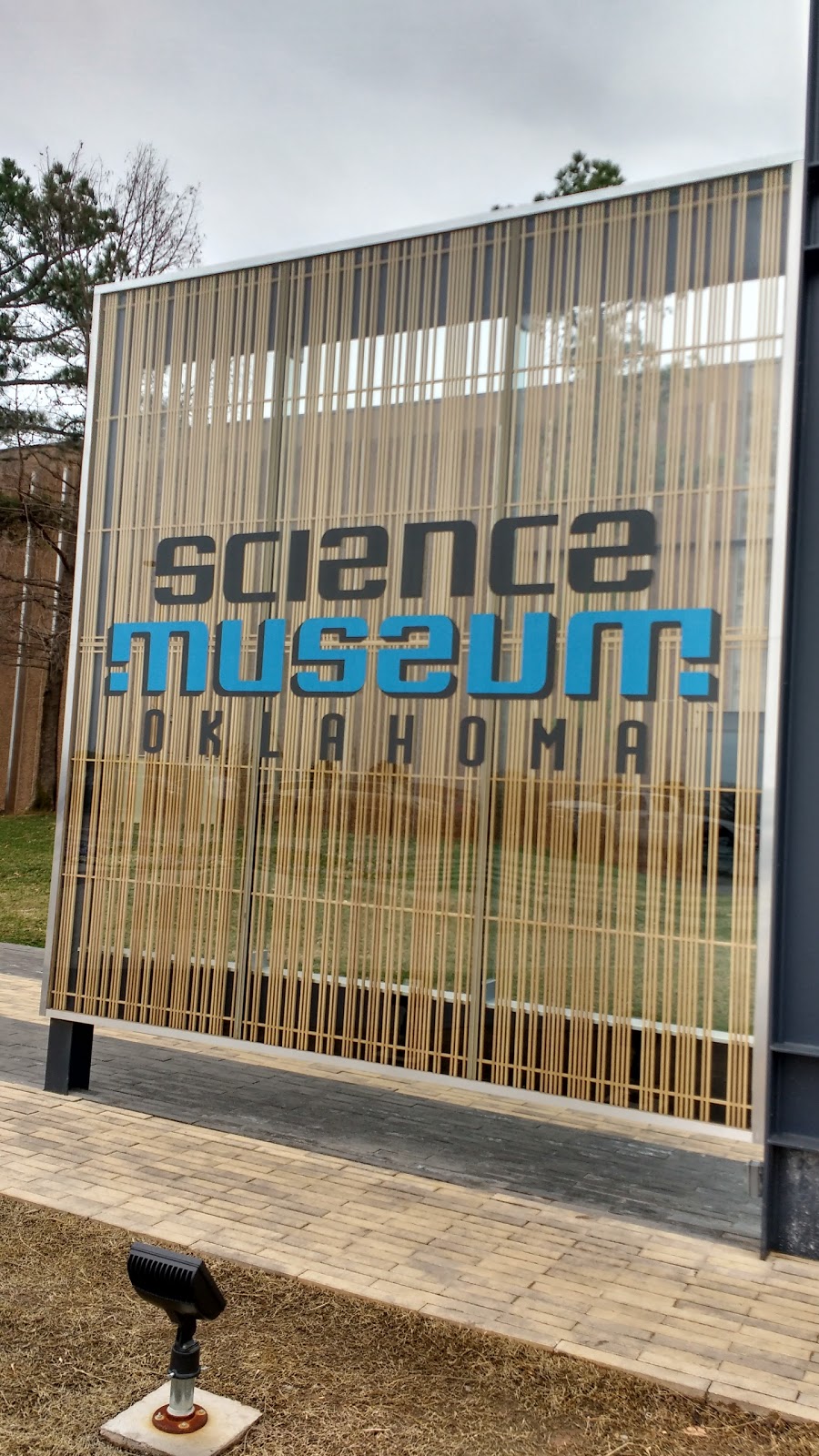
I took a few pictures of math-y things I saw in the museum, and I thought I would share them here.
I already shared this picture in my post about teaching sequences in Algebra 1. I introduced my students to the Fibonacci sequence in class, so I wanted to show them when I saw it in the *wild.*
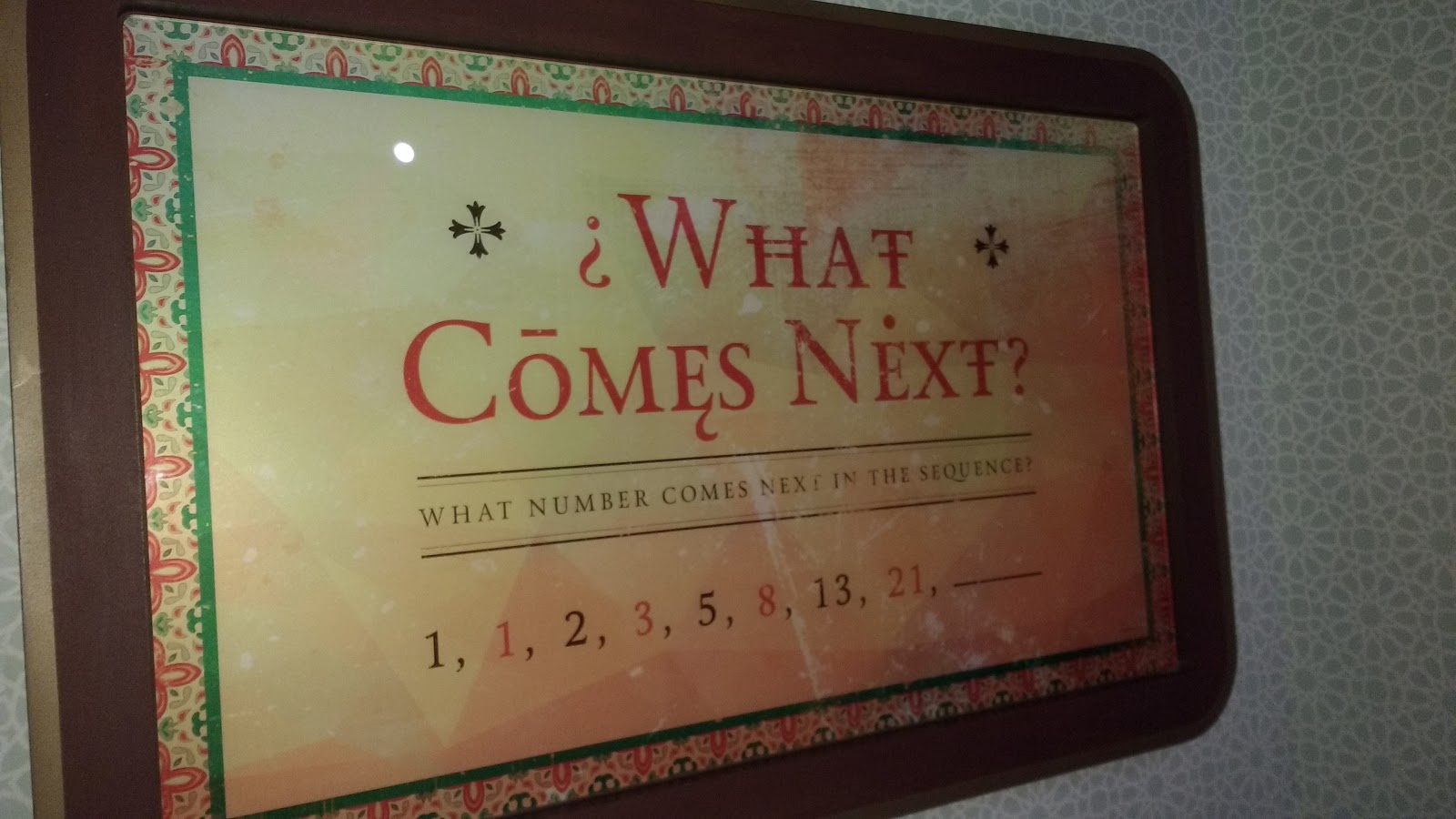
When I saw this speed limit sign with infinity printed on it, I had to take a picture.
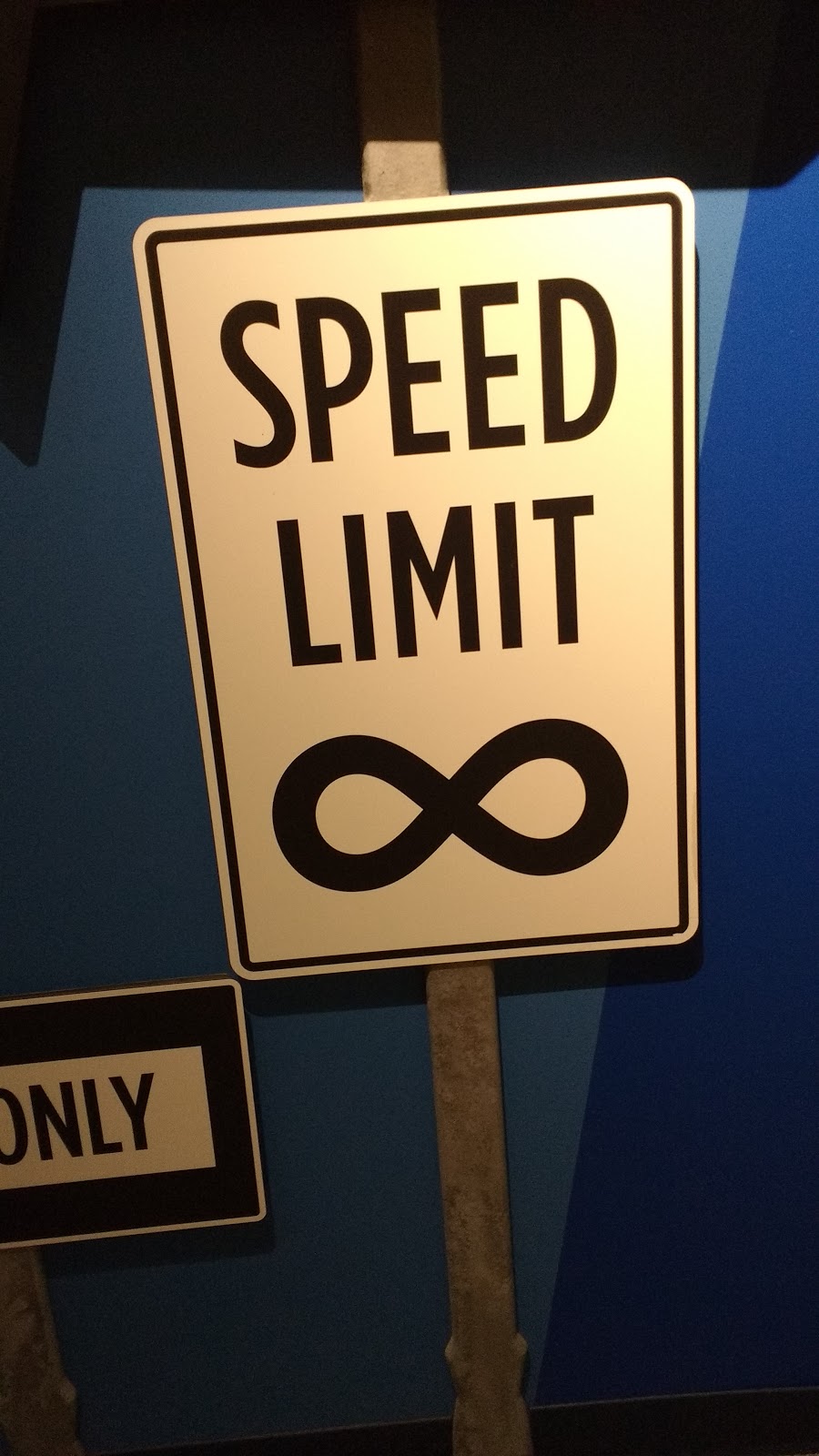
I even made my husband take a picture of me next to the sign.
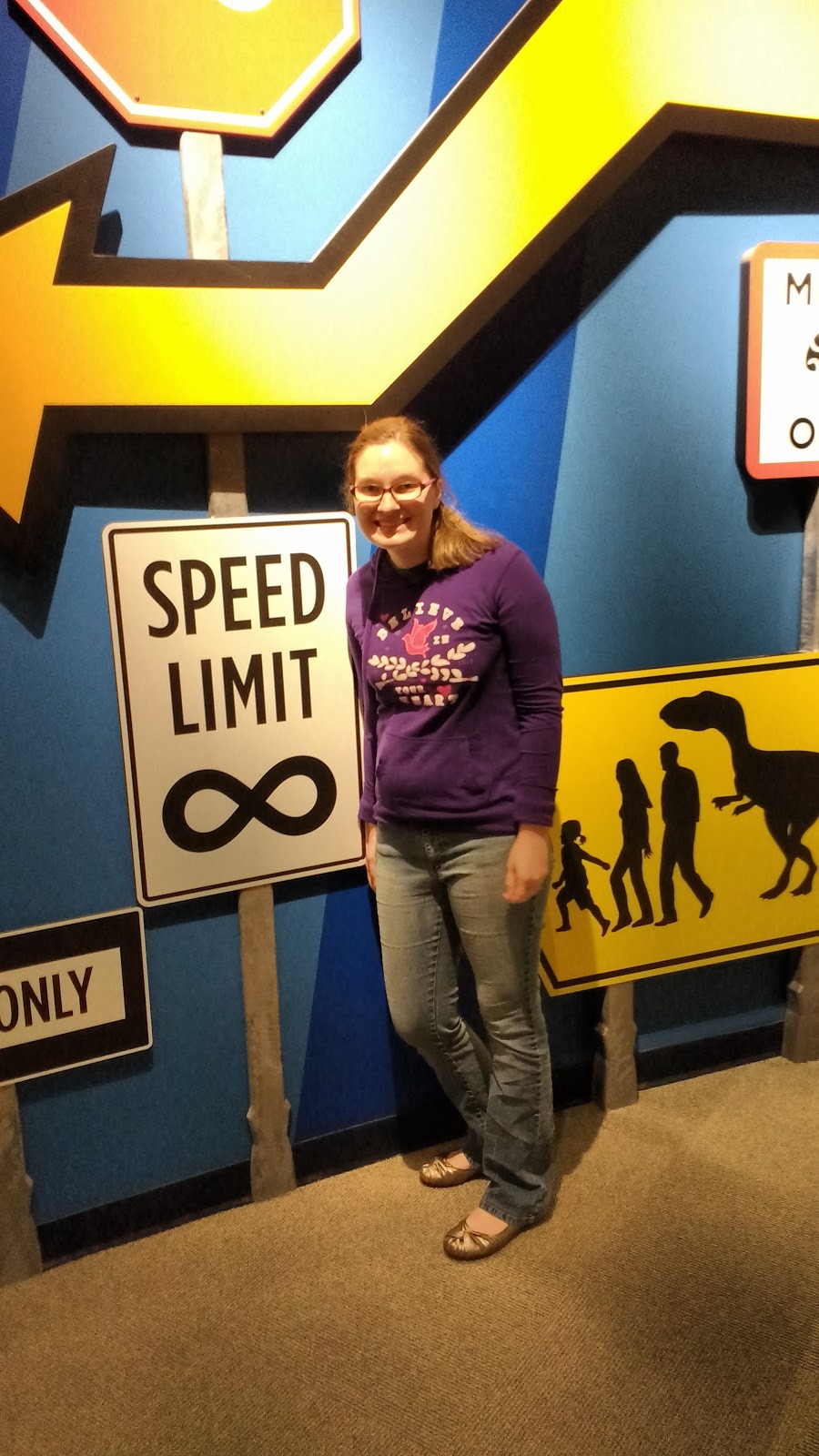
I used a robot arm to pick up one of these balls. It was much trickier than I expected!
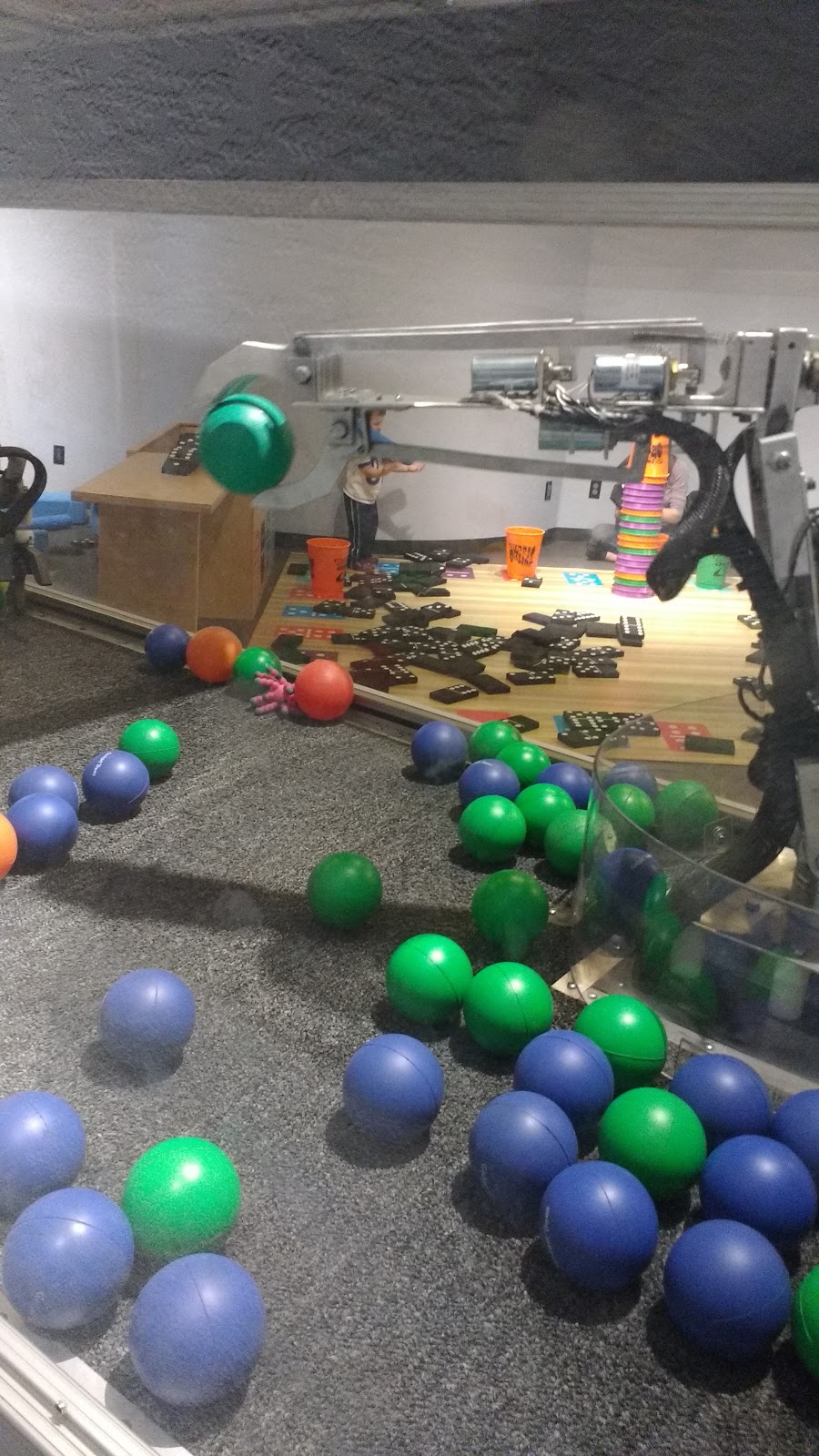
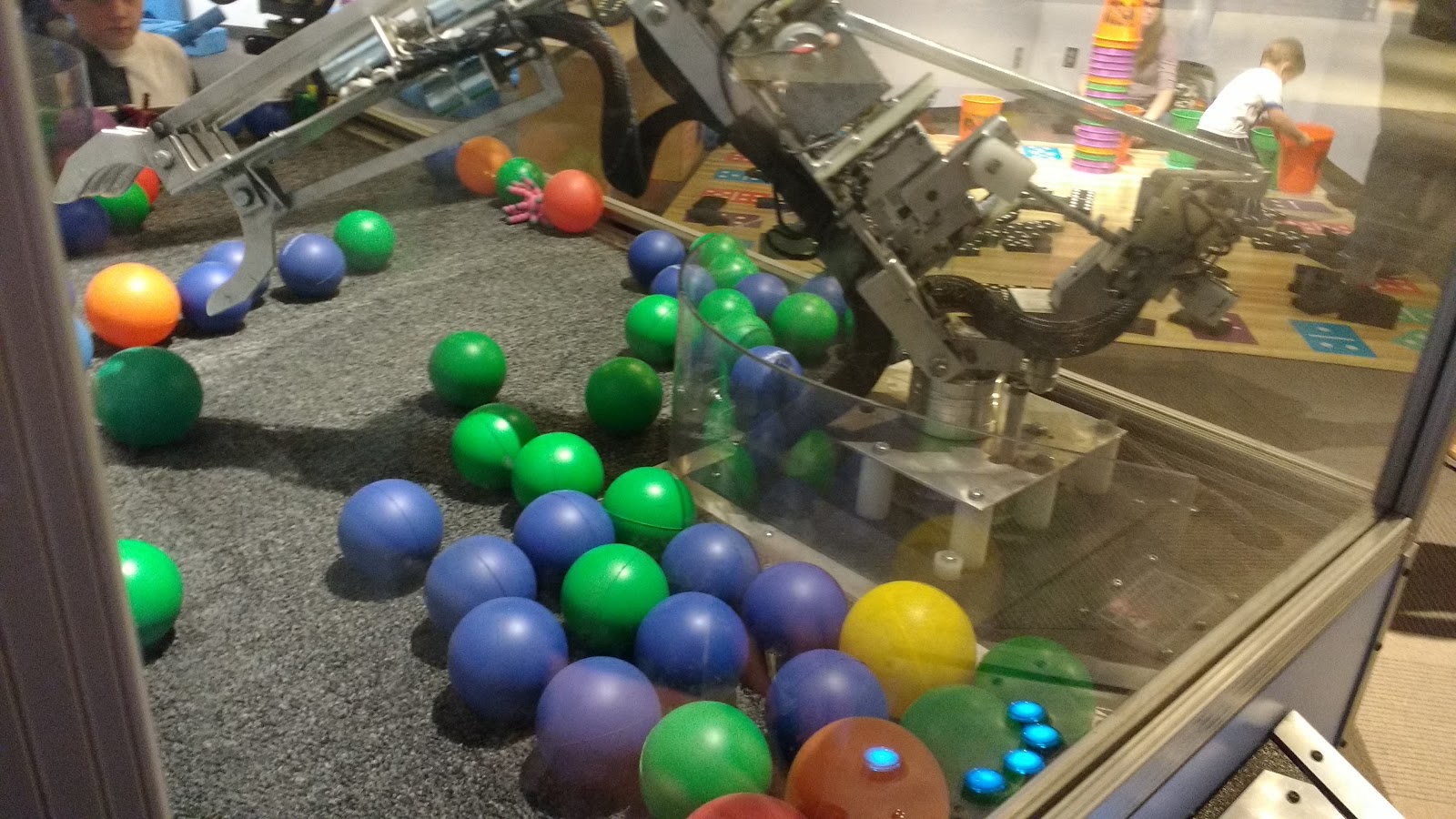
These giant dominoes caught my eye. How cool would it be to have a set in my classroom?!? I’m not sure what I would do with them, but I still think it would be awesome.
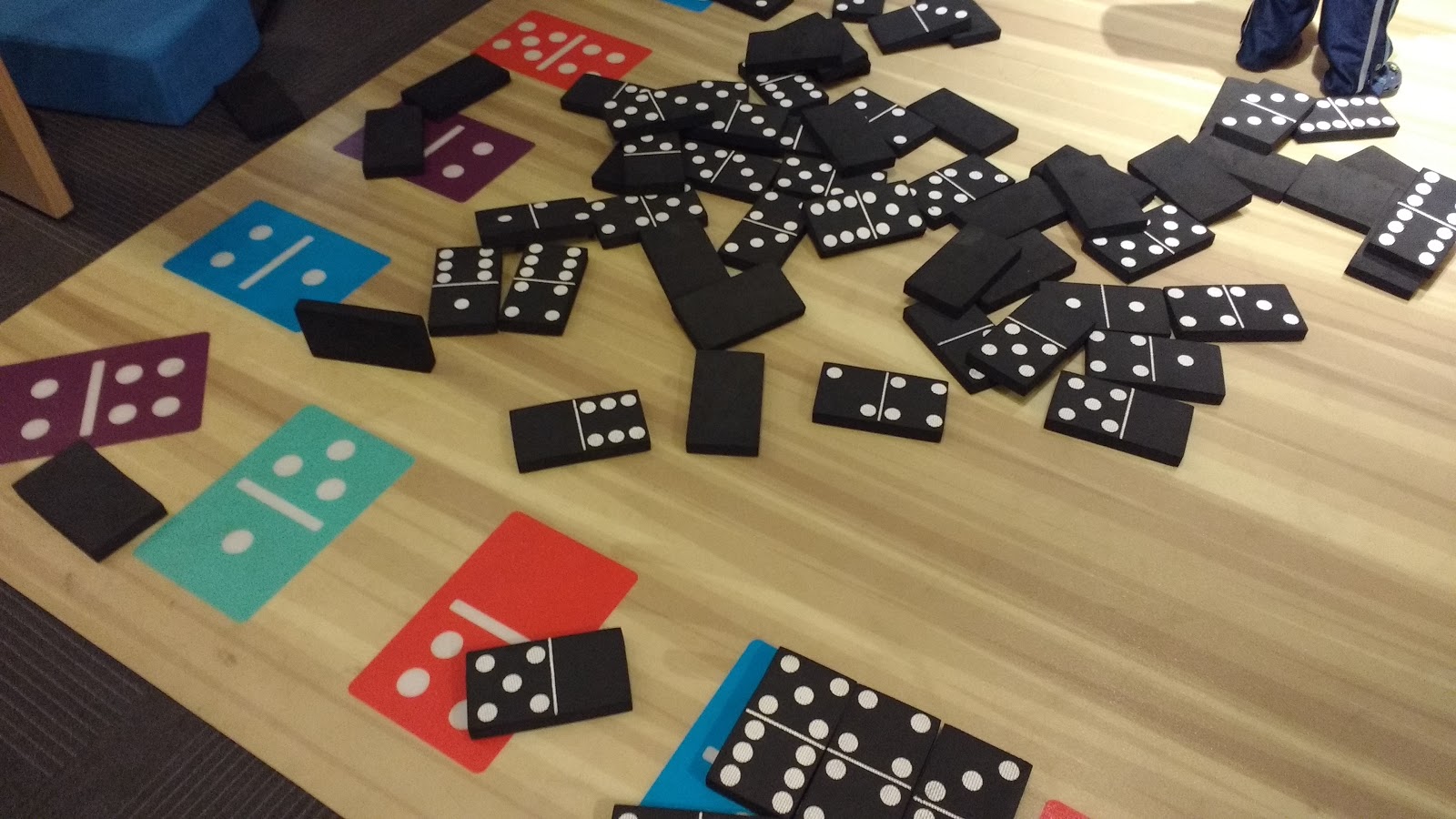
My husband had to take a turn at the robot arm, too.

The optical illusion room was super-cool.
Which red line is longer?
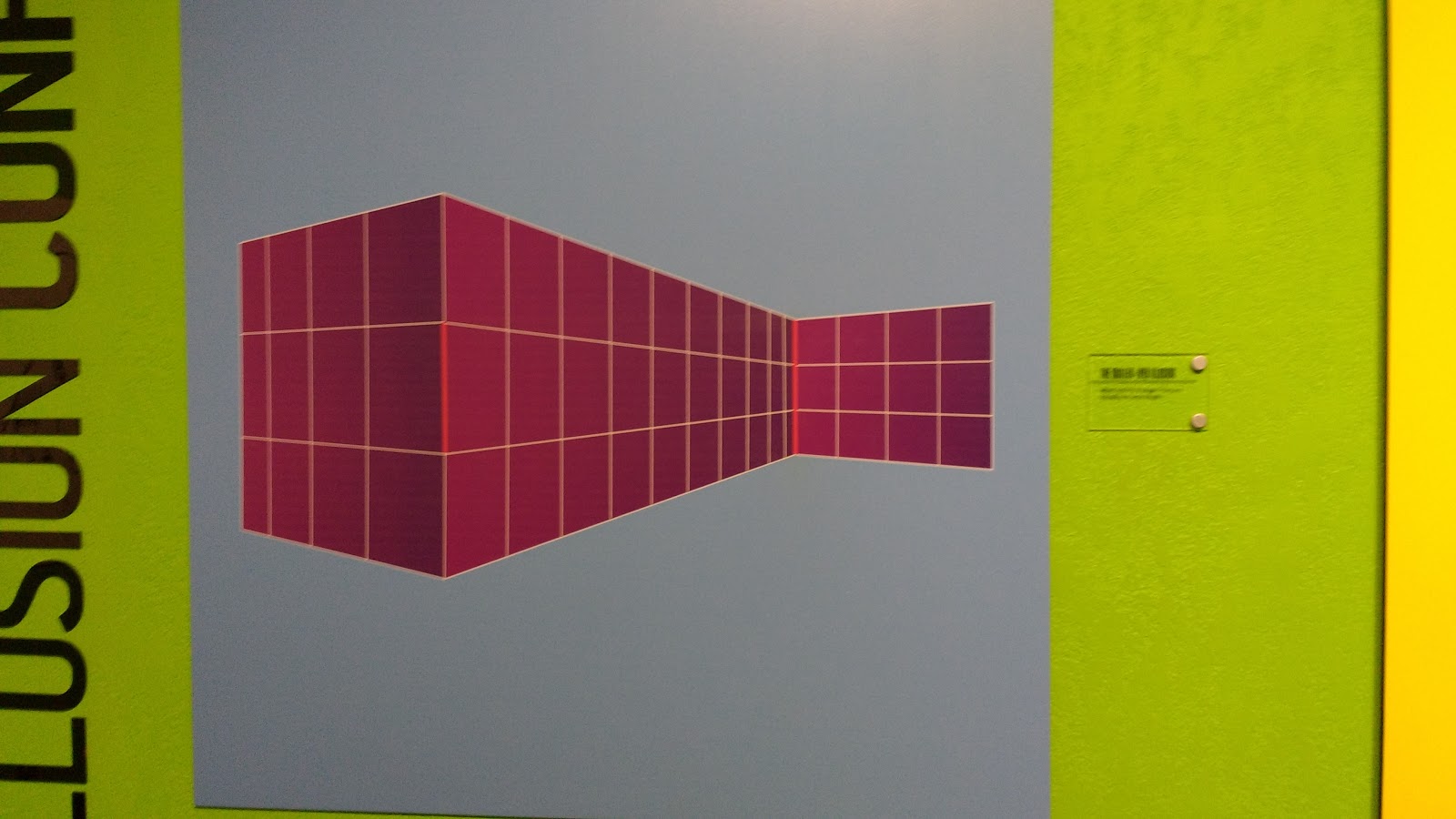

Can you find the hidden image?
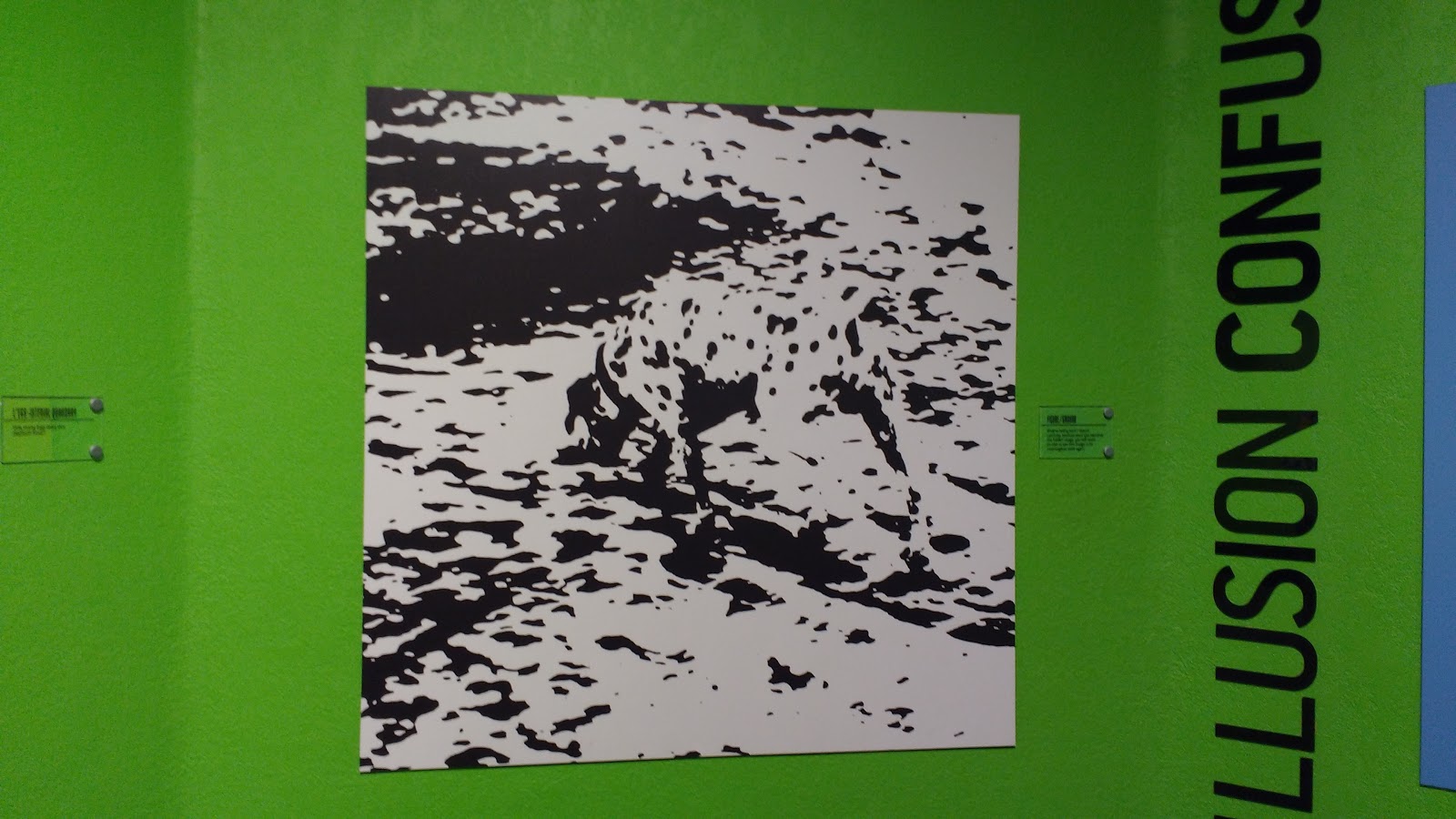
How many legs does the elephant have?

Which segment is the longest?

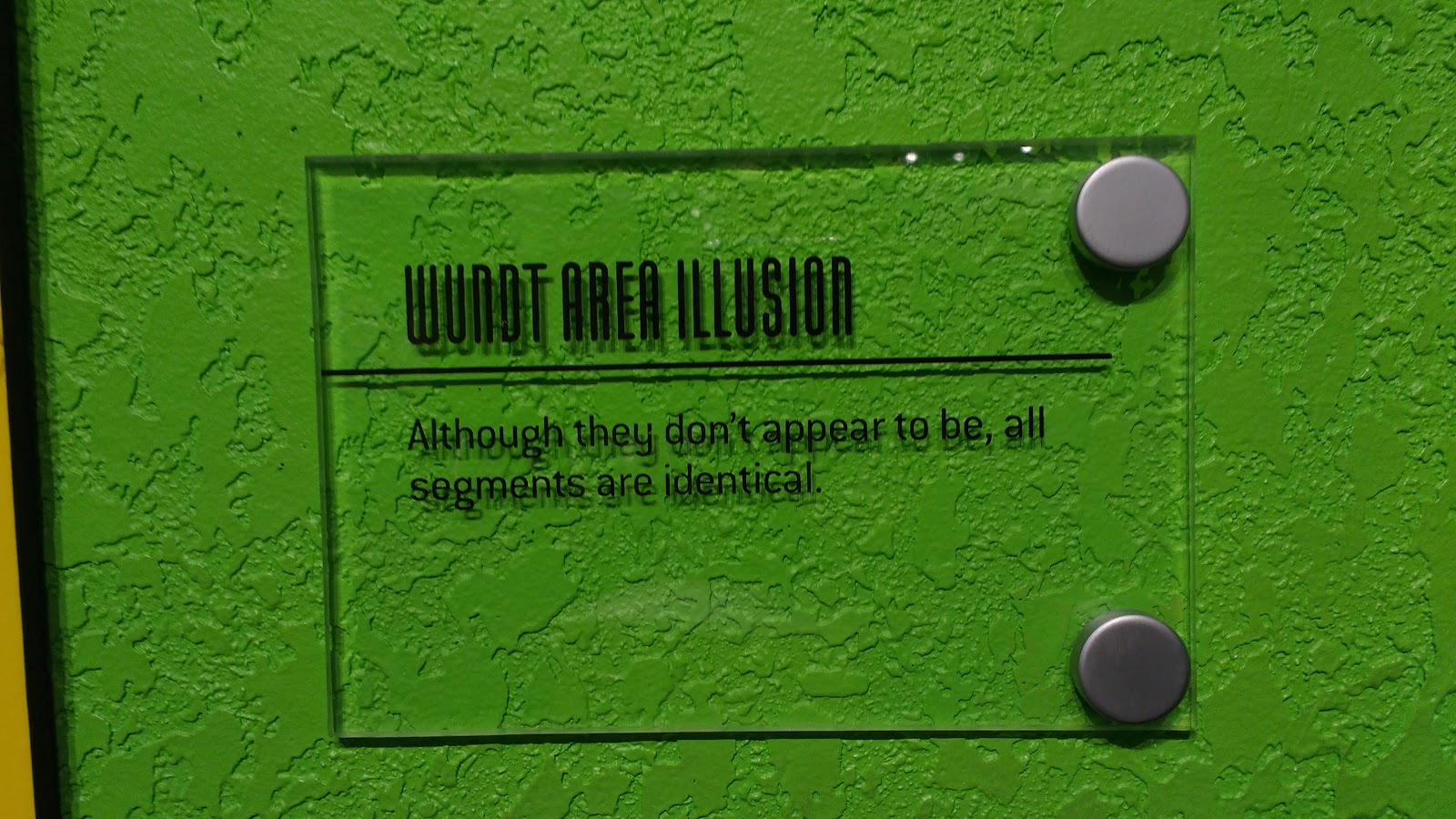
There was a super-long hallway with these optical illusions painted on it. I decided that these would make awesome classroom decor!
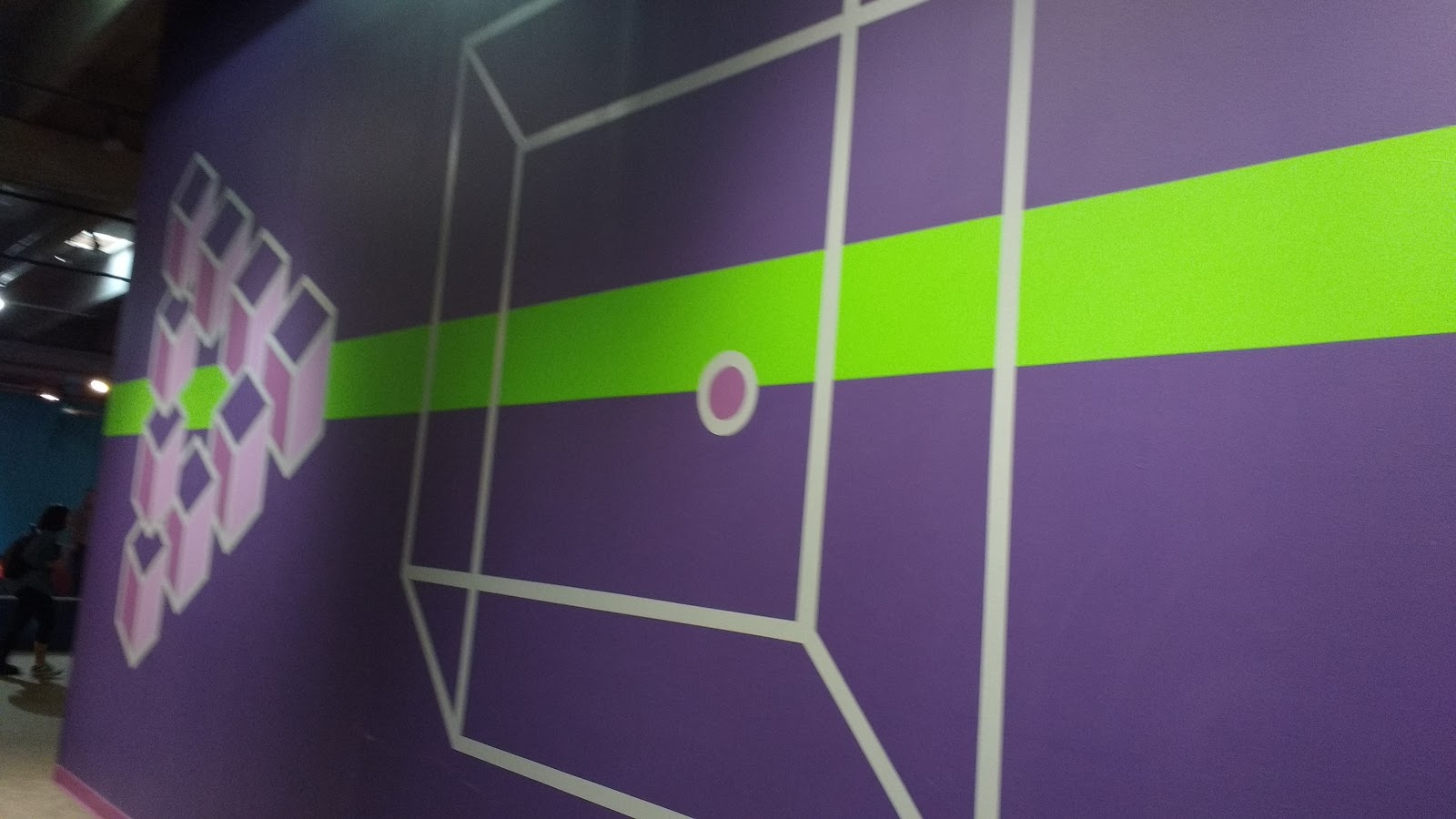


I found the tile in the bathroom to be in a very interesting design. My husband tells me it’s super-weird to take a picture of the tile in the bathroom…
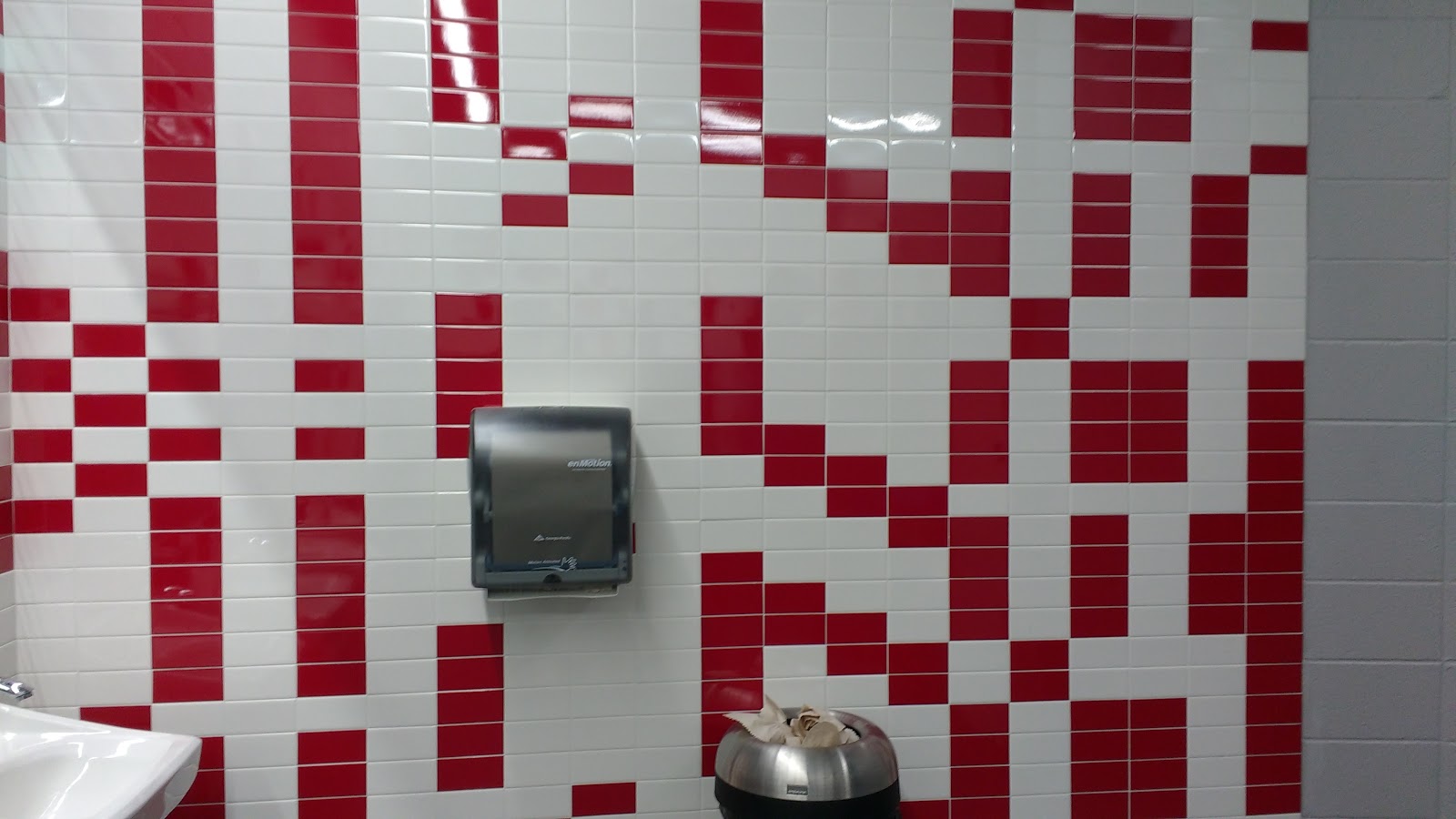
I love this bicycle statue.
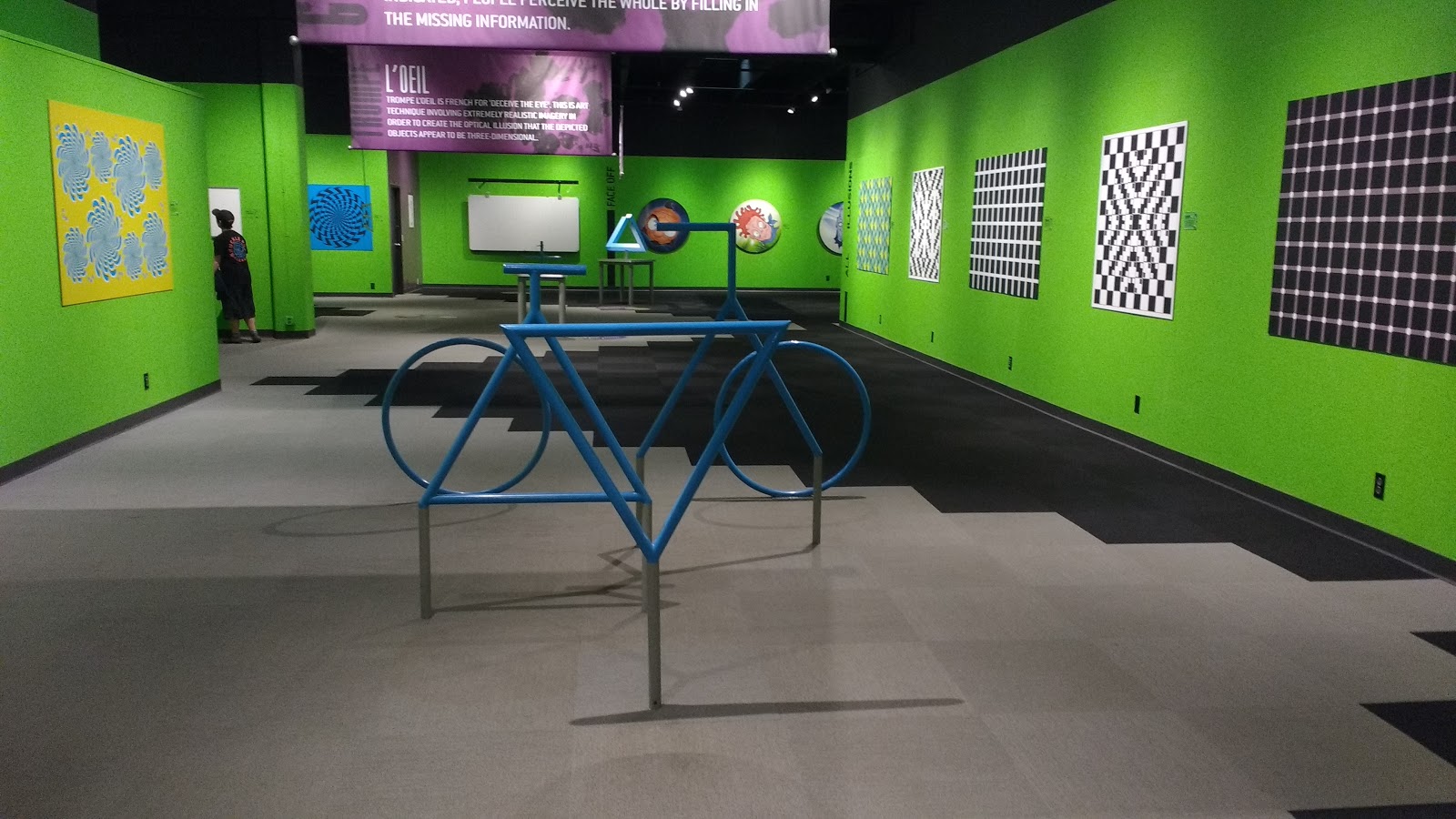
Where did the bicycle go?!?

Some of these images made my head hurt!
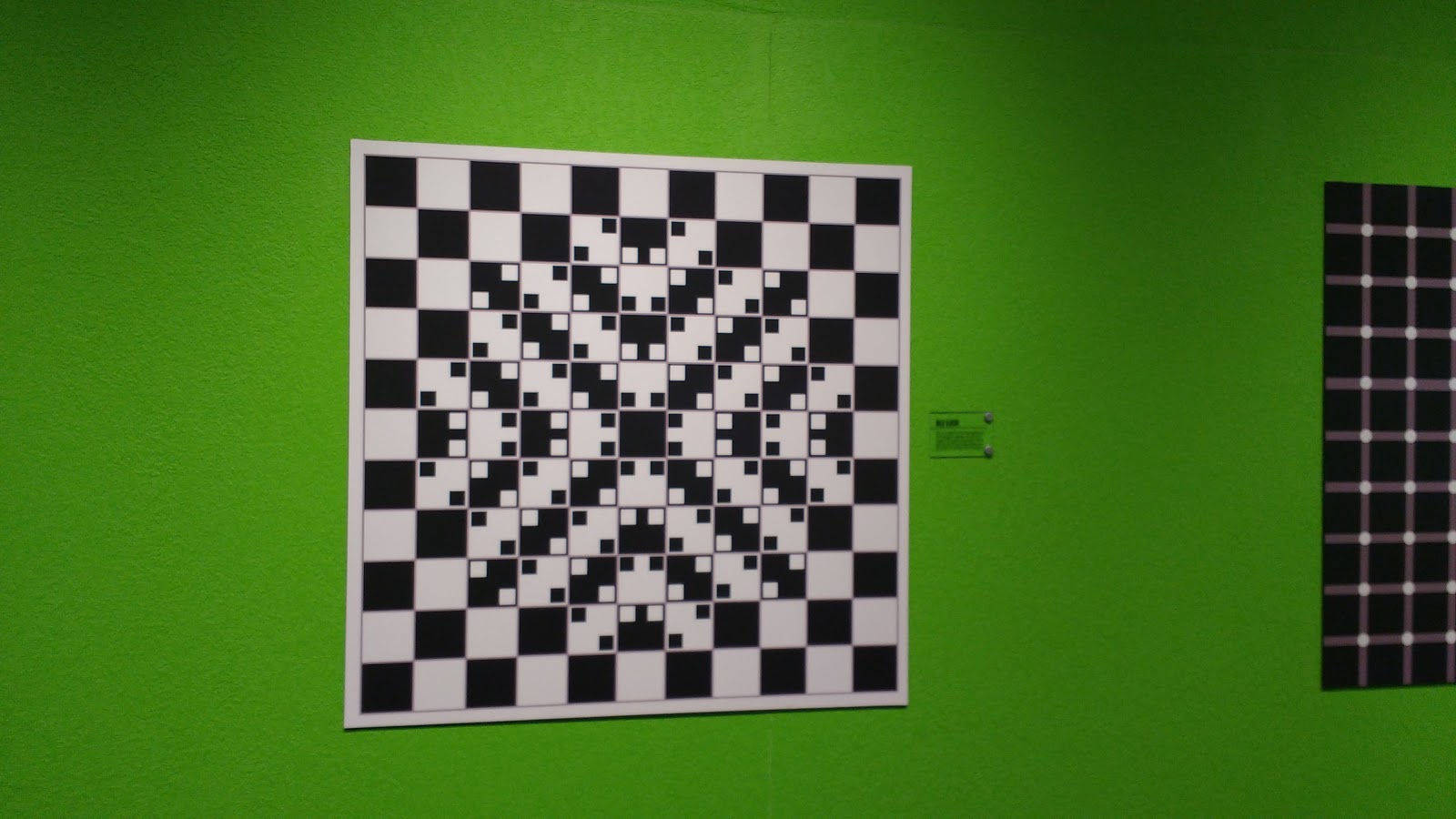
Color Blindness Tests
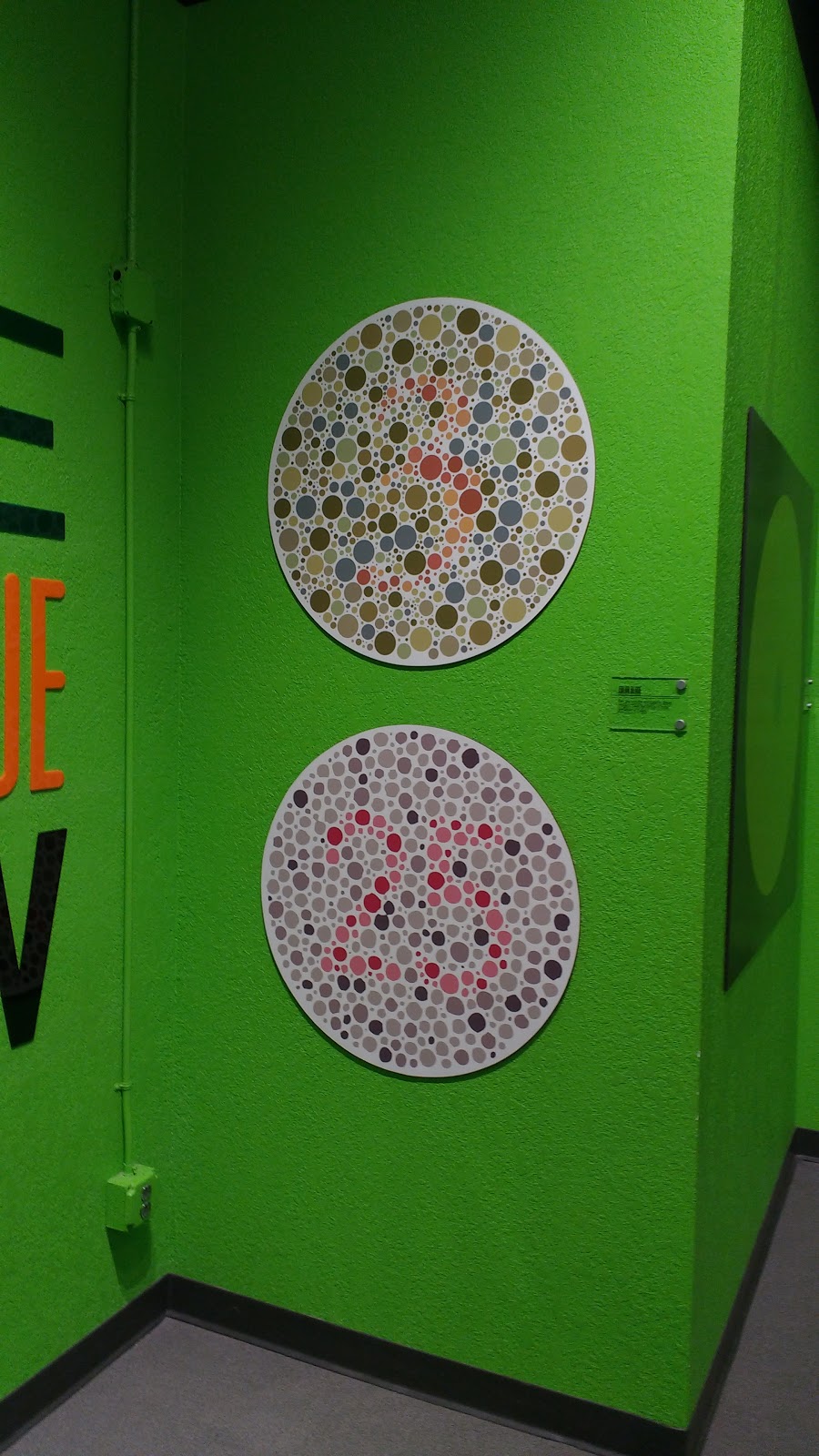
These colors written in different colors puzzles are always fun!
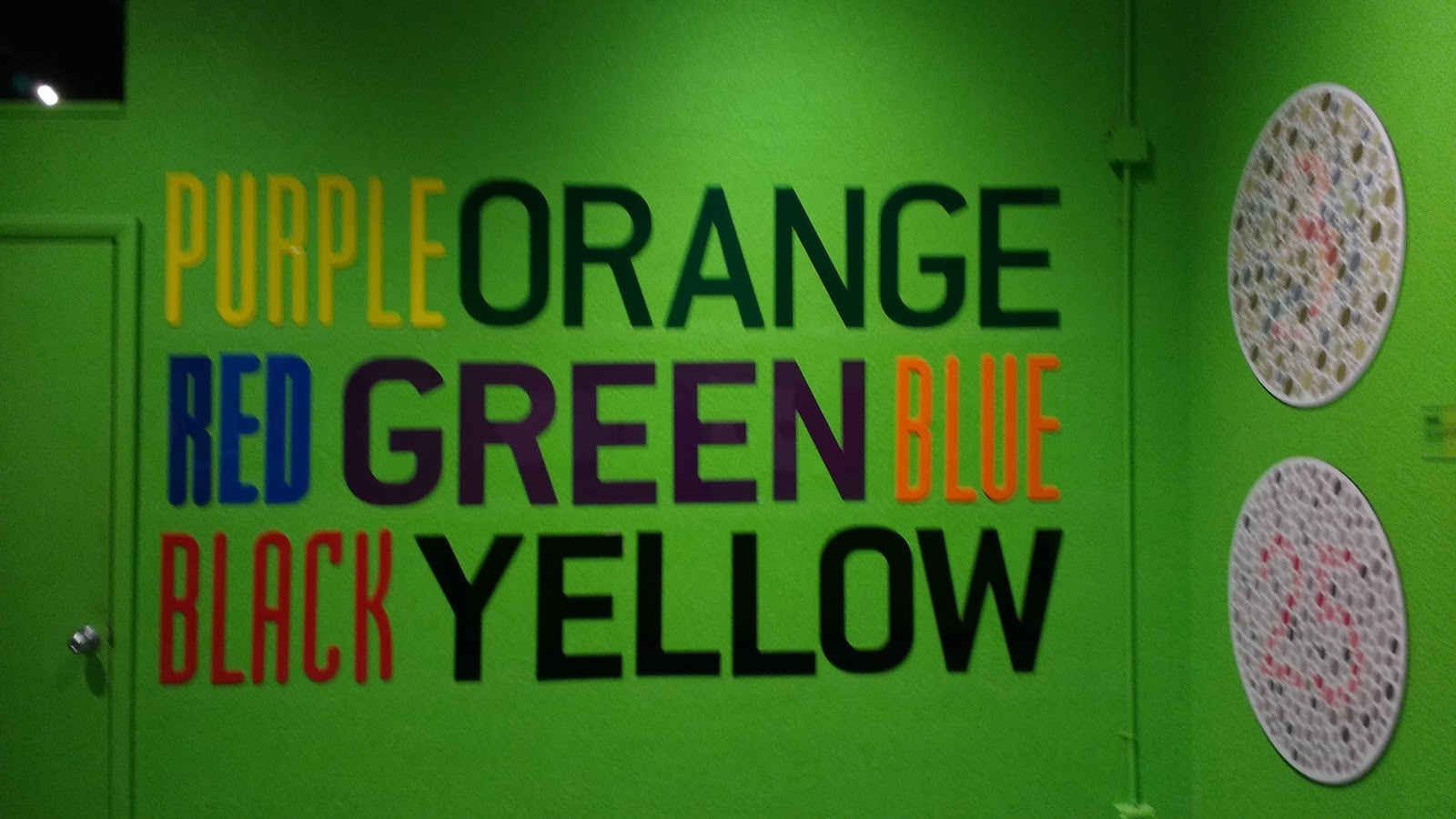
Looking at this piece made my head hurt!
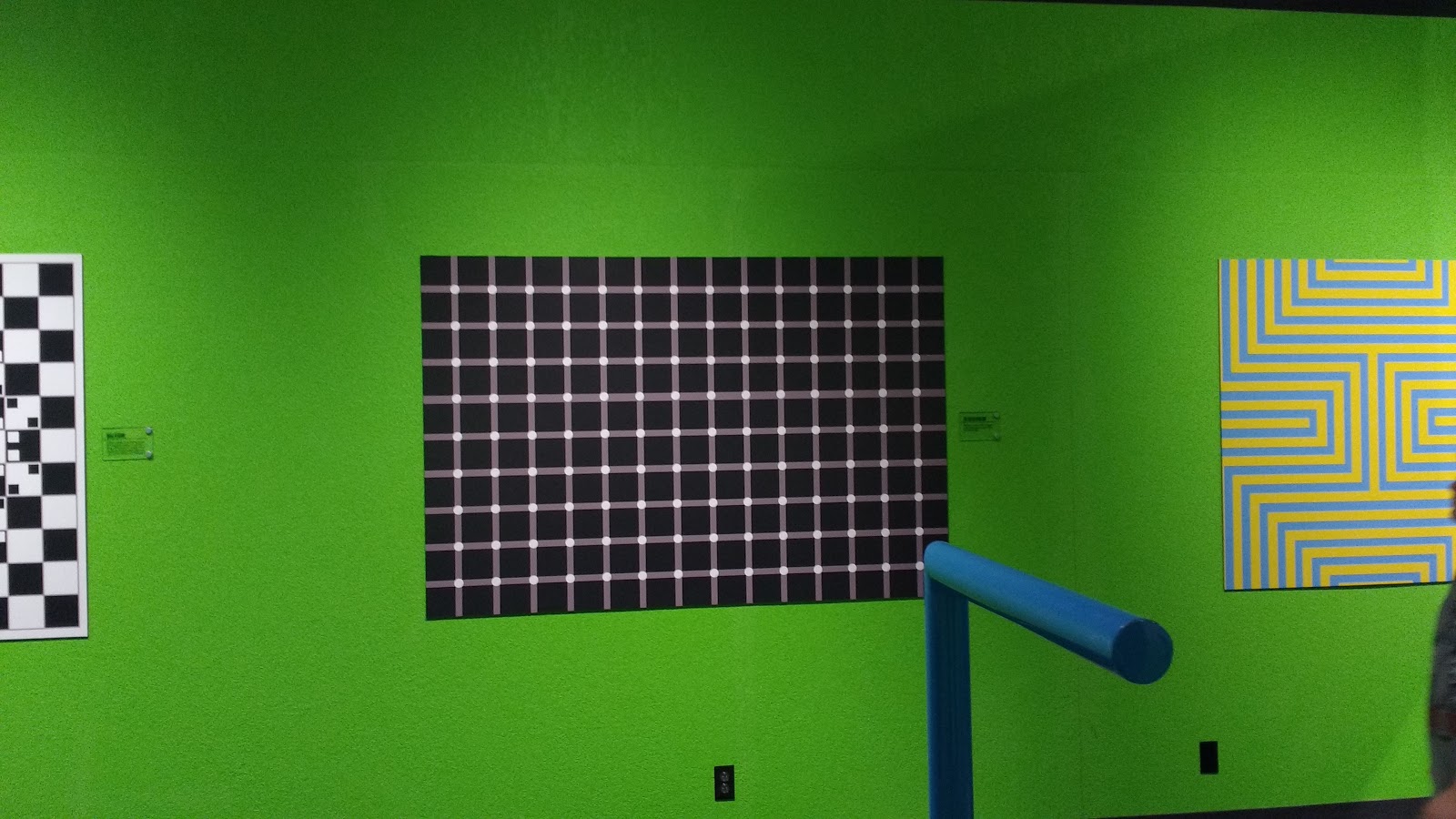
And this one was just plain fun 🙂

I’d love to go back again when I would have more time to explore the museum fully. We were walking around the museum with our boxes full of science experiment goodies which made it hard to participate in a lot of stuff.
March 15, 2017 – When Math and Yarn Collide
My in-laws are currently in America, so Shaun and I have been taking them to do various tourist-y things. Last Saturday, we made a stop at Philbrook in Tulsa. My favorite display was a site specific art installation created by HOTTEA. It’s just strands of yarn (in 83 different colors!), but it’s so much more than that at the same time.
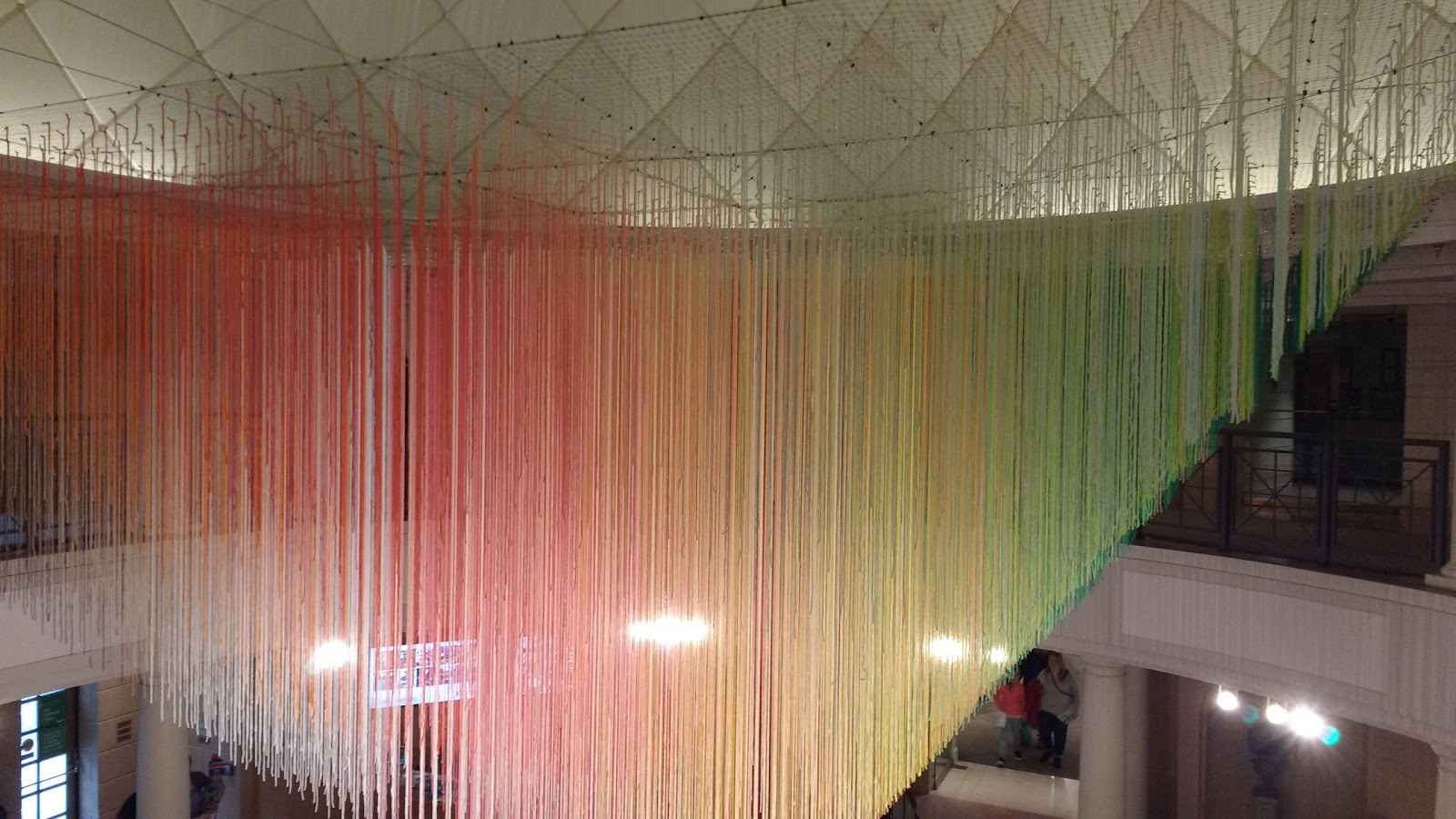
Shaun and I were both captivated by the display, and our conversation soon turned to how much math must have been required to put something like this together.

We weren’t the only people mesmerized by this art display. People were snapping photo after photo of the art display from different angles!

The museum had a television set up that showed a time lapse video of the display being hung. I stopped and watched the video.
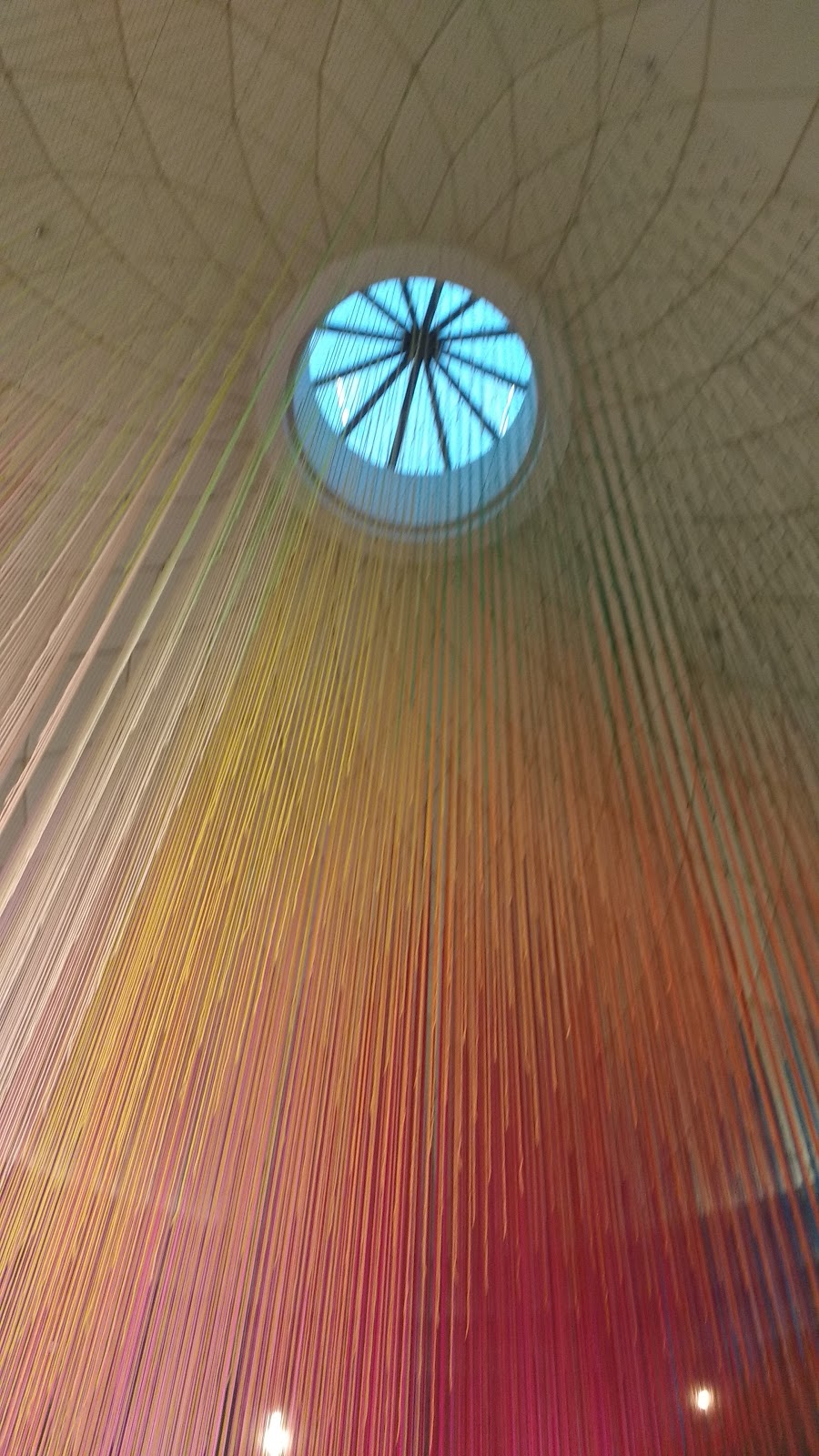
So, what math questions could you ask about this display?
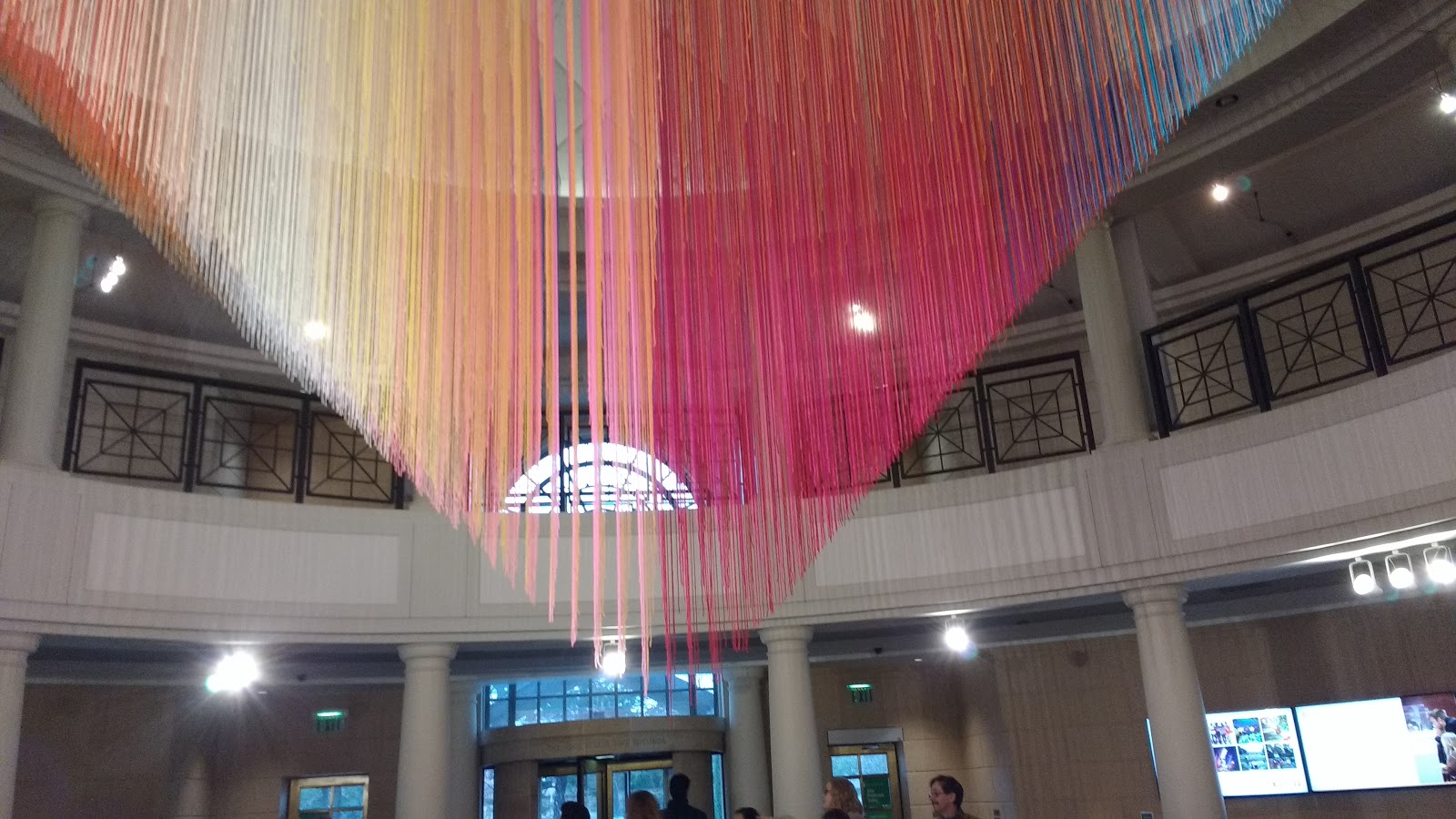
And, more importantly, who wants to help me build something similar in my classroom for next year? #onlyhalfkidding

March 17, 2017 – Things Teenagers Say Volume 45
Today is the last official (non-weekend) day of Spring Break. To celebrate the fact that I’ll be back at school soon, I’ve decided to issue another volume of Things Teenagers Say.

—
Can we please sing the Backstreet Boys? There are five of them. There are five of us. It’s destiny.
—
Student 1: I love Mulan. She’s my favorite Disney princess.
Student 2: Off of Aladdin?
Student 1: That’s Jasmine, you uncultured swine!
Student 2: Do not call me a pig of which I farm.
—
Student: I’m going to snapchat the teacher across the hall a picture of himself.
Me: That’s not at all creepy.
—
Student 1: Is there a cactus in the ocean?
Student 2: Uhhhh no.
Student 1: Then what’s that “c” thing in the ocean?
Student 2: Coral.
Student 1: Oh.
This was soon followed by…
I killed a cactus once. It’s name was Billy.
—
Apparently the last thing I copied and pasted was “Don’t wash your pants. You have my chapstick.”
—
I am not multi-tasking. I am multi-talented.
—
Student 1: I figured out what I’m doing with my life. I’m going to be an Oklahoma Highway Patrol.
Student 2: If I pop all of your blackheads for free, does that mean you can never pull me over?
—
Student 1: Why is it making me put in a number?
Student 2: Because it’s a calculator!
—
Did you know that you are born naked?
—
Student 1: If today is the 28th, how is tomorrow the 1st?
Student 2: It’s February.
Student 1: How does that change things?
Student 2: February only has 28 days.
Student 1: Oh. I knew that.
—
Student: Do you want to hear the good news or the bad news first?
Me: Good news.
Student: Well, I’m here, and I’m ready to learn.
Me: Then, what’s the bad news?
Student: I don’t have a pencil.
—
Want to trade your phone for a cough drop?
—
Me: Who is absent today?
Student: I’m absent.
Me: Okay. I’ll mark you absent.
Student: Don’t actually mark me absent.
Me: I know that you’re here. It would be hard for someone to miss your presence.
Student: I don’t have presents. I have gifts.
—
I know people who can fade black hair really good. Not black people hair. Black hair.
—
Mrs. Carter is going to go from famous math teacher to body building success.
—
Mrs. Carter, has anyone ever told you that you are such a quintic trinomial?
—
Eyebrows are sisters, not twins. Sometimes if you mess up, they don’t even look like they are related.
—
Me: Who’s playing with a slinky?
Student: Who’s not playing with a slinky?
Rest of Class: *raises hands*
—
I had a dream about your class the other day. It was TERRIFYING.
—
Student 1: Hey, I was going to charge my phone right there.
Student 2: You can still charge your phone right by mine.
Student 1: Actually, I can’t. My phone would scare your phone. It’s an iphone.
—
Hey, I read your things teenagers say on your blog. I make up at least half of those posts!
—
The headband’s going down. I mean business!
—
While doing a science demonstration…
It’s magic. You’re a witch! (And, then he proceeded to literally run out of the classroom)
—
I was about to talk to one of my friends in an Australian accent. But, then I looked over and your husband was sitting right there. So I decided I better not do it. But, one of my friends can only understand me if I talk in an Australian accent.
—
Student: Your husband’s accent makes him scary.
Me: He is not scary.
Student: Of course you would say that. He’s your husband.
March 22, 2017 – Types of Energy Art Project
This types of energy art project will get physical students thinking creatively as they review the different types of energy they have studied during their energy unit.
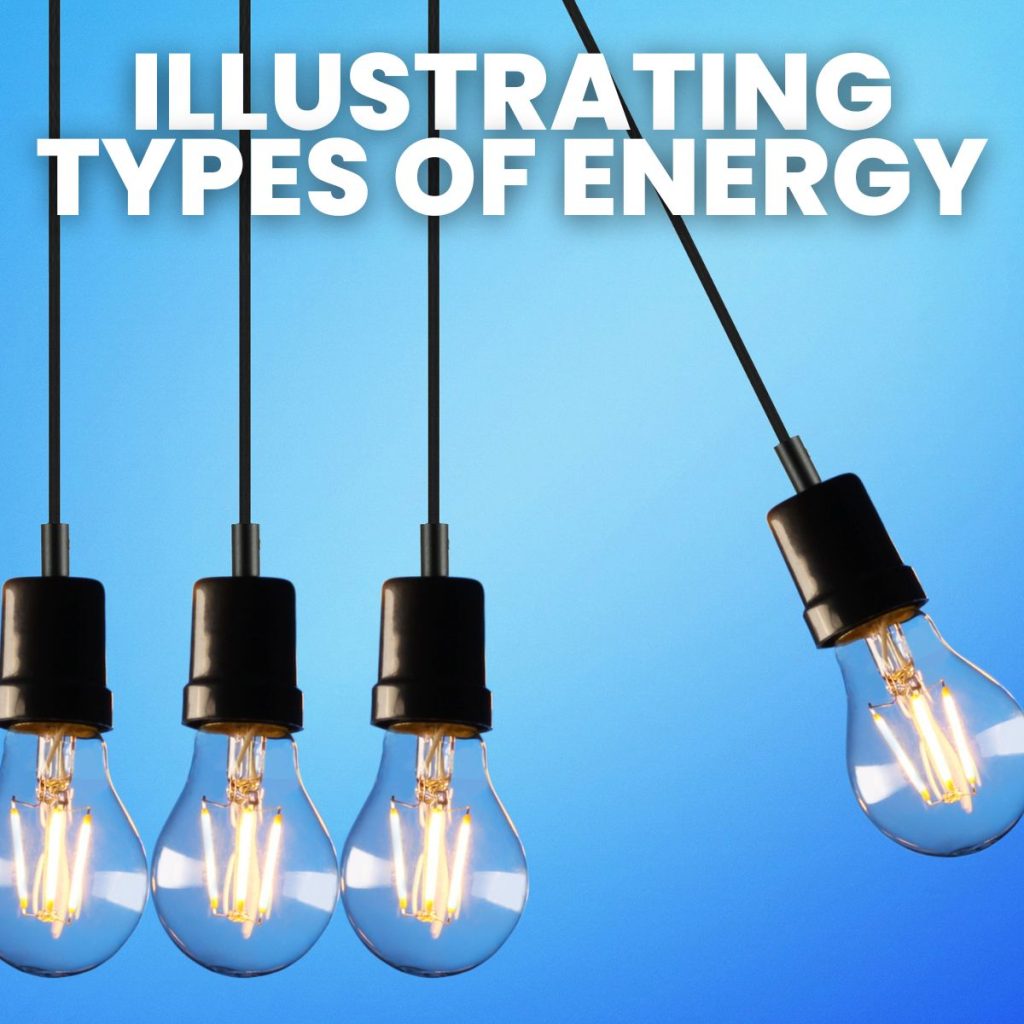
Students must draw a picture that contains at least one example of each type of energy that we discussed in Physical Science.
My students had to include the following types of energy:
- Gravitational Energy
- Thermal Energy
- Mechanical Energy
- Sound Energy
- Electrical Energy
- Nuclear Energy
- Radiant Energy
This art project led to some great discussions between my students as they tried to find examples of each type of energy that would work with the setting they had chosen for their picture.
Here are my students’ creations:
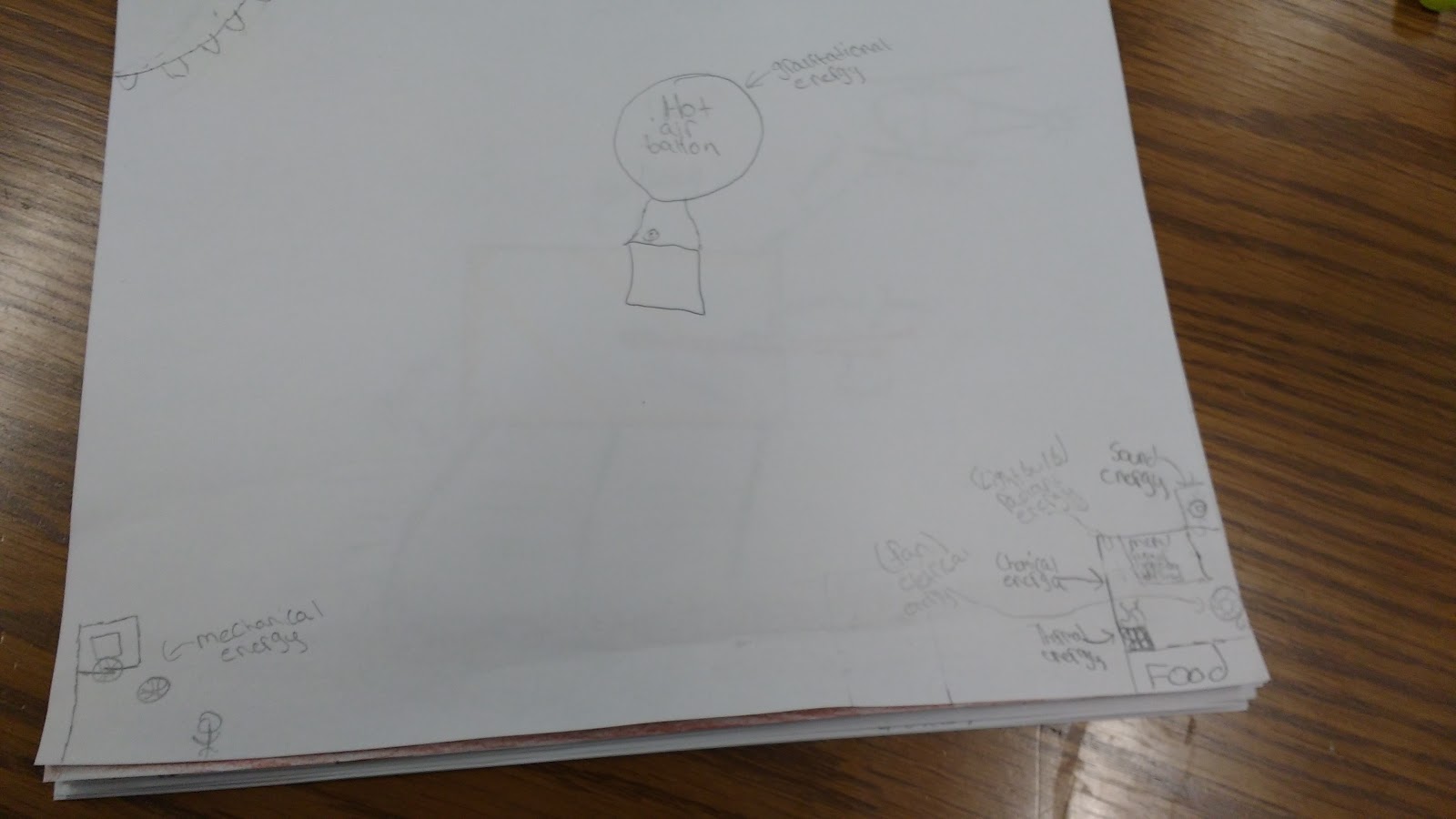
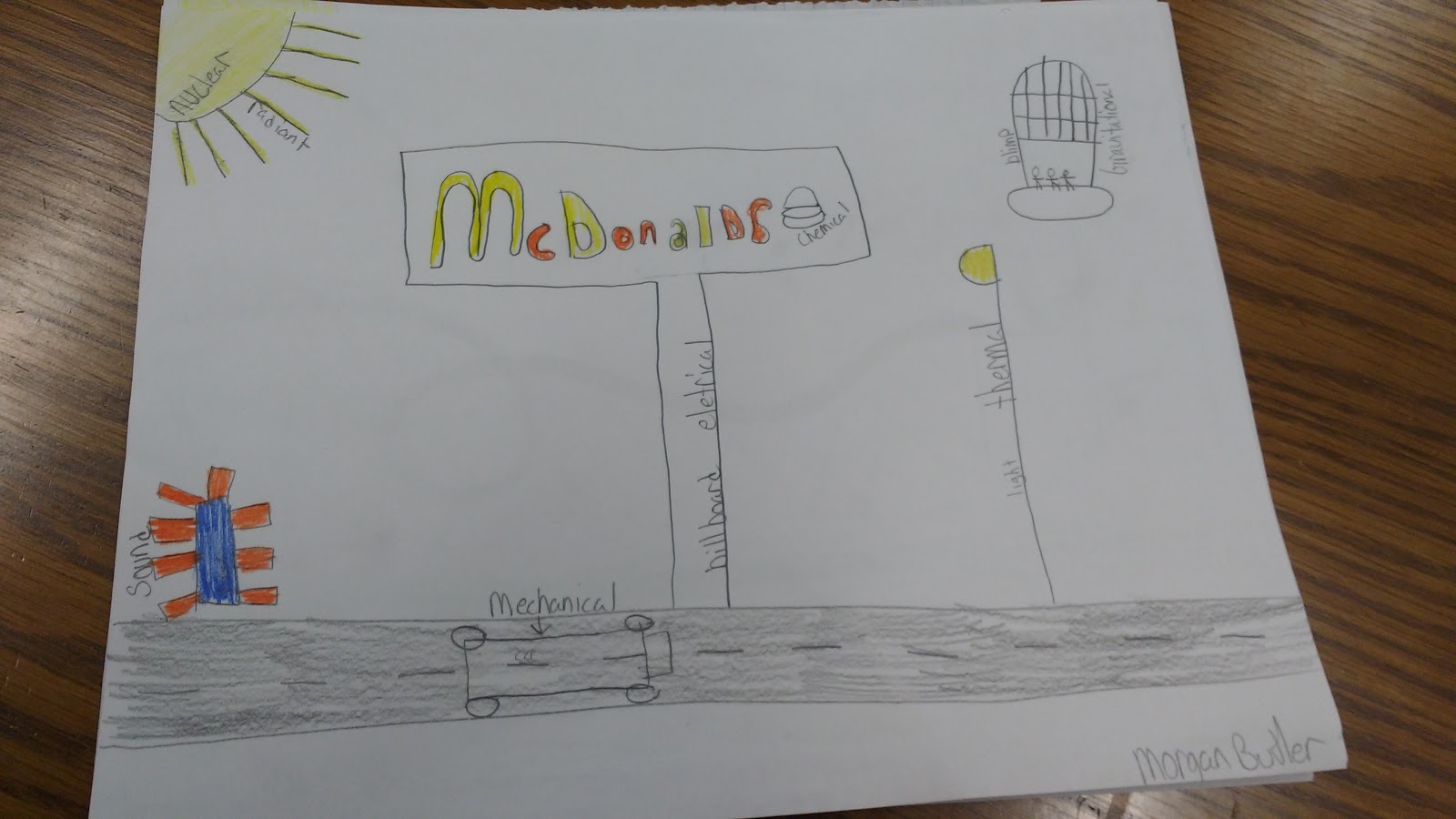
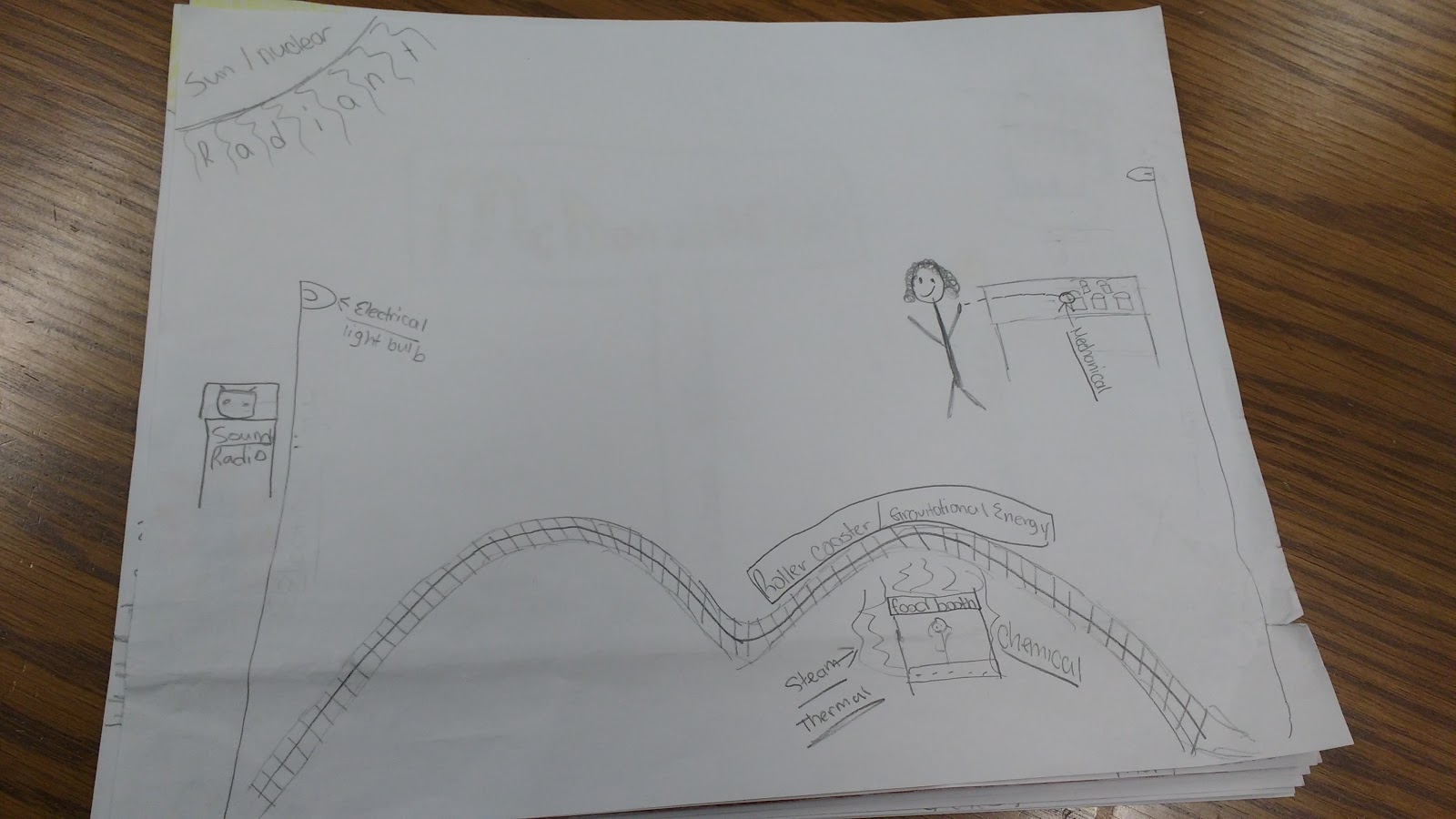

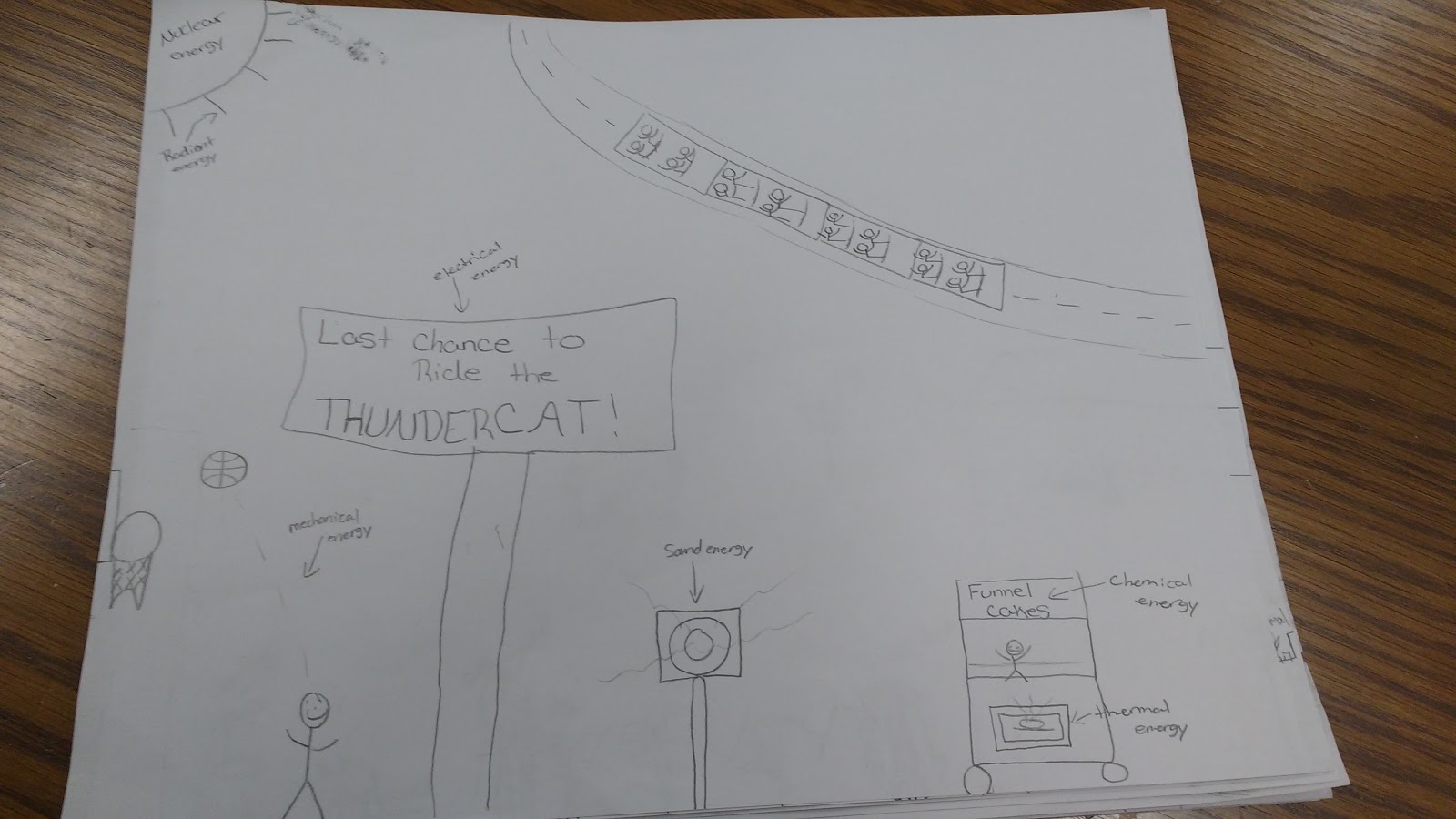

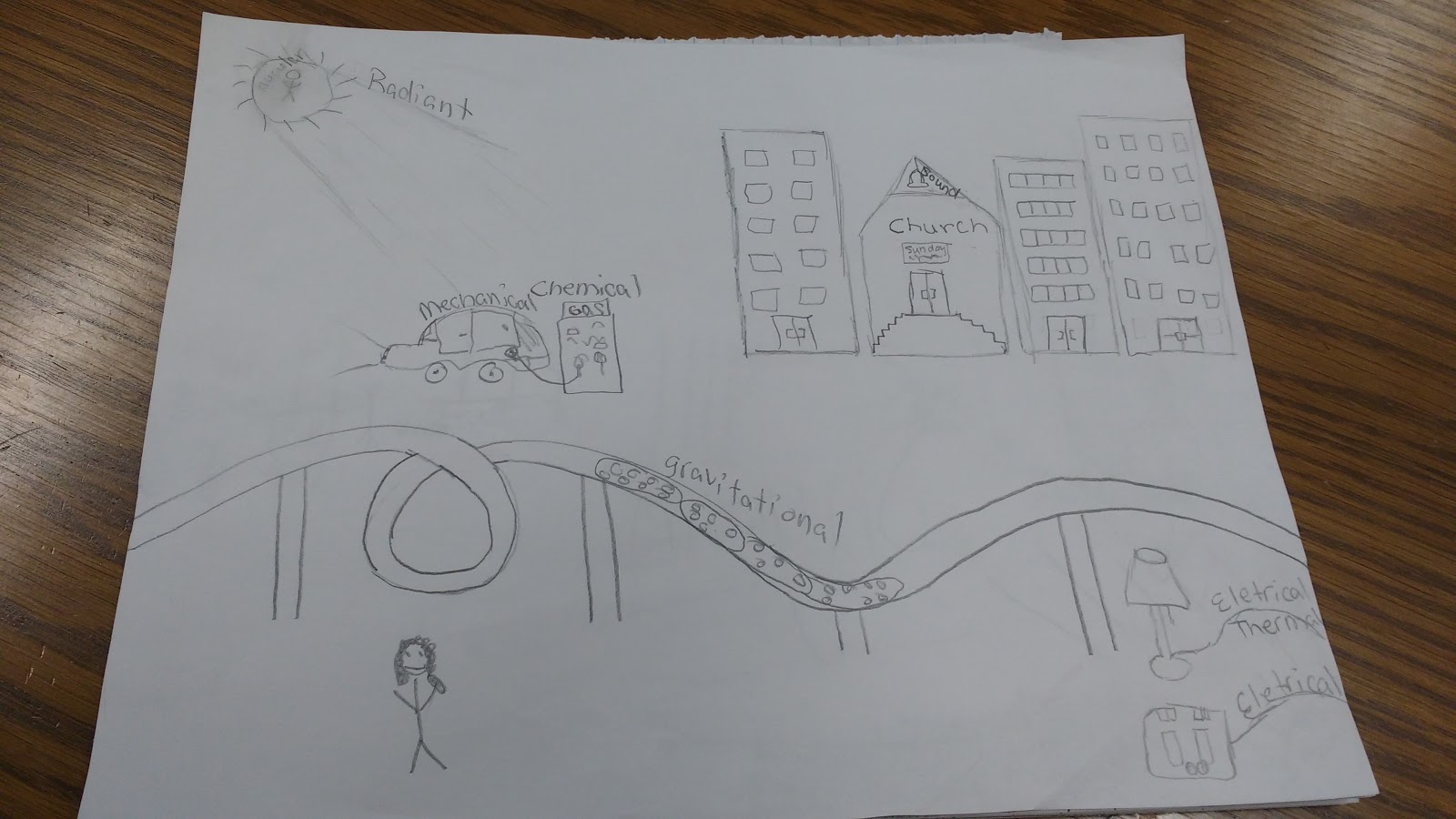
I can tell that the marble roller coaster activity we did stuck with students because there were lots of pictures including a roller coaster!
March 23, 2017 – Organizing my Desk Drawer
I’m not sure exactly why, but a lot of my blog readers seem to get the impression that I’m super-organized. I’m most definitely not. (Though, I am trying to become more organized!) Here’s a prime example of my disorganization. Behold, my desk drawer!
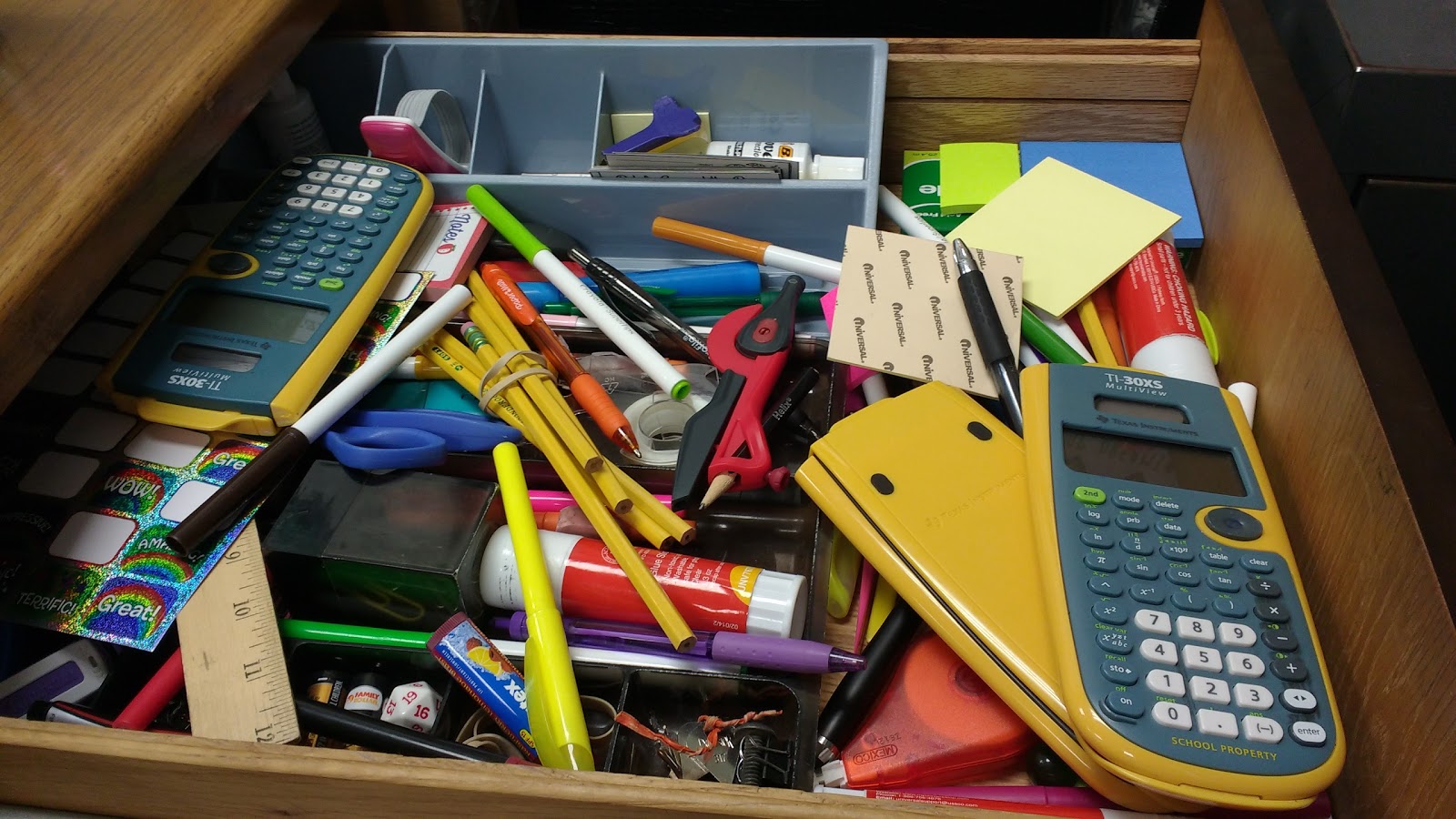
And, this picture was taken only a couple of weeks after I had done a complete overhaul/re-organization of this drawer.
I don’t know if you can tell or not, but there are desk organizers in this drawer. Obviously, they weren’t working. I had more stuff than would fit in the organizer. Thus, the organizer was only taking up space.
One of the things I learned from reading The House that Cleans Itself by Mindy Starns Clark is that I need to create systems that work for me instead of systems that are too hard for me to maintain. I love that I can apply these same principles to help me keep both my house and my classroom clean!
I ended up ordering some supply baskets from the Achieva brand.
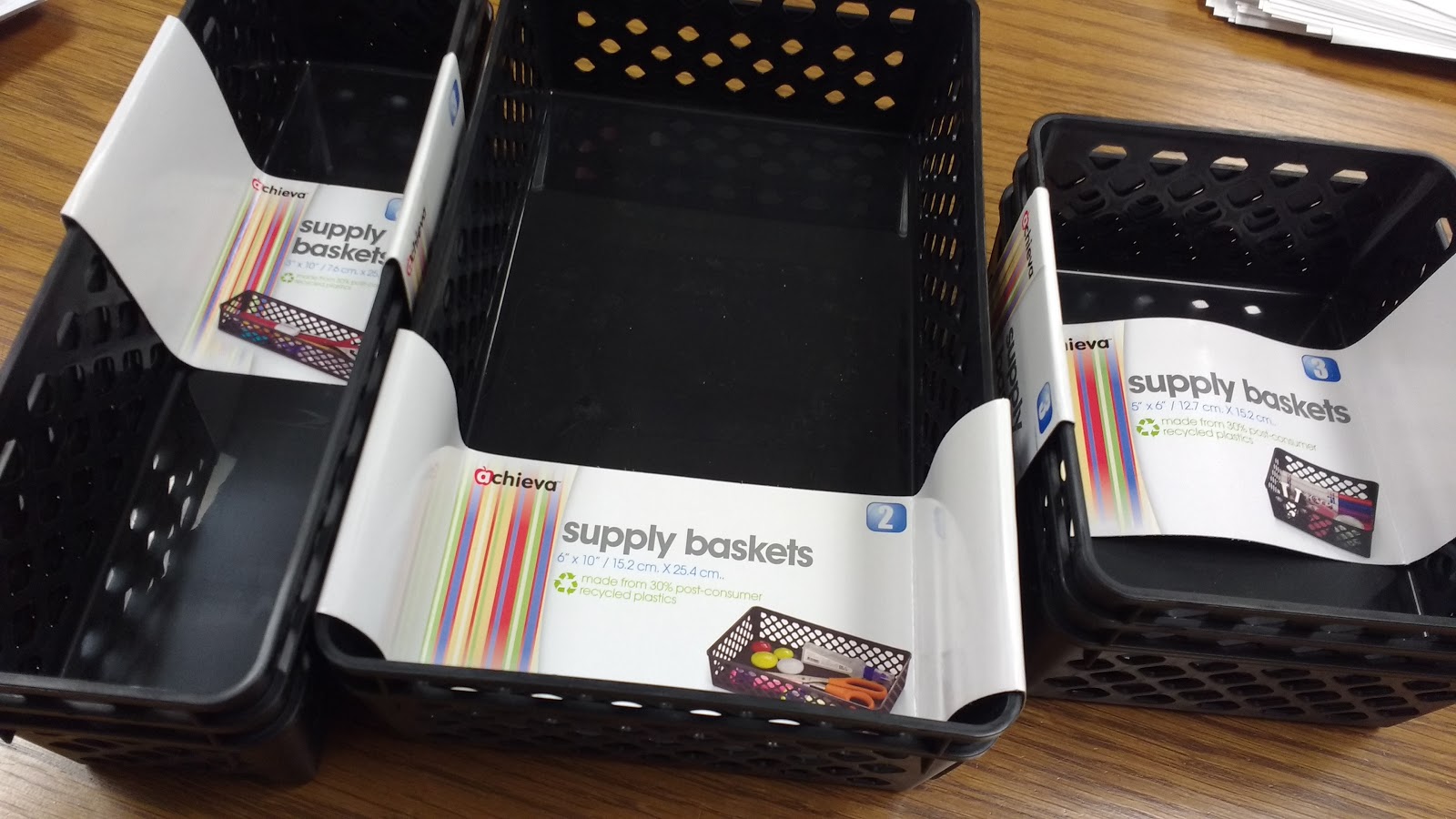
I love that these baskets are all the same height. This allowed me to make a modular design of organizers to take up as much of my drawer space as possible.
And, here’s the finished product:
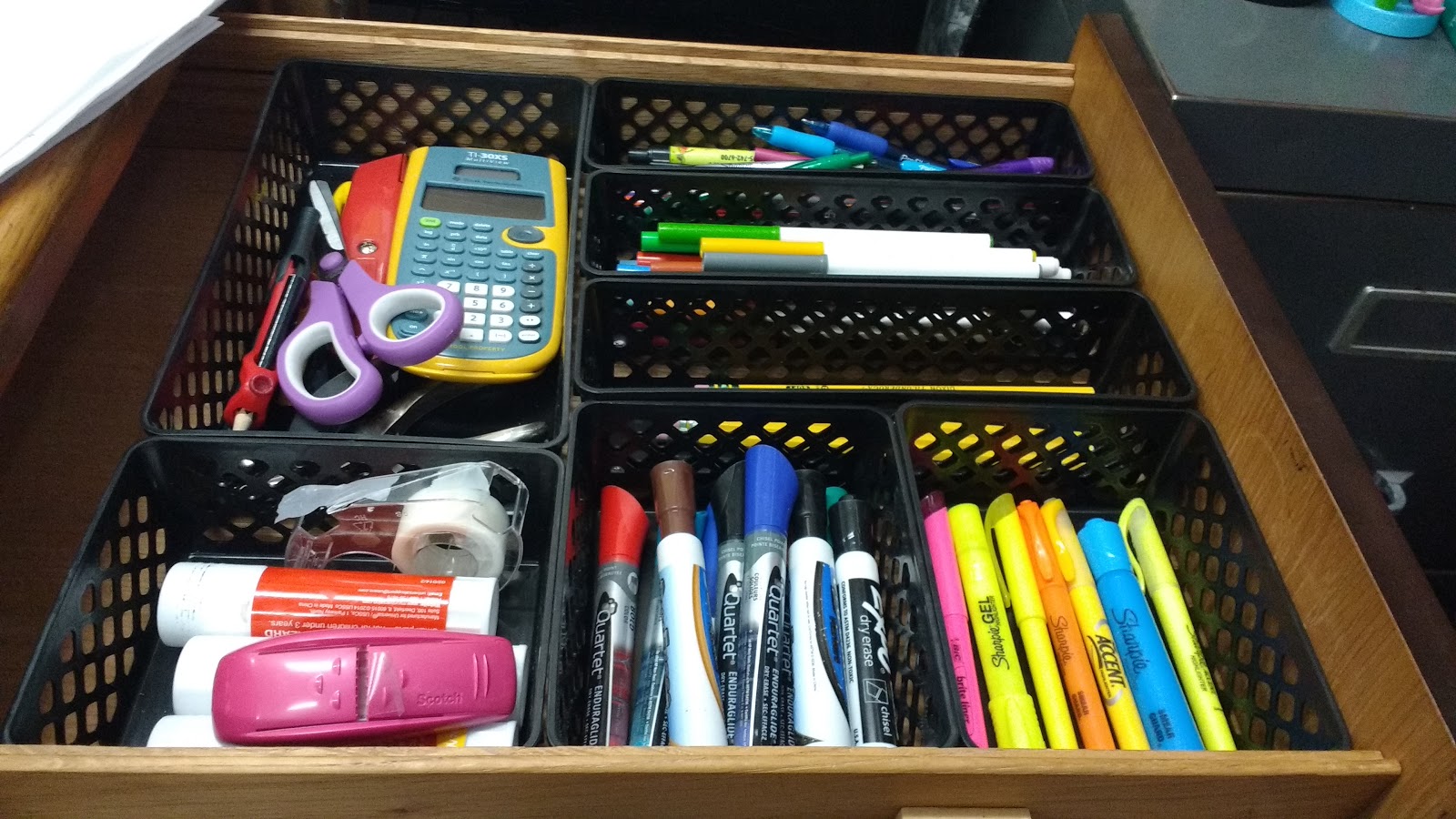
Now when I open my drawer, it’s super easy to put stuff back where it belongs. This means my desk stays neat and tidy.
Another perk of this system? I can pull out my basket of pretty pens and set it on my desk when working on my interactive notebook pages. Then, when I’m done, the basket slides right back into my desk drawer.
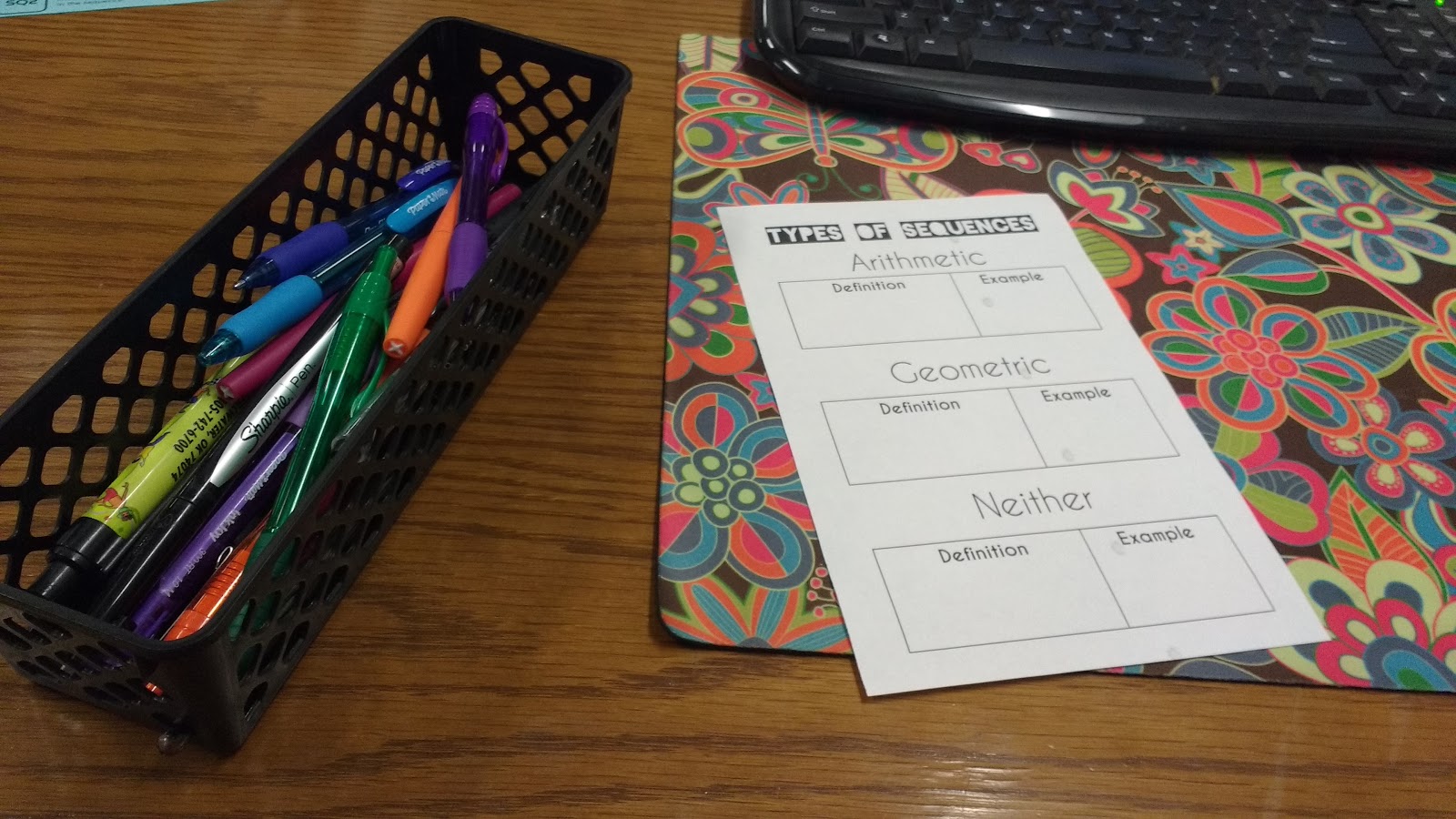
March 26, 2017 – Electron Magnets
Want to make it easier to teach your students to create Bohr models of an atom? Check out how to use electron magnets to illustrate and teach this important skill.
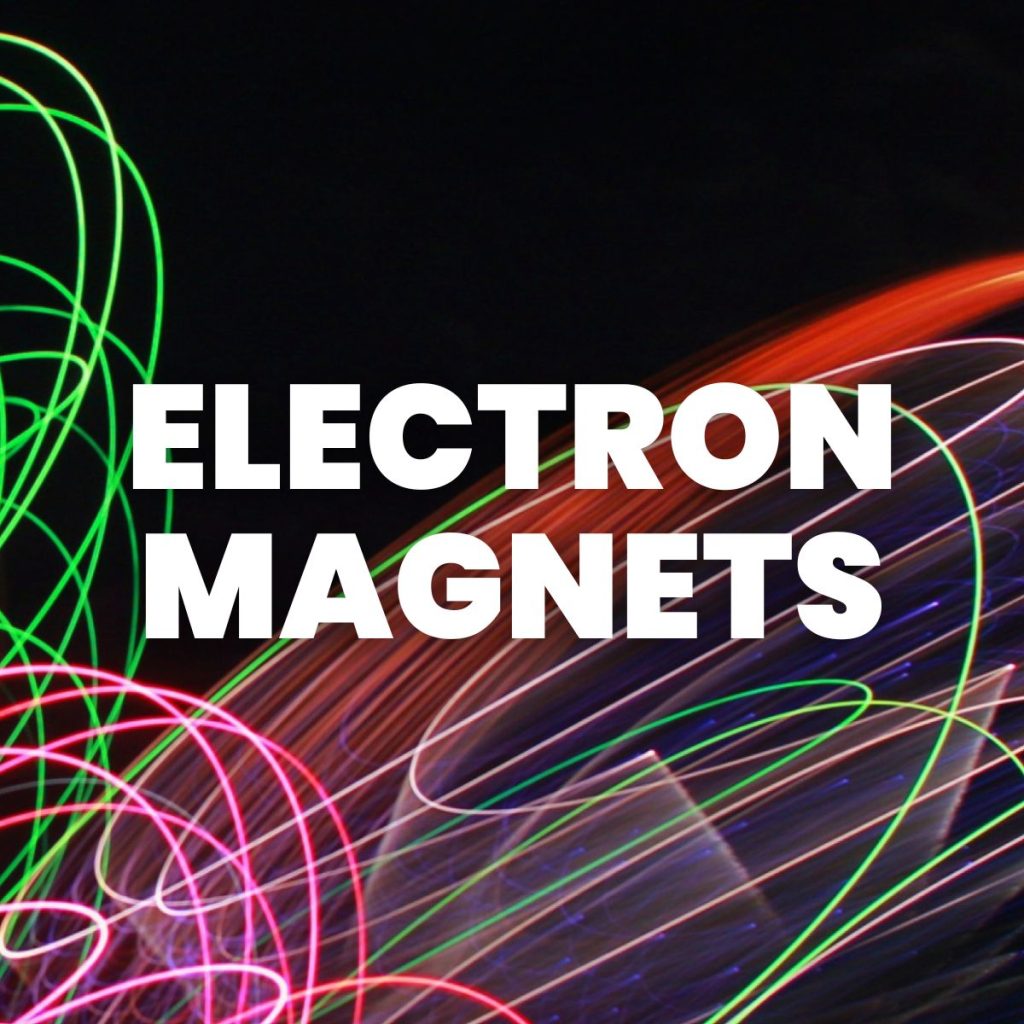
My sister gave me a set of colored, circular magnets for my classroom. I wasn’t exactly sure what I was going to use them for at the time, but they came in SUPER-handy when we were making Bohr models of atoms in physical science.
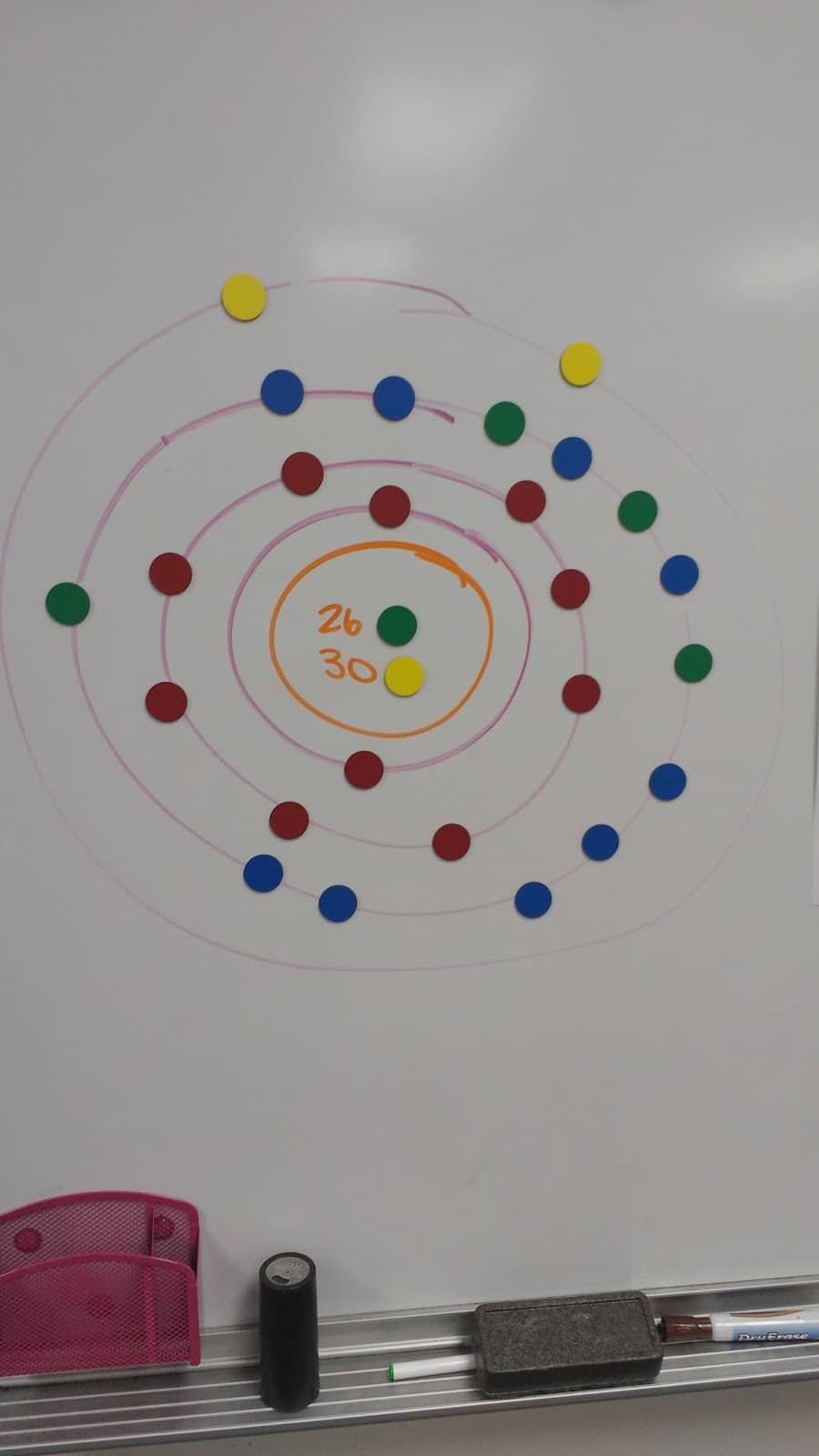
This happened to coincide with my almost month long experience of having no projector and therefore no SMARTboard in my classroom. Let’s just say that magnets make awesome electrons!
Maybe this is one of those ideas that every other science teacher has already figured out. But, I was pretty proud of myself for coming up with this idea!
March 28, 2017 – Things Teenagers Say Volume 46
It doesn’t seem like it’s been that long since my last volume of Things Teenagers Say. I guess that means my kids have been VERY chatty lately!

—
Student 1: I don’t go to church, but Jesus is my uncle.
Student 2: If you did got to church, you would know that Jesus is your father – not your uncle!
—
Student: I read your last things teenagers say post, and I was responsible for 7 of them. I counted.
Me: What does that say about you?
Student: It says I’m your favorite student, and you’re not going to have a blog once I graduate.
—
George Strait is how I asked my girlfriend to prom.
—
Let’s build a bridge for the river that we cry.
—
I’m progressively becoming friends with more and more underclassmen. I don’t like it.
—
You dented my cup!
—
If my mom says “K” to me one more time…
—
You need to come hang out with us one night. You’ll laugh so much, you’ll have abs!
—
I don’t know how to tweet on tweeter.
—
I didn’t want you to get kicked out of class. That’s why I punched you.
—
Can I go to lunch early because I have to go pick up a shotgun later?
—
Sit down and talk to me about Law and Order SVU.
—
I don’t like this whole single key business without a keychain.
—
You know, breathing isn’t actually that fun.
—
Every decision we make puts us into another universe.
—
Let me write that down on my non-existent data sheet.
—
Me: Statistics is the study of data.
Student: I know all about data. I have unlimited.
—
Did you know that even if you’re trash you can still do things? It’s called a trash CAN, not a trash CANNOT.
—
Student: Why didn’t I get named after my father? I’m jealous!
Me: My mom was named after her mother.
Student: Was she from England?
Me: No.
—
Isn’t one day on the moon the same as five days on earth?
—
If your phone falls on your face, then you have it coming.
—
I’m not a tomato. I don’t bruise easily.
—
Student: What type of music do you listen to?
Me: Christian music.
Student: You go to church?
Me: Yes.
Student: I used to, but I got kicked out.
—
She’ll probably break up with you if you lose her pencil.
—
These kids made crossbows out of pencils, and one of them shot me! It was…AMAZING.
—
Me: Please don’t tell me that you are talking about disposing of bodies.
Student: I’m talking about cannibals. He’s talking about disposing of a body.
—
Zero isn’t a number just like Pluto isn’t a planet.
—
I’m a lot of people’s spirit animal.
—
Me: Is anyone in here a Gemini? It’s a horoscope sign.
Student: Oh, you mean those things like scorpio and squirrel?
—
I’m about to orangutan you.
—
Santa Claus can fit down a chimney, so that means an astronaut can, too!
—
Does “shrimp” have two syllables?
—
I only opened my mouth once saying “elephant,” but it has more than one syllable.
—
I can’t syllable.
—
Let me just get the polar bear out of my garage.
—
In kindergarten, I was a failure.
—
Student 1: I made the best hand turkeys in kindergarten.
Student 2: No, I made the best hand turkeys in kindergarten. My turkeys were…SMASH!
March 29, 2017 – Rube Goldberg Machine Projects
As part of our unit on energy in physical science, I had my students build Rube Goldberg machines.
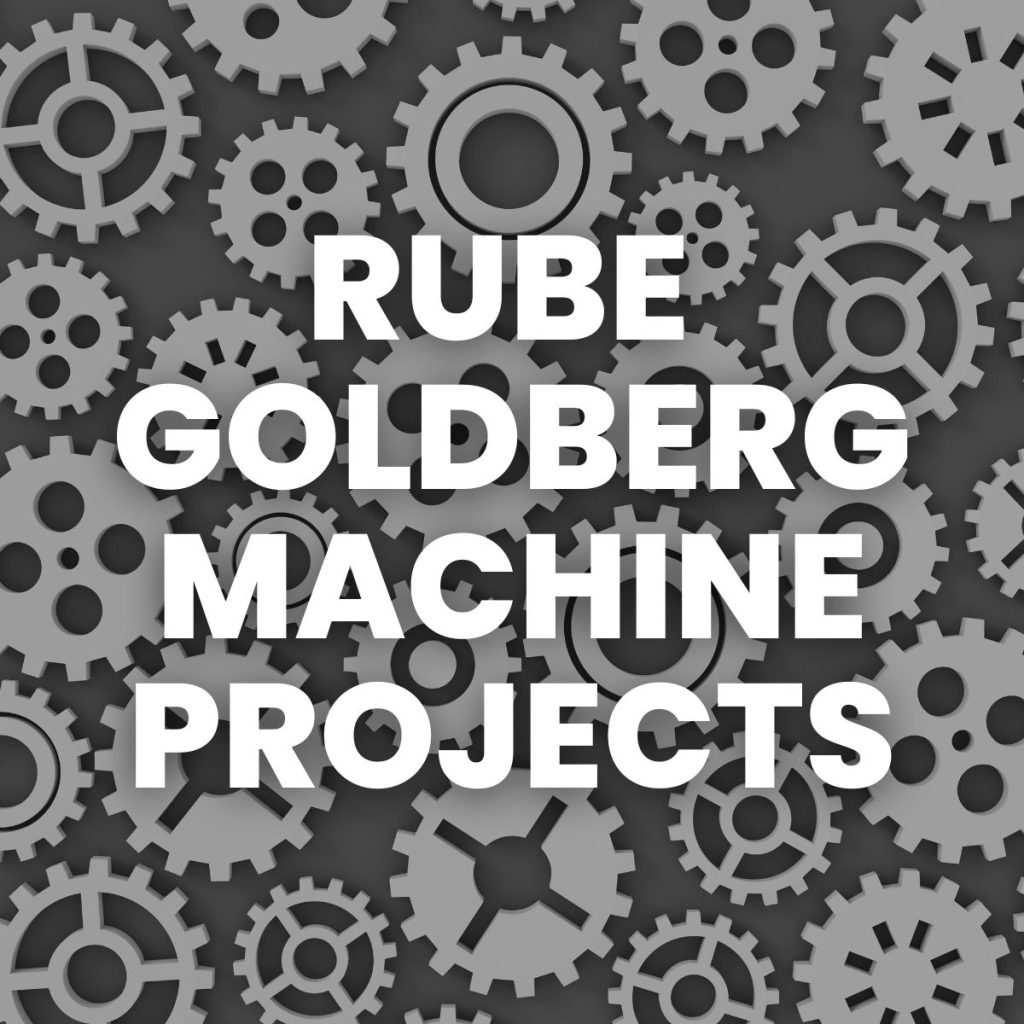
I never did figure out how to take really good pictures of their creations. 🙁 But, I want to post these pictures of what my students did come up with to remind me of how things went for next time I set out to do this project.
I wish I would have required my students to spend more time in the planning and brainstorming phase before they started actually building their Rube Goldberg machines. Many groups would build one step of their machine, test it, and then try to figure out what another step should be. Then, they would stop when they got tired of adding additional steps. I think they would have better results by starting with a comprehensive plan.

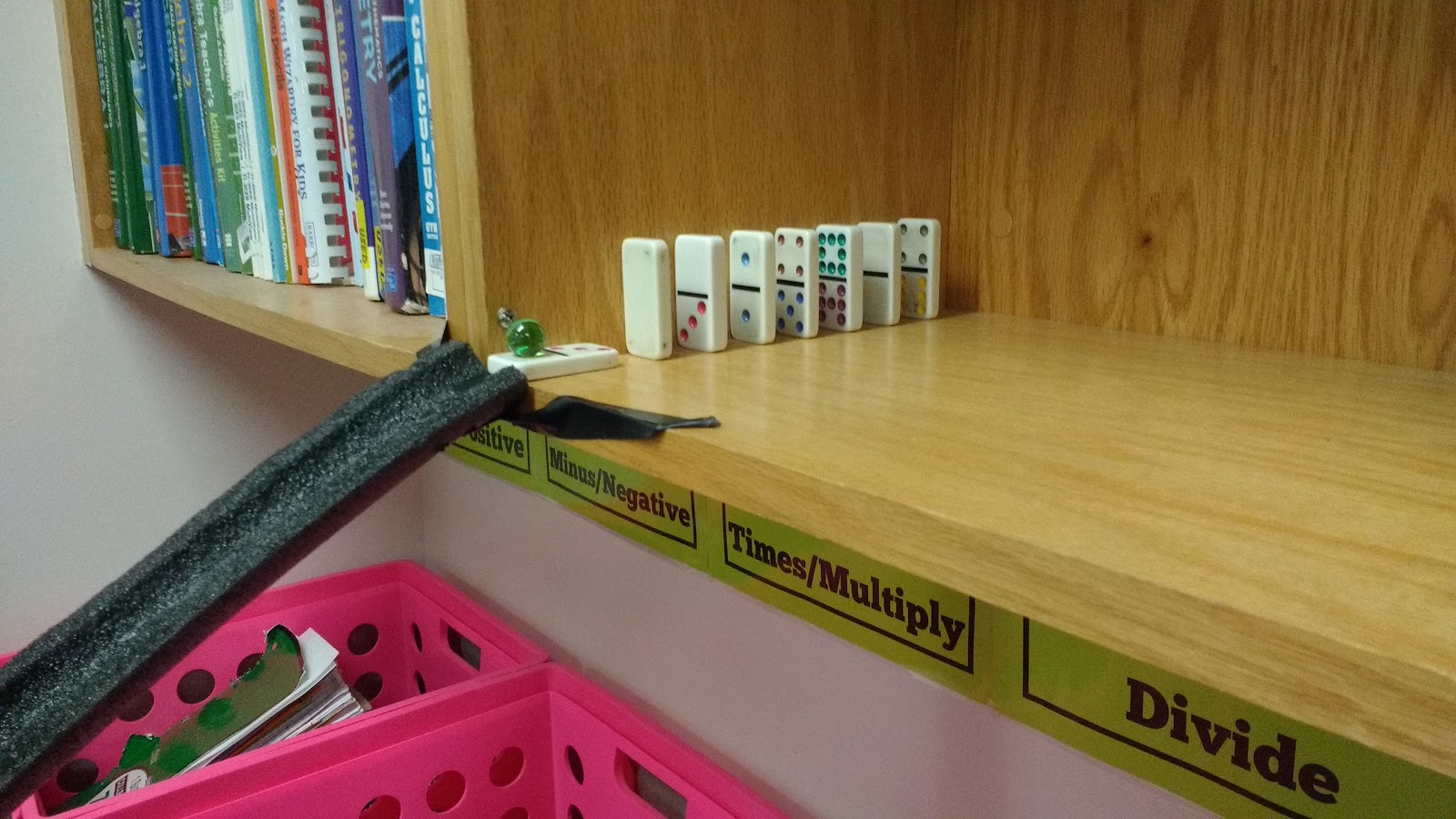
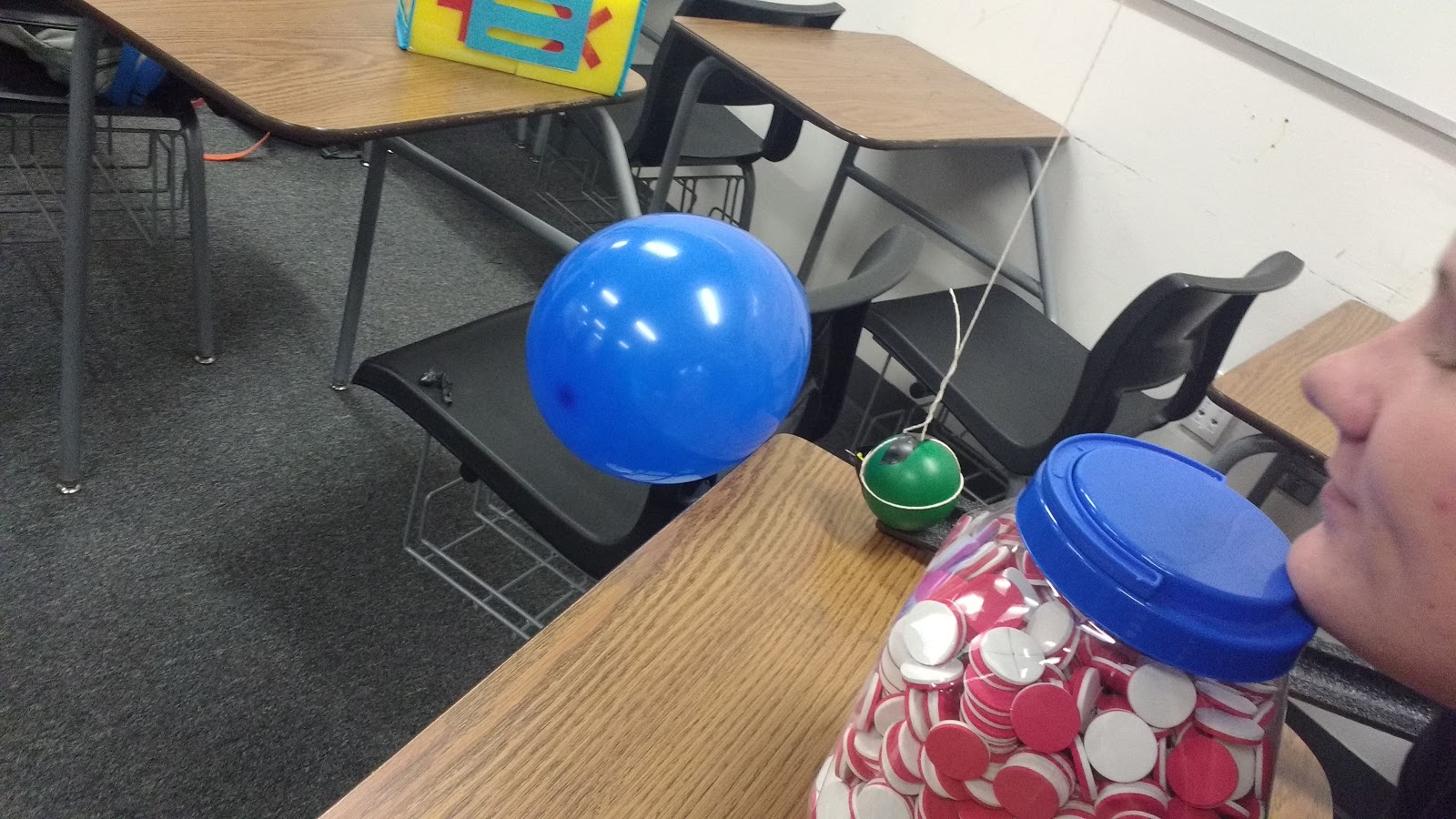
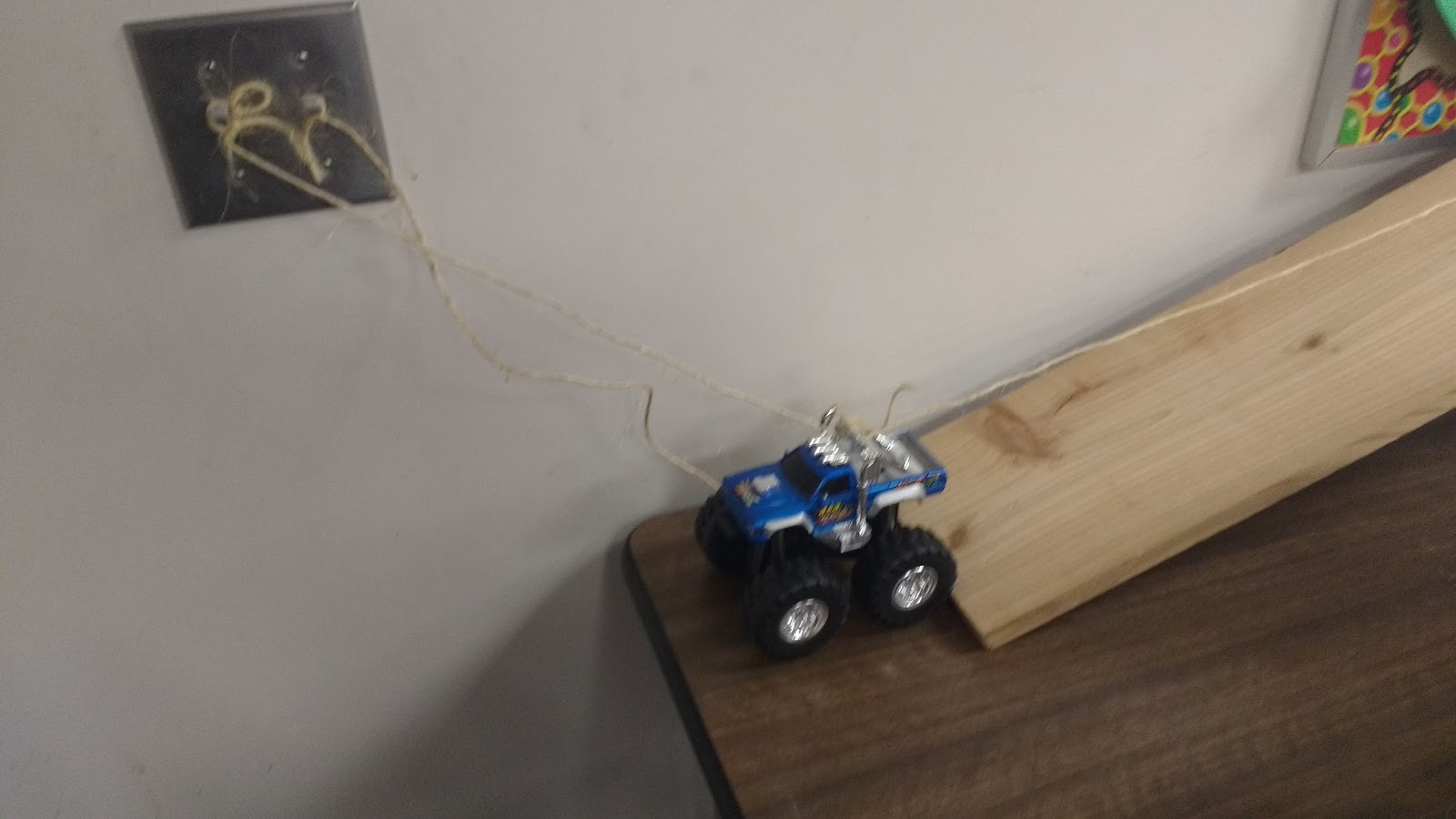


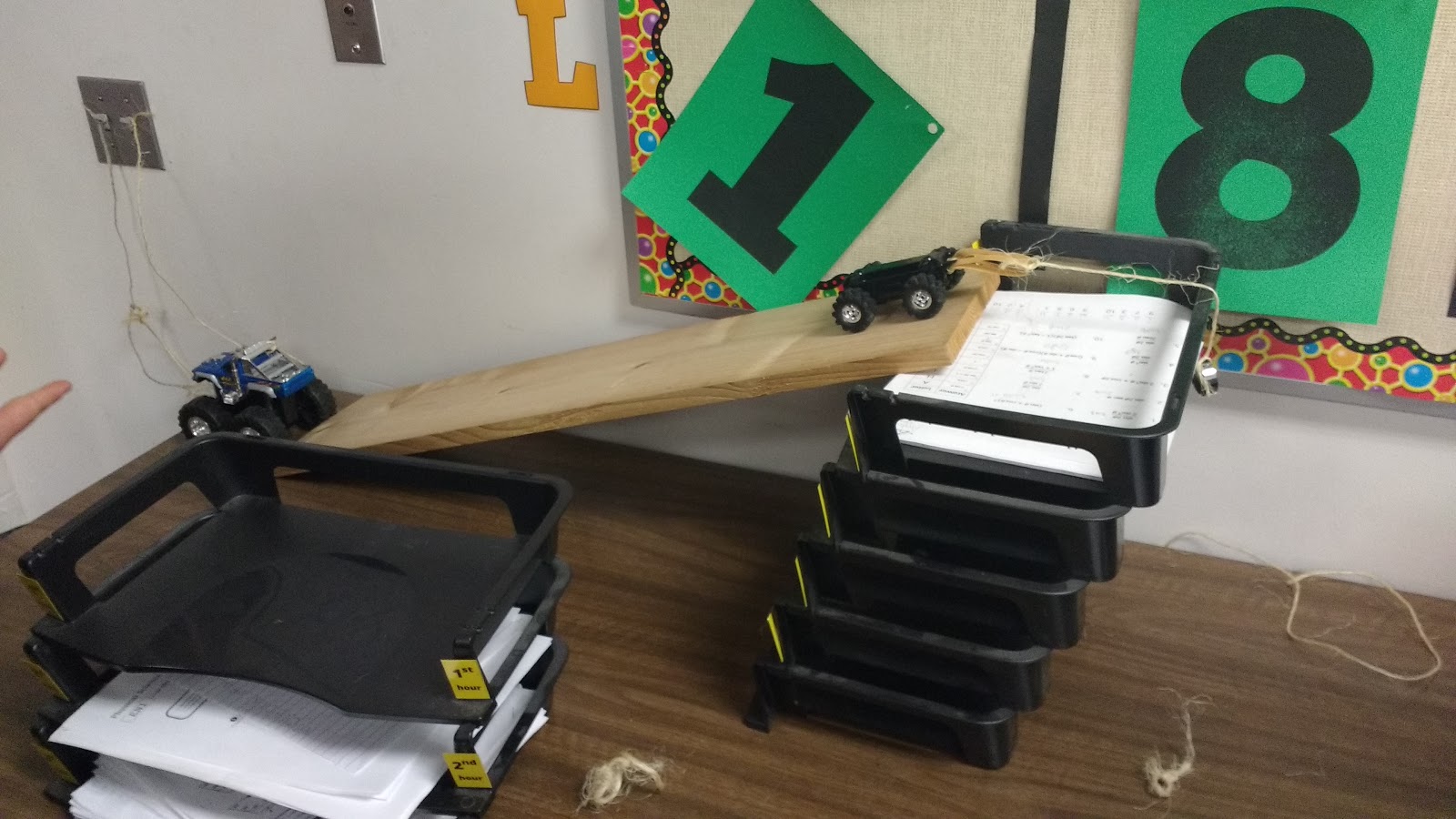
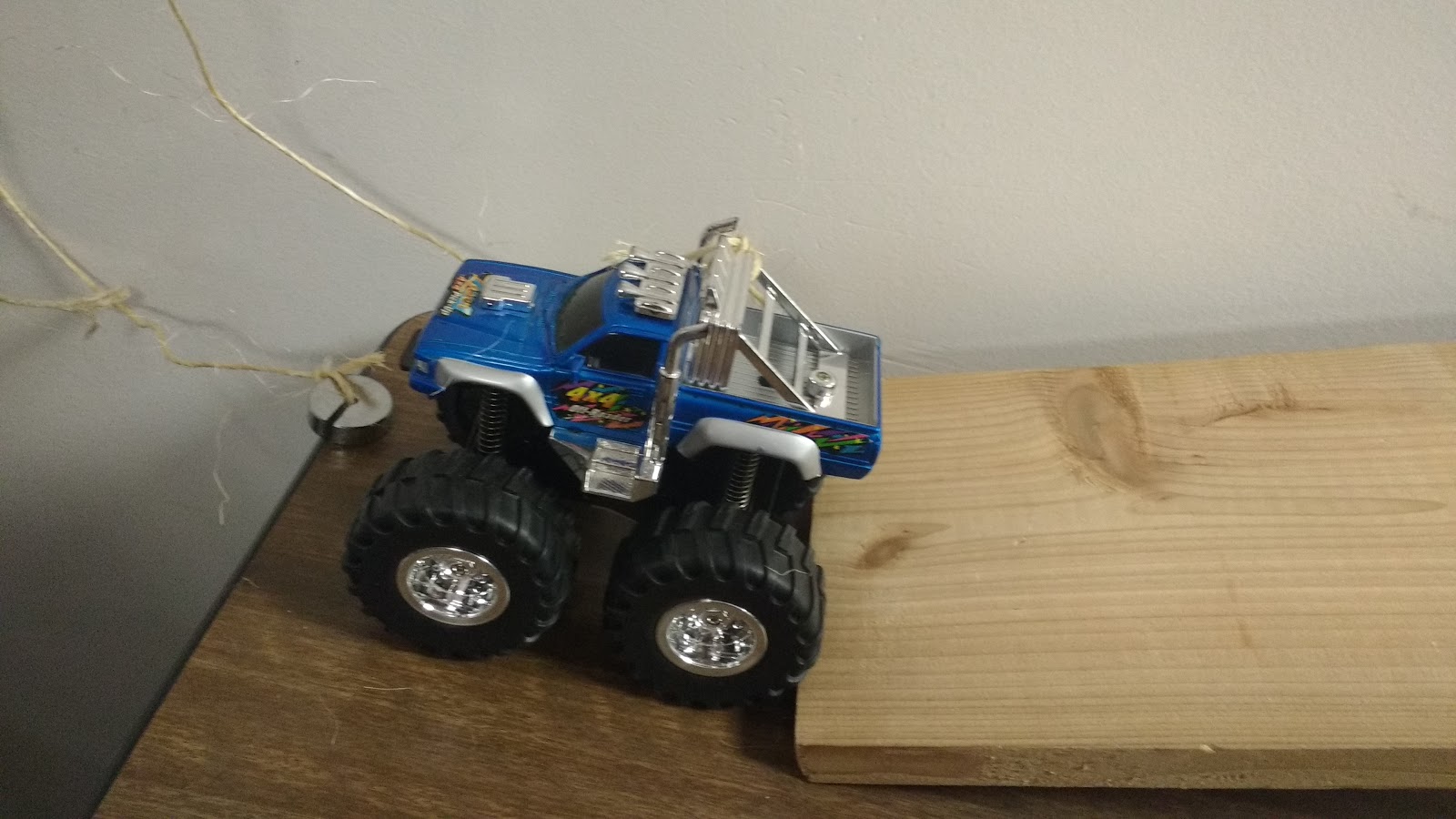
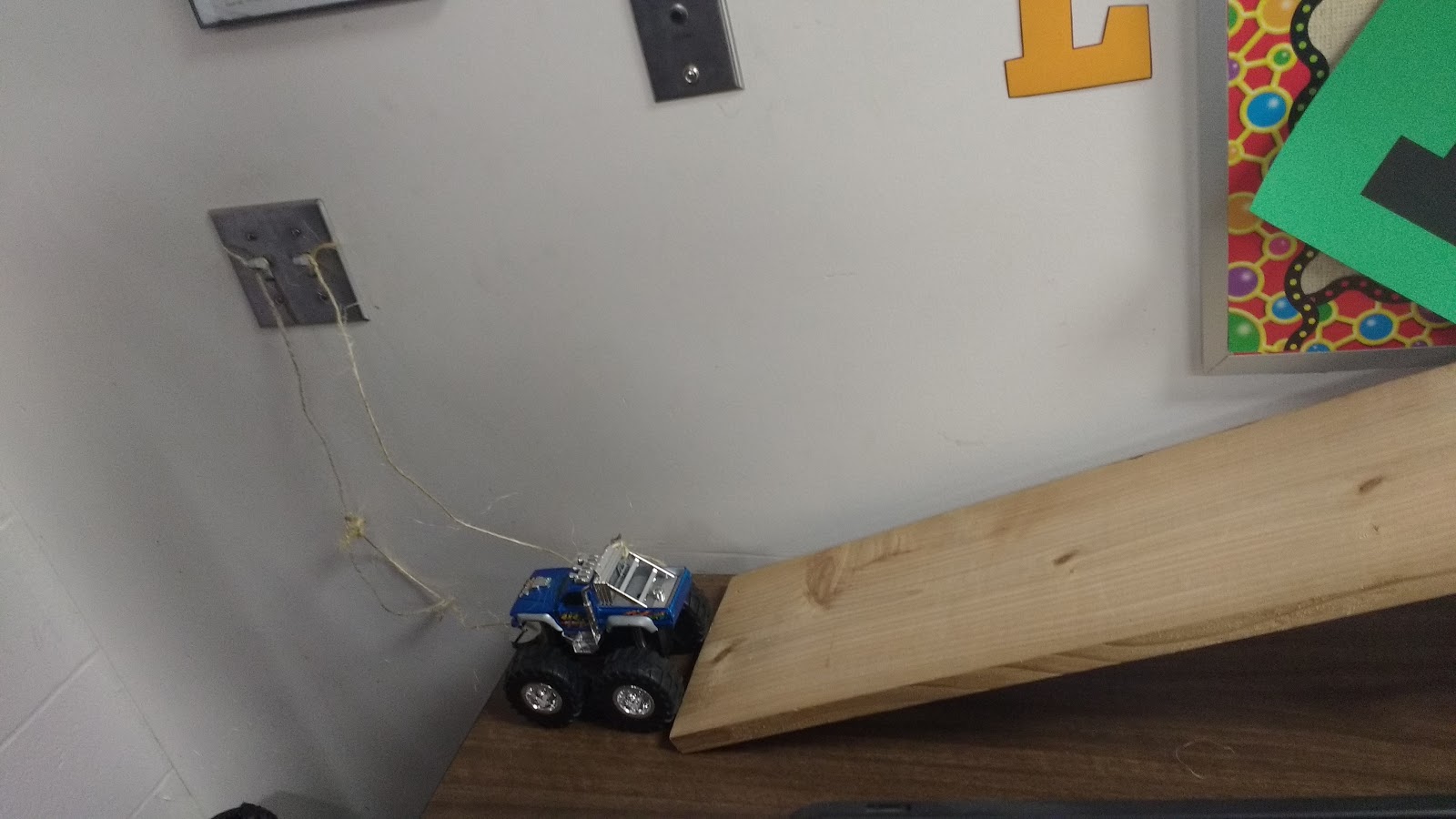
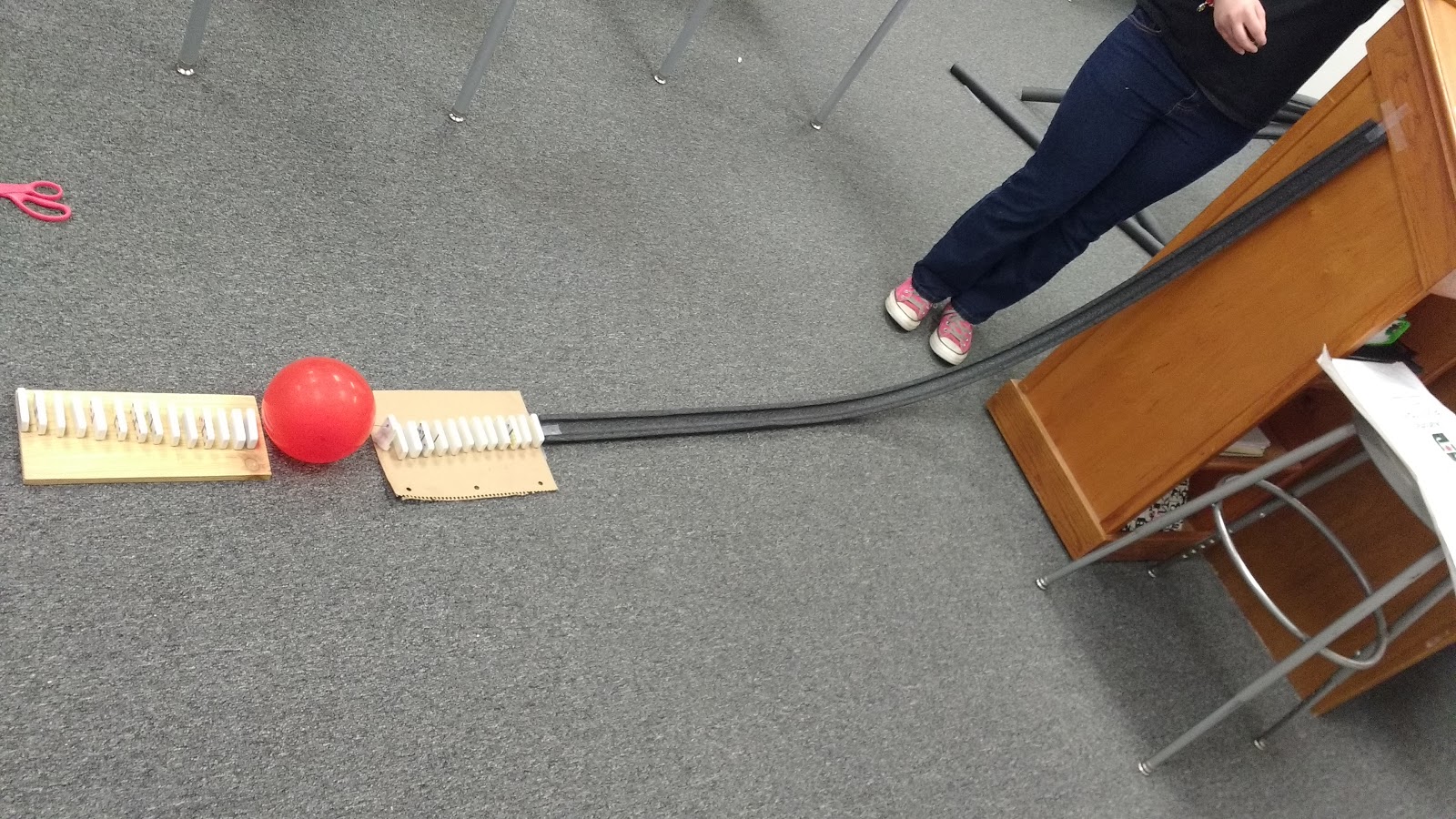
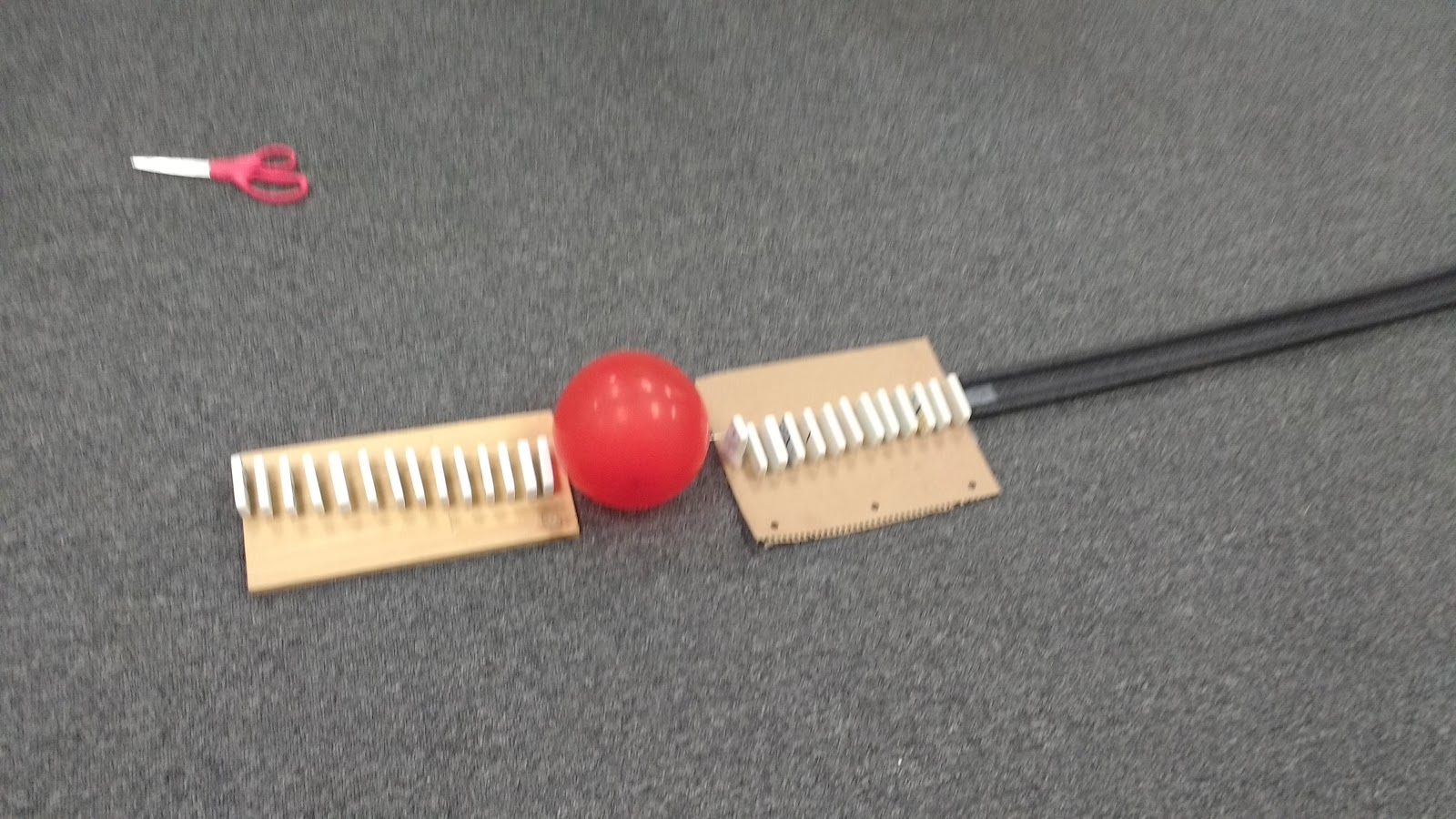
April 5, 2017 – Goodies from the Makers of Tenzi
Today I want to give a shout-out to the awesome creators of Tenzi! After I tweeted and blogged about using Tenzi in my classroom to practice finding measures of central tendency, I received an awesome package in my mailbox. Here’s what I received:
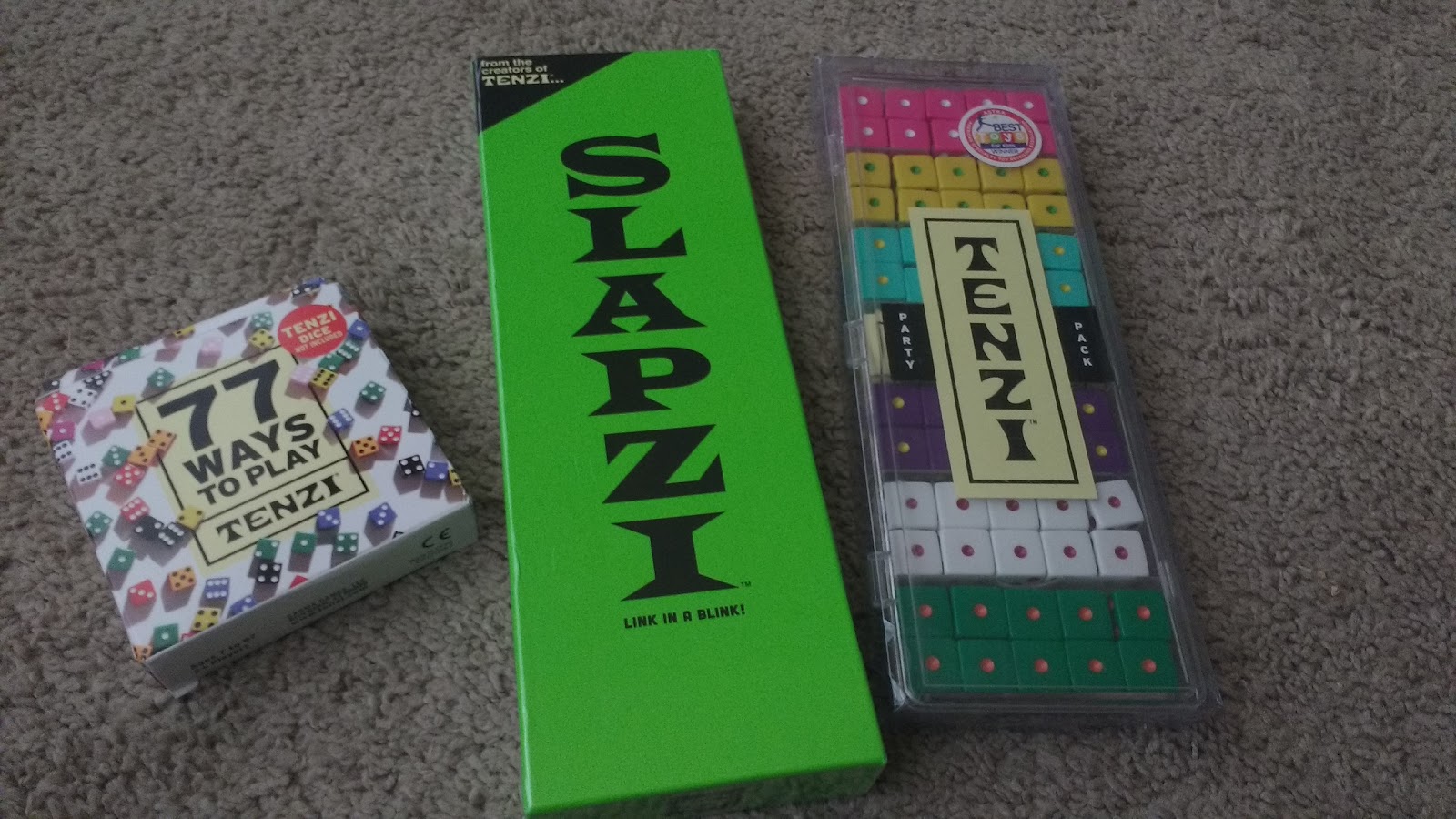
Tenzi Party Pack – I received the original Tenzi set for four players for either Christmas or my birthday. So, this is the perfect addition to my Tenzi collection. The party pack includes dice for up to six players at once.
77 Ways to Play Tenzi – This deck of cards provides 77 different ways to play Tenzi. One of the great things about Tenzi is that there are SO many ways to play. I love that you can use this deck to change up the game from round to round. Just flip over a new card and follow the directions. This keeps the game from getting monotonous without requiring the players to come up with new ideas during the game. I even used some of the cards from the deck to plan my lesson for tomorrow on comparing data displays in Algebra 1.
Want a sneak peek at tomorrow’s lesson?
Students will circulate around the room and play one round each of nine different Tenzi variations. Students will record the number of rolls it took them to complete each variation and mark it above the number line to create a dot plot.
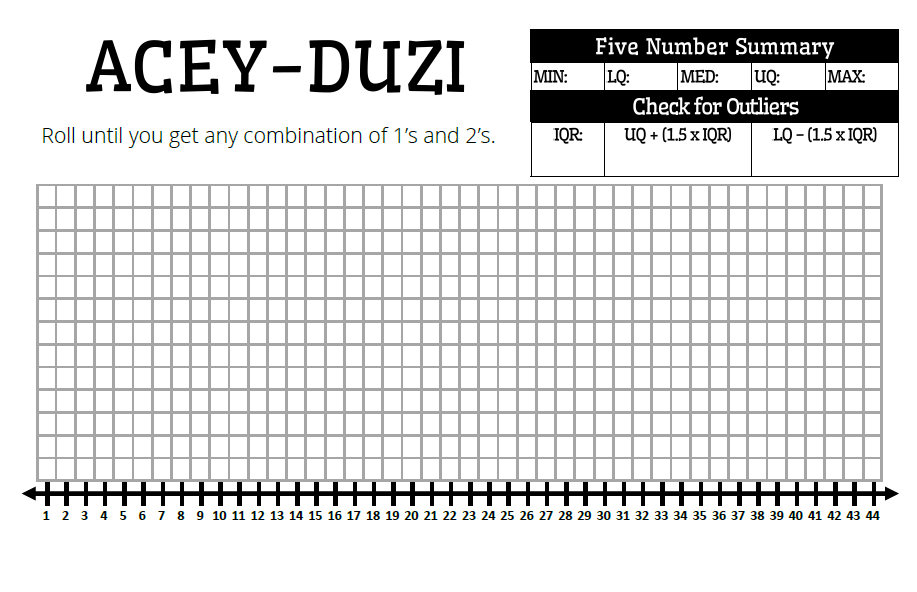
Once all the data is collected and dot plots are created, students will break into groups. Each group will get the data sheet from one of the variations. Groups will find the five number summary, IQR, and check for outliers. Then, each group will create a box-and-whisker plot BELOW the number line.
Students will make predictions about the similarities and differences between the variations before we begin collecting data. Then, students will write statements comparing the data sets after we finish making the box-and-whisker plots.
So excited!
Slapzi – I had never heard of the game Slapzi before receiving it in the mail. Given my love for Tenzi, I fully expected to love this game. And, it did not disappoint! My husband and I played the basic version of the game one afternoon shortly after receiving it. I think in the future we’ll play one of the more advanced versions to make things a bit more difficult.
The great thing about this game is that it’s super easy to learn. (I sound like I’m describing Tenzi so far…) Each player gets five double-sided picture cards. You lay your five cards out in front of you with the side of your choice facing up. The stack of description cards is kept in the center of the table.
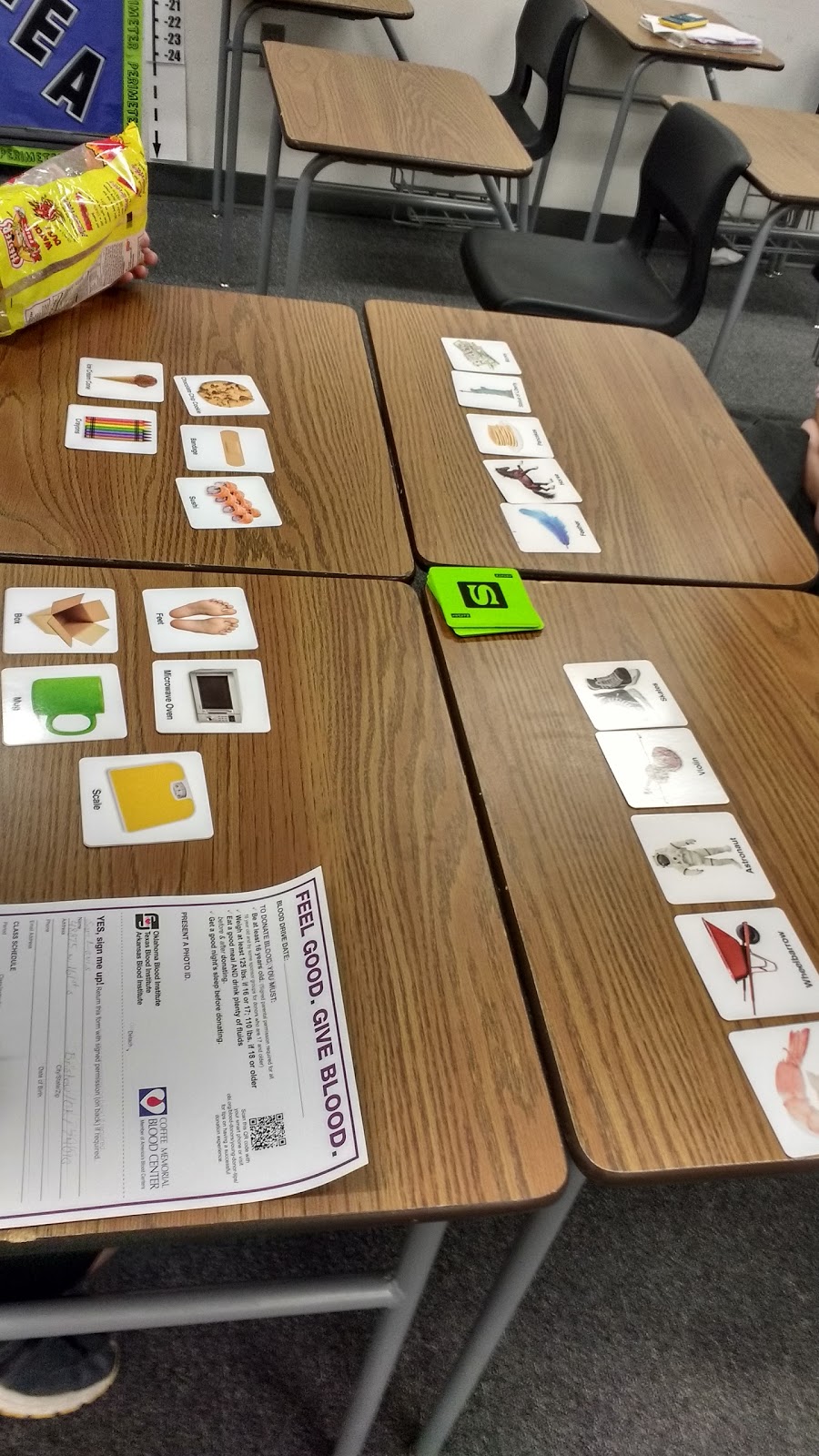
One player flips over a description card. Each player looks at their picture cards to try to find a picture that matches that description. The first player to “slap” their picture card on the description card gets to leave that card in the pile. The goal of the game is to be the first player to get rid of all of their picture cards.
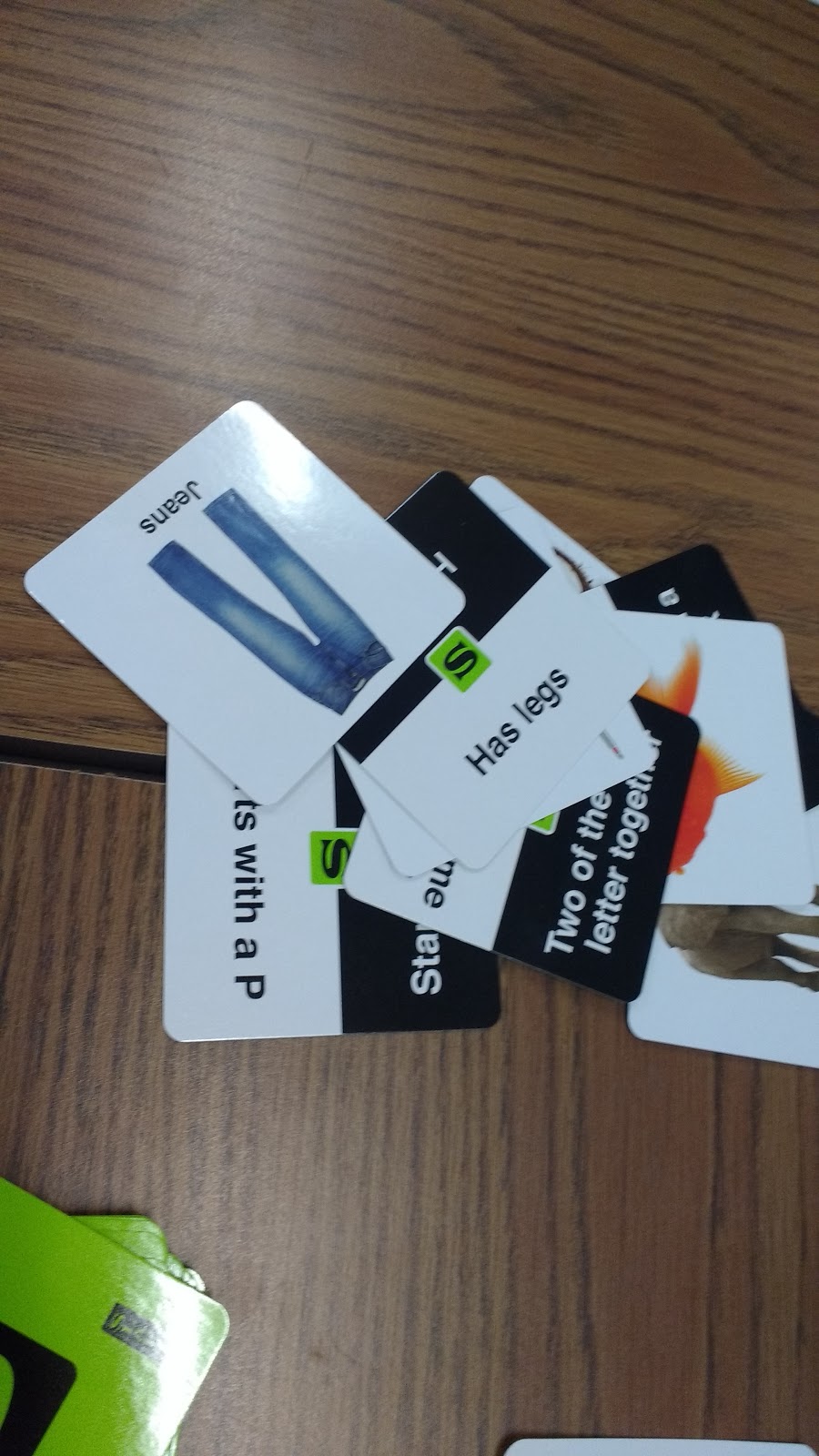
The game play is simple, but the competition is fierce! If the majority of players agree that the card you played does not match the category, then you have to take back your card plus an additional penalty card.
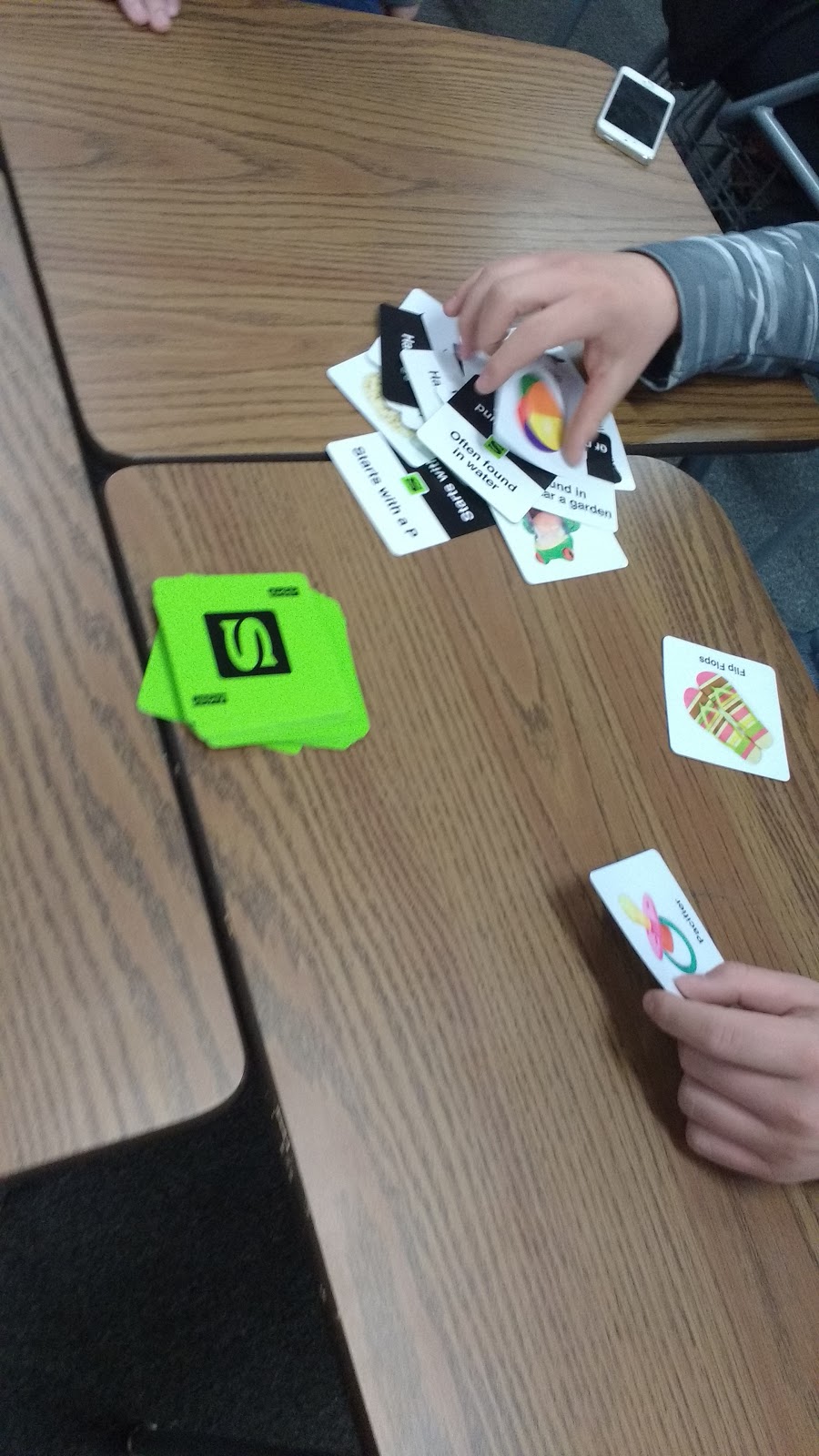
I had a couple of instances last week where so many of my students were absent in a class period that we couldn’t move on with the planned lesson. We played Slapzi instead, and my students LOVED it!

I constantly heard them say things like “This is fun! You should let us play this again!” Anytime you can entertain a teenager with something that doesn’t involve the cellphone in their hand is a winner in my book!

All of the classes I used this game with had seven or less in attendance. Students played in two groups. I gave each group half of the picture cards and half of the description cards. After a few rounds, the two groups would switch picture and description cards to keep the game fresh.
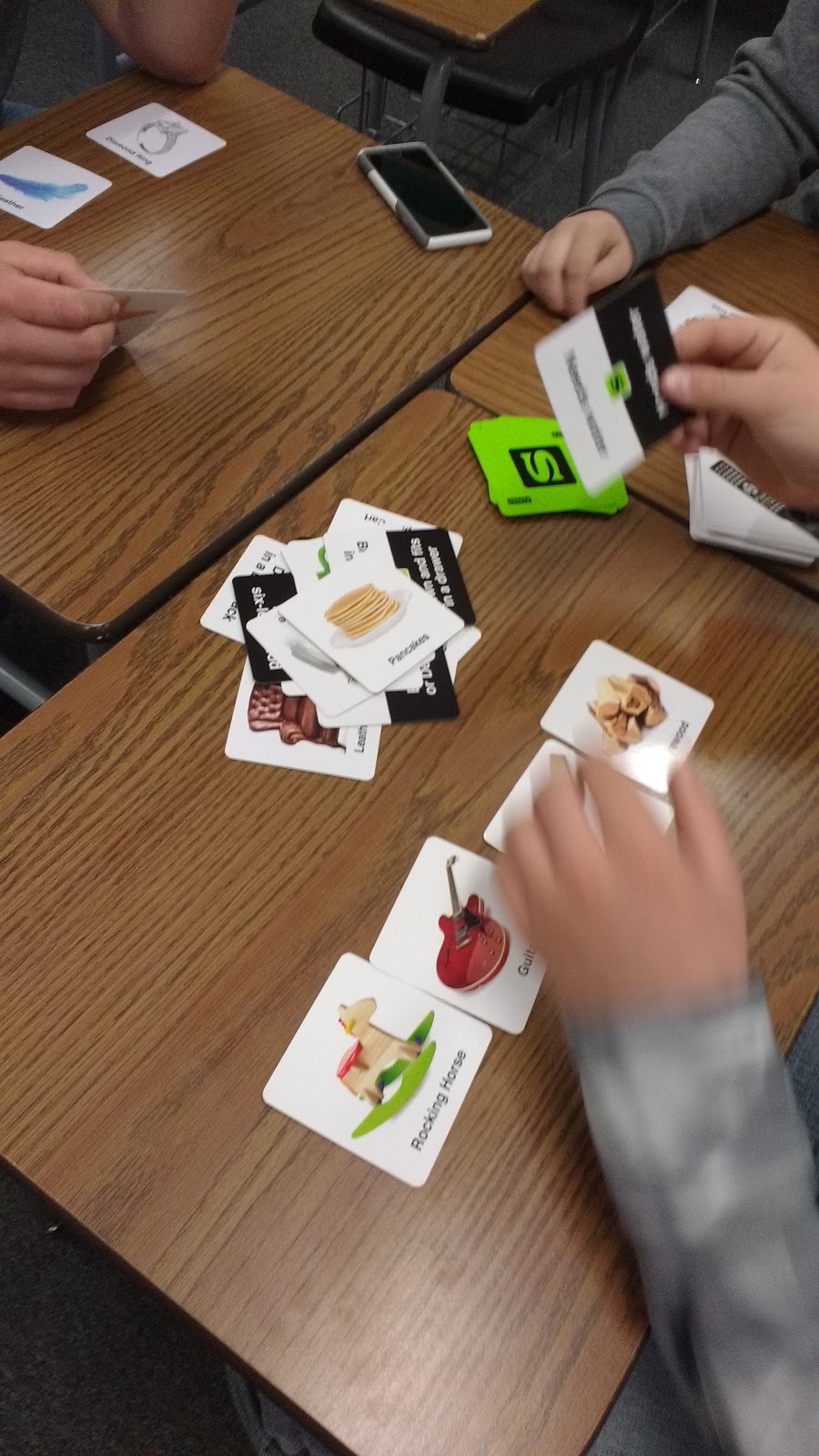
To the makers of Tenzi, thank you so much for the package of goodies! My students and I greatly appreciate them! Thanks for making great games that are perfect for using in my classroom!
April 6, 2017 – Things Teenagers Say Volume 47
Join me today for Volume 47 of Things Teenagers Say. This is my regular round-up of the crazy and memorable things I hear my students say in class.

Student 1: I haven’t had data in two months.
Student 2: I haven’t had data in two years.
Student 1: I would kill myself.
—
Student 1: If I weighed 900 pounds, I would be really good at football.
Student 2: You wouldn’t be able to run if you weighed 900 pounds.
Student 1: You don’t have to run in football!
—
Things said while students were playing Slapzi.
You can roll an astronaut down a hill, but you don’t see people doing it!
Goldfish are NOT sold in hardware stores.
—
Student: I’m giving up on school.
Me: Why?
Student: This waking up thing is just too much.
—
He’s a good singer but for the wrong band.
—
Student: My mom is crazy.
Me: Two Nice Things.
Student: She has a nice daughter, and I like the color of her bedspread.
Note: Two Nice Things is probably the rule I enforce the most in my classroom. If students say something mean about someone else, they have to make amends by saying two nice things in return.
—
It’s like me and armpits. They freak me out. I HATE armpits.
—
You just spit all over my paper. You are going to switch papers with me now. I just have to take my name off of it.
—
A stick can’t swim, so it ain’t a fish.
—
Student 1: Ewww…there’s an open cough drop in my bag that got wet.
Student 2: Give it to me. I want it!
—
Hey Mrs. Carter! Have you ever seen a sicker pair of crocs?
—
Don’t judge my split ends.
—
Ready, Set, H2O!
—
If it rains at 2:00 p.m. I am getting away from you. You are cursed!
—
Some kid in my food prep class yesterday asked me the ingredients to a scrambled egg.
—
Now, don’t let your Angle Side Side show.
—
I had a toupee before I got my hair cut.
—
Student 1: *Sneeze*
Student 2: God Bless You.
Student 1: God doesn’t bless demons.
—
If you drop out of high school when you’re 18, your family will most likely shun you.
—
I’m playing Connect Four because my life is sad.
—
Why would you use a lighter to light a match?
—
Student 1: It’s hotter than that place.
Student 2: Hell?
Student 1: No, heaven.
Student 2: Heaven?
Student 1: I said it’s hotter than that place.
—
Student 1:What’s Easter?
Student 2: Really?
Student 1: Oh. It’s that holiday where you sit around the tree and trade presents.
Student 2: That’s Christmas.
Student 1: I thought Christmas was when you went door to door and asked for candy.
—
Student 1: How far do negative numbers go?
Student 2: Probably as far as positive numbers go.
Student 1: How far do they go?
—
Can you get liposuction on your finger? Because my finger is so fat.
April 8, 2017 – New Timers Thanks to a Generous Donor
Earlier this semester, I had the opportunity to attend a Steve Spangler workshop at the Science Museum of Oklahoma. During the workshop, one of the teachers stood up and told us that we should all make sure we joined a facebook group called “Oklahoma Education Needs/Donations.” I’d never heard of this group before, but I made a point of checking it out when I got home. If you’re reading this from a state that is not Oklahoma, you might not realize the terrible state of education funding in the state. Check out this graphic:
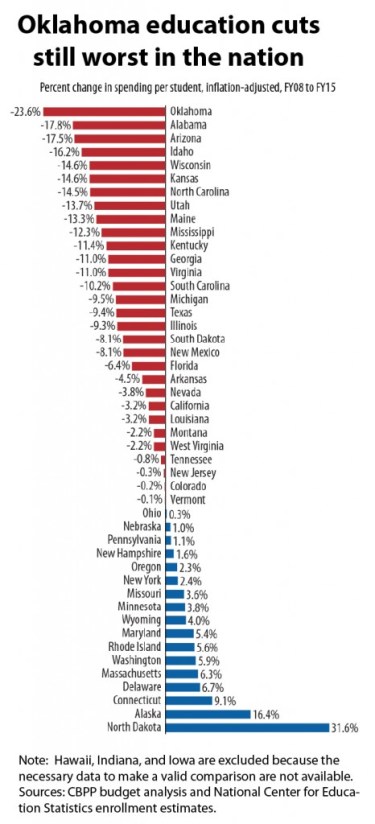
Oklahoma schools continue to have their funding from the state cut due to revenue failure after revenue failure. The money for basic classroom needs just isn’t there anymore. The goal of the facebook group is to connect teachers who need classroom materials with those who can help meet those needs. My Algebra 1 students are currently working through our unit on Data Analysis. We have been using three MyChron timers that I received for attending an OERB workshop.

These timers have definitely been well-used this year in my Physical Science class. But, three timers in a class of 20 or so students isn’t enough. I decided to post my need of timers in the Facebook group and see what happened. If my need wasn’t fulfilled, I would be no worse off than before.

A couple of days later, I got a message that a set of six timers had been purchased and would soon be delivered to my school. They were kindly purchased for my classroom by a family friend of our science teacher. Six MyChron timers arrived in the mail yesterday!
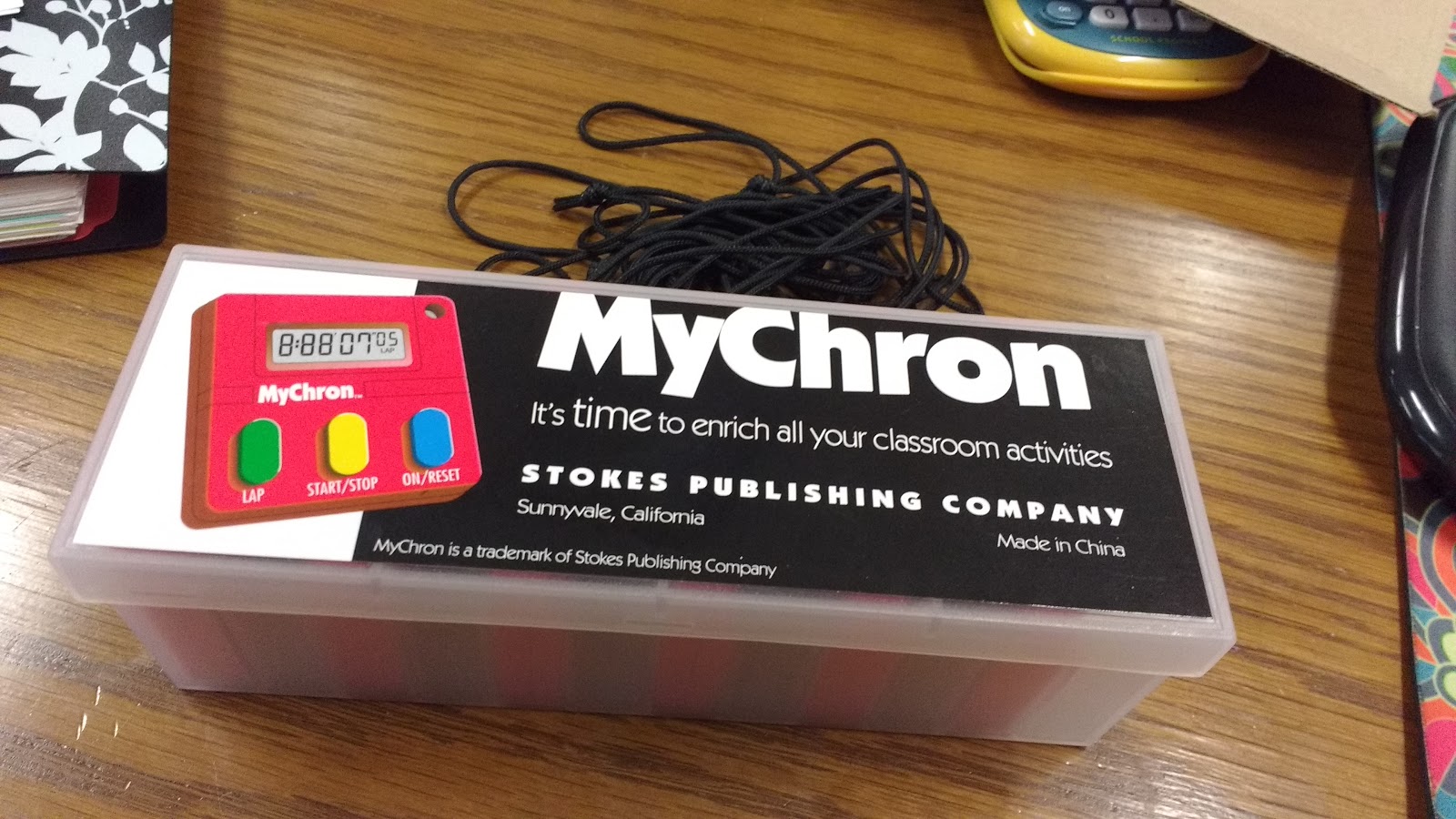
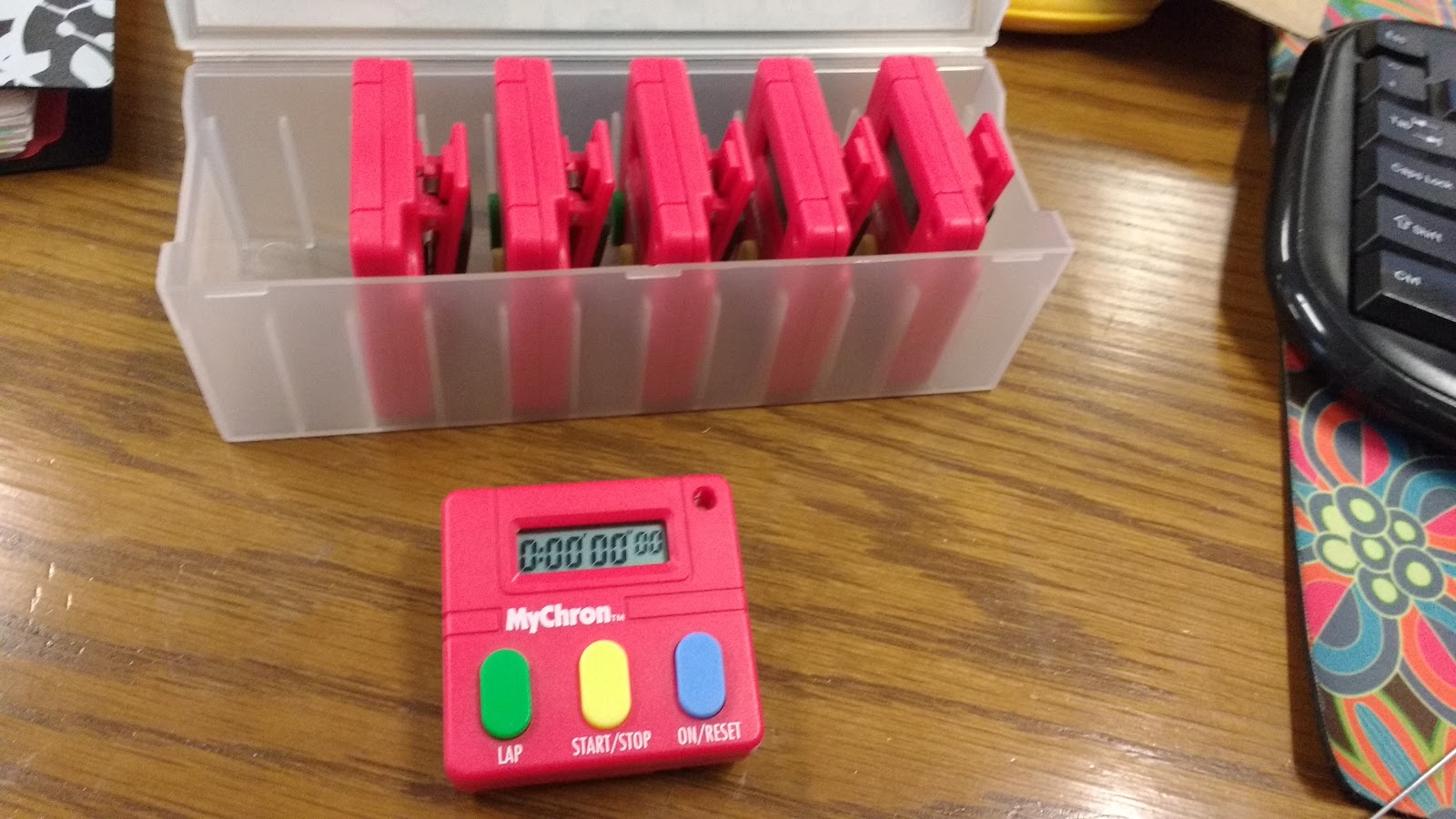
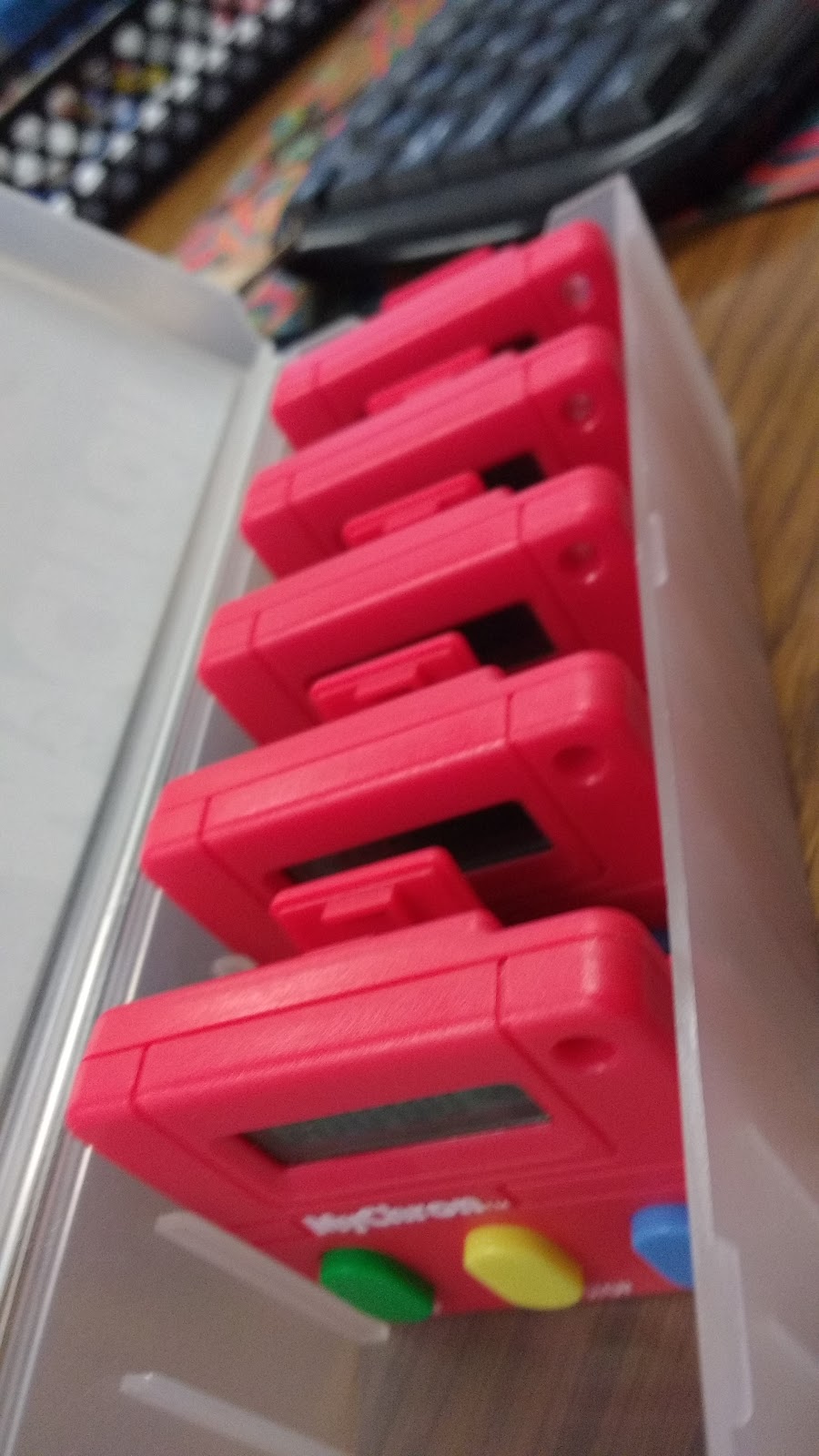
And, we were able to put them all to use today with a data collection activity in Algebra 1.
We measured how long it took us to find different items in a Highlights Hidden Picture Puzzle. Then, we made box-and-whisker plots of our data that we used to compare our hidden picture finding skills to those of our classmates.
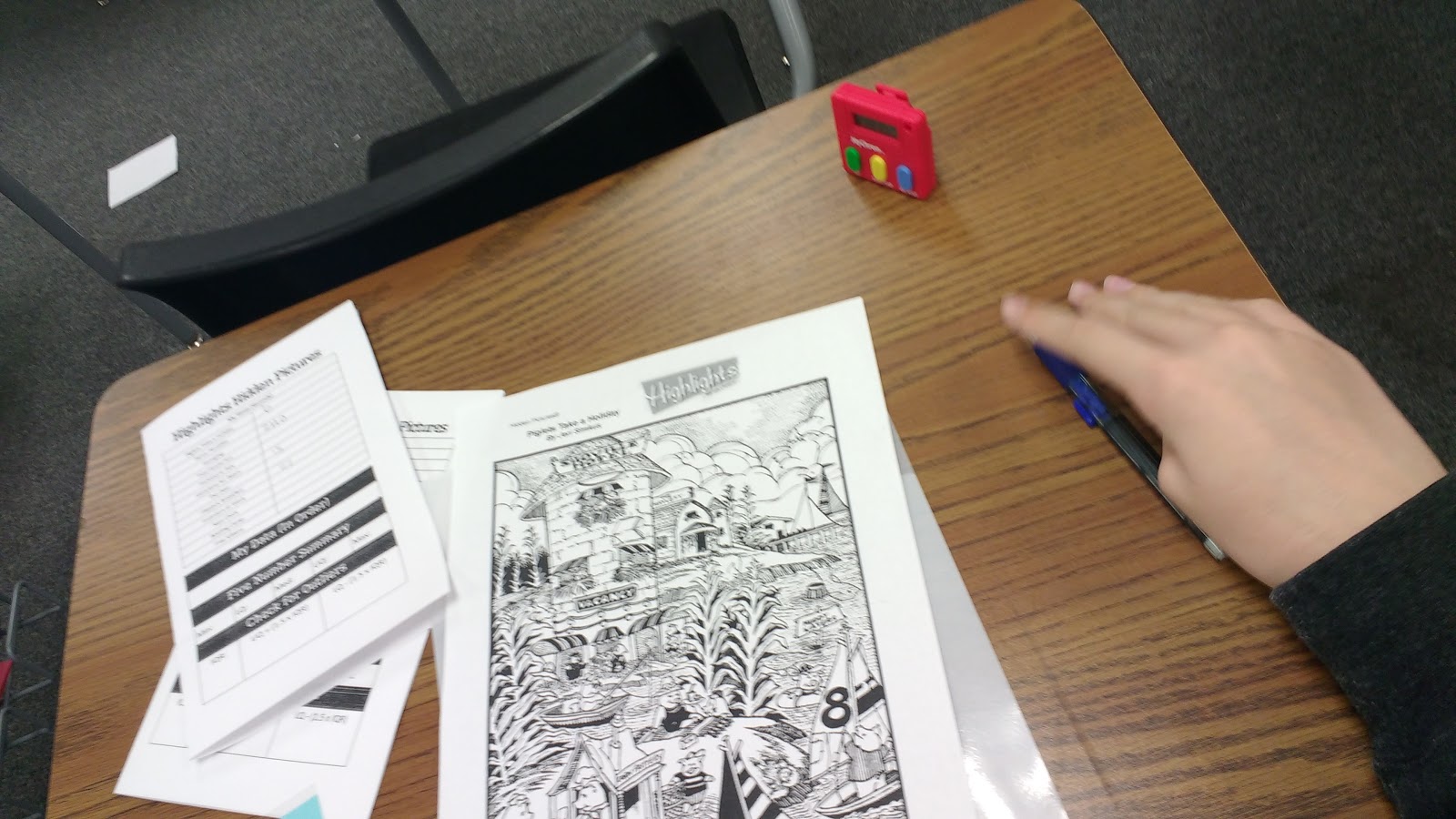
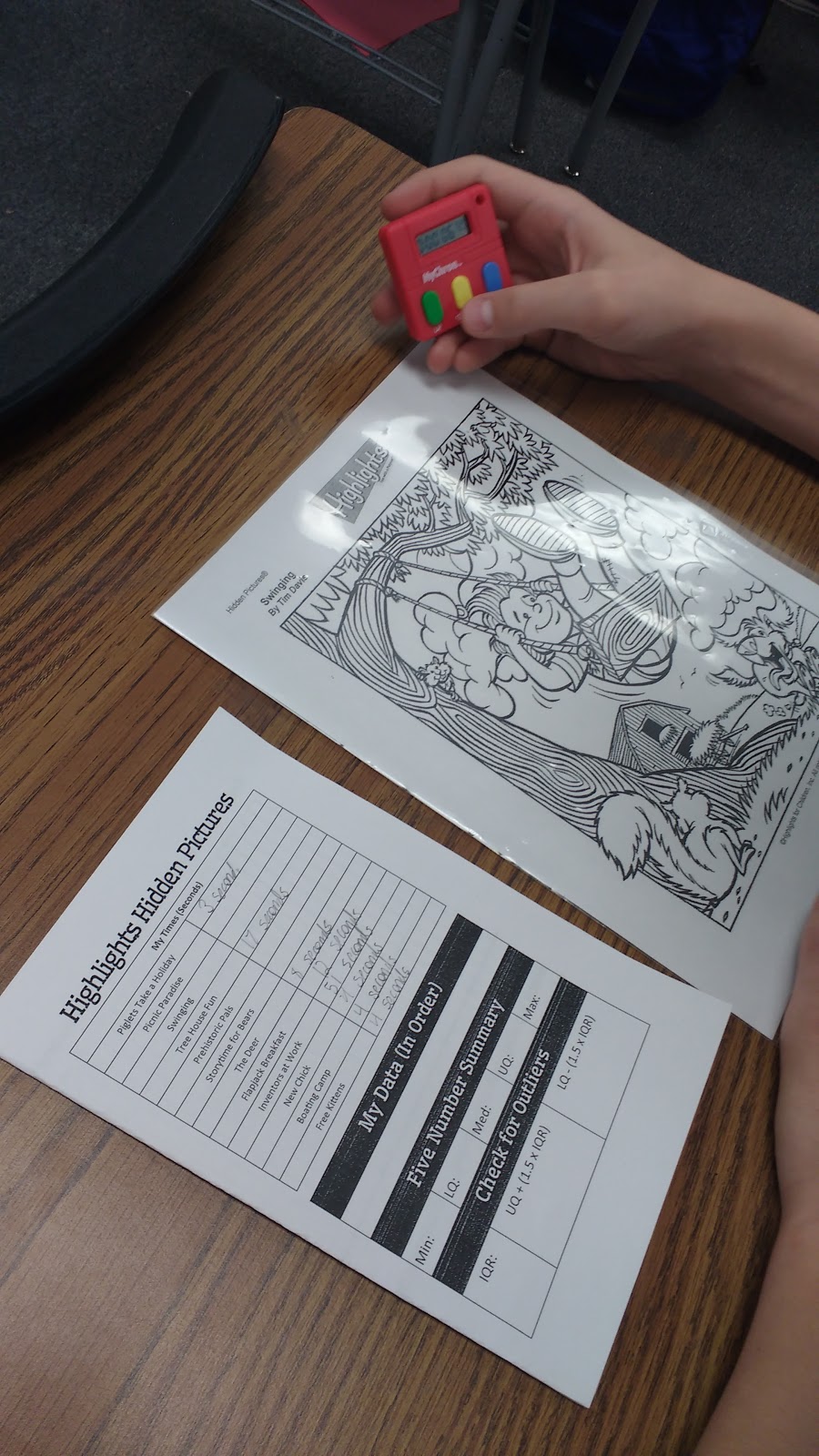
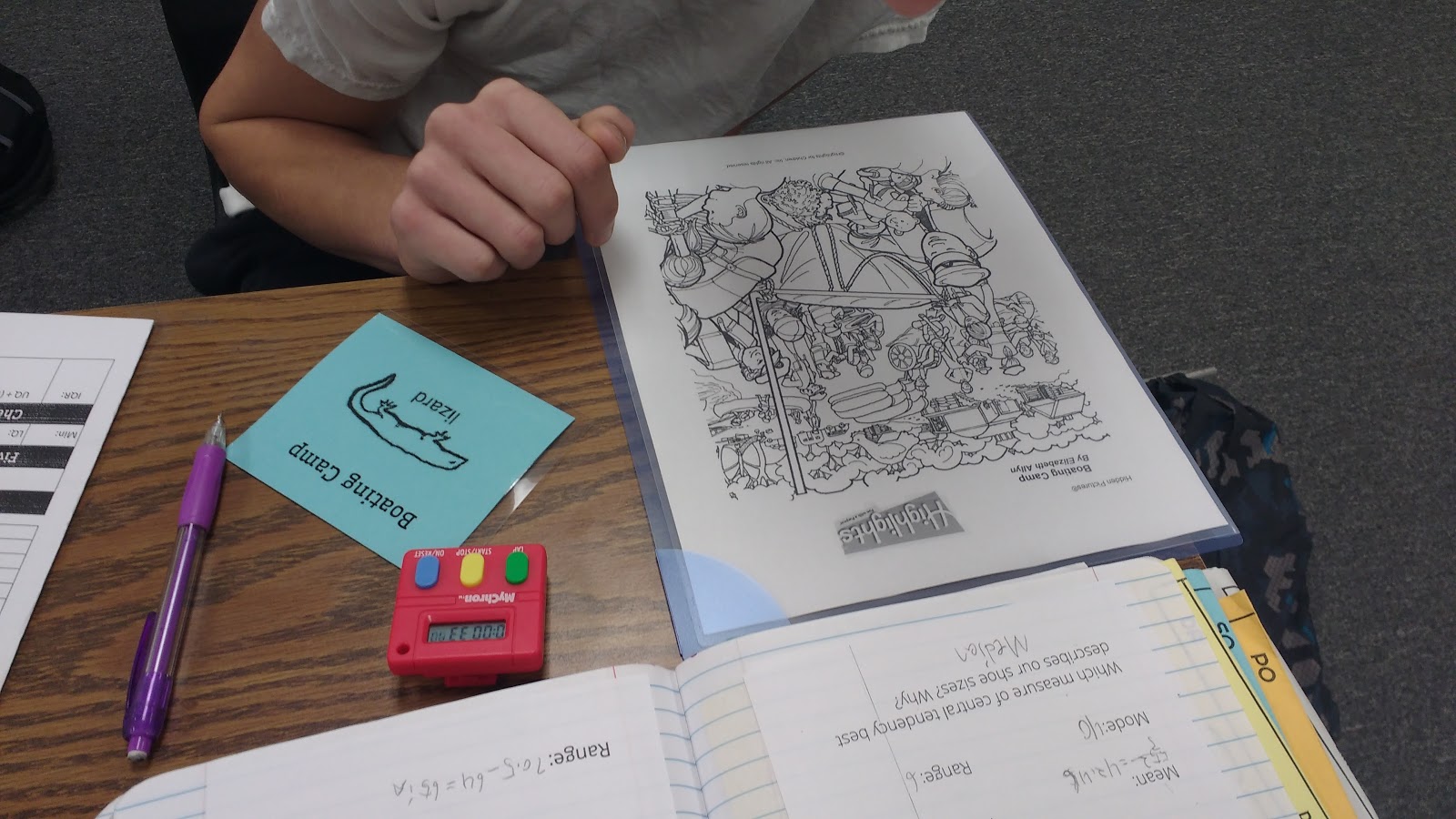
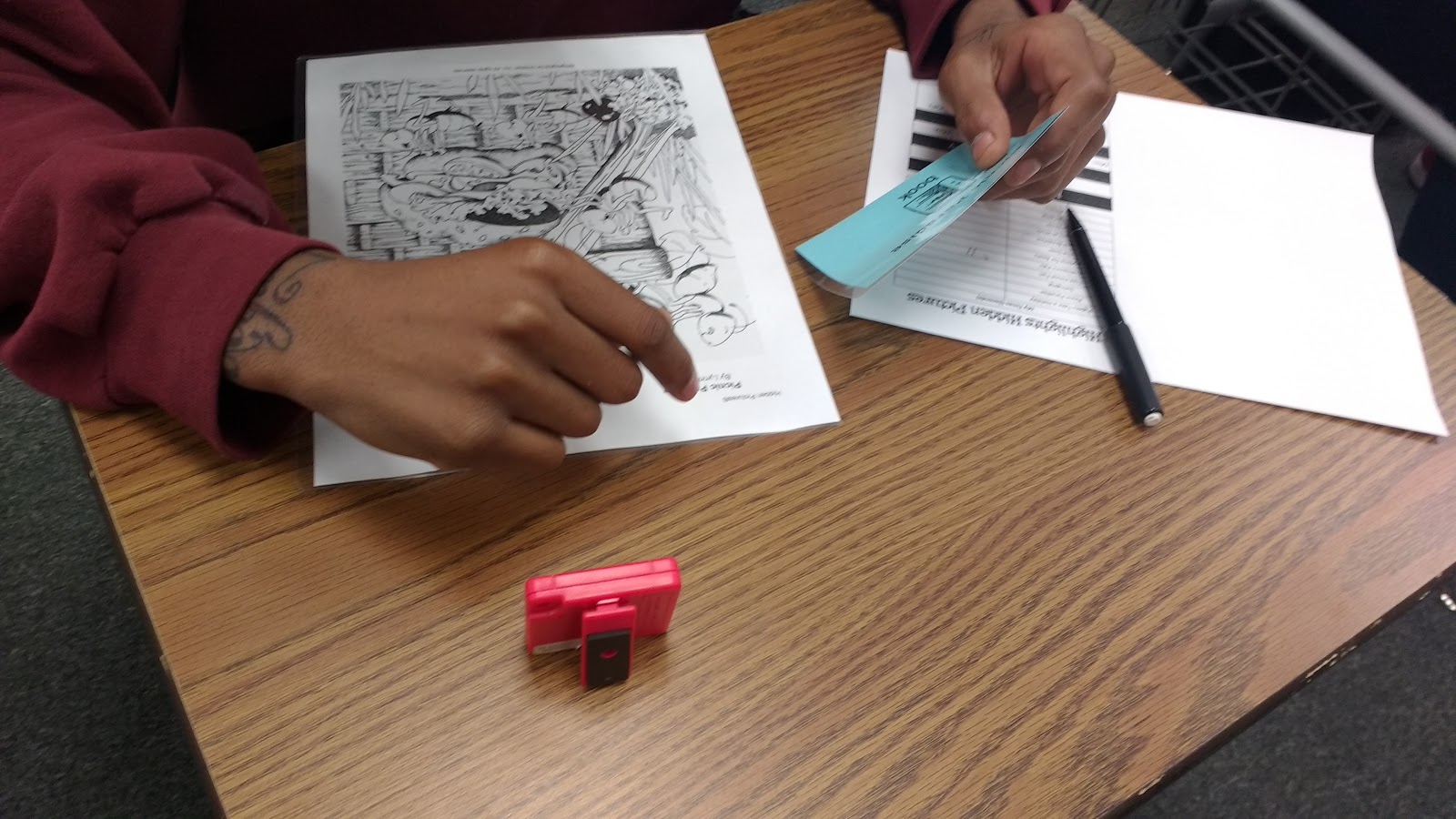
I’m so thankful that there are so many generous people willing to step up and help my students when those funding the schools are failing them.
April 10, 2017 – First Break Out Box Experience
Last week, our math teachers’ circle meeting allowed us to experience the world of breakout boxes. We were placed in groups of 6, and each group was given an envelope full of questions.
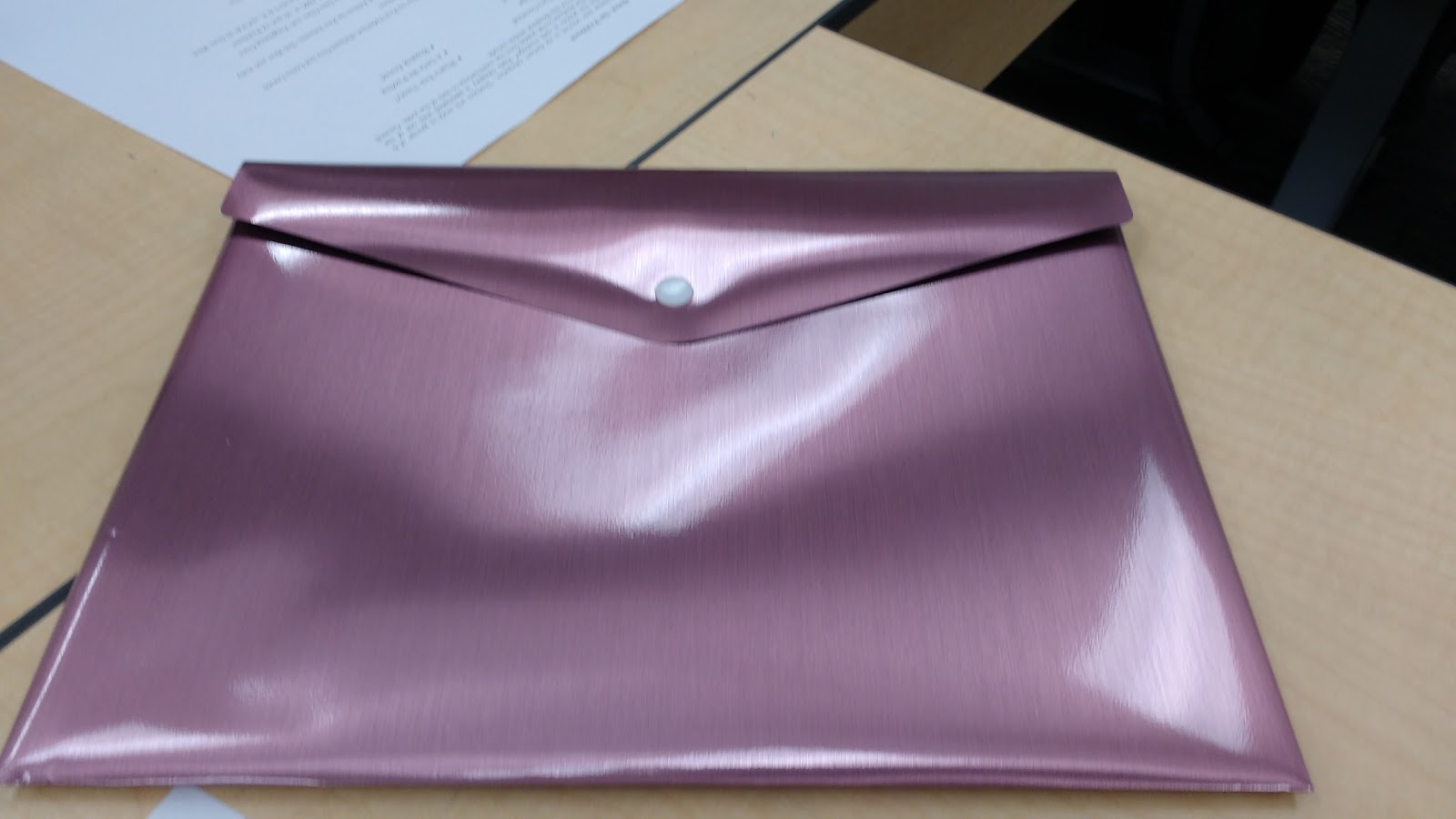
Here’s the box we were trying to break into.
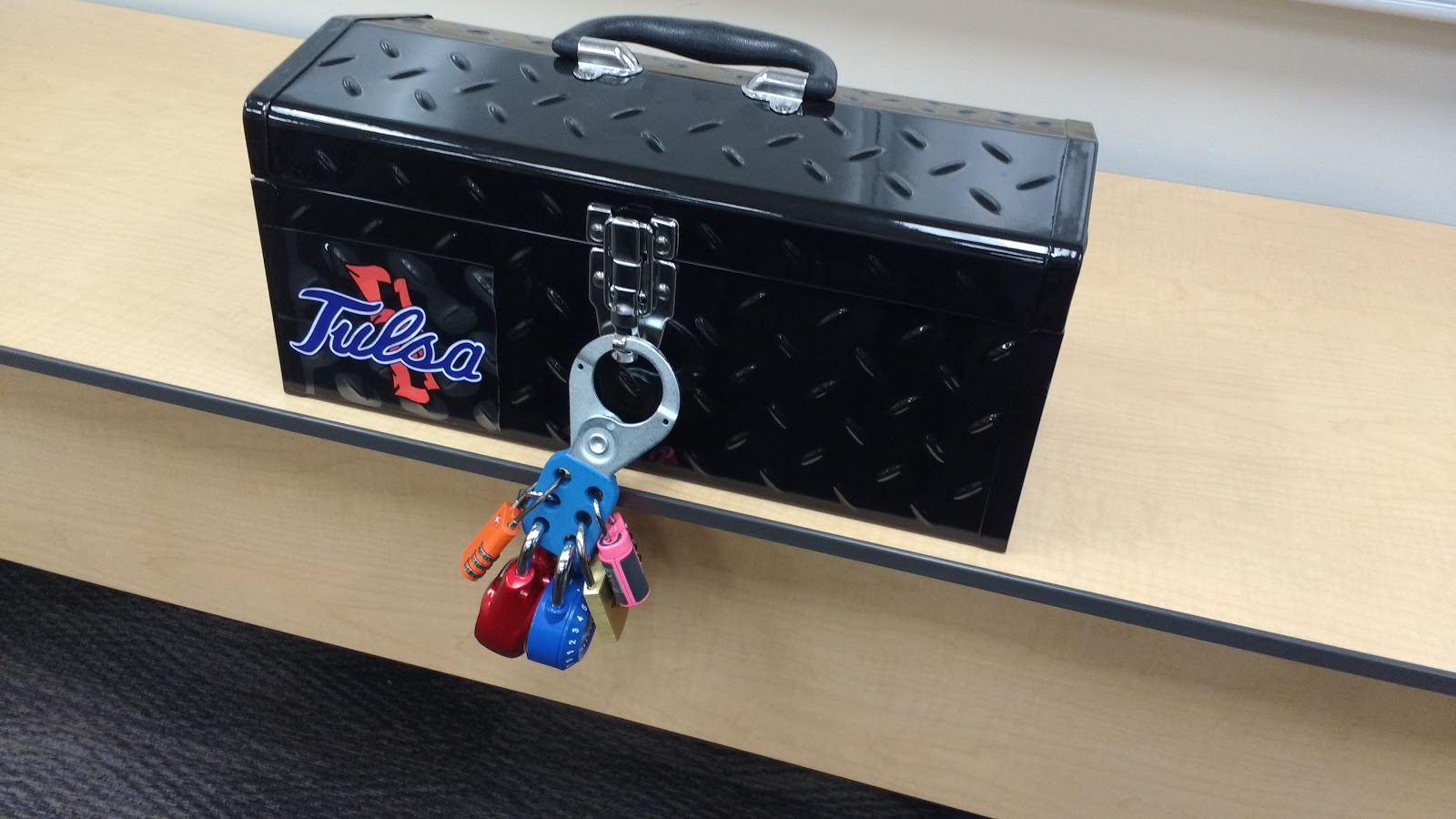
Close-up of the six locks we had to unlock:

After two hours of solving problems, my group had unlocked three of the six locks. This wasn’t the outcome we were hoping for, but I still really enjoyed the experience.
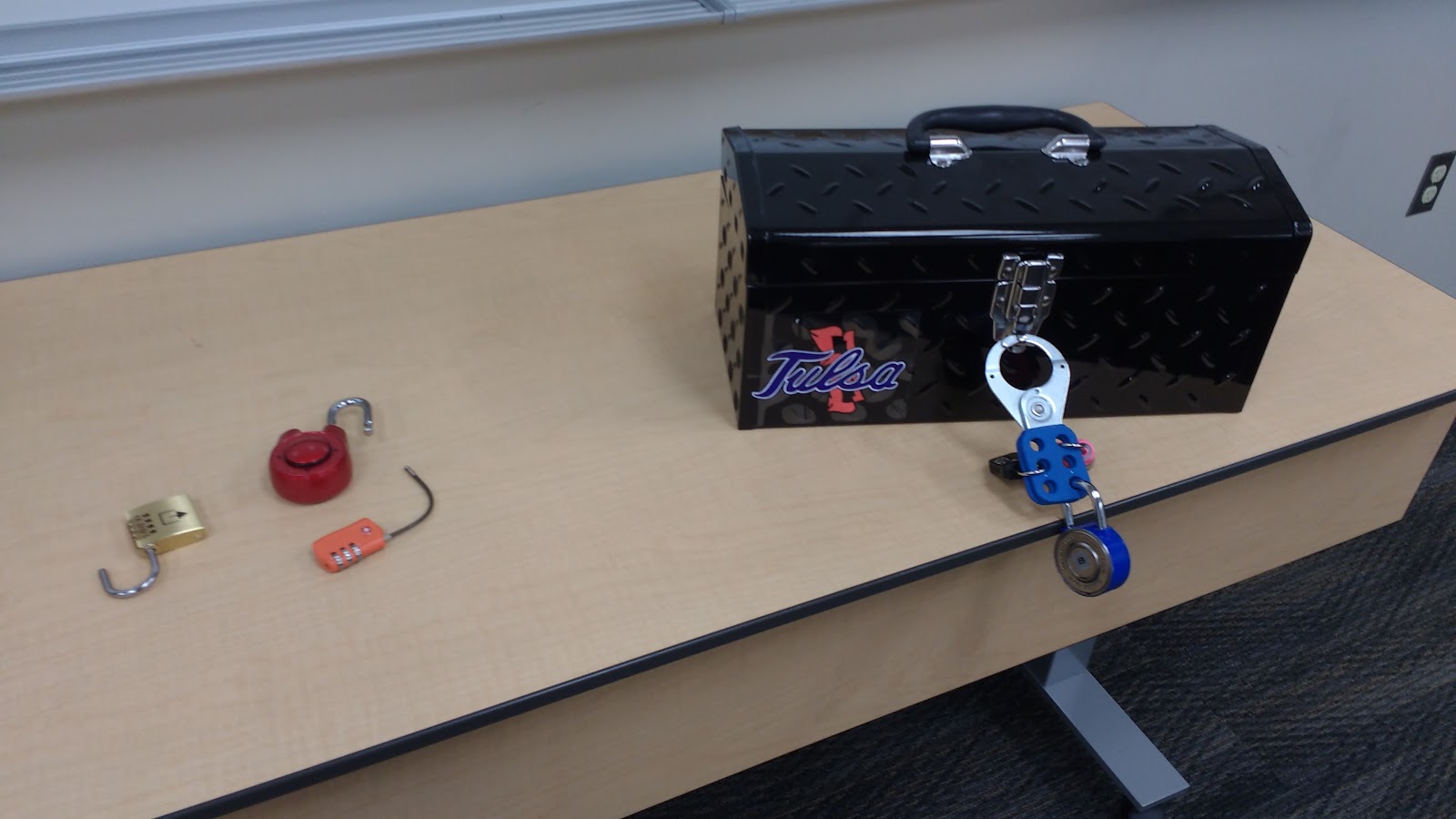
I liked the instant feedback I received about my answers based on whether the lock came open or not. I worked all evening on unlocking the pink lock. As you can see below, I was ultimately unsuccessful.
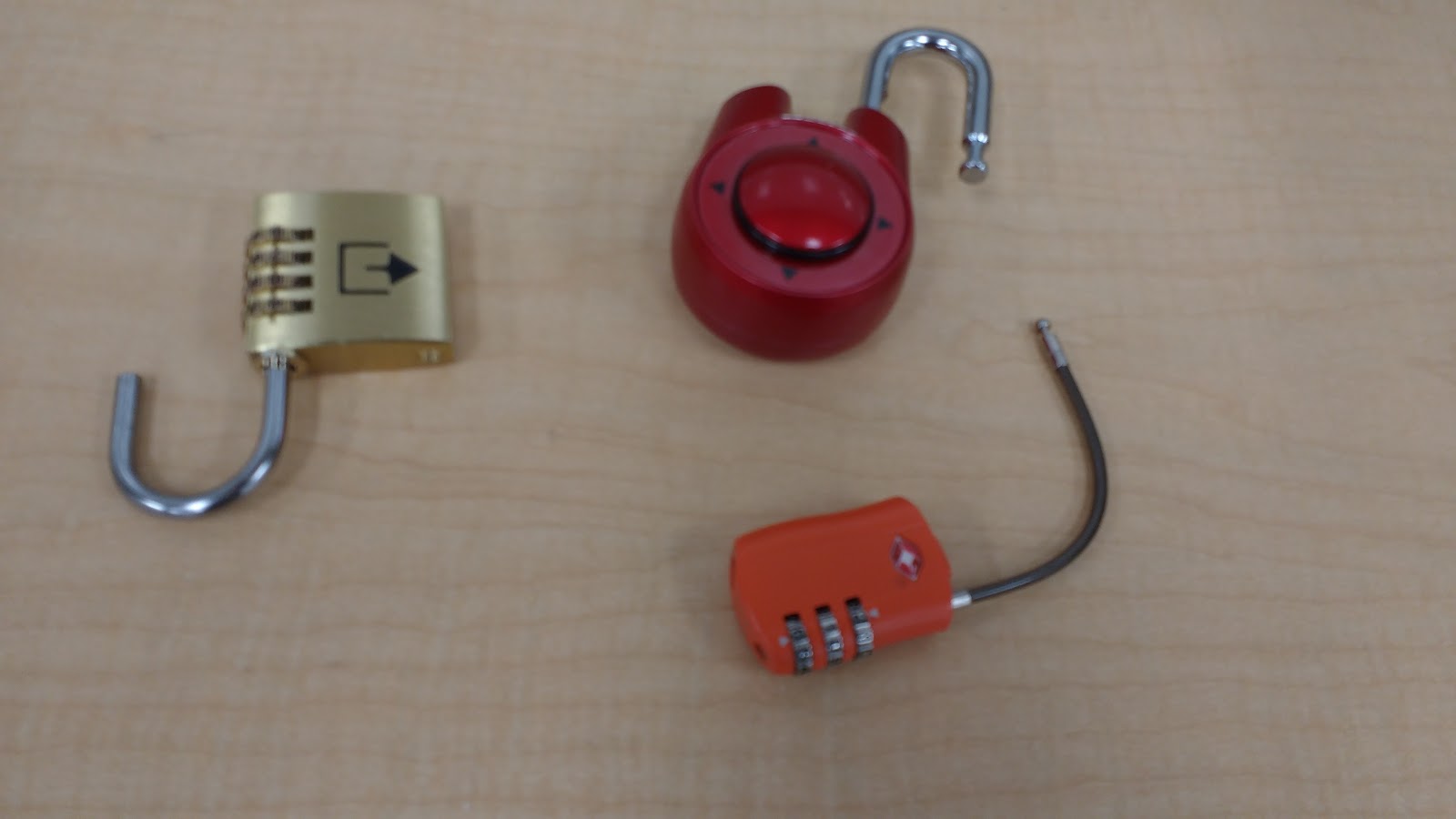
On the way home, my husband joked that these should be called “break in” boxes instead of “break out” boxes.
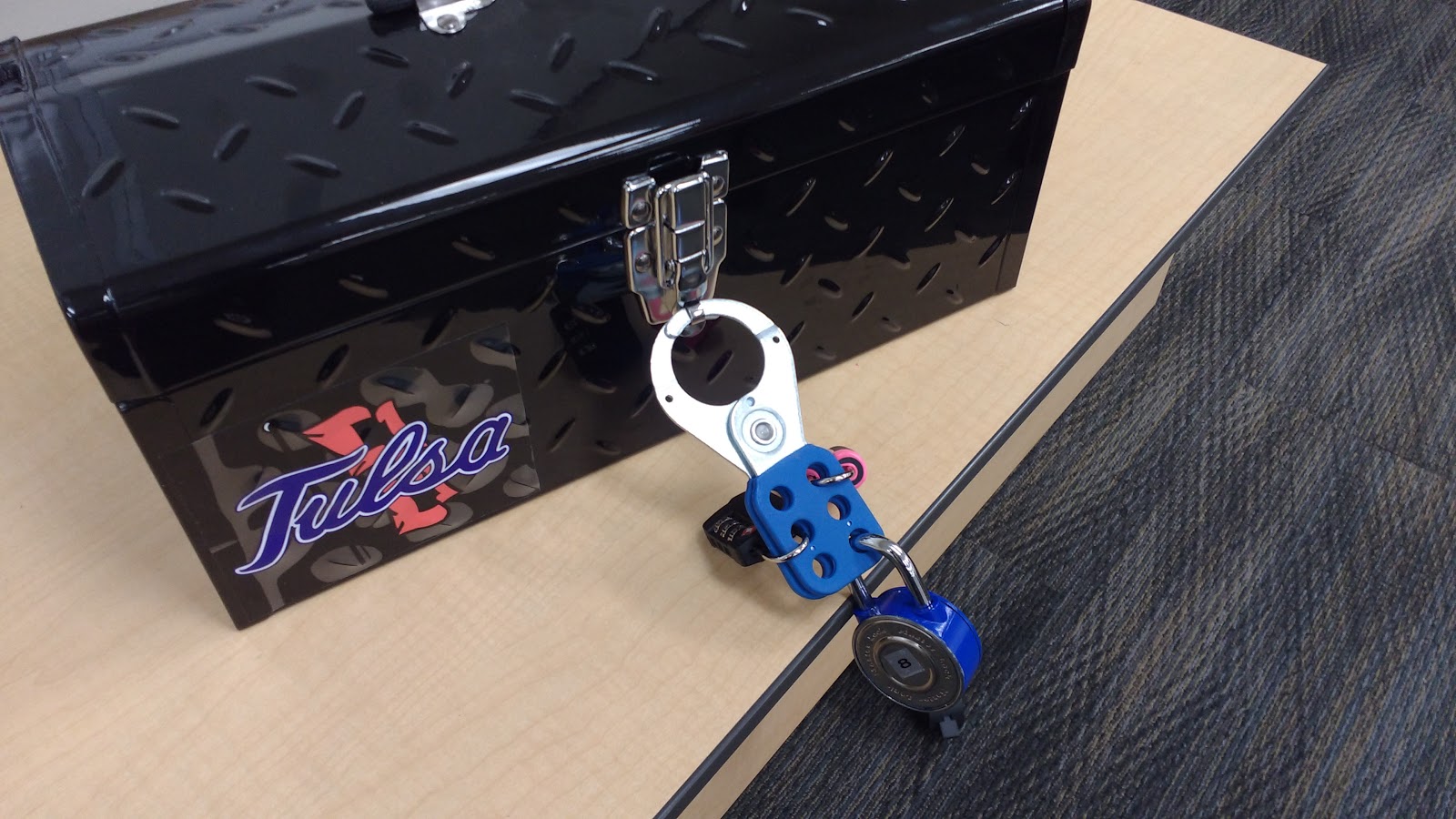
I’ve always wondered what it would be like to do one of these in my classroom. I’m so grateful for this opportunity to experience it as a participant.
Want to find out more about break out boxes? Check out Breakout EDU.
April 12, 2017 – Five Years: Where has the time gone?
When I graduated from college and received my teaching certificate, I thought that a five year certificate was a looooooooooooooooonnnnnnnnnnnnnnnnnnnngggggggggggggggg time. Well, it turns out that five years can go by in a flash! We still have one month of school left, but I just submitted the paperwork to renew my certificate so it will be good until 2022. Part of me thinks that that sounds so far away, but I know it will probably fly by just as fast.
I spent quite a bit of time last semester and early this semester studying for the chemistry certification test. I found out about a month ago that I passed! This wasn’t official until I filled out the paperwork today to add it to my certificate. I’m planning a blog post soon to share my method for studying for the chemistry certification test. I wanted to wait and make sure I passed the test before I shared!
Now it’s official. I’m certified by the state of Oklahoma to teach math and chemistry.

I wonder what the next five years will bring. I know I never could have dreamed of all the amazing things that have happened during my first five years in the classroom. Thanks to the #MTBoS for being there for the entire ride!
May 3, 2017 – FREE Explore Sound Activity Kit
This past fall, I tweeted about attending my first ever science teaching workshop with OERB. Andrew Morrison (a physics professor I interact with on Twitter) replied to my tweet to ask if I knew about a free kit for teaching sound that was offered by the Acoustical Society of America.

I didn’t know about it, so I thought you might not know about it either. For all my math teacher readers, please pass this post on to any science teachers or elementary teachers you might know that teach sound/acoustics as part of their curriculum!
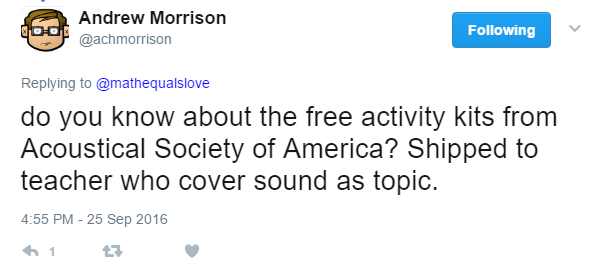
I visited the Acoustical Society of America’s website to check out the opportunity. If you teach acoustics/sound as a topic in your class, here’s the link to request your own free activity kit.

The free activity kits were out of stock at the time of my request, but within a couple of months, a giant box full of acoustics goodies were sitting on my desk.


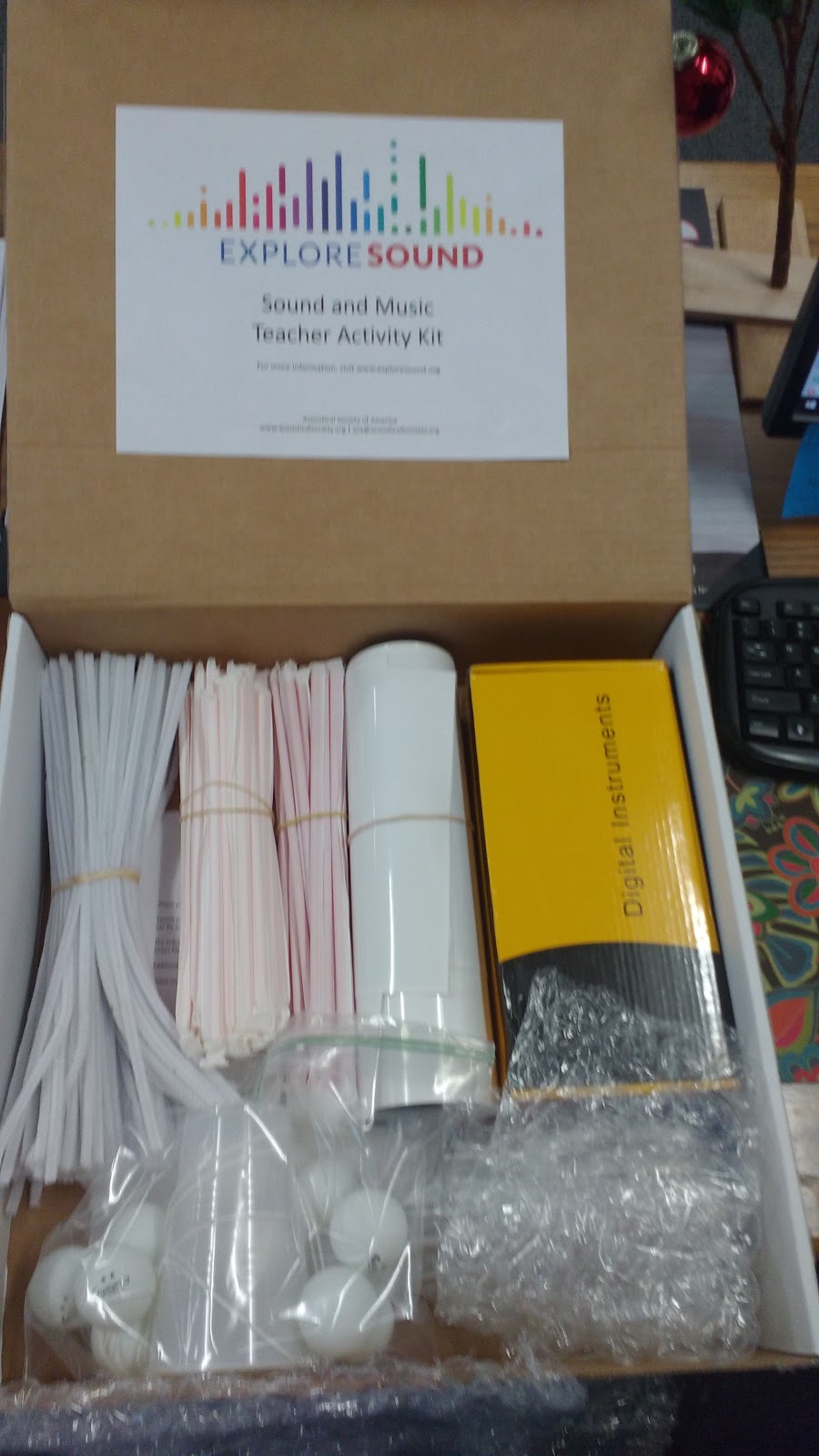
See how nice everything was packaged? Now that I’ve used the sound and music lessons with my physical science students, my kit doesn’t look quite so neat.
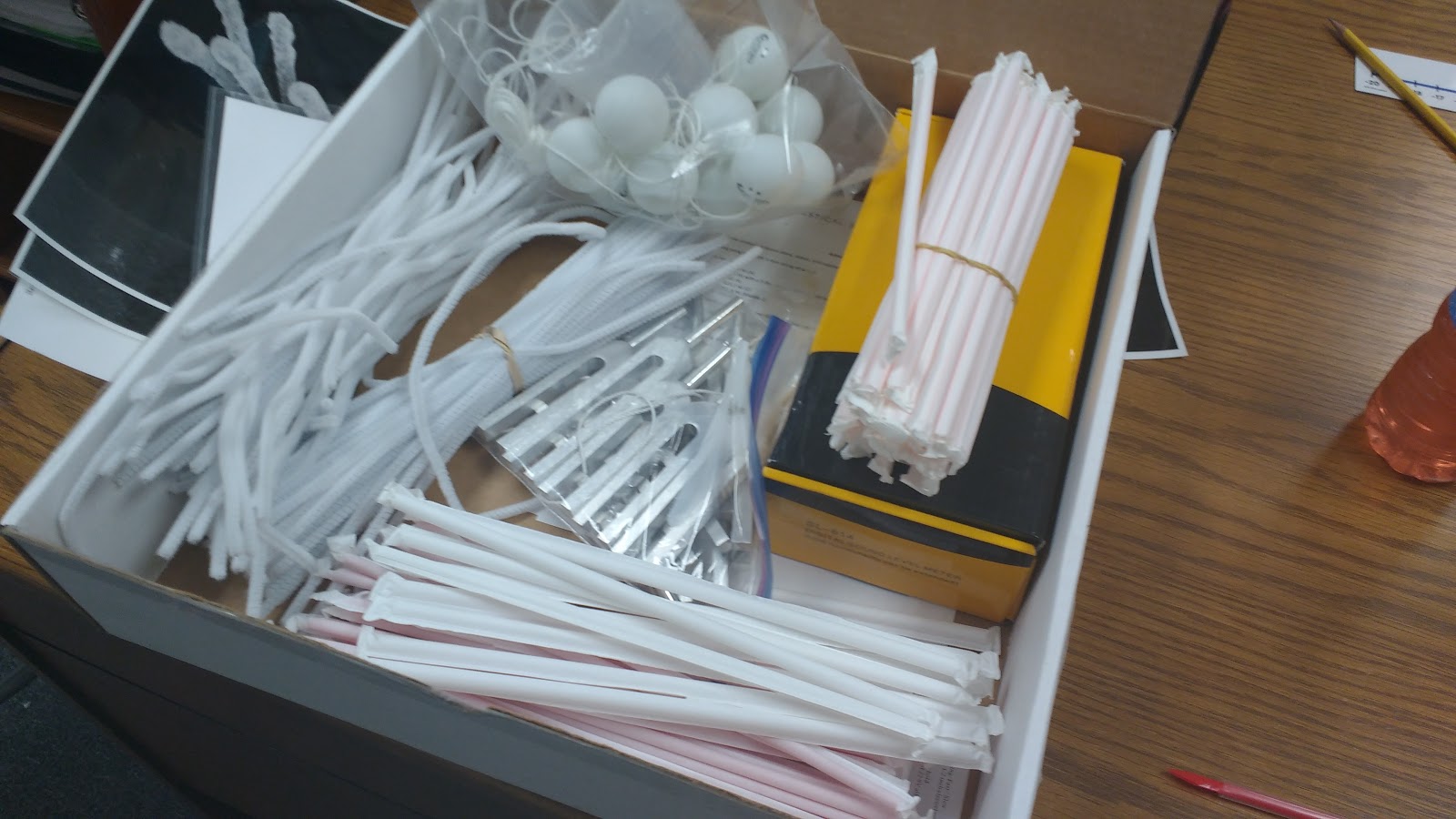
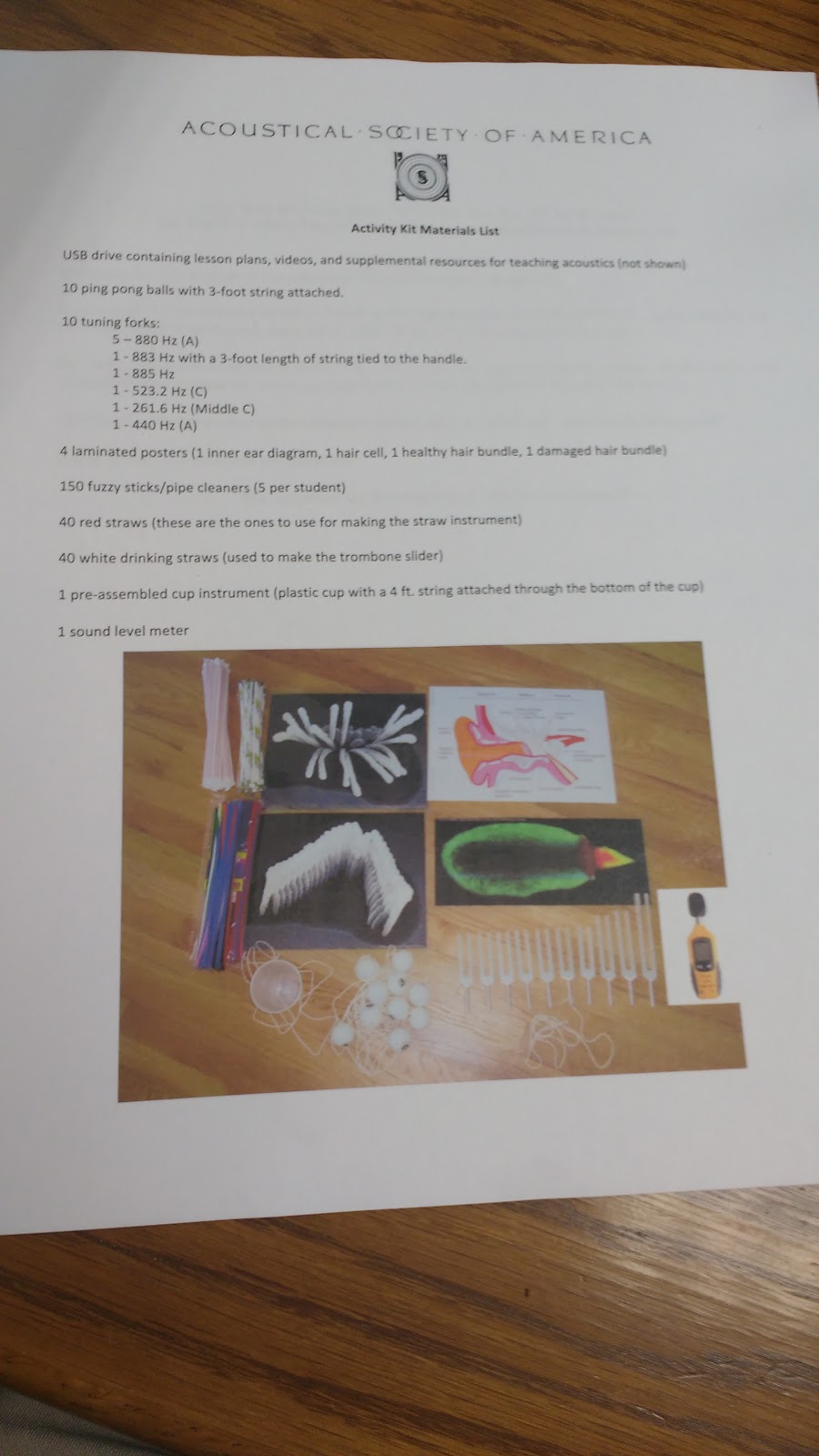
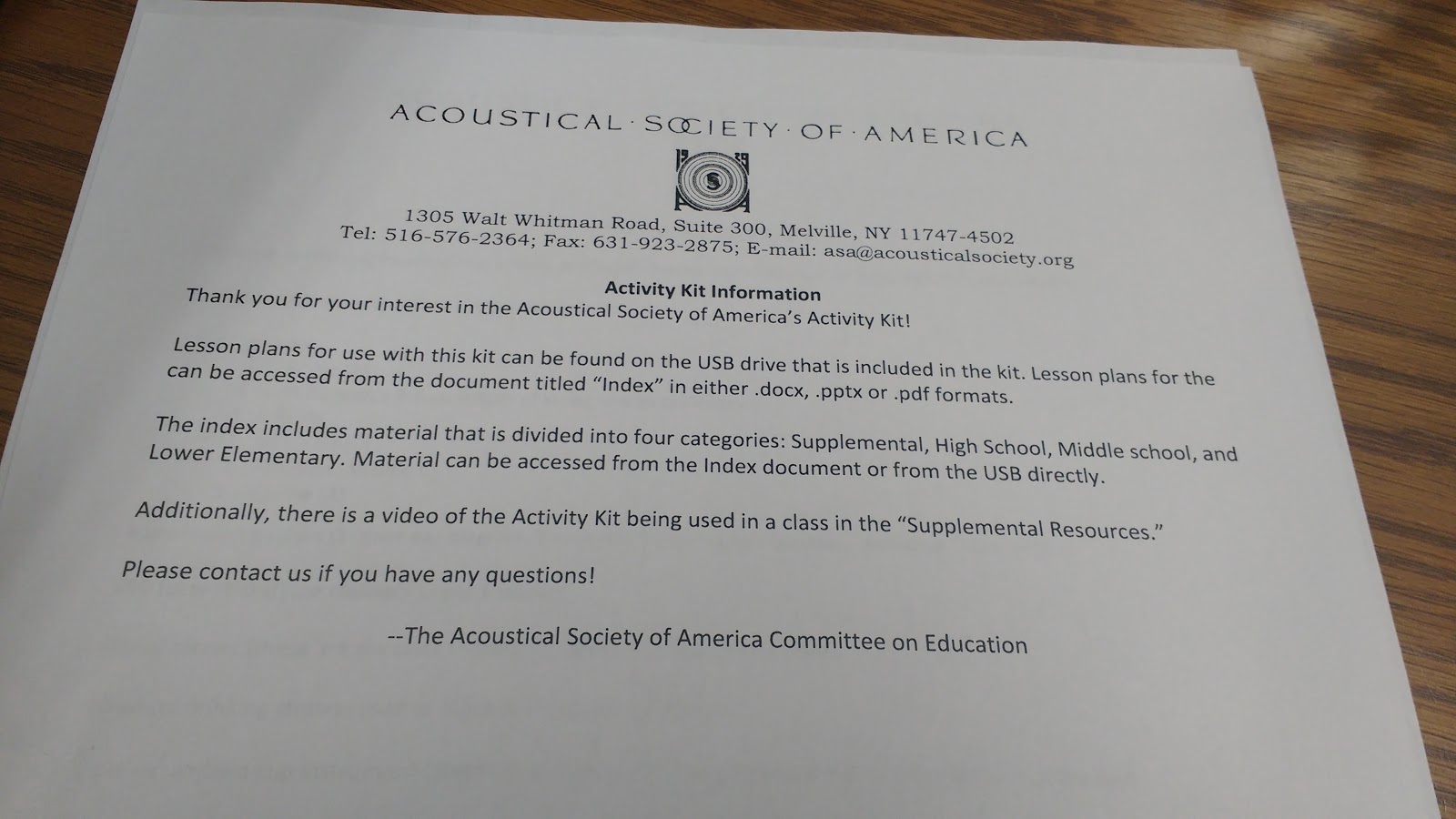
So, what comes in the kit?
Straws
These are for making straw instruments. Your teacher neighbors will LOVE you for this.
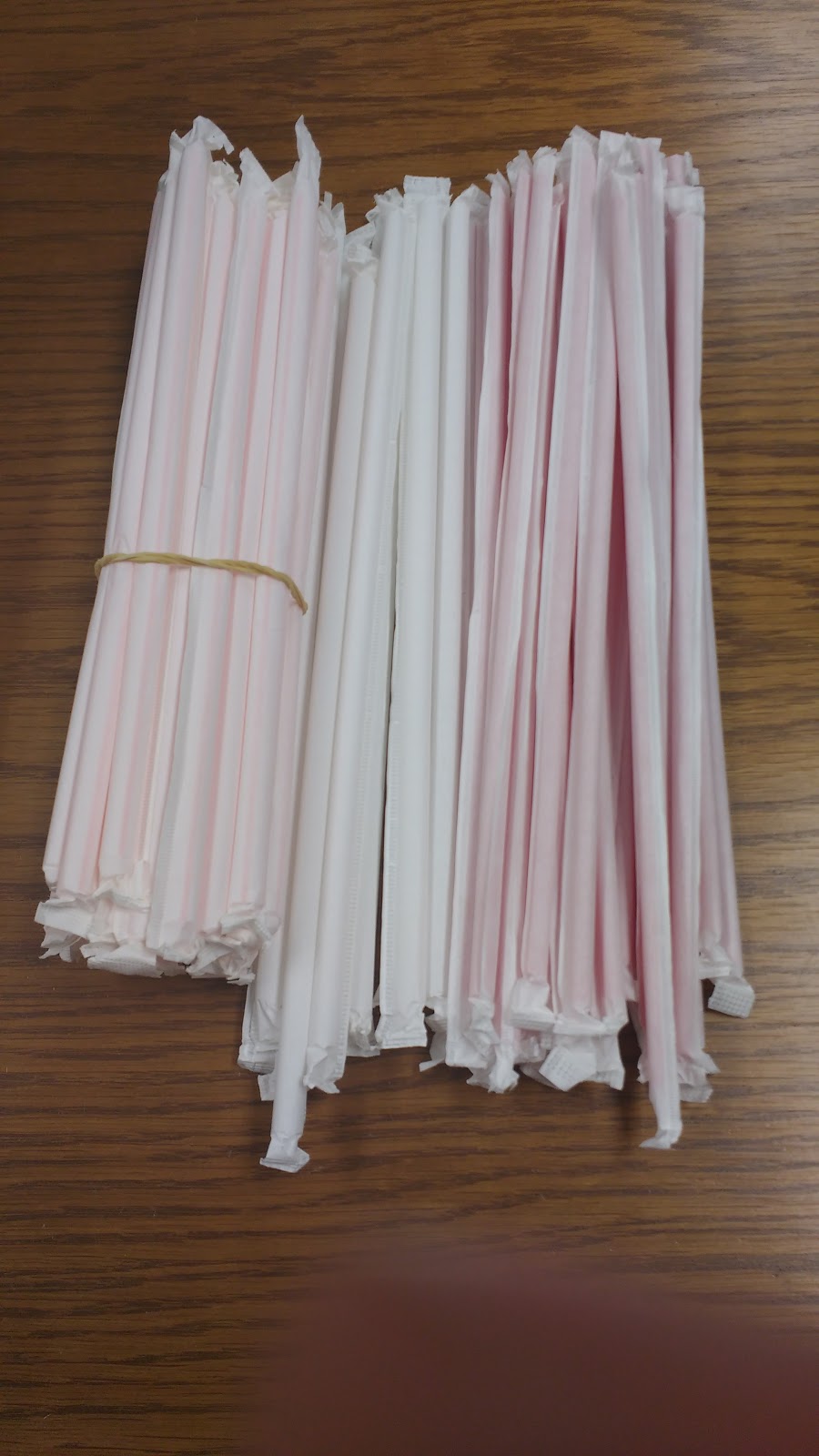
Here’s my finished straw trombone. My students really liked making these. They could not put them down!
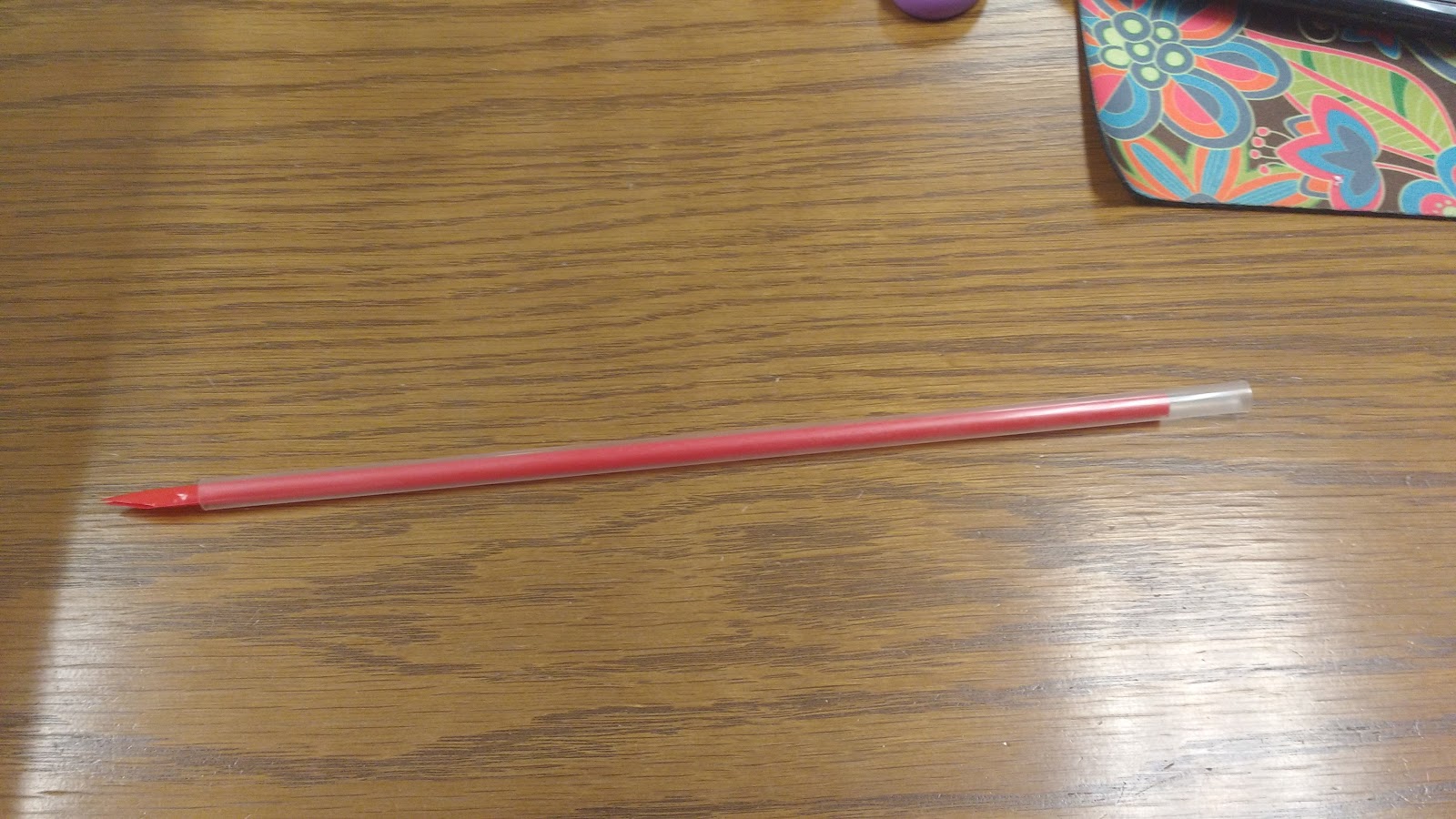
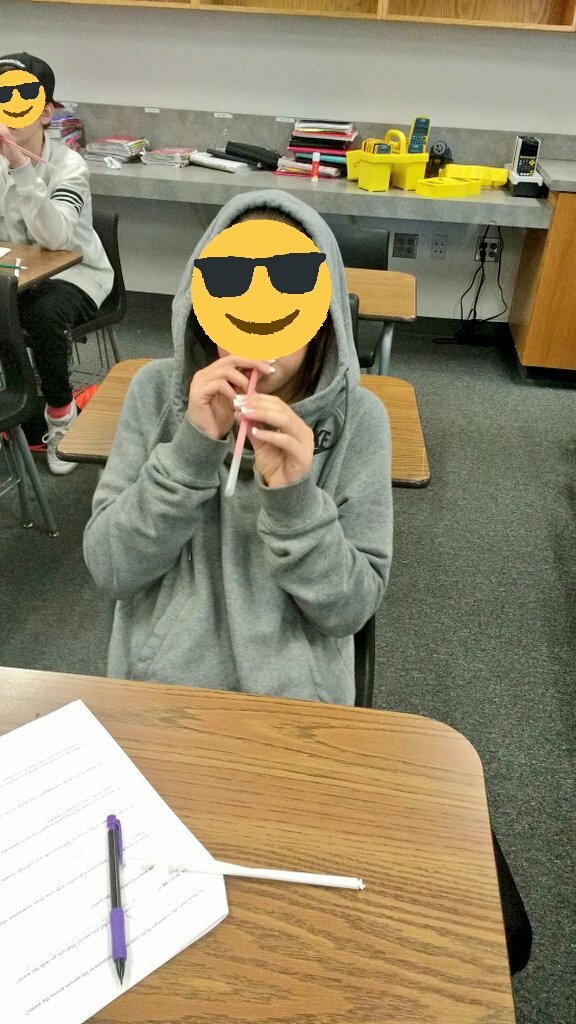
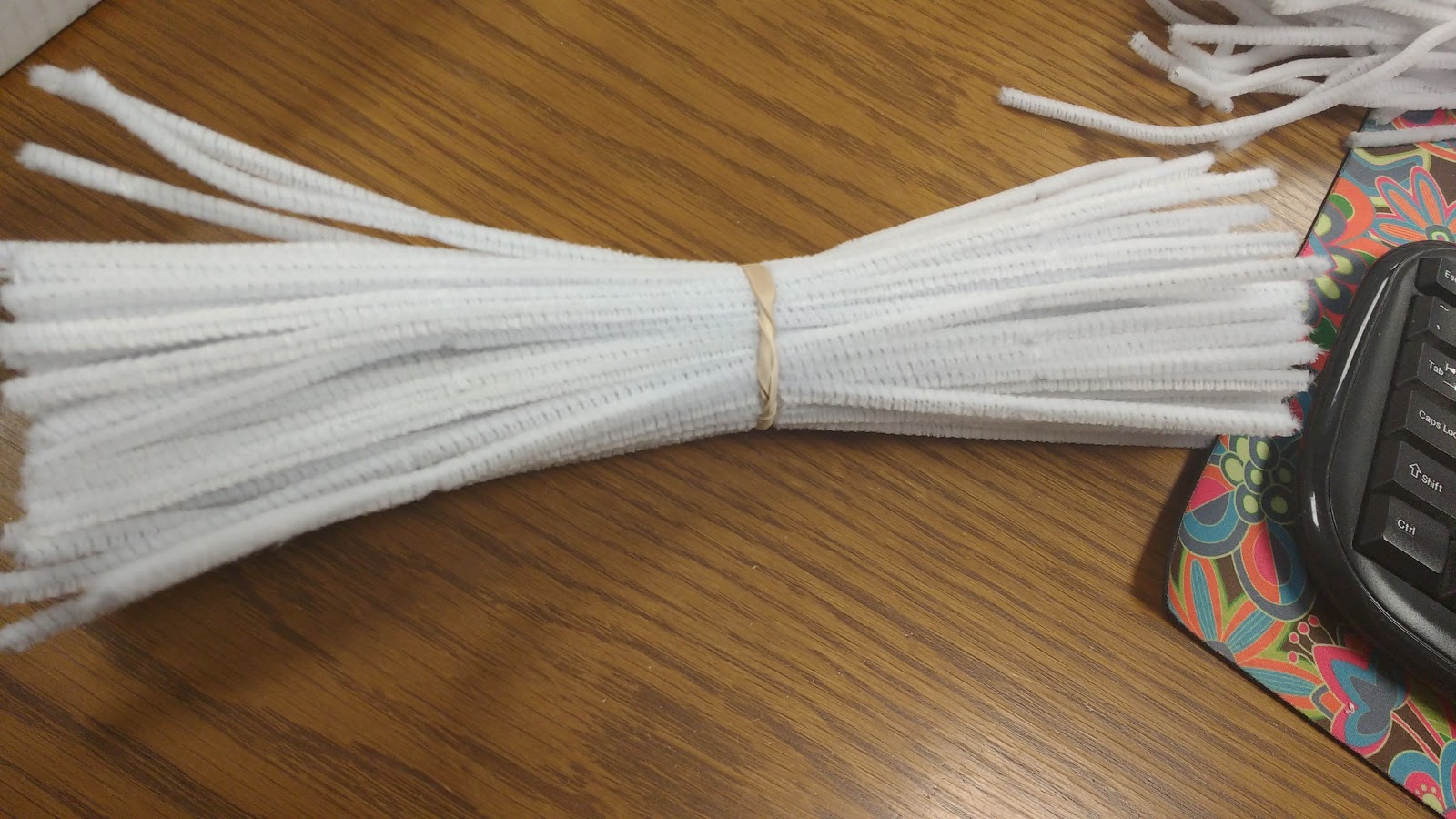
The purpose of these pipe cleaners is to form a model of the hair cells that exist on on our cochlea. The main gist is that once these hair cells are damaged they can’t be fixed.
Take a look at the pipe cleaners that my students tried to “fix.”

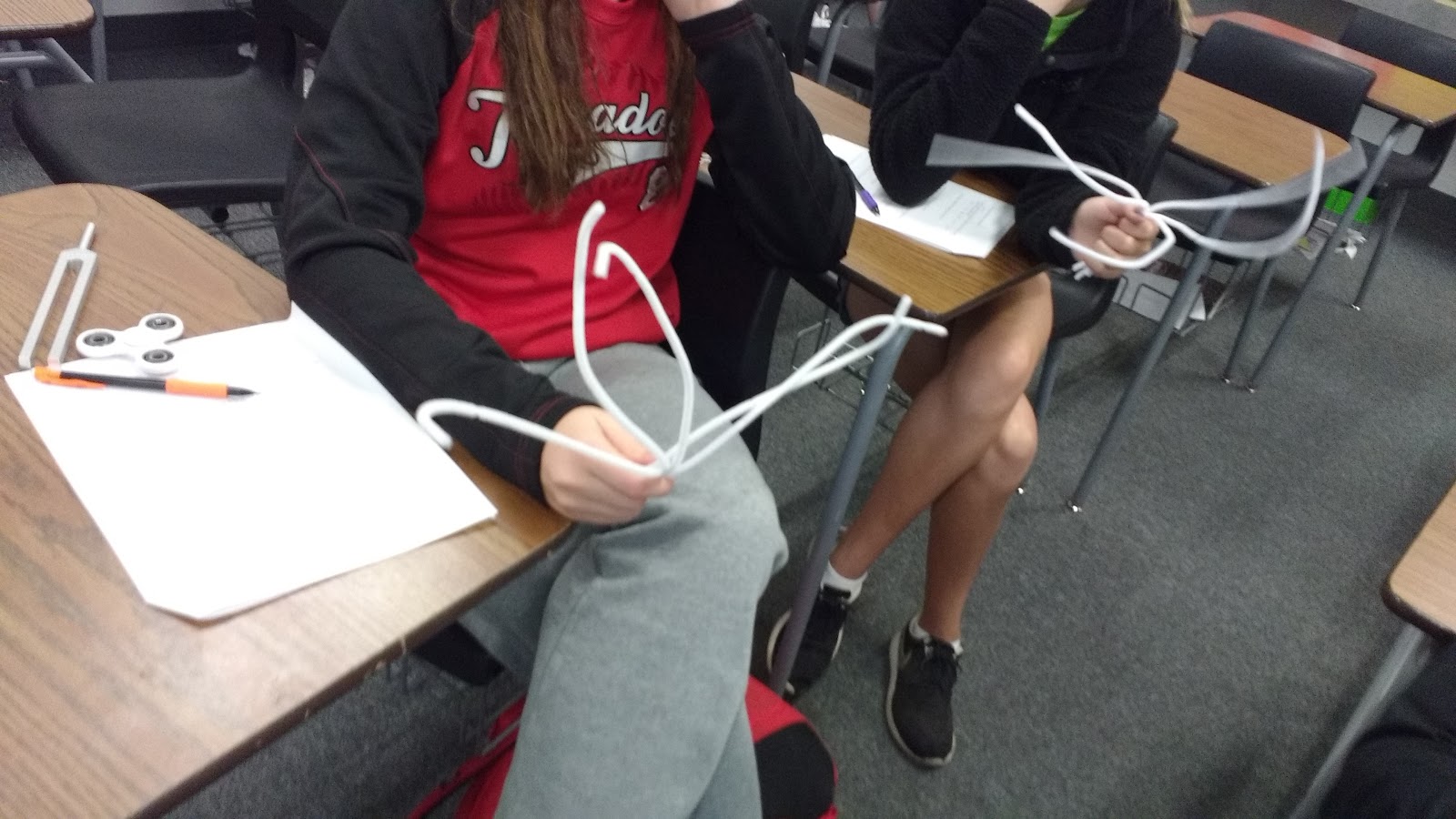
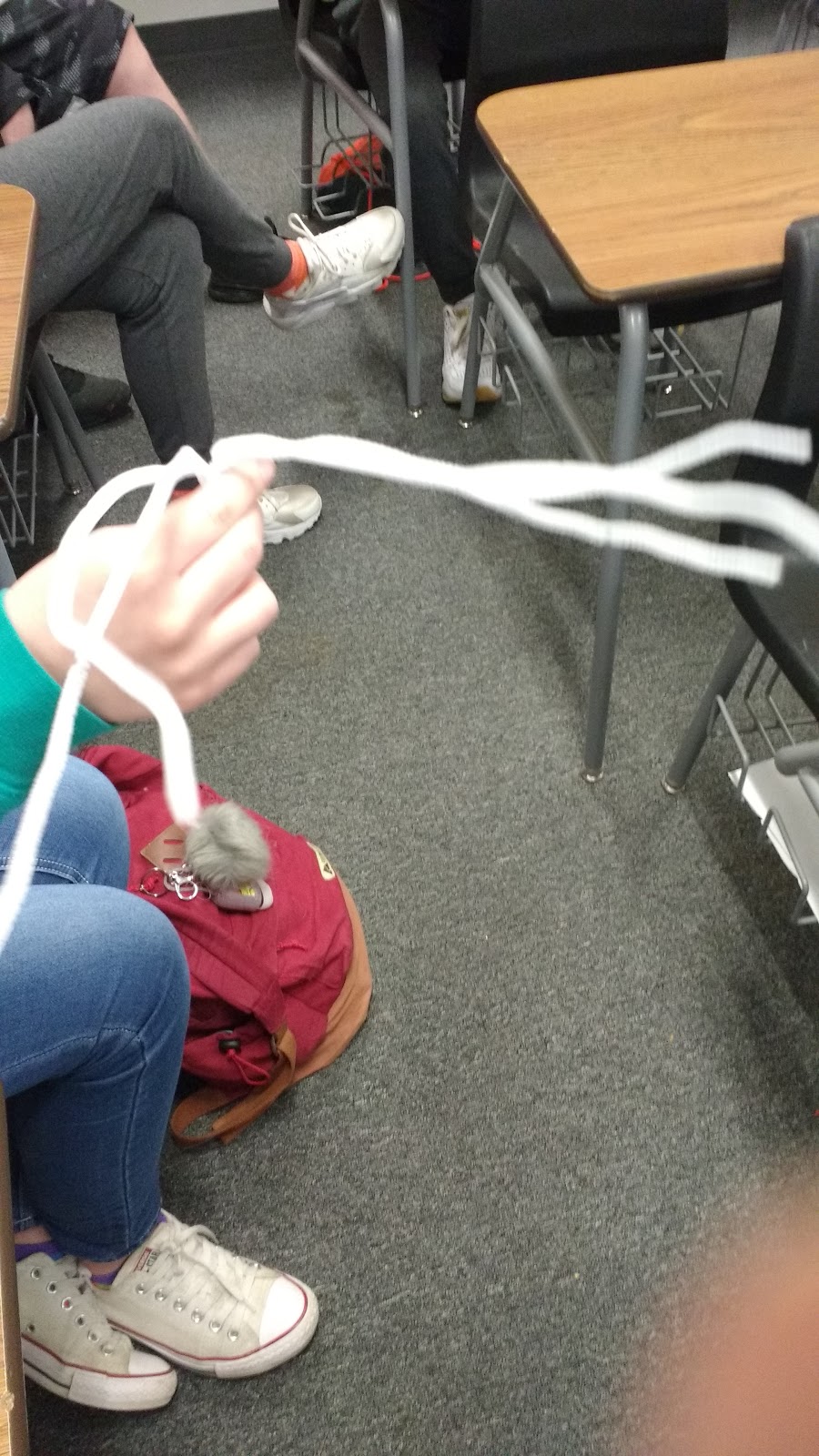
Digital Sound Meter
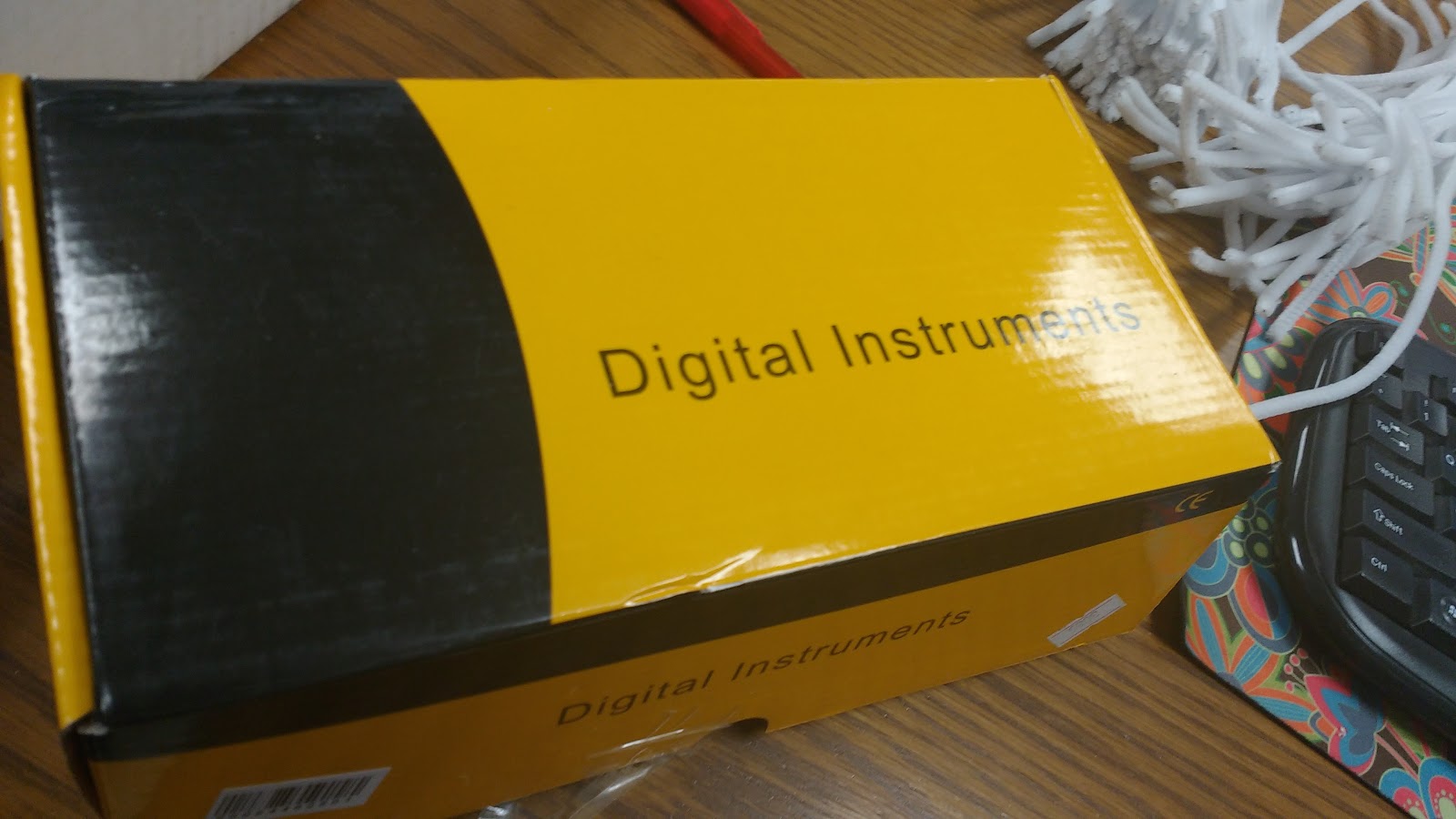
I haven’t had a chance to use this with my students yet. We’re still in the course of working through all of the sound lessons.

My husband and I did take it out of the box over Christmas Break to experiment with it and see how it worked.

Cup Instrument
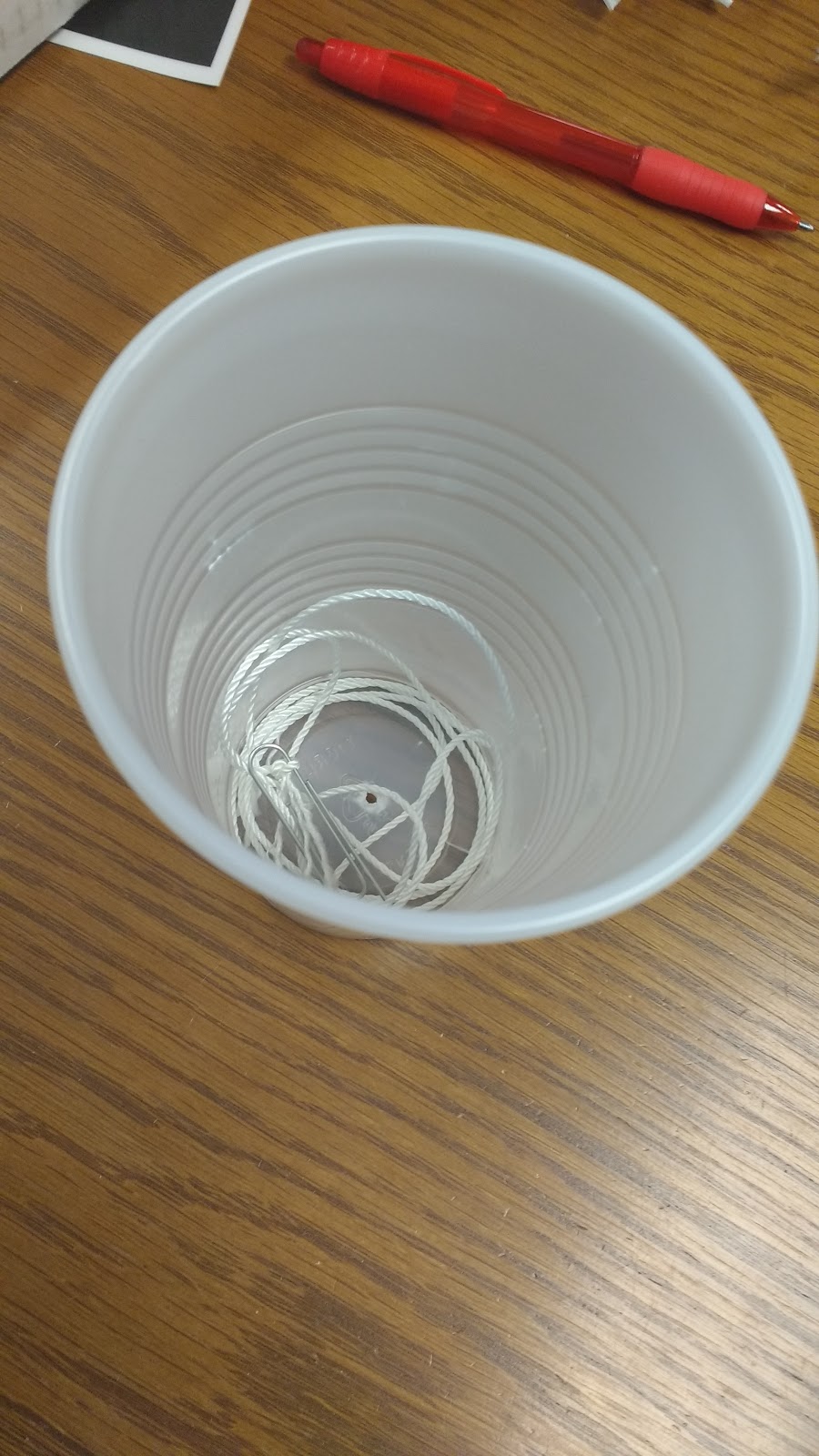

Tuning Forks
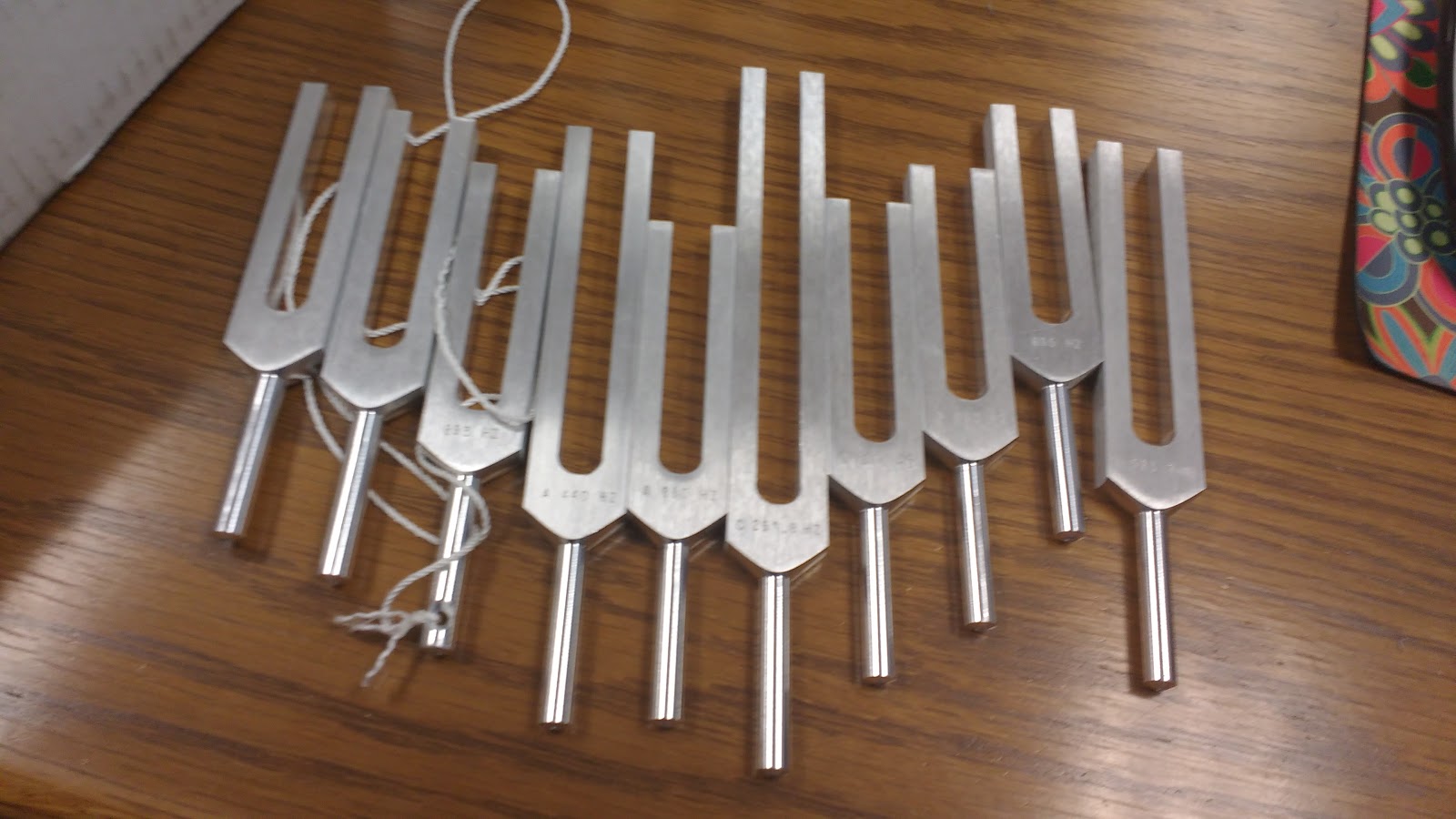
My students LOVED playing with the tuning forks. I have to admit that listening to an entire classroom of students play with tuning forks will result in a headache. It was worth it, though.
Ping Pong Balls (Attached to String)
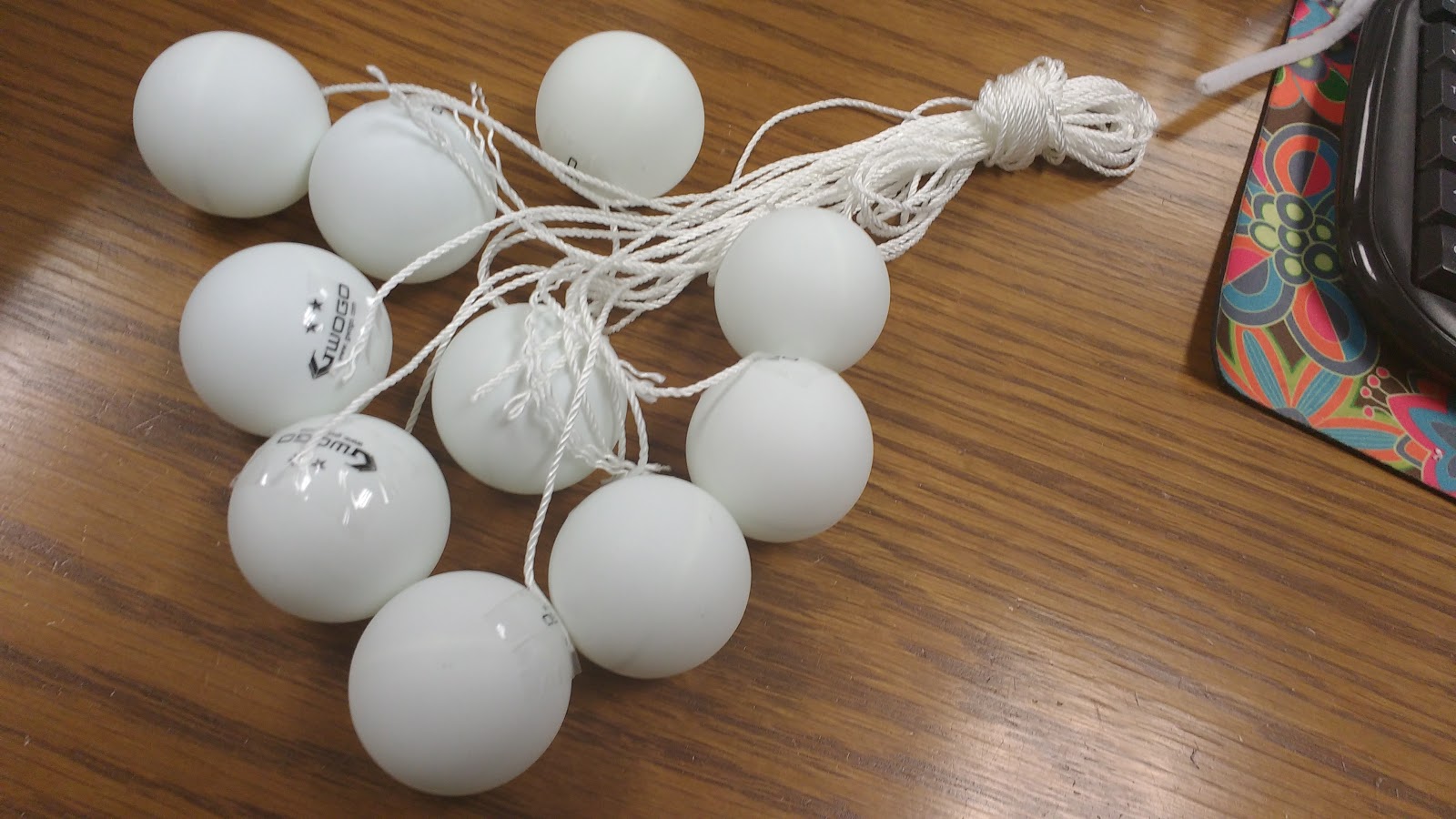
These ping pong balls are meant to be dangled near the tuning forks to aid in making observations.

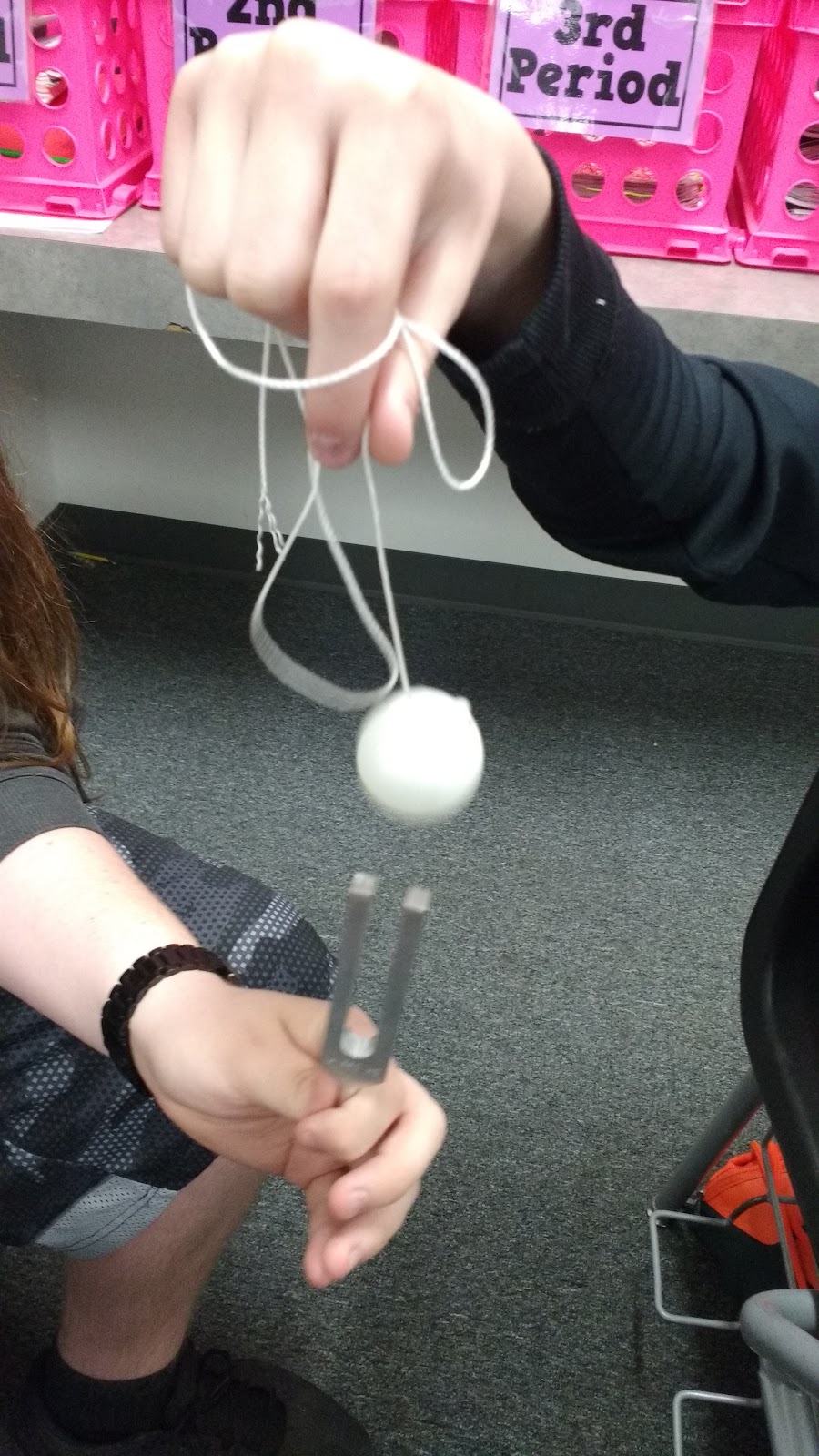
Laminated Posters
Hair Cell
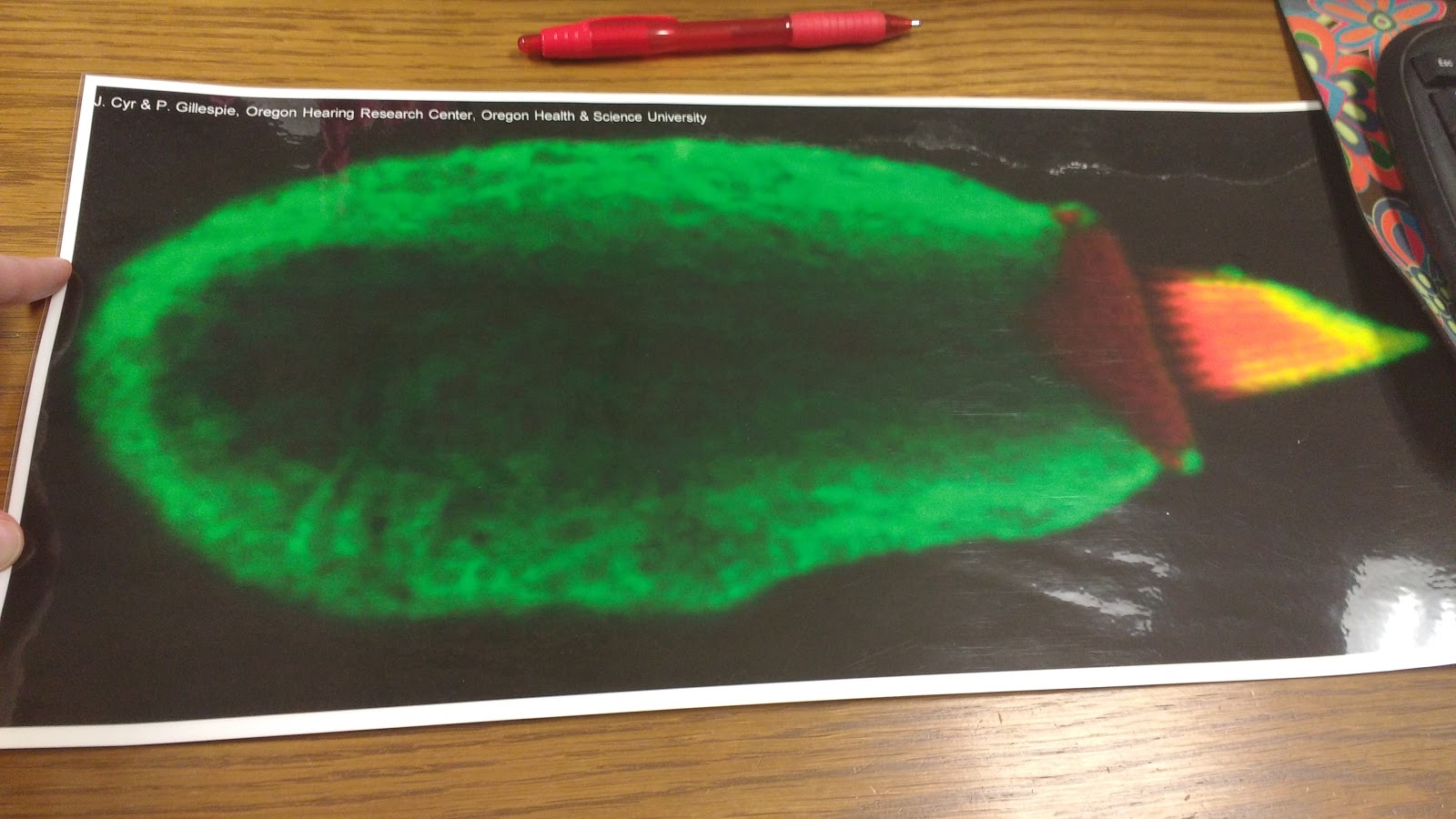
Healthy Hair Bundle

Damaged Hair Bundle
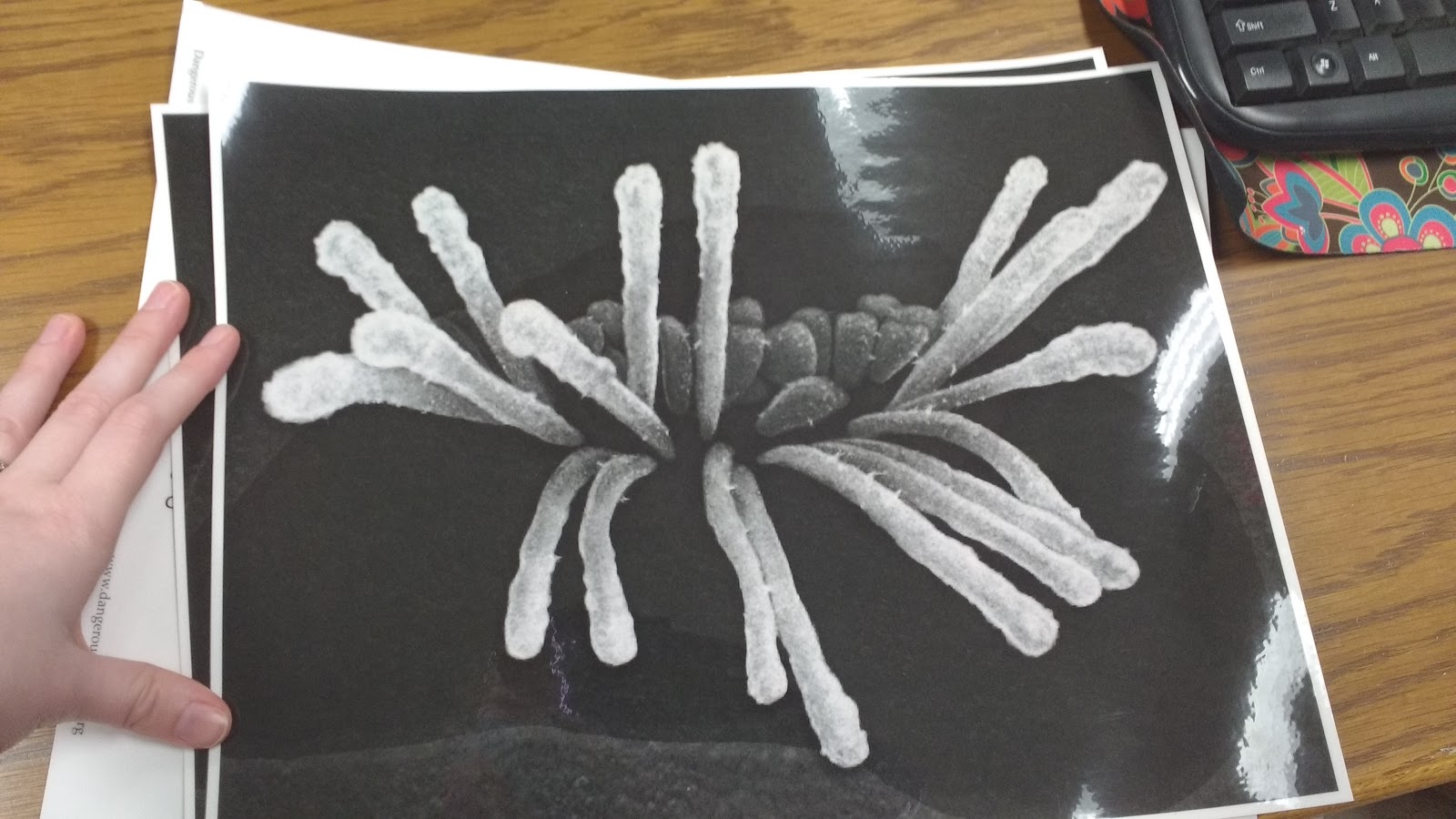
Inner Ear Diagram
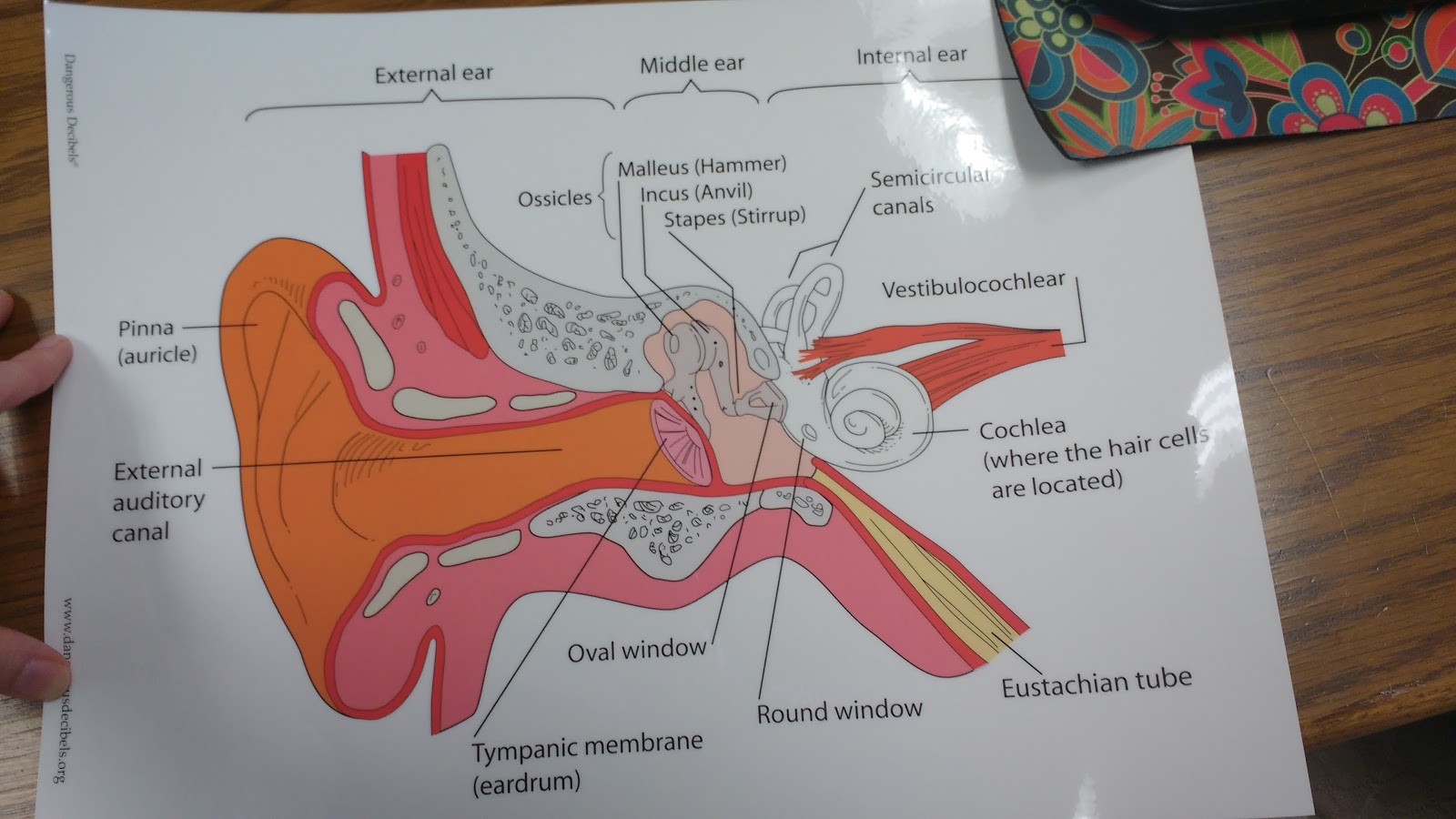
These posters were super helpful for explaining to my students both how the ear functions and why it is important to protect our hearing.
According to the Explore Sound website, it looks like they’ve slightly modified the contents of their free activity kits since I received mine. They now include a small, plastic slinky and 30 mechanical pencils!

I would like to say a HUGE thanks to the Acoustical Society of America for providing such an awesome set of supplies and curriculum to teach my students about acoustics. All of the materials come with pre-written lesson plans, quizzes, worksheets, and PPT presentations. As a math teacher, I usually like to create my own lessons. But, as a science teacher, I’m still learning about acoustics myself. It was super-helpful to have lessons written by professionals who know their stuff! My students and I have truly enjoyed every lesson so far!
May 13, 2017 – Hello, SUMMER!
And, just like that the 2016-2017 school year is over. Teachers still have to go back on Monday for a professional day, but I am already considering it to be summer.
Our last day was definitely not normal because a total of four teachers were changing classrooms. There were students wielding desks, chairs, computers, and everything else imaginable through the halls. It only took 1.5 class periods (50 minutes each) to move all of my stuff from my old classroom to my new classroom.
This chaotic moving process left my new room to be a huge mess.

After a few hours of moving stuff and then changing my mind and moving it again, my room started to gain some semblance of order.
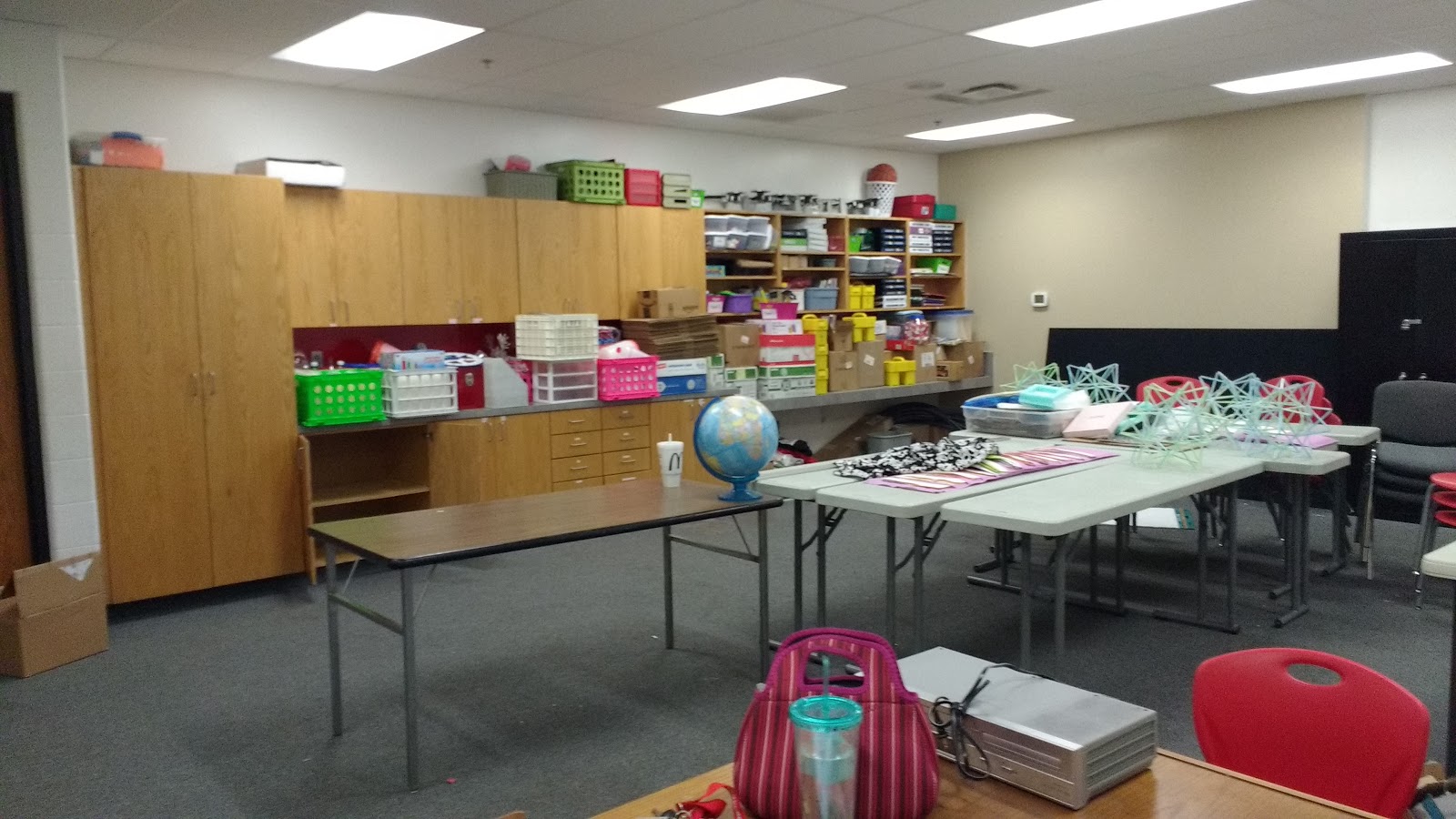
My parents and sister came over this evening to help my husband and I hang my bulletin boards and dry erase board. My dry erase board is fifteen feet long, so there is no way that Shaun and I could have put that up ourselves. I’m so blessed to have an amazing family that is always willing to help me.
We didn’t leave school until 9:30, and I forgot to take a picture of our progress. There’s still A LOT to do, but it finally looks like a classroom that you could teach a lesson in. Now I can start thinking about decorations for next year!
Notice anything different about my new classroom? I’ll be having tables this year instead of desks. I’ve only ever taught with individual student desks, so I’m not sure what to expect. Anyone have any pointers for setting up a room with tables?
I’ll be sure to post more pictures once I get back up to school.
May 11, 2017 – Things Teenagers Say Volume 48
Join me today for Volume 48 of Things Teenagers Say. This is my regular round-up of the crazy and memorable things I hear my students say in class.
It’s the next-to-last day of the school year, so this will be the last volume of Things Teenagers Say for this school year. Tomorrow morning will be spent trading classrooms with another teacher, and tomorrow afternoon will be spent at the Awards Assembly. It feels like this year has both flown by and crawled by at the same time.
This will be the 8th installment of Things Teenagers Say for the 2016-2017 school year.

Sorry, can you die quieter?
—
I don’t need to know how to tie ribbon because that’s my mom’s or my future wife’s job.
—
Didn’t Cinderella’s dad die of ebola?
—
While playing Outburst…
Me: You have 60 seconds to name as many states with two word names.
Team Captain: Las Vegas
Me: No
Team Captain: New England
Me: No
Team Captain: Idaho
—
Student 1: What’s KO – LAIR – A?
Me: Do you mean cholera?
Student 2: Cholera is just another way that God shows his love to us.
—
I just love it when people throw phones at me.
—
I think Jesus gave me this fractured wrist so I wouldn’t have to go to work and could get my algebra grade up.
—
We should play “chanades.”
—
If you’re that forgetful, you shouldn’t have a kid. Get a dingo instead.
—
You wouldn’t give CPR to a hobo? How sad!
—
While playing Outburst…
Me: Name something on a Christmas tree.
Team Captain: Tree Skirt
Me: No
Team Captain: Tree Pants
Me: No
Team Captain: Tree Khakis
—
If a person with your hair whooped me, I might cry a lot.
—
Student: Have you ever heard Mr. Carter play the guitar?
Me: Yes
Student: Really?!?
Me: Yeah. He plays the guitar at church every Sunday.
Student: I bet he serenades you, too.
—
Student: Mrs. Carter, do you have a driver’s license?
Me: No, I walk to work everyday.
Student: Well, your husband could drive you everywhere. You never know.
—
Some of my students also have my husband‘s geometry class. Here’s a conversation I overheard between some of them.
Student 1: You can’t cheat. He gives us separate quiz versions.
Student 2: No he doesn’t.
Student 1: Yes he does. There are four different quizzes.
Student 2: I don’t do my quizzes.
—
He orders his Starbucks upside down. I didn’t even know that was possible.
May 14, 2017 – Creating my Own Chemistry Certification Study Guide
In a previous post, I promised that I would blog about my chemistry certification study guide I created to help pass the Chemistry OSAT (certification test for chemistry). Here are the details!
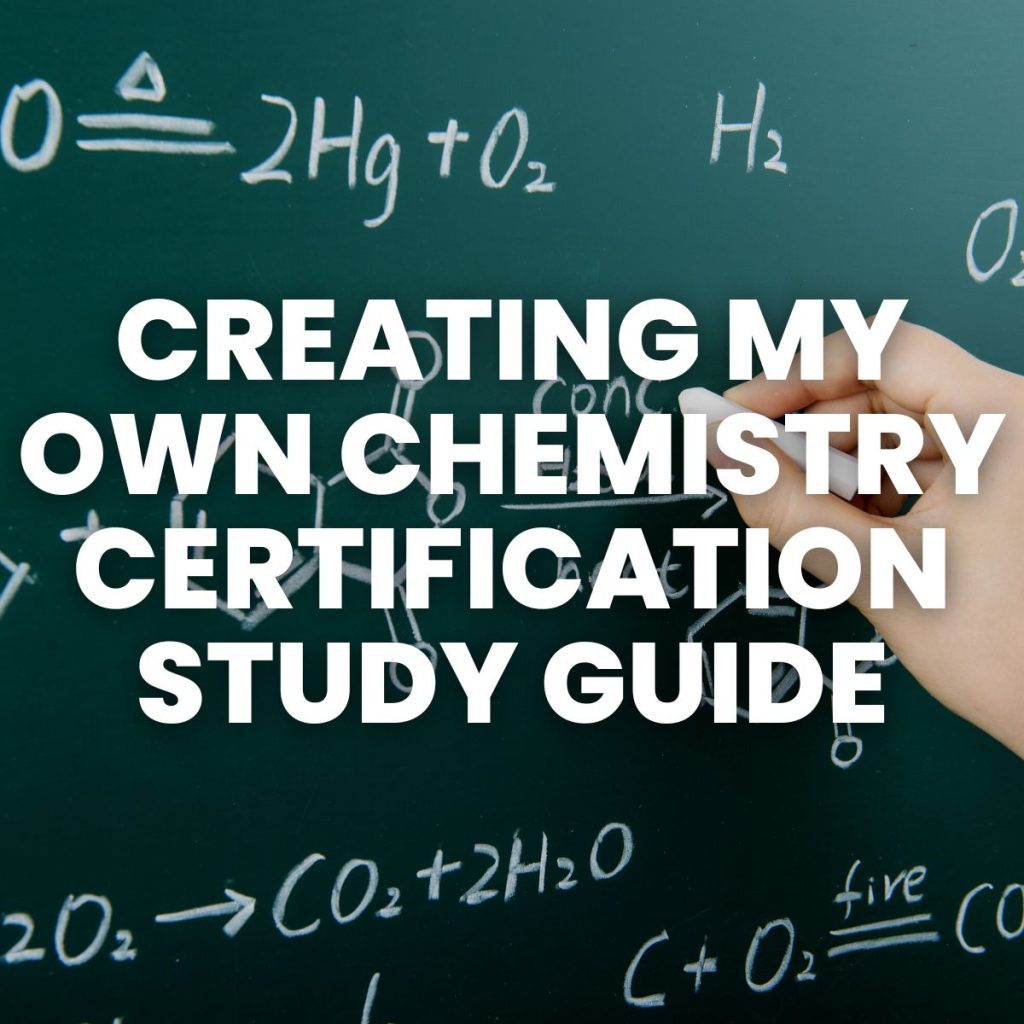
This year I taught my first-ever science class. Now, I never planned on being a science teacher, so I never took any steps toward being certified to teach science. This year, I was able to teach one period of science without certification as a “co-teacher.” This meant I taught the class on my own, but I under the guidance of one of the certified science teachers in the building.
I decided to seek out my own science certification by passing the OSAT (Oklahoma Subject Area Test) in Chemistry. On President’s Day, my husband and I drove to Stillwater so I could take my exam. It was a long wait until March when I finally found out that I PASSED!

I do have some chemistry in my background. As a high school sophomore, I took a Pre-AP Chemistry class. Then, as a high school senior, I took AP Chemistry. I did really well in the class, and I ended up scoring a 5 on my AP test. This 5 netted me college credit for Chem I and Chem II from The University of Tulsa. I still needed a lab credit in science to graduate, so I took the Chem I lab class as a college sophomore. And, that was the last time I did any chemistry.
For the first four years I worked at Drumright, our chemistry program was super-small. The class would always range from 3-5 or so students, and student morale was generally low. I would often find myself helping students with their chemistry assignments. They would ask me why I didn’t teach chemistry since I explained it so well. I always told them that I would love a chance to keep chemistry one day, but I wasn’t sure if I would be able to pass the certification test.
Fast forward to this year. Our upper-level science teacher retired, and the position was not rehired due to budget cuts. A few days before school started, I was given the choice between adding a 4th prep of Algebra 2 or Physical Science. I had worked really hard to not have to teach Algebra 2 this year, so I chose to teach physical science. I quickly found out that I LOVED the chemistry part of physical science and didn’t love the physics section of physical science. This is what convinced me that I needed to earn my chemistry certification.
I knew I would need to study A LOT since it had been over 9 years since I had actually sat in a chemistry class. I started my studying by visiting the website for our state certification tests. The website offered me a whopping 10 sample multiple choice questions and 1 sample constructed response question. Given that I had trouble answering quite a few of these sample questions, I knew I would need so much more practice than these 11 questions provided.
A quick google search showed me that there were a few exam prep books on the market. But, after looking at their steep price tags, I decided to create my own chemistry certification study guide.
I began by creating a divider for each subarea of the test.
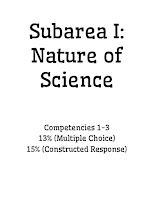
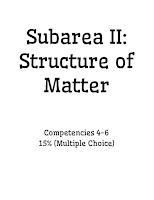

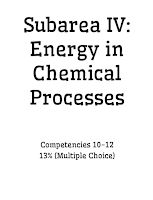


Next, I created a subdivider for each competency.
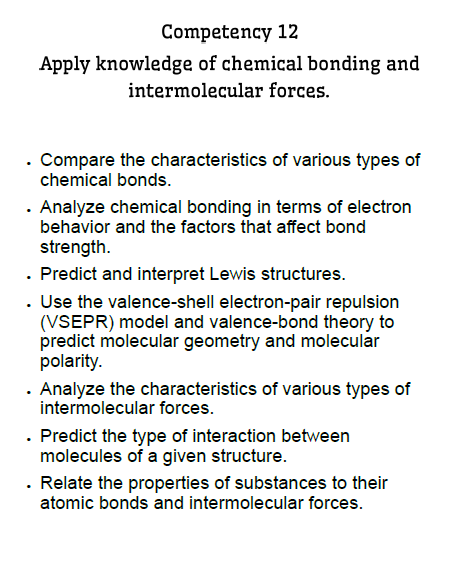
These were hole punched and placed in a binder. I printed off each of the sample questions offered by Oklahoma’s CEOE and placed it behind the appropriate competency. I printed them double-sided so that the question was on the front of each page and the answer was on the back of each page in small print.
Then, I went on a mission to find as many practice problems as possible. I combed through each state’s science certification tests and picked out every single chemistry question.
I harvested questions from California, Florida, Illionis, Indiana, Minnesota, Missouri, New Mexico, New York, Ohio, Oklahoma, Michigan, Oregon, Washington, and the Praxis.
This ended up being a bunch of questions. Of course, that’s exactly what I was hoping for!
I printed these questions the same way I did the Oklahoma questions. One question per page. Question printed on the front. Answer printed on the back.
Here’s an example of a question page:
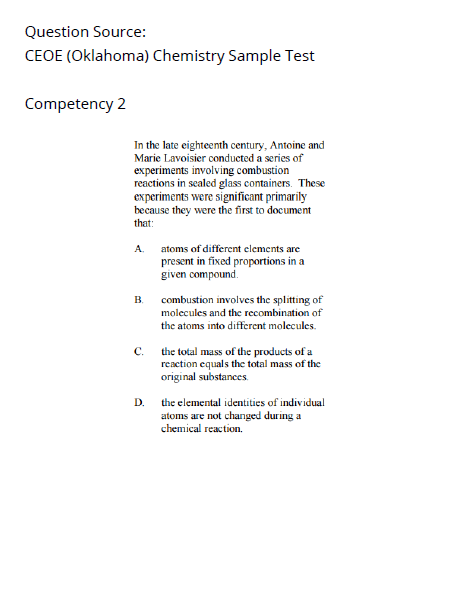
The snipping tool was my best friend that made this project feasible.
It was a bit tricky sorting the questions from each different state to correlate with the Oklahoma competencies, but I think this added to the learning experience because it meant I had to do a lot of research about what some of the questions even meant.
Here’s my finished study guide:
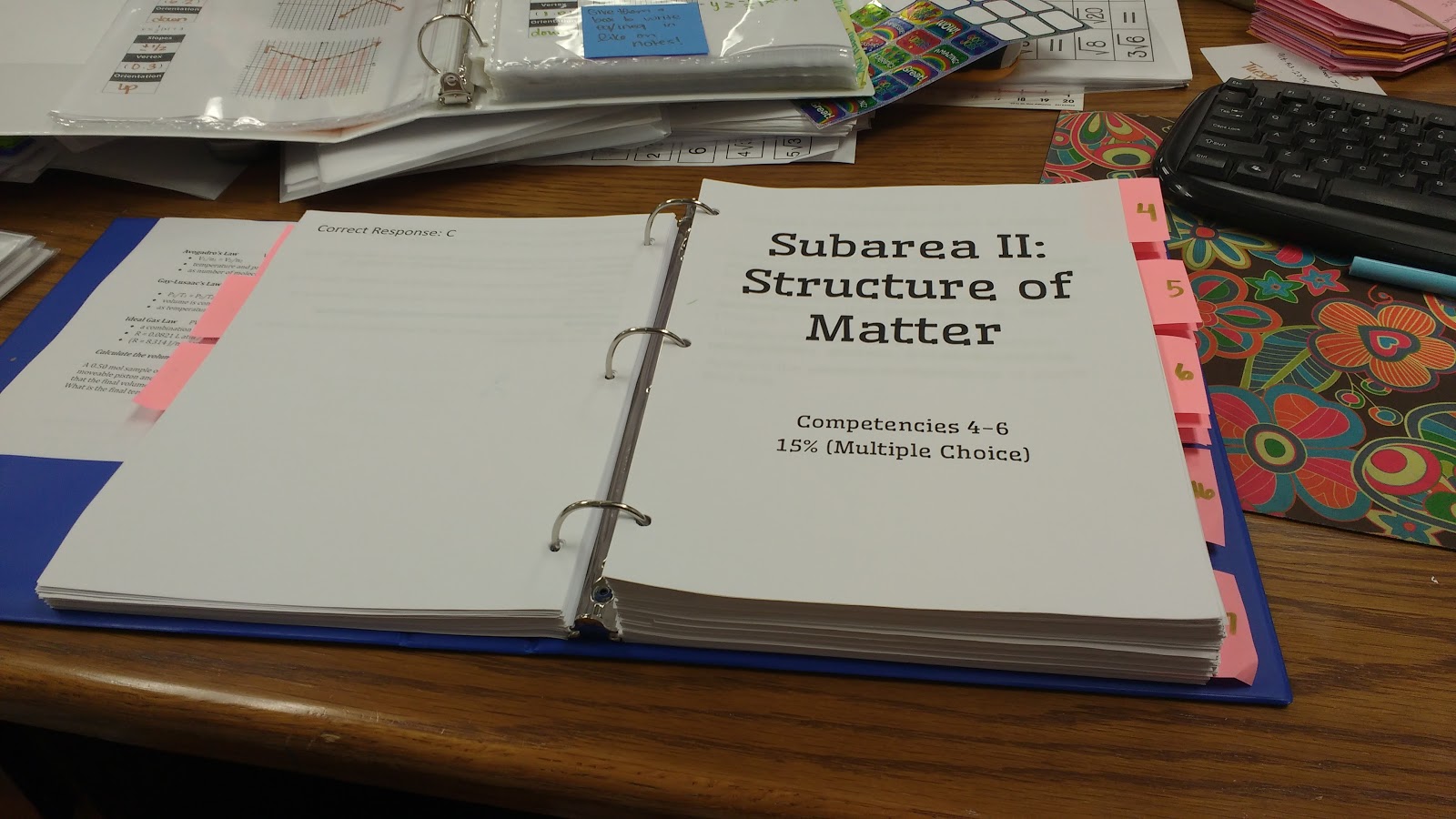
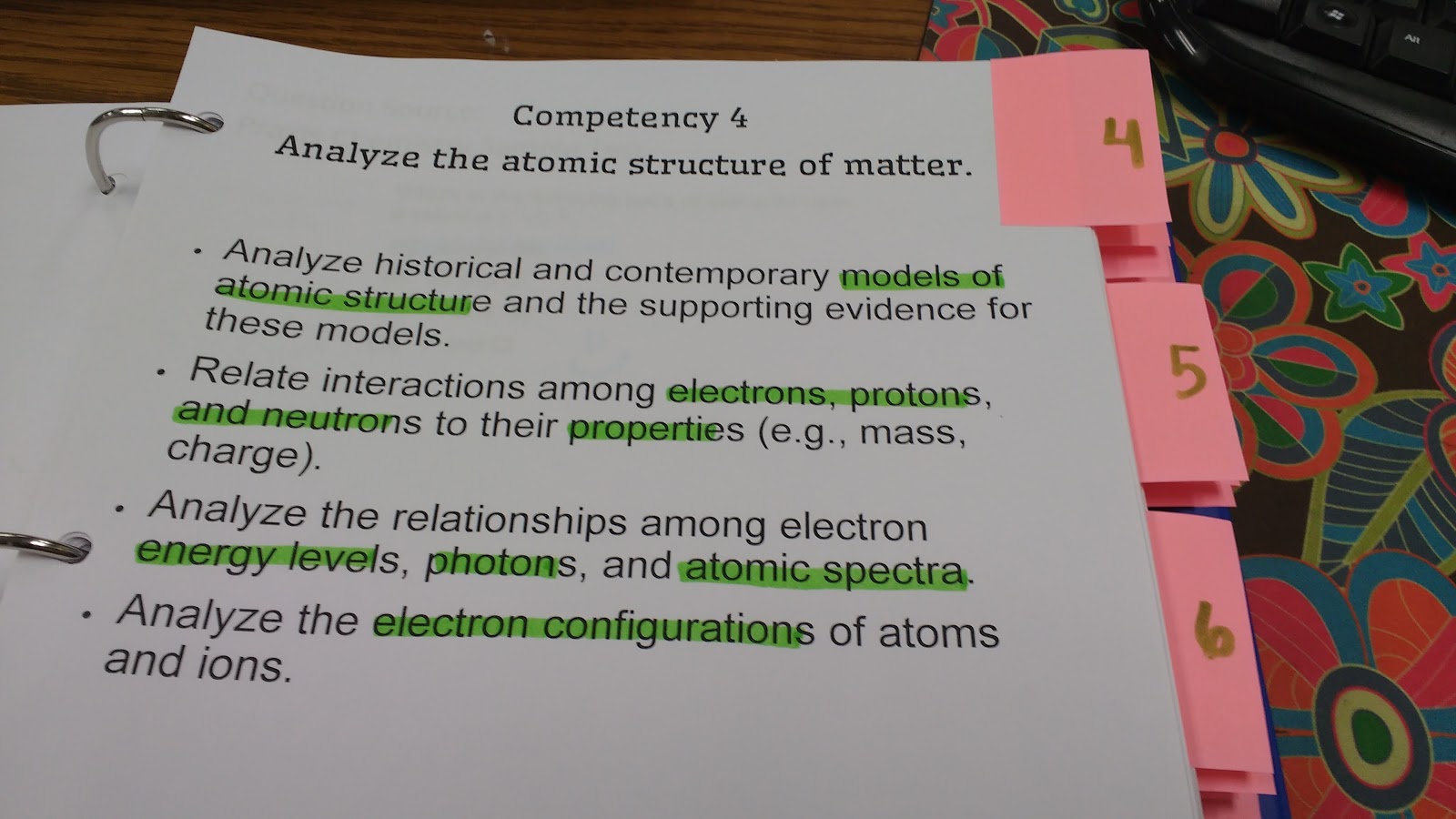
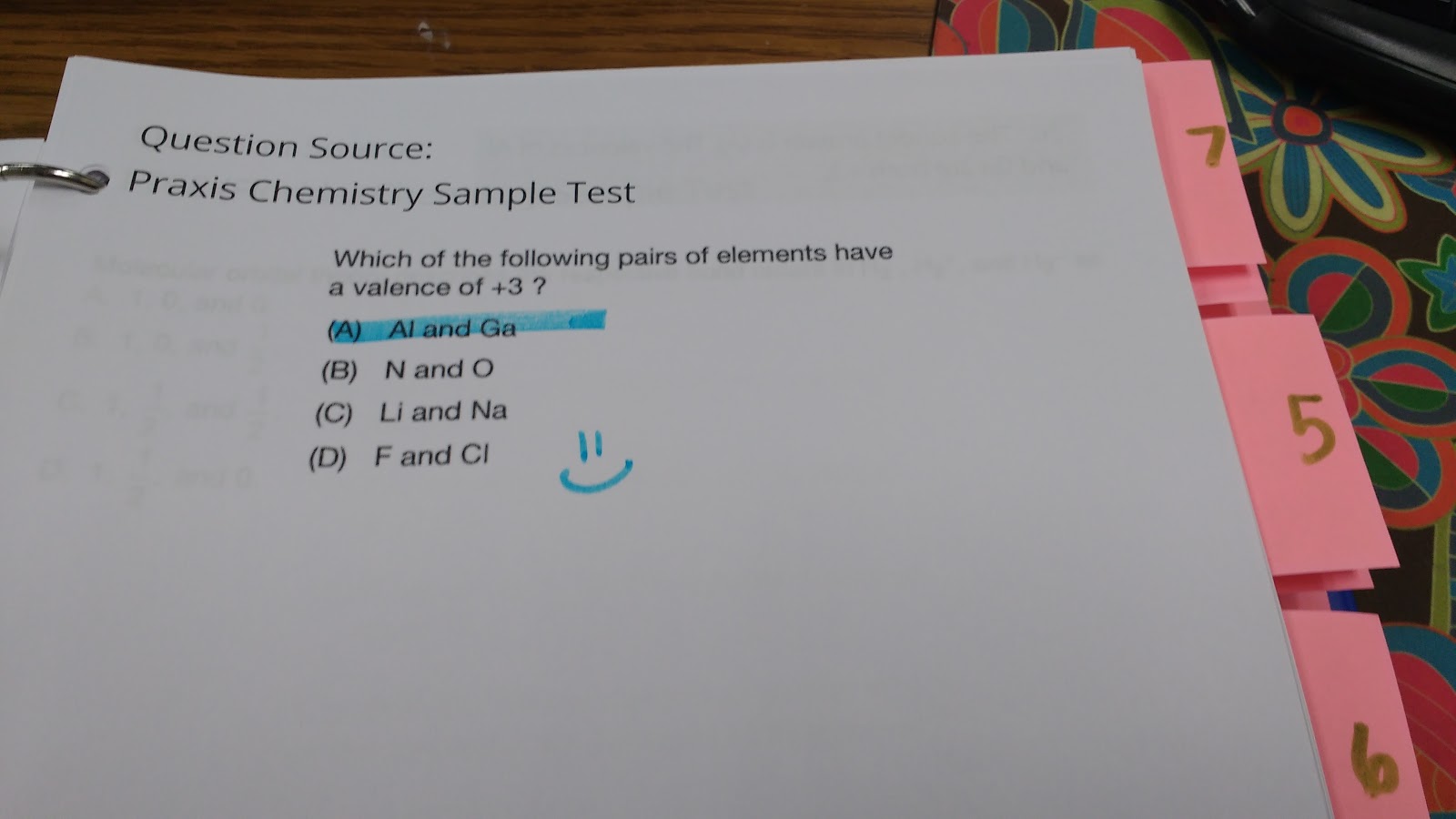
By the time I got all of the pages in my binder, it would barely close. I worked through each problem. Many of the problems I had to skip and come back to. Some became clear after working through other related problems. Plenty of others had to be googled. My husband had to help me understand the different types of nuclear decay.
This binder ended up traveling with me everywhere. It made the trek to school each day so it could eat lunch with me. Many weekend afternoons were spent curled up with this binder, a highlighter, and my laptop. I have to get to church early on Sundays because my husband is in the band, so I would sit on the couch in the lobby of the church and study chemistry.
It ended up being worth it because I passed!
Chemistry Certification Study Guide Materials
I’ll warn you that these files are not perfect. One of the state’s questions copied and pasted a bit weirdly. Another file has two of the answers switched around accidentally. But, I know that fixing a few small mistakes won’t take near as long as it took me to create the original files!
Next, my plan is to do the same thing for physics so I can teach myself!
May 26, 2017 – Sticky Note Mobiles in Math Concepts
I’m back to cleaning out old draft posts. Today, the plan is to share about a sticky note challenge I issued my math concepts students. At my school, math concepts is a class for freshman that are not yet ready for Algebra 1. The puzzles in this post were taken from the Transition to Algebra curriculum.
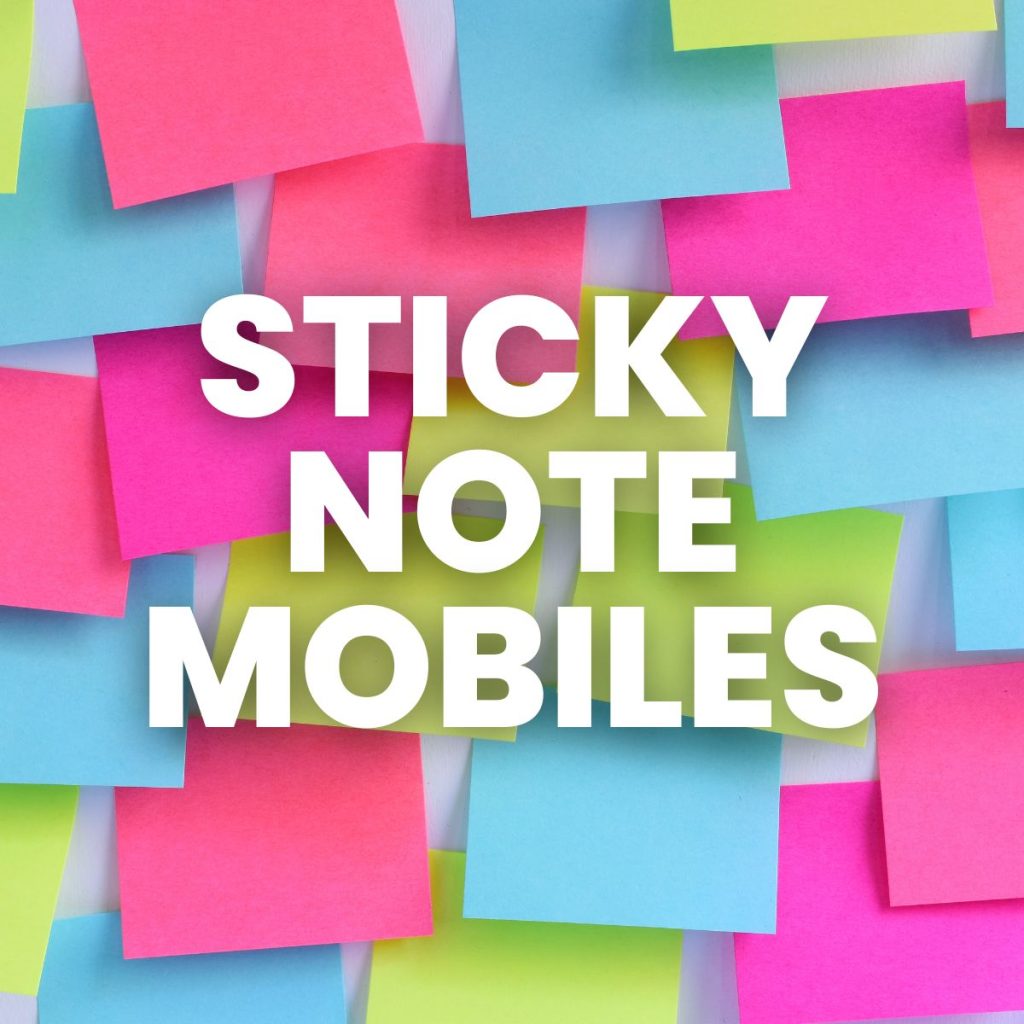
Students were placed in pairs and given four sticky notes with the four values (example: 80, 81, 38, and 39) written on them with marker. Each pair stood in front of a hand-drawn mobile on the dry erase board. When I told them to go, they had to determine how to place sticky notes on the mobiles so both sides would be equal.
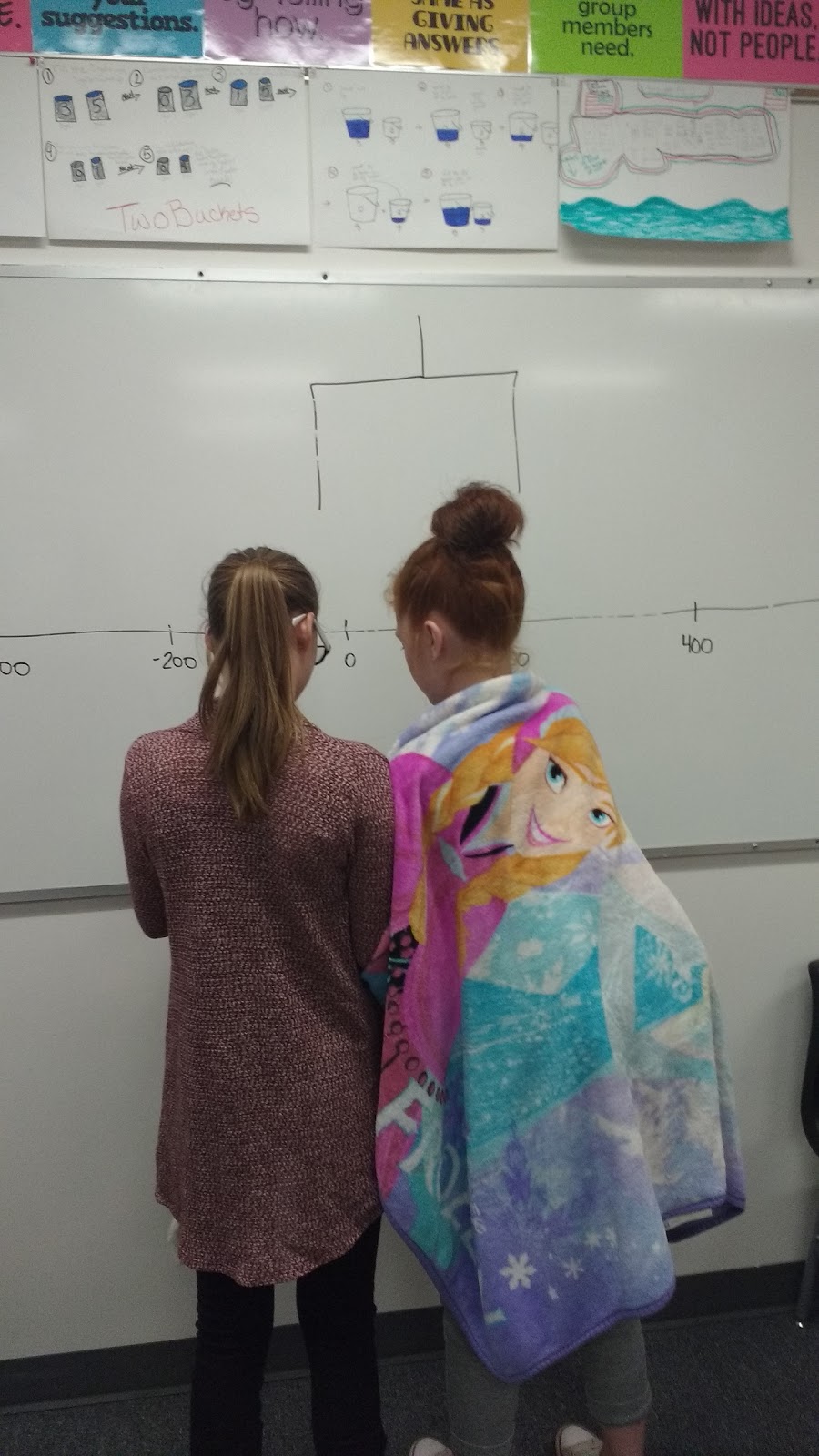
This sparked a lot of awesome conversation between the students in each pair. Students were asking each other to justify their placements, and it was a beautiful sight to behold!
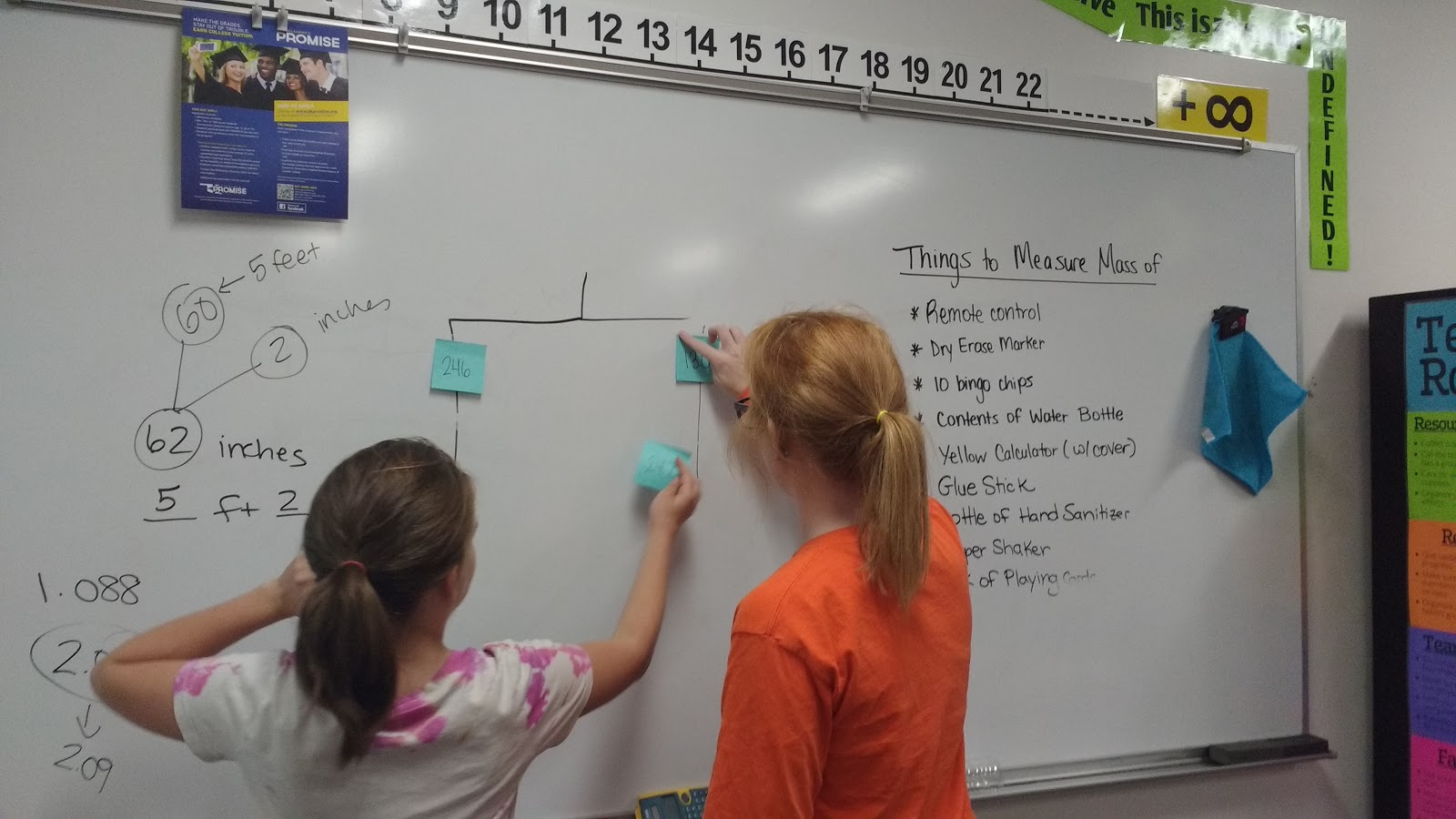
Even better, we had a great conversation afterward about helpful strategies to solving
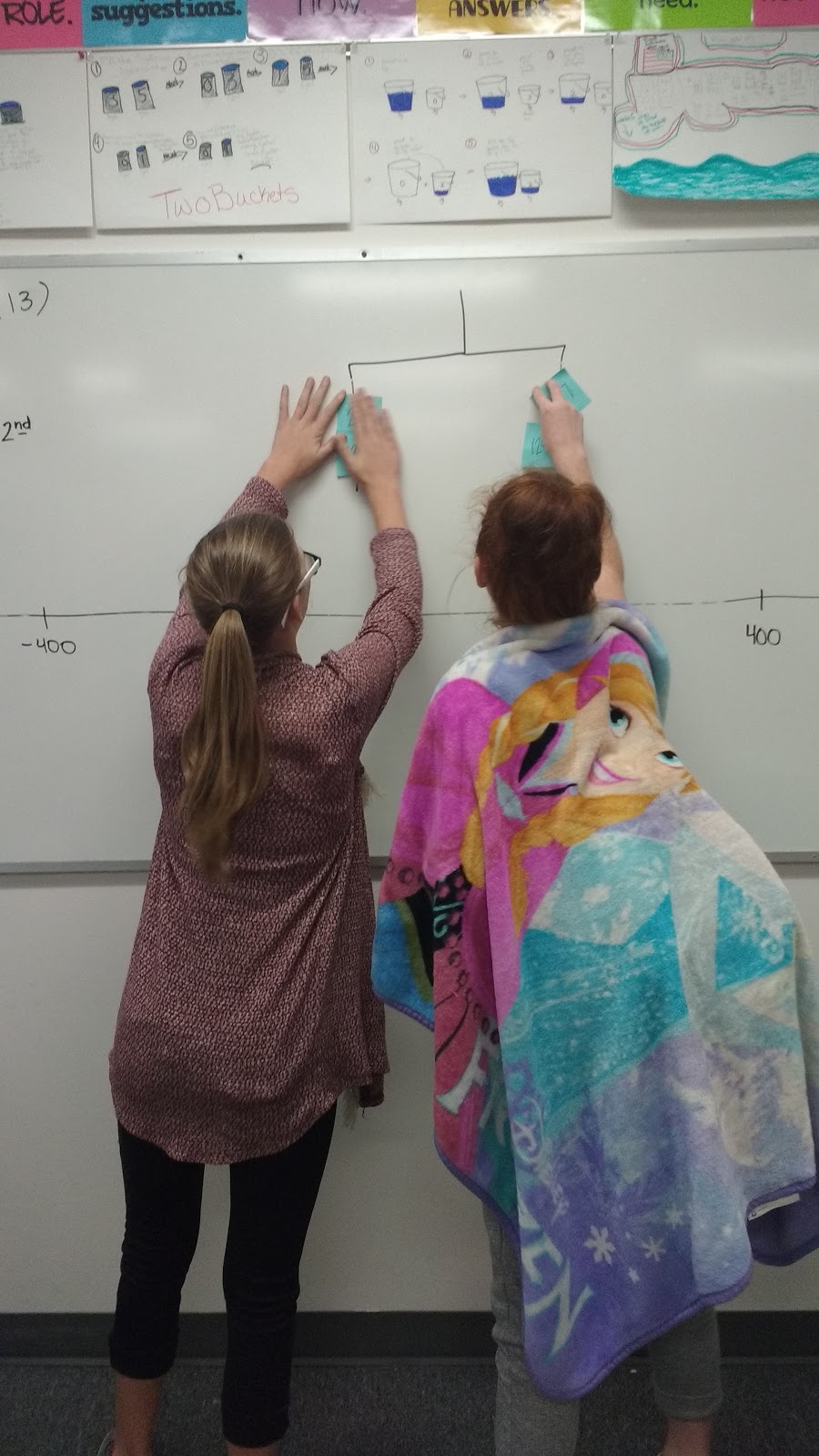
Looking back at this activity now, I’m now wondering how I could create a similar activity within the Algebra 1 curriculum. Any ideas? The only idea I’ve had so far is to make mobiles that require students to combine like terms.
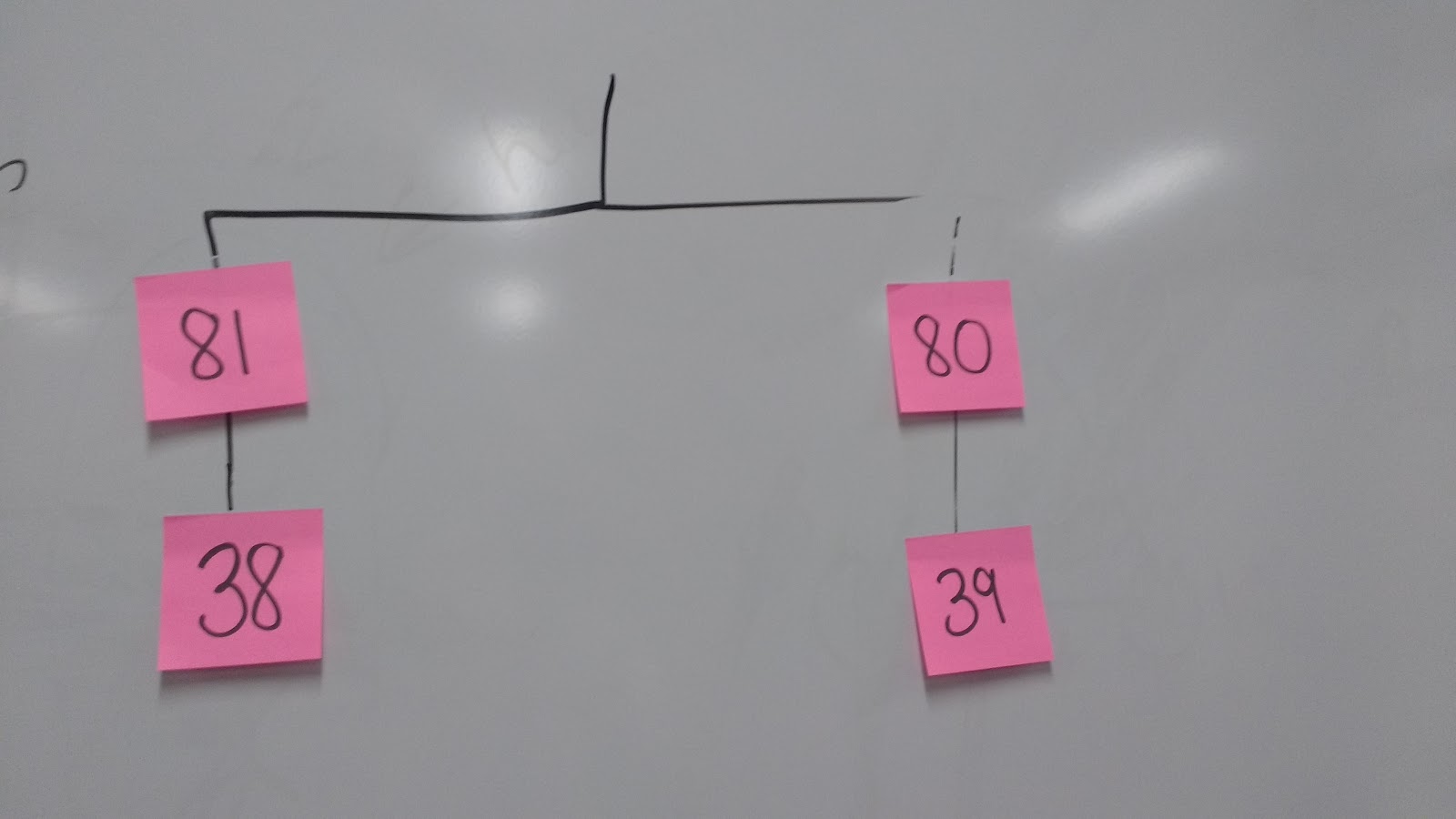
May 27, 2017 – Recognizing Inequalities from Graphs – Speed Dating Activity
As I’m working my way through my folder of blog drafts, I’m realizing that most of the ideas have found their way into other posts. This post contains an idea that was mentioned in another post, but I never got around to sharing pictures of what the activity actually looked like.
I wanted my Algebra 1 students to be able to quickly glance at a graph on a number line and determine the algebraic inequality that would produce that graph. I created a set of speed dating cards using sharpie, pencil, and colored index cards. The index cards don’t have to be colored, but I find that my kids have much more trouble seeing through the colored cards than the plain white ones. Please tell me I’m not the teacher who has the few students who waste more time trying to read the answer on the other side instead of just answering the question.
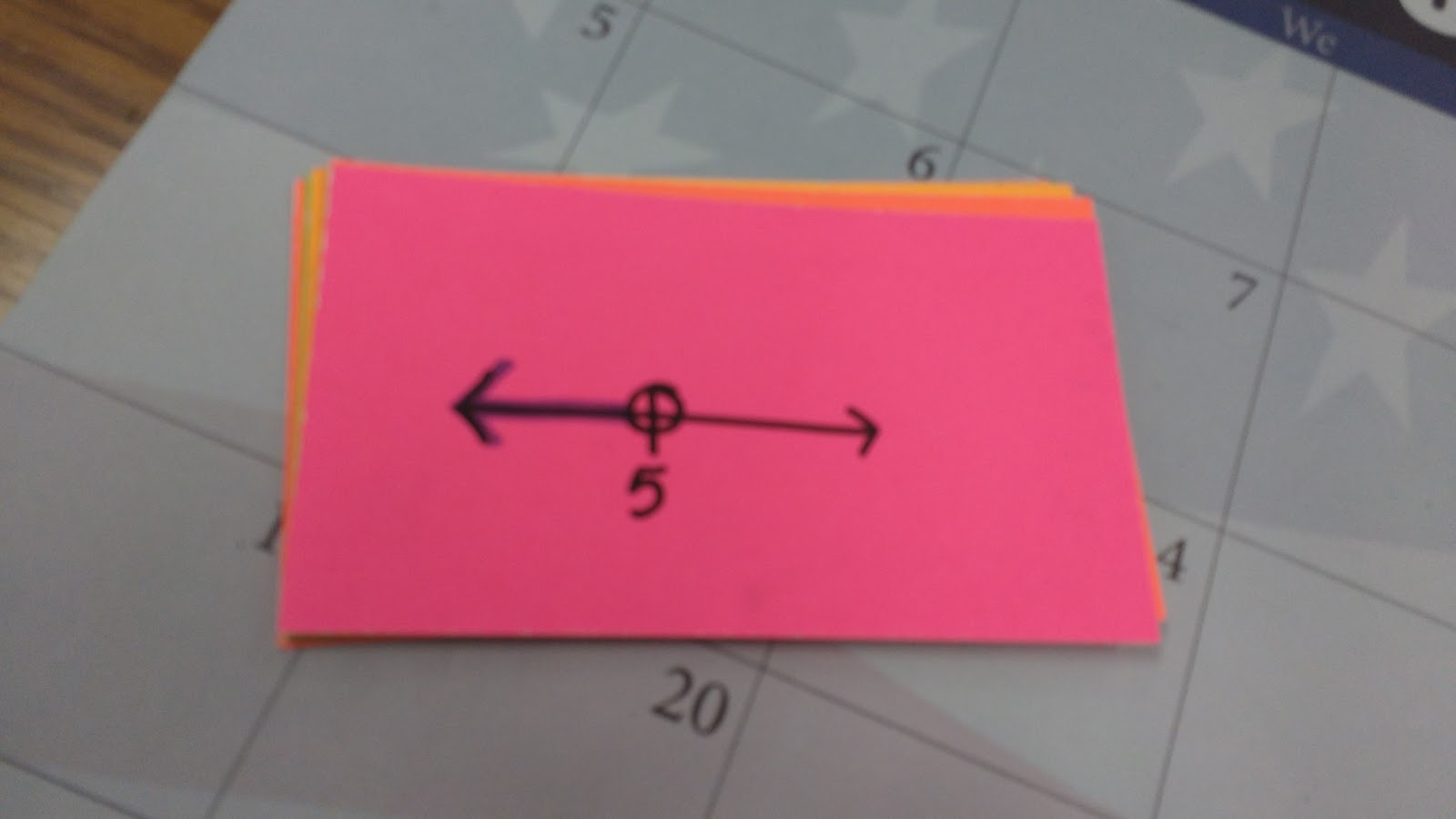
I used sharpie for the graphs and pencil for the answers in the hopes that I could prevent cheating even more that way.
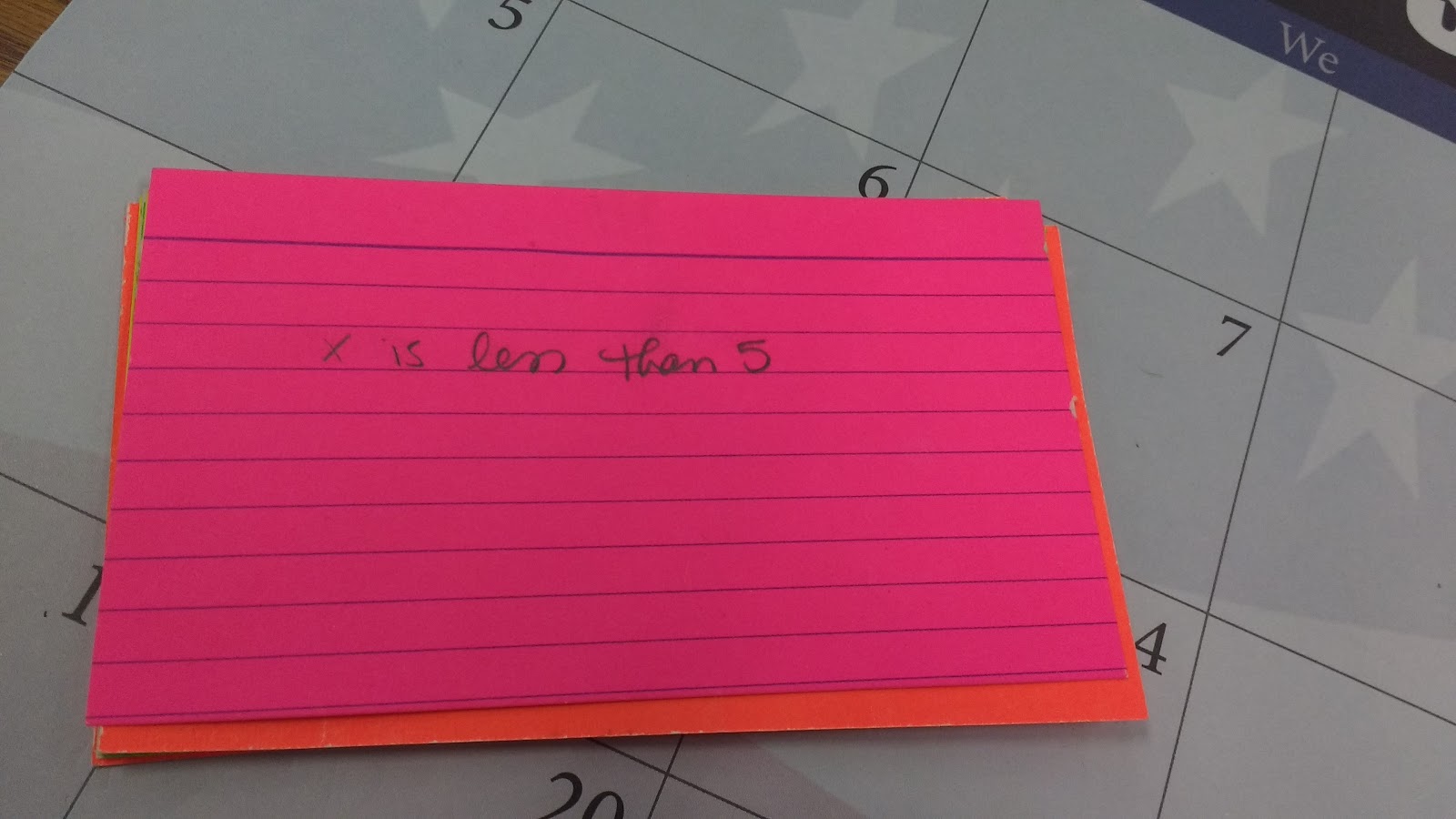
So, how does speed dating work? Each student is given a card with the graph facing up. Once they have determined the inequality that produces their graph, they flip the card over to check their answer.

Once all students have had ample time to solve the problem on their own card, I have each student stand up and find a partner. Students hold their cards up to their partners with the problem facing out. I tell my students that in speed dating, the goal is to meet as many people in as short of time as possible and exchange contact information in case you later decide you want to get to know someone better. In class, our goal is to get as much practice naming inequalities as possible.
Students take turn answering the other’s question. Each student coaches the other student through the solution if necessary. Then, students trade cards and find a new partner. This continues until the teacher calls time.
Here are some action shots:
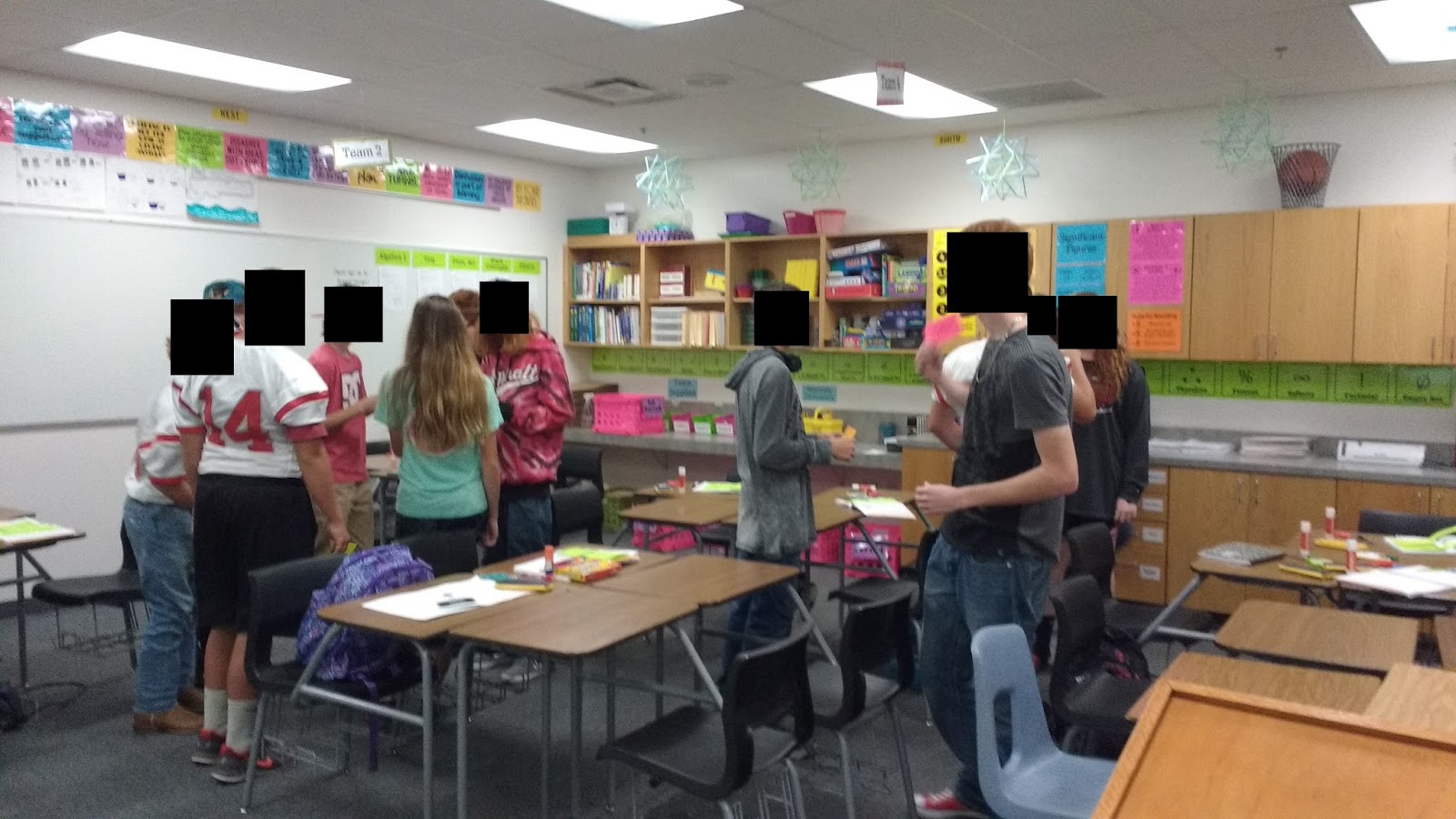
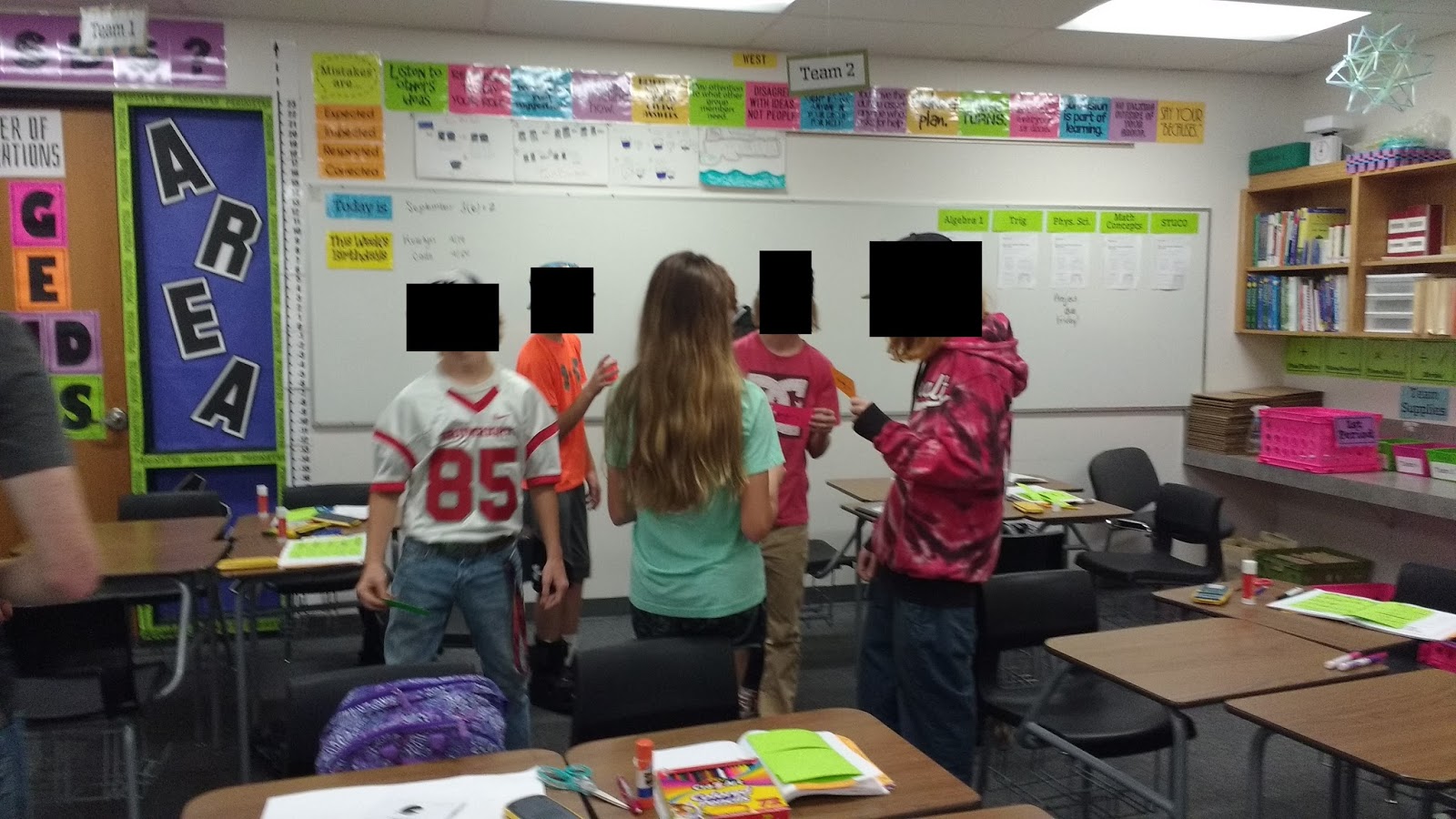
One of my summer goals is to take these speed dating activities that I have handwritten on index cards and turn them into share-able digital activities. I’ll be sure to share once I get this done!
May 28, 2017 – Reflecting On My First Classroom
As I’ve been going through my draft folder, I find many posts that are easy to delete. Occasionally, though, I run across a post and wonder “Why didn’t I ever finish that?!?” This post is one of those. I’ve now completed my first school year in our newly-designated 7th-12th grade building. Here’s a blog post I wrote but never published last summer.
I’m not entirely sure what to blog about today. I did some major decorating work in my classroom yesterday, but I left without taking pictures. So, those will have to wait for another day. I did take a few pictures of my old classroom. I’m still teaching high school math next year, but I’ll be doing so in a 7th-12th grade building instead of a 9th-12th grade building. This means I’m leaving behind my first and only classroom.
Is my new classroom nicer? Definitely. It’s bigger. It’s newer. It has an entire wall of cabinets. Of course, it’s not right next to the copy machine/teacher’s lounge/staff restroom. But, I think I’ll be able to cope with that this year.
But, this classroom, the place where I truly learned how to be a teacher, will always hold a special place in my heart. My parents and sister came up last Friday night to take down my dry erase boards and bulletin boards and move them to my new classroom.
This leaves my old classroom looking much like it did when I first saw it. After spending hours painting and decorating this classroom to make it a bright, cheery place for students to learn, it’s sad to see this place I love so much look so sad.
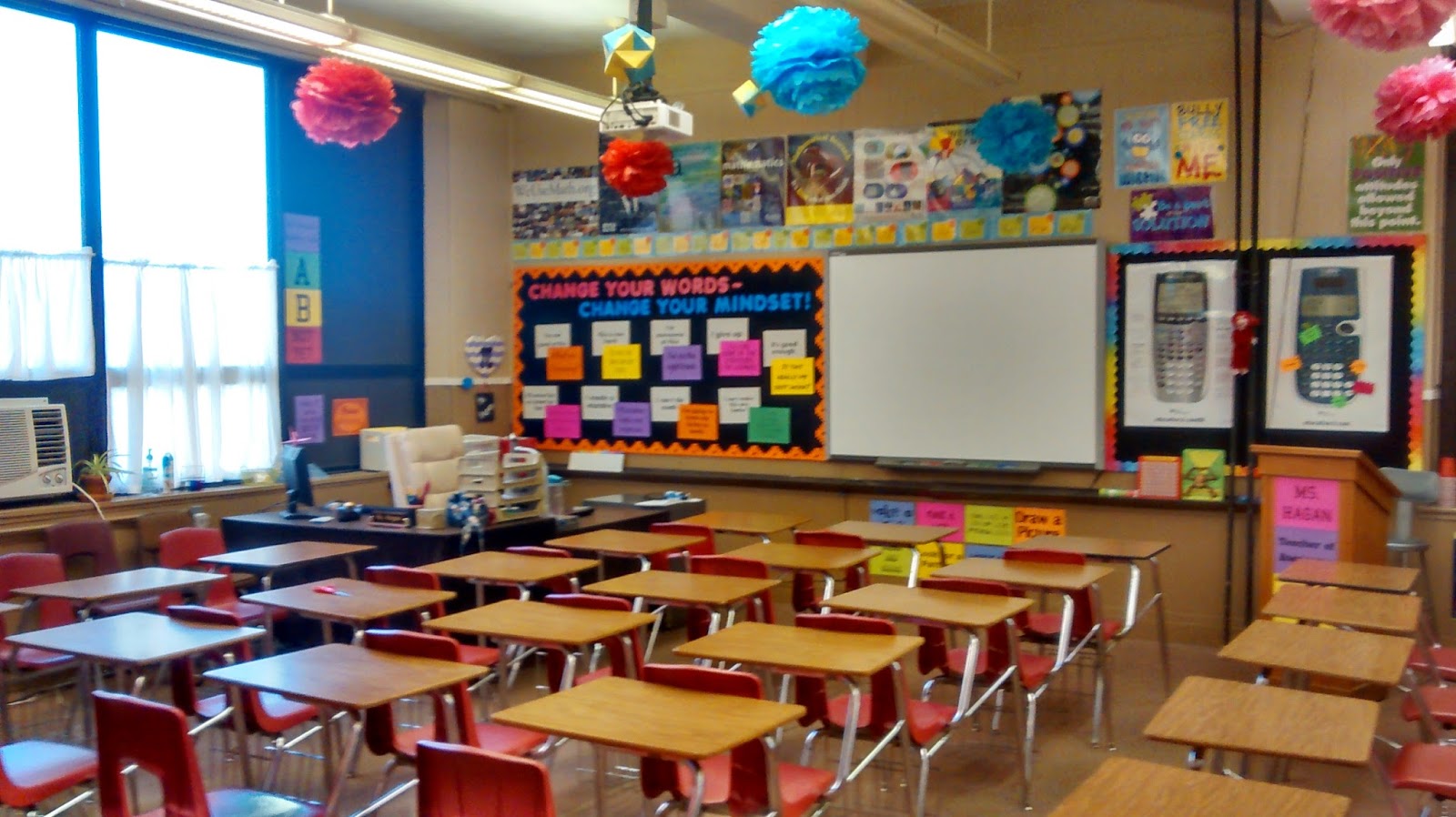
No more math will be learned here.


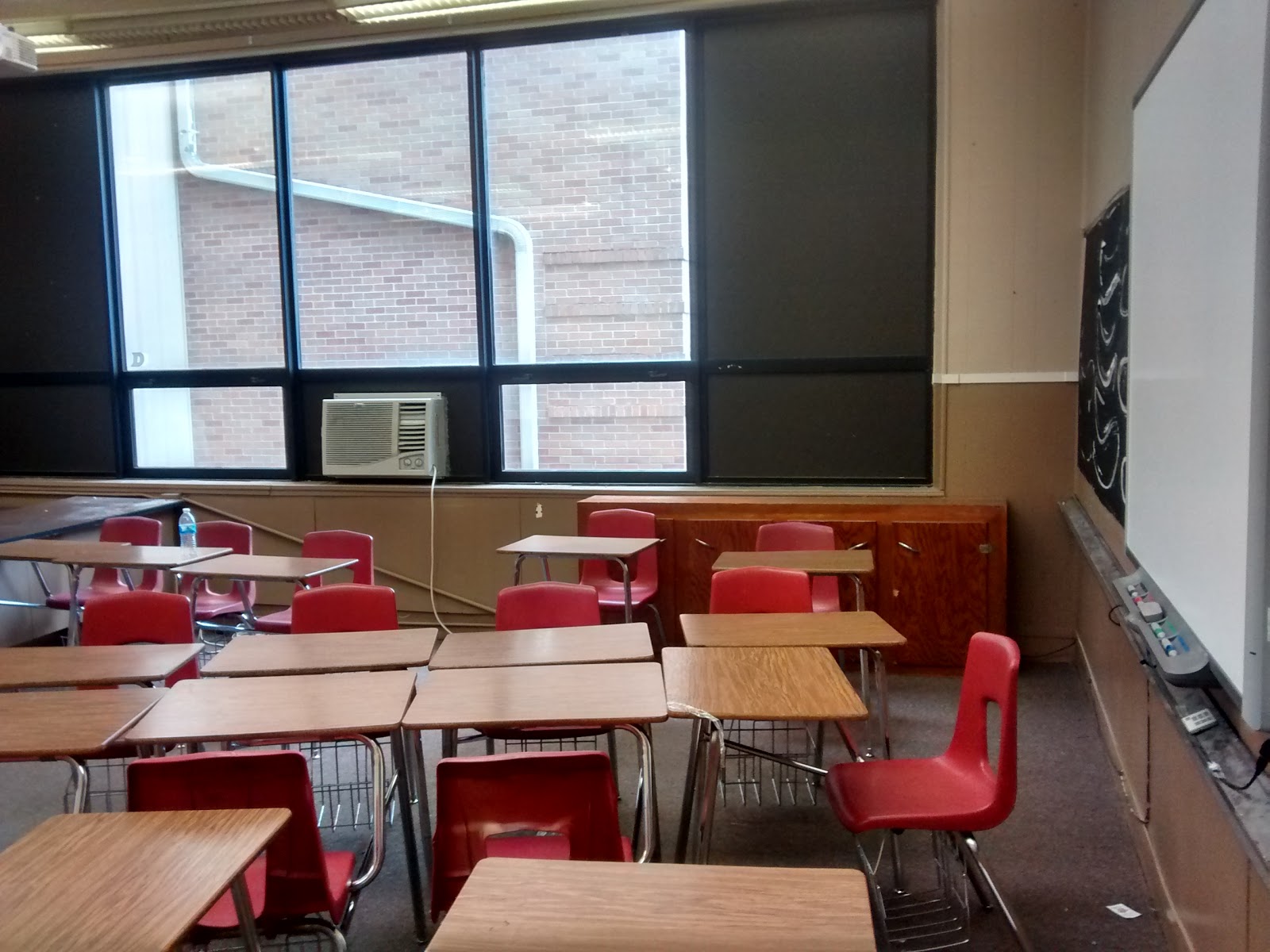
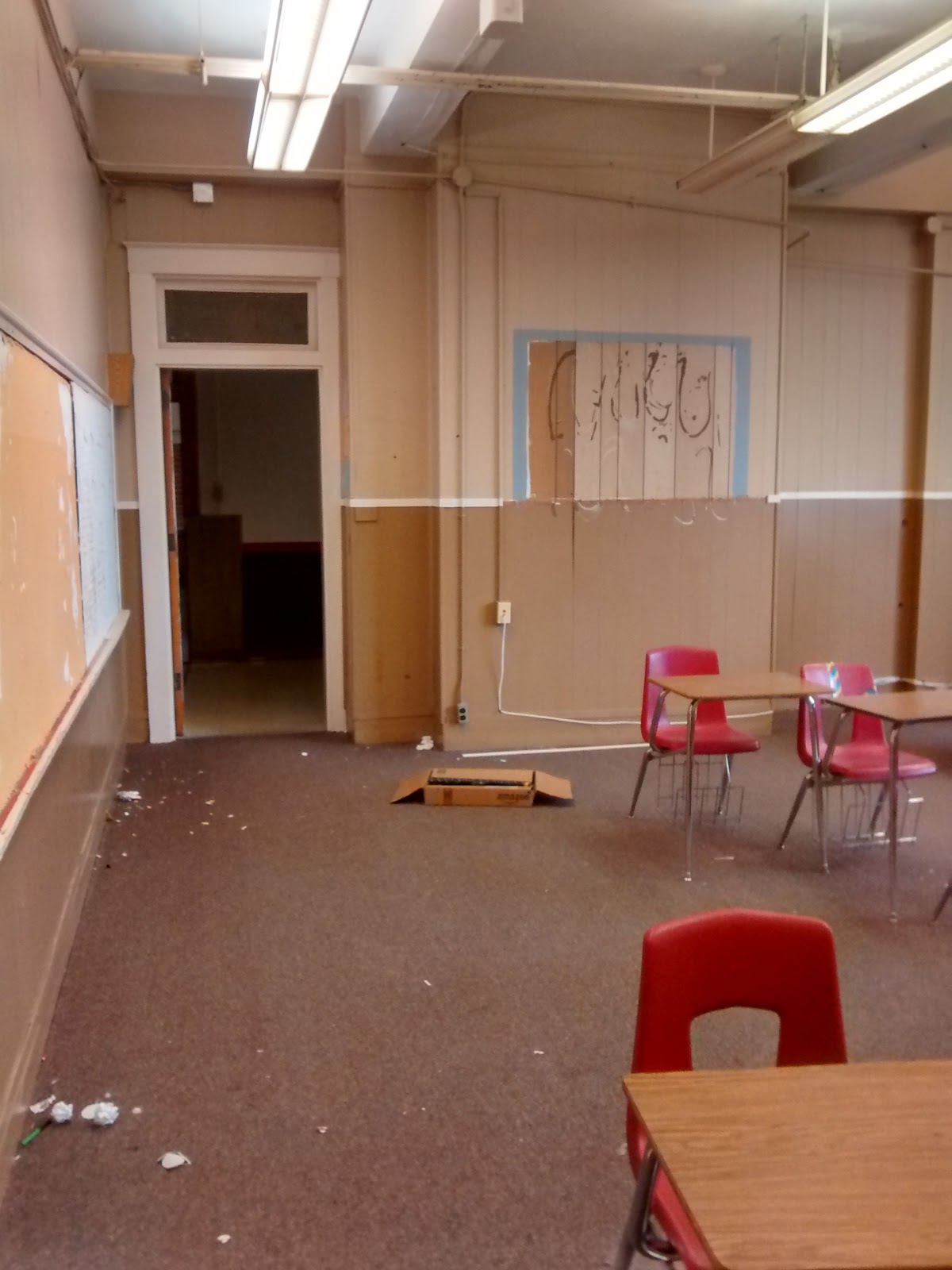
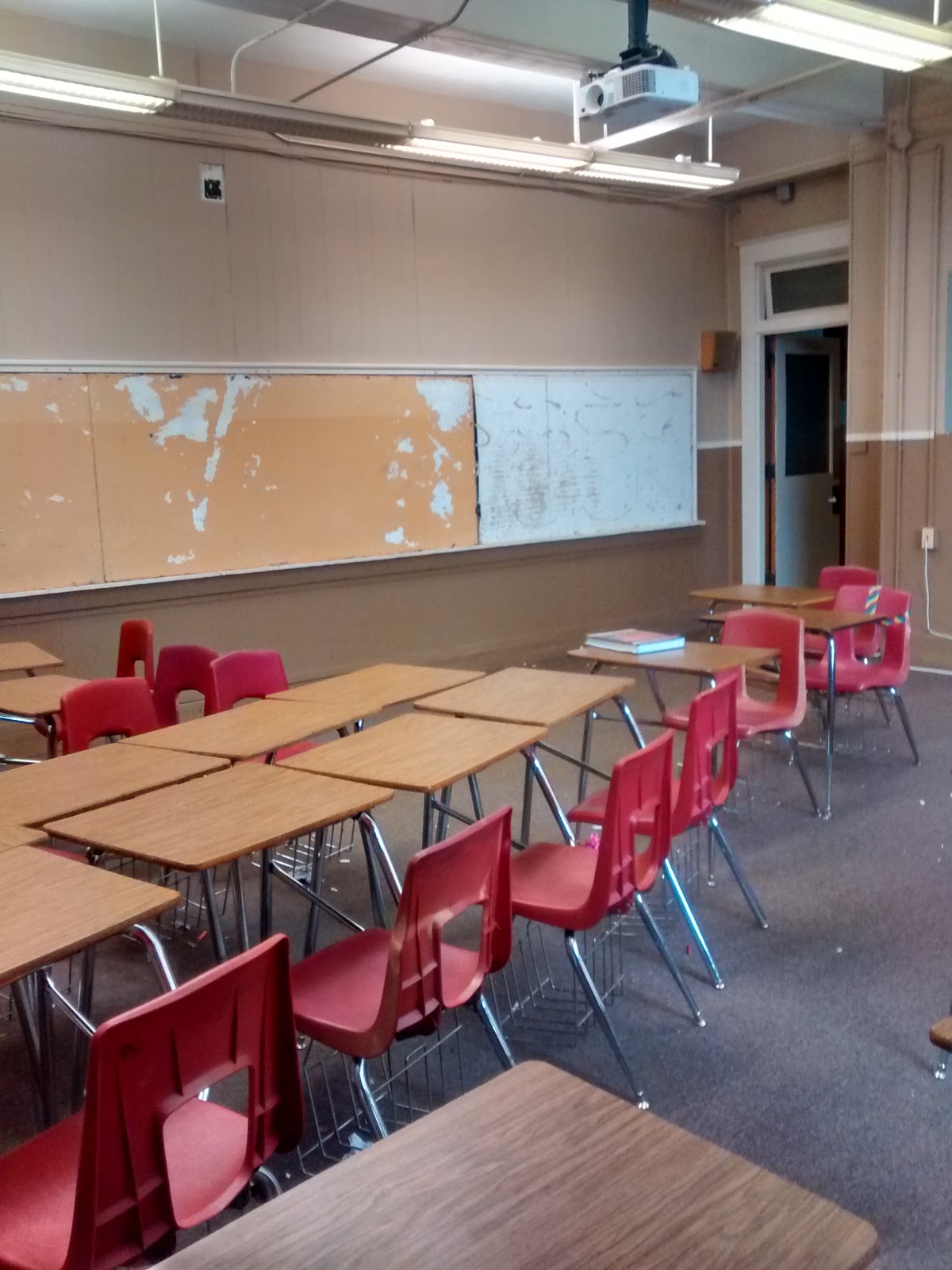
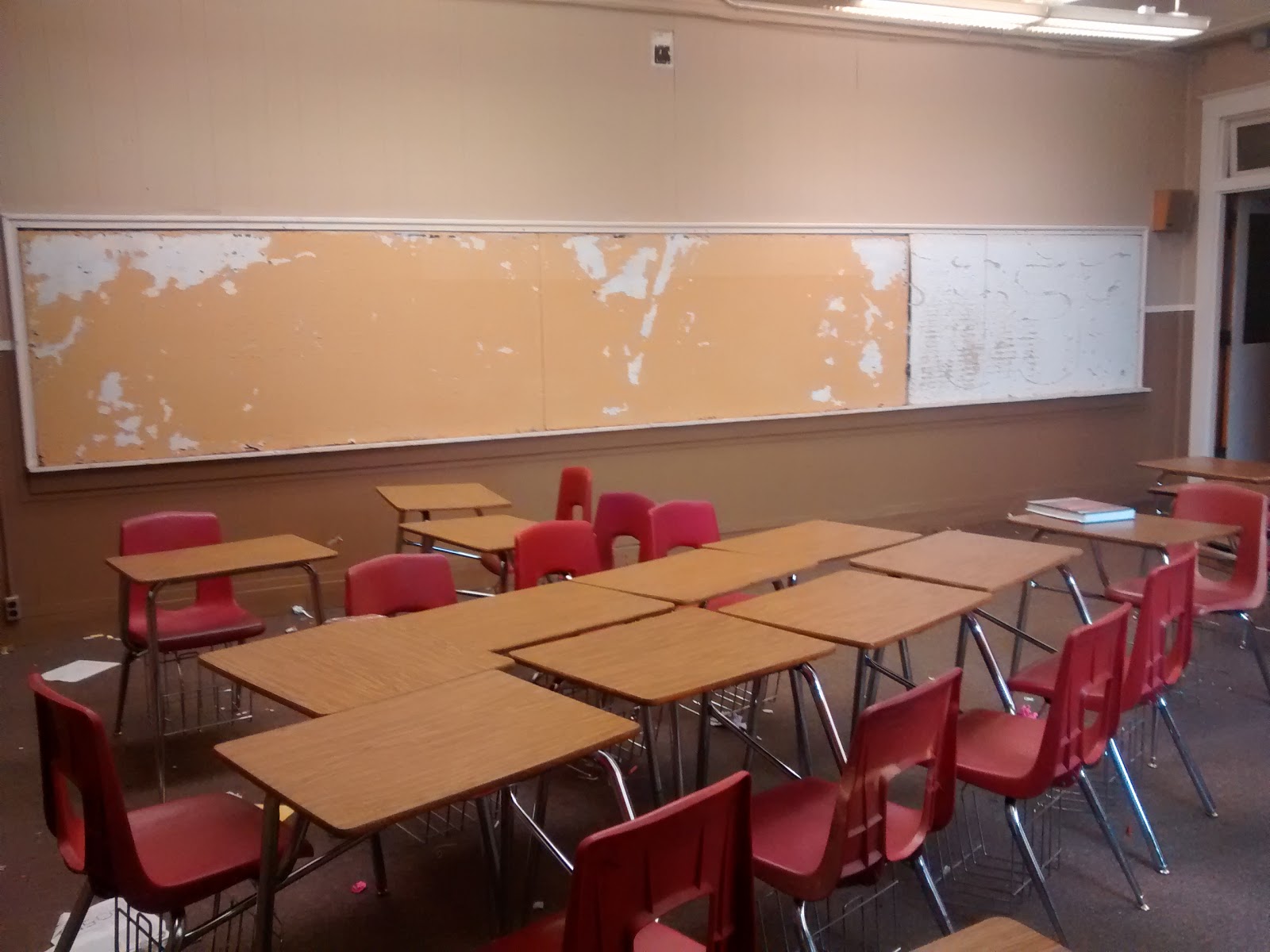
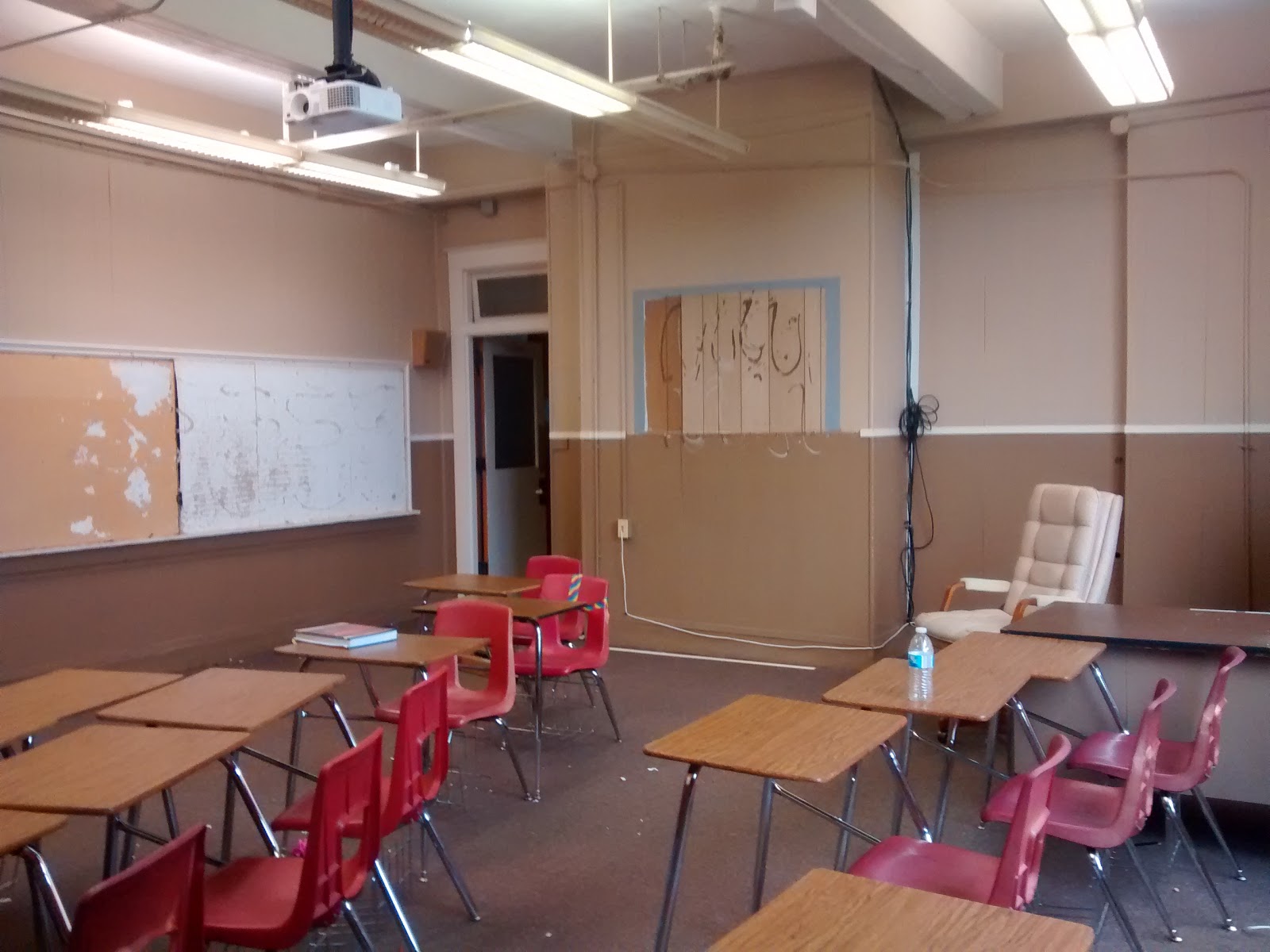
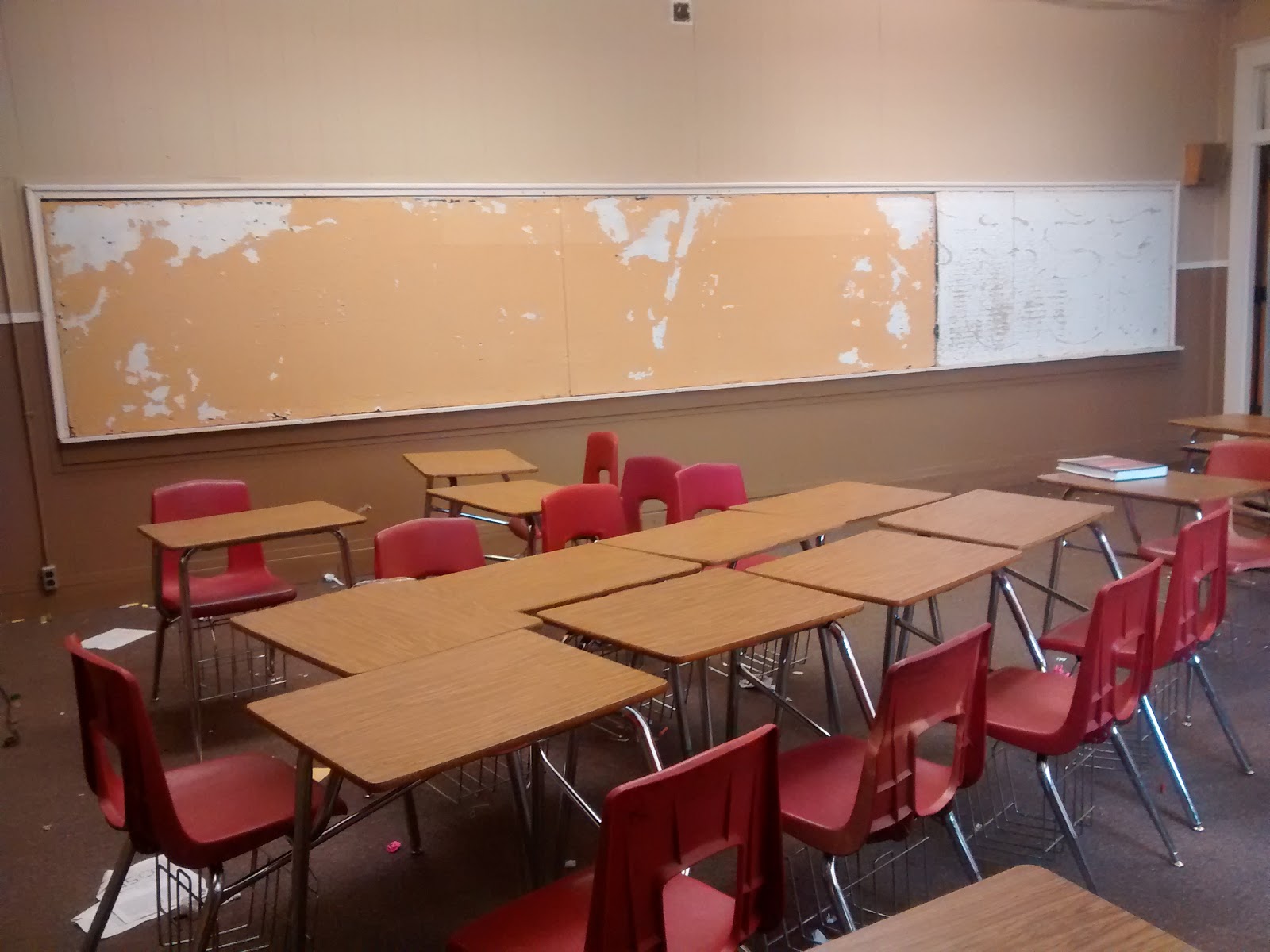

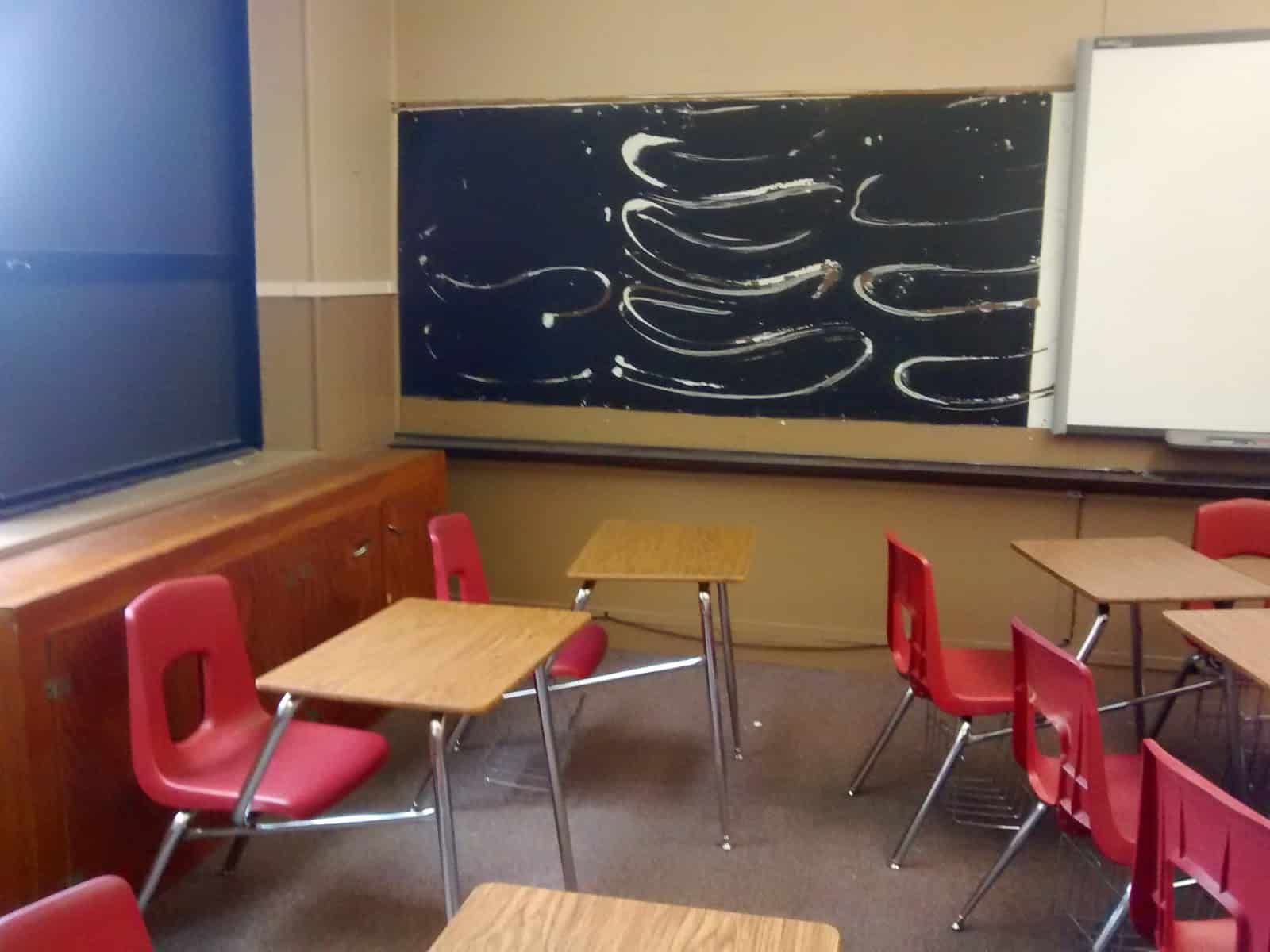
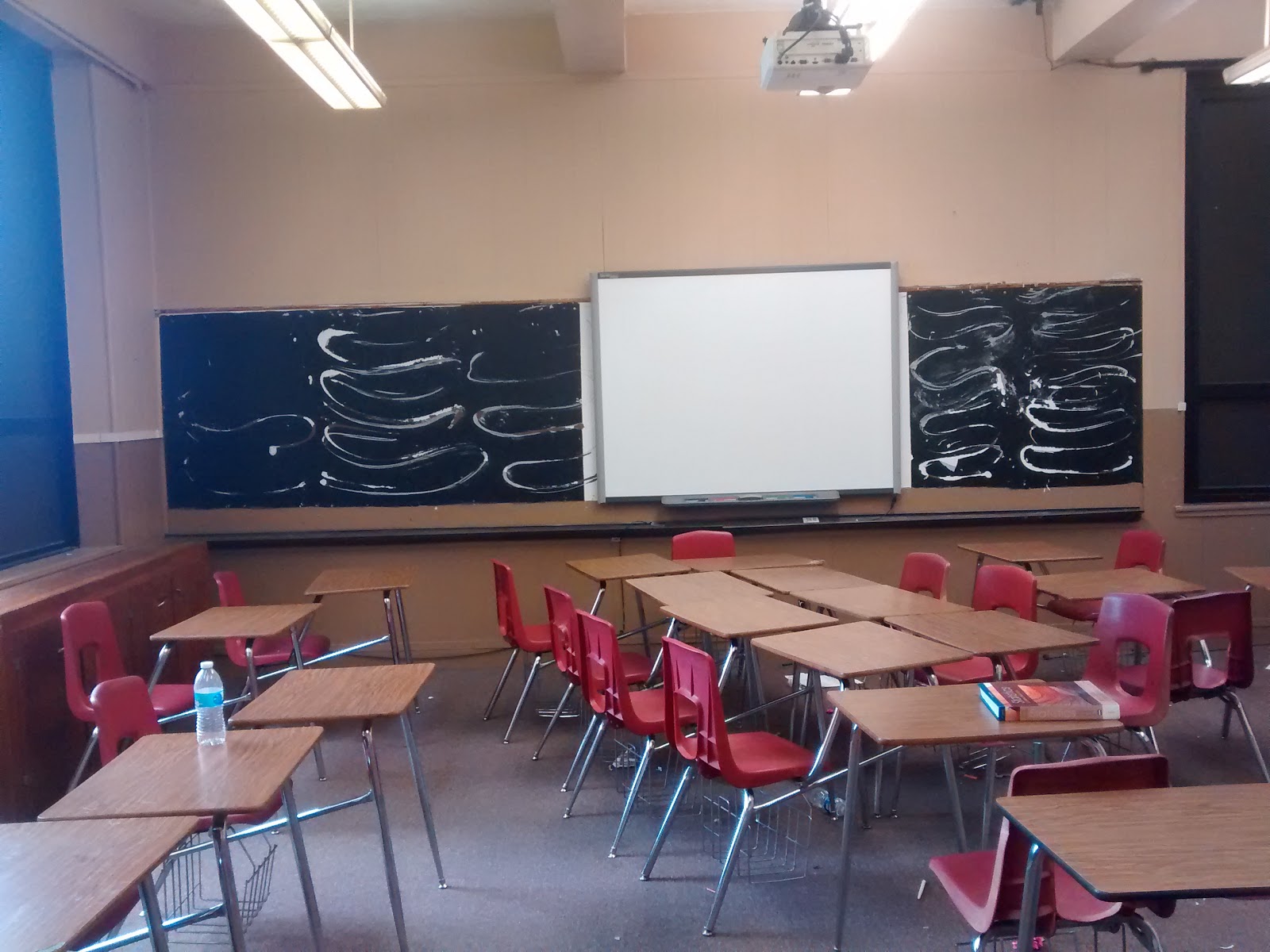
Good bye, old friend.
May 30, 2017 – One Step Towards Organizing My House
Today’s post has nothing to do with math, but it’s something I want to share because I’m proud of it. One of the goals I’ve been working toward this school year is to get more organized both at school and at home. I’ve written several posts about my efforts to get organized at school, but I really haven’t blogged about my efforts at home.
The book that is helping me to reshape my thinking is The House that Cleans Itself by Mindy Starns Clark. The premise of the book is to focus on why your house (or classroom) gets messy. If we make things easier for ourselves to keep clean and organized, we have a much better chance of staying clean and organized.
Today I just want to share a couple of small changes that have resulted in our house staying much more organized. The topic is hangers. Here’s what my hanger storage used to look like:
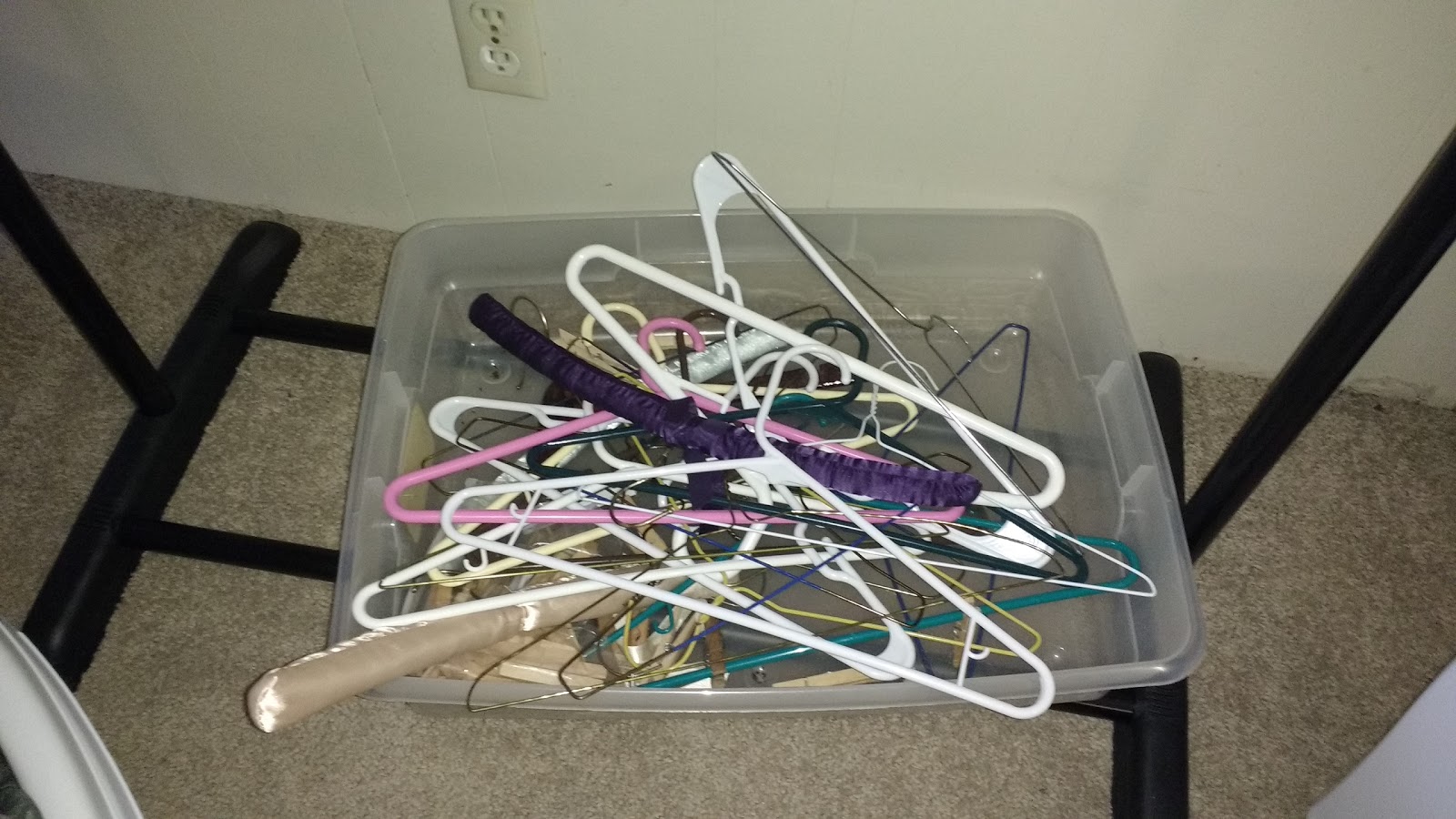
This basket sat on the floor of the laundry room. Everyday, I had a decision to make as I was getting dressed and ready for the day. I could take my hangers and walk across the house to the laundry room to put them away, or I could take the hangers and hang them off one of the knobs on the cabinets above the closet. Once I made the latter decision once, I would continue doing so. Except, soon I would have to hang the new hangers off of other hangers to make room. Eventually, these would end up tumbling to the floor and laying there until I went through the house in a cleaning frenzy.
I went looking on Pinterest for a solution.
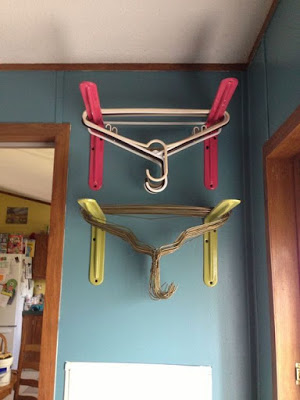
I do have to admit that my husband did all the work after this point. I told him what to buy and showed him the picture, but he did the actual purchasing and hanging of the brackets.
Here’s the finished product:

This only solved part of my hanger problem. The hangers in my laundry room now looked much more organized. In a way, it was almost fun to put a hanger on the brackets. This still didn’t cure the fact that often I was too lazy to walk all the way to the laundry room each time I needed to put away a hanger.
Enter the hanger hamper. I purchased two of these – one for each of our closets.
These hampers sit on the floor right inside (or outside – it depends on the closet!) the door. When I put on an article of clothing, the hanger goes straight into the hanger hamper. No excuses. This means that my hangers are now so easy to put away that I don’t dread doing it.
When the hanger hamper gets full or we run out of hangers in the laundry room, it’s easy to transport the hangers to the laundry room and hang them off the shelf brackets.
Does my house stay magically clean now? No. I definitely have a long way to go. But, hangers are no longer a source of clutter and mess. Now, I just need to find solutions for all my other problems.
Thanks for putting up with a post that has zero to do with math or education! Don’t worry. I’ll be back to posting about teaching tomorrow!
May 31, 2017 – Trigonometry Advice from Former Students
For years, I have had my students write letters of advice to future students after state testing was over. This year, my students did not have an end-of-instruction exam, so I was able to just keep teaching up until the end of the school year. So, this year was the first time in a long time that I didn’t have students write letters of advice.
As I’m cleaning out my draft folder, I ran across a twist on the idea that I tried with my trigonometry students two years ago. Since I don’t teach trig every year, I couldn’t really have them write letters to the next year’s students. Instead, I had them write letters to their past selves with information they wish they had before beginning trig.
You can tell these are from a couple of years ago because I was still Ms. Hagan, then!
—
Here is some advice I should tell you that will help you out for trig. You’ll need to pay attention, listen to Ms. Hagan, and ask questions. A big tip you’ll need to know is to compliment her on her pi jewelry. 🙂
—
You were being dumb this year. You should have sat down and paid attention. You would have made better grades and would have done better on the ACT.
—
When you come into trig, try hard to keep up with your notebook. Your notebook will be your absolute best friend. Pay extra close attention when Ms. Hagan is giving her lectures. Be sure to know how to do one lesson before you move on to the next one because more than likely the lessons are going to tie into each other.
—
Wait to highlight your notes until after Ms. Hagan is done with explaining the examples. If you do not wait, you will get confused. Speak up and use your words more often. Participate in the games they play in class. You will have more fun that way. I promise. On Good Things Monday, you should participate. And, I promise that nobody will judge you. Tell your funnies on Friday funnies.
—
You should pay more attention in class and work harder on in-class activities so you know what’s going on. Don’t be on your phone as much so you know what’s going on so you can pass your quizzes the first time you take it so you don’t have to come in after class.
—
When we create a time machine and this gets back to you, there are some things I would like you to prepare for. You need to just study more and actually do your homework. Don’t be on your phone as much so you can take better notes and pay attention better. Also, start bringing snacks to class because you are always getting hungry before lunch. You should also keep your notebook more organized and numbered.
—
Enjoy the days when you get to play uno! Those are the best days ever. The notebook is the best part of the class when you aren’t playing games.
—
I would suggest that you should pay attention… You really do learn more. If you don’t know what’s going on, raise your hand and ask a question. Ms. Hagan is there to help in any way possible. Practice truly does make perfect in this class. “Notebooks” are your best friend during class/tests. Oh, and keep taking any class Ms. Hagan offers.
—
Don’t be frightened about trigonometry. Definitely don’t believe the horror stories you hear about it either. Trigonometry will actually make sense. Out of all math subjects you have learned so far, you will understand trig more than you understand any other math subject.
June 1, 2017 – Impact of Interactive Notebooks
Sometimes I wonder if I’m wasting my time by having students create interactive notebooks. Then, I remember that my students say stuff like this:
I went and asked the counselor if I could get in Algebra 2 instead of Geometry because I miss having a notebook. I keep asking my sister if I can look at her Algebra 2 notebook. You guys made a little envelope this year, and I really like it. I still have my notebook. Sometimes I just sit at home and look at my notebook.
This is from a couple of years ago seeing as I don’t teach Algebra 2 anymore. But, I hope my students today feel the same.
July 30, 2017 – Back in the States with a Big Announcement
Several of you have sent me e-mails letting me know that my lack of posting of late had you worried. I want to assure everyone that I am okay! For the past two months, my husband and I have been visiting Australia with very limited internet access. We decided to take a twitter/blogging break and focus on spending time with family and friends. After 36 hours of traveling (thanks to a delayed flight that required rescheduling our last flight) and a good sleep, we are back home.
To make up for the lack of posts around here, I give you a photo of kangaroos at a wildlife sanctuary in South Australia and a promise that I will be breathing life back into this blog soon as I gear up to begin my sixth year of teaching.
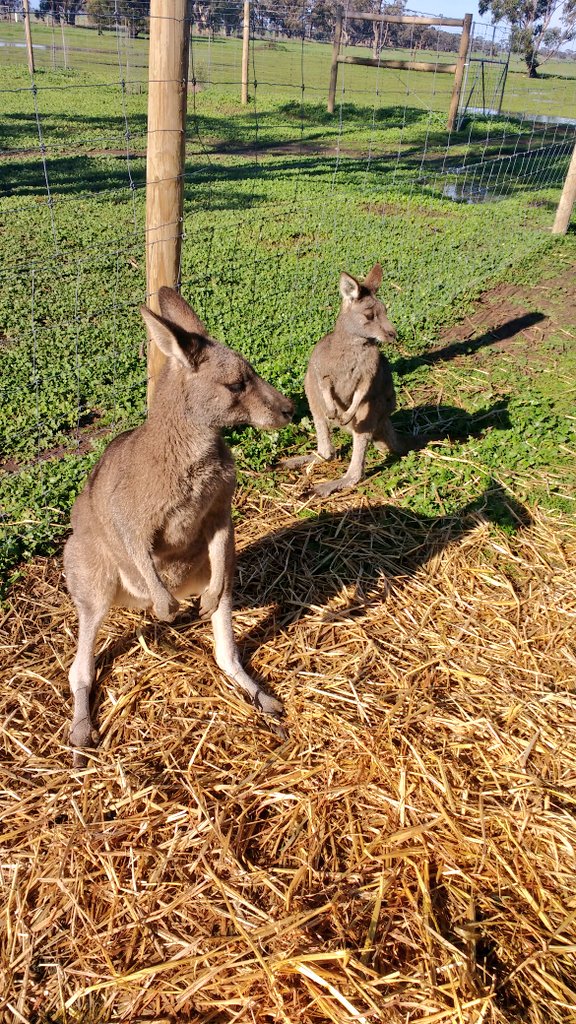
Another reason things have been quiet on the blog front is that I have busy as a result of being named one of twelve finalists for 2018 Oklahoma Teacher of the Year. Before we left for Australia, I had to submit a binder/portfolio that consisted of a resume, photograph, and seven separate essays. I spent over a month on these essays, so it was great news to hear that I got to move on to the next stage of the competition. As a result, I had to film a ten minute video that captured my teaching style and philosophy. It was supposed to contain classroom footage, but I’ve never been videoed while teaching. Had they asked for this video during the school year, I would have videoed a lesson. Instead, we did the next best thing and edited the audio from my NPR story and added photos to give the selection committee a peek into what I am like as a teacher. I want to say a special thanks to several MTBoS members who willingly gave up part of their summer to film video testimonials which I was able to edit and put into my video. My husband deserves a million thanks for filming my video clips and editing all of the video clips submitted by others to fit into ten minutes. I know pretty much nothing about video editing, so I wouldn’t have been able to pull this off without him. After submitting the video last week, it feels like a huge weight has been lifted off my shoulders.
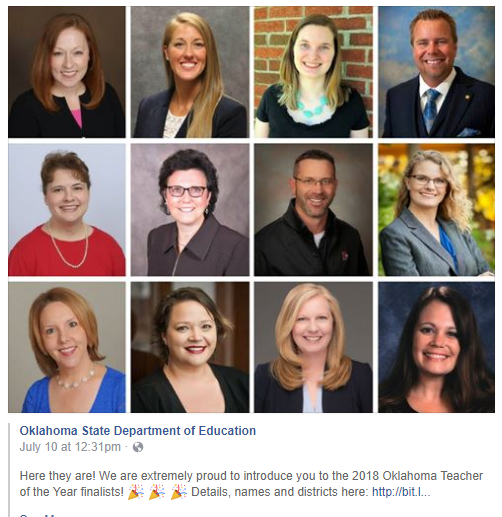
In my essays and video, I focused on the importance of opening your classroom to the world through social media. This allowed me to talk about my blog and twitter, specifically #Teach180. It made me super happy to see which quote the state department chose out of all my essays to put by my picture. The reason I keep blogging and tweeting is for my students.
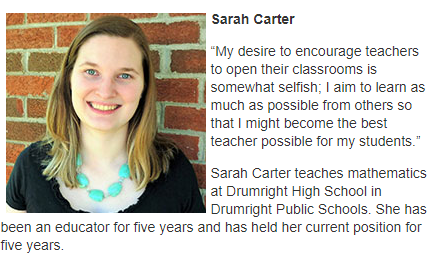
In a few weeks, I will travel to the Oklahoma State Capitol for an in-person interview. The winner will not be announced until September.
I hope to organize my photos from our trip to Australia soon and write a blog post about some of our adventures. So keep an eye out for that soon. I’ll also be sure to inundate you with classroom decorating ideas as I start to prep for the new school year. This year I will be teaching four sections of Algebra 1, one section of Math Concepts (a course for ninth graders not yet ready for Algebra 1), and one section of Chemistry. I’m relieved to be teaching chemistry this year instead of physical science. I am working my way through my husband’s 11th grade physics textbook at the moment, but I still have so much to learn in order to do that course justice.
Here’s to more blog posts soon!
August 3, 2017 – Australian Adventures: Darwin
Now that I’ve been back from Australia for a few days, the jet lag is finally setting in. I had plans to post about first week of school ideas, but I can’t seem to stay awake long enough to finish that post. So, I thought I’d share some photos of some of our Australian adventures instead.
These photos are from Darwin which is the capitol of the Northern Territory in Australia. Shaun’s sister lives in Darwin, so we visited her for a week of our eight week stay. If you’re not super familiar with your Australian geography, here’s a map courtesy of Wikipedia. I’m definitely not in a place to judge because I’ve now spent 20 weeks in Australia, and I still get Queensland and New South Wales mixed up…
We flew from Tulsa to Dallas (about an hour flight), from Dallas to Sydney (sixteen hour flight – it used to be the longest commercial flight in the world), and from Sydney to Adelaide (about a two hour flight). Shaun’s family lives near the Victoria/South Australia border.
To get to Darwin, we took a four hour flight from Adelaide. This was one of the worst flights of my life. My advice: Don’t take a four hour flight when you have just come down with the stomach bug. Thankfully, there was a wonderful doctor in Darwin who prescribed me some antibiotics that helped me feel well enough that I could spend our last day there doing touristy things.
Darwin Botanical Gardens – Darwin is in the tropics, so this was my first time in a true, tropical garden.
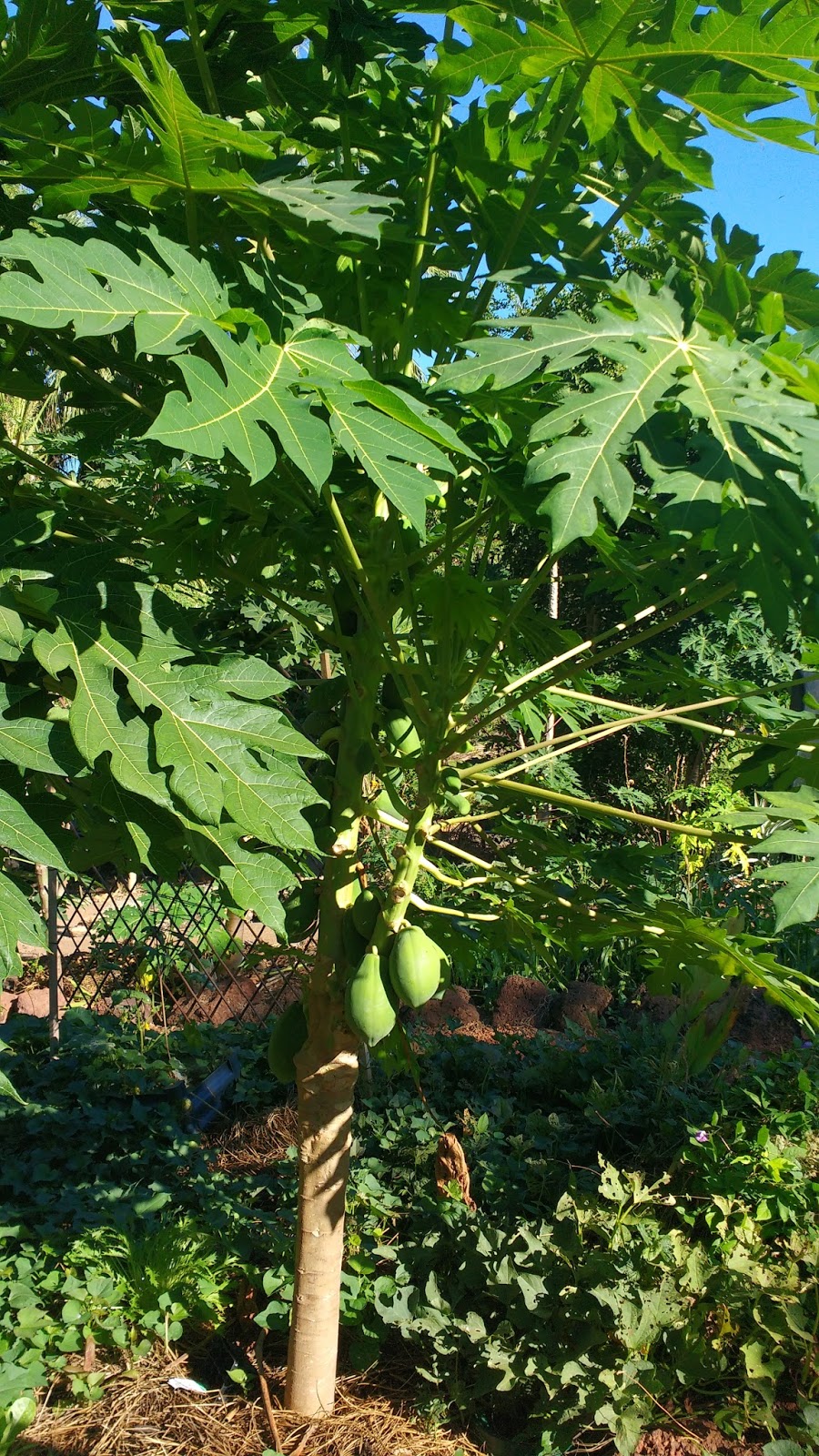
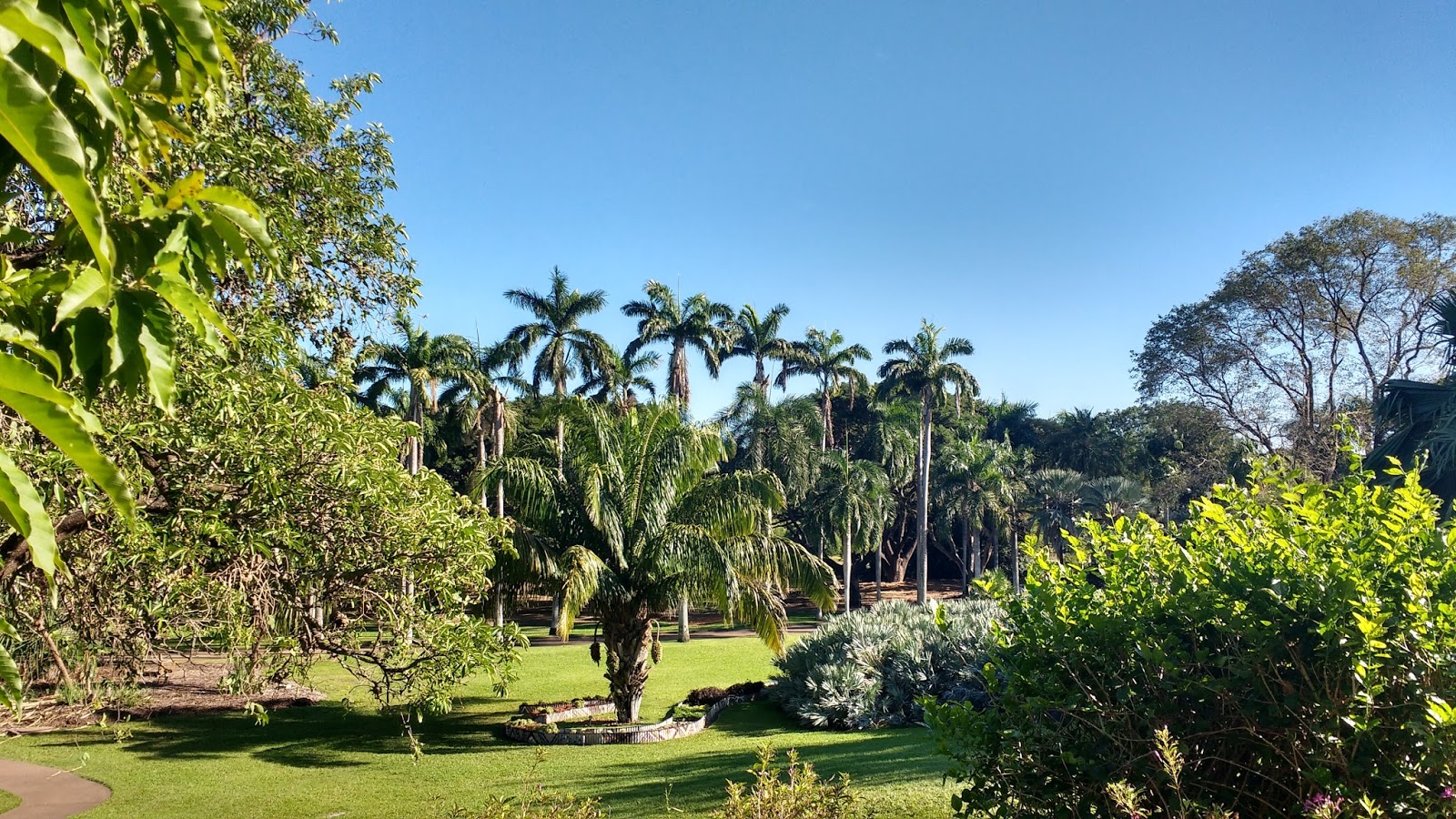
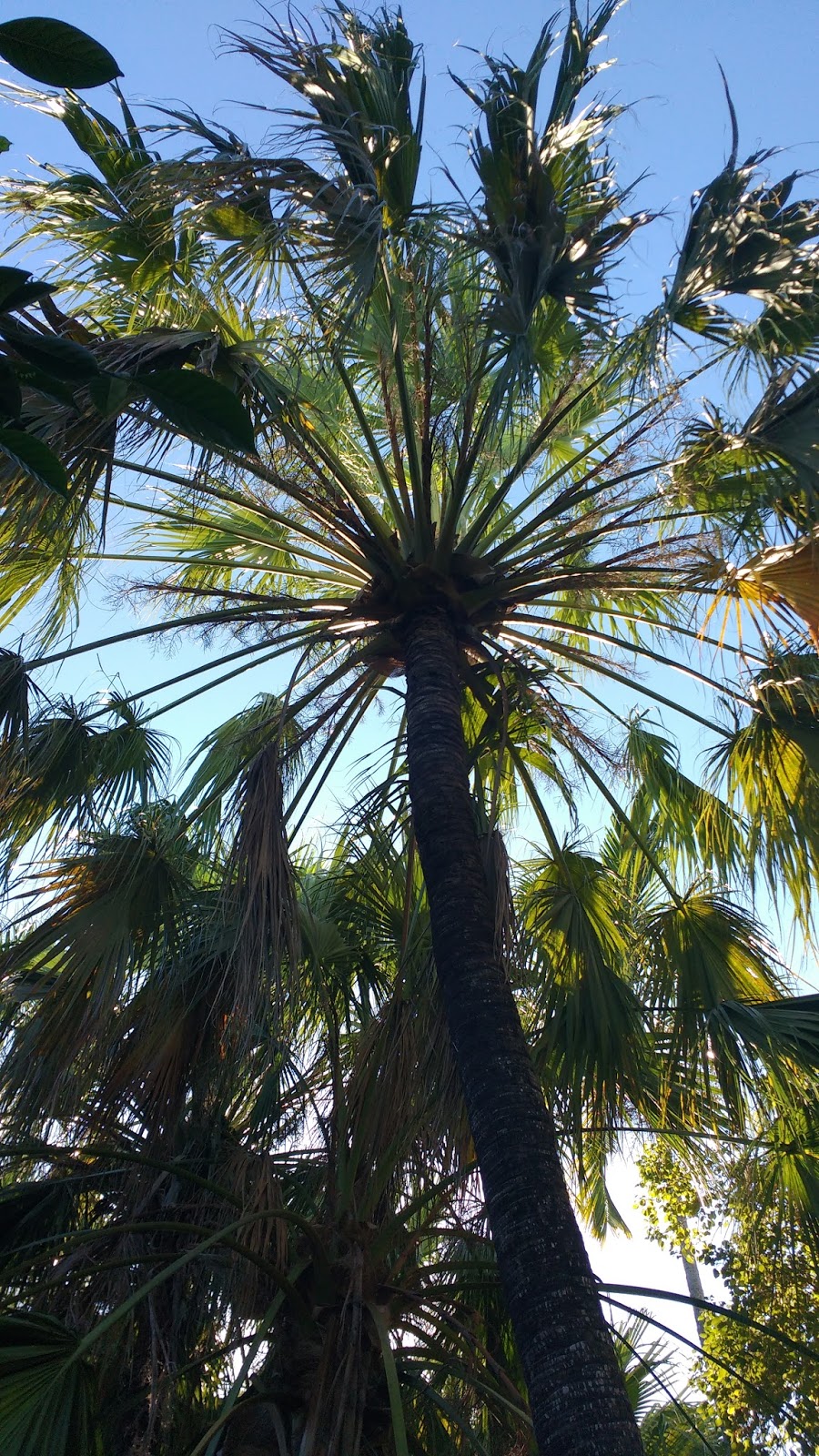
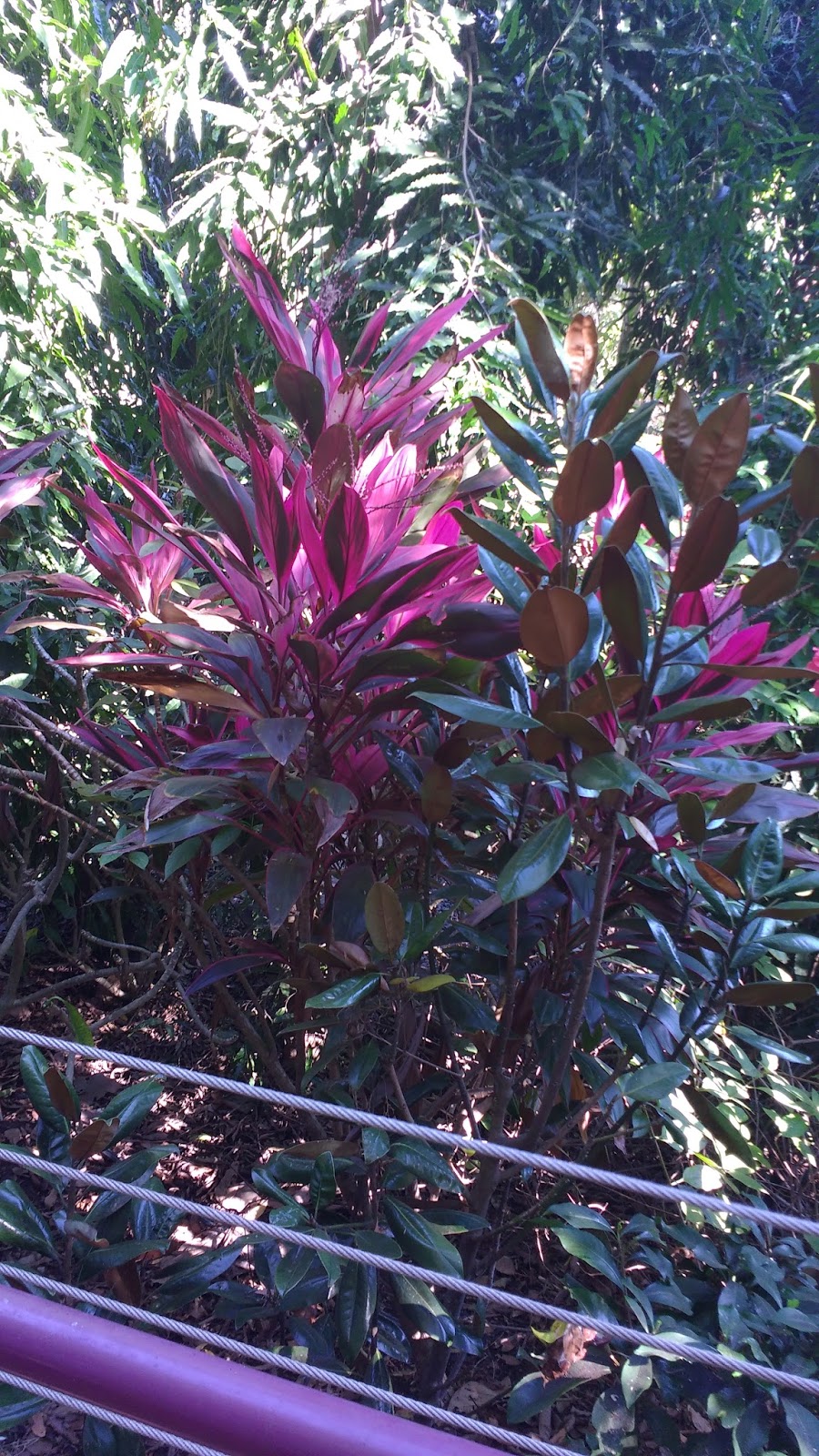

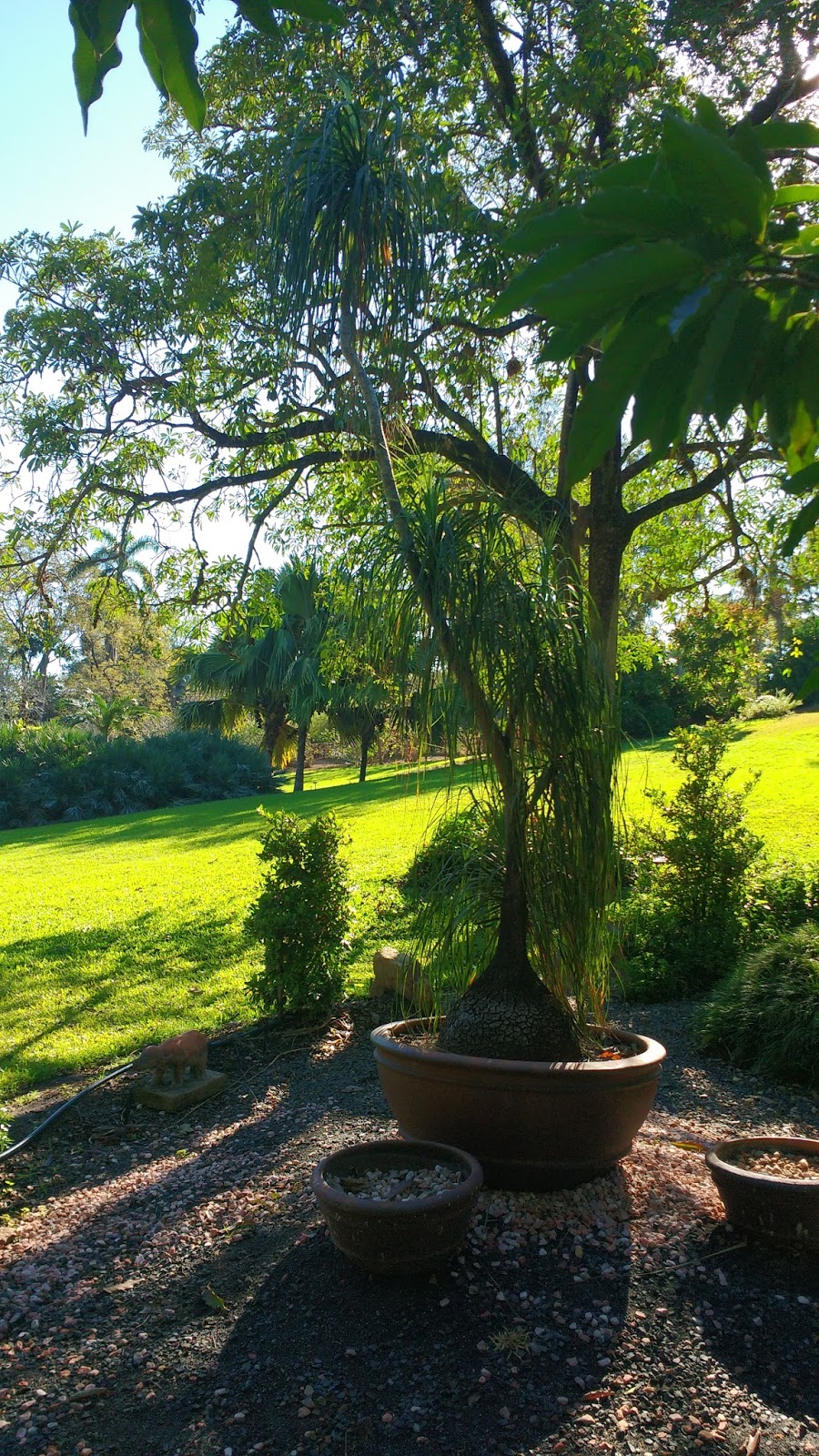
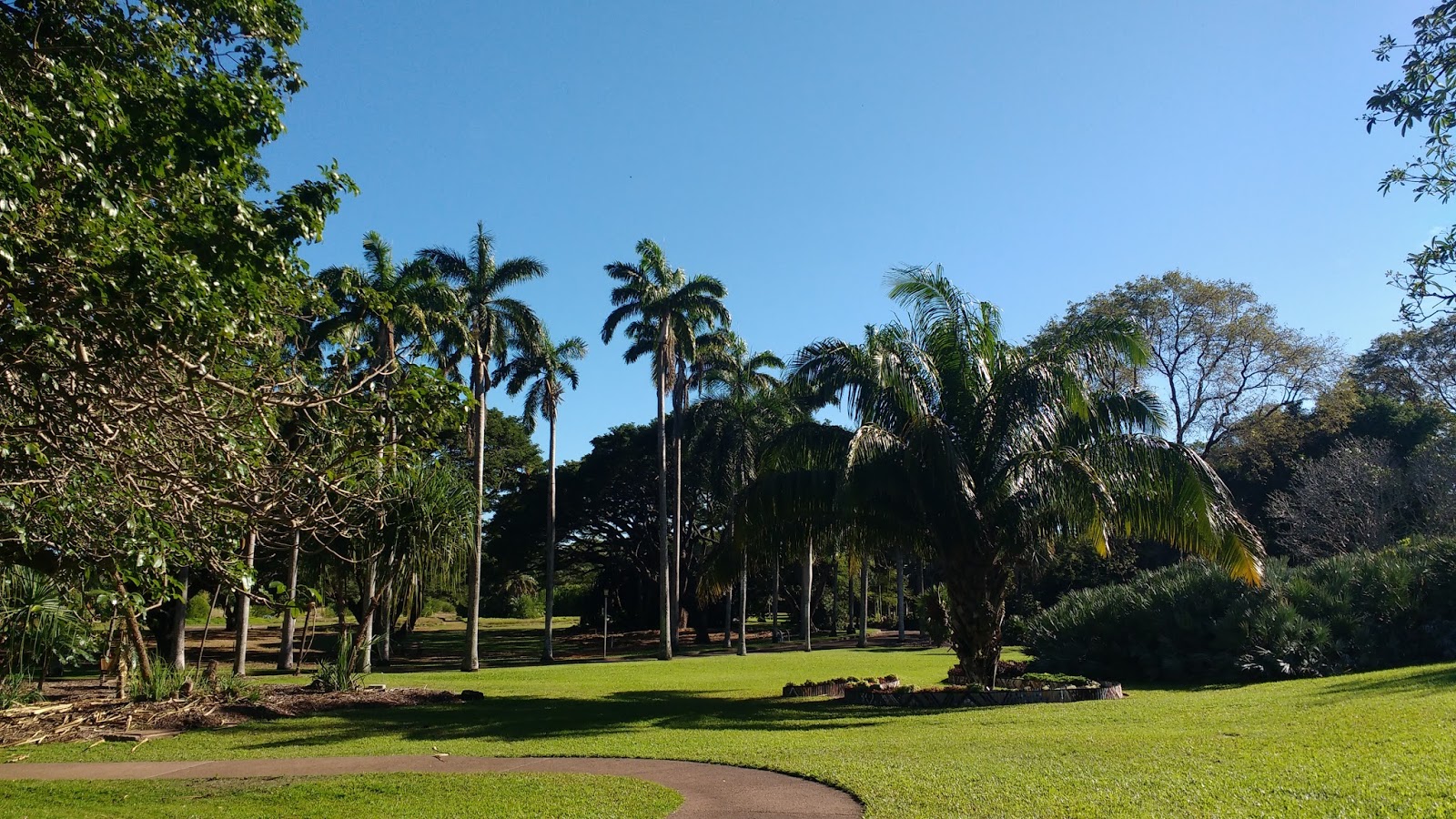
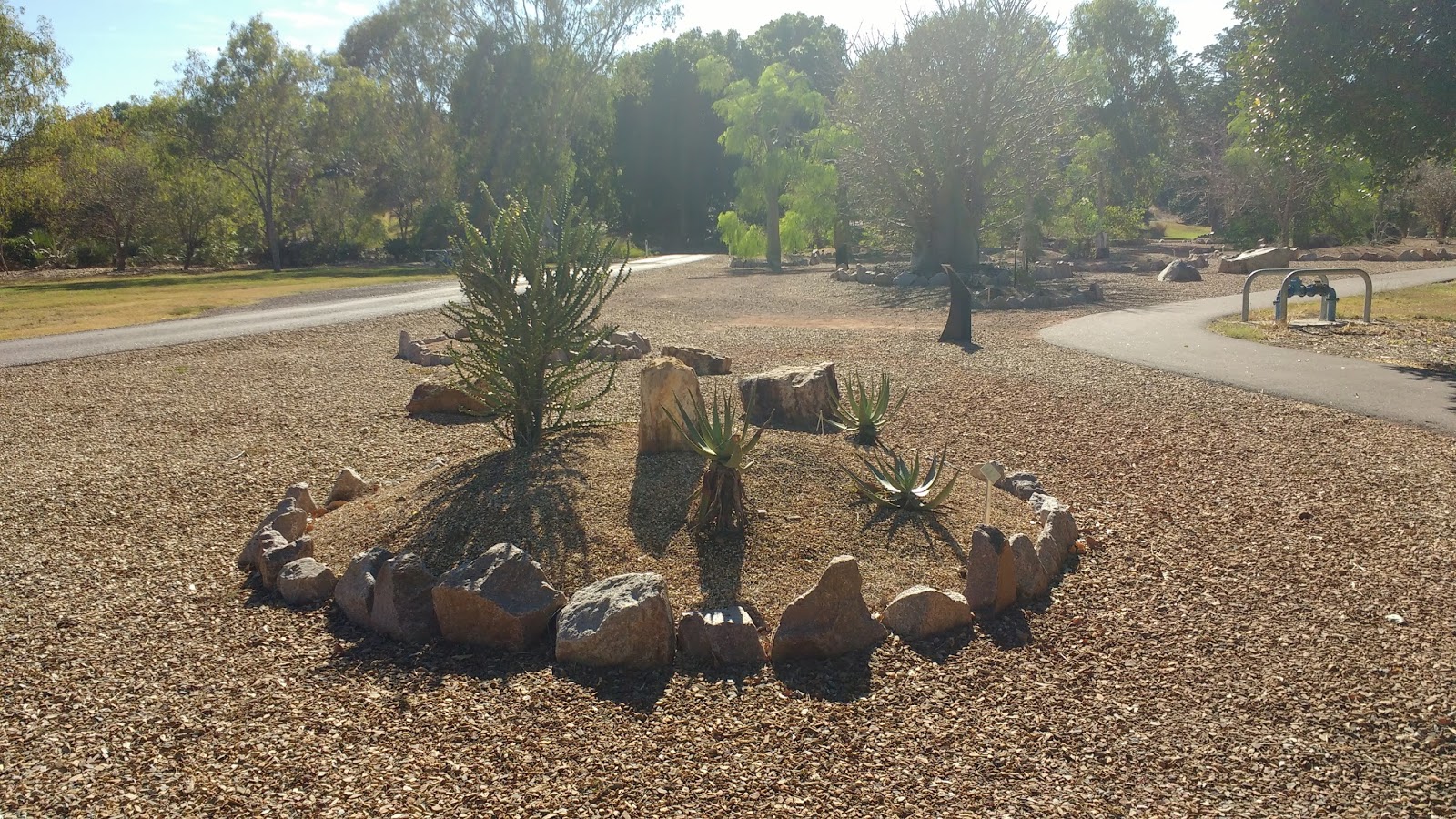
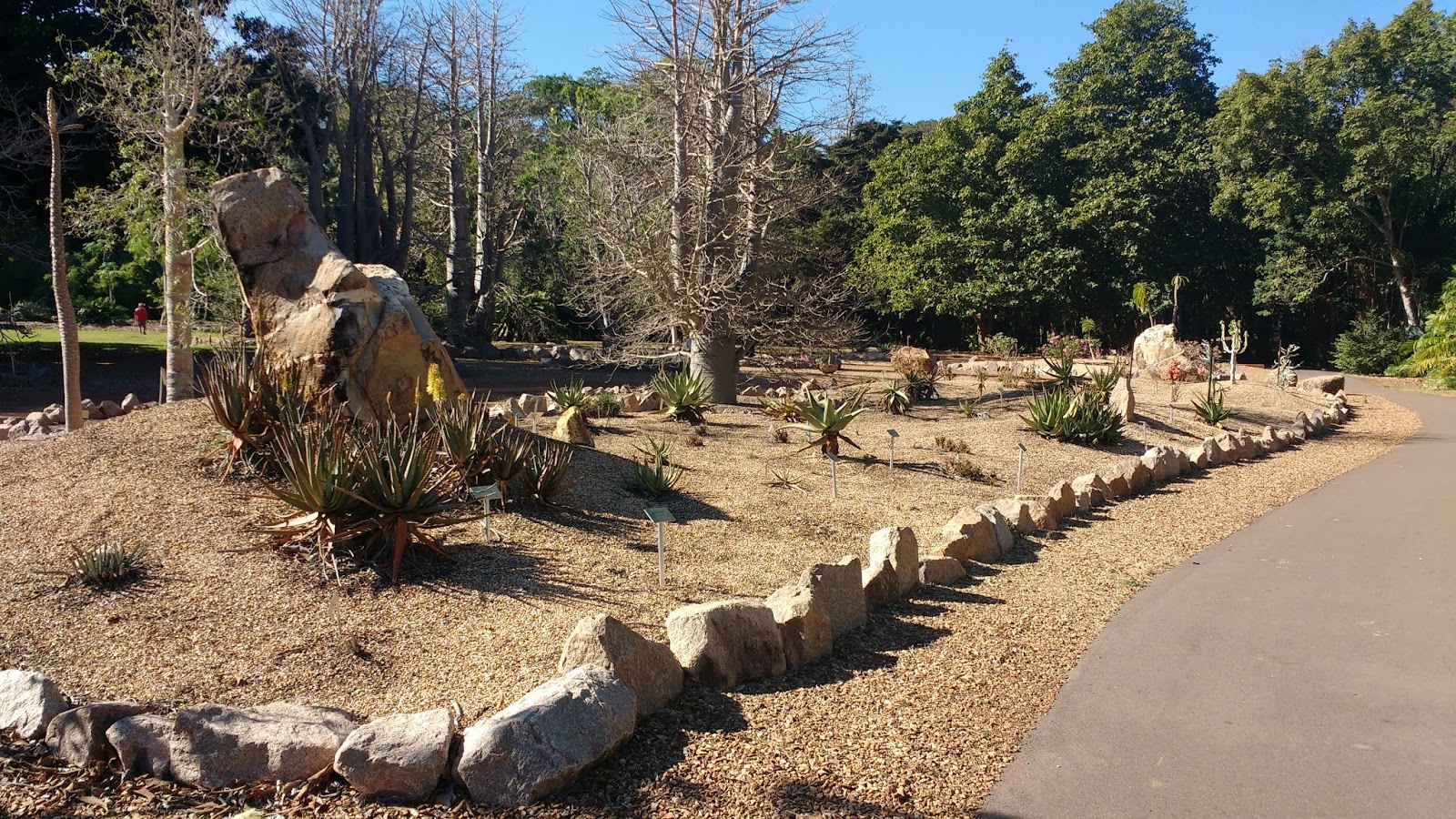
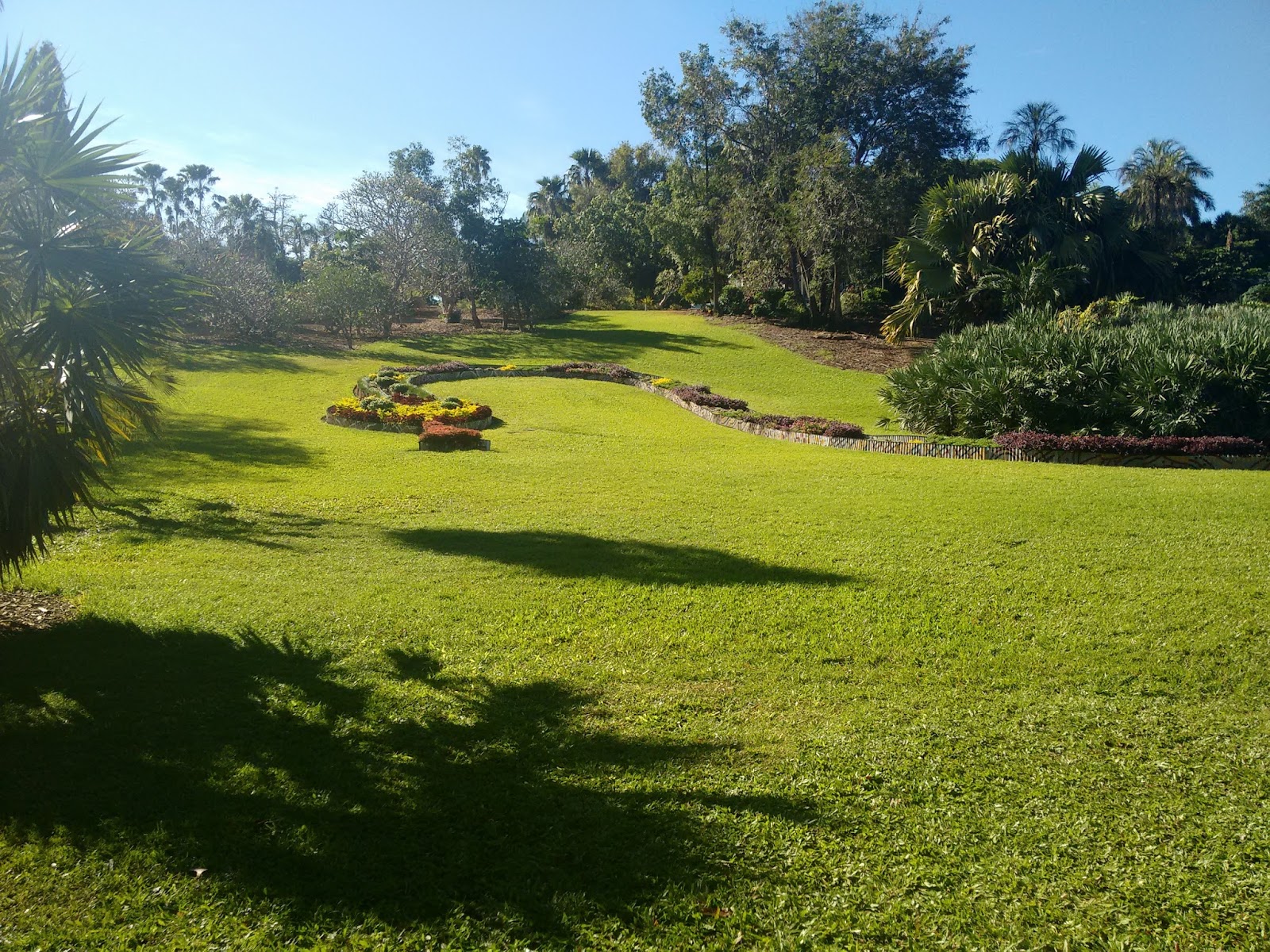
Walking Along The Wharf – Apparently we were supposed to watch out for “Driverless Buses.” We never saw one, but it didn’t keep us from becoming super curious. This article says that the bus is still only operating with a driver present.
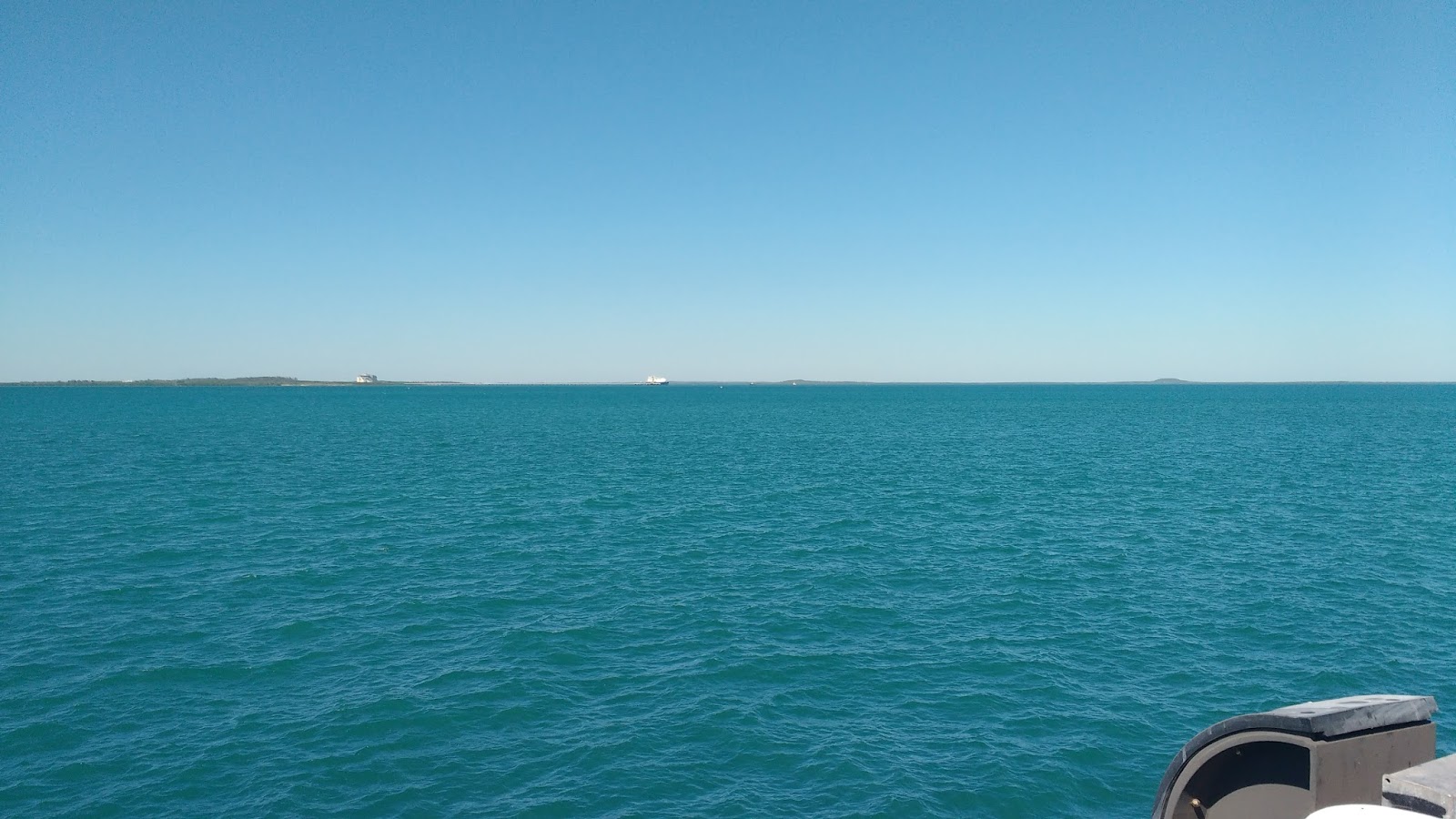
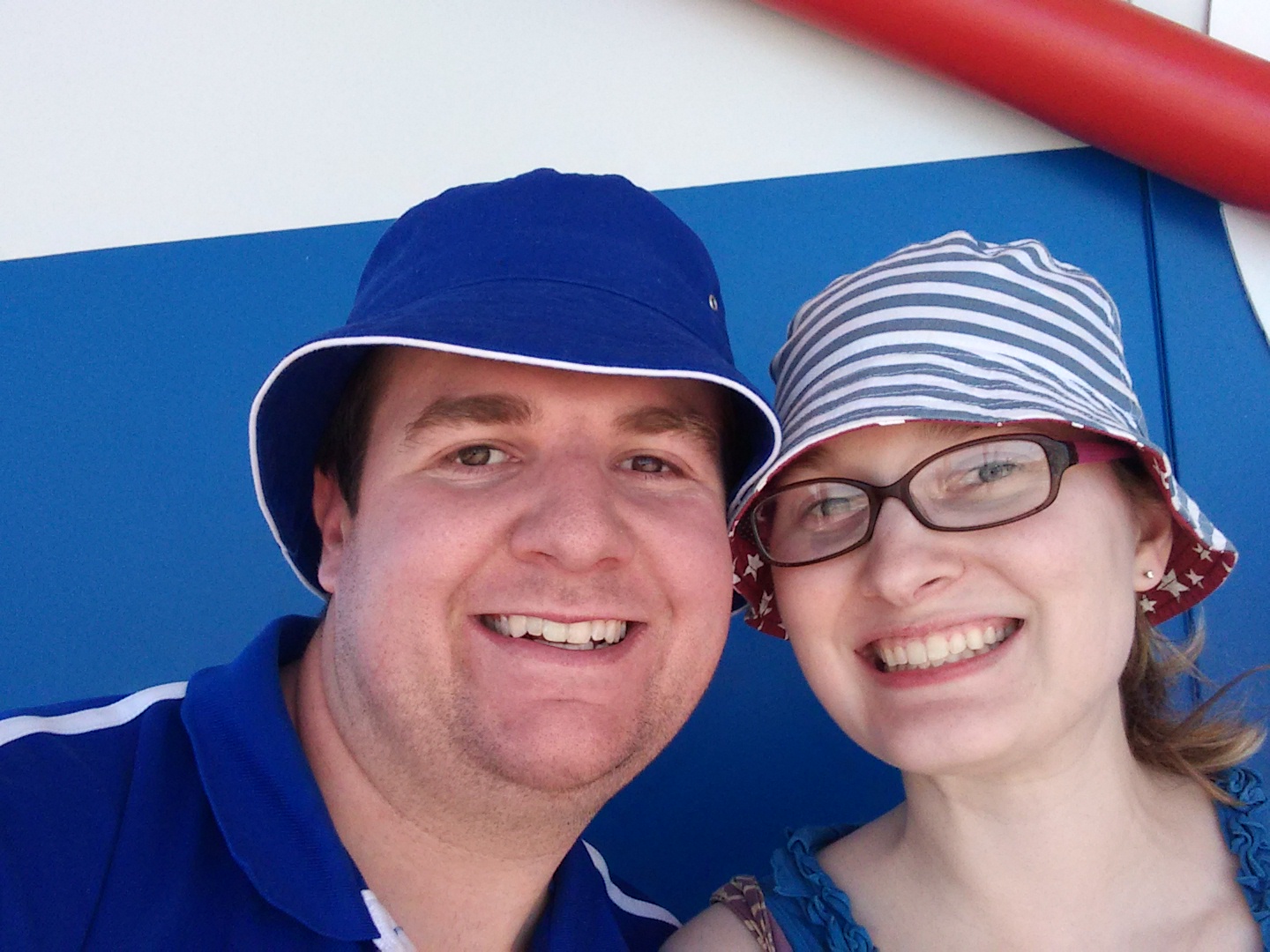
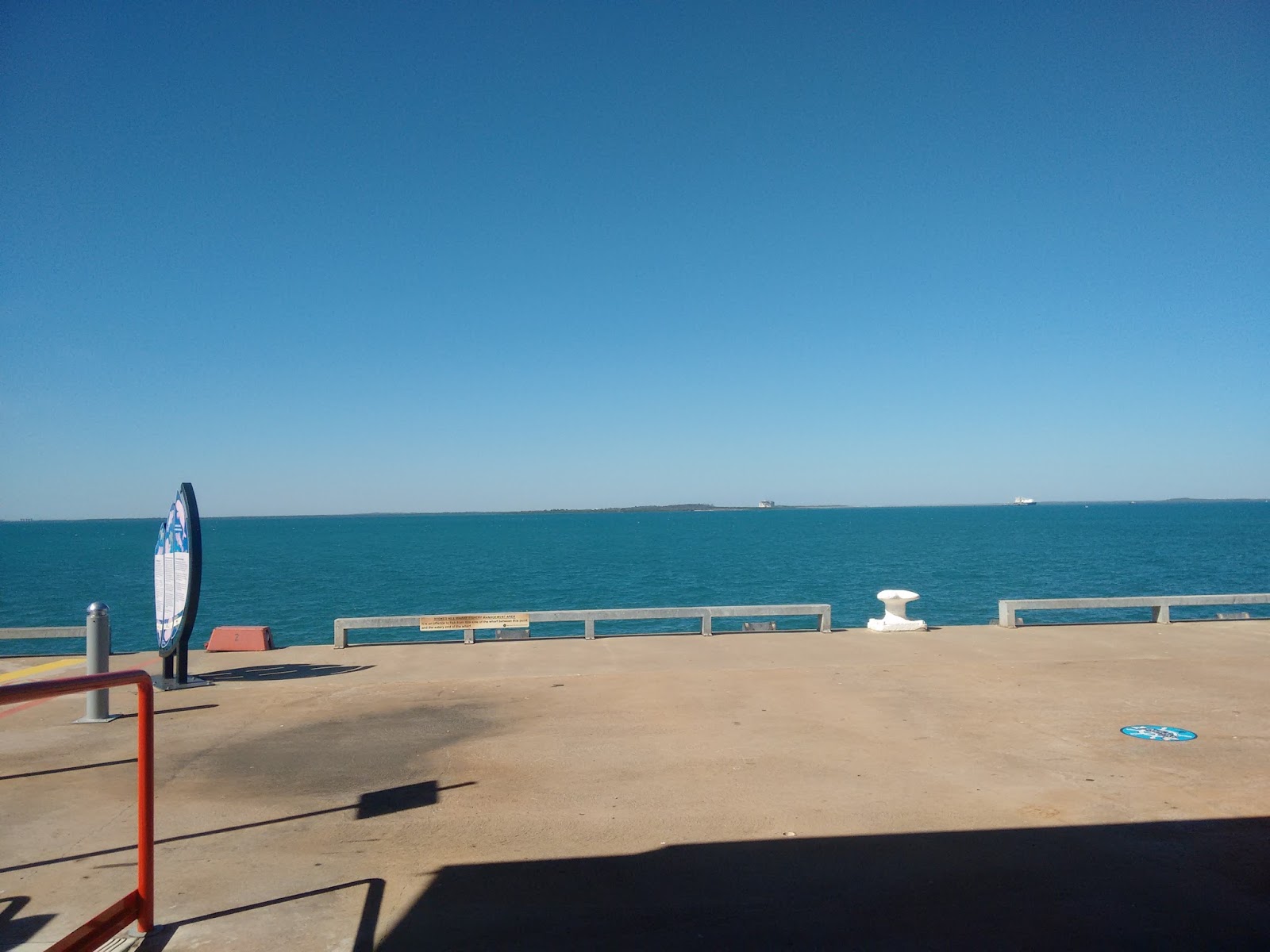

Crazy Acres Mango Farm – I’m not the hugest fan of mangoes, but Shaun is. So, he enjoyed the homemade ice cream for the mango flavor. I enjoyed it because it was a cool treat.
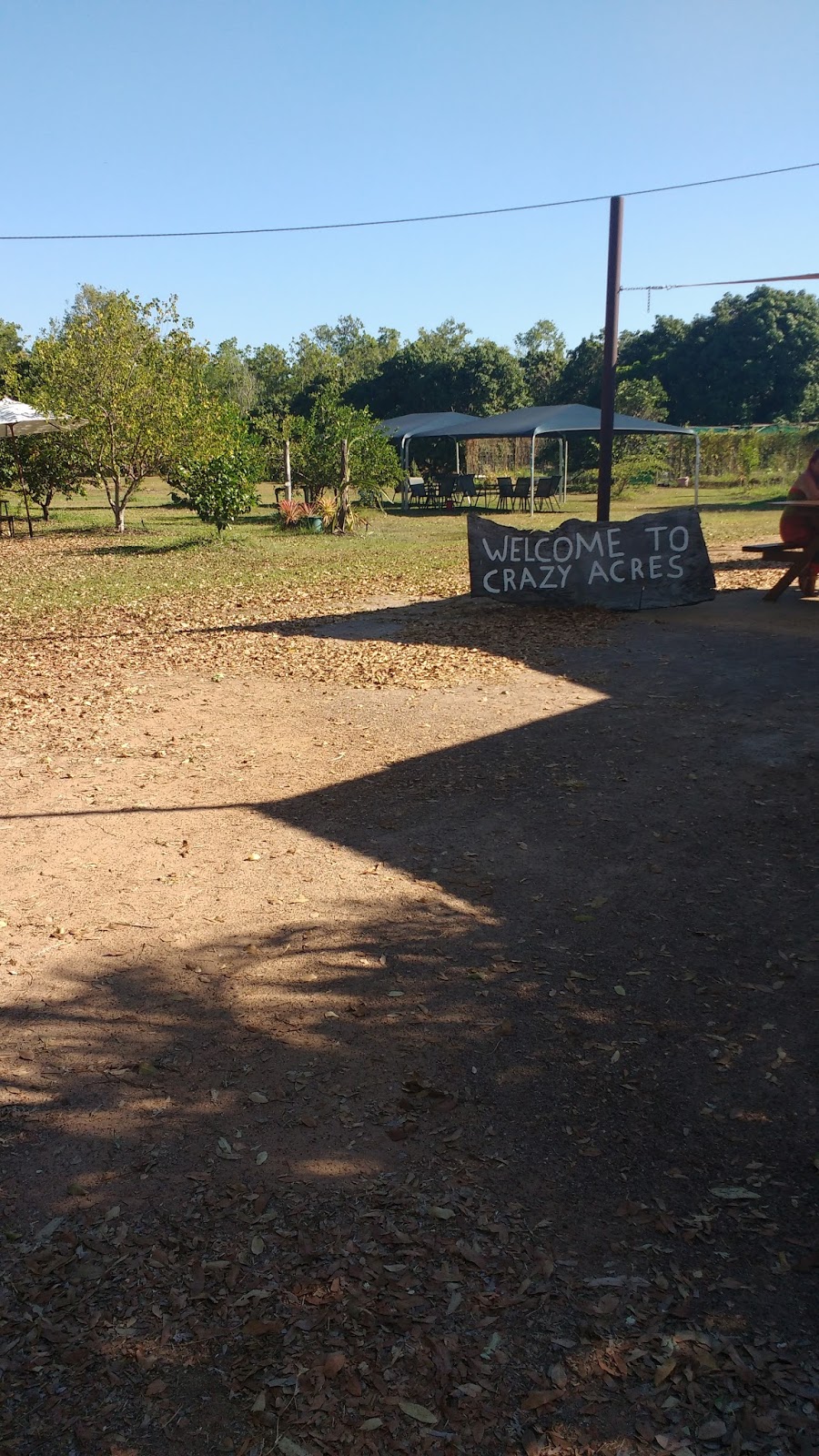
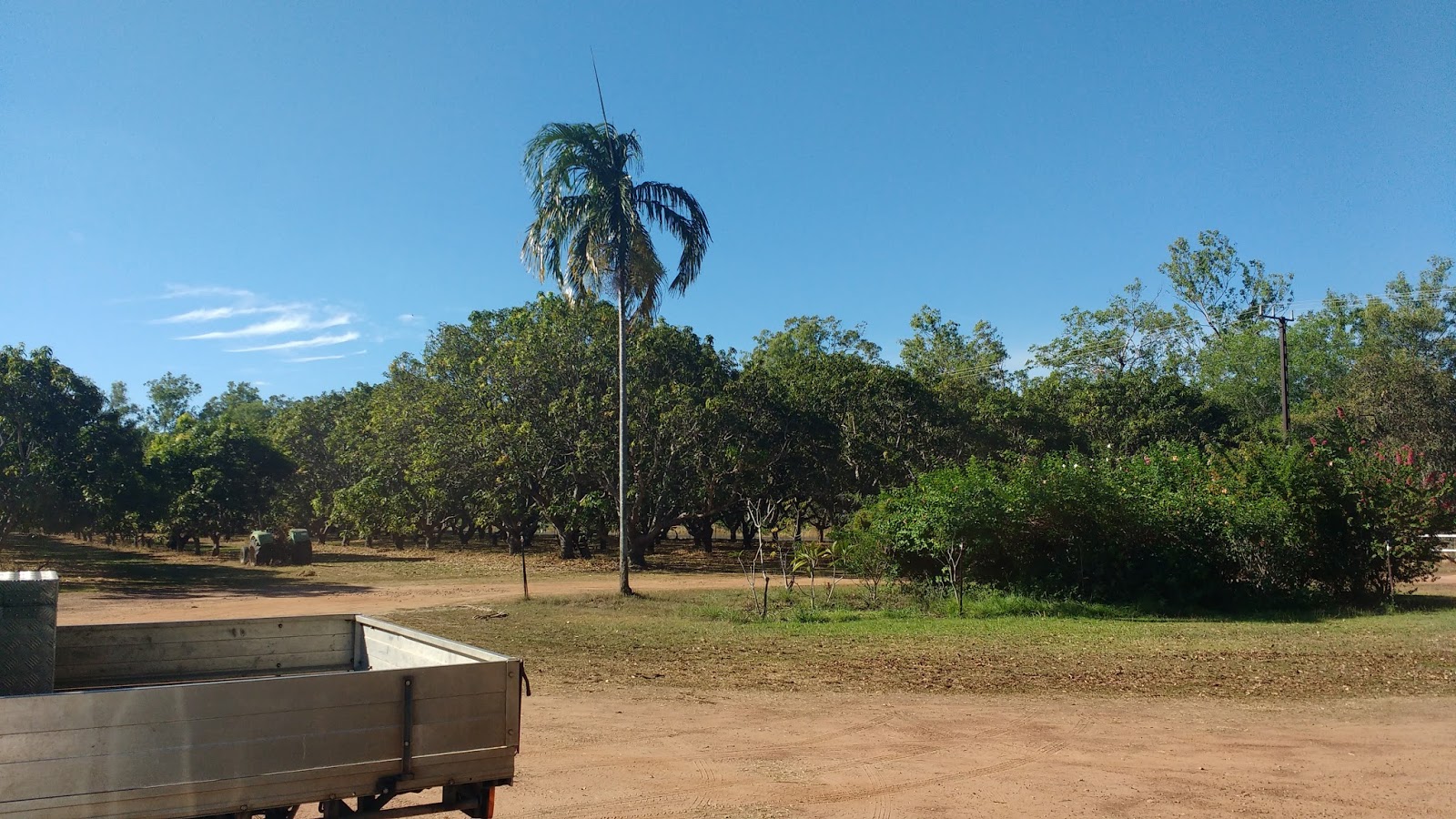
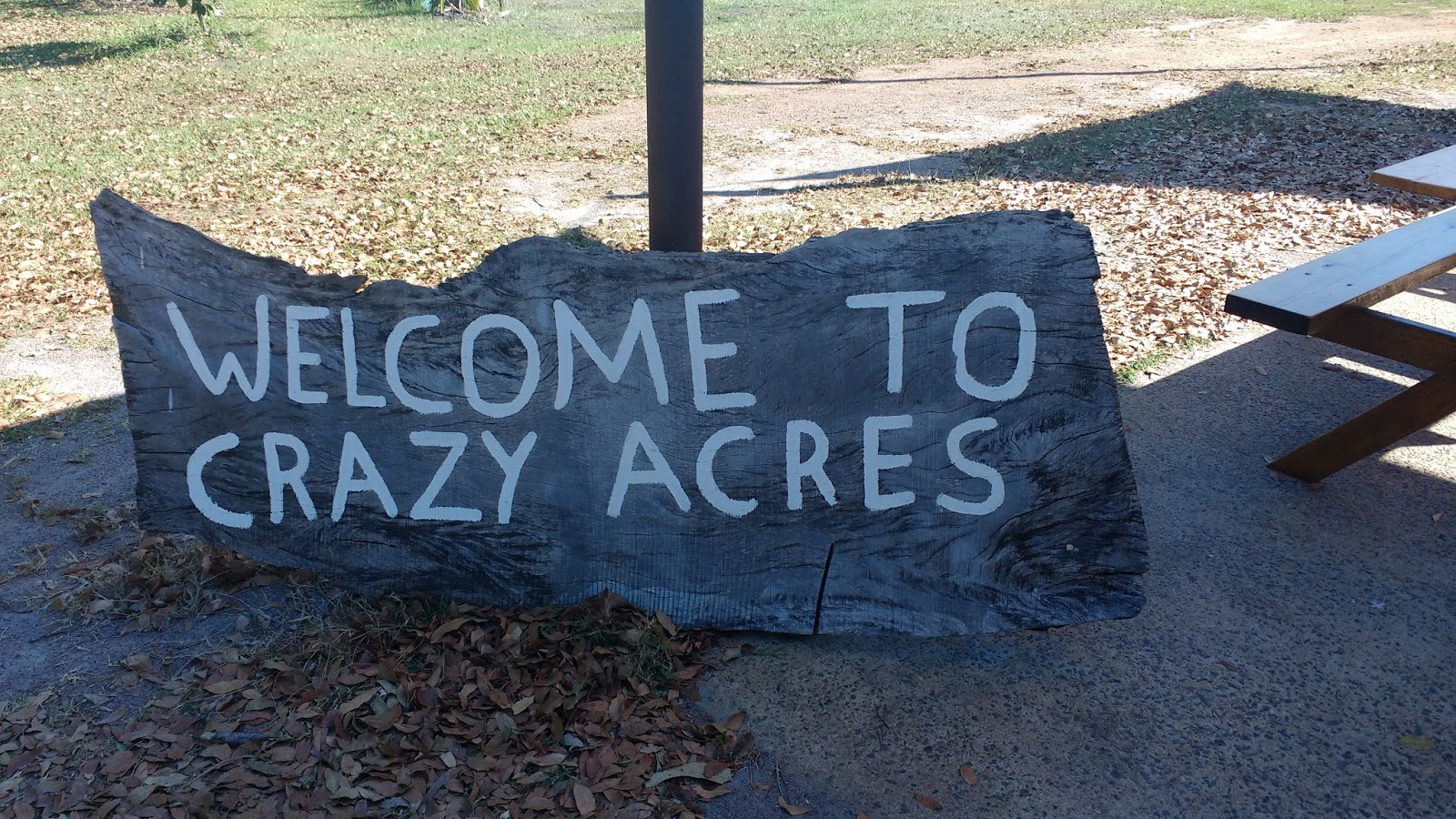
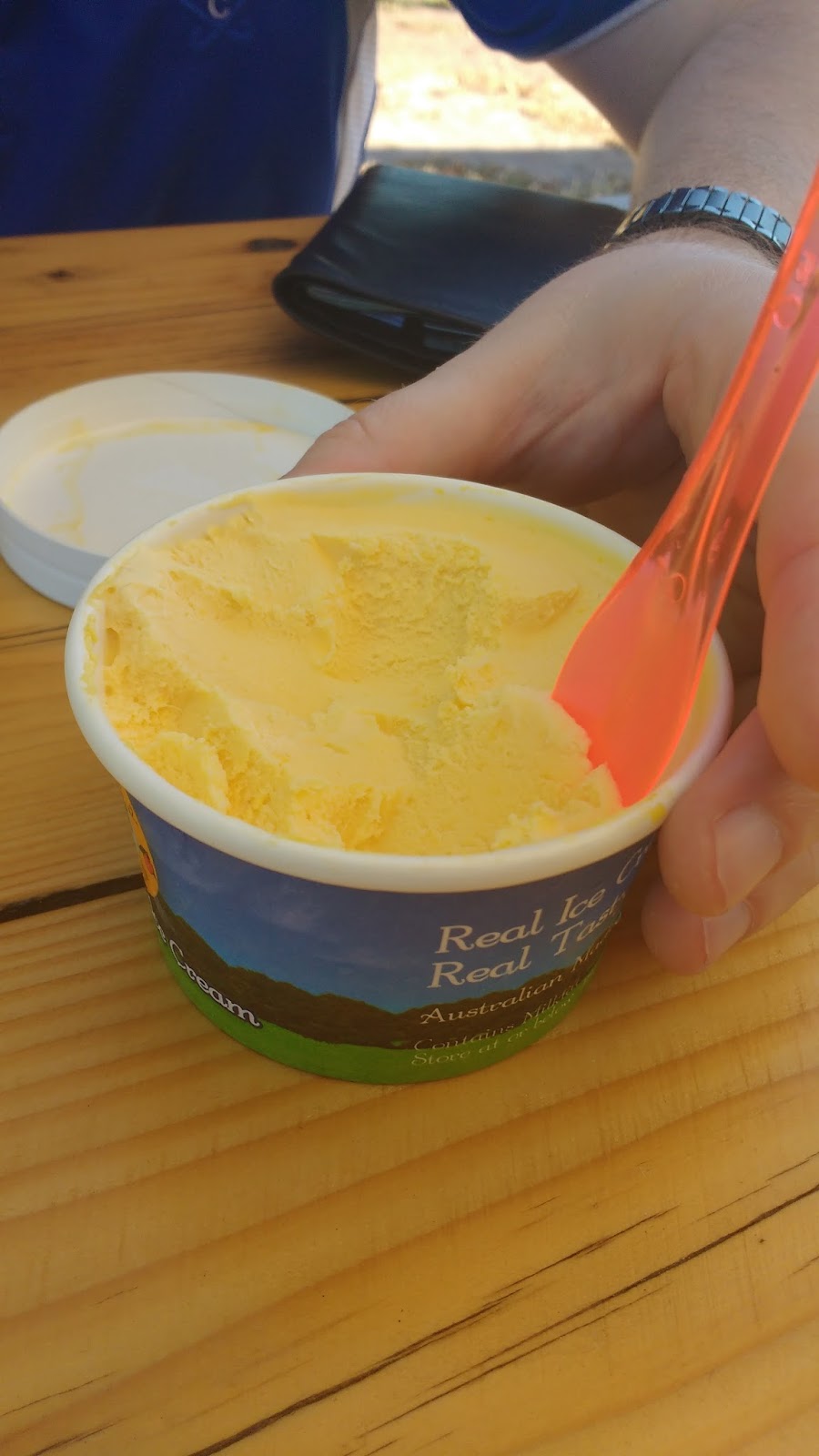
Berry Springs Nature Park – Berry Springs is about 35 miles outside of Darwin, and it’s a popular swimming hole for people in the area. The swimming hole is actually closed for part of the year each year due to the presence of crocodiles. Even though my sister-in-law ensured us that we would be safe from crocodiles at the time of year we were visiting, I was still a bit nervous. Thanks to my stomach bug, I didn’t end up climbing in the water. I just dangled my legs over the edge.
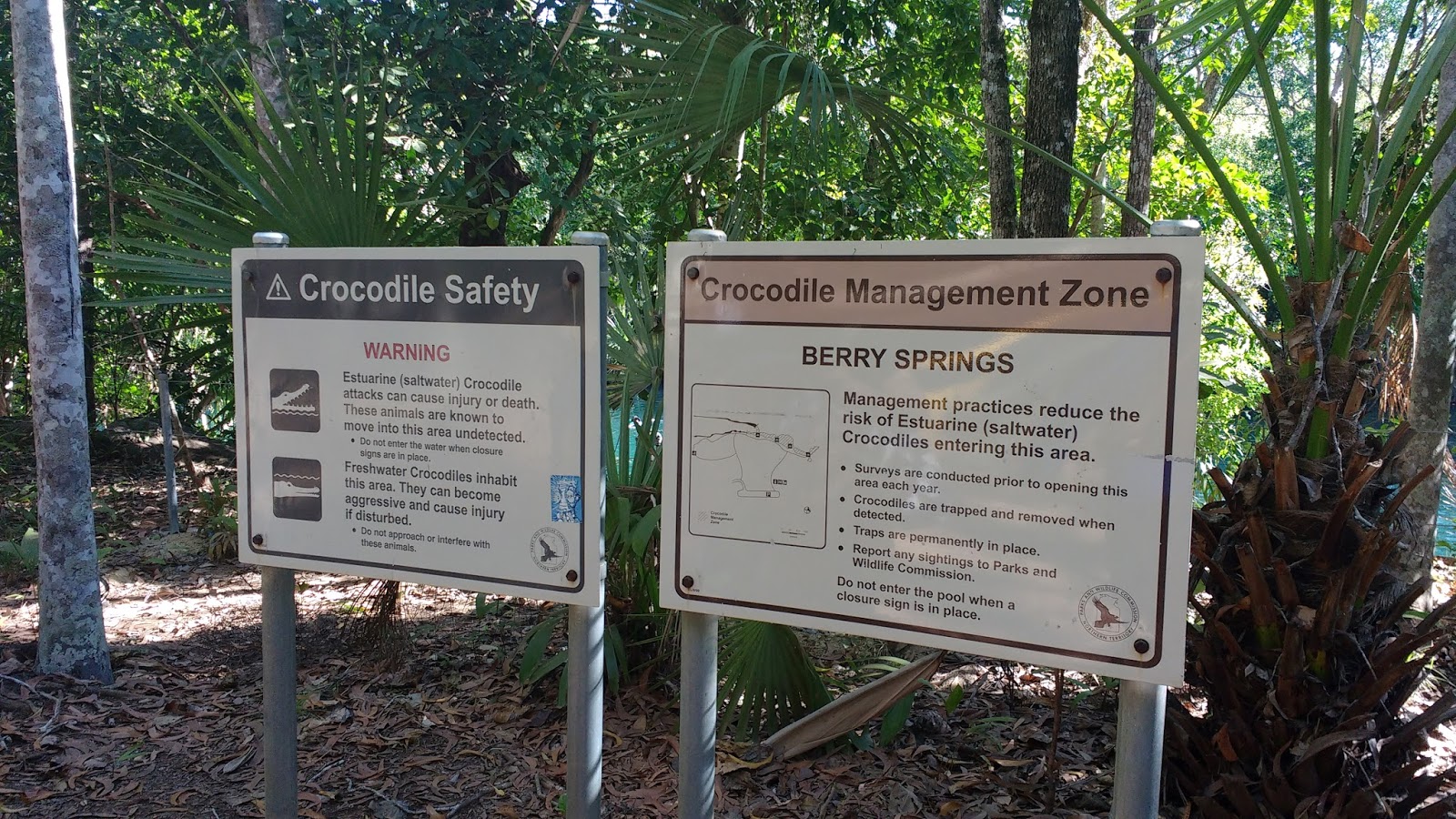
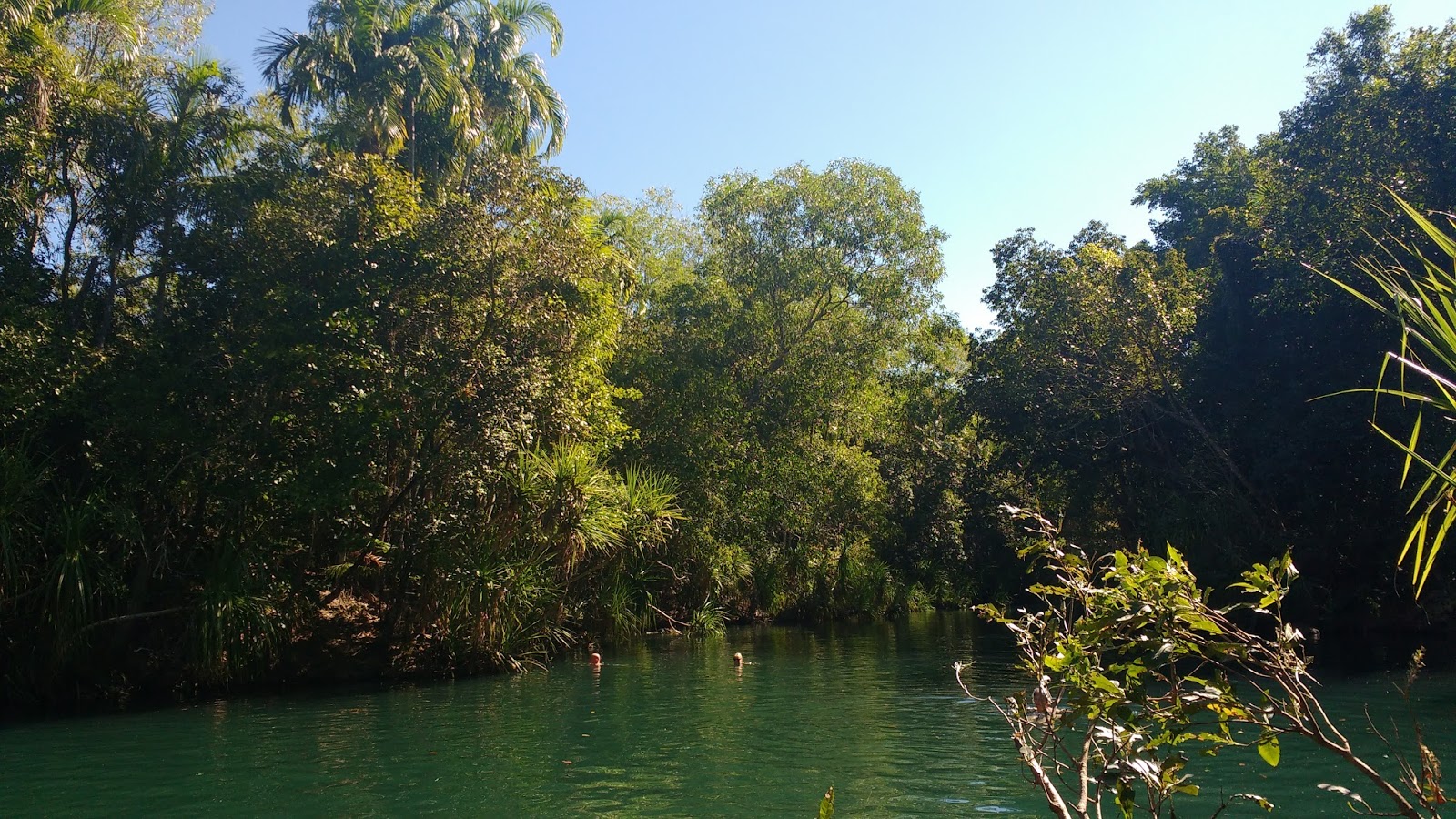
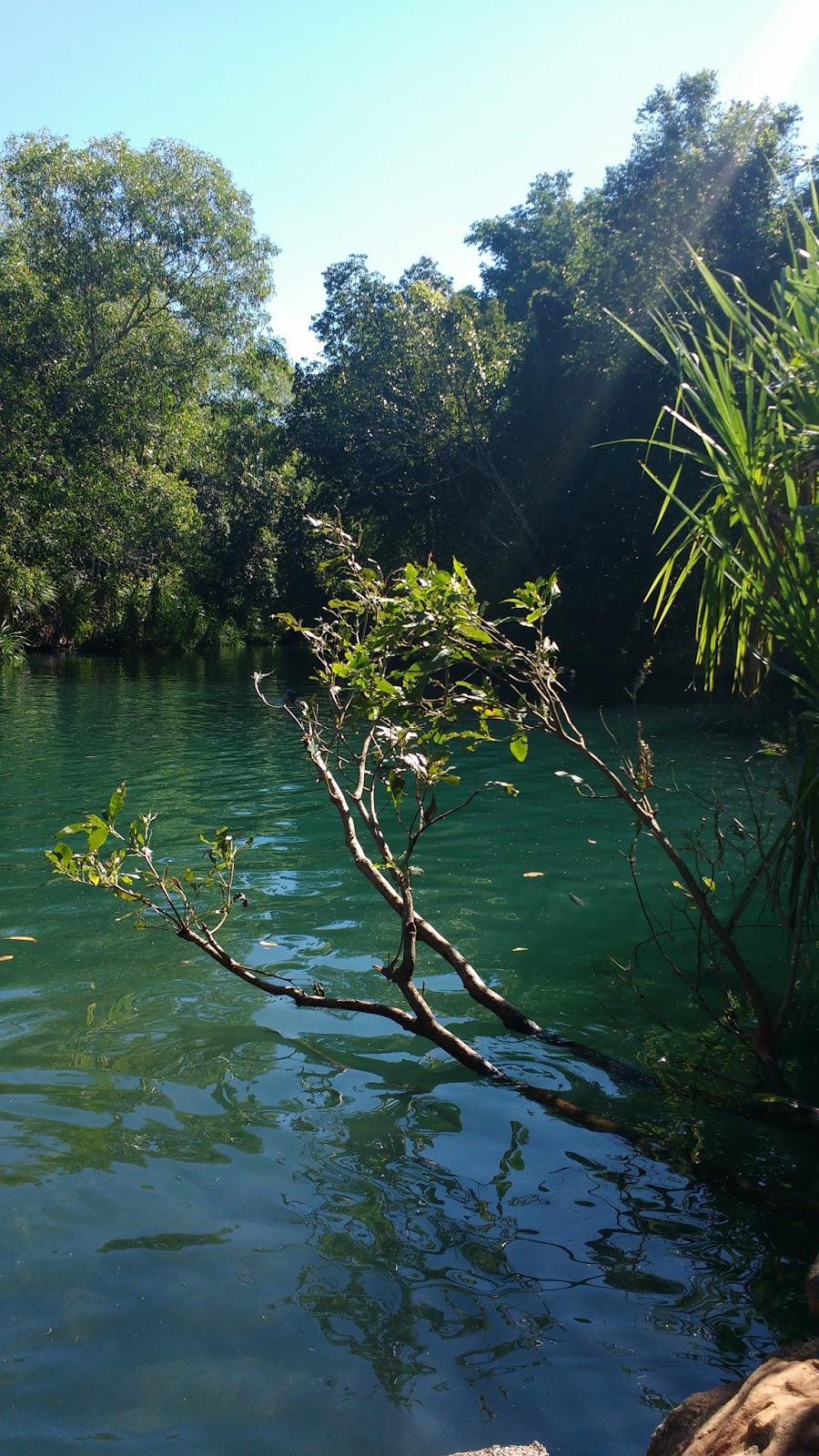
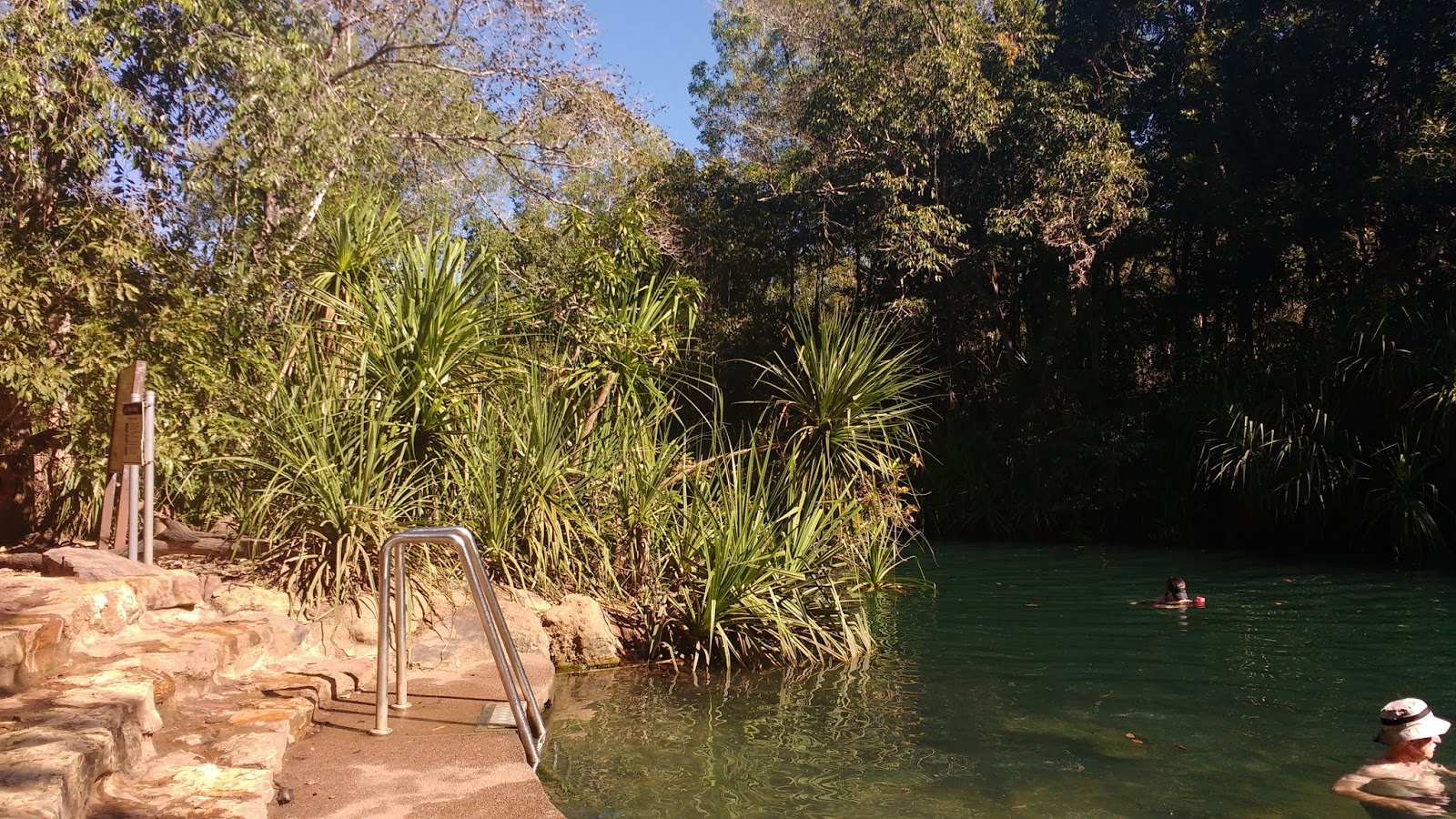

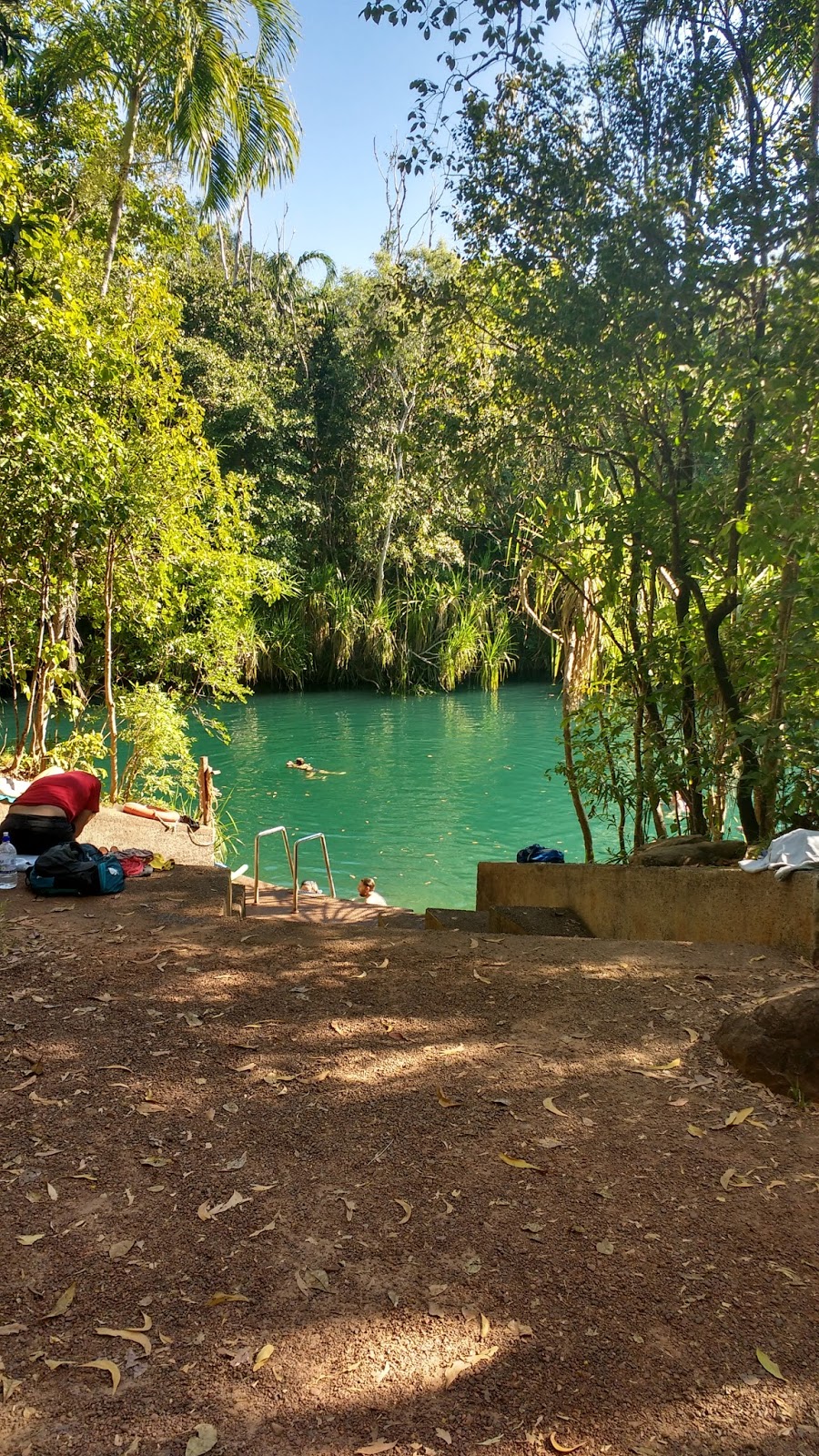
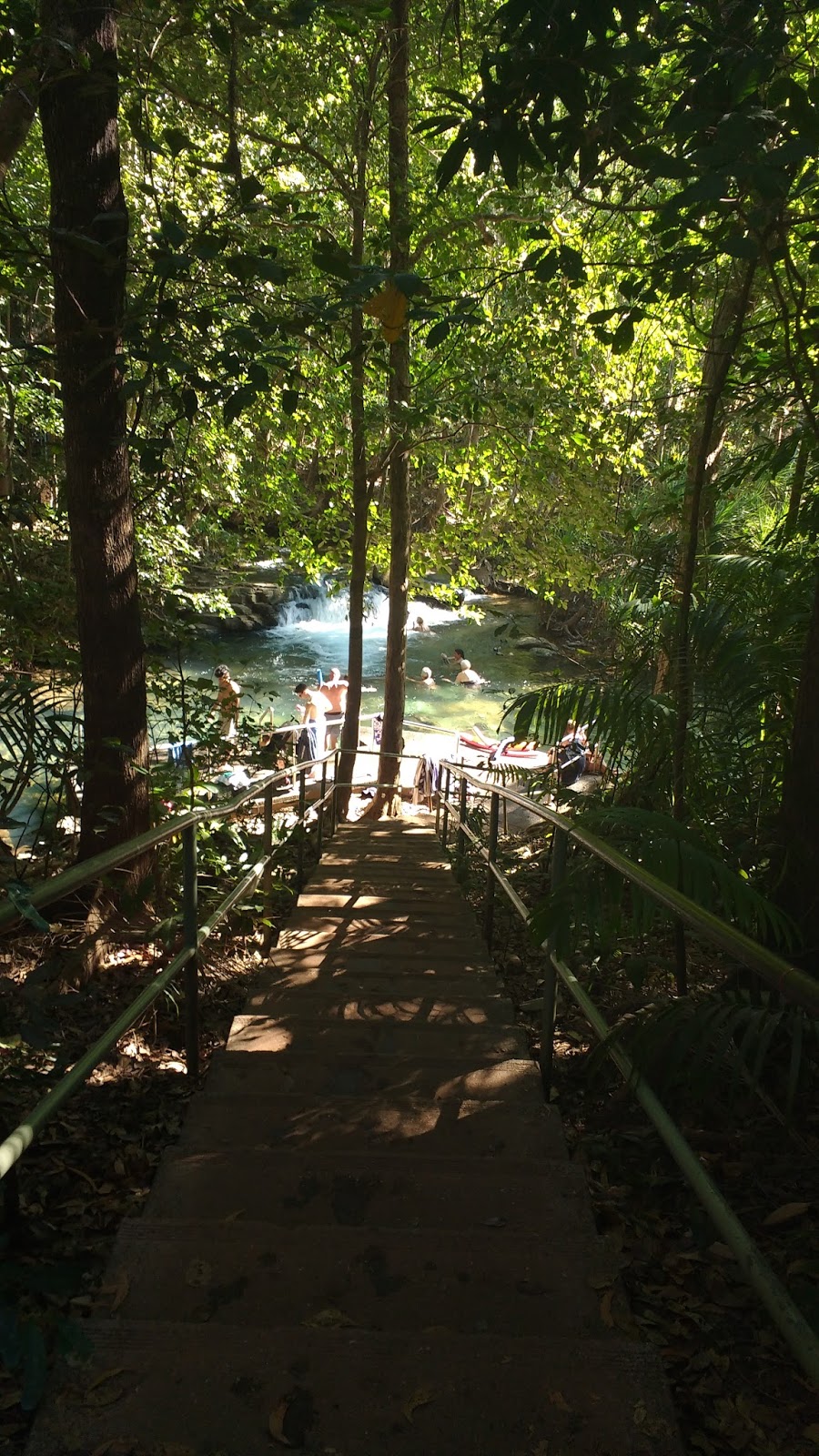
More photos soon. I promise. After all, I can’t keep pictures of baby wombats and videos of kangaroos eating almonds to myself.

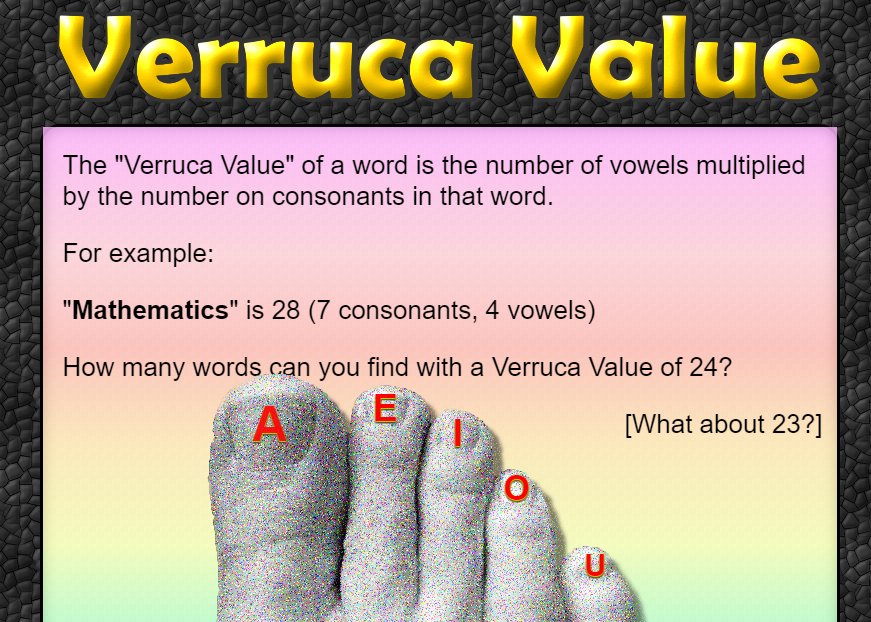
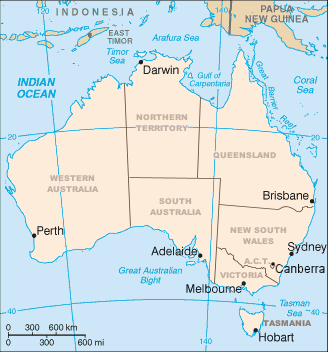

As a science teacher who follows your blog (and loves it), I am so selfishly excited that you are teaching a science class! I hope you have a great year!!!
As a science teacher who follows your blog (and loves it), I am so selfishly excited that you are teaching a science class! I hope you have a great year!!!
Omg I teach both math and science at my school and was going to begin ISNs in science this year (after a hugely successful ISN year in math last year… THANKS TO YOU). I can't wait to see what ideas you come up with!!! Thank you as always for all you post!!
What will your schedule look like with the addition of physical science? I think you mentioned there are two teachers for each subject at your school. You and Shaun are the two math teachers, right? How will you split the course load? Will he also have to pick up a science class? And does that mean the class size for the other science teacher will be larger? I'm just curious! 🙂
Sarah,
I just want to say THANK YOU for sharing all that you have shared. You are an inspiration to "an old math teacher". I will be trying INB's for the first time this year because of you. Tell Shaun thanks too for his posts!
How will you be using that Witzzle bulletin board?
Hey Sarah, looks like a beautiful room. Same thing happened to me, I'm teaching conceptual physics but not until next semester (we are on block). Paul Hewitt has a few textbooks, physics, physical science, and conceptual physics. Here's his website for conceptual physics http://www.conceptualphysics.com/paul-g-hewitt.html
Your room looks great! Have a great first day!
I'm so jealous! Looks awesome!!